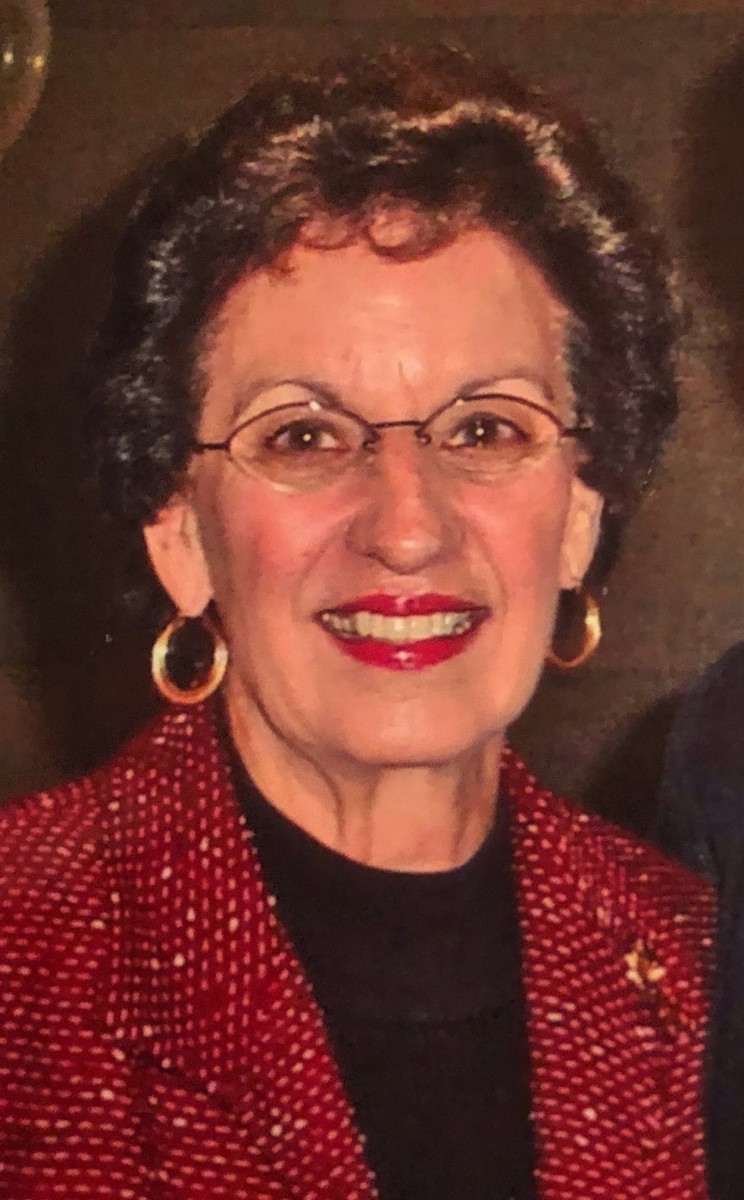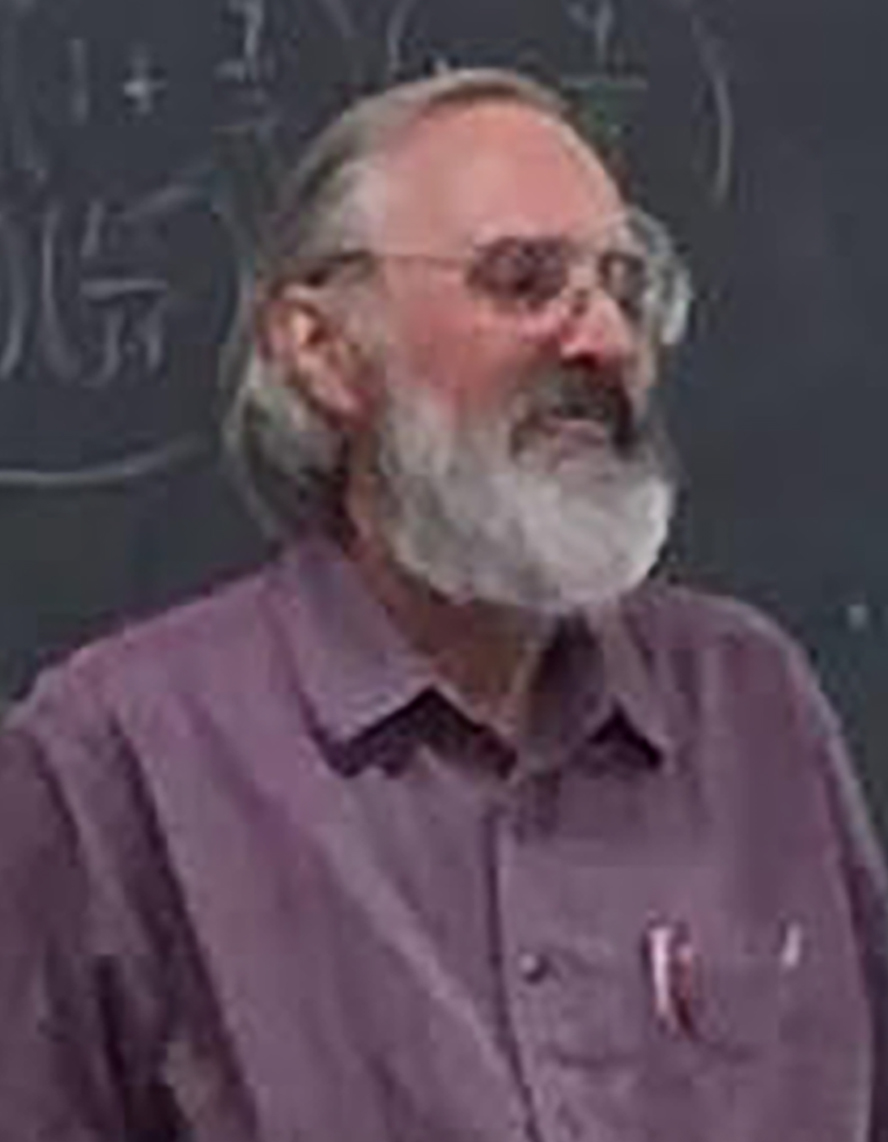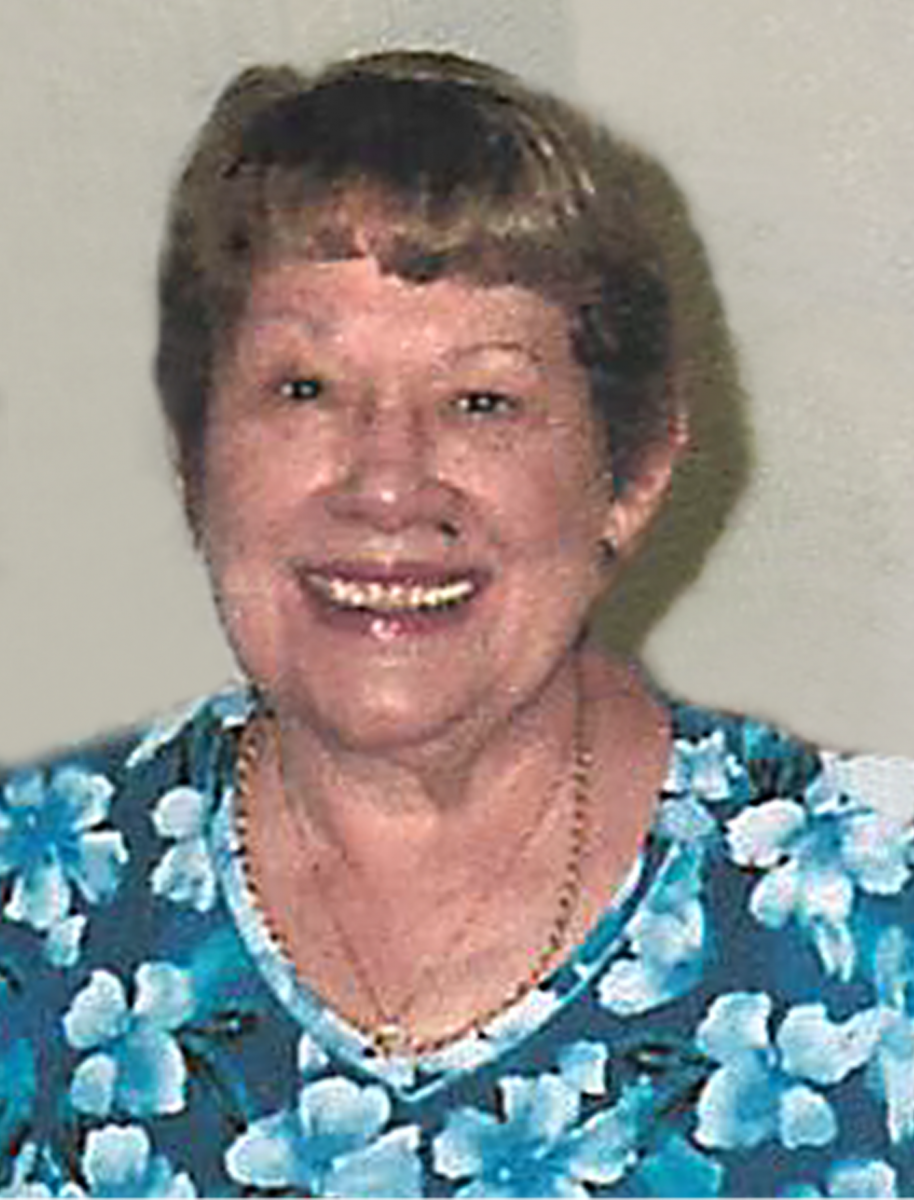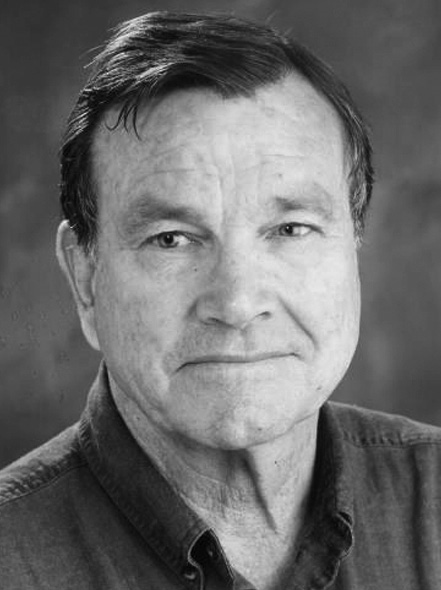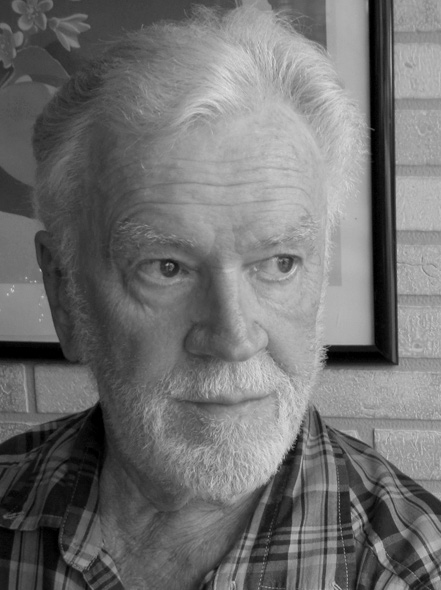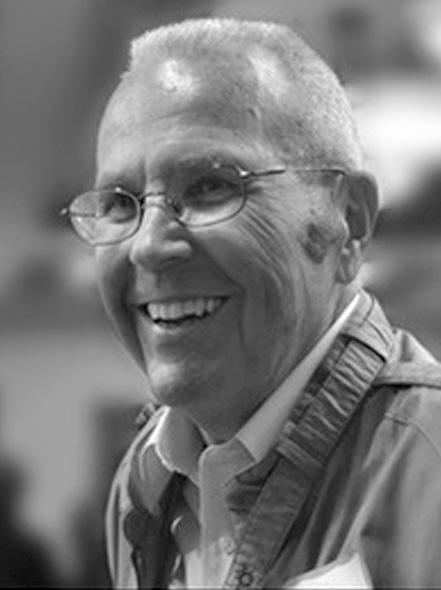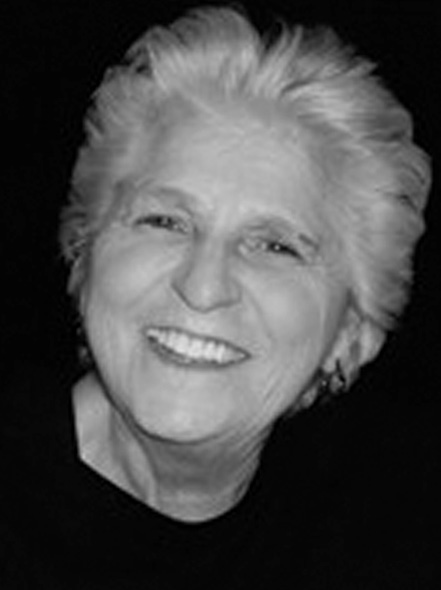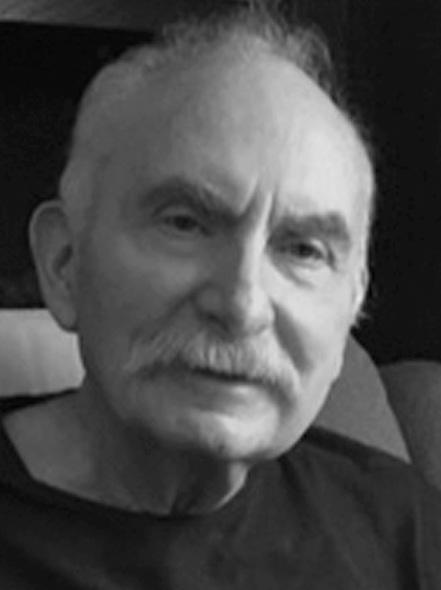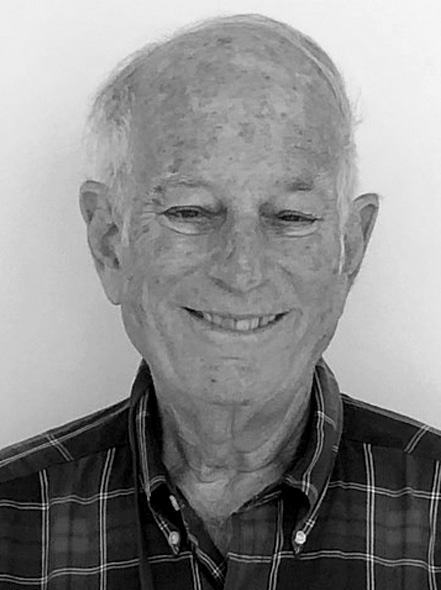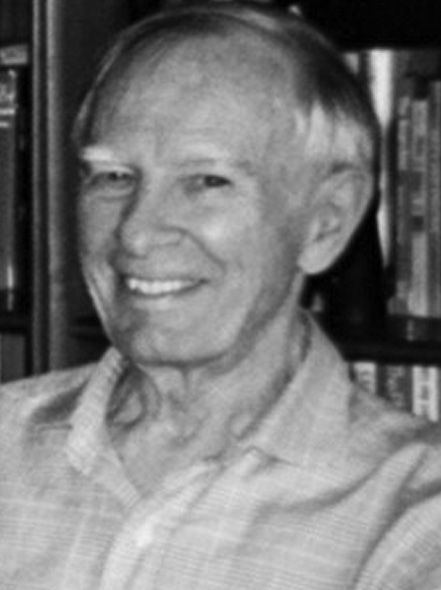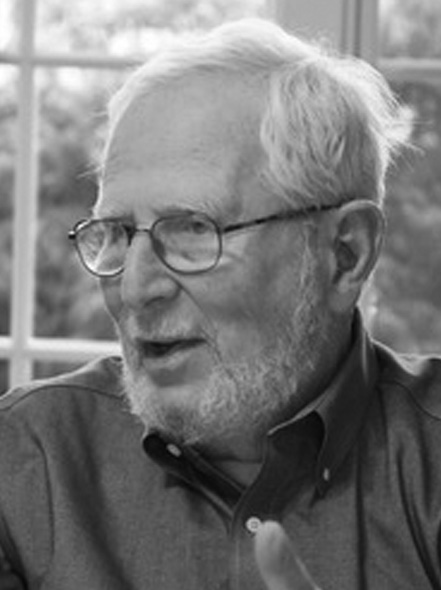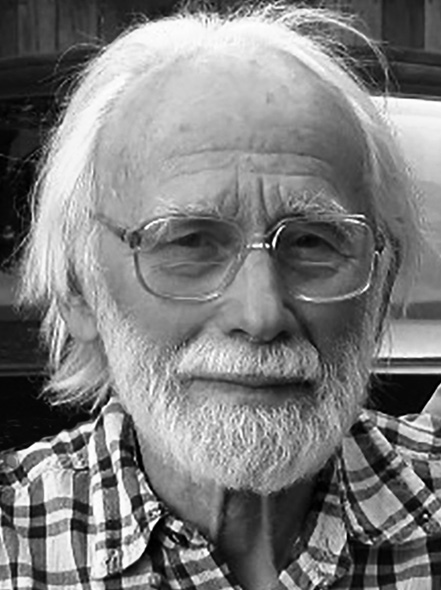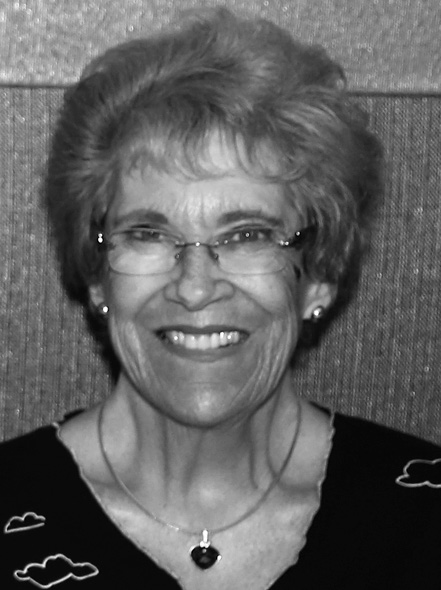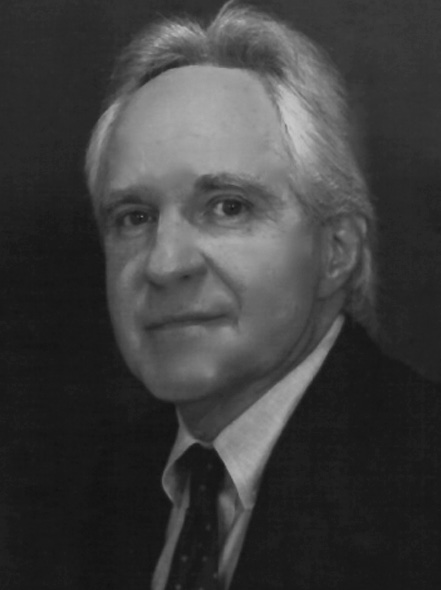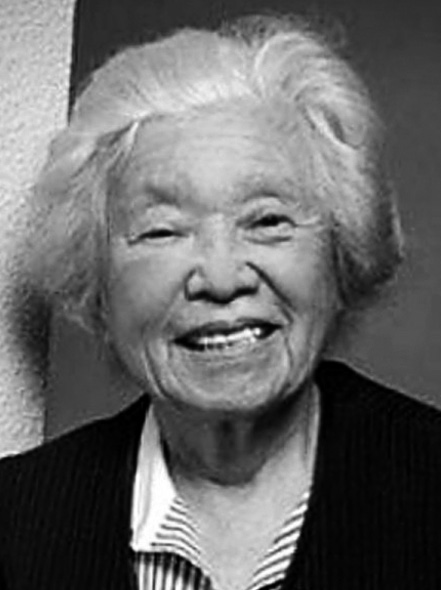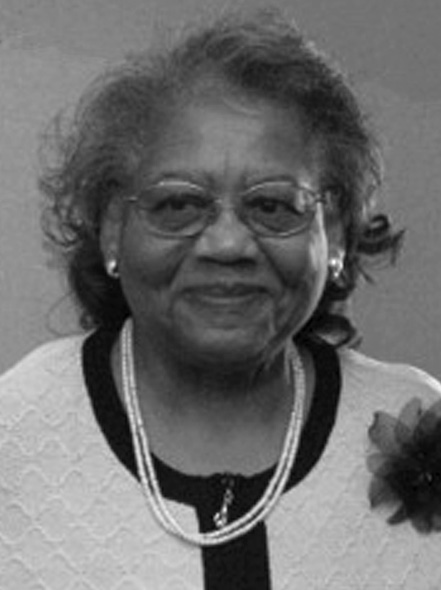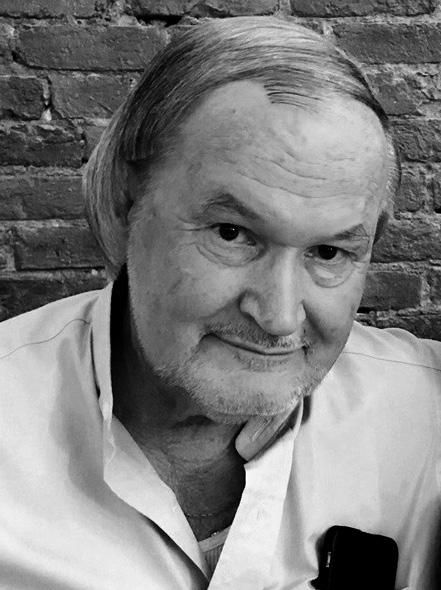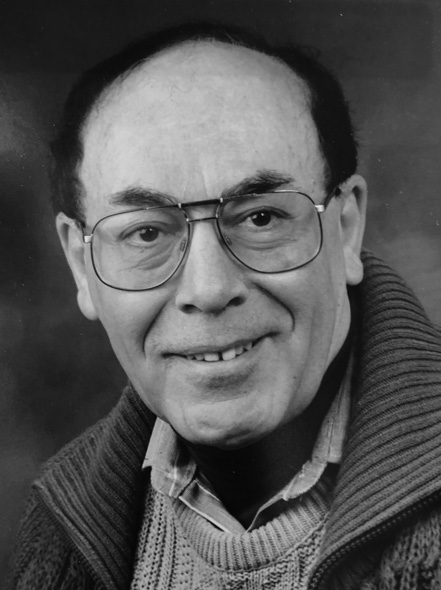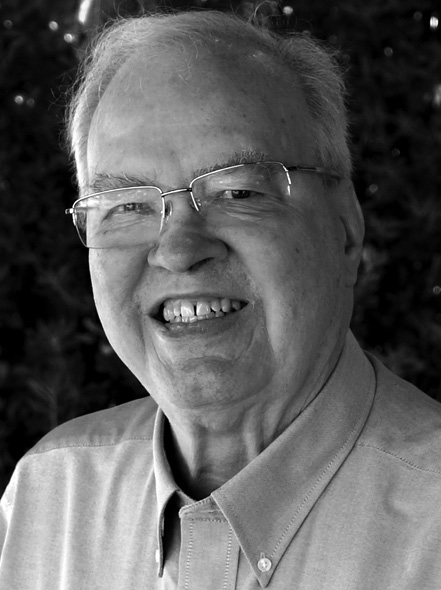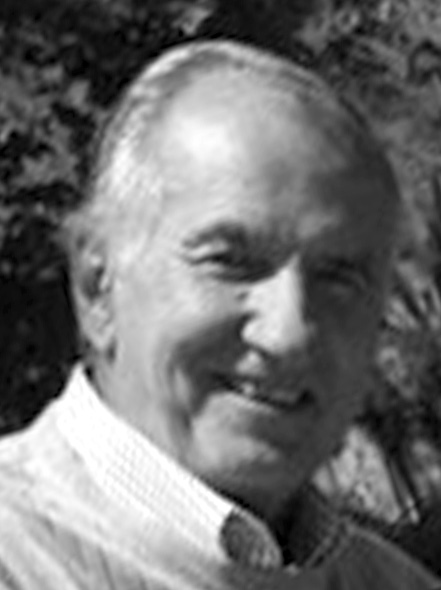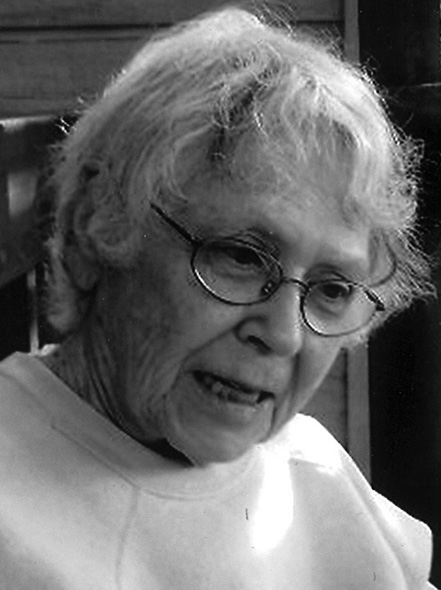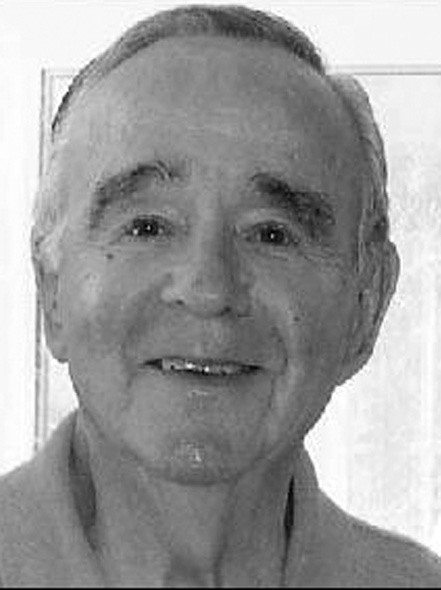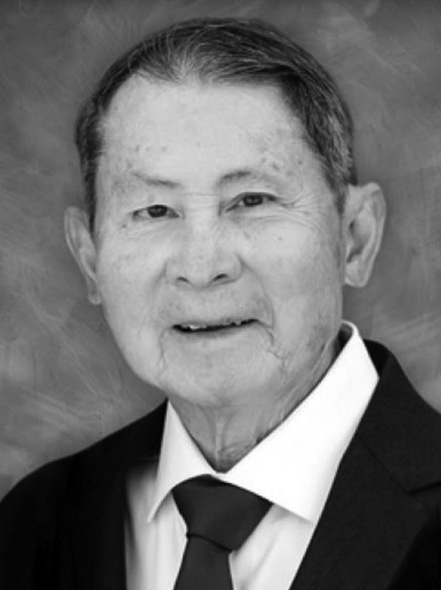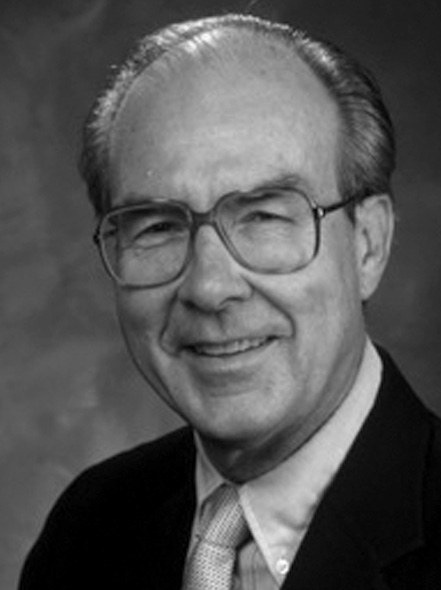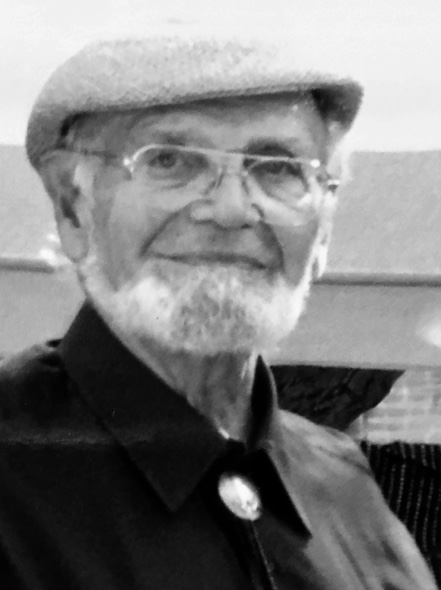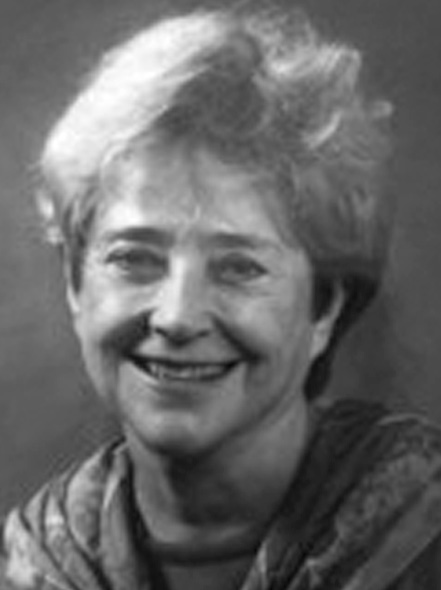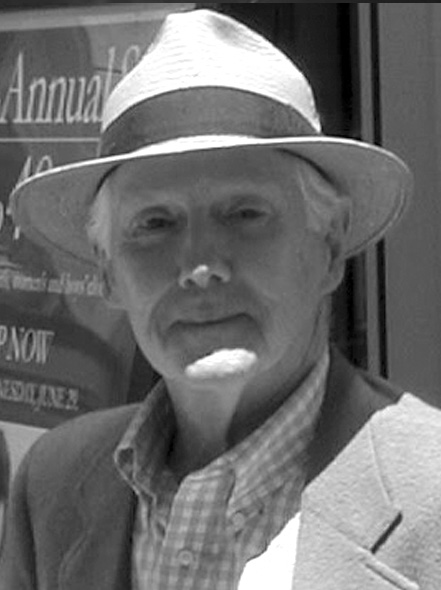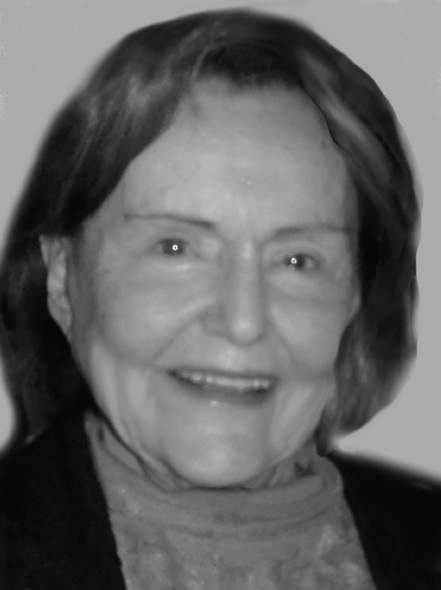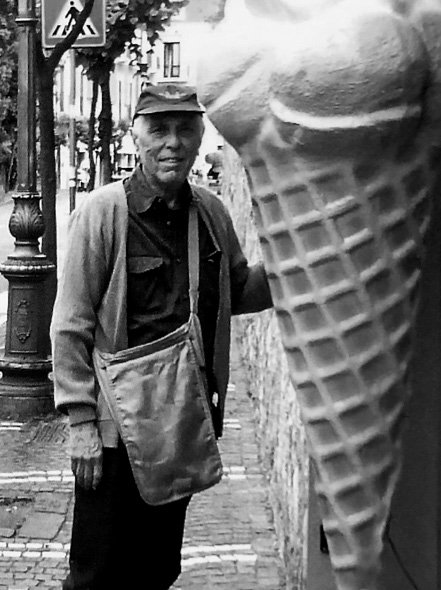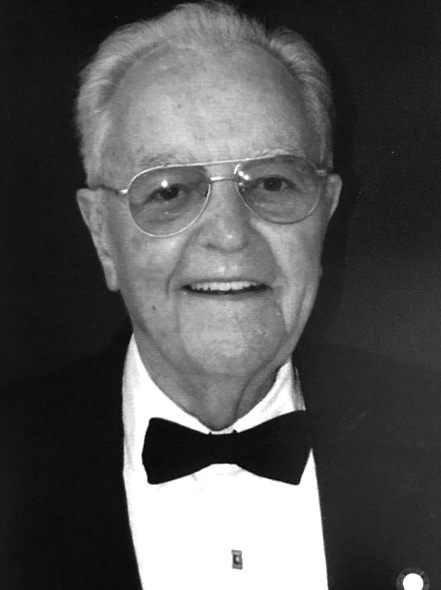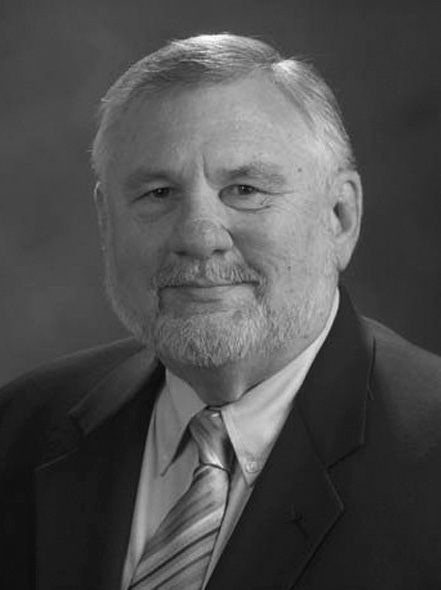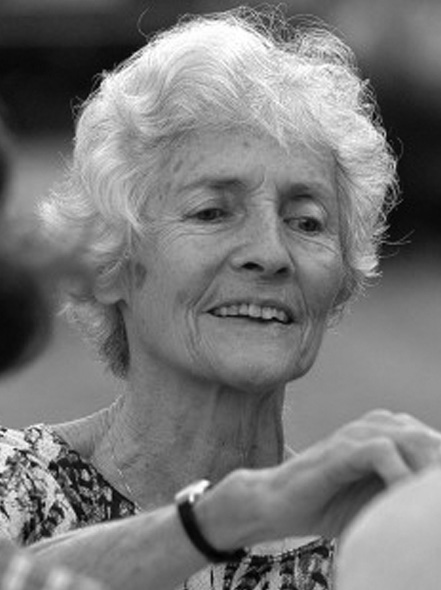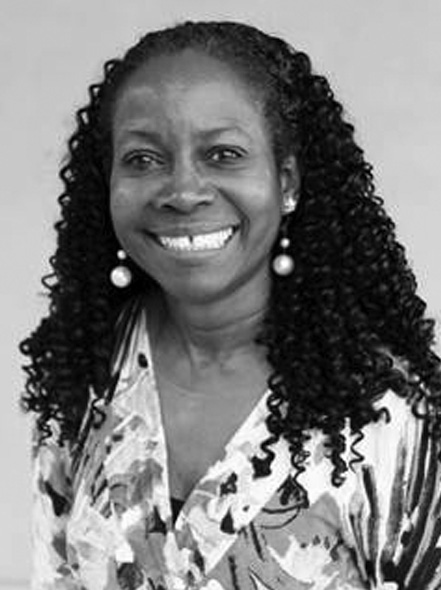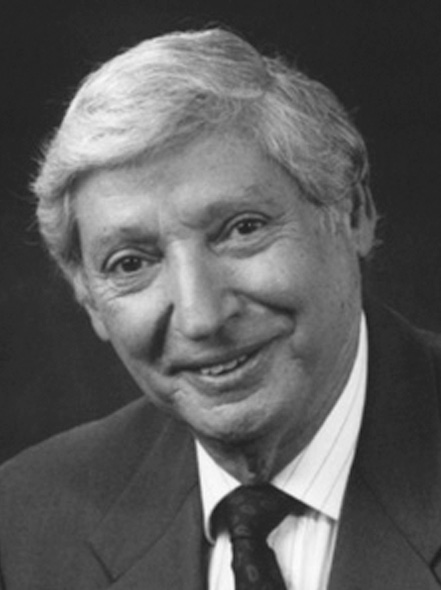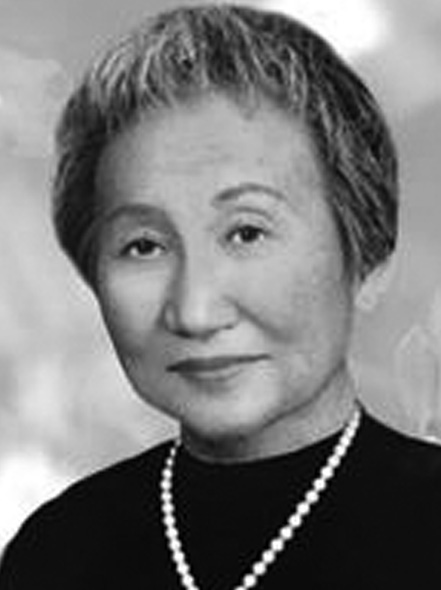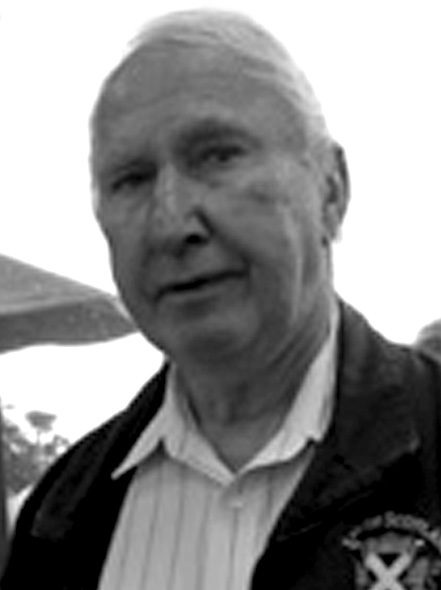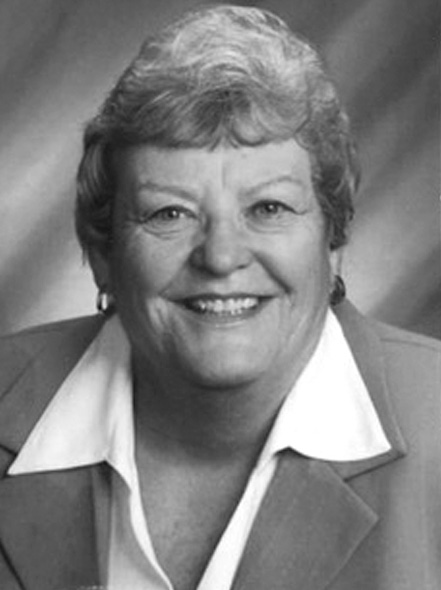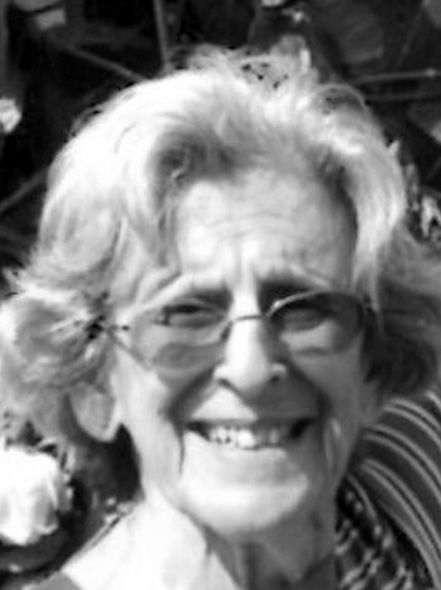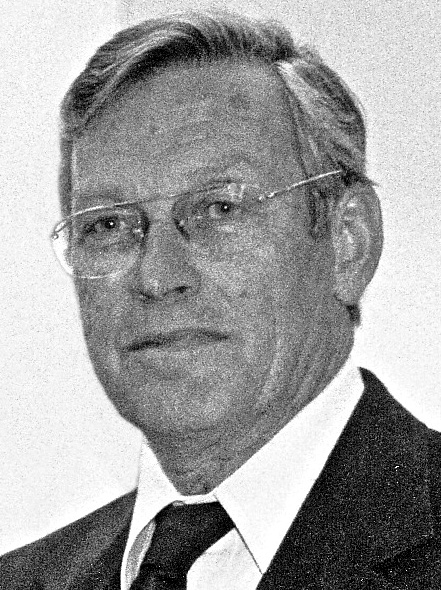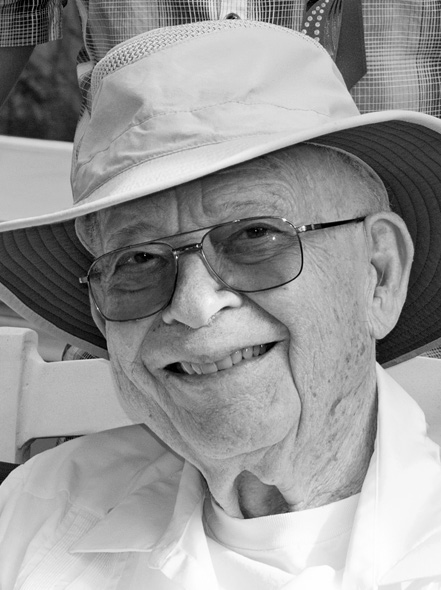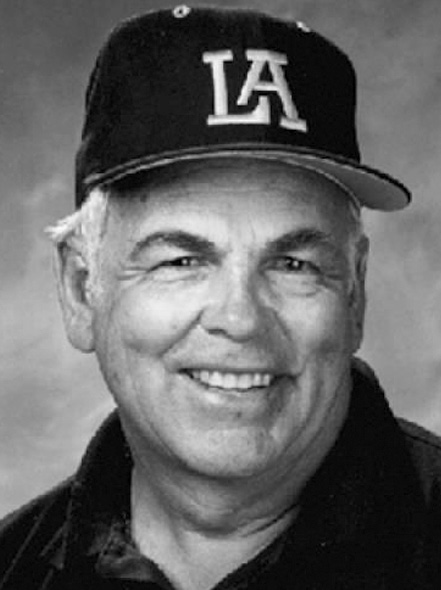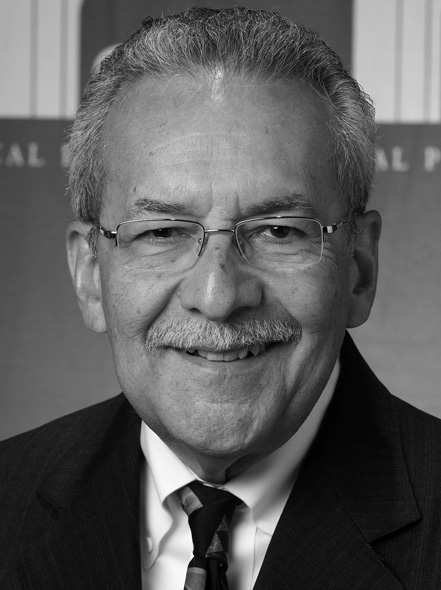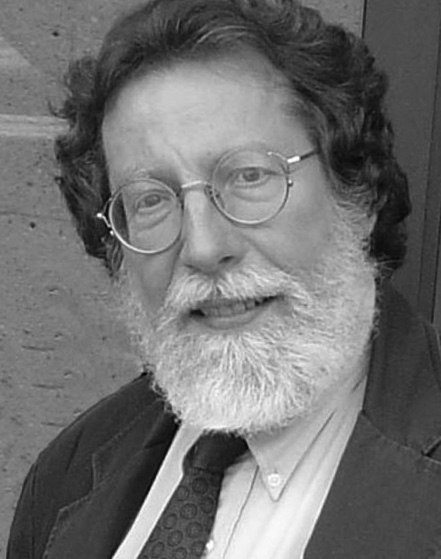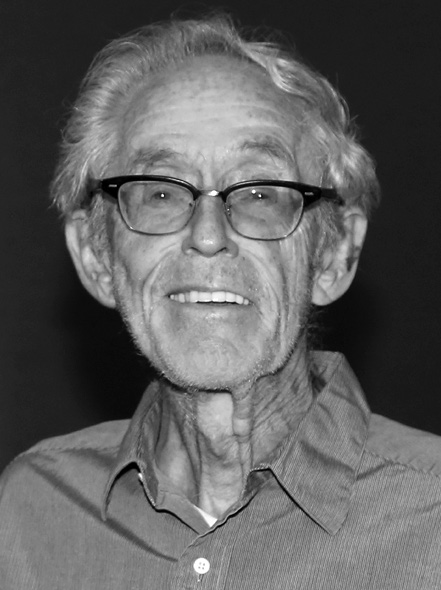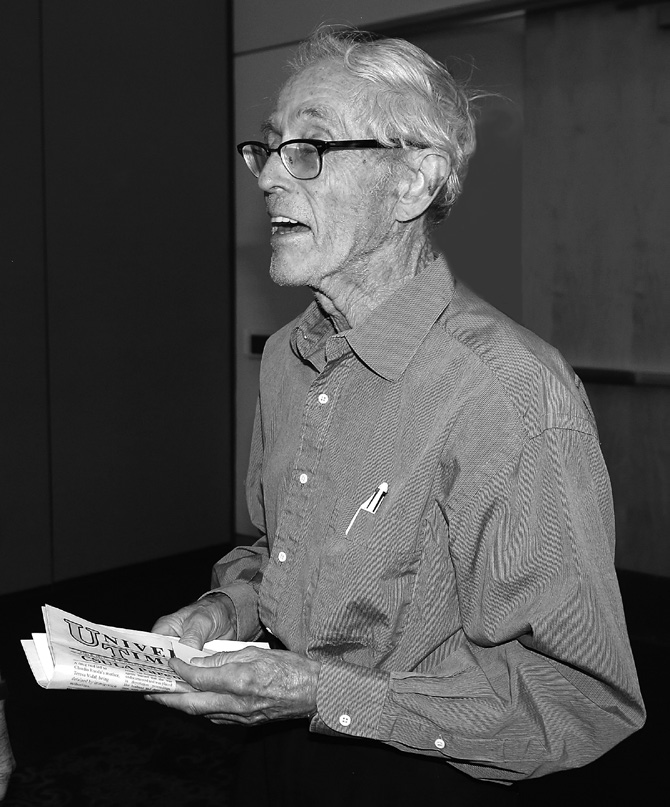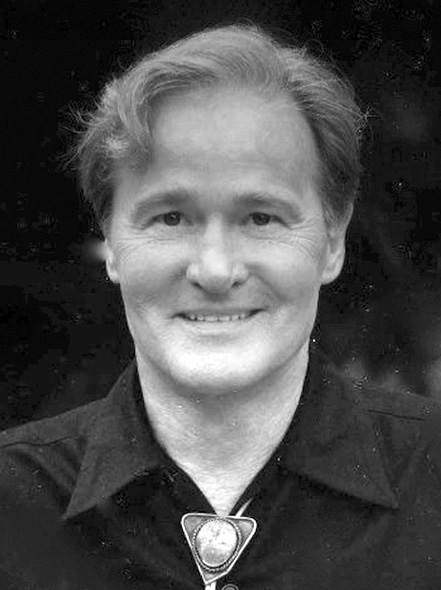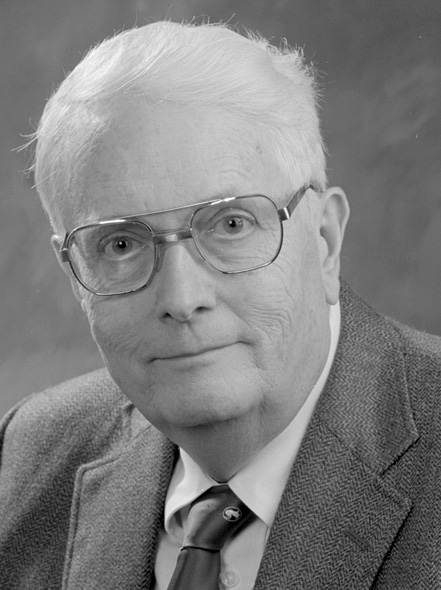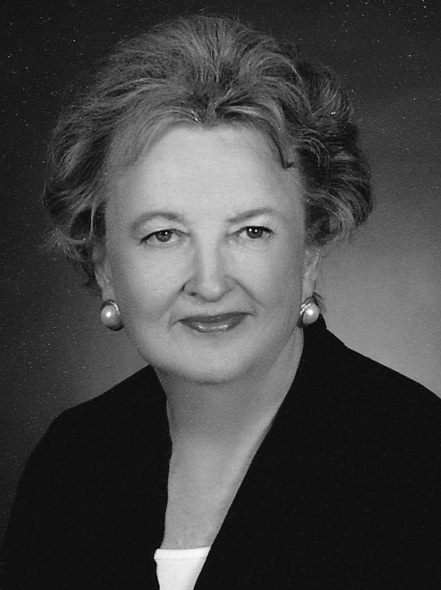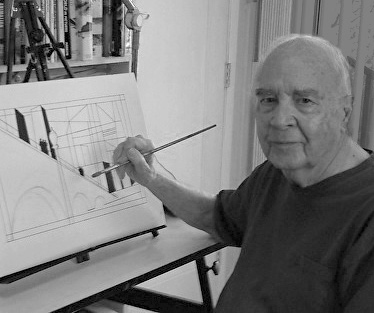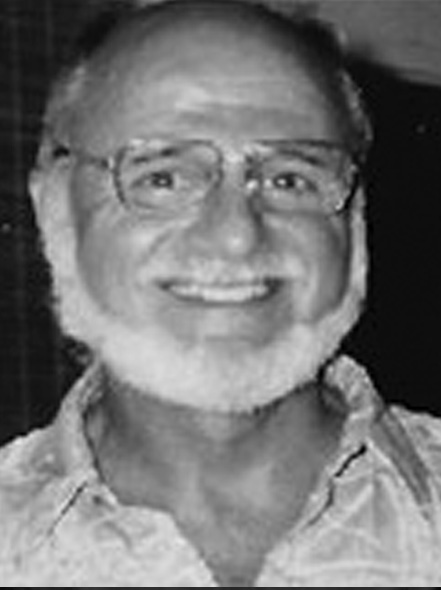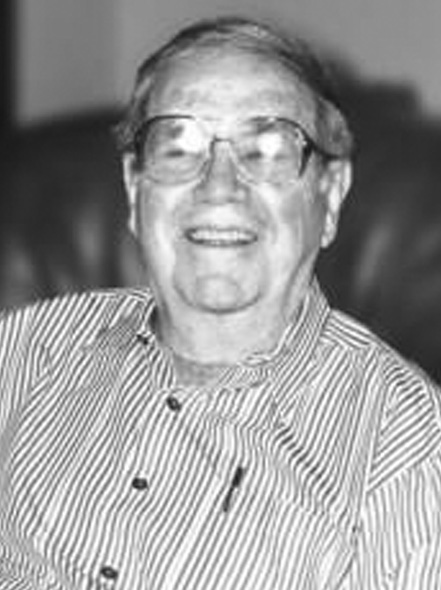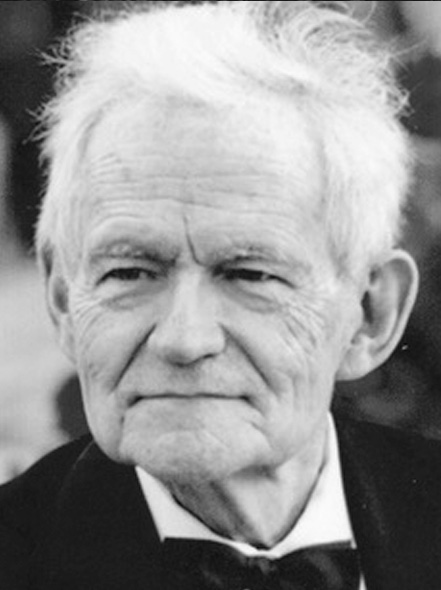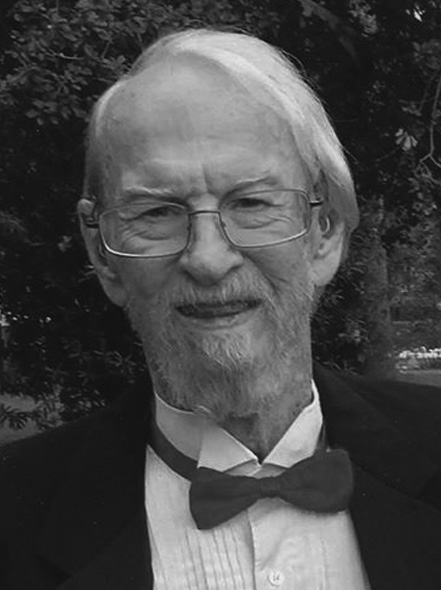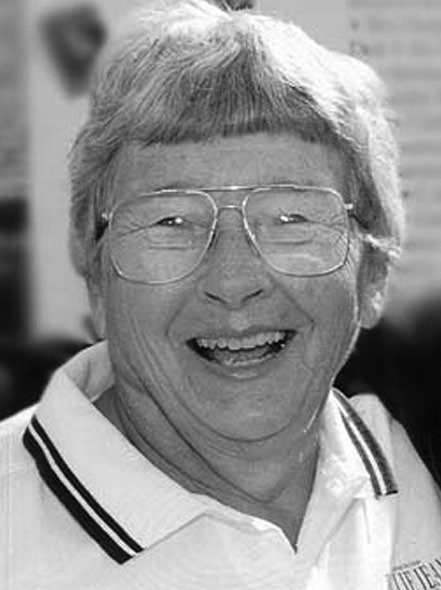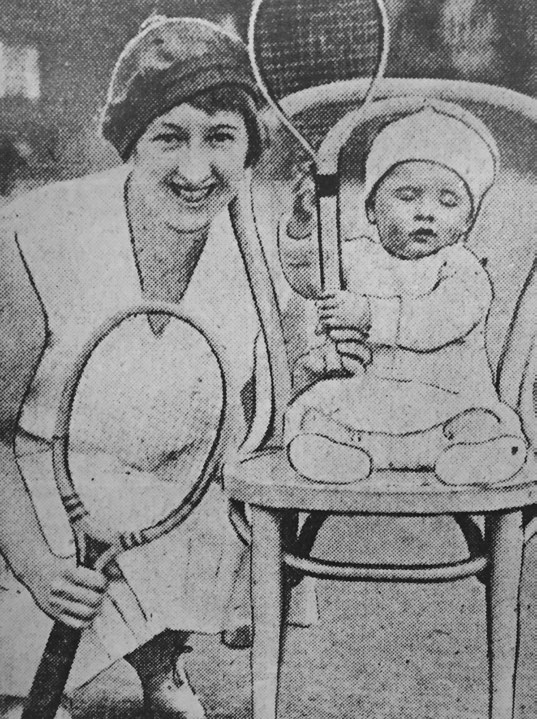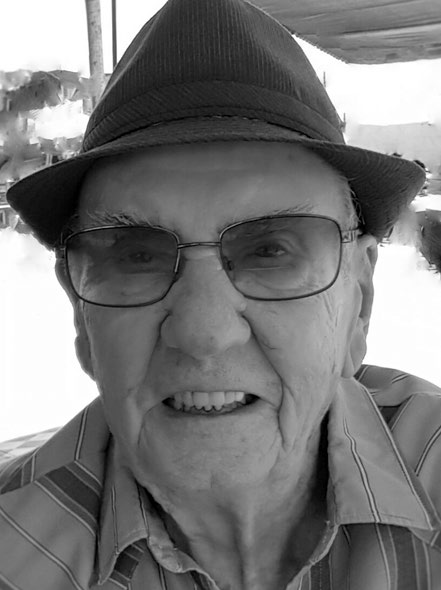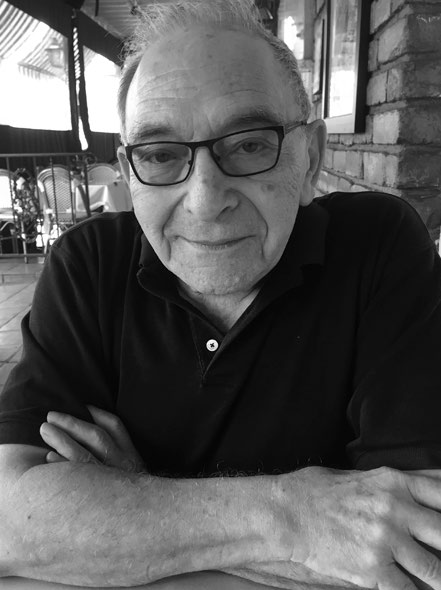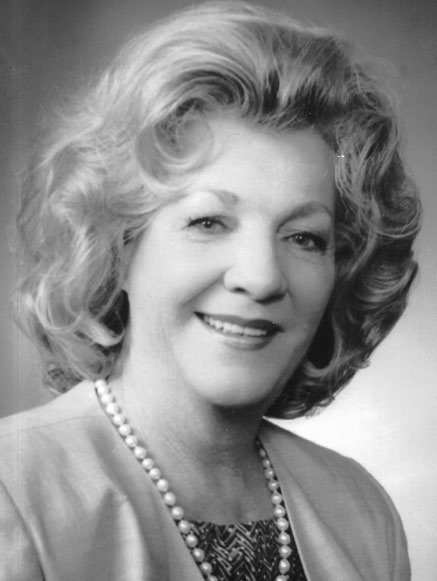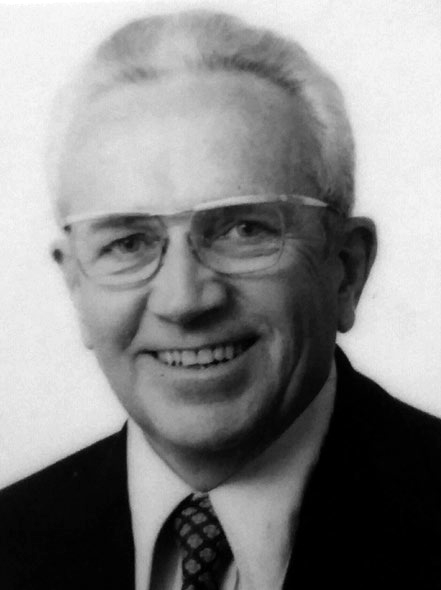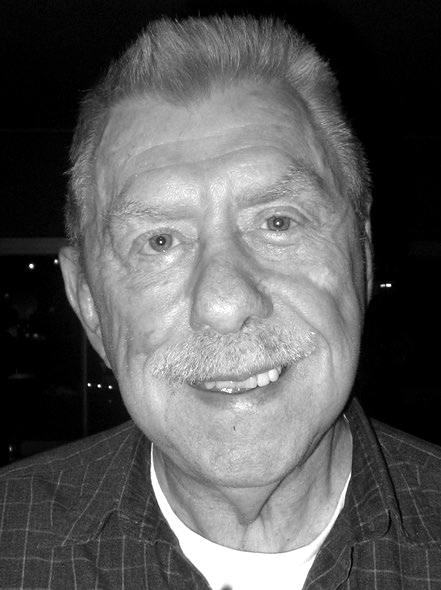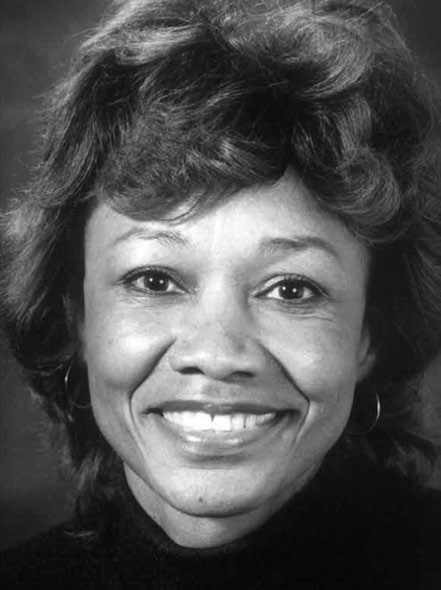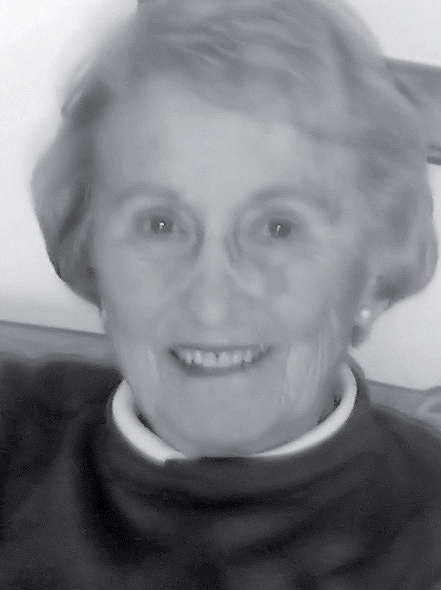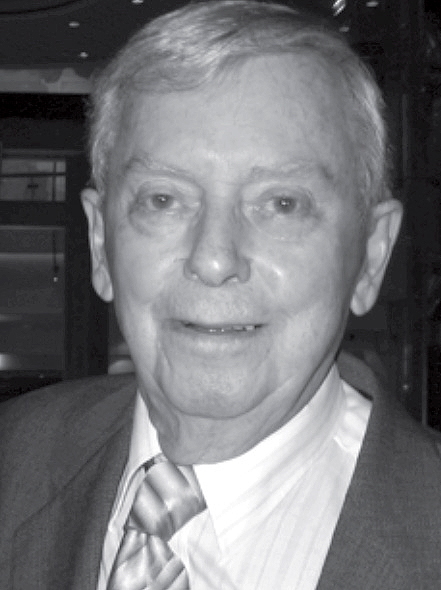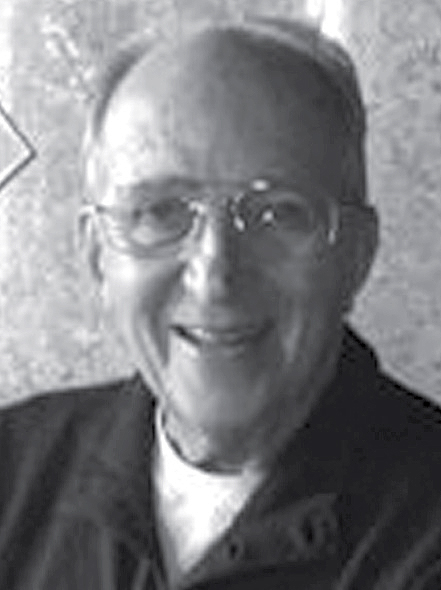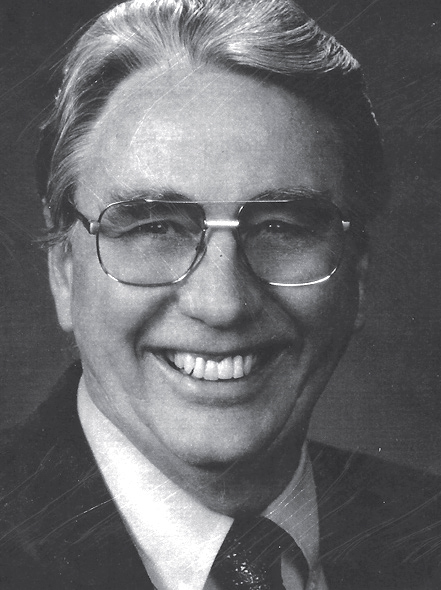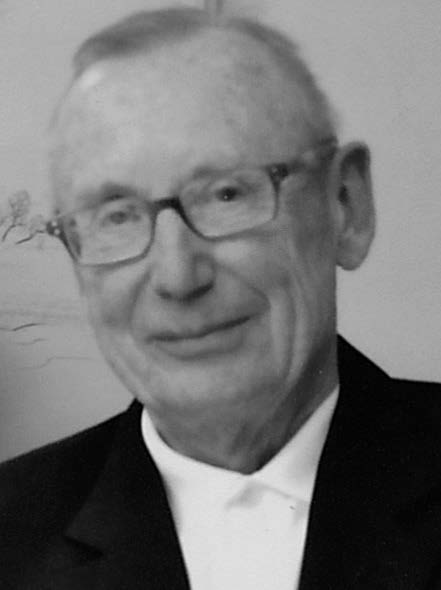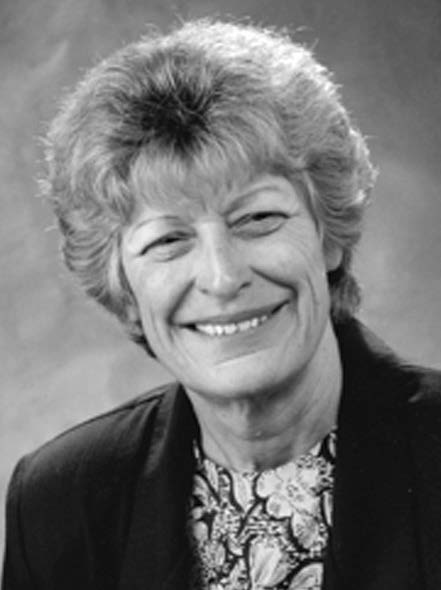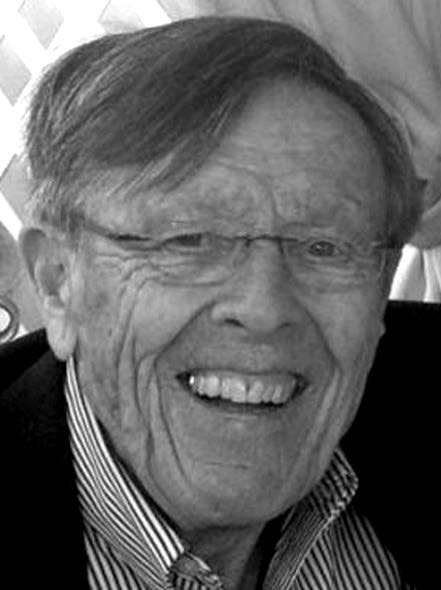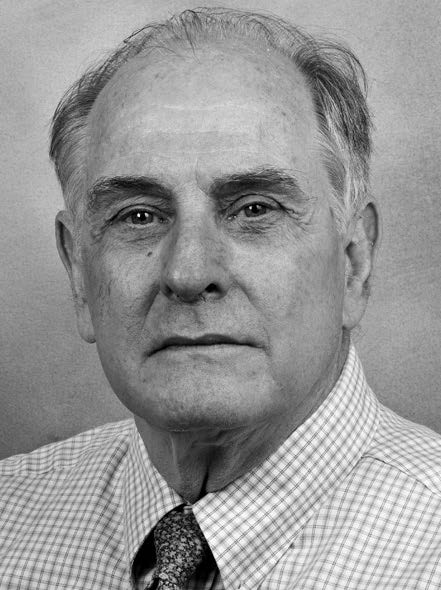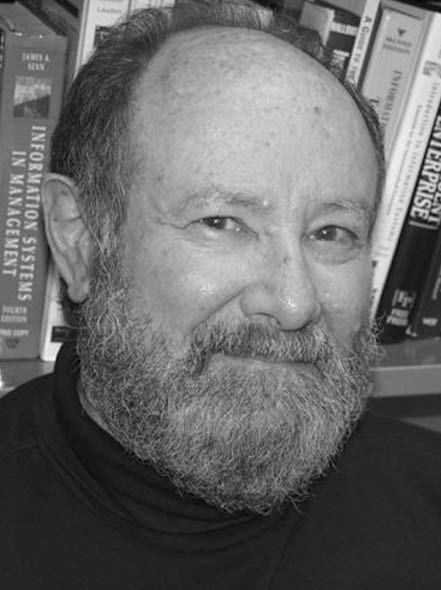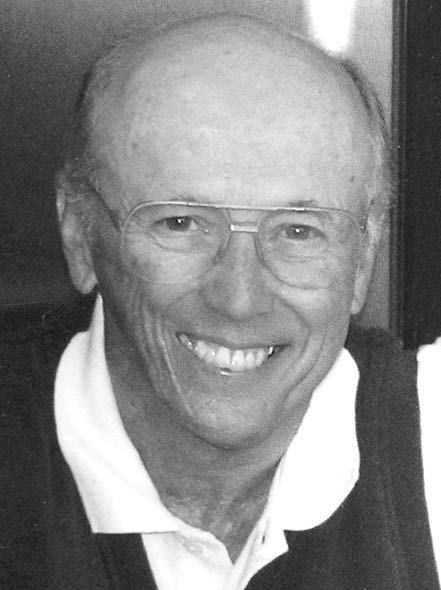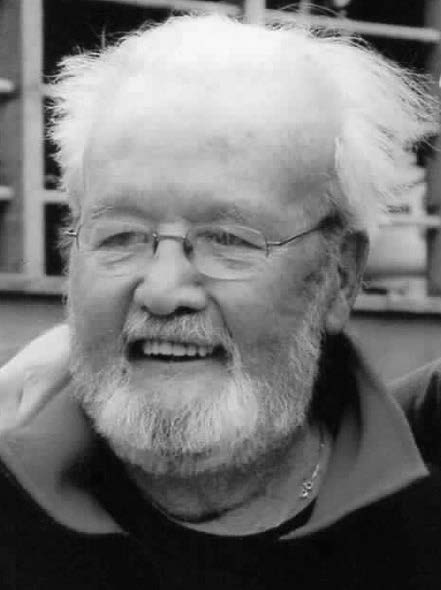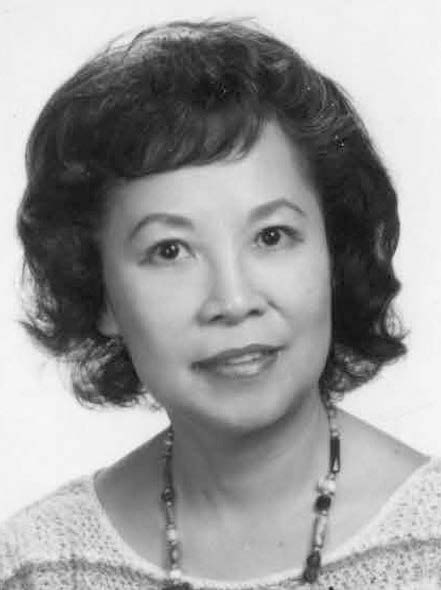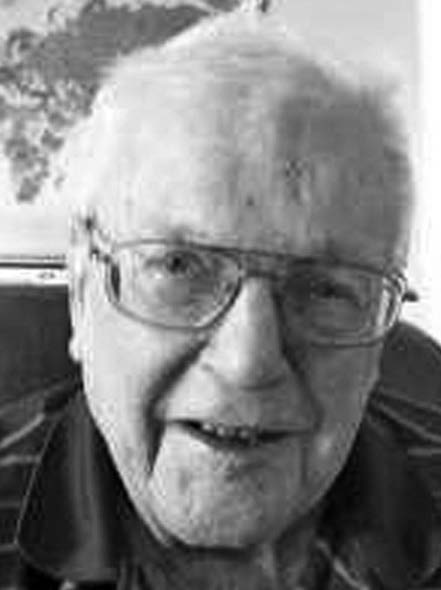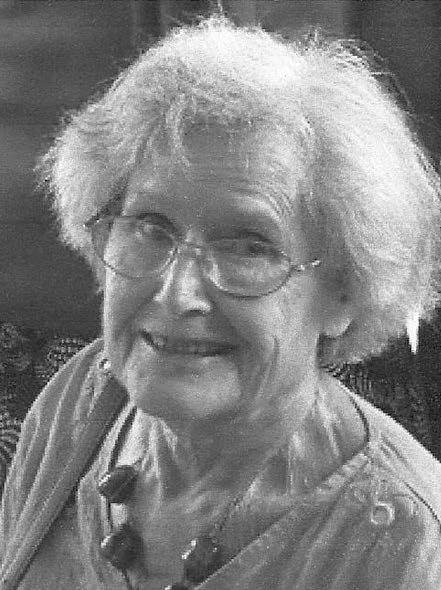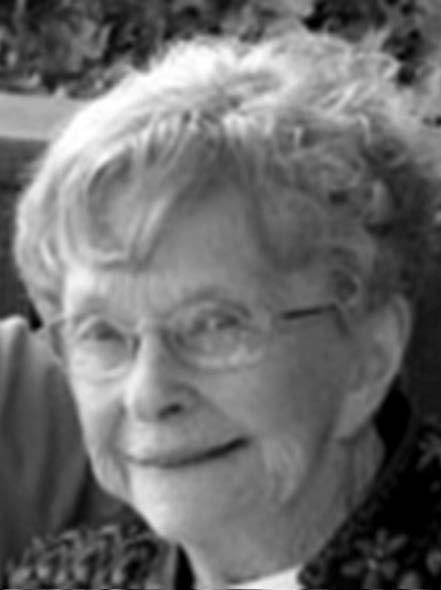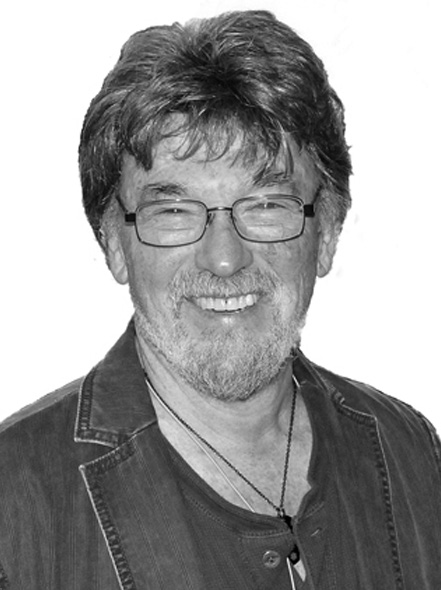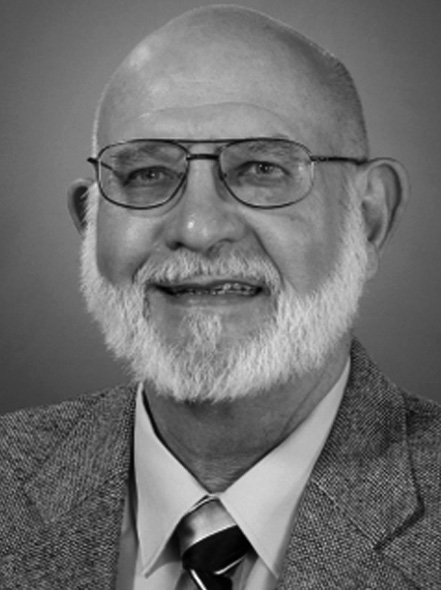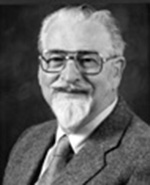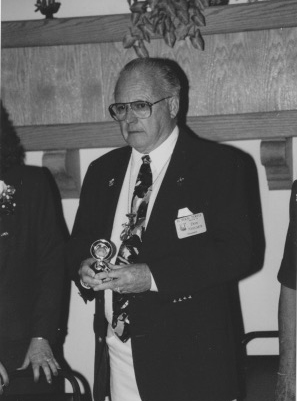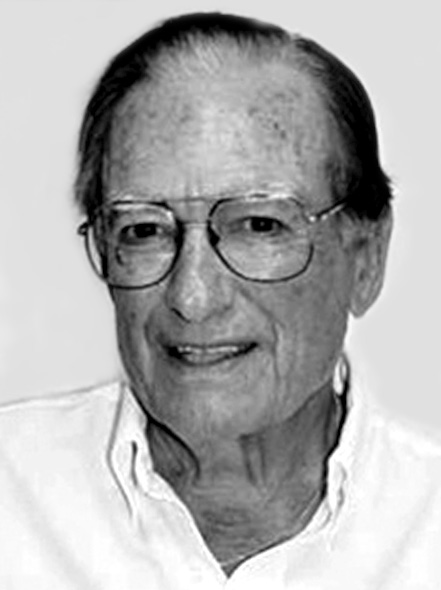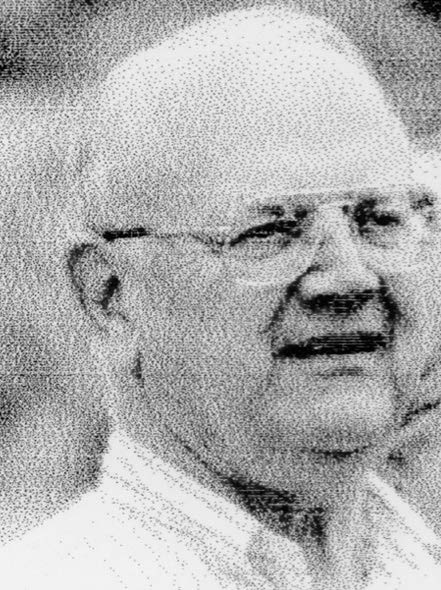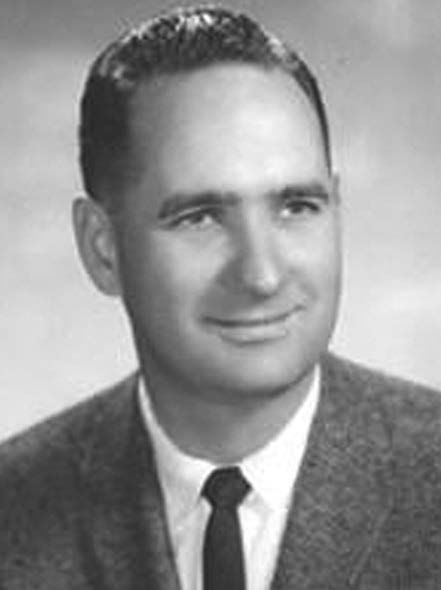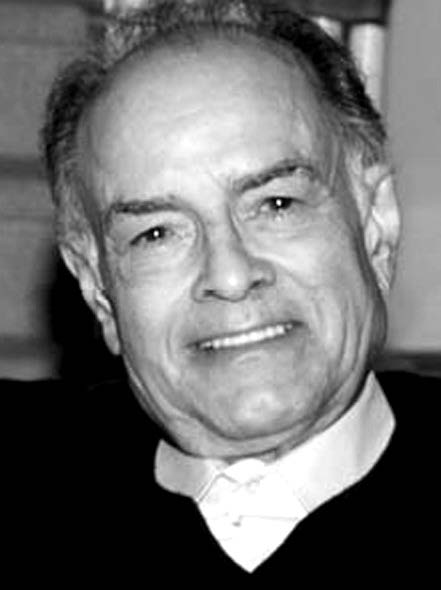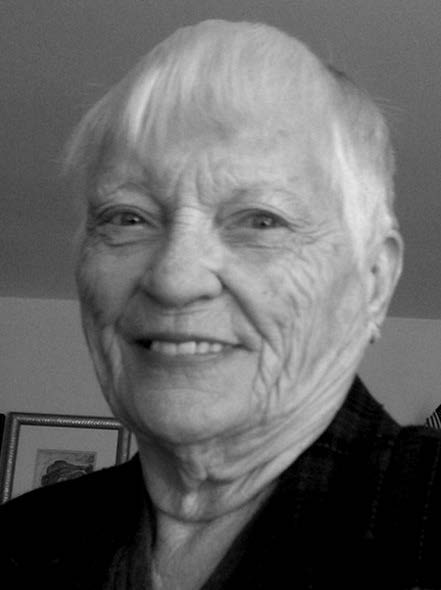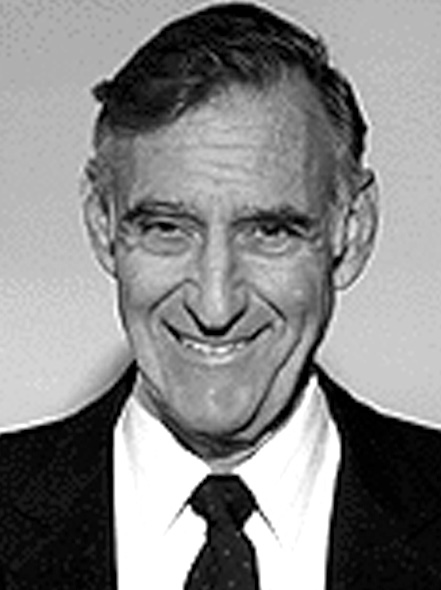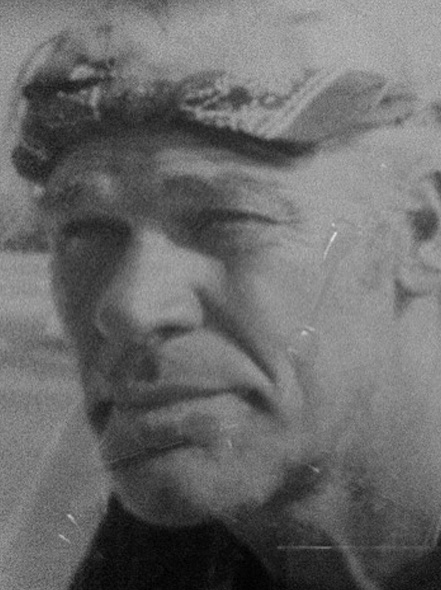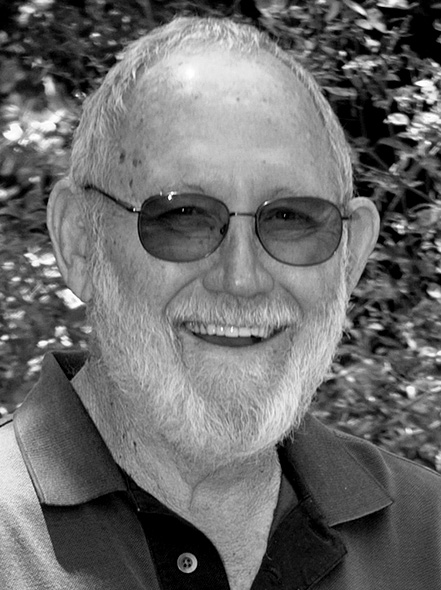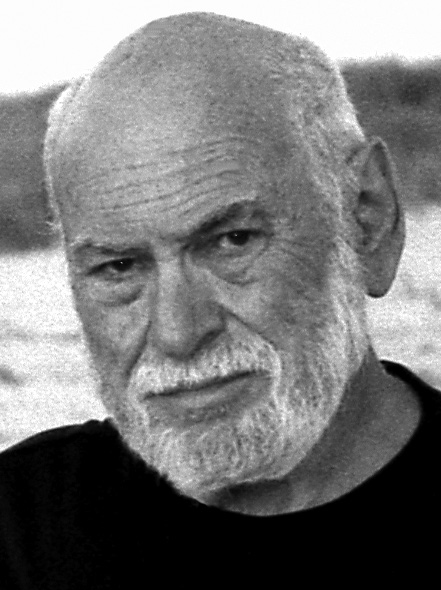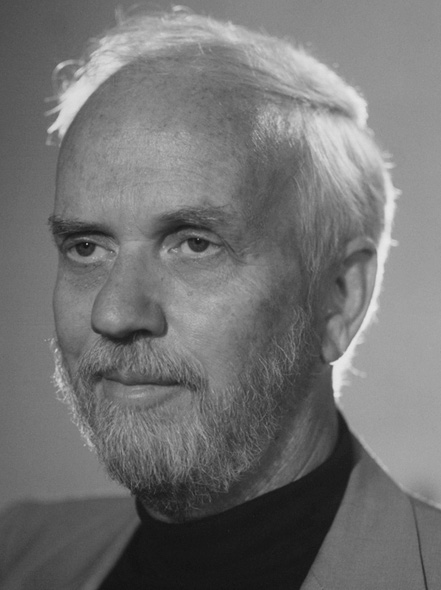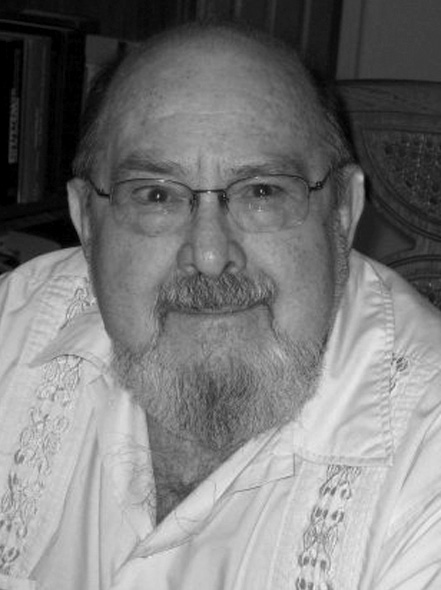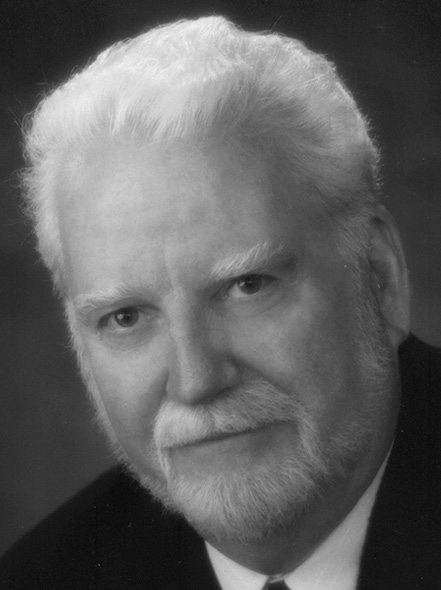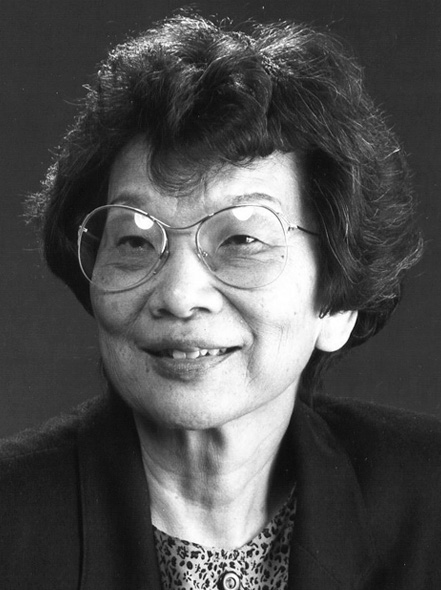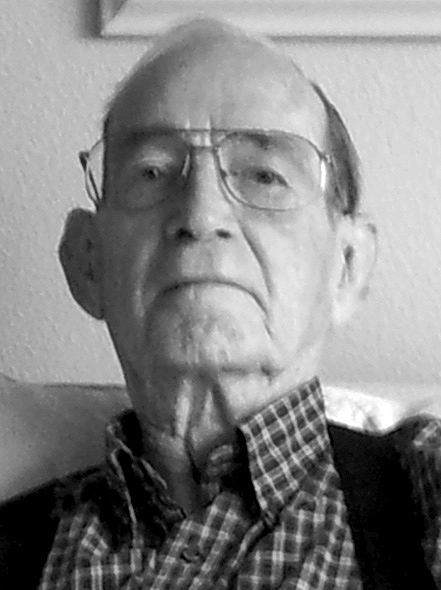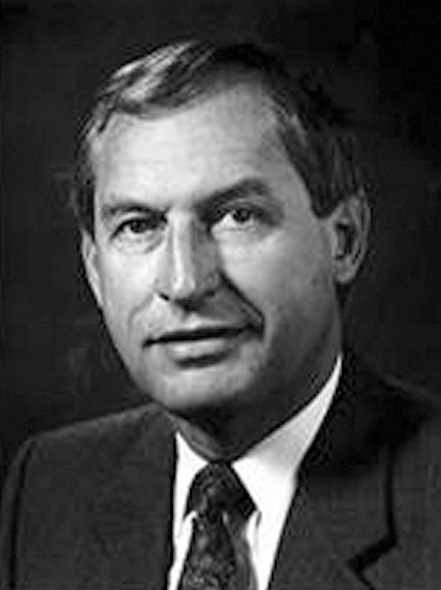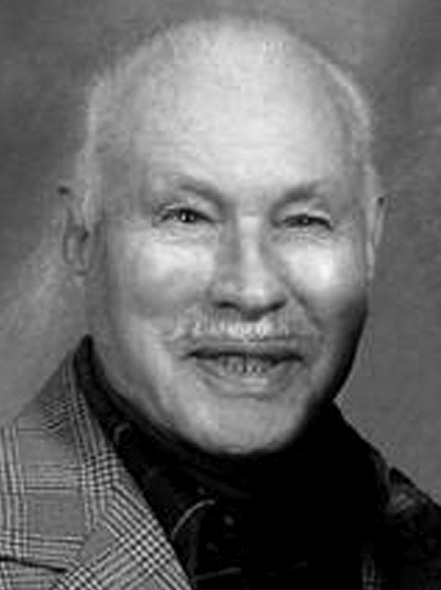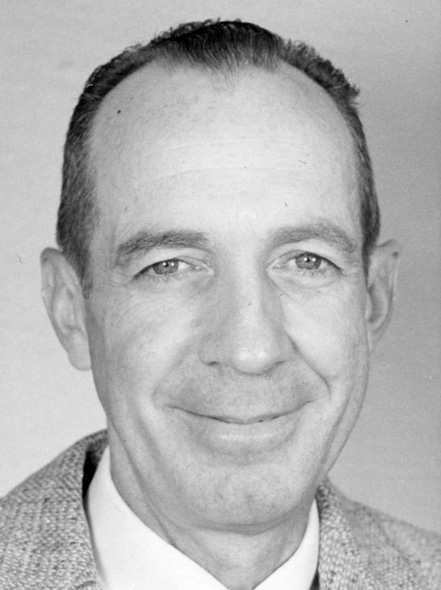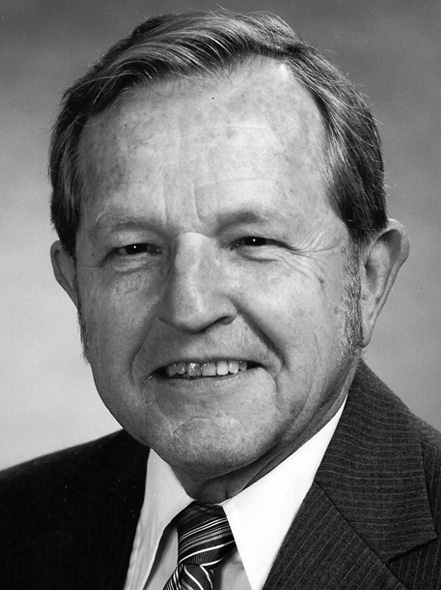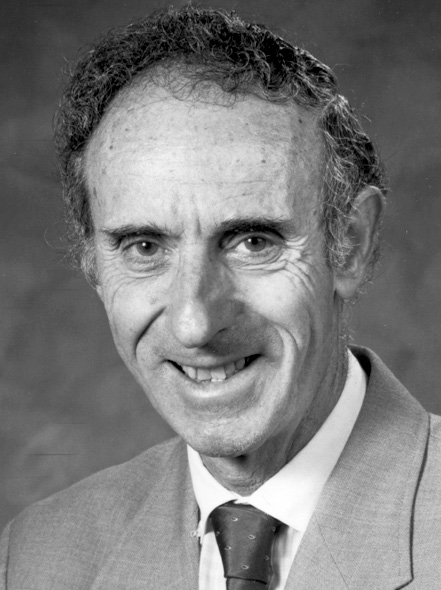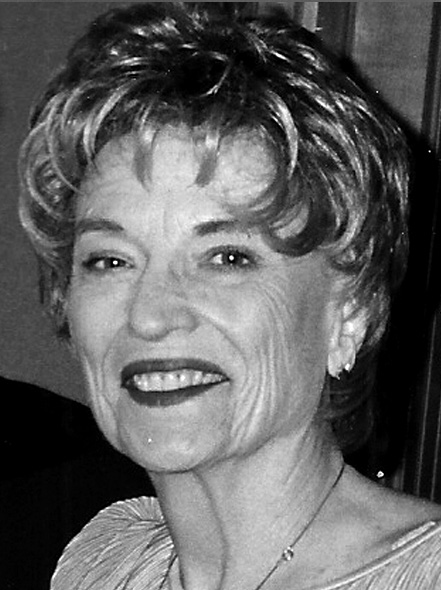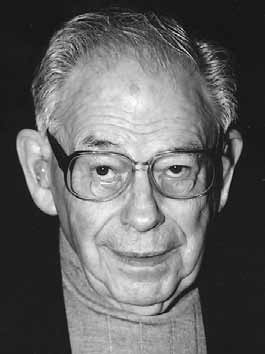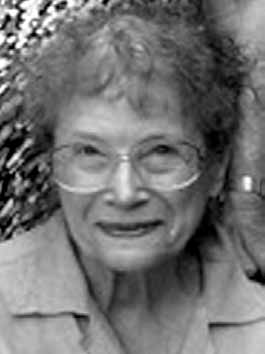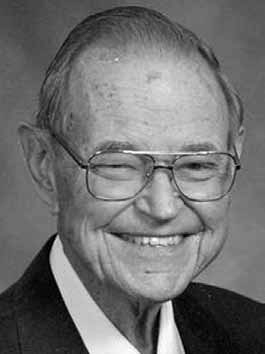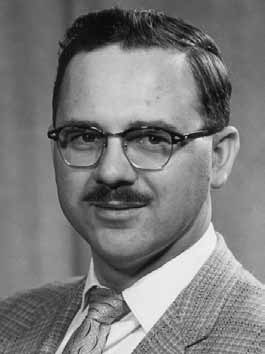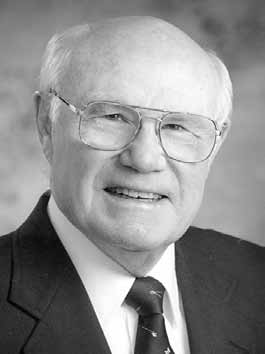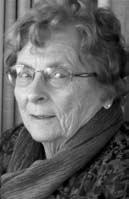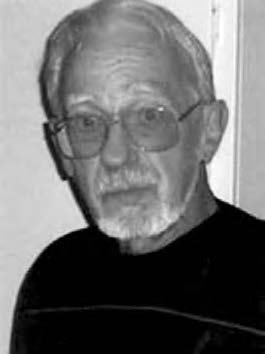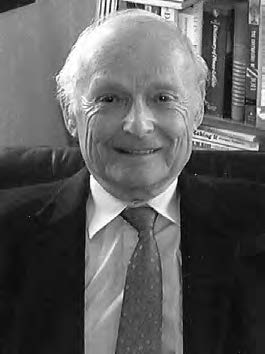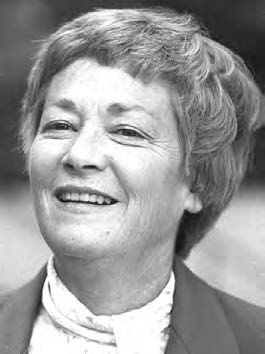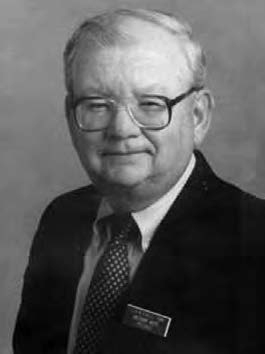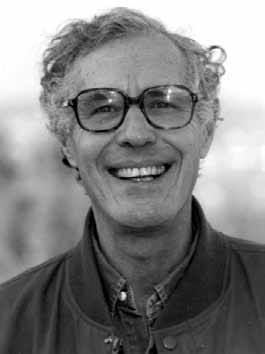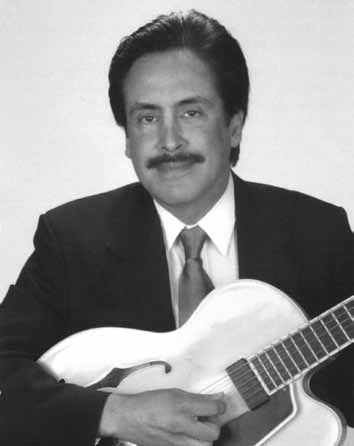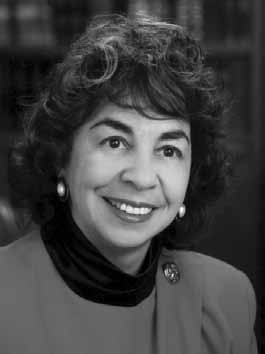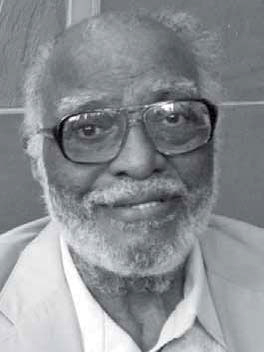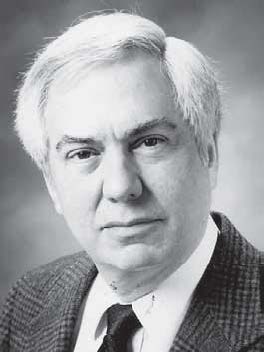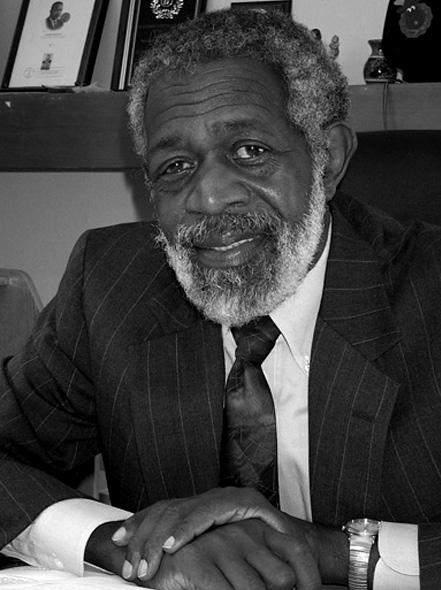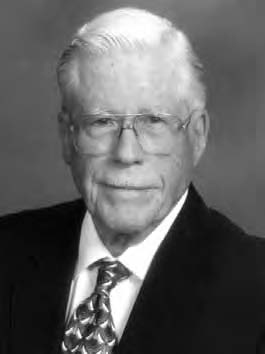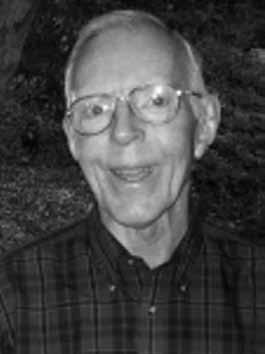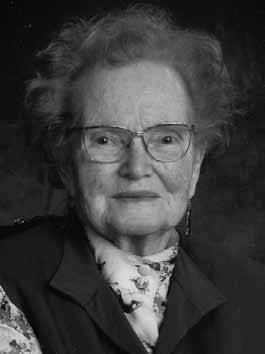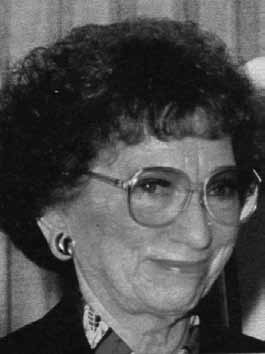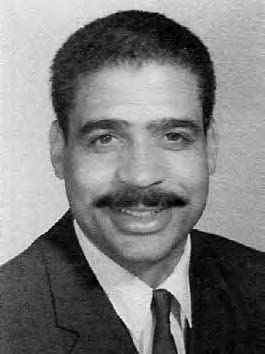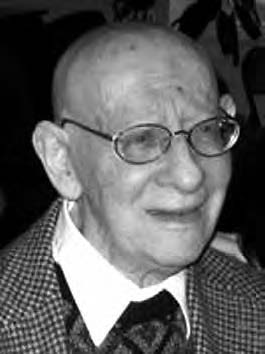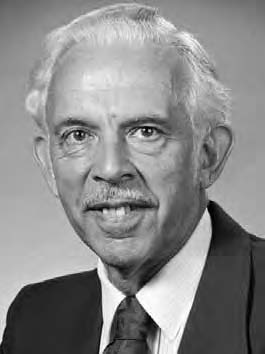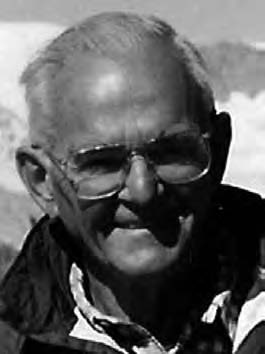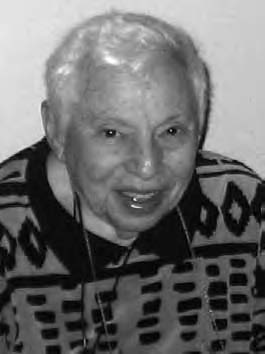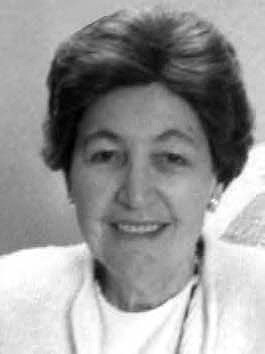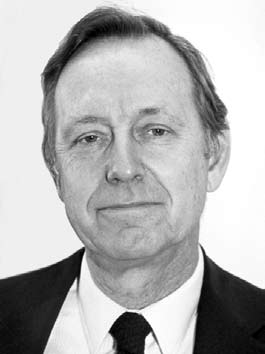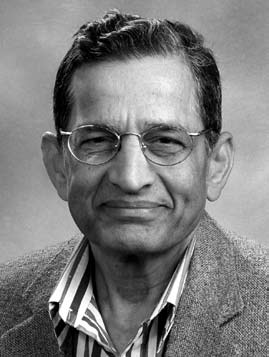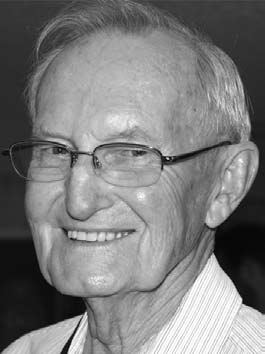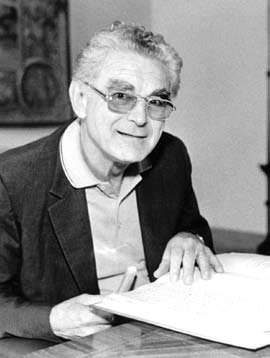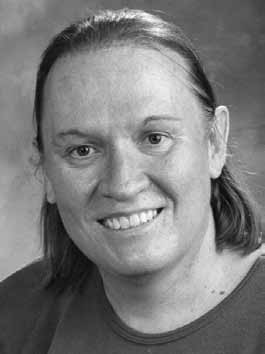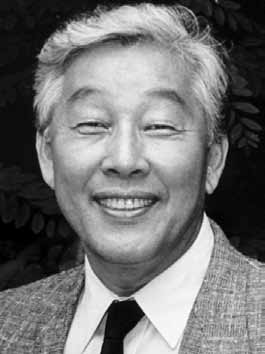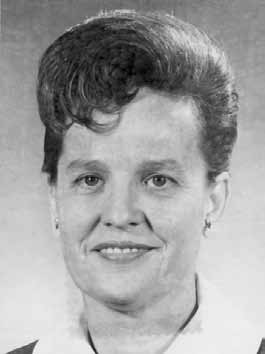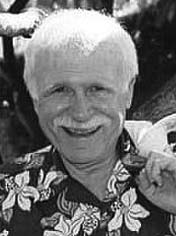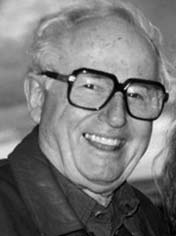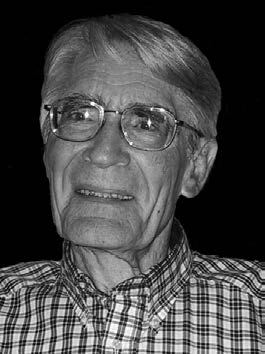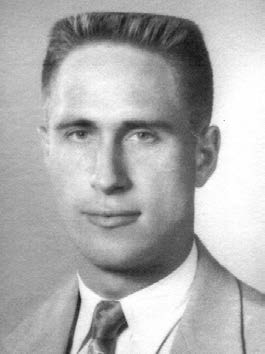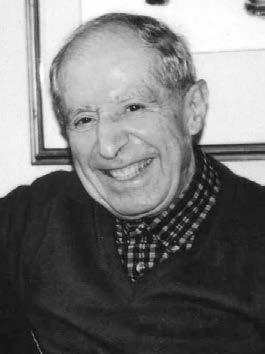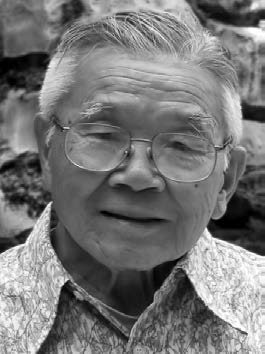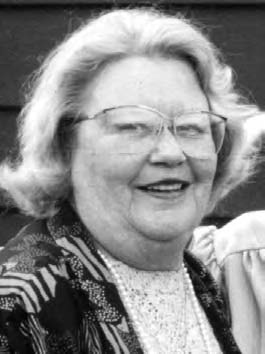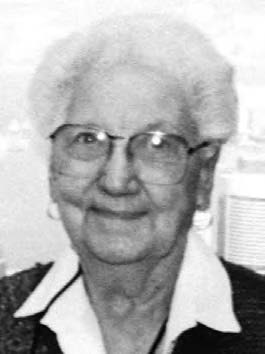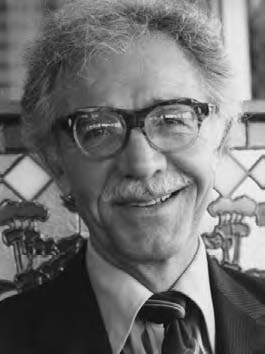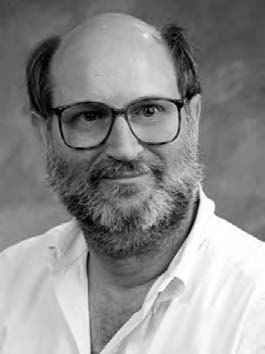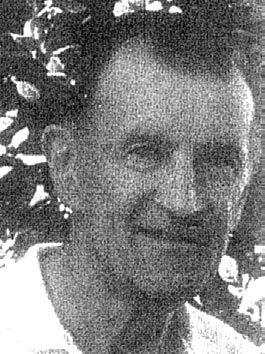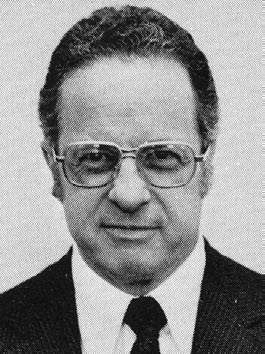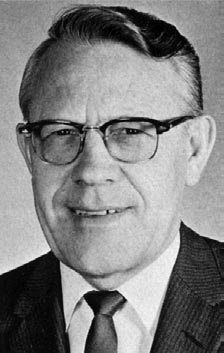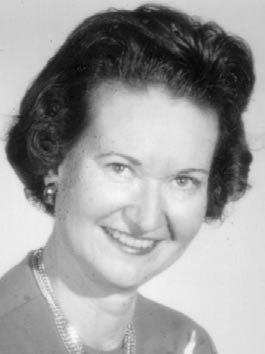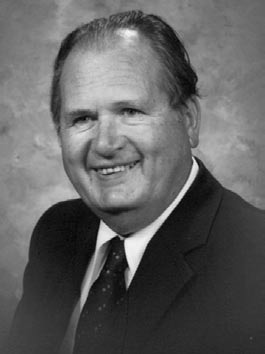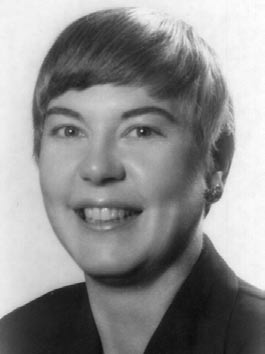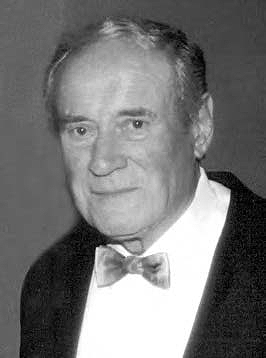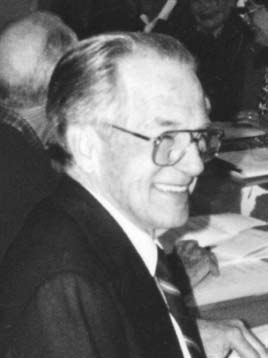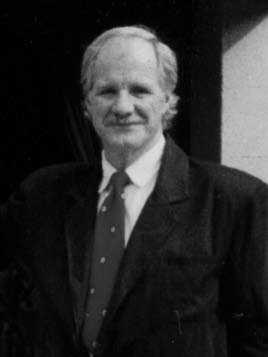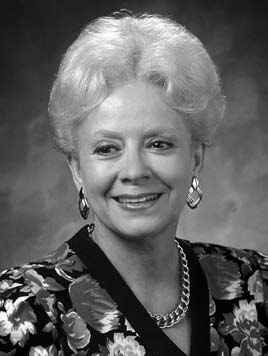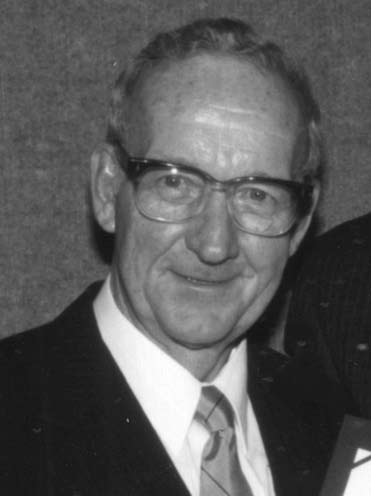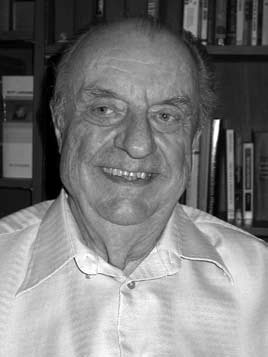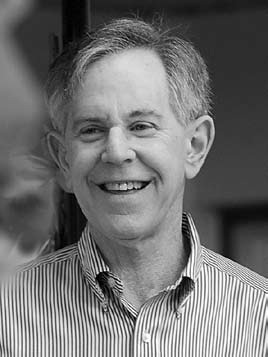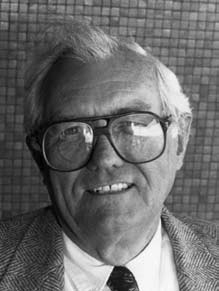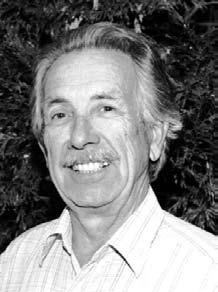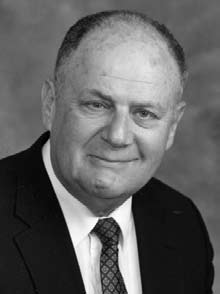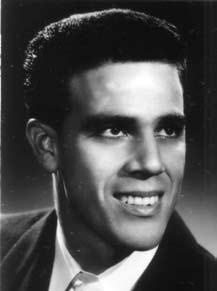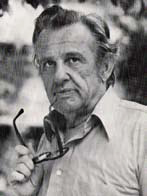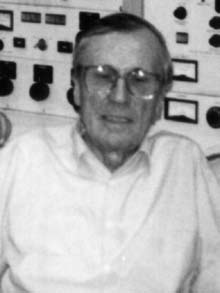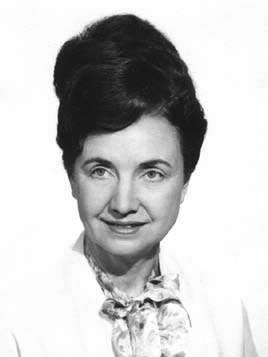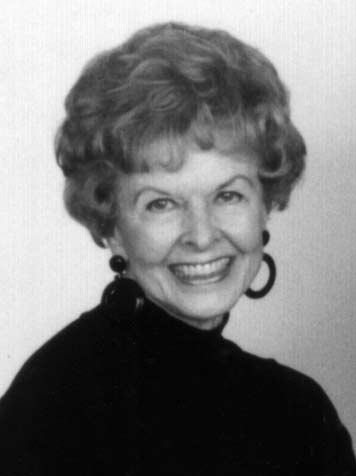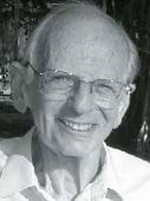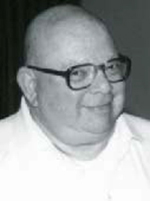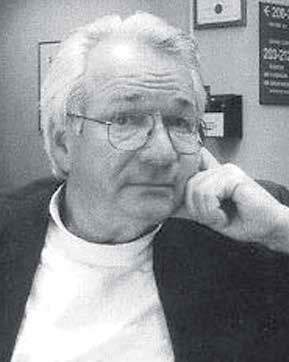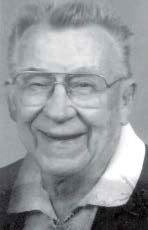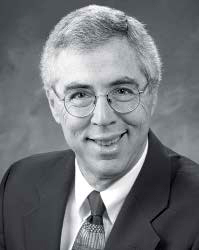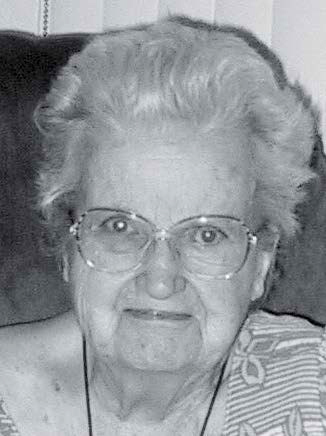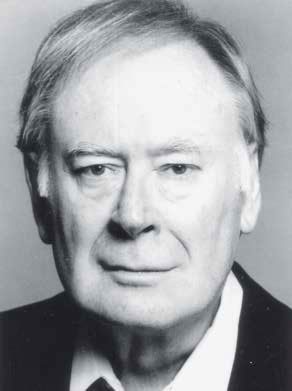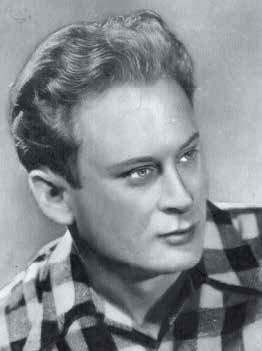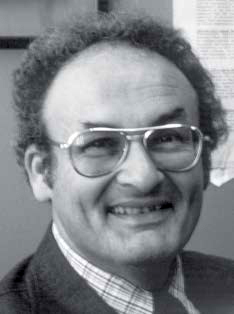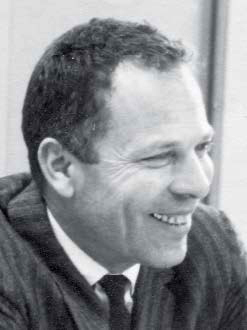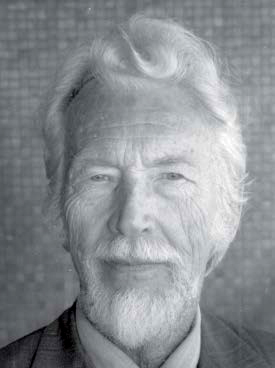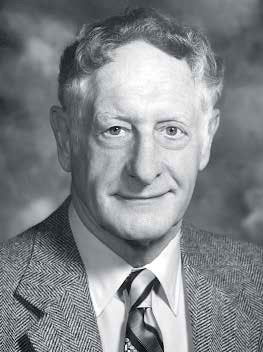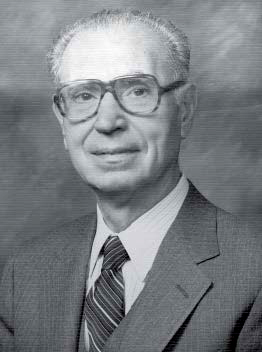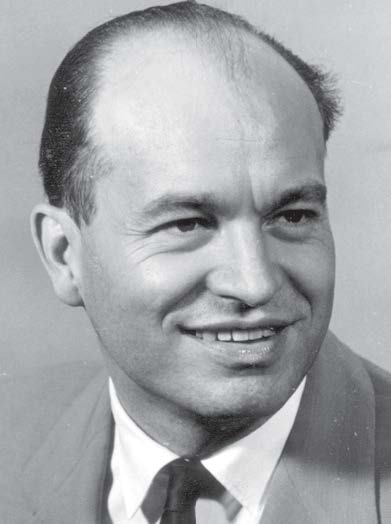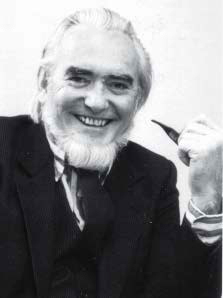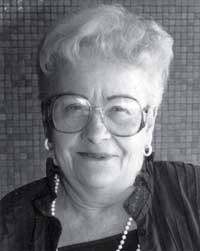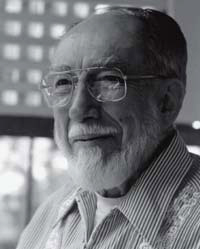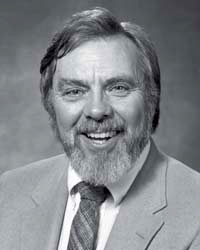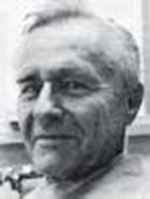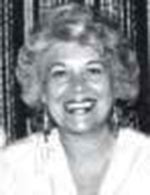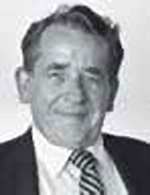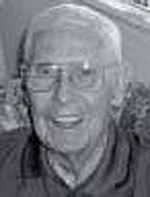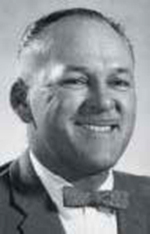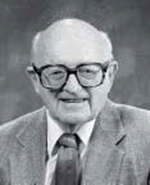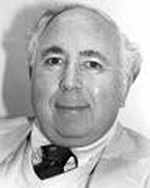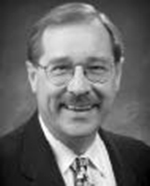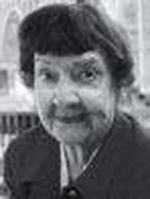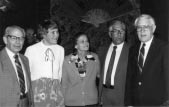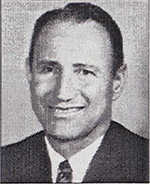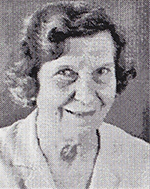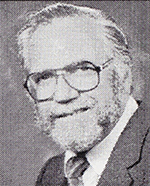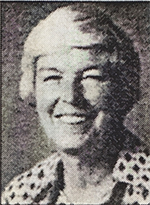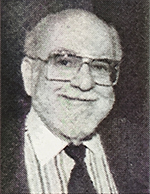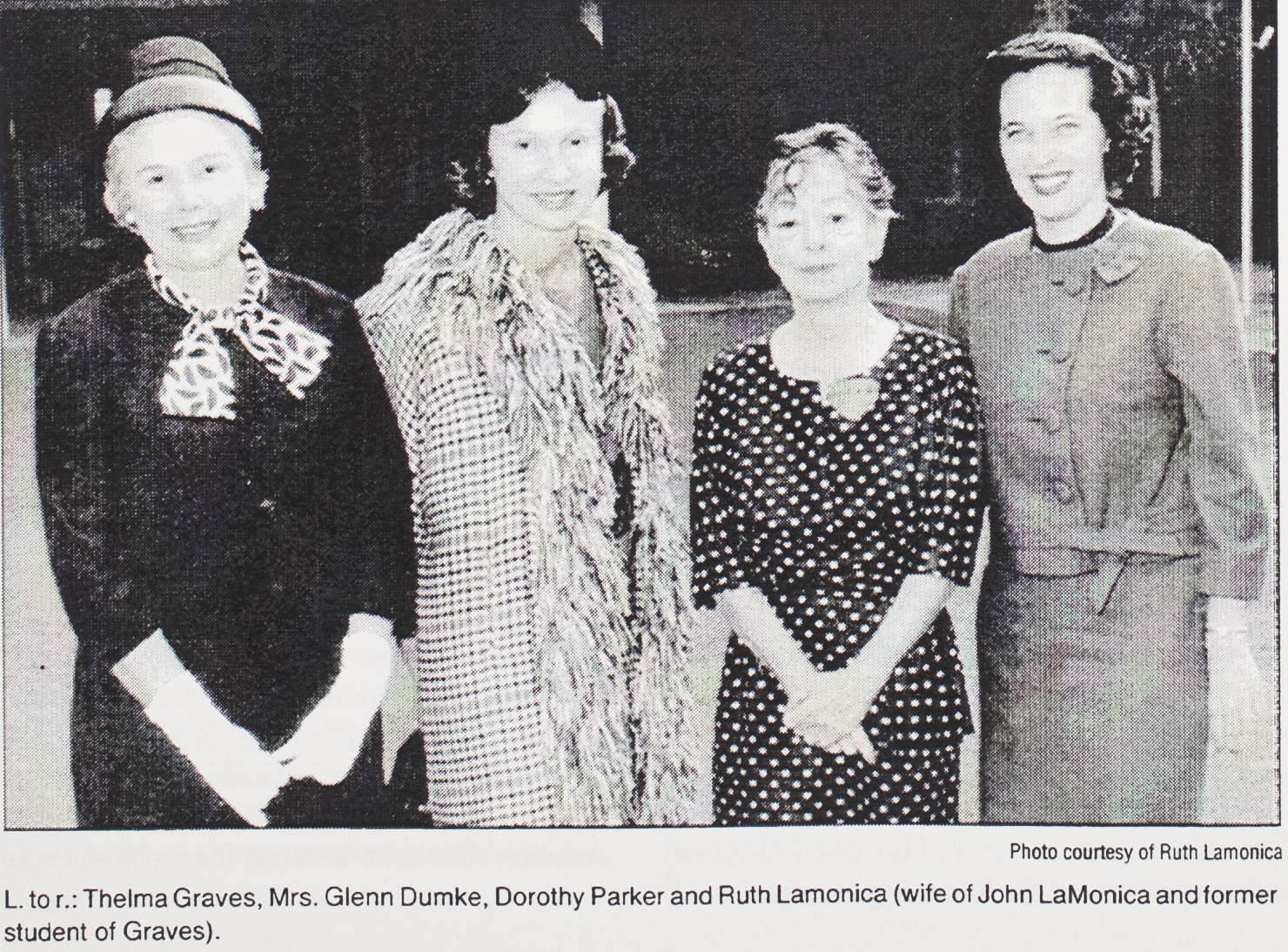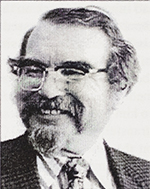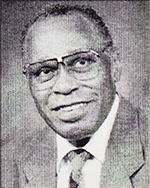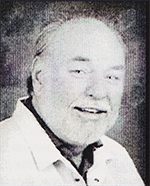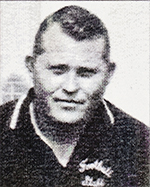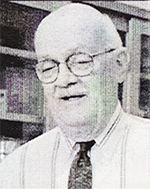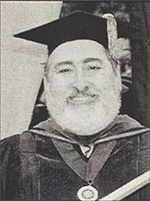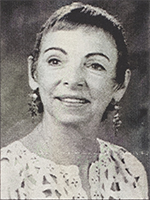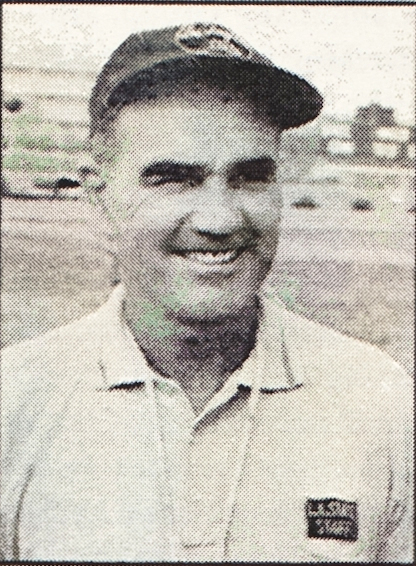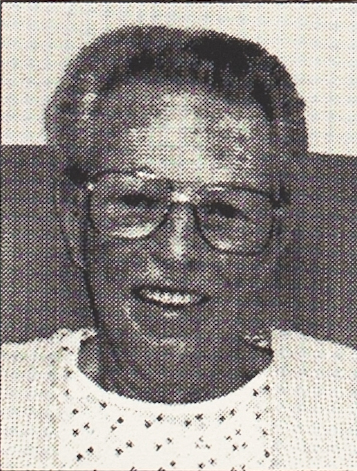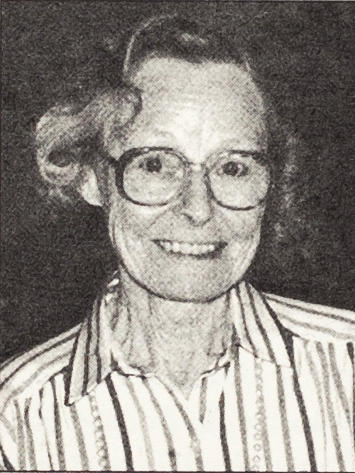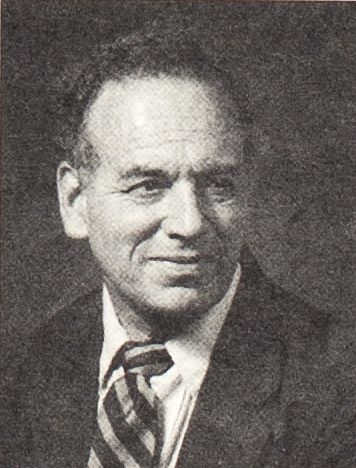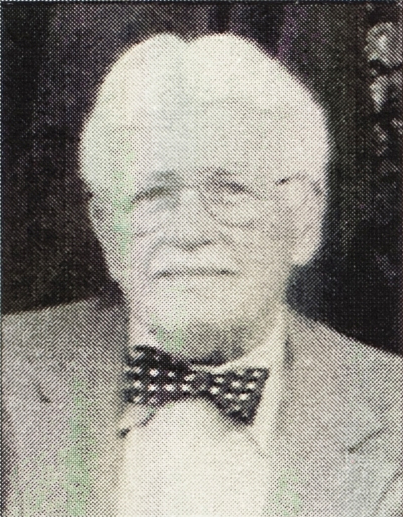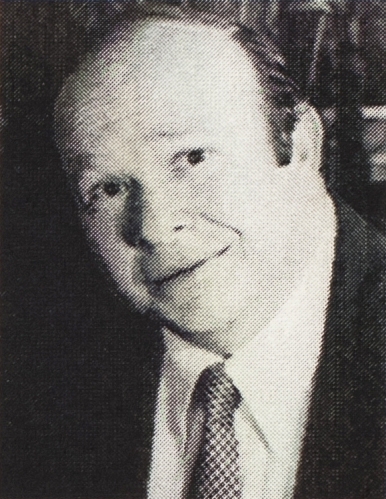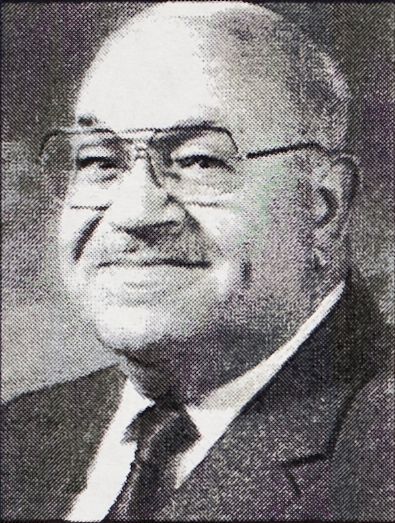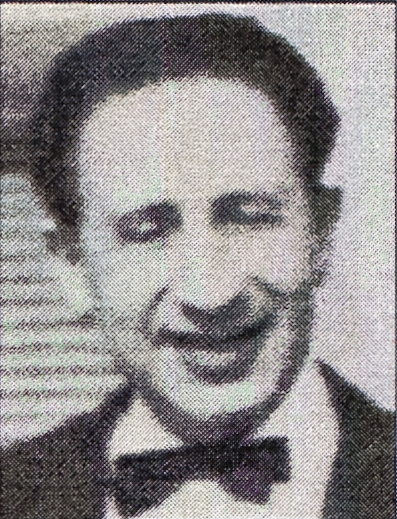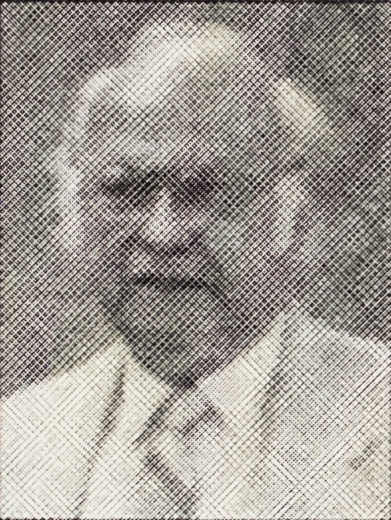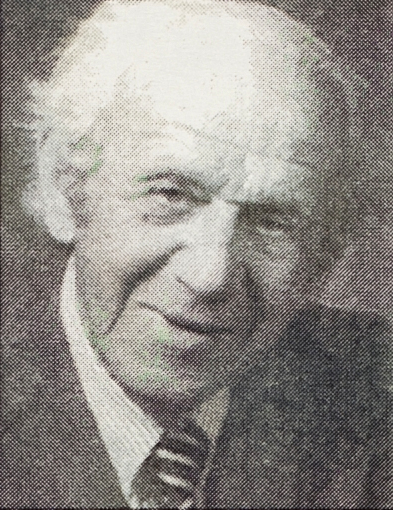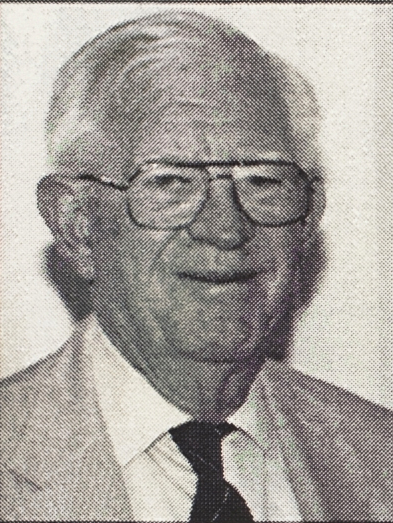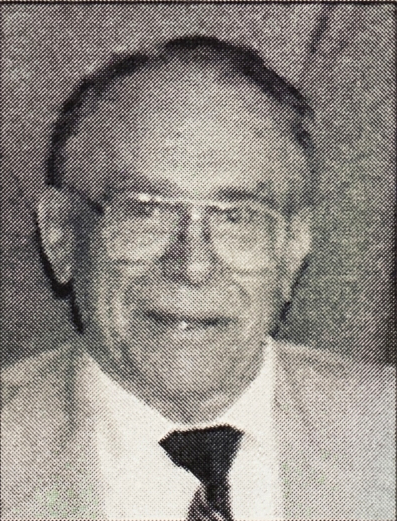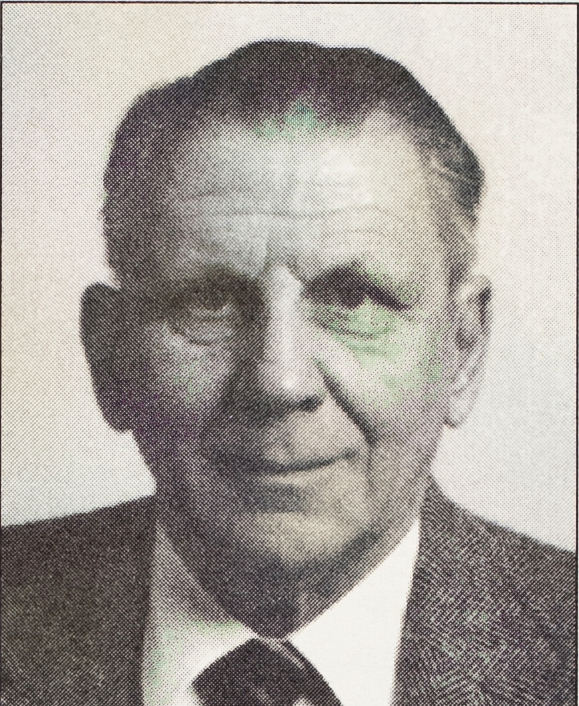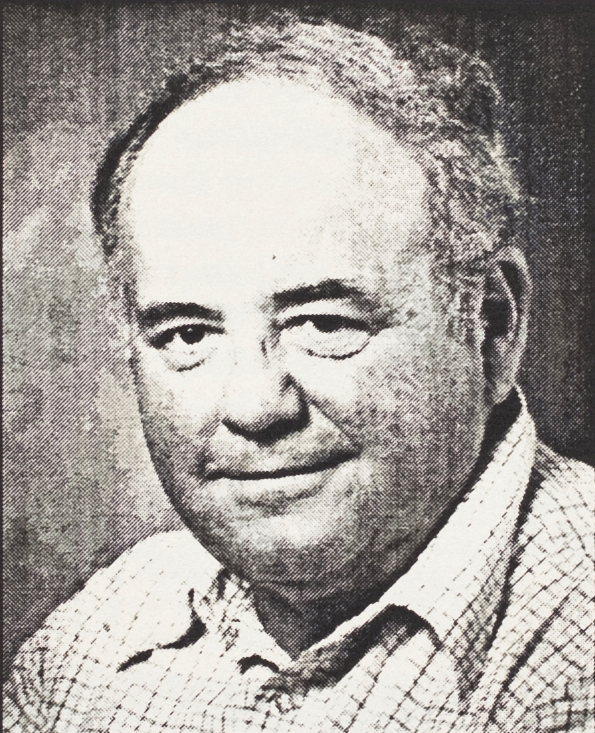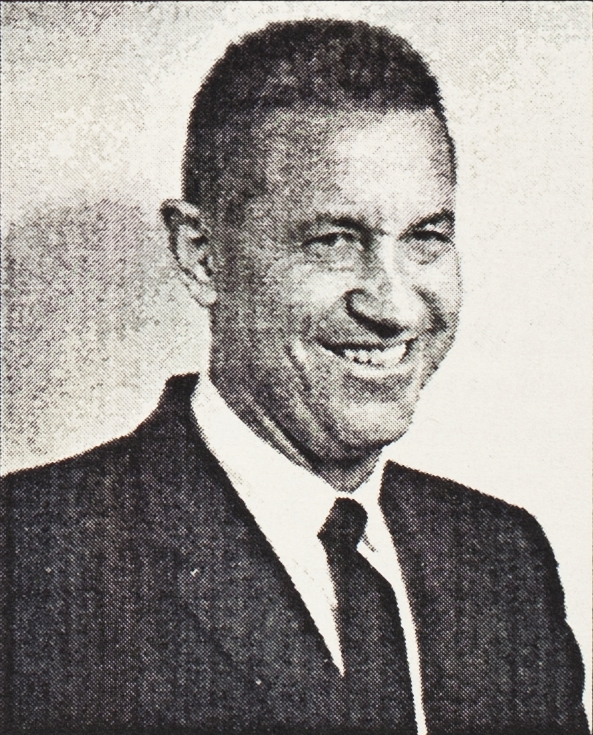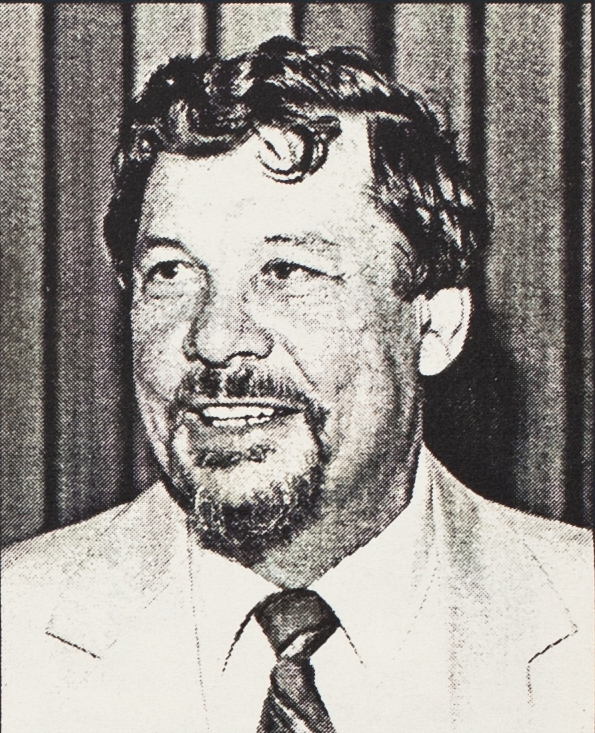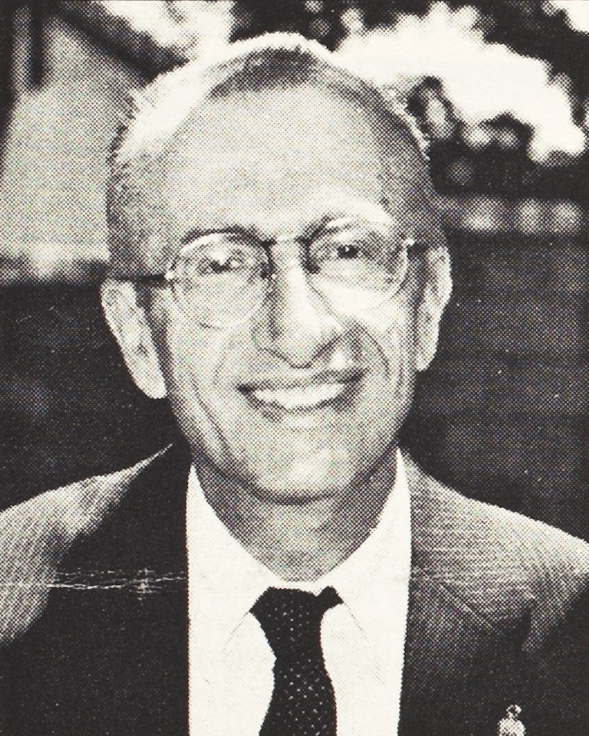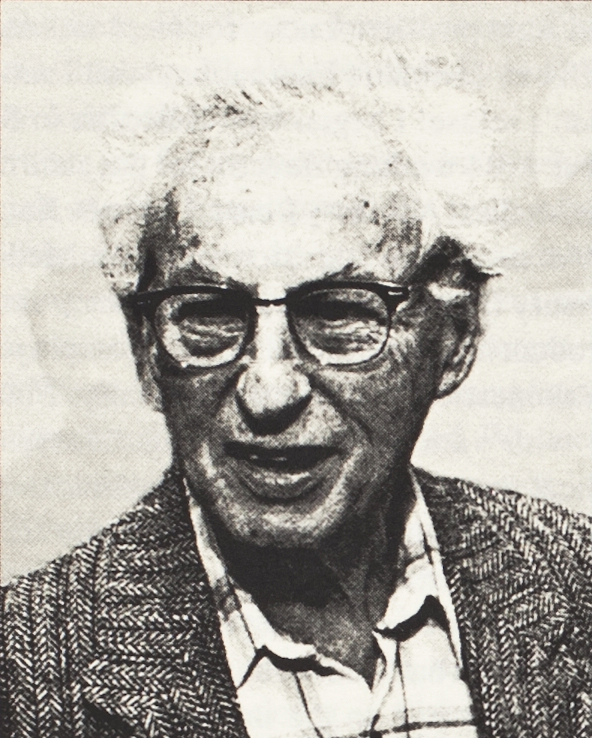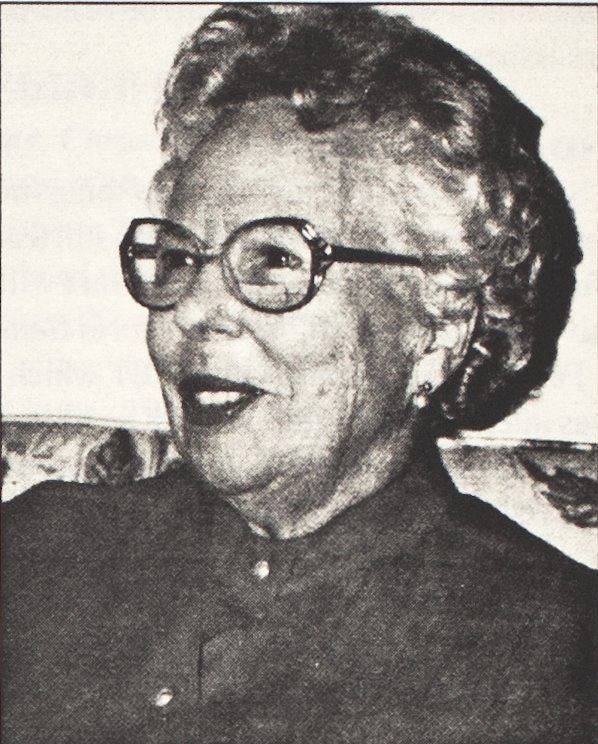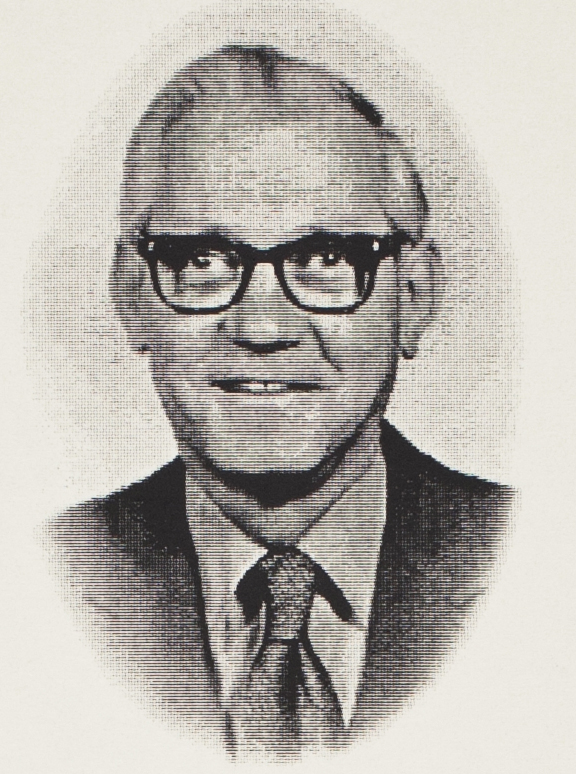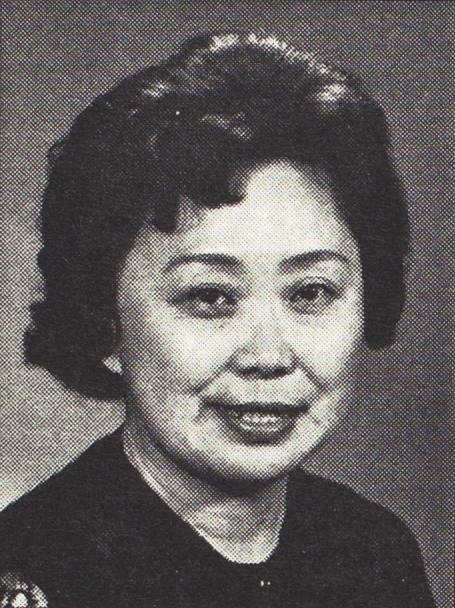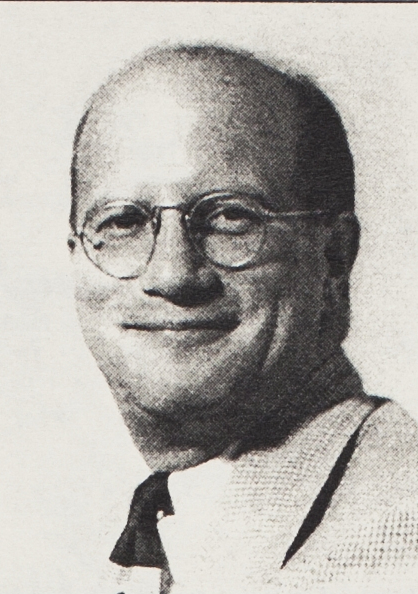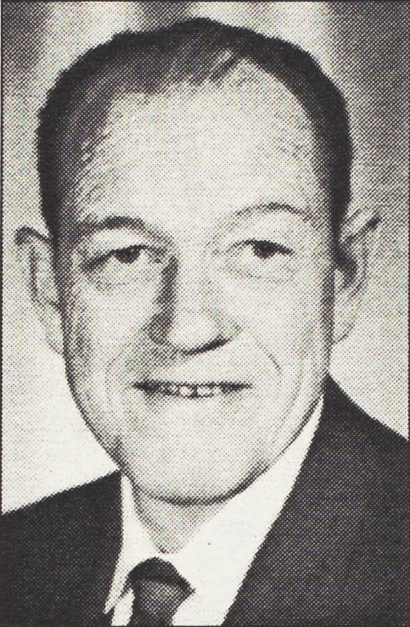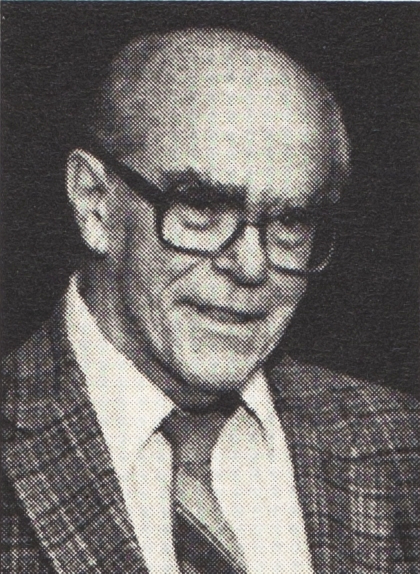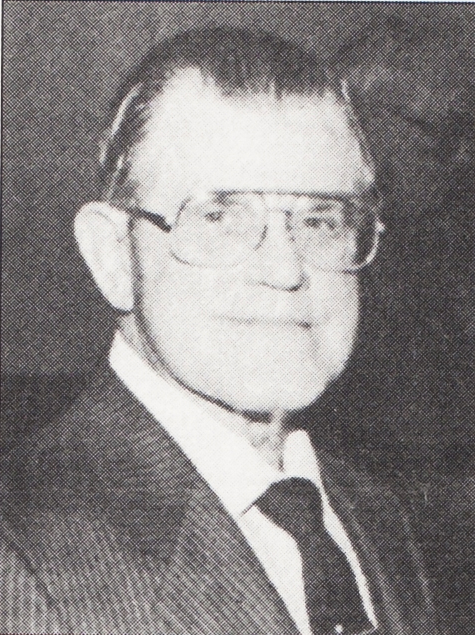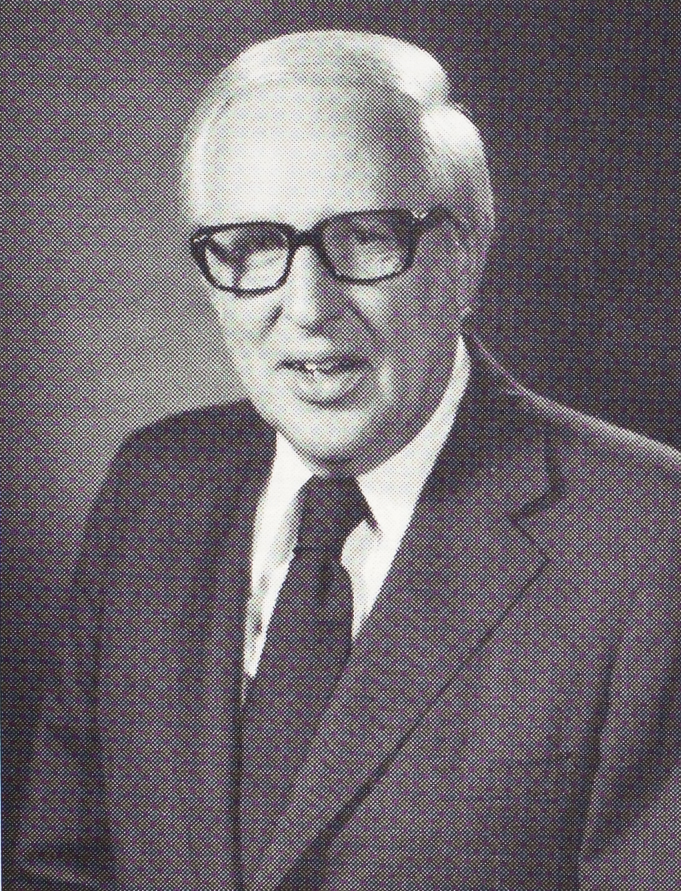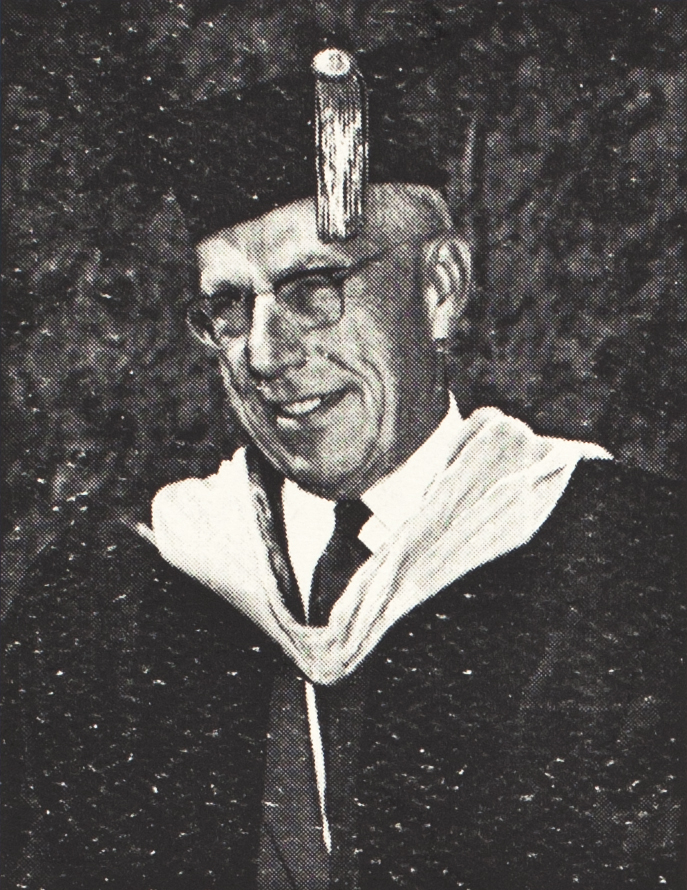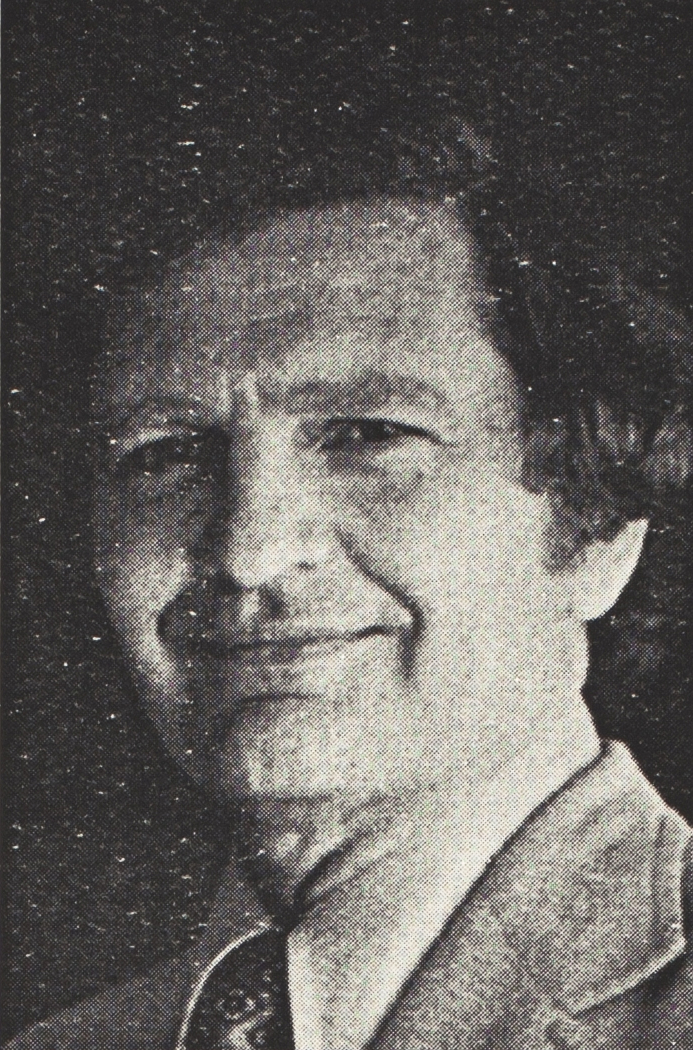As a contribution to the university's historical record and as a tribute to the memory of faculty and other members of the university community who have passed away, all obituaries or other remembrances published in The Emeritimes since its inception in March 1980 have been collected here and may be accessed in different ways.
If you are looking for the obituary of a specific person, then use the alphabetical menu below. Click on the letter that corresponds to the first letter of the person's last name to see a list of names starting with that letter. Then click on the name of the person to go to their obituary, as published in The Emeritimes.
A B C D E F G H I J K L M N O P Q R S T U V W X Y Z
If you just want to peruse the obituaries to learn about the amazing lives of our emeriti, then use the links below to jump directly to the obituaries, starting with the year selected. The obituaries are listed in reverse chronological order of their appearance in The Emeritimes (most recent ones listed first). You can start with the most recent obituaries or read onwards from a particular year by selecting the relevant year below.
Most recent 2020 2015 2010 2005 2000 1995 1990 1985
The collection is up to date through the Spring 2021 issue of The Emeritimes. Irrespective of how you reached the obituaries, you can use the up arrow in the bottom right of the screen to return to the top of this page.
- George Bachmann
- Rose Ball
- Frank R. Balle
- Richard S. Balvin
- Mary A. Bany
- Evelyn Malkin Barclay
- Fhancis H. Baxter
- Pollyanne Baxter
- Homer T. Beatty
- Walter Scott Beaver
- J. Ross Beckstead
- Charles Beckwith
- Abdallah J. Beddawi
- Doris L. Bell
- Eugene "Dutch" Benedetti
- Robert Bryan Benoit
- Arthur J. Benson
- Norman D. Berke
- Morris Better
- Martin F. Beyer
- Virginia (Pat) Beyer
- Adeline Bilovsky
- David Bilovsky
- Donald A. Bird
- A. Leroy Bishop
- Thompson Black, Jr.
- Robert E. Blackmon
- Miriam M. Blomquist
- Arlene F. Bock
- Hugh S. Bonar, Jr.
- Florence M. Bonhard
- Irvin Borders
- Charles E. Borman
- David J. Boubion, Jr.
- James D. Boulgarides
- Ted Clay Bradbury
- Amy G. Brainard
- Gerhard (Harry) Brand
- Roger D. Brandt
- Donald W. Bray
- Martha M. Bray
- Warren C. Bray
- Harford L. Bridges
- William H. Bright
- Charles Brinkley
- Allen P. Bristow
- Richard K. Brome
- Grover Brooks
- Winona N. Brooks
- Clayton M. Brown
- Harold C. Brown
- Marjorie J. D. Brown
- Millie Burnett
- Richard D. Burns (May 1, 2021)
- Walter (Rico) Burrell
- John Conrad Bushman
- Harley Randall Butler
- William G. Byron
- Frances E. Cake
- Margery Callahan
- Bruce Larsen Campbell
- Richard Grenville Cannicott
- Samuel M. Caplin
- Dan Cappa
- John P. (Pat) Carey
- Roland Leroy Carpenter
- Erwin Dale Carter Jr.
- Matilde O. Castells
- Robert S. Cathcart
- Virginia Chamberlain
- Seymour L. Chapin
- Harold (Hal) Charnofsky
- Winifred K. Chastek
- Mary Elizabeth Chin
- Joseph A. Chrzanowski
- Barbara Jean Clark
- Charles L. Clark
- Darrell R. Clemmensen
- Alfred E. Ehrhardt
- Annette Ehrlich (Jan 2, 2021)
- Saxon C. Elliot
- Bernard Epstein
- William R. Eshelman
- Robert H. Ewald
- Dorothy Rummel Gang
- Raymond E. Garcia
- Louis G. Gardemal
- James Garrett
- Jeanine (Gigi) Gaucher-Morales
- Bill Gehr
- Ronald Lee Gibson
- Vincent Arthur Giroux
- Wayne Gladish
- Thell E. Glascock
- Ben C. Gmur
- Edward M. Goldberg
- Herbert Goldenberg
- Lawrence P. (Pete) Goodman
- Mary Gormly
- Norman Gosenfeld
- Virginia Russell Gourley
- Eleanor Graham
- Albert D. Graves
- Charles M. Haberman
- Martha L. Hackman
- Donald J. Hager
- Elise S. Hahn-F01
- Elise S. Hahn-W96
- C.R.D. Halisi
- Harold D. Hall
- Harry S. Hall
- H. Lawrence Hall
- Judd Michael Hammack
- Richard O. Hankey
- Lyle Hanna
- Louis A. Hansen
- Rachel Bruce Hansen
- William R. Hanson
- John V. Haralson
- Caro C. Hatcher
- Audrey Graff Hawk
- Leonard F. Heath
- Barbara O. Henkel
- William Keith Henning
- Burton Henry
- Jack C. Heppe
- John O. Herbold II
- Anthony Hillbruner
- Lester Hirsch
- Patricia Marie Hodges
- Michael John Hoffman
- Richard J. Hoffman
- Ruth Hoffman
- Howard P. (Hap) Holladay
- George Kin Fai Hong
- Stanley Duff Hopper
- Sylvia Teich Horowitz
- John L. Houk
- Charles Hoult
- Jackie Lou Hoyt
- Robert C. Howard
- Ke Ting Hsia
- Mary C. W. Huber
- Donald E. Hudson
- Teresa P. Hughes
- Ron E. Hull
- Virginia Hunter West
- Claire Hutto
- Jerome A. Hutto
- Jean Phyllis Lacour
- David Laird
- John LaMonica
- Ruth Ann LaMonica
- Herbert J. Landar
- Raymond B. Landis
- Roderick G. Langston
- Marvin Laser
- Chor Tin Lau
- William G. (Bill) Leary
- Jean Utley Lehman
- Vernon F. Leidig
- John Melvin Leiman
- Marilynn Lemon
- Ronald S. Lemos
- Molin Leo
- Sumiye Nerio Onodera Leonard
- Jack G. Levine
- Seymour Levitan
- Jane Sanford Lewis
- Robert Turner Lewis
- L. Rogers Liddle
- Louise Lillard
- Richard G. Lillard
- David Lindsey
- Harold E. Lionetti
- Patricia Little
- Theodore W. Little
- William (Bill) E. Lloyd, Sr.
- Alice Roberta (Bobbie) Hannah Lloyd
- Herman J. Loether
- William F. Long
- Anthony Longhetti
- Tony Longson (Jan 17, 2021)
- Francis Everette Lord
- Ferron C. Losee
- Donald C. Lowrie
- Barry Lowenkron
- Herman D. Lujan
- King S. Luk
- Mrs. King Luk
- Richard Maddox
- Donald G. Malcolm
- Edward A. Maljanian
- George E. Mann
- Ramachandra Manvi
- Fred H. Marcus
- Ray F. Marsh
- Rosemarie Marshall-Holt
- Mildred G. Massey
- Leonard G. Mathy
- Jane Matson
- C. Lamar Mayer
- William A. Mays
- Malcolm A. (Mac) McClain
- Richard McComb
- Howard S. McDonald
- Paul T. McElhiney
- J. Mildred McEnroe
- Thomas McEnroe
- S. Barry McGee, Sr.
- J. M. (Jay) Metcalf
- Milton W. Meyer
- David L. Miller
- Maxine L. Miller
- Joan Sabrina Mims-Cox
- Arthur J. (Jack) Misner
- Irene M. Molloy
- Lorrain Monnin
- Donald A. Moore
- Kathleen Moore
- Maryann C. Moore
- Fernando B. Morinigo
- Ralph Moritz
- Robert R. Morman
- Robert H. Morneau Jr.
- Donald Mortensen
- Dorothy Mortensen
- John A. Morton
- Herbert Moskowitz
- Anthony Joseph (Tony) Moye
- L. D. Myers
- Joseph A. Sacher
- Emanuel C. Salemi
- John Salmond
- Clarence K. “Sandy” Sandelin
- Ake Sandler
- Rudolph Sando
- Pauline E. Schatz
- William K. (Bill) Schatz
- Ben F. Scherer
- Martin John Schiesl
- Beverly Jeanne Schnitzler
- Delwyn G. Schubert
- Inez R. Schubert
- Howard L. Schug
- Jeanne Schwartz
- Leon Schwartz
- Paul T. Scott
- Burton Marshall Seidler
- Randolph G. Service
- Gordon B. Severance
- Hanna Shay
- Lilly Shen
- Gerald Q. Shepherd
- Margaret Shepherd
- Robert Sherwood
- Frederick B. Shroyer
- Mary Elizabeth (Betty) Shutler
- Gunjit S. Sikand
- Ronald H. Silverman
- Robert H. Simmons
- Mildred (Bobby) O. Simpson
- Ruth Simpson
- William B. Simpson
- Patricia Bates Simun
- John W. Sinclair
- Carol J. Smallenburg
- Arthur Lee Smith, Jr.
- Benjamin W. Smith
- Bernice Beaumont Smith
- Marjorie M. Smith
- Jon Snodgrass
- Keith Snyder
- Joseph E. Soldate
- Bernard J. (Bert) Somers
- Gerald E Sorrensen
- Hector Soto-Perez
- John R. Spielman
- James J. Stansell
- Louis Waite Stearns
- Kent Ladd Steckmesser
- Alan Paul Stein
- Susan Gilmore Steiner
- William L. Sternal
- Virgil Homer Stevens, Jr.
- Richard L. Stone
- Harold Storch
- Martin L. Stout
- Robert Strassburg
- Richard Myron Straw
- Gaby Stuart
- Joseph Stubbins
- James T. Sullivan
- Vito G. Susca
- John Swain
- Therman “Buddy” Swann
- Kenneth N. Sweetnam
- Hershel K. Swinger
Obituaries
The obituaries are listed in chronological order (newest ones on top). If you are looking for a specific person please use the alphabetical listing above.
2021
Tony Longson, emeritus professor of art, died unexpectedly on January 17 in Altadena. He was 72. With a specialization in design, he was one of a handful of 1970s pioneering European artists to embrace the use of computers. Born in Britain, Tony obtained his B.A. from Reading University (England) in 1971 and was a Bicentennial Arts Fellow (M.A. equivalent) in England in 1981. He was one of the first artists to use early computers and, almost immediately, learned to program in order to have artistic flexibility over the creation of his mathematically based “constructions.” In addition to making his own artwork, his passion for utilizing computers segued into a career spent promoting this new area of art and educating young artists to experiment and create using the new tool. In 1980, Tony came to the United States from Britain under a UK/USA Arts Fellowship that enabled him to serve as artist in residence at the NASA Jet Propulsion Laboratory’s computer graphics lab for a year. At the time, the United States was considerably ahead of Great Britain in its approach to computers, so when the chair of the Art Department at Cal State LA head-hunted Tony to create a computer graphics laboratory at the University, he accepted the challenge eagerly. Tony’s talents were evident throughout his career at Cal State LA. He used his creativity to build first one, and eventually two, fully equipped labs for visual artists. Initially begging and borrowing computers from entities like Apple, he was later able to buy equipment utilizing funds from California’s educational lottery account. His next goal was to create the first stateside educational programs to teach the creative use of computers to artists and designers and to establish a computer animation program with state-of-the-art software. Through his visiting lectureships at the University of Southern California, UCLA, and Art Center College of Design, Tony introduced many fine arts students to the exciting new medium. This led those institutions to follow in Cal State LA’s footsteps in developing their own labs. Within his growing peer group of artists using computers, Tony was frequently involved in SIGGRAPH’s (Special Interest Group, Computer Graphics) events, especially the Art Gallery, and was a speaker and participant at numerous computer art forums. Artistically, Tony is known for his work creating 3D constructions that explore fractals, symmetry, and the way we see. These have often been made using several layers of plexiglass, with different marks on each surface, so that the whole image changes with the viewers’ movement. Among others, a common result is the apparent, expanded space that is visible. Tony’s work has been exhibited internationally, across Europe and the United States, and is represented in several major collections, including the Arts Council of Great Britain, Victoria and Albert Museum in London, and Gemeente museum in The Hague. In his personal life, Tony’s sense of design and creativity were funneled into preserving and rehabilitating old British sports cars. Similarly, his efforts restored several old houses in his family’s village of Arnside, where he went for R&R every summer. Friends and family will fondly remember Tony’s captivating storytelling, bright smile, jokes, and ability to infuse everything that he worked on with deliberate and playful artistic creativity. Tony is survived by his sister, two sons, and four grandchildren. Due to COVID-19 restrictions, a memorial service will be held later this summer. Please email tonylongs[email protected] to receive updates as restrictions ease. The Emeritimes, Spring 2021
THOMAS ANNESE, Emeritus Associate Professor of Philosophy, 1961-1992, died on July 7, 2020. Tom joined the Cal State LA faculty in 1961 after completing his Ph.D. at UCLA. He taught the department’s core courses as well as seminars in both epistemology and modern philosophy. A meticulous and dedicated teacher, he wanted the same high standards for his students. Colleague Donald Burrill asserts, “He took the discipline of philosophy seriously and cared about how it should be taught.” A stalwart contributor to the master’s program, Tom wrote exams, making sure they were balanced and fair. Tom was interested in the theory of knowledge as well as what philosophers call “early Modern philosophy”—the period from Descartes to Kant, roughly Europe in the 17th to 18th centuries. Colleague Sharon Bishop recalls that he always complained that there was no time in the quarter system to get from Descartes to Kant, feeling that Kant got shortchanged. However, she attributes that to Tom’s being so enamored of Descartes that he couldn’t move quickly to later philosophers. “But that was also Tom’s strength as a philosopher—giving careful and thorough attention to positions he thought were important.” Both faculty colleagues and students appreciated his dry sense of humor, remembers colleague Ann Garry. On campus, Tom served on numerous department and university committees as well as a term as department chair during the 1970s. He retired in 1992. In his personal life, Tom was passionate about opera and a true aficionado. After retirement, he spent more time at his cabin in Big Bear, baked bread, and exercised energetically. Tom is survived by his wife Drewcilla; one son, Tom Jr.; and two grandchildren. The Emeritimes, Winter 2021
BARBARA JEAN CLARK, Emerita Professor of Education, 1968-2000, died peacefully on January 2, 2021 in Nampa, Idaho, where she and her husband had relocated. Born on November 4, 1931 in Hanford, California, Barbara earned her A.B. degree at Wichita State University in 1955 and her M.A. degree from UCLA in 1966. Her distinguished career began as a host and teacher of preschool children on the famed television show, Romper Room. She joined the Cal State LA faculty in 1968 and completed her Ed.D. in gifted education at UCLA in 1969. During her tenure at Cal State LA, Barbara provided leadership to the credential and degree programs in gifted education. She was named Outstanding Professor in 1978-79 and was nominated twice for the systemwide California State University Outstanding Professor Award, in 1980-81 and 1983-84. Colleagues in the Charter College of Education paid tribute to Barbara on both a professional and personal level. Gary Best called Barbara “a good friend, an imaginative teacher, and a thoughtful colleague.” Maria Gutierrez expressed admiration for her longtime friend, “I was always in awe of her work ethic, devotion to gifted students everywhere, and her incredible professionalism. She could also be wickedly funny.” Paula Arvedson similarly recalled, “Barbara was a kind and generous person who focused on helping gifted students as the underrepresented in special education. She was also a bit playful. She and Gary Best were the ‘holy terror’ of King Hall; no one knew what they might be up to next and whatever it was, it would be a surprise.” Barbara authored the widely used text, Growing Up Gifted: Developing the Potential of Children at School and at Home, now in its eighth edition, and Optimizing Learning. She was the primary author on several state handbooks and guidebooks in gifted education, including the Recommended Standards for Gifted and Talented Programs, adopted by the California State Board of Education in 2002. She also had chapters in numerous books. Active in professional organizations, Barbara served as president of the World Council for Gifted and Talented Children and was on the board of directors and a past president of the California Association for the Gifted. A recognized scholar in the state, national, and international communities, Barbara presented major addresses and workshops throughout the United States and in Australia, Austria, Canada, China, England, Hong Kong, Kyrgyzstan, Mexico, the Netherlands, South Africa, South Korea, Spain, Taiwan, Turkey, and Thailand. In 2001, an international scholarship was established in her name by the World Council for Gifted and Talented Children. Her national and international awards include the International Distinguished Service Award from the World Council for Gifted and Talented Children (2003), Distinguished Service Award from the National Association for Gifted Children (1997), and Ruth Martinson Award from the California Association for the Gifted. A devoted wife, parent, and grandparent, Barbara is survived by her husband of 48 years, Terry; daughter Vanessa, son Mark, four granddaughters, one grandson, and three great-grandchildren. The Emeritimes, Winter 2021
MICHAEL JOHN HOFFMAN, Emeritus Professor of Mathematics, 1981-2017, died at home in Pasadena on September 19, 2020 at the age of 72, after fighting a long battle with colorectal cancer. His loving wife Susan was at his side. Born on January 12, 1948, Mike grew up in Ohio and Michigan. While his primary residence since 1970 was in California, he returned almost every summer later in life for extended stays at the family summer home on the upper peninsula of Michigan, which he owned jointly with his brother. He particularly loved to sail on such trips. Mike received a first-rate mathematical education. He earned a B.S. in mathematics at the Massachusetts Institute of Technology in 1970 and then moved on to graduate studies at UC Berkeley, where he earned a master’s degree in 1973 and a Ph.D. in 1979. His thesis advisor was Donald Sarason, himself a student of Paul Halmos, one of the truly illustrious mathematicians and expositors of the 20th century. Mike’s mathematical research at Berkeley focused on functional analysis, and the title of the thesis itself was “Product and Commutation Properties of Hilbert Space Operators. While at Berkeley, he also taught college mathematics to Navy sailors who earned college credit at Chapman College while at Naval Air Station Alameda. After finishing his Ph.D., Mike accepted a prestigious Bateman Instructorship at Caltech. He joined the Cal State LA faculty in Fall 1981, earning tenure in 1985 and promotion to professor in 1993. He formally retired in 2017 and then participated in the Faculty Early Retirement Program, delivering his last lecture only nine days before his death. Mike felt that the academic department should be at the center of a faculty member’s academic career. However, he served on a fair number of committees outside the department and was particularly active in University Commencement and Honors Convocation. In the Department, he was most notably department chair for two terms during the period 1995 to 2001. But he also served as associate chair, principal undergraduate adviser multiple times, and principal graduate adviser. He organized department colloquia for many years and was singularly responsible for establishing and maintaining the department library. Mike embraced the idea of the traditional academic, in part dictated by his academic pedigree. By no means was he ever California casual. He would always wear a sportscoat to his lectures, often wearing a tie. He might refer to his colleagues as doctor or professor rather than by their first names. He was respected by his colleagues for his erudition. As a teacher, Mike preferred to teach upper-division and graduate analysis courses. This orientation served the department well, as his general expertise in this area distinguished him from his colleagues and he was happy to teach in the evening when many advanced classes are offered. Mike was never a morning person instructionally, often arriving on campus around noon. He would have extensive office hours later in the day for his students, and his door was always open to them. He was famous for preparing supplemental written instructional materials for his students. Over the years, Mike supervised many master’s theses. Some of his students went on to exciting mathematical careers. For example, Michelle DeDeo and Hafedh Herici earned doctorates at UC San Diego and UC Riverside, respectively, and now have full-time academic positions. DeDeo is also doing data science with the Mayo Clinic. Mike has written a number of research articles in prestigious journals, including three with department colleagues. With Dick Katz, he published in the American Mathematical Monthly, the most widely read of mathematical journals. Gerald Beer was his coauthor on two other papers. But his most important publications are his textbooks with Jerrold Marsden, who was a faculty member at Berkeley when Mike was a graduate student. First, there is Basic Complex Analysis (3rd edition), followed by Elementary Classical Analysis (2nd edition). These have been widely adopted, not just nationally, but internationally. In fact, Elementary Classical Analysis has been used for years in the advanced calculus course at Universidad Complutense de Madrid, the largest university in Spain with around 85,000 students. Mike and Dick Katz were best friends in the Department. They both knew complex analysis equally well, while Mike was more literate in functional analysis. Besides mathematics, the other thing that Mike and Dick had in common was a love of books. One particular area that they both liked was science fiction and fantasy. J.R.R. Tolkien’s The Lord of the Rings grabbed their attention. Mike was fascinated by the whole infrastructure that Tolkien had created for the middle earth and read all of the companion books that Tolkien and his son Christopher had published on the subject. Another aspect of their love of books was their willingness to run the semiannual book sale for the Southern California Section of the Mathematical Association of America (MAA), which publishes the American Mathematical Monthly. They did this for about 20 years. At these meetings, held at various college campuses, Mike took the opportunity to buy campus coffee mugs to add to his large collection. For this work, in 2015 they both received a Meritorious Service Award from the MAA at a national meeting of the Association. Mike also served as program chair and treasurer of the Southern California Section. From the mid-1980s to the mid-1990s, Mike hosted the Southern California Functional Analysis Seminar at Cal State LA. He was a member of the American Mathematical Society (AMS) and has published a research article in the Proceedings of the AMS. Besides his wife Susan, Mike is survived by his brother Eric of suburban Ann Arbor and Eric’s children Stephanie, Erika, and John Michael. A Zoom service was held for Mike on September 26. He will be missed by all the people he has touched. The Emeritimes, Winter 2021
DOROTHY RUMMELL GANG, honorary associate member of the Emeriti Association and the first retiree on whom that title was bestowed, died on January 2, 2021 of COVID-19. She was a Cal State LA staff member for 40 years, most of which she spent in the Office of the Provost and Vice President for Academic Affairs. Dorothy began working at Cal State LA after graduating from high school. During her long campus career, she achieved a B.A. degree in English. Starting as a Clerical Assistant II, at the time of her retirement she was the administrative assistant to the provost and vice president for academic affairs. Emeritus professor Alfredo González remembers that Dorothy was always kind, helpful and had a smile and laugh that always made him smile. “My first administrative assignment was a three-quarter appointment working for the vice president, Ed Kormondy. Quite the ‘rookie’, I was grateful that Dorothy immediately helped me feel comfortable and at ease on the 8th floor.” Margaret Hartman, emerita professor and former provost and vice president for academic affairs, characterized Dorothy as someone with a gracious manner to all, an ability to deal with anything given to her, an incredible institutional memory, and a remarkable ability to keep a secret. Dorothy was honored by her colleagues with the Outstanding Staff Award. The Emeritimes, Winter 2021
RICHARD MADDOX, longtime director of the Cal State LA Early Entrance Program (EEP), died on September 25, 2020 from lung cancer. He was beloved and much regarded by both “EEPsters” and faculty. Emeritus professor José Galván lauded Rich as “the heart and soul of the Early Entrance Program.” Faculty member David Olsen stated, “His enthusiasm and belief in the program were legendary.” Chris Endy offered similar high praise. “Rich built an amazing program. I was inspired by his vision of EEP as a safe place for kids who wouldn’t fit in elsewhere, and so many of the students he brought to Cal State LA helped me grow as a teacher.” Tony Ross, former vice president for student affairs, echoed the sentiments of the faculty. “echoed the sentiments of the faculty, calling Rich “ever so quirky, so much fun, dedicated, energetic, and a breath of fresh air in an environment stuck in the mode of educating traditional-aged students. Rich educated us about the true benefits and value of having a nationally recognized program on our campus for the gifted and talented preteens and teens who have gone on to great heights.” A distinguished member of the University’s chapter of The Honor Society of Phi Kappa Phi (PKP), Rich was initiated into PKP in 1990. To honor his unique character and legacy, the EEP Alumni Network shared some of Rich’s stories, quotes, and “Rich-isms” like “Don’t act your age!” Former EEP student Owynn Lancaster paid tribute to Rich, stating, “As most of us met Rich during our very formative years, it’s without question he helped shape how we became adults and rose to face the innumerable challenges of the last two decades. His service towards the students of EEP is measured not only in his 20-plus years as director, but in the legacy of stories and students he leaves behind.” According to another former student, “Rich was a champion for all kids who felt like outcasts or socially awkward because of their quirks or personalities.” And another recalled, “I owe a lot of who I am to EEP and Dr. Maddox. He saw my potential and brought me into a program that changed my life. He saw potential in me that I didn’t know I had and constantly worked with me to help me channel all my energy and enthusiasm into a career path that was right for me.” The Emeritimes, Winter 2021
2020
IVAN PAUL COLBURN, emeritus professor of geology, 1964-1990, died on July 1, 2018. Born on June 5, 1927 in National City, Ivan, the son of a naturalist, developed an early passion for the outdoors. He was never happier than when he was hiking, surfing, or diving with family and friends. As a boy, he would drag his homemade surfboard to the beach and spend the whole day catching every wave he could. In his early teens, his family moved to Los Angeles, where his father taught high school biology. In 1945, Ivan graduated from high school and joined the Navy. He was deployed with the Pacific Fleet and was honorably discharged in June 1946. Upon his return from the Navy, he attended Los Angeles City College, eventually transferring to Pomona College, where he lettered in swimming and received a B.S. in geology in 1951. In 1953, Ivan received a master’s degree in geology from Claremont Graduate School, now University, and went on to a brief career with Shell Oil. He went on to attend Stanford University, where he earned a Ph.D. in geology in 1961. While at Stanford, he met Patricia Thorne, whom he married in July 1958. Fortunately for Ivan, Tish shared his love for sports and the outdoors. After graduating from Stanford, Ivan began his teaching career in the Bay Area. In 1964, the family moved south to Pasadena so Ivan could begin a long career as a geology and oceanography professor at Cal State LA. He was always eager to support his students and would make time to help them in any way he could. He enjoyed many field trips, which included visiting spots along the California coast and Channel Islands. He was a big supporter of the campus women’s volleyball team and enjoyed playing pickup basketball with fellow professors and students. In 1990, Ivan retired but remained active at the University for many more years and was forever a mentor and teacher to those who sought his knowledge. He loved nothing more than sharing his passion with those around him and was always eager to educate those who were interested. This was never truer than when he spent time with his six grandchildren. Rocks, birds, and geological phenomena were always topics of interest and education. He would regularly share relevant articles and brought his whiteboard everywhere to make sure important elements of the lesson could be understood by all. Ivan is survived by his wife of 60 years, Tish; sons Blake, Paul, and Kyle and their spouses; and six grandchildren. They shared a lifetime of great memories hiking, camping, surfing, and all the outdoors had to offer. Just as Ivan would have wanted, his passing was commemorated with a paddle out at his beloved San Onofre State Beach in August 2018, where he loved to surf, play volleyball, and collect rocks and anything else that washed up on the sand. The Emeritimes, Fall 2020
ALICE ROBERTA (BOBBIE) HANNAH LLOYD, wife of former publications manager and emeritus professor of administration William E. Lloyd, died peacefully in Pasadena on April 24, 2020. A long-time resident of South Pasadena, Bobbie, as she was known, moved to Villa Gardens retirement community where several Cal State LA emeriti have resided. Bill, founding editor-in-chief of The Emeritimes, died in 1998. Always social, courteous, and welcoming, Bobbie was especially proud of her Virginia heritage and her family. She was born in Palmyra, Virginia on July 7, 1923, the daughter of a lawyer and a county commissioner. She attended Longwood College, now Longwood University, in Farmville, Virginia, and had a lifelong love of music and books, as well as gardening and travel. Although she often described herself as “a country girl from Virginia,” Bobbie had a long career as a specialty research librarian. Throughout her life, she was entirely devoted to her family. She was also an essential member of her church, St. James Episcopal Church in South Pasadena, where she served on the Altar Guild and sang in the choir. Bobbie is survived by children Hannah, John, and Frank, and 10 grandchildren. Son William, Jr. died in 2009. Funeral services were held at the family plot at Lyle’s Church in Fluvanna County, Virginia. The Emeritimes, Fall 2020
DONALD W. BRAY, Emeritus Professor of Political Science, 1961-1997, died on October 17, 2019 at the age of 90 in Claremont, California, where he had resided for nearly six decades. He was one of the founders of the University’s Latin American studies program, later joined by his wife Marjorie, who directed the program for 25 years. Born in La Crosse, Wisconsin on July 17, 1929 to Gustav and Lorinda Bray, Don and his parents, siblings, aunt, uncle, and cousins lived with his paternal grandparents on their dairy farm in Ontario, Wisconsin as a consequence of the Great Depression. His father, a chiropractor, established a practice in the nearby town of Sparta. Don went to a one-room schoolhouse for the first grade before their move to a house closer to Sparta. Don attended the University of Wisconsin for two years before heading west in the summer of 1948, hoping for a job in the lumber industry but finding work as an itinerant farm laborer. His journey took him south through Washington, Oregon, California, Nevada, and southern Colorado to make cauliflower crates with boyhood best friend Stuart Coffman. In the fall, Don arrived in Claremont with his friend, who had been admitted to Pomona College. Liking what he saw, Don also decided to enroll, acing an entrance exam. He received his B.A. in 1950. While at Pomona College, Don was a member of the Student World Federalist organization, where he met his future wife, Marjorie Woodford. His professor planned to send him to Harvard University for a Ph.D., but Don was drafted by the U.S. Army and sent to serve in the Korean War. Don’s Army experience affected him profoundly. When he arrived in Korea, he was initially assigned as a clerk at the headquarters of the 10th Anti-Aircraft Artillery Group in Seoul, a devastated city a few miles from the front. Walking the empty streets, he witnessed an Army truck barreling down the street that struck and killed a little girl without even stopping. That image haunted him for the rest of his life. His experience in the Army deteriorated after that. Following desegregation of the military, Don was assigned to an African-American unit guarding an Air Force base, where he experienced firsthand the racist conditions imposed on the troops that finally led to a mutiny. Given permission to visit his Marine brother at the 38th parallel, he returned to his unit with a high fever and was evacuated to a hospital in Kyoto with yellow jaundice. In 2011, he wrote an account of his war experience, The Korean War and Aftermath. When he arrived back in the United States in 1953, he took his mustering out pay and bought an airline ticket to Europe. He started in Ireland and went on to Paris, where he fell in with a group of Swedish artists and decamped to the Spanish island of Ibiza. There he interacted with a varied and wild international group of bohemians. He called it “healing among eccentrics.” Returning to California, he entered the graduate program at UC Berkeley on the G.I. Bill and began taking courses in political science, intending to focus on Asia. But the next fall, at the suggestion of a housemate studying Latin American sociology, he went to Mexico, and the discovery of that culture and history would set the course for his life’s work. During the winter of 1955, he returned to Berkeley, where he re-encountered Marjorie, who had entered a Berkeley graduate program the previous fall. By the time he returned to Mexico City the following June to conduct research for his master’s degree thesis on Mexican nationalism, they had married and begun a life together that would focus on Latin America. Their first child, Joyce, was born while they were in Mexico. Don finished his master’s degree at Berkeley in June 1957 and began studying for his Ph.D. in Hispano-American and Luso-Brazilian studies at Stanford University in October. Don’s focus shifted to Chile, and after two years of coursework and the birth of second daughter Gwendolyn, the family left for Santiago, where Don had won a Fulbright Fellowship to do research on Chilean politics. In 1960, the family returned to Menlo Park, where Don wrote his dissertation and their daughter Laura was born. He completed his Ph.D. in 1961, and that fall began a 49-year career at Cal State LA, teaching Latin American and world politics. In 1963, he joined historian Louis De Armond and faculty in anthropology, geography, and Spanish in creating the Latin American studies program, which offered a B.A. and an M.A. in the field. Son Richard was born in 1963. Besides Mexico and Chile, Don’s other major country focus was on Cuba, which he had visited in 1960, right after that country’s revolution. He wrote and taught courses on Cuba, highlighting the accomplishments of the revolution and how damaging United States foreign policy had been to its goals. In 1968, he and Stanford friend and colleague Timothy Harding, who had joined the Latin American studies program, were the first American academics to travel to Cuba legally after the break in diplomatic relations, during which time they conducted numerous interviews and collected documents. For several years, they were the only academics from the United States to travel to the island. While in Cuba, Don and colleague Tim were provided with a car, a guide, and a driver, and were encouraged to use every morning, afternoon, and evening to visit factories, refineries, farms, schools, hospitals, and meetings of unions, block committees, and other organizations. They also planted coffee trees with other volunteer laborers. When they returned to Cal State LA, they were able to tell their classes firsthand how Cuba was being transformed. They also spoke at many venues in Southern California, sharing this knowledge. In several instances, they were heckled and assaulted by a band of Cuban exiles under the command of “Comandante Duarte,” a residual part of J. Edgar Hoover’s counterintelligence program. Scheduled appearances by Don led to two burnings of the legendary Hollywood folk music site, the Ashgrove, the second arson causing its permanent closing. During his life, Don visited every Spanish-American country, as well as Brazil and Haiti. In 1976, he and Marjorie, who was by then teaching at the University, visited Africa and the Middle East in preparation for Don to add those areas to the coursework he offered. They also returned to Europe, visiting Norway and Germany, the countries from which his parents’ families had emigrated, as well as the Soviet Union and other nations. The two were founding editors of the journal Latin American Perspectives. During the 1970s, they also produced films about events in Chile and Argentina with local colleagues. Theirs was a great partnership. Teaching students about the world was Don’s calling. For 20 years, Don and Marjorie took students to the Model United Nations in New York City and they, one year along with Tim Harding, took Cal State LA students to Cuba five times between 2000 and 2004. Don taught in 35 training programs for the Peace Corps, and for many years, did a weekly program on Latin America for Los Angeles public radio station KPFK. In the early 1960s, he taught California state government courses at the Chino Prison. During Cal State LA’s 50th anniversary celebration in 1997, he organized a commemoration of the University’s role in the Chicano movement, bringing together political representatives and participants in the 1968 high school walkouts. His participation in professional organizations focused on the Latin American Studies Association. Don was a great teacher. His students commented on his spellbinding lectures, usually delivered without notes. He pioneered team-teaching classes, usually with Timothy Harding, but also with Marjorie. The most fun for students was when the two professors disagreed with each other and left it up to the students to sort it out. On the occasion of Don’s 90th birthday, a returning graduate student and Chicano attorney said of Don, “You taught me a new way to see the world and ourselves and the role we can all take in shaping the future.” Following his retirement in 1997 and participation in the Faculty Early Retirement Program, Don continued teaching part-time until 2010, when he was 80; he had no desire to give up teaching. He kept busy writing his memoir and a screenplay imagining he lives of Cal State LA graduates from diverse backgrounds as they made their way in the world, gardening, keeping in touch with former students, reviewing articles for Latin American Perspectives, and spending time with family. He had also enjoyed helping his kids take care of many types of pets over the years. He had a wonderful garden with at least 100 trees, a greenhouse with orchids, and he knew the Latin as well as common names for most plants. At the celebration of Don’s life on October 28, 2019 at Claremont’s Oak Park Cemetery, at which some 100 family members, colleagues, former students, and other friends gathered, colleague Tim Harding reported, “What I learned about Don at his funeral was the incredible impact he had on changing the trajectory of his students’ lives. Near the end of the service, those present came forward and, one after another, spoke about how he helped them understand the racism, classism, and issues of social justice that allowed them to believe in and work toward a different life for themselves and their communities. Many of them were the first in their families to attend college, and he provided not just academic, but also life, counseling.” Don is survived by his wife Marjorie; children Joyce, Gwendolyn, Laura, and Richard; three grandsons; two great-granddaughters; and numerous extended family members. The Emeritimes, Spring/Summer 2020
TERRY EDWIN DAVIS, Emeritus Professor of Geology, 1968-1999, died on December 28, 2019 at the age of 84. He suffered a broken hip with major complications along with the effects of Parkinson’s disease. Terry was born on May 23, 1935 to Edwin and Mildred Davis. Having grown up in the Santa Ynez Valley, he graduated from Santa Ynez High School and went on to discover the field of geological science at UC Santa Barbara (UCSB), where he obtained his B.A. degree in 1959. He continued his education at the University of Nevada, Reno and received his master’s degree in mining geology in 1963. Terry taught in Lompoc for two years, where he met his wife of 56 years, Peggy, a fellow teacher, and satisfied the requirement for his teaching credential. He was then accepted by the UCSB Geology Department as a teaching assistant while earning his Ph.D. in isotope geochemistry, which he obtained in 1969. In 1968, Terry began teaching at Cal State LA and rose to the rank of professor. He loved the emphasis on teaching and advising master’s degree students and taught many courses, including two he initiated, in oceanography and environmental geology. But he especially enjoyed the mining geology and geochemistry classes he taught to advanced students. Terry’s field trips to the mines in Arizona were a thrill and an education for his students. He taught the summer field geologic mapping course in the Sierra Nevada Mountains for two summers. For 25 years, he also taught an oceanography class at Moorpark College and conducted bi-yearly field trips to Montaña de Oro State Park near Morro Bay, which were very popular with the students. Laboratory research was one of Terry’s passions. He hired a technician and another faculty member to help build a mass spectrometer for age dating and chemical research on ancient rocks. Numerous students completed their master’s degrees with this equipment and went on to excellent careers. Terry served as department chair for six years and oversaw the Geological Society of America Western Section meetings hosted by Cal State LA on two separate occasions. He was very effective at representing the Department and encouraging its successful development. His 38-year Cal State LA career included service in the Faculty Early Retirement Program. In his personal life, Terry loved bowling and he coached junior bowlers at the Conejo Village Bowl in Conejo Valley, where his son Mark excelled. He also loved to build computers, which influenced his son Michael to pursue an education in telecommunications. Terry and his wife Peggy hosted 72 foreign-exchange students while Peggy was a program coordinator for EF Homestay Programs and Foundation. He loved sharing his knowledge and stories of his life, as well as taking the students to see the sights of Southern California. Several of the students referred to him as their American dad. Terry and Peggy’s six trips to Japan, staying with the students’ families, were the highlight of their many travels around the world. Terry is survived by Peggy; sons Mark and Michael and their spouses; two granddaughters; and siblings Gary, Gerry Lynn, and Ronald and their families. A memorial service was held at Living Oaks Community church in Newbury Park on January 25, 2020. The Emeritimes, Spring/Summer 2020
ELIZABETH LOUELLA (LU) ELROD, Emerita Professor of Music, 1978-2004, died peacefully on April 12, 2020 at the age of 84. Lu had a love for music her entire life and channeled her passion for the arts into all her endeavors. Affectionately known in her professional life as Dr. Lu, she was born Elizabeth Louella Elrod in Chattanooga, Tennessee on August 23, 1935, the daughter of John and Pauline Kohn Elrod, but grew up in Marietta, Georgia. She was president of the marching band at Marietta High School, where she was known as Betty Lou Elrod, and graduated in 1953. An avid swimmer, she earned both gold and silver medals from the American Athletic Union in 1955. She taught hundreds of children how to swim and continued swimming as her favorite form of exercise throughout her life. Awarded multiple vocal scholarships, Lu earned a bachelor’s degree in music and a master’s degree in music education from Georgia State University in 1960 and 1970, respectively. In 1971, she earned an Ed.D. from the University of Georgia, followed by a Ph.D. from the University of London in 1975. Lu began her nearly 50-year teaching career conducting the chorus and band at Southwest DeKalb High School in Decatur, Georgia. From 1972 to 1978, she taught at the University of Maryland, Baltimore and was concurrently the music director at several churches in the area. In fact, she was the music director at various churches during her adult life. In 1978, Lu joined the Cal State LA faculty and was a professor of music and music coach until she retired in 2004. She found her passion in teaching music teachers how to teach music, through credential courses in music education and graduate seminars in the psychology of music and advanced music education. Her longtime friendship with musical artist Michael Feinstein led to his long association with the University. After she retired, Lu continued to teach and play an active role in fundraising for Cal State LA music scholarships as a longtime active member of the Friends of Music. She wrote a number of professional articles and videotape programs for instructional television about music education and building a positive self-concept through music. Throughout her career, Lu received a number of awards for both her philanthropy and her work as an educator. In 1993, she received a Leadership Development Award and a Leadership Fellows Award from the Ford Foundation. In 2006, she received a National Philanthropy Award. She was a member of the American Association of University Professors, Screen Actors Guild, American Guild of Variety Artists, and American Federation of TV and Radio Artists. In addition to her many dedicated years as an educator, Lu sang for the Dallas Opera and was a versatile character actress, acting in a number of movies, television shows, and commercials. Some of her credits include roles in blockbuster hits such as The Big Lebowski, Primary Colors, Wag the Dog, and Freaky Friday. She also was an accomplished stand-up comedian and ventriloquist. She incorporated these talents into performances in the biennial Cal State LA Friends of Music Faculty-Staff Vocal Extravaganza, a scholarship fundraiser for the campus’ music majors. Lu had an outsized talent and personality that stole the show wherever she went. One year, it was announced that a good friend of hers would give a surprise performance at the extravaganza. The audience was amazed when Luciano Pavarotti walked onto the stage. Resplendent in white tie and tails, he performed one of his famous solos. While taking his bows, he suddenly reached up and snatched off his wig to reveal the familiar white hair of Lu Elrod. In body padding, makeup, and full facial hair, she had fooled everyone. The audience erupted in a standing ovation. An example of her amazing vocal range and ventriloquist skills can be found on YouTube, “Dr. Lu Elrod’s Amazing Vocal Feat.” Lu enjoyed life and love and considered herself to be a “lucky lady,” especially at the racetrack. She was exceedingly generous and fiercely loyal to her family, but was most of all devoted to her mother, whom she adored. Lu liked animals and over her lifetime gave a few very special cats and pugs a wonderful home. A lifelong patron of the arts, she also appreciated collecting antiques, objets d’art, and interesting, beautiful things of all sorts. Yet, the collection she treasured the most was the enormous group of friends that she accumulated throughout the years, whose worth cannot be measured. Dr. Lu will be missed tremendously and is fondly remembered by her family, thousands of former students, and a multitude of friends, not only for her highly accomplished career and extraordinary talents, but also for her easy laugh, dramatic flair, razor wit, saucy sense of humor, and huge heart. She is survived by her brother John, sister Foye, two nieces, an aunt, and many cousins. Her family will always be most grateful for Lu’s compassionate and devoted caregivers, the Lopez family, for attending to her and loving her as their own. Because of the pandemic, no celebration-of-life service was held. The Emeritimes, Spring/Summer 2020
BARRY LOWENKRON, Professor of Psychology, 1973-2003, died peacefully in his sleep at the age of 78 at his home in Los Angeles on November 20, 2019. Zane Barry Lowenkron was born November 28, 1940, the oldest of three children of Leo and Belle Lowenkron. The family lived in a one-bedroom apartment in Rockaway, Queens, New York, right on the beach block. They moved to Tucson in 1948 when Leo, who had had tuberculosis, took advantage of an engineering job there. After about one year, the family moved to Los Angeles. Barry, as he was known, started college at Los Angeles City College, majoring in engineering, but changed his major to psychology after the first semester. He transferred to UCLA, where he earned bachelor’s and master’s degrees in psychology, in 1962 and 1965, respectively. He then went to the University of New Mexico, where he earned his Ph.D. in 1968. Following completion of his doctorate, Barry’s first job was at Marquette University in Milwaukee. However, eager to return to the West Coast, he joined the Cal State LA faculty in the Department of Psychology as a lecturer in 1971. In 1973, he began a tenure-track position and remained for 32 years, including service in the Faculty Early Retirement Program. Barry’s initial training was in cognitive psychology, but after he graduated, he discovered Skinnerian behaviorism and never looked back. He was a self-taught behavior analyst who pioneered an experimental technique called “joint control” based on basic behavioral principles and B. F. Skinner’s analysis of language in the book Verbal Behavior. He conducted several basic experiments, the results of which made a significant contribution not only to the theoretical analysis of language, but to its practical application largely in teaching language to children diagnosed with autism. For his work, in 2016 he was awarded the Jack Michael Award for Outstanding Contributions in Verbal Behavior by the Verbal Behavior Special Interest Group of the Association for Behavior Analysis International. In addition to teaching and basic research, Barry created an interdisciplinary master’s program option in applied behavior analysis (ABA) at Cal State LA with colleague G. Roy Mayer from Counselor Education. That program was approved by the University in 1984 and accredited by the Association for Behavior Analysis International (ABAI) in 1994, one of the earliest programs to be so accredited. The ABA program lasted until 2014, when it was discontinued by the University. Because the interdisciplinary program was so unique, in 1995 Barry co-authored an article in the flagship journal of the ABAI, The Behavior Analyst, describing the program and how and why it was conceived and carried out. Colleague Henry Schlinger feels fortunate to have gotten to know Barry, as one of Schlinger’s responsibilities upon being hired full-time at Cal State LA in 2006 was to take over directing the ABA program. Through his groundbreaking research and teaching, Barry was widely respected in the behavior-analytic community. Although he will be greatly missed by his former students and colleagues, his work continues to be cited widely by behavior analysts interested in understanding and teaching verbal behavior. A lot of people throw the term “science” around, but Barry Lowenkron was a true scientist, both in his thinking and in his research. Barry is survived by his wife Bobbi, son Matt, brother Larry, sister Seena, stepchildren Aaron and Denise, four step-grandchildren, and a great-granddaughter. The Emeritimes, Spring/Summer 2020
MARTIN STEVEN RODEN, Emeritus Professor of Electrical Engineering, 1968-2005, died on February 18, 2020 at the age of 77. A beloved professor and admired administrator, Marty always did things in his own, unique way, including having his own humorous perspective on life rather than following the traditional paths. Born in New York City on August 14, 1942, Marty grew up as an accomplished pianist and competitive bowler. He attended a specialized high school, Brooklyn Technical High School, and then received his Bachelor of Science in Electrical Engineering (B.S.E.E.) in 1963 from the Polytechnic Institute of Brooklyn (now merged with New York University as the NYU Tandon School of Engineering), where he graduated summa cum laude. He then worked for Bell Labs, where his work included innovative applied research. He was awarded his M.S.E.E. from Brooklyn Poly in 1964. Marty moved to California to enter the Ph.D. program at UCLA. In 1968, mid-studies, he took a teaching job at Cal State LA, eventually completing his doctorate at Kensington University in 1982. At Cal State LA, Marty rose to the rank of professor and served not only as department chair but also terms as associate dean, acting dean, and acting associate vice president. In addition, he was president of the campus chapter of the California Faculty Association. Though he was willing to be drawn repeatedly into administration, Marty’s love for teaching and encouraging his students prevailed, and he was happy to have been able to complete his career in the classroom. He was the faculty adviser for numerous student organizations and edited a student technical journal. Over the years, Marty received numerous awards, including Cal State LA’s Outstanding Professor Award, in 1980-81, and the President’s Distinguished Professor Award, in 2002-03. Colleague and former student Fred Daneshgaran recollects, “Marty was an inspirational teacher who put me on my career path when I started teaching at Cal State LA. I loved his classes; he was enthusiastic and connected what he taught in the classroom to his own professional experiences, which was really exciting. The first time I ever taught was the circuits lab, which Marty’s father attended just for fun. He liked the lecture part of the lab so much that Marty later offered me a course to teach, and that was the start of my teaching career 35 years ago. Marty was a role model and the learning continued outside the classroom to the day he retired. He left his mark on this world, and I, like many of his students, will always remember him with love in our hearts and great admiration for a beautiful man who taught us much more than just technical knowledge.” Following his retirement in 2005, Marty served two terms as president of the Cal State LA Emeriti Association. Marty and his husband, Dennis Ross, were always enthusiastic travelers, a passion that fit well with their love of collecting. After retiring, they joined the Arcadia Travelers, and Marty eventually became the group’s president. This active club has 650 members and helping to plan and organize their excursions was a true labor of love. He and Dennis also loved their pet poodles and had as many as five at a time. Marty also gave back to the community in many ways, including his involvement with many charities and his role as Neighborhood Watch Block Leader for many decades. Colleague Carl Selkin recalls, “Marty made a difference not only as a teacher, colleague, and mensch, but also through his community service. He was on the board of United Way when, in the early ’80s, I was helping Mothers’ Club, an innovative parent development and preschool program in Pasadena. With the help of some engaged community activists, we applied for and received United Way support that breathed new life into an important community program suffering from reduced federal and state funding. Marty understood the value of the program, went to bat for Mothers’ Club, now known as Families Forward, and included the organization in the list of groups receiving United Way financial support and the positive ‘seal of approval’ conferred by the United Way logo on fundraising materials. Thanks to Marty, many, many kids and families were transformed.” Marty is survived by his loving husband Dennis, cousins, loved ones, and numerous friends. A graveside service was held on February 26 at Rose Hills Memorial Park in Whittier. The Emeritimes, Spring/Summer 2020
ARTHUR LEE SMITH, JR., Emeritus Professor of History, 1957-1992, died on February 14, 2020, shortly before his 93rd birthday, after a long struggle with Alzheimer’s disease. Born on April 19, 1927, Art was in every respect a Californian. He was educated in Southern California, beginning his undergraduate work at Pasadena City College in 1944 and resuming it at Chapman College after his return to the United States after World War II, obtaining his B.A. in 1951. He then went on to receive his graduate training in history at the University of Southern California, completing his M.A. in 1952 and his Ph.D. in 1956. After serving a year as an instructor at Occidental College, he joined the History Department at Cal State LA—then Los Angeles State College of Applied Arts and Sciences—in 1957, where he taught modern European history for 35 years until his retirement in 1992. The decisive moment in Art’s personal and professional life was his military service in Germany in the closing days of World War II and his postwar service as a civilian assistant in the adjutant general’s office in Bremerhaven, Germany, from 1947 to 1949. It was in 1947 that he met a lovely teenage German girl named Jutta, whom he married and who was to be his beloved wife for the rest of his life. She had fled the Soviet zone of occupied Germany. It was also during these years that Art began to gain the intimate knowledge of the politics and conditions in postwar Germany that would characterize his scholarship, knowledge that gained in depth thanks to his frequent trips to Germany; multiple research grants, including two Senior Fulbright Research Grants; and the year he spent in 1970 as director of the CSU International Program at Heidelberg University and the Free University of Berlin. Art lived the CSU ideal of the teacher-scholar and was designated Outstanding Professor in 1969. Art’s scholarship was based on personal research in archives, even when it might involve personal danger—working, for example, in an archive in East Berlin during the Cold War. The result was an impressive series of important publications. During his long career at Cal State LA, Art produced, in addition to numerous articles, book chapters, and reviews of eight books—approximately one every four years—in both English and German, on numerous aspects of World War II and postwar German history, beginning with the revised version of his dissertation, World War II and Strategy. He continued with Der Fall Ilse Koch, Die Hexe von Buchenwald [The Case of Ilse Koch, The Bitch of Buchenwald]; Die Deutschtum of Nazi Germany and the United States; Churchill’s German Army, Wartime Strategy and Cold War Politics, 1943-1947; Heimkehr aus dem Zweiten Weltkrieg, Die Entlassung der deutschen Kriegsgefangenen [The Homecoming from the Second World War, The release of the German Prisoners of War]; Hitler’s Gold: The Story of the Nazi War Loot; Die “vermisste Million”: Zur Schicksal deutschen Kriegsgefangenen nach der Zweiten Weltkrieg [The “Missing Million”: Concerning the Fate of German Prisoners of War after the Second World War]; Kidnap City: Cold War Berlin; and an award winning sourcebook, World War II: Policy and Strategy, that he co-authored with Hans Adolf Jacobsen of the University of Bonn. The high quality of Art’s scholarship was internationally recognized. Several of his books were translated into German. He was interviewed on television by Dan Rather on May 15, 1991 about his book Die “vermisste Million,” which convincingly refuted the charge that General Eisenhower ordered the starvation of a million German prisoners of war at the end of World War II. He was also interviewed on Canadian television about his book Hitler’s Gold: The Story of the Nazi War Loot. For years after his retirement, the History Department received phone calls from news organizations wishing to interview him. A devoted and successful teacher, Art taught a wide variety of undergraduate courses in western civilization, world history, United States history, modern Europe, and modern Germany, together with numerous special topics courses and independent studies. His forte, however, was graduate studies. As his scholarship was archive-based, he was particularly effective in training his graduate students in the methods necessary for using archives, skills that served well those of his students who went on to Ph.D. programs. He also was responsible for establishing the department’s award-winning chapter of the national history honorary society, Phi Alpha Theta. Art was a supportive and generous colleague, always willing to help colleagues with their own research. His was always the calming voice in heated discussions in department meetings. He could be blunt, however, when necessary, as when he told a young colleague complaining about his teaching load and salary that “you shouldn’t complain since we are well paid for doing what we love.” Art is survived by his wife Jutta, sons Scott and William, and four grandchildren. The Emeritimes, Spring/Summer 2020
LOUIS R. NEGRETE, Emeritus Professor of Chicano Studies, 1972-2001, died on August 18, 2019 at his home in El Sereno, surrounded by his grieving family. He was 84. Remembered for his service and contributions to Cal State LA and the City of Los Angeles, Lou’s funeral mass at St. Mary’s Church on August 30 was a stirring and inspiring gathering, attended by numerous friends, city representatives, campus colleagues, and several generations of former students. Lou was born on September 4, 1934 in Watts to Vera and Guadalupe Negrete. He was raised during the Depression in a community of Mexican and black residents brought together by poverty and their readiness to feed neighborhood children as their own. He grew up witnessing police harassment against Mexican and African-American neighbors, and as a teenager he was on one occasion a victim of a police beating while suffering an asthma attack. The son of Catholic parents, Lou was enrolled at St. Lawrence of Brindisi Elementary Catholic School, followed by Cathedral High School, Los Angeles City College, and Occidental College. He later transferred to Cal State LA, where he served as student body vice president, with a major in education and an alternate interest in speech. He graduated with a baccalaureate degree in 1957. Before settling down to a life of teaching, Lou trained for a license as a barber, earning his living and a lasting fame that was confirmed during the funeral mass eulogies, thus almost 60 years later, by several of his gray-haired friends and former clients, who affectionately complained that after Lou decided to become a university professor, they never found a barber with his hairdresser talents. Lou left behind his haircutting interlude after receiving the Coro Foundation Fellowship in Public Affairs in San Francisco, appointed afterwards as a consultant to the Committee on State Personnel and Military Affairs of the California State Assembly. When the Mexican-American Studies Program was founded at Cal State LA in the fall of 1968, Lou was serving as director of Project Head Start in Lincoln Heights. In conversations over coffee with close colleagues, he would look back with gratitude to Robert Kully, his college debate coach, who had graciously tried to recruit him to teach a course in the Speech Department at Cal State LA; Lou, however, had already accepted an invitation to join the faculty in the Mexican-American Studies Program to serve as one of the founding faculty in a new academic discipline—the first in the nation. In 1971, Cal State LA’s administration approved the name change from Mexican-American Studies Program to the Department of Chicano Studies, and Lou, who had obtained his M.A. from Occidental College in 1970, began his tenure-track appointment. Lou taught undergraduate courses and graduate seminars, mainly in sociology and psychology, and served for many years as undergraduate and graduate adviser. On his own initiative, he wrote the multiple subjects credential, the single subject credential, and the master’s degree program in Mexican-American studies, officially a graduate degree as of Fall 1979. Under Lou’s leadership, the Department of Chicano Studies made a bold move towards education, focusing on the preparation of elementary, secondary, and college teachers. He had a way of enlisting his colleagues into the process of writing new courses in various fields, persuasively insisting that the best department work was the outcome of group efforts. With the earned trust of his colleagues, he served as department chair on several occasions. After 1983, new department chairs in Chicano Studies would often consult with him on department matters. Driven by ideals stemming from the civil rights movement, Lou endeavored to combine his civic participation with his role as a member of the Chicano Studies faculty. From 1970 to 1972, he served as chair of the City Demonstration Agency Board, a federally funded Model Cities program in Los Angeles for Mexican- American and African-American poverty neighborhoods. The L.A. mayor at the time, Sam Yorty, ignored the spirit of the Model Cities Program, leading to Lou’s resignation in protest of the mayor’s bureaucratic emphasis on metropolitan Los Angeles rather than on local community elections in East Los Angeles. Lou immediately turned his sole attention to teaching, department politics, and his ongoing doctoral studies. In 1976, he received his doctorate from the United States International University in San Diego, with a dissertation titled A Symbolic Interactionism Perspective on the Emerging Chicano Movement Ideology in East Los Angeles, 1968-1972. His dissertation is the first theoretical attempt to analyze in detail the initial four years of the Chicano movement in a specific urban location, and from the perspective of a direct participant in L.A. politics and Chicano community initiatives. By the 1980s, Lou was working closely with the United Neighborhood Organization (UNO), founded in Chicago as a grassroots undertaking between community groups and churches. UNO’s aim was to change and improve neighborhood families through education, citizenship, and the cultivation of the leadership skills of its members. As a Chicano studies scholar, Lou had seminal articles published in journals such as Aztlán: A Journal of Chicano Studies and La Causa Política: A Chicano Politics Reader. In addition to other journal entries, he had articles published in newspapers such as the Los Angeles Times and La Opinión. He also served as the editor of the Department Activities section in Campo Libre: Journal of Chicano Studies (1981 to 1984), with the main task of serving as the chronicler of lectures, conferences, and community events sponsored by the Department of Chicano Studies at Cal State LA. Lou’s participation in campus conferences and cultural activities was always supportive and fruitful. In 2008, Cal State LA joined the City of Los Angeles in its Big Read selection of Rudolfo Anaya’s Bless Me, Ultima as the novel to be read by the University community. A stage reading was planned as part of the year-long campus and citywide activities honoring a Chicano writer. During the search for an actor who would play the role of Tenorio Trementina, Lou volunteered. The cast included Mexican actress Alejandra Flores (as Ultima) and 14 Chicano studies students in various roles. The stage reading was directed by Theresa Larkin (Theatre Arts). Bless Me, Ultima was performed over two weekends to spectacular success, with standing ovation to all actors and director, and added applause on Lou’s behalf for playing the role of the notorious villain Tenorio Trementina so persuasively. This play was later performed at the Bilingual Foundation of the Arts in Los Angeles and in Dallas as part of the closing ceremonies of that city’s Big Read activities. Lou acted the role of the villain in all acclaimed performances. A few years later, he served as co-organizer of the 2014 Conference on Rudolfo Anaya, and moderated sessions in various annual conferences at Cal State LA in memory of Gigi Gaucher-Morales, a dear friend and outstanding colleague who died in 2007. The combination of campus teaching, community work, and participation in national organizations such as UNO resulted in a groundbreaking contribution to Chicano studies and, by extension, to contemporary Los Angeles history. In 2016, Lou published his book, Chicano Homeland: The Movement in East Los Angeles for Mexican American Power, Justice, and Equality. The 40 years between his dissertation and Chicano Homeland trace an arc from an era of optimism and the belief that everything good in America was possible, to an era of disbelief and disillusionment as America reversed the calendar, derided the ideals of the civil rights movement, and turned tribal and divisive in 2016 under a new White House administration. Based on its title, the book can be read as the history of the Chicano movement in East Los Angeles from 1968 to 2016, with factual references to community advocacy, city projects, inter-ethnic coalitions, and Lou’s participation in most of these associations and group projects. The incidents, names of participants, and the historical forces under which the organizations operated are told in first person and in meticulous detail, leading one to assume that Lou kept a diary or journal. If such a journal or diary exists, it must have been shelved in Lou’s archives, a primary and thus essential source for a future biographer of Lou Negrete. The book, in its overall structure and scope, is thus more than a history of a movement in a specific city; it is also an eyewitness account of the important impact of the civil rights movement on the Chicano generation of the late sixties, and a memoir of Lou’s participation in one of the major political periods in modern American history. Lou received praiseworthy awards in recognition of his contributions to Cal State LA and for his quest for social justice in the United States. In 1993, he was honored with the Campaign for Human Development Award, the highest award given annually by the Office of Justice and Peace of the Archdiocese of Los Angeles. In 2000, he was recognized with the Distinguished Faculty Alumnus Award. Although he retired from Cal State LA in 2001, Lou continued his service to Cal State LA as vice president of the Friends of the Library Advisory Board and as a member of the President’s Associates, whose task is to fund scholarships for Cal State LA students. In June 2005, he was elected president of the Cal State LA Emeriti Association, and through 2008 served as elected delegate-at-large on the State Council of the CSU Emeriti and Retired Faculty Association. When department colleagues and members of the Emeriti Association learned of Lou’s passing, received comments included the following: “I have such wonderful memories of Lou. He was such a gentle person. He was always welcoming and interested in knowing what was going on in one’s life.” His colleagues in the Department of Chicana/o and Latina/o Studies pledged to “honor him and his legacy.” Lou is survived by his daughters Cynthia and Eleanor; his son Diego; siblings Christine, Sally, Irene, and Alex; and five grandchildren. The Emeritimes, Winter 2020
ALAN N. CRAWFORD, Emeritus Professor of Education, 1969-2002, died on April 13, 2019 of melanoma at the age of 78. His tenure at Cal State LA demonstrated a life of service to his college, department, and the University at large. Al was born in Alhambra, California in 1941 to Faith and Edwin Crawford. He had one brother. Al attended Occidental College, graduating with an A.B. degree in 1963. He then obtained his M.A. from Cal State LA in 1967 and joined the Cal State LA faculty in what was then the Department of Elementary Education in 1969. In 1970, he obtained his Ed.D. from UCLA. Al was instrumental in developing a concentration in reading at the graduate level and the credential courses that prepare students to teach reading and language arts in elementary schools. During his service as department chair for several years, he recruited talented faculty to carry out the important work of teacher training. His particular interest was in preparing teachers to meet the needs of learners whose primary language is not English. He received many grants that focused on creative teaching approaches in language development, science, and other subjects taught in elementary schools. Al did extensive teaching, consulting, and writing on teaching English as a second language and reading with a focus on English language learners. He wrote curriculum for teaching reading in Spanish and served on many editorial review boards. He was co-author of many books on understanding reading problems and developmental literacy, as well as basic Spanish reading textbooks used in elementary classrooms. For many years, Al served as the representative of the International Reading Association to UNESCO and was a senior literacy specialist at UNESCO in Paris during 1989-90, the International Literacy Year. As the director of Critical Thinking International, he frequently presented seminars and workshops for international development projects in Latin America, Europe, Asia, and Africa. He was a consultant on bilingual and trilingual education projects in Kazakhstan, Ghana, Guatemala, and Georgia, and worked with GTZ (Deutsche Gesellschaft für Internationale Zusammenarbei) in Peru and Bolivia. Even after retiring in 2002, Al was active in his scholarly pursuits, serving as past-president of the California Reading Association, a Fulbright scholar in Ecuador, and a Researcher in Residence at the American Embassy in Baku, Azerbaijan. In 2013, he received a second Fulbright senior scholar grant for Morocco. Al was happily married to his high school sweetheart, Linda Crawford, for 56 years. He is also survived by their children, Stephen and Julie, and three grandchildren. The Emeritimes, Winter 2020
LAWRENCE P. (PETE) GOODMAN, Emeritus Professor of Theatre Arts, 1961-1994, died on August 10, 2019. He was 86. Pete was born in the Bronx, New York on March 17, 1933. His family later moved to Dayton, Ohio. He attended Northwestern University and received both B.S. and M.A. degrees in speech, in 1954 and 1955, respectively. During his time at Northwestern, he spent his summers at the Eagles Mere Playhouse in the eponymous Pennsylvania town, under the direction of Alvina Krause. After finishing his master’s degree, he spent three years as a lieutenant in the U.S. Air Force as an information officer, writing numerous articles for the base newsletter. After the Air Force, Pete moved to New York City to try his hand in the theater. He worked summers as a stage manager at the American Shakespeare Festival in Stratford, Connecticut. In 1961, Pete was encouraged by a friend, Maris Ubans, who had come to Cal State LA in 1959, to apply for a faculty position in the theater arts department at the University. Pete spent the next 33 years at Cal State LA, where he met his former wife, Helene. During his early years at the University, Pete pursued a Ph.D. in communication-drama from the University of Southern California, which he received in 1968. One of Pete’s fondest memories in later years was the time he spent directing his students in plays. Directing was part of the fabric of his life and very dear to him. In the late 1980s, he took a year’s leave of absence from Cal State LA and accepted a position in Japan with Landmark Entertainment to work as show director at the Sanrio Puroland Theme Park in Tokyo. He retired from Cal State LA in 1994. After his retirement, Pete kept his hand in teaching, with classes at both Cerritos and Rio Hondo community colleges. He was involved with theater productions at both the Celtic Art Center in North Hollywood (Eugene O’Neill’s Sea Stories and J.M. Synge’s The Playboy of the Western World) and the Company of Angels theater in Los Angeles (David Mamet’s American Buffalo and Frank Gilroy’s The Subject Was Roses). Pete also pursued his interest in archaeology. A supporter of the Maya Research Program in Belize under the direction of Thomas Guderjan, he spent two sessions in Belize participating in archaeological digs. As a result of this experience, he was inspired to write his first mystery book, Smoking Frog Lives (2009), followed by Blood on the Stone (2012) and Mourning and Remembering (2013). Pete loved traveling with his partner of the last 22 years, Naomi. They shared many trips overseas to China, England, Ireland, Italy, France, Germany, Czech Republic, Austria, and Hawaii. But especially memorable were the many trips they took to visit her family in Switzerland. Pete is survived by nieces Karen and Diane, nephew Frank, and their families. He will be missed by Naomi’s children, Sharon and Ben and their spouses, and her three grandchildren, and by the many friends who knew him. The Emeritimes, Winter 2020
W. Bruce Dayton: A Remarkable Life During Remarkable Times
W. BRUCE DAYTON, Emeritus Professor of Physics, 1965-1980, died on October 12, 2019 from heart disease at his home in Carmel Valley at the age of 101. With him an era in world science and California’s history closed. Bruce was an experimental physicist whose life story included involvement with pivotal atomic and nuclear discoveries of the 20th century. He worked alongside many Nobel laureates and made significant scientific contributions during and after World War II. He also experienced the dark days of McCarthyism, blacklisting, and unfounded spying accusations by the FBI that eclipsed his contributions to nuclear physics. His long career included research and teaching positions at UC Berkeley, Caltech, Cornell University, MIT, Niels Bohr Institute, CERN (European Center for Nuclear Research), Tata Institute, Occidental College, and Cal State LA. He was among the last witnesses to live through a momentous era in the development of nuclear physics that still affects the lives of people throughout the world. Weldon Bruce Dayton was born February 10, 1918 in St. Helena, California and grew up in Sacramento, where he graduated from Grant Union High School and Sacramento Junior College. His father, Warren P. Dayton, was director of manual arts for the Sacramento School Board and his mother, Veda Fero Dayton, was a well-known early California painter. In 1938, Bruce began studying at UC Berkeley, where he obtained his A.B. in physics (1939). While working at the UC Radiation Laboratory at Berkeley in the years just prior to World War II, Bruce became a member of the group of brilliant students orbiting around the stars of J. Robert Oppenheimer and Nobel laureate Ernest Lawrence, who were actively involved in the development of important discoveries in nuclear physics at the Berkeley cyclotron. This group of scientists, which also included physicists such as Bernard Peters, Philip Morrison, and J. Robert’s brother Frank Oppenheimer, became idealistically immersed in left-wing activities during these years before the eruption of world conflict. This involvement negatively affected their later careers, as most were blacklisted during the McCarthy era and their patriotic contributions to the war effort were, for a time, eclipsed.
Bruce Dayton’s War Years: The Degaussing Station at San Francisco. When San Francisco hosted the 1939-40 World’s Fair at Treasure Island in the middle of the bay, Bruce manned a booth for the UC Berkeley Physics Department. His job was to explain to the visitors the new scientific discoveries originating at the University and demonstrate a model of the University’s cyclotron, which was smashing subatomic particles and had been pivotal in the discovery of several new atomic elements. This work brought Bruce to the favorable notice of the U.S. Navy, which took over Treasure Island after the fair closed. As the nation entered the war, Bruce’s services were requisitioned by the Navy attaché officer at UC Berkeley, who assigned him to design and operate a degaussing station for the San Francisco marina. Degaussing involves using electric currents to generate magnetic fields that can be used to counteract the magnetization of ships, without which the metallic hulls would be vulnerable to enemy mines in the ocean. Bruce designed a giant electric conducting system to be tethered to the bottom of the bay just offshore of the marina, over which ships would sail. He also oversaw the design and construction of the building that housed the equipment; this building still exists on the green at the marina, where a historic plaque describes the national importance of the program. Degaussing was immensely helpful to the war effort, and Bruce operated this program for the duration of the war.
Oppenheimer and the Manhattan Project. When the secret development of an atomic bomb was proposed, what became known as the Manhattan Project was put under the directorship of J. Robert Oppenheimer, Bruce’s mentor at UC Berkeley. In assembling his team, Oppenheimer sought out the most brilliant physicists in the country and among the nation’s allies. The project was carried out at a facility built for this purpose in Los Alamos, New Mexico. Not only did he obtain the assistance of Nobel laureates such as Niels Bohr, Enrico Fermi, and Ernest Lawrence, Oppenheimer also recruited many from his circle of bright students he had worked with at UC Berkeley, and he asked for Bruce Dayton by name. However, the Navy attaché at UC Berkeley wanted Bruce to continue with the degaussing program, and informed Oppenheimer that Bruce was not interested in being part of the project. Bruce only learned that he had been asked to help build the bomb in talks with Oppenheimer after the war ended. At the time, he was horribly disappointed to have been passed over without being consulted, but as time went on, his judgment evolved to gratitude that he had not participated in developing the bomb that had such a devastating impact on the world.
Cold War and Blacklisting. Immediately after the war ended, Bruce turned his attention to finishing his Ph.D. at UC Berkeley. He was told privately by colleagues that, while he could work on his doctorate there, his involvement in the pre-war years as the president of Scientists for Peace, an idealistic, left-leaning group at Berkeley, meant he would be unable to work at the radiation laboratory, the Rad Lab; he would not be given security clearance. Bruce had begun working at Caltech, where Oppenheimer was also teaching. When Bruce asked where he should go to finish his doctorate, Oppenheimer recommended Cornell University, which was doing groundbreaking work in physics on a par with UC Berkeley. Bruce moved his family to Ithaca in 1946 and began his doctoral studies at Cornell, working at the cyclotron there under professors such as Hans Bethe and Richard Feynman. His Ph.D. was granted in 1951. In Ithaca, Bruce’s friend and neighbor was Alfred Sarant, an engineer who had secretly been recruited by Julius Rosenberg as an operative in Rosenberg’s spy ring. During the unmasking of the Rosenberg case and the resulting investigation, Sarant disappeared, escaping to the Soviet Union with Bruce’s wife, Carol, leaving Bruce with two young children while facing intense suspicion from the FBI. In the years that followed, the FBI ensured that Bruce lost his position at MIT, and that doors to university positions were closed to him. A long and difficult struggle followed, coping with the loss of his wife and his family’s stability, as well as suffering professionally by his inability to find a job in academia; he was blacklisted. He faced the same fate as many notable physicists, including Edward Condon, Joseph Weinberg, Giovanni Rossi Lomanitz, David Bohm, Max Friedman, I. David Fox, Byron Darling, Wendell Furry, Albert Einstein, Philip Morrison, Bernard Peters, and J. Robert Oppenheimer. Their cases often remained in the news for months at a time, resurfacing as a result of surreptitious leaks by their political enemies.
Supreme Court Victory: Dayton V. Dulles. In 1952, through his close friend and fellow physicist Bernard Peters, Bruce received an offer to work with Niels Bohr in Copenhagen, as well as an opportunity to continue his work with atomic particles at the cosmic ray lab at the Tata Institute in Bombay. Bruce had specialized in the study of cosmic rays, a field of research that was in its infancy at that time. However, through the interference of the FBI, he was denied a U.S. passport and was cited as a security risk. Significantly, the denial was based on information that the FBI refused to reveal. This deeply offended Bruce’s sense of justice and he decided to contest the verdict. As a result, he faced years of an expensive legal battle before his case attracted the attention of the American Civil Liberties Union, after which he was aided financially both by a generous and dedicated defense lawyer and by contributions facilitated by Nobel laureate Linus Pauling, who chaired a Quaker legal fund that granted financial aid to such fights as Dayton’s. When Bruce’s case finally arrived at the U.S. Supreme Court following denials by lower courts, his brief was heard at the same time with the similar but higher-profile cases of actor and singer Paul Robeson and artist Rockwell Kent. Dayton V. Dulles—so-called because John Foster Dulles was the Secretary of State at the time—was decided in 1958 and resulted in a victory for Bruce. He received his passport and was at last able to travel and work abroad. Dayton V. Dulles remains a landmark case for civil rights in the United States. It established that a passport, or other right of a U.S. citizen, cannot be denied based on suspicion or on information that the U.S. State Department or FBI refuses to reveal. It was a hard-fought victory, and democracy in this nation is the safer for Bruce’s determination to right a wrong. Now that he was free to travel, Bruce’s career took him away from North America. In 1959, he moved his family to Bern, Switzerland, where he worked in the University of Bern physics department. The 28 GeV Proton Synchrotron at CERN had just been finished, and the beam stability loss issues had been resolved, but no beam lines had been built as yet. Bruce developed a mathematical model, which produced beam simulations (all done using a slide rule!) that provided more accurate design parameters for the construction of dedicated beam lines. The following year, he moved to Denmark to work at the Niels Bohr Institute in Copenhagen for two years, where he split his time between working with a team headed by Bernard Peters doing experimental work at CERN and making forays into Spain and southern France flying gigantic balloons to collect high-atmospheric data on cosmic rays coming from outer space. In 1962, Bruce took up an invitation to join the Tata Institute in Bombay. During his stay in India, he continued to collect data on cosmic rays, traveling to locations near the earth’s equator, where atmospheric conditions were especially conducive to such measurements. In the early 1960s, deploying giant balloons carrying sensitive equipment brought with it an element of drama, as Bruce and his team would launch the balloons, follow their trajectory, and finally chase them down to recoup the valuable equipment with its payload of scientific information. Often the balloons would land in the fields of astonished farmers, who would gather around talking excitedly, amazed at what the wind had delivered.
Later Career: Professor and Chair of the Physics Department, Cal State LA. In the mid-1960s, Bruce and his second wife, Betty, a theater director, returned from India and, following a brief appointment at Occidental College, he accepted a professorship at Cal State LA in 1965 and settled with his family in Pasadena. At that time, the faculty included former fellow Cornell graduate students and now professors of physics Ross Thompson—Richard Feynman’s first Ph.D. student—and Donald Hudson, the department chair. In addition to being very interested in teaching and in the design of the then budding restructuring of the instructional program, Bruce was also very involved in the design, redesign, and ultimate approval by the state of California of a new eight-story building on campus, the Physical Sciences building. The building was completed in 1972 and offered ample space and modern facilities into which the departments of Chemistry, Geology, and Physics could grow. The caliber of Bruce’s professional abilities and personal character became clear to the rest of the faculty immediately. He was a strong contributor to the developing laboratory program, a supporter of a high level of instruction, an advocate of students, and a fastidious supporter of fairness for all. He was known, for example, when grading exam papers, to never look at the students’ names on their papers by having the stack of exams positioned upside-down and starting to grade from the last page forward; in this way, he didn’t see the student’s name until he had finished grading the exam. In the spring of 1970, Bruce was a member of the department’s Faculty Recruitment Committee that succeeded in appointing the last large group of tenure-track physics faculty in one year (four members), ominously the last new faculty to join the department for the next 13 years. That same semester, Bruce was elected chair of the department for the period 1970 to 1973. During his chairmanship, he presided over a department that was at (what turned out to be) its historic peak in terms of tenured faculty (21), staff (13), and students. He oversaw the completion of the Physical Sciences building and the move of the department into it in Fall 1972, as well as the final approval for purchasing and installing a 4 MV Van de Graaff nuclear accelerator, the first of its kind in the California State University system. During his entire tenure at Cal State LA, and particularly during his years as department chair, Bruce was widely known for his thoughtfulness, deliberative style of leading, fairness to all, and meticulous work. Long after Bruce retired, a long-time dean was fond of recounting that while Bruce’s responses to administrators’ requests for response to issues of the day were often frustratingly late in coming, upon arrival they were perfectly composed, documented, and complete, even if at times disagreeable to the ears of the administrators. Similarly, during his entire Cal State LA career, Bruce promoted and guided a department environment of respect for all, collegiality among all including those with competing interests, and collaboration in reaching common goals. During this time, he oversaw the establishment of department policies and procedures, many of which continue in place today, even after a complete turnover of faculty. Bruce retired from Cal State LA in 1980 and moved to Monterey County, where he built a beautiful home in Carmel Valley by himself. This big solo project combined his love for building, his ingenuity in design, and his craftsmanship, which he learned from his father. He remained an active builder all his life: in addition to the Carmel Valley home, he had designed and built his home in Ithaca and a cabin for the family on Echo Lake near Lake Tahoe, a project of great importance to him. There he again employed the concept of a high-pitch roof, more commonly used on the East Coast, which is equally effective as the local standard of a low-pitch roof for withstanding the heavy snowfall of the region, but with a simpler design and using less material. He also used innovative clerestory windows to ensure a light, open cabin atmosphere. A member of the Sierra Club for more than 50 years, he enjoyed hiking and outdoor adventures until nearly 100 years of age. Bruce maintained a keen interest in justice and supported many humanitarian, legal defense, and environmental causes. He also had a strong love of music and the arts, and often assisted with his wife Betty’s drama productions, building props and sets for the plays she directed. A very humble man, Bruce’s wry sense of humor was most often directed at himself. Above all, Bruce had an unmatched sense of integrity, and his upright character served as an example for his children and grandchildren, and indeed for all of those fortunate enough to be his friends. He died peacefully at home at the age of nearly 102, after a period of declining health. He was vital and remarkably energetic until the very last. Bruce is survived by his children Eric, Derry, and Aruna, as well as many grandchildren and great-grandchildren. A private memorial service was held on February 16. The Emeritimes, Winter 2020
ROSEMARIE MARSHALL-HOLT, Emerita Professor of Microbiology, 1978-2000, died peacefully on July 9, 2019 at home with her devoted husband Jack by her side. She was 77 at the time of her death from brain cancer, a disease she valiantly fought for several years. Rosemarie was raised in Aberdeen, Washington and graduated from Weatherwax High School in 1960. She attended Grays Harbor Community College in Aberdeen for two years before transferring to Iowa State University for a year and completing her B.S. degree in microbiology at the University of Washington in 1964. As an undergraduate at the University of Washington, Rosemarie got her first research experience. This experience compelled her to continue her academic studies at Iowa State University, where she earned both M.S. and Ph.D. degrees in bacteriology in 1966 and 1968, respectively. She went on to become a National Institutes of Health (NIH)-funded postdoctoral fellow at Harvard Medical School from 1968 to 1970, doing research on a soil-dwelling amoeba. From Harvard, Rosemarie headed back home to take a position as the head of the Clinical Bacteriology Department of Grays Harbor Community Hospital in Aberdeen. She then moved to Georgia, beginning as an assistant, and then associate, professor of biology at Georgia Southern University. She continued her work in the clinical laboratory by serving as a consultant to the bacteriology section at the local hospital. In 1978, Rosemarie moved to California to take a position at Cal State LA as assistant professor of microbiology and coordinator of the medical technology program. She moved quickly up the faculty ranks to associate professor, reaching the rank of professor in 1985. She served as a grant reviewer for the National Science Foundation (NSF) and as chair of the Department of Microbiology from 1986 to 1989. Her research, which focused mainly on growth, identification, and antimicrobial sensitivity testing of clinically significant anaerobic bacteria, was funded by grants from the NSF and the NIH. Throughout her years at Cal State LA, Rosemarie was an outstanding teacher and a strong advocate for student success. Her many campus honors include the Outstanding Professor Award (1983-84), Distinguished Scholar Award, Exemplary Teaching Award, and Exceptional Merit Service Award. Systemwide, she received the prestigious Trustees Outstanding Professor Award in 1993. In addition to her teaching, Rosemarie was heavily involved in academic governance at the department, college, university, and systemwide levels. Notably, she served as chair of the Cal State LA Academic Senate from 1996 to 1998 and was a member of the CSU Academic Senate for more than 10 years, serving on the executive committee for three of those years. Colleague Marshall Cates recalls that he and Rosemarie served as Commencement marshals for many years, calling themselves Marshall & Marshall, Marshals. She was also active on numerous professional committees and boards, as well as with many scientific and professional societies. On retirement in 2000, she became an active member of the Emeriti Association. Rosemarie was an avid bridge player and tennis player, and she could often be found on campus, even after she retired, playing tennis with colleagues Donald Dewey and Joan Johnson. Department of Biology and Microbiology colleagues Vennie Fernandez, Helen Fabian, and Nancy McQueen fondly remember meeting Rosemarie for lunch a few times per year after she retired. They always met at Rosemarie’s favorite lunch place, Julienne, in San Marino, and Rosemarie always had the same lunch–a filet of beef sandwich and a bottle of beer (sadly, nobody else could drink as they were all still working), and they always shared a dessert. It wasn’t until after she retired that Rosemarie met the love of her life, Jack Holt. They had a beautiful wedding and a wonderful life together, even after Rosemarie developed brain cancer. Surgery to get rid of the cancer left her with the need to learn to walk and talk clearly again, but she persisted and had several more good years before the cancer came back and was then inoperable. During those years, she and Jack bought a second house in Palm Springs that they visited on a regular basis, and they also traveled regularly to Washington and beyond. Her beloved friend and colleague, Vennie Fernandez, kept watch over their home when they were gone and helped them like a daughter. Rosemarie may be gone, but she will be remembered fondly by all of those whose lives she touched. The Emeritimes, Winter 2020
MARTIN JOHN SCHIESL, Emeritus Professor of History, 1970-2001, died on October 9, 2019 at the age of 79 from complications of amyotrophic lateral sclerosis (ALS). After joining the History Department in 1970, Marty taught United States, California, and Los Angeles history for 35 years until he retired in 2001. Cal State LA was a good fit for Marty. His life story had much in common with those of many of the students. Born in 1940 to a working-class family—his father worked in a steel mill—of German immigrant background in Buffalo, New York just before the outbreak of World War II, he was the first in his family to attend college. Like so many students with similar backgrounds, his decision to pursue an academic career came late. In high school, he was more interested in sports than academics, and he almost built a career in the military, serving in the U.S. Coast Guard during the Vietnam War. Fortunately, Marty benefited from the great system of public higher education created in New York by Nelson Rockefeller in the 1960s, earning his B.A. (1965), M.A. (1968), and Ph.D. (1972) in history from the State University of New York at Buffalo and developing his enthusiasm for urban history under the guidance of his thesis adviser, the distinguished urban historian Clifton Yearley. The timing of Marty’s arrival at Cal State LA was hardly auspicious. By 1970, the collapse of the job market in history was in full swing; he later remembered sending out 100 applications for positions before Cal State LA came through. It was not only the academic job market, however, that collapsed in the early 1970s. Enrollments at the University and the History Department also crashed as the Vietnam war boom in university enrollment turned into a bust. Ironically, however, Marty benefited from the department’s problems. As its two California historians had retired and couldn’t be replaced because the department was seriously overstaffed, Marty assumed responsibility for teaching their popular courses in the history of California and Los Angeles. He threw himself into his new responsibilities with his usual enthusiasm so that they became among the department’s most popular offerings. An unanticipated result of his new teaching responsibilities was that the focus of his research also shifted from the urban history of the eastern United States to the history of California and especially that of Los Angeles. During the next three decades, Marty became one of the leading historians of Los Angeles, publishing numerous articles and book chapters; a revised version of his doctoral thesis, The Politics of Efficiency: Municipal Administration and Reform in America, which remains a standard work in United States urban history; and four edited books: Los Angeles in Turmoil: Social Conflict, Political Change and Community Survival; City of Promises: Race and Historical Change in Los Angeles; The California of the Pat Brown Years: Creative Building for ‘Golden State’s’ Future; and Responsible Liberalism: Edmund G. “Pat” Brown and Reform Government in California 1958-1967. Passion characterized Marty’s teaching and scholarship, and his particular passion was civil rights, which gradually became more and more central to his work as he matured as a historian. He became the authority on the history of the Los Angeles Police Department and its relations with the African-American community, wrote numerous articles for the African-American history website Black Past, and curated exhibits for the John F. Kennedy Memorial Library with civil rights themes, such as the 2014 exhibit, “African Americans and Racial Reform in California, 1945-1970.” Marty remained an active and productive scholar to the end, leaving at his death an almost completed manuscript–handwritten as usual–on the history of the NAACP in California, titled Establishing Racial Equality: The NAACP and Civil Rights Reform in California, 1940-1970, which his family hopes to have completed and published. Marty’s concern for civil rights and civic engagement was not limited to the academy. He worked on projects to help the poor and homeless, and assisted Mission Viejo, where he lived for most of his career, attain the status of a city. All the while, he maintained the infectious good humor that made conversations with him a joy. Marty is survived by his wife of 49 years Sharon, daughter Laura, son-in-law Miguel, and granddaughter Elle. The Emeritimes, Winter 2020
LYDIA MIYAKO TAKESHITA, Emerita Professor of Art, 1955-1989, with a specialization in painting and drawing, died on April 23, 2019 at the age of 92 in La Crescenta. In addition to her academic career, she was the founder of LA Artcore Gallery, one of the first nonprofit art galleries in Los Angeles, and served as its executive director, curator, and administrative manager. She was unique as a person, as a professor, and as a figure in the art world. Born on June 20, 1926 in Los Angeles, Lydia was a survivor of the Japanese internment camps, along with her father, who had headed the Japanese school in downtown Los Angeles and was a leader in the Japanese community. Upon returning to Los Angeles, she studied fine art at UCLA, a student of Dorothy Brown, receiving her B.A. in 1950 and her M.A. in 1952. In 1955, Lydia began teaching at what was then the Los Angeles State College of Applied Arts and Sciences campus at Los Angeles City College (LACC). She transferred to the present campus in 1956, where the Art Department was in parts of two buildings. As the campus was considered the upper-division extension of LACC, she and others taught courses at the junior and senior level and many of them were in the field of teacher training. A great number of the students were parents and employed, so courses were plentiful in the evening. Lydia, in one of the buildings at a safe distance from the oversight of the department and division chairs in the other, taught Art for the Elementary School and, surprisingly to colleagues, had nude models for students to draw, a first for most. Colleague Walter Askin states that Lydia was not ordinary, nor did she follow the usual professorial path. A Zen Buddhist, she compiled her required brag sheets at the end of each year with a listing of her Zen masters. Being single, Lydia was able to do things others in the department could not, such as fly to St. Louis to see a special show or go to Japan to see a Zen master. She was a dedicated teacher, not only on campus, but at sessions off campus. Lydia never exhibited her work as an artist, so colleagues had no idea of her artwork. However, her legacy is LA Artcore Gallery, “perhaps the most interesting and adventurous project she initiated,” says Askin. Established in Little Tokyo in 1979, LA Artcore has provided exhibition space for emerging and unknown artists, including her students. According to the Los Angeles Department of Cultural Affairs, the gallery has held more than 1,600 exhibits; established an in-house publication, Visions Art Quarterly; and created an international exchange program that has showcased renowned artists and created collaborations with artists from Thailand, Italy, Korea, San Luis Obispo, and Albuquerque. After Lydia retired from the University in 1989, she ran LA Artcore full-time, relocating it to downtown Los Angeles in what is now the Brewery in the Arts District and what was then a neighborhood filled with artists and art spaces. Many of the artists whom she promoted at the Gallery expressed their gratitude for her help with their careers. A statement from the Department of Cultural Affairs concludes, “Takeshita’s passion and work added vibrancy to the fabric of the Los Angeles arts community... Her love of art and the community she created will continue to animate our city for years to come.” Lydia is survived by her brothers Byron and Roy and their spouses, and many nieces, nephews, and other relatives. She was preceded in death by her brother, Carl. Services were held at Fukui Mortuary Chapel in the Garden in Los Angeles on May 10. The Emeritimes, Winter 2020
ALICE V. WATKINS, Emerita Professor of Education and Associate Dean of the School of Education, 1969-1995, died on July 17, 2019 at the age of 85. Alice was born January 9, 1934 in Natchitoches, Louisiana to Thomas and Lela Nora. The family moved to Los Angeles in 1942. After graduating from Thomas Jefferson High School in 1953, she continued her education, earning a B.A. from Pepperdine College in 1955, an M.S. from CSU Fullerton in 1970, and a Ph.D. from Claremont Graduate School in 1975. During her high school and college years, Alice was a national champion in public speaking and debate. Her professional journey took her from being a regular classroom teacher to advocating for individuals with disabilities. Alice spoke before Congress and was a participant in state and national committees responsible for developing programs that prepared candidates to become credentialed teachers in special education. After starting as a part-time faculty member in the Department of Special Education at Cal State LA, Alice began a tenure-track position in 1969. Following her retirement in 1995, she served for 10 years as dean of the School of Education at Azusa Pacific University. Those who worked with her have noted that she was a mentor and inspiration to countless special education teachers and college faculty. Colleagues have described her as a graceful and dignified woman who was committed to social justice and was intolerant of any injustice among students, faculty, and staff. After her family, Alice’s first interest was her rose garden, a love she inherited from her mother. She also enjoyed the theater, concerts of the Los Angeles Philharmonic Orchestra, playing the piano, and her regular shopping trips that took her to New York, San Francisco, Hong Kong, and Paris. Family and friends will especially remember her love of home decorations during the holidays and cooking what has been reported to be the best gumbo and pecan pies. Alice was preceded in death by her parents, husband James, son Keith, brother Willie, and sister Barbara. She will be remembered by her daughter Stephanie, son-in-law Gilbert, grandson Morgan, siblings Clara and Gomelia, many nieces and nephews, and numerous extended family members and friends. Services were held on July 25 at Christ First Covina. The Emeritimes, Winter 2020
GEORGE KIN FAI HONG. The Emeriti Association has learned that George Kin Fai Hong, Emeritus Professor of Education, 1990-2014, died on May 11, 2019. He was 69 years of age. Born in Hong Kong, George obtained his B.Soc. Sci. in 1974 from Hong Kong Chinese University. He received his M.A. in 1978 from the University of North Carolina and a second M.A. and Ph.D. from Hofstra University, in 1978 and 1979, respectively. He joined the School of Education faculty in 1990 and retired in 2014. The Emeritimes, Winter 2020
DELOS HARWILL (DEL) KELLY. The Emeriti Association was notified of the death of Delos Harwill (Del) Kelly, 1976-2004, Emeritus Professor of Sociology, on November 28, 2019 at the age of 76. After obtaining B.A. and M.A. degrees from San Diego State University in 1967 and 1968, respectively, Del received his Ph.D. from the University of Oregon in 1970. He joined the Cal State LA faculty in 1976 and retired in 2004. Services were held at Rose Hills Memorial Park on December 10. The Emeritimes, Winter 2020
SUN KEE (SAM) KIM. The Emeriti Association received word of the death of Sun Kee (Sam) Kim, Emeritus Professor of Economics and Statistics, 1964-2018, on August 9, 2019 at the age of 86. Sam obtained his A.M. degree from the University of Missouri in 1959 and joined the Cal State LA faculty in 1964. He received his Ph.D. from the University of Southern California in 1966. In a department large enough to allow faculty to teach courses of interest and professional specialization, Sam taught primarily in the fields of microeconomics and the history of economic thought and was well liked by his colleagues and students. He served on many department committees and was a valuable member of the Department of Economics and Statistics and the School of Business and Economics. He retired in 2018. Services were held on August 24 at Rose Hills Memorial Park. The Emeritimes, Winter 2020
2019
ABDALLAH J. BEDDAWI, emeritus professor of French, 1963-1997, died on January 1, 2019 at his home in La Cañada-Flintridge. Born in Damascus, Syria to Mohammed Jamal Beddawi and Sulimeh Sherbaji Omarain, Abdallah was a precocious child who displayed great promise for continued scholarly attainment that would never stop. Despite his family’s modest means, he attended a prestigious private school, Collège des Frères, in Damascus, where he learned both French and English. He went on to study at Syrian (now Damascus) University and completed a B.A. in international law with a minor in social studies in 1954. As a teenager and through his early 20s, Abdallah worked part-time as a journalist and correspondent for Al-Ayam and Al Alalm, daily newspapers, and as a translator and writer for the magazines Al Raqeeb and Al Dunia. He also worked for the U.S. Information Office in Syria. While studying law, he edited Syrian University’s weekly paper. In 1954, Abdallah came to the United States and enrolled at UC Berkeley, from which he graduated with an M.A. in economics in 1957, along with a secondary teaching credential. During this time, he wrote about American life and culture for newspapers and magazines in Damascus. He also served as president of the Arab Students Association for two semesters. After graduation, Abdallah went to Grenoble, France for advanced studies in French literature (Doctorat d’Université from the University of Paris, 1966) and to fulfill a lifelong dream of seeing the world. His travels took him to the Middle East, Europe, and North America. In the fall of 1960, he accepted his first position as assistant professor of French at Portland State University in Oregon. It was there that he met his wife Sharon at the university library, where they were both doing research. Although he liked Oregon’s natural beauty and friendly people, he was not a fan of the cold and rainy weather. When he was offered a similar position at Cal State LA, he accepted immediately. He later returned to France to continue his research and complete his dissertation at the University of Paris and the University of Montpellier. Professional activities during Abdallah’s Cal State LA career included diverse service within and external to the University. In 1967, he was the French language coordinator for the Peace Corps cohort to Malaysia. The following year, Indiana State University awarded him a research grant and a visiting professorship in 20th-century French literature. From 1973 to 1976, he was department chair at Cal State LA. In 1978-79, he directed the Study Abroad Program in Aix-en-Provence, France. Abdallah presented his research at local, national, and international conferences and his publications included Les Justes de Camus ne sont pas tres Justes and The Love Theme as Genre in French Cinema. He was a member of the Malraux Society, the Executive Council of the Modern and Classical Language Association of Southern California, the Editorial Board of La Revue du Pacific, and the CSU Comparative Literature section. Abdallah enjoyed teaching. Among his favorite classes were French Film (taught in English) and Francophone Writers, taught in collaboration with Jeanine Gaucher-Morales. His students were his top priority and he remained a dedicated faculty member until his retirement in 1997. It was early in the 1990s that he was diagnosed with multiple sclerosis and, although he continued to teach part-time, he chose to retire completely when walking became a challenge. He never traveled again, but he found great pleasure spending time with his granddaughters, reading, and watching classic films. Westerns were his preferred genre, but Casablanca was his favorite film. Indeed, when he arrived at Cal State LA more than 50 years ago, it was the beginning of a beautiful friendship. Abdallah is survived by his wife, Sharon; sons Marc and André; and two granddaughters. The Emeritimes, Fall 2019
ERWIN DALE CARTER, JR., emeritus professor of Spanish, 1966-1997, died on May 14, 2019, in Van Nuys. He was 84. Known by his middle name, Dale was born on October 28, 1934 in Portales, New Mexico, and moved with his family to California as a child. He graduated from John C. Fremont High School in Los Angeles in 1951 and served in the U.S. Navy from 1951 to 1955. Thanks to the GI Bill and the National Defense Education Fellowship, he continued his studies and received A.B. (1958) and A.M. (1959) degrees from what was then Long Beach State College, followed by a master’s degree (1963) and Ph.D. (1966) from the University of Southern California in Spanish language and literature. In 1966, Dale began teaching Spanish at Cal State LA, where he taught thousands of students until his retirement in 1997. He was passionate about his specialty, contemporary Latin American fiction, and authored many works of literary criticism on Argentine authors such as Jorge Luis Borges and Julio Cortázar. Among his many achievements was a Fulbright fellowship in Argentina from 1972-73, which gave him a chance to meet some of the writers he studied—and visit their favorite haunts. The fellowship in Argentina initiated a lifelong friendship with Rubén and Alicia Bilbao. In 1990, Dale received the Outstanding Professor Award from Cal State LA. Apart from teaching, he served for many years on the Foreign Language Advisory Panel of California’s Commission on Teacher Credentials. Due to his valuable administrative skills, he was called out of retirement to serve as chair of the Cal State LA Theatre Arts and Dance department. He also worked as a translator and had a second career as a bookseller, specializing in mystery novels. Dale and his wife Virginia were married in 1969 and moved into their home in Van Nuys a year later, which they shared for the rest of his life. He had many hobbies and interests over the years. He flew small planes for several years out of nearby Van Nuys Airport; enjoyed playing tennis, Scrabble, cards, and casino games; and loved watching football, especially his beloved USC Trojans. He enjoyed spending time with his family at the vacation home he built in South Lake Tahoe. Dale is survived by his wife of 49 years, Virginia; daughters Susan and Nicole and son Eric and their spouses; six grandchildren; two great-grandchildren; sister Glenda and brother-in-law Jack; and many nieces, nephews, cousins, and friends. A memorial service was held on May 31 at Catholic Cemeteries and Mortuaries in Mission Hills. The Emeritimes, Fall 2019
JOSEPH A. CHRZANOWSKI, emeritus professor of Spanish, 1969-2001, died on June 8, 2019 at the age of 77, surrounded by loving family at his home in Los Angeles. Born in Providence, Rhode Island to Adolph J. Chrzanowski and Helen Stanczyk Chrzanowski, Joe spent his youth as a fourth-generation resident of Easton, enjoying Boy Scouts, Little League, fishing, driving his hot rod, and delivering milk for Marsh Dairy. He attended Samuel Staples Elementary School and Fairfield Preparatory School. Following high school, he enlisted in the U.S. Army and was stationed in Germany. Upon his return, Joe attended Fairfield University in Connecticut, where he developed a deep appreciation for education and for the Spanish language. After receiving his A.B. in 1966, he went on to earn an M.A in 1967 and a Ph.D. in Spanish literature in 1971 from Pennsylvania State University. Joe spent his entire career at Cal State LA, beginning in 1969. His specialization was Spanish-American literature, particularly the 20th century novel, short story, and theater. He made many contributions to the field through his publications, his long relationship with the Educational Testing Service, and his participation in professional meetings. When he was chair of the Department of Modern Languages and Literatures, colleagues noted his leadership qualities, mentoring abilities, and commitment to fairness and objectivity in dealing with the Department’s wants and needs, especially in an era of budgetary limitations. He was meticulous in preparing for his classes; students always commented on how well they understood the novel or short story after he gave them strategies on how to analyze literature. The consensus among his colleagues is that, through his demeanor and actions, Joe represented the University and the Department in good light. In addition to his professional activities, Joe had many interests and passions. He loved playing golf, playing his piano, and traveling, especially to Spain. He made people feel at ease in his presence with his great sense of humor, big smile, and a twinkle in his eye. When it came to buying, selling, or trading, he excelled at negotiating the best deal. He even demonstrated his carpentry and building skills by constructing an addition to his house in Arcadia. Joe will be deeply missed by his beloved wife Ana, children Joseph Jr. and Jennifer, sister Mary, brothers Thomas and Michael, and four grandchildren. A celebration of Joe’s life was held on June 25 at the Commerce Hill Funeral Home in Bridgeport, Connecticut, followed by internment at Gate of Heaven Cemetery. The Emeritimes, Fall 2019
SARALYN RUTH DALY, emerita professor of English, 1962-1988, and writer of fiction and poetry, died on August 1, 2018 from pneumonia and complications of leukemia in Tujunga. She was 94. Her specializations were in medieval English and comparative literature, linguistics, and creative writing. Saralyn was born in Huntington, West Virginia on May 11, 1924 to Ruth Kaufman Daly, herself a teacher and writer, and John Ross Daly. One of three children, she spent much of her childhood in the place of her birth. She earned her B.A. in 1944 from what was then San Jose State College, followed by her M.A. in 1945 and Ph.D. in 1950 from The Ohio State University. Before joining the Cal State LA faculty in 1962, Saralyn taught at College of Emporia, Emporia, Kansas; Midwestern State University, Wichita Falls, Texas; and Texas Christian University. In a biographical sketch, she described, “As a teacher, I work at helping students reconstruct cultural images relative to the language structures by which artifacts we study may be understood. My focus is on exploring a variety of cognitive processes, a study in which I participate to the end of learning more effective modes of communication.” Her work in developing multicultural modes of teaching writing to Cal State LA’s diverse student body was funded as an innovative project by the CSU Chancellor’s Office. While at Cal State LA, Saralyn gained international teaching experience through Fulbright Scholar appointments in Lebanon (1964-65), Japan (1967-68), and Burundi (1970-71) that provided her insights into a variety of approaches to teaching. While teaching at the American University of Beirut, she had her first African students, who introduced her to African literature written in English. When she returned to Cal State LA, she began to introduce these works into her literature courses. Feeling the need to widen her own African experience, she applied for the Fulbright position in Burundi. Upon her return, she taught an African graduate seminar and later, an undergraduate proseminar on the African novel. Her courses included graduate and special topics seminars on subjects as varied as Chaucer’s works, African literature written in French and English, and the writing process. She also collaborated with colleagues on interdisciplinary course development. She participated on department and school committees. Saralyn presented at numerous national conferences, including those of the National Council of Teachers of English and the Modern Language Association. Her scholarly publications include Katherine Mansfield and the verse translation of Juan Ruiz’ The Book of True Love. Her fictional work has appeared in A Shout in the Street, Beyond Baroque, Bywords, Descant, Epos, and Western Humanities Review. In addition to the three Fulbright awards, she received grants from the National Endowment for the Humanities in 1979 and 1980-81. She was a member of The Medieval Academy of America and the Modern Language Association. Awards and honors include the 1978-79 Henry Morton Landon Translation Award from the Academy of American Poets, for The Book of True Love, and the Cal State LA Outstanding Professor Award for 1979-1980. Saralyn loved words and books. Caregiver and friend Paula Montgomery says that Saralyn wrote every day—her thoughts, her dreams, her writing ideas, her conversations. She wrote lengthy letters. She documented and chronicled everything, as her mother had written her own autobiography and influenced her to do similarly. Up until a few months before her death, she was planning to write her next book—a murder mystery. She wrote poetry, short stories, novels, romance novels, and screenplays. She was still buying books until she was past age 90, and frequently had three or four open on her table at a time. On her bookshelves were over 3,000 books at the time of her death. She was what Montgomery called an extroverted introvert—someone who loved to chat and visit with those she cared about, but then wanted them to go home so she could retreat to her privacy, which was paramount. At the end of the day, it was her cats, her books, and her beloved hillside that were her best company. She quipped about preferring feline company over people by saying, “Thank God I’m only half human.” During the last 12 years of Saralyn’s life, Montgomery cared first for Saralyn’s cats and then for Saralyn. Her many medical issues required assistance in order for her to stay in her home. But she was fiercely independent, in spite of being legally blind due to macular degeneration, profoundly deaf, and needing her cane to walk. According to Montgomery, Saralyn was generous to a fault. She donated regularly to a wide assortment of charities and helped personal friends in times of need. “If faced with an impasse, usually between friends, she would close the argument by saying, ‘Well, who cares?’’ She was discriminating, witty, impish, endlessly curious, and brilliant. She was my ‘most unforgettable character.’” Saralyn is survived by her younger sister, Mary Alyce; many nieces and nephews; and her beloved cat, Dart. The Emeritimes, Fall 2019
STEPHANIE ELAINE EDWARDS EVANS, emerita professor of education, 1987-2012, died on May 28, 2019 from colon cancer at the age of 77. She taught in the Division of Applied and Advanced Studies in Education until the completion of her Faculty Early Retirement Program service in Spring 2016. Stephanie was born in 1942 in Kansas City, Missouri to Shannon Jenkins from Shreveport, Louisiana and Carl Edwards from the island of Dominica, who met while attending Lincoln University in Jefferson City, Missouri. After their marriage dissolved, her mother married Elmer Lewis, who moved the family to Los Angeles, where Stephanie received her elementary and secondary education in the Los Angeles Unified School District (LAUSD). She earned her B.A. and M.A. degrees from Cal State LA, in 1963 and 1965, respectively. While attending Cal State LA, she was a contributing editor to the Los Angeles Sentinel, writing articles about college activities. Her Ed.D. was awarded by UCLA in 1976. Stephanie credited her mother with planting the seed that eventually led her to become a teacher, and from 1963 to 1967, she taught and was a school psychologist in LAUSD. She started teaching at Cal State LA as an adjunct faculty member in counselor education, adult education, and secondary education in the early 1960s, and in 1987, began a tenure track in what was then the educational foundations division in the School of Education. She served for a time as division chair and saw temporary service as chair of the Department of Pan-African Studies during the 1980s. Stephanie’s career also included consulting with the California Department of Education, directing special projects with the Inglewood Unified School District (1973 to 1976), and consulting with the UCLA Commission for Teacher Licensing and Preparation (2000 to 2011). She participated in scholarly international and national conferences and was invited to represent Cal State LA in Cairo before the Egyptian Minister of Education with a delegation led by Congresswoman Diane Watson. She presented a paper in Tokyo before the International Association of Early Childhood Education, titled “New Directions for Pre-School Children and Providers,” which was published in the International Journal of Early Education. She authored a textbook, Let’s Think Urban Education, in its fifth edition, and a workbook, Urban Education: A Workbook of Activities for Classroom Teachers. Other publications include “How About Teaching Adult Education Science?” in the California Science Teachers Journal and, with Halford H. Fairchild, African American Dialects and Schooling: A Review. She served for many years on the editorial board of Annual Editions in Education and was featured in a KCET television program on the LAUSD Ten School Project. Stephanie was an active participant in academic and professional organizations, including Phi Delta Kappa, Pi Lambda Theta, Alpha Kappa Alpha Sorority, American Association of University Women, Association of Black Psychologists, and California Council for Adult Education. Since 2010, she served as chair of the Board of Advisors of the California Council for Veterans Affairs, Inc., a shelter for homeless female veterans in Los Angeles. She received numerous awards in her lifetime, including the Distinguished Women’s Award at Cal State LA. Apart from her academic career, Stephanie did some modeling and appeared on several episodes of the Flip Wilson Show, where she could be seen in the Church of What’s Happening Now sketches. She was an avid professional boxing fan and loved attending matches in Las Vegas. A patron of the arts, particularly African-American artists’ works, her home was filled with paintings, lithographs, and prints of many renowned artists. She was a world traveler and brought students, faculty, and friends to Havana for the Cuban Film Festival as part of the People-to-People program for many years. She was a consultant to the Cuban Film School and brought films back with her to screen during the Pan African Film Festival in Los Angeles. Stephanie is survived by her son Brandon, who cared for her throughout her illness along with her cousin Greta; cousins Dorothy, Shawn, and Claygwen; goddaughters Holly and Danielle; and stepsister Charmae. The funeral service was held on June 5 at Forest Lawn Memorial Park in Hollywood. The Emeritimes, Fall 2019
ROBERT H. EWALD, emeritus professor of anthropology, 1957-1986, died on February 26, 2019, due to Alzheimer’s disease. He was 96. Bob was born on June 4, 1922 in Stephenson, Michigan. Despite being the youngest of 10 children born during the Great Depression, he persevered, starting to work at the age of five selling newspapers on the street. He completed high school and enlisted in the U.S. Navy, where he served on a destroyer escort in the Pacific theater during World War II. Upon returning home, Bob enrolled in college on the G.I. Bill and then met the love of his life, Helen, known to everyone as Pat. During their early years together, Bob completed his studies in anthropology, earning his B.A. (1950), M.A. (1951), and Ph.D. (1954) from the University of Michigan, one with the birth of each of his children. In 1952, Bob took his wife and two small children to the highlands of Guatemala to complete the field research that became the foundation of his dissertation. In 1957, Bob was tapped to build the new anthropology department at what was then Los Angeles State College, where he first lectured and later became department chair. He earned many accolades during his long career. He was a Fulbright lecturer, conducted research in Panama, taught in Peru for a year, contributed to the Encyclopedia Britannica, authored textbooks,and participated in the Peace Corps, teaching in Mexico City during the summer of 1966. His published obituary cites that he “never missed an opportunity to work, never took a nickel he did not earn, and taught his children a solid work ethic by example.” In his personal life, Bob was the consummate host, with a marvelous sense of humor, and his puns, according to the family, “were the stuff of legend.” Bob and Pat had numerous adventures, spending many years shuttling to their beach house in Mexico, camping, fishing, and traveling. Bob also enjoyed golfing whenever possible. The highlight of these vacations may indeed have been the two trips he made to golf at St. Andrews in Scotland. After retirement, Bob and Pat moved to Corvallis, Oregon, and later to Spokane, to be closer to their daughter. Although Alzheimer’s disease slowly caused his decline, Bob kept his affectionate nature to the end of his life, still blowing kisses to the nursing staff who cared for him in his last days. Bob is survived by his wife of 71 years, Pat; children Pam, Jim, and Bob and their spouses; three grandsons; and 10 great-grandchildren. The Emeritimes, Fall 2019
CHOR TIN LAU, emeritus professor of accounting, 1985-2003, died on July 14, 2019 at the age of 81. A longtime resident of San Marino and, more recently, Alhambra, Chor began his well-traveled life in Vietnam. Born on May 4, 1938 to Luu Vinh and Quach Dao, he went on to earn his Bachelor of Commerce degree from Sir George Williams University in Montreal (now part of Concordia University) in 1966, his MBA from McMaster University in Hamilton, Ontario in 1968, and his Ph.D. from the University of Oregon in 1976. Chor’s degrees were in accounting, and he made his career and found his calling in shaping the minds of future generations as a professor of accounting at Cal State LA, where he taught for 17 years, beginning in 1985. He was very passionate about helping students learn and excel, and they greatly benefited from his expertise and pedagogy. He was highly supportive of the students, faculty, and staff, and had a delightful sense of humor. Colleague Robert Zahary recalls that Chor was responsible for introducing him to Asia. Already a well-respected and published academic when Bob arrived at Cal State LA, Chor was involved with a group of prominent Asian academics who sponsored international conferences on topics of interest regarding Asian and East-West business. The two worked on a couple of papers together that were accepted for a conference in Taiwan and a follow-up at a post-conference presentation at The People’s University in Beijing, as well as for publication. “Chor made sure he introduced me to as much as a neophyte on his first trip to Asia could absorb. It was a wonderful event and I have been interested in everything Asian since. I am most thankful to him for his friendship, and for introducing me to a part of the world that I came to love and that has dominated a large part of my life.” Chor’s love for teaching and helping people applied to everyone, including his family members and acquaintances, as he later became a knowledgeable and prolific docent at The Huntington library, art collections, and gardens. He cheerfully and cleverly guided visitors through the Chinese Garden, Estate Tour, and Japanese Garden for nearly a decade, continuing his lifelong passion for learning and nurturing growth and knowledge in others. After his retirement in 2008, Chor continued to stay in touch with faculty and staff and periodically visited the Accounting Department. He also participated in University and emeriti events. Chor is survived by his wife Kwan; children Philip, Annie, Jonathan, and Amanda; and four grandchildren. Services were held on July 26 in San Gabriel. The Emeritimes, Fall 2019
THOMAS P. ONAK, emeritus professor of chemistry, 1959-1997, died at the age of 86 on December 10, 2018 in Tucson. He was an accomplished and creative scientist and the epitome of the teacher-scholar. He had a passion for his research on boranes and carboranes and a yearning for teaching. Tom grew up in La Jolla and attended what was then San Diego State College, earning an A.B. in 1954, followed by his Ph.D. in 1958 from UC Berkeley under the mentorship of Henry Rappaport. He was appointed to the faculty at the Los Angeles State College of Applied Arts and Sciences in 1959 and, for over 40 years, was an exceptionally distinguished and beloved member of the Department of Chemistry and Biochemistry. Tom’s honors and professional achievements in his research field are numerous and significant. He conducted research at the University of Cambridge, England as a 1965-66 Fulbright Scholar. Cal State LA honored him as an Outstanding Professor for 1968-69, and from 1973 to 1978, he was the recipient of the Public Health Service Research Career Development Award. In 1990, Tom was the first faculty member at a public university to receive the American Chemical Society Award for Research at an Undergraduate Institution, sponsored by the Research Corporation for Science Advancement. In 1994, Cal State L.A. nominated him for, and he was awarded, the systemwide California State University Trustees Outstanding Professor Award. In 1995, he was selected as the California Professor of the Year by the Carnegie Foundation for the Advancement of Teaching. Donald Dewey, dean of the School of Letters and Science, later Natural and Social Sciences, for 26 years of Tom’s tenure at Cal State LA, commented on the occasion of one of Tom’s awards, “Thomas Onak was a superstar in a superior department when I became his dean [in 1970], and he has continued to augment that outstanding record with each year that passes. He is an extraordinary man and an extraordinary teacher of undergraduate students.” A pioneer in the field of organoboron chemistry, specifically in the chemistry of carboranes, Tom contributed to the preparation and physical characterization of many structural families of these beautiful cage compounds composed of carbon and boron. These molecules have found broad application, including in biomedical science, chemical industry, and catalysis. Tom was also a strong contributor to the development of the theoretical framework for interpreting experimental results in carborane chemistry. He was recipient of some 45 grants that supported his research and the students that he trained in his research group. These grants, from agencies including the National Science Foundation and the National Institutes of Health, totaled more than five million dollars; a major portion of these funds supported undergraduate and graduate students through their Cal State LA studies. In recognition of his seminal contributions to the discovery and development of carborane chemistry, Tom was recipient of the 1992 Boron USA Award for Distinguished Achievements in Boron Chemistry. His research output was both of exceptional quality and great quantity. It would have been the career envy of a scientist at a major research university, but it was all the more noteworthy that it was done at Cal State LA with undergraduate and master’s student co-workers. Indeed, Tom’s more than 140 research articles were published in the top chemistry journals because that is where his work would be read by the largest professional audience, and as a good mentor, where the contributions of his student coauthors would be most noted. Tom held Cal State LA students in high regard, whether in his general chemistry course for freshmen, organic chemistry for majors, organic for nursing students, or special topics courses for master’s students, or for those fortunate enough to join his research group and that investigated along with Tom the then new field of carborane chemistry. On the occasion of his selection as the 1995 California Professor of the Year, he said in an interview, “Cal State LA [has] given me the chance to contribute to the education of thousands of students in a fashion that has pleased and rewarded me . . . the students have been marvelous—it’s been my experience that we have a special breed of students. The enthusiasm they show makes my teaching all the easier . . .. I care very much for our students, and for the diversity that one finds at Cal State LA. I remember with great pleasure many of those who took my classes in my formative teaching years. A good number of these students, I know firsthand, have gone on to professional schools and are themselves contributing to the education of students or to their professions . . .. It’s satisfying to feel that I have had a chance to offer them as much time and energy as I physically and mentally could give. My life has been enriched by working with these inquisitive minds.” Tom was not only a mentor to his students, but also to his colleagues by example. He was sincerely a good and kind man, a wonderful colleague, and a brilliant chemist. Exceptionally mild-mannered, he demonstrated, without any boast, that an extremely high-quality research career was possible at a predominantly undergraduate institution; that undergraduates are capable of being creative collaborators and contributors to meaningful scientific research; and that one could be a brilliant scientist, good colleague, and a good friend. Colleague and former student Frank Gomez recalls, “As an undergraduate, I had the pleasure of working with Tom for three years. He had the ability to bring out the best in people. I don’t feel that Tom ever looked at his chosen profession as work. To him, it was a way of life, and a happy one. To this day, he influences me.” Donald Dewey described Tom as a “Renaissance man . . . he balances a love of the arts with his passion for the sciences: he plays the piano and is a professional oboist who performed with the San Diego Symphony while a student at San Diego State.” Tom was devoted to his wife Sharon, with whom he shared a love for music. Sharon, a special librarian at Caltech, was an accomplished cellist. She was also an accomplished golfer. After his retirement in 1997, and participation in the Faculty Early Retirement Program, Tom and Sharon retired to the Presidio district of Tucson, where he continued scientific collaborations at the University of Arizona, continued their interest in music, and supported the local symphony orchestra. Sharon preceded Tom in death in 2016 after a short illness. They were married for 62 years. The Emeritimes, Fall 2019
THOMAS A. RUSCH, emeritus professor of political science, 1959-1980, died on February 12, 2019 at the age of 99 in Paso Robles, where he had moved after he retired from the University. He taught full-time at Cal State LA from 1959 to 1980. Tom was a 1941 history B.S. from Milwaukee State Teachers College, now the University of Wisconsin-Milwaukee. During World War II, he was a conscientious objector, stationed at camps for conscientious objectors in North Dakota and Glendora. After the war, he resumed his education at UCLA, where he received his M.A. in political science in 1948. He taught at the University of Kentucky for two years and then returned for his Ph.D. at the University of Chicago, where he specialized in comparative politics and international relations. He received his doctorate in 1955. His area of the world was South Asia, and Tom consulted and ran institutes on South Asia throughout his career. While at the University of Chicago, Tom was a research assistant at the Center for the Study of American Foreign and Military Policy. He also had a Ford Foundation Fellowship in India for 18 months, in 1953 and 1954. In 1955, he was the staff director for the Human Relations Area Files, subcontracted to Chicago from Yale University. He was a research consultant for the Modern India Project at the Institute of East Asiatic Studies at UC Berkeley in his final graduate year, 1954-55. Once he received his Ph.D., Tom spent the first year continuing at the Modern India Project as a junior research political scientist. He was the program officer for South Asia for the Asia Foundation in San Francisco from 1956 to 1958. He then spent the 1958-59 year as an instructor at Oakland City College. Tom joined the Cal State LA faculty in 1959 and directed an Institute of Asian and African Studies for the campus from 1960 to 1963. He chaired a committee on study abroad for the campus from 1962 to 1964 and was a member of the Chancellor’s Statewide Advisory Committee on International Programs during that period. He did research in India on several occasions with campus and external support. He studied Hindi one summer at the University of Washington with National Defense Education Act support. Between 1950 and 1974, Tom authored papers in the Journal of Asian Studies, Political Science Review (India), and Journal of Politics, plus a book chapter on political leadership in India. He presented papers at a variety of academic conferences, on topics ranging from the opposition in the Indian parliament to the confrontation between India and Pakistan, the Gandhian approach to international relations, the politics of violence and nonviolence, and even “Solar Energy vs. Nuclear Power,” the latter before a panel dealing with the prospect of India’s becoming a nuclear power. On campus, Tom served on committees in the department and at the university level. Campuswide, most of his appointments dealt with studying abroad. In the department, he taught a variety of courses on comparative politics and international relations, in addition to courses specifically on South Asia and India. He was known for the thoroughness of his preparation of graduate students who went on for the Ph.D. Tom lived in Pasadena, where he raised his family, later moving to Silver Lake and Camarillo before going to Paso Robles in 1988. While retired, he continued his interests in India, history, and politics, becoming a tireless worker for the local Democratic Party and liberal causes. He was a strong supporter of environmental issues and a lifelong believer in nonviolence. He had numerous plans for the future even just before his death, two months shy of his 100th birthday. He leaves his wife Ruth; daughters Deena, Pamela, and Miriam, and son-in-law David; one grandson; former wife Dorothy; and beloved dog Toby. The Emeritimes, Fall 2019
MARY ELIZABETH (BETTY) SHUTLER, former provost and vice president for academic affairs and emerita professor of anthropology, 1988-1994, died peacefully on February 15, 2018 in San Diego following complications from surgery. Born in Oakland to Hal and Bess Hall, Betty and her sister Allice traveled extensively during their father’s tenure as Santa Fe Railroad Superintendent before settling in Berkeley. She loved theater and participated in many productions at Albany High School and UC Berkeley. She earned a B.A. degree from UC Berkeley in 1951, and M.A. and Ph.D. degrees from the University of Arizona, in 1958 and 1967, respectively. An anthropologist with broad interests, she conducted research, largely archaeological, in the Great Basin, California, the Southwest, Oceania (particularly Vanuatu), and Israel. Her first trip to Vanuatu (formerly New Hebrides) in 1952, with then husband Richard Shutler, Jr. and noted Berkeley anthropologist Edward W. Gifford, began her interest in the archaeology of these islands and Oceania. Her children often accompanied her on field projects. Betty lectured at the University of Nevada, Reno from 1959 to 1962, was visiting professor at Sacramento State University in 1962 and at UC Davis in 1962-63, and was adjunct professor at the University of Hawaii from 1965 to 1966. She joined the San Diego State University (SDSU) faculty in 1967 and taught many of the archaeologists who are founders or senior staff of San Diego consulting firms, as well as many students who became college and university professors. She was chair of the anthropology departments at SDSU and Washington State University. She became dean of the College of Arts and Letters at the University of Alaska, Fairbanks before moving to the University of Wisconsin, Parkside, where she served as vice chancellor and dean of faculty, as well as acting chancellor. In 1988, Betty came to Cal State LA as provost and vice president for academic affairs and professor of anthropology. Following her official retirement in 1994, she returned to San Diego, where she then became dean of the College of Arts and Letters at National University until 2004, when she retired as dean emerita. She held academic positions as a professor of anthropology at Alaska, Fairbanks; Wisconsin, Parkside; and Cal State LA. Betty authored numerous publications, research reports, and monographs. With Richard Shutler, Jr., she co-wrote Oceanic Prehistory, published in 1975. She was a research associate at the Nevada State Museum, Fellow of the American Anthropological Association, and member of the Society for American Archaeology, American Schools of Oriental Research, and other professional associations and honor societies. She was assistant field supervisor for Hebrew Union College excavations at Tel Gezer, Israel (1973 and 1974) and associate director for environmental studies and object registrar for the Lahav Research Project excavations at Tel Halif, Israel for more than a decade. In retirement, she was a member of the Board of Trustees at the San Diego Archaeological Center, a state-of-the-art research repository for San Diego’s archaeological collections. An avid gardener and excellent cook, Betty also loved cats and sports cars. During her last 21 years, she lived in Rancho Bernardo and was a devoted parishioner of San Rafael Catholic Church. Betty is survived by sons John and Richard, daughter-in-law Susan, and two grandchildren. She was predeceased by her daughter, Kathryn. A celebration of Betty’s life was held on June 16, 2018 at the San Diego Archaeological Center in Escondido. The Emeritimes, Fall 2019
JOHN BRENT WOOD, emeritus reference librarian, 1962-1999, died on July 5 at the age of 87. He was a periodicals librarian from 1962 to 1971 and headed the continuations section from 1971 to 1986. John was born on December 21, 1931 on a farm near Conroe, Texas. He received his B.A. degree from the University of Texas at Austin in 1955 and his M.A. degree from the University of Denver in 1956. He began his career as a librarian at San Diego State University, where he served as a reference librarian, periodicals specialist, and head of circulation. In 1962, John accepted a position at Cal State LA, where he worked until his retirement in 1999. John lived in Pasadena but he also had a condo in San Diego. Following his retirement, he loved making trips to San Diego, which he considered to be “paradise.” He loved listening to singer Michael Feinstein, whom he had met on several occasions with his friend Lu Elrod, emerita professor of music; dining at seafood restaurants; a nice glass of pinot grigio; dry sherry along with almonds or dark chocolate; and studying the Shakespeare authorship question. A long-time member of the Shakespeare Authorship Roundtable, he proudly identified as an Oxfordian. The Oxfordian theory of Shakespeare authorship contends that Edward de Vere, 17th Earl of Oxford, wrote the plays and poems traditionally attributed to William Shakespeare. Colleague Andrew Shroyer once quipped, “Mr. Wood is the most ‘English’ gentleman to ever hail from Texas.” John is survived by his sister, Vera, of Arlington, Texas. The Emeritimes, Fall 2019
WALTER D. NELSON, The University has learned of the recent death of Walter D. Nelson, associate professor of history, who taught at Cal State LA from 1959 until his retirement in 1981. Walter received his B.A. from Whitman College in 1949, his M.A. from Columbia University in 1950, and his Ph.D. from the University of Washington in 1963 with a dissertation titled British Radical Secularism: Unbelief from Bradlaugh to the Mid-Twentieth Century. Although his area of specialization was British history, he also taught courses in European and U.S. history and was known for introducing aspects of popular culture into his teaching. The Emeritimes, Fall 2019
VIRGINIA (PAT) BEYER, Emerita Professor of Education and Associate Dean, School of Education, 1973-1990, died on January 5, 2019 at the age of 91. She also served for a time as associate dean of the School of Education. Born on May 11, 1927, the second child of Steven and Marie Mueller, Pat and her older brother Robert spent their childhood in St. Louis. She graduated with a B.S. from Washington University in 1950, having paid for her college education with her musical talents. Her all-girl band, The Harmonettes, in which she played clarinet and saxophone as well as sang, played some amazing venues, and Pat later played with them in Las Vegas on weekends until she was pregnant with her fifth child. When she was 20, Pat met the love of her life, Martin Beyer, and together they created a beautiful life. Their family quickly grew to six children and southern California became their permanent home beginning in the mid-1950s. Pat was a woman ahead of her time in all ways. With six children at home, she first received her master’s degree from Chapman University in 1965 and then proceeded to obtain her Ed.D. from Brigham Young University in 1975 without missing a step. One would think that this ambitious schedule would demand so much that other areas of her life would suffer, but her children were her biggest fans and there was always plentiful love and care for all. In 1973, Pat began her career at Cal State LA in the Department of Special Education. She spent the remainder of her career until her retirement in 1990 as a professor, also serving for a period of time as associate dean of the school. As dean, she was instrumental in the creation of the Center for Effective Teaching and Learning. Colleague Gary Best recalls that she was “one of those faculty members whom you could work with regardless of the situation or assignment. She was a whiz-bang at writing accreditation program evaluation reports.” Today, Pat’s daughter Roberta (Robbi) is a professor of kinesiology and adapted physical education coordinator at Cal State LA. Pat is survived by daughters Donna, Stephanie, and Robbi, and sons Glenn and Mick, and their spouses; 17 grandchildren; and 32 great-grandchildren. Daughter Susan predeceased her; a campus scholarship was established in her memory. Even at 91 years old, Pat could tell you, without hesitation, the names, birthdays, and lots of information about every member of her clan. The Emeritimes, Spring 2019
JACK G. LEVINE, Emeritus Professor of Electrical Engineering, 1960-2001, died on October 27, 2018 at the age of 88. He was the consummate professor and adviser, even volunteering his time during his later years. Jack was born on April 8, 1930 in Chicago where his parents, who had always lived in the Bronx near their extended family, had moved for work. The family moved back to the Bronx, where one-year-old Jack won honorable mention in the Harlem-Bronx Journal baby photo contest as one of the cutest babies in uptown New York City, forever a source of pride to the family. His only sibling, Marlene, was born there. In Jack’s early life, the family moved several times for work. During World War II, his parents worked in defense plants and shipyards, and the family eventually moved to northern California for war effort work. They lived in Alameda, where Jack attended grade school, graduating in 1944. Like many women, Jack’s mother worked as a riveter during the war years. The image of these women was so popular that the term Rosie the Riveter was in common use. Jack’s mother’s name actually was Rose, so she was kidded for many years. Jack was always very proud of his parents’ effort during the war. When he was about 12, he donned his mother’s metal face protection mask and heavy uniform to use as a costume for Halloween, likely a great hit at the time. After the war, Jack’s family settled in Los Angeles, where he attended Los Angeles High School, graduating in 1948. He always said that he loved Los Angeles right from the beginning; he appreciated the diversity of the population, the freedom from the tradition-bound east coast, and the liberal politics. Living in Los Angeles helped him understand how rich and exciting the world could be. He loved the whimsy in restaurants that could have a big brown hat on the roof or be shaped like a coffee cup or a ship. He marveled at it all and never lost his fascination with the city. Jack attended UCLA after high school for three semesters until he was asked not to return. He couldn’t quite make it to the morning classes or accept the fact that students should pay attention to all courses of study and not just the ones they liked, such as language courses. He then drifted a bit, working at various jobs until he was drafted by the U.S. Army in 1951 during the Korean War. He remained stateside until he was discharged in 1953. During his time in the Army, Jack worked with other men who were engineers. He watched as they surveyed, or analyzed, or built things. This was his introduction to a field he would later pursue. He knew that this was what he wanted to do. After the service, he attended school under the G.I. Bill, for which he was always grateful. He graduated from UCLA in 1958, after he was able to convince them that his younger self was sorry. In September 1960, Jack was hired by the Engineering Department at what was then Los Angeles State College of Applied Arts and Sciences. He was promoted to the rank of associate professor in 1979, followed by professor in 1984. An excellent student adviser, Jack was very generous with his time, at times spending hours going over all the details of a student’s program in order to help the student graduate. He was a member of the MESA (Mathematics, Engineering, Science Achievement) program advisory board and frequently served as a judge during Engineers Week contests. Over the years, he did laboratory experiments for Morris Mano’s textbook, as well as sponsored and traveled with students from the Micro Mouse team. His committee service spanned decades; he served on search committees and the General Education Honors committee, among others. He also worked as a consultant for an engineering firm. Jack was a well-rounded professor, very involved in the community, and a great humanitarian. He taught in Nairobi, Kenya from 1963 to 1966, which was a significant experience for him. In the early 1970s, he took part in one of the first Earth Day celebrations on any campus. He stood next to a concrete tree designed and built by the Art Department and read his speech from a roll of toilet paper, which unfurled as he talked about saving trees and the environment. Always working for social justice, he believed in equal rights and equal opportunities for all. Jack served the University and his college until June 2001, and that summer was awarded emeritus status. From 2001 to 2006, he participated in the Faculty Early Retirement Program. From 2005 to 2007, he volunteered his units. Given the needs of the department for Jack’s expertise, he was brought back as a part-time faculty member, in which capacity he served from the end of his FERP stint to 2016, making significant contributions to the development of the digital logic laboratory and the course redesign of the entire computer engineering program during the recent semester conversion. Among the multitude of his awards and accolades, Jack was awarded a Faculty Merit Increase in July 2000. He was highly active and an outstanding faculty adviser for the Institute of Electrical and Electronics Engineers (IEEE) professional society and L.A. Metro, as well as of the Micro Mouse team and the associated contests in which they participated. Jack is survived by his wife Jeanette, children Mark and Cambria, and grandson Andrew. The Emeritimes, Spring 2019
MOSHE MORRIS MANO, Emeritus Professor of Electrical Engineering, 1960-1990, died in Los Angeles on January 3, 2019 at the age of 91. Born on April 3, 1927 in Salonika, Greece, Moshe emigrated to what was then Palestine when he was eight years old. Despite growing up in poverty and thus unable to attend high school, he craved to learn and eventually attended New York University on a student visa. After completing his bachelor’s degree in electrical engineering in 1952, he returned to what had become Israel and served in the Israeli Defense Force. Afterward, he moved back to the United States to attend graduate school at Northwestern University (M.S., 1958), where he met his future wife, Sandra, to whom he was married for 60 years. He received his Ph.D. from Worcester Polytechnic Institute in 1968. Moshe, who had changed his name to Morris, joined the faculty of what was then Los Angeles State College of Applied Arts and Sciences in 1960 and worked as a professor of electrical engineering for 30 years until his retirement in 1990. Known as M. Morris Mano, he authored five best-selling textbooks in digital logic and computer architecture that were published in many languages and are still used in universities today. Apart from his work, Morris and Sandra enjoyed traveling around the world together. He loved to read nonfiction literature, as he always wanted to learn more, and listen to classical music. Morris is survived by his wife Sandra, daughters Susie and Robin and their spouses, and five grandchildren. They will remember him fondly for his unique humor and enormous generosity. Graveside services were held on January 6 at Home of Peace Cemetery in Sacramento. The Emeritimes, Spring 2019
ROGER D. BRANDT, Emeritus Professor of Electrical Engineering, 1962-1998, recently died suddenly at age 84. He and his wife had moved to Surprise, Arizona during retirement. Roger is survived by his wife Margen, three children, and seven grandchildren. The Emeritimes, Spring 2019
EDWARD JOHN KORMONDY, Vice President for Academic Affairs and Professor of Biology, 1982-1986, retired academic administrator, science educator, and author, died at home on April 28, 2018 ending his battle with cancer. He was Cal State LA’s vice president for academic affairs and professor of biology from 1982 to 1986. Born in Beacon, New York on June 10, 1926 to Anthony and Frances (Glover) Kormondy, Ed graduated from Beacon High School as class valedictorian in 1944 and joined the U.S. Navy, serving from 1944 to 1946. Taking advantage of the G.I. Bill, he attended Tusculum College, now Tusculum University, graduating with a B.A. in biology summa cum laude in 1950. It was there that he met many lifelong friends and his wife Peggy Virginia Hedrick. They were married the afternoon of graduation day, June 5, 1950, and moved shortly thereafter to Ann Arbor, Michigan, where both enrolled in master’s programs at the University of Michigan. Ed earned an M.S. and a doctorate in zoology (1951 and 1955, respectively), and was a teaching fellow and curator of insects at the Museum of Zoology. Ed moved his young family to Ohio, where he taught at Oberlin College from 1957 to 1968. During 1962-63, he spent a sabbatical year as a postdoctoral fellow in radiation ecology on the University of Georgia’s project at the Savannah River Site. He was acting associate dean at Oberlin in 1966-67. In 1968, he moved to Washington, D.C. to head the Commission on Undergraduate Education in the Biological Sciences, promoting new approaches to teaching biology, and served as its director until 1971. Intrigued by the opportunity to open a new school, Ed was a member of the founding faculty of The Evergreen State College in Olympia, Washington in 1971. He served as dean of natural sciences in 1972-73 and provost, from 1973 to 1978. He then returned to Washington, D.C. as a postdoctoral fellow at the Institute for Biomedical Ethics at Georgetown University. While in Washington, Ed represented the U.S. State Department on a mission to Poland and Hungary to examine environmental education. In 1979, he became provost and professor of biology at the University of Southern Maine. Ed returned to the west coast in 1982 as vice president for academic affairs and professor of biology at Cal State LA. During his tenure, he oversaw the reorganization of Academic Affairs from five schools to six schools, now the six current colleges. He also raised more than two million dollars for the Luckman Fine Arts Complex and piloted Cal State LA through its Western Association of Schools and Colleges five-year interim report. However, he is best remembered by Margaret Hartman, former provost and vice president for academic affairs, for his mentorship of staff, including herself, William Taylor, and Alfredo González. Catching the aloha spirit, Ed moved to the Hawaiian islands to become chancellor and professor of biology at the University of Hawaii at Hilo and University of Hawaii-West Oahu (1986 to 1993). He was honored as chancellor emeritus in 2000. Ed came out of retirement to be president of the University of West Los Angeles from 1995 to 1997, special assistant to the president at Pacific Oaks College from 2000 to 2005, and acting president at Tusculum College in 2007. He served many years on the boards of trustees at Tusculum College and the University of West Los Angeles. He received an honorary doctorate from Tusculum College in 1997, a distinguished service award in 2003, and a civic leadership award in 2008. He was active in national professional organizations, including the Ecological Society of America (secretary, 1976 to 1978), National Association of Biology Teachers (president, 1981), and Southern California Academy of Sciences (board of directors, 1985-86, 1993 to 1997; vice president, 1995-96). He was a member of the Western Association of Schools and Colleges from 1987 to 1996. In addition, he was a member of MENSA and a consultant in the life sciences to some 30 institutions, including the state of Florida and the Universidad Simón Bolívar in Venezuela. A lover of music, singer, and piano player, Ed was active in arts and civic organizations in his home communities through the years. Ed authored more than 70 publications in ecology, biology, and science education, including on higher education of China’s 55 minority nationalities. Concepts of Ecology, the best known of his 20 books, went through many editions and was translated into multiple languages. He was also editor of 15 books on the relationship between biological sciences and society. In addition to his professional accomplishments, Ed found time to tend his beautiful rose garden; cook and entertain; attend theater, opera, and music events; and travel the world. Close to his family throughout his life, Ed is survived by his partner Noriaki Nakano; children Lynn, Eric, and Mark and their spouses; grandchildren Michael, Andrea, Laura, and Alisha and their spouses; great-grandsons Cameron, Conner, Crew, and Jett; sister-in-law Shirley; and nieces and their children and grandchildren. His brother Paul and his ex-wife Peggy preceded him in death. Based on his wishes, there was no memorial service and the family gathered privately to scatter his ashes on July 28. The Emeritimes, Winter 2019
MARJORIE M. SMITH, Professor of Theatre Arts, 1959-1979. The Emeriti Association was recently notified of the death of Marjorie M. Smith, emerita professor of theatre arts, on July 25, 2000. The Emeritimes, Winter 2019
2018
RAYMOND B. LANDIS, Emeritus Dean of what was then the School of Engineering and Technology and Emeritus Professor of Mechanical Engineering, 1985-2001, died on July 16, 2018 at his home in Laguna Woods following a lengthy battle with cancer. He was 78. He served as dean for a 16-year period, from 1985 to 2001, and has been recognized for his innovative administrative leadership and numerous accomplishments during his career. Ray was born on January 1, 1940 in Jacksonville, Florida, where he attended local schools through high school. He received his B.S. and M.S. degrees in mechanical engineering from the Massachusetts Institute of Technology (1962 and 1963, respectively) and went on to UCLA for the Ph.D. (1971). Before venturing into academia, he spent five years as a staff engineer at Rocketdyne Division of Rockwell International in Canoga Park. In 1967, Ray joined the faculty of the School of Engineering and Computer Science at CSU Northridge, where he remained until 1985. A nationally recognized expert in the areas of minority engineering education and student success models, he founded the Minority Engineering Program (MEP) at Northridge in 1973, one of two major accomplishments that deserve special recognition, and served as its director for 10 years. His model was adopted throughout the country; he is viewed as the father of minority engineering programs in the United States. Ray believed that engineering faculty were spending too much time trying to turn students into successful engineers, yet not enough time guiding them in being effective students. He worked hard to change the culture across the country, and he succeeded. In 1995, he documented his philosophy and techniques in a pioneering text, Studying Engineering: A Road Map to a Rewarding Career. The book stresses goal-setting, team-playing, and maximizing use of one’s time. His book, through four editions, was used at about 400 universities around the country and has been seen by hundreds of thousands of students. In 1985, Ray came to Cal State LA as dean and professor of mechanical engineering, where he continued to achieve numerous successes, including creating the University’s MESA (Mathematics, Engineering Science Achievement) program. Colleague Carlos Gutierrez attests, “Ray did a lot for our STEM [Science, Technology, Engineering, and Mathematics] students, and for thousands across the state through the MESA program he originated, developed, and championed.” Another major accomplishment is the Cal State LA Solar Eagle project. When Ray became aware of the intercollegiate national competition to race a solar car across the country sponsored by General Motors, he set a goal of putting Cal State LA on the map. Thus began a true David and Goliath story. Many people told Ray that winning was not possible, but he persevered through the fundraising, design, and racing phases. He recruited a dedicated faculty member, Richard Roberto, to be the faculty sponsor, and the car was engineered by a team of students under his and other faculty and staff guidance. When the race finally came, Cal State LA trounced all competition, as they say, blowing schools like MIT, Georgia Tech, and Cal Poly out of the water. Indeed, by the last day of SunRayce 97, it was so obvious that Cal State LA would capture the national championship that the team actually stopped to assist a neighboring school that had broken down on the side of the road. When it became obvious that the University entry was going to win this staged competition, President James M. Rosser traveled out of state and was given the honor of waving the checkered flag as the Solar Eagle III crossed the finish line. Ray’s numerous accomplishments as dean were validated by his selection as the first California State University administrator to be awarded the prestigious systemwide CSU Wang Family Excellence Award for administrative leadership. He received many other honors and awards for his work, including the national (National Science Foundation) Presidential Award for Excellence in Science, Mathematics, and Engineering Mentoring. He was cited as one of the top 100 educational leaders of the 20th century by Black Issues in Higher Education. Ray has had a major positive effect on generations of students and faculty. Colleague and friend Martin Roden states, “Ray Landis was my boss for 16 years, my business partner for 25 years, and most importantly, my friend for 35 years. I learned a great deal from him and his legacy includes helping hundreds of thousands of students to achieve their goals. He was one of those rare individuals who truly made a difference in this world.” Fellow administrator Ted Crovello concurs, “Ray was a strong, committed, and successful advocate for his college, especially if his advocacy might benefit its students. To accomplish this, he frequently applied his engineering background to administration, which he summarized in three steps: what is the problem, what is the best solution, and either please help me accomplish it or stand aside. It served him well, as the positive results for his college over the years attest. At home, Ray loved spending time with his wife Kathy and their dog, Ember. He enjoyed taking his family to concerts, sports events, and the theater; working on his book; and playing table tennis. Ray is survived by his wife Kathy, sister Jennie, daughters Susan and Nancy, son Gary, and six grandchildren. The family has scheduled a campus celebration of his life on Saturday, October 6 at 2:00 p.m. in the Golden Eagle Ballroom. The Emeritimes, Fall 2018
ERIKA G. WILSON, Emerita Professor of Economics and Religious Studies, 1968-2001, died on June 6, 2018 at the age of 84. She had a long and distinguished career at Cal State LA, during which she taught successfully in two departments, Economics and Statistics and History. Erika had a rich and varied life. Born on December 2, 1933 in Germany, her childhood and teenage years were spent there during the hard times of the Nazi regime and the impoverished Germany of the post-World War II years. In accordance with the usual prewar German practice, she studied history and literature at numerous European universities, including the universities of Freiburg and Bonn in Germany, Innsbruck in Austria, and the Sorbonne in Paris, receiving the degree in philosophy in 1956 from the University of Freiburg before coming to California. Although she fell in love with America, Germany always remained close to her heart. After she settled in Los Angeles, Erika finished her undergraduate education at what was then Los Angeles State College (B.A., 1958), working her way through college like so many of our students, in her case as a waitress in a German restaurant. She then obtained an M.A. in 1962 from UCLA. A voracious student, Erika later completed not one, but two, doctorates. She completed her first Ph.D. in economics with a focus on business ethics (UCLA, 1971). Along the way, she developed an interest in religion, and while teaching economics at CSU Northridge, she completed a second Ph.D. in comparative religions at the University of Southern California in 1979. In 1968, Erika joined the Department of Economics and Statistics at Cal State LA, where she achieved tenure, but she gradually migrated to the History Department, where she spearheaded the establishment of the religious studies program. Throughout her career, she brought a keen interdisciplinary perspective to questions of ethics and faith. Her publications include Business and Society: An Introduction to its Social Responsibilities and Emotions and Spirituality in Religions and Spiritual Movements. After retiring in 2001, Erika continued to teach as a part-time instructor at Cal State LA for a number of years. During the summers, she returned to her native Germany to teach at the University of Heidelberg. In addition to her professional accomplishments, Erika was known for her devotion to her students and colleagues and for throwing lively Christmas parties. She is survived by her daughter Karen, two grandchildren, and many more loving relatives and friends. The Emeritimes, Fall 2018
JOAN SABRINA MIMS-COX, Professor of Education in the Division of Curriculum and Instruction, 1987-2018, died on May 25, 2018 in Cerritos at the age of 63. Not yet retired, she coordinated the master’s degree in education program with an option in bilingual/multicultural education. Over the course of her career, she served as director of the Los Angeles Accelerated Schools Center, coordinator of the bilingual program, and coordinator of the program in curriculum and instruction in the urban classroom. Born in San Diego, Sabrina received her B.A. in linguistics from the University of Southern California in 1977 and her M.A. from San Diego State University in 1980. She earned her Ph.D. in the joint doctoral program between Claremont Graduate School and San Diego State University in 1988, where her dissertation was titled, “Access to Gifted and Talented Education: Alternative Strategies for Underrepresented Groups.” She began her career in 1978, working until 1982 as a bilingual teacher in the San Diego Unified School District with kindergarten through sixth grades. She served as a lecturer at the Claremont Graduate School, CSU Fullerton, Cal Poly Pomona, and Harvey Mudd College until 1987, when she was appointed as an assistant professor at Cal State LA. Fluent in both English and Spanish, Sabrina authored several interdisciplinary textbooks in both languages for Houghton Mifflin Company and Sage Publications. She served on numerous editorial boards, including the editorial boards of the Teacher Education Quarterly and the Urban Learning, Teaching, and Research Yearbook. She presented nationally and internationally on the topics of language development, school transformation, and school reform, and was an educational consultant for a variety of educational and community organizations and school districts. She served on the boards of directors of the California Council of Teacher Educators and the California Association of Bilingual Teacher Educators, as well as the Board of Institutional Reviewers for the California Commission on Teacher Credentialing. Her primary areas of research included multilingual/multicultural education, language development, biliteracy, new models of teacher education in a global community, and school transformation. The Emeritimes, Fall 2018
ROBERT D. KULLY, Emeritus Professor of Speech Communication, 1956-1992, died on February 18, 2018 at the age of 90 in Alhambra. Known for his passionate commitment to faculty participation in academic governance, he served as chair of both the Cal State LA and statewide academic senates and was the first faculty member to be appointed to the California State University Board of Trustees. Bob was born in Hastings, Nebraska to Louis and Celia Kully on February 27, 1927. After graduating from Hastings High School, he joined the Army and served in World War II. After the war, he attended Hastings College, graduating with a B.A. in 1950. He earned his M.A. at the University of Oregon in 1954 and his Ph.D. from the University of Illinois, Carbondale in 1956, and joined the Cal State LA faculty later that year. In teaching argumentation, Bob championed the belief that “all students needed to know were the views of Aristotle,” according to colleague Kevin Baaske. Aside from his teaching duties, Bob chaired the Department of Speech and Drama for two years, was the associate dean for fiscal affairs in the School of Letters and Science from 1964 to 1969 under the deanship of Leonard Mathy, and later acting dean. He authored numerous articles for professional journals and presented more than 80 papers, lectures, and speeches during his 36 years on campus. He was an active member of the National Communication Association since the 1950s and served as president of the Western States Communication Association. Committed to academic governance on both the local and state level, Bob was chair of the Cal State LA Academic Senate from 1973 to 1975 and the CSU Academic Senate, from 1979 to 1983. In 1983, he was appointed by then-governor Jerry Brown as the first faculty to serve on the CSU Board of Trustees. He served in that role until 1987. Among the awards Bob received during his career are the Cal State LA Outstanding Professor Award (1975), Distinguished Scholar Award of the National Honor Society of Phi Kappa Phi, and Distinguished Service Award of the Western Speech Communication Association. After his retirement from Cal State LA in 1992, Bob continued to contribute statewide, becoming the second executive director of the Emeritus and Retired Faculty Association (CSU-ERFA) in 1995. He led the organization for 12 of its then 22 years, until 2007. Former CSU-ERFA president David Elliott recalls that as executive director, Bob brought CSU-ERFA to its full maturity as an organization. His long and wide-ranging experience in academic governance, along with his exceptional training in deliberative processes, made it possible for him to provide for meetings where complex issues could be explored with full participation and genuine respect for the democratic values that inform and sustain our society. His extended involvement in CSU system affairs, at all levels, equipped him with a broad range of collegial associations that made it possible for him to attract strong leadership to the organization. And, probably of greatest importance, was his passionate commitment to faculty involvement in university decision-making. For him, there was no higher imperative in university governance than the full and meaningful participation of faculty in all academic and professional decisions.” Bob is survived by his life partner of 20 years, Linda Costigan Lederman, as well as seven nieces and nephews and their families. The Emeritimes, Spring 2018
SUMIYE “SUMI” NERIO ONODERA LEONARD, Emerita Associate Professor of Family Studies and Consumer Sciences, 1970-1986, died on March 26, 2017 in Austin, Texas at the age of 88. Born on June 9, 1928 in Santa Fe Springs and raised in Norwalk and Downey, Sumi attended Norwalk Japanese School. During World War II, she and her family were interned first at Santa Anita Park and then in Rohwer, Arkansas. Sumi obtained her B.A. and M.A. from what was then Los Angeles State College in 1951 and 1957, respectively. She then earned her second M.A. from Michigan State University in 1961. Prior to returning to her alma mater to teach in 1970, Sumi taught at Santa Ana High School and Compton Junior College. She retired from Cal State LA as an associate professor in 1986. Sumi was an avid runner and became a world-class runner after meeting her coach, George McHale. She competed at the World Masters Athletic Championships every two years, in several countries, and was inducted into the USA Track and Field–Masters Hall of Fame in 2006. She is survived by her husband Robert, daughters Chiye and Ume and their husbands, stepson Daniel and his wife, three grandchildren and one step-granddaughter, siblings Art and Betty, and sister-in-law Margret. Her brother Dick and her first husband, Ben Onodera, predeceased her. A celebration of Sumi’s life was held on April 9, 2017 at Nichiren Shu Beikoku Betsuin Buddhist Temple in Los Angeles. The Emeritimes, Spring 2018
CLEMENT PADICK, Emeritus Professor of Geography, 1960-1995, died on September 8, 2017. In his 35 years at Cal State LA, he contributed to his department, university academic governance, and local and national professional organizations. Born in 1930, Clem received an A.B. in 1952 and M.A. in geography in 1956 from UCLA. Following graduation, he was in the doctoral program at Syracuse University. Prior to his coming to Cal State LA in 1960, he taught at UCLA (1955-56) and for the U.S. Army and U.S. Air Force training programs at Syracuse University and Utica College (1954 to 1958). He also taught at the University of Manitoba during the summer of 1963. A physical geographer, Clem’s teaching responsibilities included courses in geomorphology; California, the United States, and USSR; field methods; and map interpretation. His specialization was in remote sensing and aerial photography. He was instrumental in procuring a set of aerial photographic images from the National Aeronautics and Space Administration, covering all of California. Clem’s connection to NASA led to several students’ employment at the NASA Jet Propulsion Laboratory. On campus, Clem participated in faculty governance and was the coordinator of the upper-division general education theme, American Landscape, from 1982 to 1995. He was active in several professional organizations and presented his research at meetings throughout the U.S., Canada, and Europe. He served as president of the California Geographic Society and was on its board of directors as well as the editorial board of the California Geographer. He was active in the Los Angeles Geographic Society and served as its president and editor of its monthly newsletter. He also served on a committee of the California Council for Geographic Education. In 1978, the California Geographic Society presented Clem with its Meritorious Teaching award. Fluent in German and also able to read Russian, Clem made several professional connections to Europe. He was awarded a Fulbright Lectureship in 1986-87 at the University of Vienna, where he taught in German. In addition, he was a host and field guide to many Austrian and German student groups on U.S. study tours. He and his wife Karin, a native of Germany, traveled extensively in Germany and throughout Europe. In 1995, Clem retired but continued to teach under the Faculty Early Retirement Program until 1999. Active in the Emeriti Association, he served as vice president for programs from 1999 to 2001. Clem and Karin were avid tennis players. Their son, Don, played for Cal State LA’s men’s tennis team. They also hosted many of the department’s social events at their Altadena home, inviting faculty, staff, and students and their and families for barbeques. Clem also liked to hike and he was a docent for nearby Eaton Canyon Nature Center. A great storyteller both inside and outside the classroom, Clem will be remembered for his spontaneous, often humorous take on academia and life in general. He is survived by his wife Karin and sons Christopher and Don. The Emeritimes, Spring 2018
JUDITH LYNNE PAPENHAUSEN, Emerita Professor of Nursing, 1972-2004, and inaugural director of the School of Nursing, 2001-2004, died on January 19, 2018 just four days after her 77th birthday. The cause of death was septic shock. She had suffered a debilitating stroke in 2012 and was living in an assisted living facility in Huntington Beach. Judy was born on January 15, 1941 in Kansas City, Missouri, the daughter of Pauline Burnice and Robert Eugene Papenhausen. Her mother worked as a hairdresser and her father was a painter and paperhanger. Her parents divorced when Judy was a young girl and her mother remarried, Theodore John Grindstaff. After the family moved to California, Judy attended high school in Garden Grove and then Fullerton Community College, graduating with her associate degree in nursing in 1963. After one year as an operating room nurse at Whittier Hospital, she became the charge nurse in a medical surgical unit at Palm Harbor Hospital, followed by the head nurse on a coronary care unit at St. Joseph Hospital, and by 1971, she had begun her teaching career as an in-service instructor in critical care nursing and a part-time instructor at Golden West College. She also taught coronary care nursing at Santa Ana College, Cypress College, and Fullerton College. A double graduate of Cal State LA, Judy completed her bachelor of science in nursing (BSN) degree in 1971 and her master of science in nursing (MSN) degree one year later in 1972, both with high honors. Immediately after graduation, she was hired by the University as an assistant professor. She moved through the ranks quickly and became a full professor in 1982. She developed, taught, or modified 30 different courses and was known as a master teacher by her colleagues and students alike. In 1995, she completed her Ph.D. studies at the University of Texas, Austin. Having served in many leadership roles in the Nursing Department, Judy became its chair in 1996. Under her leadership, the department became the School of Nursing in 2001, with Judy as its director, and many visionary income-producing programs were developed, including initial collaboration with community colleges to offer the BSN, a long-distance MSN program with Kaiser Permanente, on-site educational programs at local medical centers, and cohort programs designed to increase the numbers of BSN students. Judy’s knowledge, work ethic, ideas, and writing and speaking ability became known throughout the California State University and state. She was elected president of the California Colleges of Nursing, testified in Sacramento regarding nursing issues, and helped developed the state nursing master plan. She was a member of several statewide nursing task forces and advisory boards. Judy co-founded the nursing journal, Clinical Nurse Specialist, authored many publications and chapters in nursing textbooks as well as gave local, state, and national presentations. In 2004, Judy retired from Cal State LA and immediately went to CSU San Marcos to open its nursing school and simulation lab, becoming the inaugural director. She was instrumental in developing two additional schools of nursing, at CSU Channel Islands and CSU Monterey Bay. Colleague Eleanor Ferguson-Marshalleck remembers Judy as “a dynamic and visionary leader with tremendous energy who was committed to educating nursing leaders. Her dedication was inspiring to so many and was fully realized as the director of two schools of nursing. I had the distinct pleasure of serving as the associate chair of the department during her tenure as chair. Her sense of humor was a driving force that facilitated our collaborative efforts.” Shortly after her final retirement in 2012, Judy suffered a debilitating stroke, but amazingly never lost her sense of humor and sharp wit. She is survived by her life partner, Constance Suzanne Burgess; sister Cheryl; sister-in-law Vicki, brother-in-law Michael, and their spouses; and one niece and two nephews and their families. A celebration of Judy’s life was held at the Reef Restaurant in Long Beach on February 17. The Emeritimes, Spring 2018
VILMA RASKIN POTTER, Emerita Professor of English, 1961-1992, died on January 29, 2018 nearly four weeks after her 94th birthday. Hired to meet the burgeoning needs of California State College at Los Angeles, her legacy is enshrined in the thousands of students she guided as credential adviser and in her scholarly contributions to the study of African-American literature that continue to be cited, anthologized, and relied upon by current scholars. Vilma was recruited to the California State College at Los Angeles Division of Language Arts to coordinate freshman English when the fledgling institution added lower-division courses to the upper-division and M.A. programs established at its inception in 1947. She and her husband Bert had moved to Los Angeles from New York City in 1949 and settled in Pasadena in 1952. Bert was a lawyer establishing his career in Social Security disability law after military service in Europe during World War II, and Vilma, a graduate of Brooklyn College (A.B., 1943), which she entered when she was 15 years old, had continued with graduate studies at Duke University (M.A., 1945). She found a home in the English Department (from 1961 until her retirement in 1992), where she thrived and helped establish it as a major academic engine of the burgeoning Los Angeles area. As the main credential adviser for students seeking careers as high school English teachers, Vilma guided and influenced generations of these professionals. She was respected for her thorough knowledge of the complexities of subject and credential advisement, and for being a careful and caring listener who required students to take responsibility for their success. As a faculty colleague, she established especially close relationships with Department staff, urging them to call her Vilma rather than Professor Potter. From childhood, Vilma was committed to the egalitarian and humane principles of the Ethical Culture Society in which she was raised. Her deep sense of the dignity and value of every individual were hallmarks of her personal relationships, her teaching, and her scholarship. A pioneer at Cal State LA in introducing students and colleagues to African-American writers, especially the poets of the Harlem Renaissance, she made important contributions to the field, including “Reconsiderations and Reviews: A Remembrance for Robert Hayden, 1913-1980,” Melus. 8(1), 1981 and “Race and Poetry: Two Anthologies of the Twenties,” College Language Association, March 1986. Her Reference Guide to Afro-American Publications and Editors 1827-1946 was a landmark of scholarship in the field. Poetry and music were close to her heart. In 1979, her study of Thomas Hardy’s metrics, “Poetry and the Fiddler’s Foot: Meters in Thomas Hardy’s Work,” The Musical Quarterly, Volume LXV, Issue 1, 1 January 1979, was published. In addition, Vilma helped pave the way for the 1989 campus visit of poet Gwendolyn Brooks, who was not only internationally recognized as the first African-American to win a Pulitzer Prize (1950), but also as a champion of Cal State L.A. alumnus Michael S. Harper’s first book of poems. After retirement, Vilma continued being published (“Percy MacCaye’s Caliban for a Democracy,” Journal of American Culture, Winter 1996). She was never really retired, as she continued practicing piano, studying French, and writing four collections of poetry. As a popular instructor in the Lifelong Learning Program offered by Cal State LA, she generously taught poetry appreciation and writing for more than a decade, offering classes at the South Pasadena Senior Center with such intriguing titles as “Imagined Gardens with Real Toads,” a workshop centered on writing inspired by family memories, and a series exploring poetry in the 1930s. Vilma and Bert were charter contributors to the National Endowment for the Humanities Challenge grant that established the American Communities Program at Cal State LA and endowed a scholarship designed to help students with financial need. Colleagues and former staff recall Vilma’s stories of barge rides through France and weekends on their sailboat in Long Beach. Long-time department staff member Nancy Miranda recalls trying to learn to sail from master seaman Bert Potter, with Vilma standing by overseeing and kibitzing. The lesson didn’t take, but memories of Vilma standing by and for students, colleagues, and friends are indelible. Predeceased by Bert (2008) and son Paul (2016), Vilma is survived by children Alexandra and Joshua and their spouses, seven grandchildren and their spouses, and seven great-grandchildren. The Emeritimes, Spring 2018
ALVA FUMIHIKO YANO, husband of emerita professor of physics Fleur Yano, died on March 13, 2018 in Berkeley at the age of 84. They had moved to Oakland in 2017. Born on January 18, 1934 in El Centro, Al and his family were incarcerated at Poston Internment Camp in southwestern Arizona during World War II and eventually settled in Los Angeles. He graduated from Dorsey High School and Caltech. During his graduate studies at USC, he met Fleur, and they were married in 1959. Both Al and Fleur completed physics doctoral programs at the University of Rochester. Al joined the physics department faculty at CSU Long Beach in 1964, where he enjoyed both teaching and research until his retirement in 1992. His work in theoretical nuclear and particle physics was supported by grants from the National Science Foundation and Stichting voor Fundamenteel Onderzoek der Materie. He was visiting professor at the University of Groningen, the Netherlands, for 1969-70 and two following summers, and he was Senior Fulbright Lecturer at the University of Barcelona in 1973-74. He was also a guest professor at Uppsala University in Sweden in 1984-85. Al was an avid reader of Jane Austen and Shakespeare. A strong believer in the necessity for women to be economically independent, he was also committed to and active in progressive politics. His other passions included classical music and tennis. He is survived by Fleur, his sister Grace, son Robert, two grandsons, and nine nieces and three nephews and their families. The Emeritimes, Spring 2018
VICTOR PAYSE, JR. The Emeriti Association was recently notified of the death of Victor Payse, Jr., Emeritus Professor of Electrical Engineering, 1959-1983, in February 2016. The Emeritimes, Spring 2018
LEONARD GEORGE MATHY, Emeritus Professor of Economics, 1950-1983, and an ardent champion of academic freedom and shared academic governance at Cal State LA and within the California State University, died peacefully at the age of 99 on August 6, 2017 at the Pasadena Highlands senior living center in Pasadena. A man of many firsts, he was instrumental in the creation of both the campus and statewide academic senates, and served as the first chair of both institutions. He was the first chair of his academic department, the initial dean of the School of Letters and Science, and the first emeriti representative to the CSU Senate—a founding faculty member in every sense. Born in Chicago on July 8, 1918 to Leonard and Ida (Laue) Mathy, Len completed his freshman year at Valparaiso University in Indiana before transferring to the University of Illinois, Urbana-Champaign, where he earned a B.A. (1941), M.A. (1943), and Ph.D. in economics (1946). After postdoctoral work at the University of Washington, he joined the faculty of the three-year-old Los Angeles State College of Applied Arts and Sciences in 1950, one of 90 faculty members housed in trailers on the Los Angeles City College campus who set the tone and direction of the fast-growing college. Early in Len’s career, he became active in the movement for faculty governance, serving first in the Faculty Association, where he was president at its inception from 1952-53, and then on the Faculty Council that was created in 1955 as a consultative body to the president. One of his first assignments on the Council was to help draft procedures for faculty promotions that would include faculty in the evaluation process. His concern with having faculty play a significant role in decision-making on the campus was a hallmark of his participation in faculty governance at both the university and statewide levels. As chair of the Council in 1962, Len played a major role in drafting a constitution for the Academic Senate that would replace the Council and define the rights and role of faculty in shared governance to this day. When the Academic Senate was approved by the faculty, Len was elected its first chair. Then, when the new California State College chancellor set in motion steps to create a statewide faculty organization, Len was appointed head of the committee to draft its new constitution. He chaired the final drafting session attended by all of the campus presidents, most of the campus faculty association chairs, and the chancellor. He recalled that one of the more controversial moments occurred when an amendment was proposed to establish the chancellor as the chair of the Senate. After much debate, the vote on the amendment resulted in a tie, which Len decided by voting in the negative. After ratification of the statewide Constitution, Len became the first elected chair of the Academic Senate of the California State Colleges in 1963. These Senate “firsts” were not the only ones that Len achieved. On campus, he was the first chair of the Department of Economics and Statistics, in 1962-63, as well as the founding dean of the School of Letters and Science, from 1964 to 1969. He was appointed university-wide dean of instructional administration in 1974, and served in that role until 1980. All the while, Len participated in his first love, which was teaching. He taught thousands of young men and women to gain an appreciation and understanding of the study of economics, and eventually established a fellowship in his name through the Emeriti Association. Throughout his career, Len was a member of both the statewide and local senates, playing a major part in formulating the Faculty Early Retirement Program. He drafted the proposal and the economic justification that were (somewhat to his surprise) readily accepted by the CSU system for the program that continues to benefit all faculty. After his retirement in 1983, Len continued to work tirelessly to increase the influence of emeriti and retired CSU faculty through involvement with both senates. He represented the Cal State LA emeriti on the CSU Academic Senate and worked to obtain voting status for that position. His vision came to fruition in 2002, and he became Cal State LA’s first voting emeriti representative to the statewide body. Len continued going to Senate meetings well into his 90s, and put many miles on his car driving to Long Beach and other meeting sites throughout the state. In 2005, the campus Senate bestowed on him the title of Pater Senatus. When he wasn’t working, Len enjoyed breeding and raising aquarium fish. He and his wife traveled extensively throughout Europe and Asia. Former campus Senate chair Nancy Hunt’s statement honoring Len at the Academic Senate reads, in part, “This remarkable collection of ‘firsts’ was a testament to his obvious intelligence; his habits of careful, thoughtful decision-making; his sound judgment; his calm, reassuring manner; and the paradoxical mix of his cool sobriety and his warm Midwestern sense of humor.” The statewide Senate honored Len at its September meeting with a statement read by the vice chair, and a name placard and roses were placed at an empty chair in the Dumke Auditorium in Len’s honor. Staff member Raelene Allard, who worked with Len when he was dean, remembers him fondly as a very interesting man who loved to travel. “And he respected you when you would speak your mind. I think that was one of his best qualities.” She recalls that fellow staff members often thought Len was very formal and formidable, perhaps because he kept his suit jacket on all day. However, she said he was “just the opposite.” Though he was known as a stickler for punctuality at both ends of the day, that gave him time at the start and end of each work day to come out into the main office to chat with the staff. Len is survived by his wife of almost 73 years, Jean; sisters-in-law Jane and Joan; and numerous nieces and nephews. He was predeceased by his sisters Vera, Margaret, and Josephine. The Emeritimes, Winter 2018
LORRAINE M. MONNIN, Emerita Professor of Communication Disorders, 1969-1991, died on June 11, 2017 in Carlsbad, California. Born in Niagara Falls, New York in 1928 to Joseph and Helen Monnin, Lorraine obtained a B.A. from St. Mary-of- the -Woods College in Indiana, after which she organized and directed plays throughout the United States with a traveling theater company. During this time, she had the honor of meeting and working with Norman Rockwell. Relocating to California, Lorraine received an M.A. in 1959 from what was then Los Angeles State College. In 1970, she received her Ph.D. from Stanford University. She obtained her Certificate of Clinical Competence–Speech from the American Speech and Hearing Association in 1969. Lorraine began teaching at Cal State LA that same year. During her career, she co-authored and authored a number of books in her field and had many research articles published. She also served as department chair for the Department of Communication Disorders. Upon her retirement in 1991, the Department established an award in her honor, the Lorraine M. Monnin Alumnus Award for Dedicated Service to the Public Schools. It has been awarded to many accomplished students and professionals since then. Lorraine is survived by a number of cousins. Graveside services were held at Resurrection Cemetery in Rosemead on July 3. The Emeritimes, Winter 2018
RONALD H. SILVERMAN, Emeritus Professor of Art, 1955-1988, died peacefully in Pasadena on October 14, 2017. He was 91. Ron was born in Cleveland to Sonia and Harry Silverman, but the family moved to Chicago when Ron was five years old. Artistic talents surfaced early, and at the age of nine, he received his first of several scholarships to the Chicago Art Institute. As a young teenager, the family moved to Southern California, which Ron called home for the rest of his life. During World War II, Ron served as an artist in the Army Air Force. After the war, he returned to Los Angeles and attended the Art Center School of Design and Otis Art Institute. He later earned a B.A. degree and art specialist teaching credential at UCLA (1952), an M.A. degree in art education at Cal State LA (1955), and a doctorate in art education at Stanford University (1962). In 1955, Ron joined the Cal State LA faculty, and during his 33-year career there, was instrumental in developing new art education programs. Colleague Robert Reeser recalls that Ron was greatly respected and appreciated by his colleagues, always there when they needed him, and was responsible for assembling a very effective group of faculty. “Not only faculty, but students as well were drawn to him and appreciated his knowledge and his humanity.” He was a passionate teacher and a lifelong mentor to many students, and his positive impact will long resonate throughout the art education community in Southern California and beyond. Ron was a well-published author, including the much-used college text, Learning About Art. Among his major research projects was a federally funded project that explored the challenges of teaching art in economically and academically disadvantaged communities. He was a life member of the National Art Education Association, a founding member and past chair of the Los Angeles County Art Education Council, and a past president of the California Art Education Association, Southern Region. At the University, Ron received the Outstanding Professor Award for 1977-78 and, in 1981, the Pacific Region of the National Art Education Association honored him for his “outstanding contributions to the profession of art education.” In 1989, the California Art Education Association recognized his contributions with its Higher Education Art Educator Award. He was elected as a Distinguished Fellow of the National Art Education Association in 1991. During the last 10 years of his career, Ron worked with the Getty Center for Education in the Arts. As one of the founders of the innovative learning strategy known as discipline-based art education, he worked with 21 school districts in Los Angeles County and served as director of curriculum for the Getty’s Institute for Educators. A scholarship for students of art education was established in his name upon his retirement in 1988. Though he spent most of his life in Southern California, Ron was also an intrepid traveler, enjoying many adventures around the world with his wife, Marilyn. They enriched the lives of their sons by including them in their travels. The Silverman home was filled with art and music, and these passions were passed on to their children. After retiring, Ron returned to his roots as an artist and began painting again, producing many whimsical images inspired by the great art of the world. The family treasures these paintings, many of which hang in their homes. Ron embraced people from all walks of life, of all cultures. He was a creative, freethinking person who knew how to make everyone feel appreciated and valued. He also knew how to make them laugh with his wonderful sense of humor, and was full of witty expressions like, “He isn’t the best, but better than most!” Known at home by the Yiddish word for grandfather, Zayde, Ron was a very loving and proud parent, grandfather, and great-grandfather, who took immense joy in his family. Despite his many professional accolades and accomplishments, he claimed to be most proud of his family. He is survived by his wife of 69 years, Marilyn; sons Ray, Jeff, and Paul; four grandchildren; and four great-grandchildren. The Emeritimes, Winter 2018
JOHN O. HERBOLD II, legendary head baseball coach from 1984 to 2004 and member of the Cal State LA Hall of Fame, died on July 27, 2017 in Garden Grove at the age of 88. A baseball coach for 49 years at the high school and college level, he had a record-setting 21-year career at Cal State LA and led his Diablo and Golden Eagle teams to 455 victories, including 15 campaigns of at least 20 wins. Born in Hollywood on June 27, 1929, John graduated Phi Beta Kappa with a B.A. from Stanford University in 1951 and obtained his M.A. there the following year. He served in the U.S. Army during the Korean War and in the U.S. Marine Corps Reserves. Before coming to Cal State LA, John was a beloved and admired high school English teacher as well as baseball coach. He achieved great success in the high school coaching ranks, compiling an amazing 483-176 record in 28 years at Long Beach Poly and Lakewood high schools, including California Interscholastic Federation titles at both schools. He led Long Beach Poly to a title in 1963 and Lakewood to championships in 1970 and 1974. His teams captured 18 Moore League championships. John’s 1997 and 1998 Golden Eagle teams were among the program’s best, winning back-to-back California Collegiate Athletic Association Conference championships with a combined record of 41wins and 23 losses in conference play. The 1998 squad also earned a berth in the NCAA Tournament, the first for the Cal State LA baseball program since the 1977 team finished in fourth place at the College World Series. During John’s tenure, Cal State LA was ranked among the top 25 schools in the nation, regardless of division, in sending players to the pros. Numerous Cal State LA alumni advanced to the professional ranks during that time, including outfielder Jay Gibbons, who played for the Golden Eagles from 1996 to 1998, and pitcher Mike Burns, who started his collegiate career as an infielder and wound up as a Major League Baseball pitcher. He played for the Golden Eagles from 1997 to 2000. In the classroom, John’s teams consistently performed at a high level, often compiling the best grade-point average of any Cal State LA collegiate athletics squad. With his 398th win on February 10, 2002, John became the University’s all-time leader in victories, surpassing the late Jim Reeder, for whom the Cal State LA baseball field is named. Overall, he had a lifetime 938-841-4 record over a span of 1,783 games, for an average of .527. In 2004, John received the prestigious Lefty Gomez Award, presented annually by the American Baseball Coaches Association to an individual who has distinguished himself among his peers and has contributed significantly to the game of baseball locally, nationally, and internationally. He was inducted into the American Baseball Coaches Association Hall of Fame in 1998. In 2015, he was inducted into the Cal State LA Hall of Fame. His uniform number 28 was officially retired at the induction ceremony and family members were presented with a framed Cal State LA baseball jersey. John is survived by his wife of six decades, Joanne; daughter Shele; and sons Morgan, Andrew, and John. In his published obituary, the family said, “John would not want to be remembered in a mortuary, auditorium, banquet hall, or church chapel. A remembrance while watching a baseball game would be most appropriate.” The Emeritimes, Winter 2018
HERMAN D. LUJAN, Provost and Vice President for Academic Affairs at Cal State LA from 2001 to 2007, died on May 30, 2017 in Vallejo at the age of 81. He was an educator and administrator for more than 50 years, including provost positions at four California State University campuses. A leader in national educational organizations, he was active in the activities of the American Council on Education and the American Association of State Colleges and Universities. He wrote several books on higher education. Born in Peleau, Hawaii, Herm attended seminary before obtaining his A.B. from St. Mary’s College of California in 1958. He went on to receive a master’s degree from UC Berkeley in 1960 and a Ph.D. in political science from the University of Idaho in 1964. He also held an Honorary Doctorate of Humane Letters from St. Mary’s College. Herm taught undergraduate and graduate political science courses throughout his career. He began his administrative career as vice president of minority affairs at the University of Washington in 1978 and served in that role until 1988, when he became vice provost for academic affairs at the same institution. In 1991, he left to become president of the University of Northern Colorado. As president until 1996, he rebuilt the school’s reputation as Colorado’s premier teaching university and stabilized its $120 million budget while dramatically improving private sector support. He was also a driving force in forming a coalition of university presidents to improve relationships with the Colorado legislature. He led the efforts to build enrollments while improving retention of both minority and majority students, turning the university into one of the state’s leaders in access and retention. Herm came to Cal State LA in 2001 from the Connecticut State University system, where he had been vice president and provost, serving as chief liaison to the leadership of the four system campuses and the Connecticut Board of Governors for Higher Education. His diverse and extensive experience at all levels of university administration included particular expertise in academic governance, institutional and statewide policy, strategic planning, governmental and business relations, community leadership, and assistance to trustees. At Cal State LA, Herm provided leadership in the reorganization of the Division of Academic Affairs; strategic planning; reaccreditations; technology support for academic programs; recruitment for strong faculty, deans, and other administrators; and successfully managing fiscal and enrollment reductions. He was also highly involved in the planning for the Integrated Sciences Complex and the Hertzberg-Davis Forensic Science Center, as well as the securing of major philanthropic gifts. Following his retirement from the University in 2007, he served as interim provost and vice president for academic affairs at Cal Poly, Pomona. Herm is survived by his wife Carla, three children, six grandchildren, and one great-grandchild. The Emeritimes, Winter 2018
KENNETH RYAN, Science, Technology, Engineering, and Mathematics Librarian, 1988-2017, died unexpectedly at his New York summer home on July 11, 2017 at the age of 75. He was a highly respected member of the library faculty for nearly 30 years and was still working full-time. Ken came to Cal State LA in 1988 as the assistant university librarian and manager for public services. After two years as a library administrator, Ken returned to the ranks of the library faculty, where he has served as the liaison to the College of Engineering, Computer Science, and Technology and the College of Natural and Social Sciences. Between 2004 and 2006, he was the acting associate university librarian. During Ken’s career, he oversaw several library reorganizations—both functional and physical—in the periodicals and government document areas. He moved information literacy as a full-fledged campus wide initiative and assisted the information literacy coordinator, library Information Literacy Advisory Committee, and campus information literacy advisory committee in planning and implementing a series of workshops, community college summit, and many staff development opportunities. Ken was an active participant in academic governance, serving as chair of the Library Faculty Affairs Committee from 1990 to 1992, 2002 to 2004, and 2007 to 2009; chair of the Program Review Subcommittee of the Educational Policy Committee from 2000 to 2004 and 2008-09; and member of the Academic Freedom and Professional Ethics Committee from 2008 to 2013. Among other things, he was known for his prolific notetaking. He was a member of the Phi Kappa Phi Board of Directors, Gamma Epsilon Chapter, from 2004 to 2010 and a marshal for the Honors Convocation and Commencement from 1993 to 2010. Ken received a Cal State LA Innovative Instruction Award in 1997-98. Within the CSU, he was a member of the Systemwide Electronic Access to Information Resources Committee from 2012 to 2014. Library dean Juan Carlos Rodriguez stated, “Ken’s spirit and dedication to Cal State LA, especially in assisting faculty and students in his professional librarian capacity, will be deeply missed.” Ken is survived by his lifelong partner Evelyn Burnett. The University Library held two events to celebrate Ken’s life, an informal gathering on July 21 and a larger memorial on October 3. The Emeritimes, Winter 2018
RUTH ANN LAMONICA, widow of emeritus professor of industrial studies John LaMonica, died on April 26, 2017 from complications of a stroke, in San Antonio. She was 85. John predeceased her in 2006. Born in Grand Rapids, Michigan, she moved with her family to California as a child. Ruth and John married in 1951 and lived in suburbs of Los Angeles and Orange County until moving to Yucca Valley in 1997 to live near their son and daughter-in-law. In addition to being a devoted and supportive wife, mother, and friend, Ruth traveled the world extensively with John. Her passion for travel continued her entire life. Ruth is survived by her son Jim and daughter-in-law Deb, her friend and long-term companion Bud Garrett, her sister Carol, and numerous nephews, nieces, cousins, and friends. The Emeritimes, Winter 2018
JEANNE SCHWARTZ, widow of emeritus professor of French Leon Schwartz, died in Silver Spring, Maryland on January 4, 2018. Leon predeceased her in 2013. Born in France, Jeanne met Leon in Paris and they were married in 1949. She is survived by their son Eric and daughter Claire, sister Marie, five granddaughters, a step-granddaughter, and three great-grandchildren. Funeral services were held on January 8 at the Riderwood Village Chapel in Silver Spring, followed by interment at Judean Memorial Gardens in Olney. The Emeritimes, Winter 2018
SCOTT FISHER, former staff member in the sponsored research office and later, the research office in the College of Engineering, Computer Science, and Technology, died on July 19, 2017 from pancreatic cancer at the age of 71. He worked with numerous faculty on their grant proposals and in their searches for funding opportunities. After obtaining B.A. and M.A. degrees in music from Pacific Lutheran University, Scott spent 20 years teaching, first music and then in an elementary classroom before he began working in the sponsored research field in the 1990s, first at Cal State LA, and then at CSU Dominguez Hills, UCLA, and UC Irvine. He is survived by his wife Farah, sons Christopher, William and Allen, sister Jane, and grandchildren Elsie and Nathan. A memorial was held on September 16 at Our Saviour’s Lutheran Church in Long Beach. The Emeritimes, Winter 2018
LILLY SHEN, Emerita Professor of Family Studies and Consumer Sciences, 1963-1992. The Emeriti Association was recently notified of the death of Lilly Shen, emerita professor of family studies and consumer sciences on May 21, 2017. The Emeritimes, Winter 2018
ELLEN PHILLIPS, widow of emeritus professor of industrial studies Kenneth Phillips, died on January 12, 2018. Ken predeceased her in 2013. The Emeritimes, Winter 2018
2017
DONALD O. DEWEY, Emeritus Dean, School of Letters and Science/College of Natural and Social Sciences, 1970-96 and Emeritus Professor of History, 1962-1996, died on June 25, 2017 at his home in La Cañada-Flintridge as a result of a fall. In two weeks, he would have celebrated his 87th birthday. Beginning with his appointment as a member of the History Department in 1962, he devoted 55 of those years to service to Cal State LA as faculty member, academic senator, dean, and finally, emeritus professor. His path to the University was long and varied. Don was born in Portland, Oregon in 1930 to Leslie H. Dewey, an electrician, and Helen O. Dewey, a teacher. His childhood was spent during the hard years of the Depression and his teenage years, during the boom times of World War II and the tense years of the early Cold War, graduating from Franklin High School in Portland in 1948. Like many historians of his generation, he did not immediately settle on history as his career, serving even a stint as a fireman on a railroad locomotive. Journalism was Don’s first love, and he began his college career at Lewis and Clark College in 1948-49, receiving his B.A. in journalism from the University of Oregon in 1952. Two years of real life experience followed as editor of local papers in Condon and Ashland, Oregon. In the end, the desire to become a better journalist led him to history, so he returned to college for graduate work in history. After work at Brigham Young University and the University of Utah, where he received his M.S. in history in 1956, he completed his Ph.D. at the University of Chicago in 1960 with a thesis titled The Sage of Montpelier: James Madison’s Constitutional and Political Thought, 1817-1836. After two years as an adjunct instructor at the University of Chicago and an associate editor of the first three volumes of the monumental critical edition of The Papers of James Madison, Don accepted an appointment at L.A. State College of Applied Arts and Sciences in 1962, where he remained as an active faculty member until the end of his participation in the Faculty Early Retirement Program in 2002. Although he used to say that the smog was so thick when he arrived that he couldn’t see the mountains for six months, his affection for the campus is obvious on every page of That’s A Good One!: Cal State L.A. at 50, his gift to the University on the occasion of its 50th anniversary. Don was the epitome of the teacher-scholar. He moved quickly through the ranks, being promoted to full professor in 1969, while teaching a variety of lower-division surveys, graduate seminars, and early U.S. history lecture courses, including his beloved History 479: Constitutional History of the United States. In 1964, he also began the first of his remarkable 44 consecutive years of service in the Academic Senate, the last portion of which he served as representative of the emeriti. The course of his career changed radically in 1970, however, when he accepted President John Greenlee’s request that he accept a deanship, a position he would hold for a record-setting 26 years—first as founding dean of the School of Letters and Science and then of the College of Natural and Social Sciences—until his retirement in 1996. Published extensively during his career at Cal State LA, Don established himself as a nationally recognized authority on the constitutional history of the Early American Republic with his numerous articles in journals and historical encyclopedias, and his two books, Marshall Versus Jefferson: The Political Background of Marbury v. Madison (New York, 1970) and James Madison, Defender of the Republic (New York, 2009). His publications also included significant works on the teaching of his love, constitutional history, which he taught every year, even when he was dean. These books included Union and Liberty: Documents in American Constitutionalism (New York, 1969) and four volumes of lesson plans edited by him and colleague Kenneth Wagner that were based on the work of teachers in six successful summer workshops sponsored by the National Endowment for the Humanities that were held between 1984 and 1995. His teaching even extended to his enthusiasm for ballroom dance and resulted in a charming book: Invitation to the Dance: An Introduction to Ballroom Dance. Colleague Linda Trevillian recalls, “His ballroom dancing skills were widely known, and he even danced a beautiful ‘duet’ with [former Library head] JoAn Kunselman for one of our Faculty-Staff Vocal Extravaganza programs.” One of the most distinguished and honored professors at Cal State LA, Don received an Alumni Award of Merit in 1975 and an Outstanding Professor Award the following year. Recognition did not stop with his retirement. He served as vice president for academic affairs at Trinity College of Graduate Studies in Anaheim from 2000 to 2006, president of the Cal State LA Emeriti Association for 2002-03, and president of the CSU Emeritus and Retired Faculty Association from 2006 to 2009. He was also the Emeriti Association’s historian-archivist and member of the Editorial Board of The Emeritimes. Colleague Ellen Stein, editor of The Emeritimes, recalls, “I valued greatly Don’s expertise in and devotion to his first love, journalism, including his occasional contributions of stories about campus personalities like Dorothy Parker and Paul Zall, as well as story ideas.” Don was a good friend and generous colleague, always ready with a friendly greeting or an encouraging word, even for many a beginning professor struggling with his or her first classes. Colleague Alan Bloom attests, “I am grateful for his kindness, wise counsel, and generosity. His impact on so many lives is immeasurable and profound.” Former administrative assistant Judy Lane [McDaniel], who worked for him from 1977 to 1987, remembers, “He was the best boss I ever had; almost 30 years later, I can still say this without reservation. He was smart, efficient, calm, logical, reasonable, and had a great sense of humor.” That sense of humor was one of Don’s hallmarks, whether recalling anecdotes for That’s A Good One!, livening up a gathering, or exchanging jokes in person and via email with colleagues. Frequently seen on campus in tennis garb with racquet in hand, Don was an active tennis enthusiast whose regular tennis comrades included colleagues Rich
Romano, Rosemarie Marshall, Anne Hess, and Martin Sandoval. Don embodied Cal State LA to many: “a University legend,” states colleague Dimitri Margaziotis; “a pillar of our academic community,” according to colleague John Kirchner. The line to enter his retirement party stretched from the location of the former University Club far down the campus’ main walkway. Colleague Alfredo González asserts, “Don was a major asset to the University throughout his years of active service, as well as in retirement to the Emeriti Association. His legacy is immeasurable.” He is survived by his wife of 65 years, Charlotte; daughter Catherine; and son Scott. Photo on the right: Don Dewey, ever the newspaperman, with University Times in hand.
The Emeritimes, Fall 2017
RICHARD S. BALVIN, Emeritus Professor of Psychology, 1956-1990, died peacefully at his home in Bellingham, Washington on July 4, 2017 at the age of 90. Born to Emil and Regina (Kadlubowska) Balvin in New York City in 1927, Richard was largely self-taught as a child. He enlisted in the U.S. Navy while still a teenager and served in World War II. Upon his return, he earned his B.A. from what was then Los Angeles State College in 1951, followed by his doctorate in psychology from UCLA in 1956. His postdoctoral experiences included teaching at the UCLA Brain Research Institute and in Mexico at Universidad Veracruzana Centro de Investigaciones Cerebrales. Richard’s early career was spent at the Veterans Administration Hospital in Los Angeles and the Juliana-Maria Institute in Copenhagen, with Margaret Lennox. He consulted in Sweden, England, Italy, and Iran, and lectured at the Wright Institute Los Angeles and Pacific Oaks Center. He also served as consultant in a legal case involving the effects of aircraft noise in the city of Santa Monica. In 1956, Richard became professor of psychology at L.A. State, where he was extremely popular for his openness and approachability. Many years later in life, he was always thrilled when former students would connect with him online and tell him how much he inspired them academically as well as personally. He authored a book, Inhibition and Choice (with S. Diamond, 1963), which is still often cited today for its groundbreaking approach to neural plasticity. During a sabbatical, Richard ended up at the Tewa pueblo in Taos, where he was embraced by the people there and lived among them off and on from 1963 to1978. Befriending and studying with the indigenous people, he learned about their approach to health and medicine, and life in general. Carl Jung, a visitor to this same area decades previously, was a lifelong inspiration to him. When computers came along, Richard fully embraced the field, from learning assembly language to being one of the first to enjoy using the internet and the online communities it fostered. He served as computer educator to many people in his community, especially senior citizens, either troubleshooting or teaching them how to use their computers. His favorite story was of helping a depressed widower in his 80s get his first computer; Richard then helped him find his childhood sweetheart online and they got married. Richard loved to see water from where he lived, and this included residing in Malibu and Topanga Canyon in California, and after retirement, on Orcas Island in the San Juan Islands of Washington and in Bellingham. Always known for his love of learning and educating others, especially in alternative health, he was passionate about people taking charge of their health holistically and keeping their brains active and engaged. He voluntarily provided therapy to individuals and families in need. He also enjoyed kayaking, tennis, listening to music, and photography. Richard is survived by his wife of 28 years, Julie, daughter Dhari from a previous marriage and son-in-law Dan, and three grandchildren.
The Emeritimes, Fall 2017
RICHARD T. KEYS, Emeritus Professor of Chemistry, 1959-1996, died of natural causes on April 19, 2017 in Pasadena. Dick received a bachelor’s degree in chemistry from Harvard University in 1953 and his doctorate in chemistry from what was then Iowa State College in 1958. This was followed by the completion of a postdoctoral fellowship at Caltech. He then joined the Cal State LA faculty in 1960. Dick was known as a superb teacher, specializing in courses in general and physical chemistry, and quantum mechanics. He was extraordinarily supportive toward both students and faculty. A long-time principal adviser, he gave generously of his time to the many students he advised and helped organize the advisement system. “Because he was a good listener and reactive,” says colleague Joe Casanova, “many of us sought him out to test technical ideas.” His area of expertise, electron spin resonance spectroscopy, was one relatively unfamiliar to most of his colleagues, and he was always ready to advise them of its applicability, help them plan and carry out experiments, and aid in interpretation. He also had an active research program, training students in studies using the equipment. Very active in academic governance, Dick served on committees from the department to university level and in the Academic Senate, in particular those involving professional ethics. Colleague Harold Goldwhite summarizes, “Above all, he was a kind and gentle soul.” A funeral service was held at the Mountain View Mortuary in Altadena on April 28. His wife Phyllis, for whom Dick had been caregiver nearly full-time for a very long time, predeceased him.
The Emeritimes, Fall 2017
JAMES GARRETT, Chair of the English Department, Professor of English, 2003-2017 and a cherished member of the Cal State LA family, died suddenly on June 4, 2017. Cal State LA was Jim’s academic home for more than 20 years. He was a proud alumnus of Cal State LA, having obtained his master’s degree in English in 1993 following a B.A. from UCLA in 1982. He received his Ph.D. in English and American literatures and cultures from the University of Southern California in 1999. Jim was an authority on British romantic literature and on the works of William Wordsworth. His Wordsworth writings, including an extensive digital archive, papers, and conference presentations, contributed to the discourse about the poet and his work. His oeuvre also included hundreds of brilliantly crafted emails. These literary masterpieces on everything from conversion to literary scholarship reflected both Jim’s keen intelligence and sharp sense of humor. For 12 years, Jim served as director of the Writing Proficiency Examination and was a key figure in the University’s writing program. He was the director of the University Writing Center and, for many years, served on its advisory committee. He was actively involved in faculty governance and served on the Academic Senate, Educational Policy Committee, General Education Revision Committee, and many others. “He was much liked and widely respected, one of the best and most valuable of colleagues,” says colleague John Cleman. Jim is survived by his wife Laura, an alumna and long-time lecturer in the English Department, and their two children.
The Emeritimes, Fall 2017
CAROL JEAN NUMRICH, former Director of the University Development Office for more than 30 years, died on April 25, 2017 at the age of 82. Born in Aurora, Illinois to Frederick and Jessie Numrich, Carol moved with her family to Southern California in 1948 and was a resident of the San Gabriel Valley for the remainder of her life. She graduated from Montebello High School and Cal State LA. As the director of University Development, Carol established the institutional advancement program and was instrumental in establishing the Cal State LA Foundation. Fundraising was her passion, and she applied those skills as a volunteer and board member of numerous local organizations, including the Solheim Lutheran Home for the Aged, Zonta Club of Pasadena, San Gabriel Valley Medical Center Foundation, and College Women’s Club of Pasadena. A member of the College Women’s Club since 2006, Carol worked on its Scholarship Foundation throughout the years, serving in various capacities, including as president, secretary, and treasurer, and was instrumental in assisting with the Foundation’s changeover to the Pasadena Community Foundation. As a longtime member of the congregation of historic First Lutheran Church of Pasadena, she made significant volunteer contributions to the church, including serving as its financial secretary. Carol’s greatest joy came from being a mentor to many throughout her career, and famiily and friends. Jacqueline Williams, senior director for planned giving at Cal State LA, attributes much of her fundraising success to years of mentorship from Carol long before Jacqueline came to Cal State LA. Carol spent many summers in Yosemite National Park with her family, and loved the opportunity to bring her nieces, nephews, and goddaughter along with her. She enjoyed going to the theater and museums, playing cards, and having weekly dinners with friends. She is also remembered for her love of flowers, especially the beautiful roses she grew in her garden. Carol is survived by her sister Sandra, many cousins, nieces, nephews, grandnephews, and grandnieces. Carol’s sister Diana died a week after her, on May 2. Her brother David predeceased her. A memorial service was held on May 13 at First Lutheran Church.
The Emeritimes, Fall 2017
JIM NEWMAN, former head basketball coach at Cal State LA for four seasons during the 1980s, died on July 1, 2017 in Los Angeles at the age of 83. He was a state basketball player of the year at Harbor College and later went to Arizona State University, where he was inducted into the sports Hall of Fame. During 1969-70, he coached Compton College to a 33-0 record season and was named California basketball coach of the year.
The Emeritimes, Fall 2017
ROBERT H. MORNEAU, JR. Word has come to the attention of the Emeriti Association of the death of Robert H. Morneau, Jr., Emeritus Professor of Criminal Justice. He came to Cal State LA in 1977 and retired in 1988.
The Emeritimes, Fall 2017
BRIAN ROBERTS, husband of Eileen Roberts, retired Academic Senate administrative analyst specialist and associate member of the Emeriti Association, died on June 15, 2017 from the complications of Type I diabetes. He was 69. Besides Eileen, he is survived by sons Paul and Gary.
The Emeritimes, Fall 2017
CHARLES E. BORMAN, Emeritus Professor of Art, 1960-1992, died in Glendale on April 9, 2015 at the age of 84. Charles, or Chuck to his friends, was born in Los Angeles on August 20, 1930, to Nellie and Eddie Borman. His father was a fine amateur painter. Not surprisingly, Chuck became a fine artist as well as an excellent teacher and administrator. After graduating from Roosevelt High School in 1948, Chuck attended Los Angeles City College, where he earned an Associate of Arts degree in 1950. He received his B.A. in 1953 and M.A. in 1958, both from then Los Angeles State College. From 1966 to 1969, he did postgraduate work at the University of Southern California. Chuck married Thelma Olsen in 1952. Their son Craig and daughter Lynn were born in 1956 and 1958, respectively. Chuck and Thelma celebrated their 50th wedding anniversary in 2005. In 1954, Chuck began his teaching career at Stevenson Junior High School in Los Angeles, but he was drafted and served in the U.S. Army Medical Corps Special Services as an instructor from 1955 to 1957 before returning to teaching. In 1960, he joined the faculty at Cal State LA and taught there for 32 years, mainly in the design area. Chuck served as chair of the design option and was known in the department for his patience and thoroughness as an adviser. Longtime senior staff member Jackie White recalls that there was always a line of students waiting to see him. After serving as associate department chair multiple times, he was chair of the Department of Art from 1988 until his retirement in 1992. He received the University’s Outstanding Professor Award for 1984-85 and, in 1992, the School of Arts and Letters Distinguished Service Award. Chuck’s University service was extensive and included the Academic Senate. He served organizations outside the University as well, including the Southern Region Area Council of the California Art Education Association (president in 1964). He was a juror for several art organizations, including Women Painters West, Verdugo Hills Art Association, and Valley Institute of Visual Art. In 1995, Chuck opened the Village Square Gallery in Montrose. For 10 years, he showed the works of many local artists and former colleagues several times each year. The Montrose Chamber of Commerce awarded him the Volunteer of the Year award in 2004 for outstanding service. He also received commendations from the Los Angeles Board of Supervisors and from the Glendale mayor. Even after he closed the gallery in 2005, he gathered together artists who had shown there for group exhibits in different venues. Chuck continued his own artwork and exhibited in various galleries such as the Burbank Creative Arts Center (2007) and José Vera Gallery in Los Angeles (2010). His wood carvings and bronze sculptures show the strong influence of the work of the indigenous peoples of the Northwest Coast, the totems and symbols of the Native Americans that interested him. Late in his retirement, he also painted in a unique geometric style. Chuck is survived by his wife Thelma, their two children and their spouses, two grandchildren, and extended family.
The Emeritimes, Spring 2017
JAMES D. BOULGARIDES, Emeritus Professor of Marketing, 1977-2003, died peacefully on December 28, 2016 after a final loving Christmas with family. Scholar, athlete, serviceman, statesman, teacher, and family man, Jim was a proud first-generation Greek-American who embodied the American dream throughout his 93 years. Born September 10, 1923 to Elias and Metaxo Boulgarides in Philadelphia, Jim was raised in Jersey City, New Jersey. After graduating from Henry Snyder High School, he attended Coope Union Engineering School while working as a ship fitter in Kearney, New Jersey. From 1943 to1946, he served in the U.S. Navy as an aviation technician. After the war, he attended Columbia University, earning a B.S. in mathematics and meeting the love of his life, Wanda Wilson, in their German class. Jim and Wanda were married in 1952, the beginning of a 64-year love story. Jim received a B.S. in mathematics from Columbia University in 1951 as well as completing his B.S. in civil engineering from Cooper Union in 1953. In 1966, he earned his master’s degree in engineering administration from the University of Utah. During his early career, Jim worked as an engineer for The Boeing Company in Seattle and as a program manager for Thiokol Chemical Corporation in Brigham City, Utah. He and his family moved to Culver City in 1966 when Jim became a manager at McDonnell Douglas Astronautics in Huntington Beach. He taught business management at UCLA and USC, as well as teaching in Pepperdine University’s Presidents and Key Executives MBA program. In 1972, after being urged to run by members of the community, he was elected to the City Council of Culver City, where he served a total of 16 years, including two terms as mayor. After earning his doctorate in business administration from USC in 1973, Jim conducted management workshops internationally, including in Japan, Singapore, Indonesia, and Hong Kong. But his favorite was Hawaii, where he and Wanda would spend hours snorkeling and watching Hawaiian sunsets with glasses of champagne. He joined the Cal State LA marketing faculty in 1977, but specialized in interdisciplinary business studies. He retired as professor emeritus in 2003, after which he spent four years participating in the Faculty Early Retirement Program. Jim authored two books, Are You in the Right Job? (with Mary A. Fischer) and Management Decision Making, both in 1984. In 1988, at the age of 57, he was awarded his third degree Black Belt in Shotokan Karate. He never stopped reading, writing, or learning. Jim is survived by his wife Wanda; children Ann, Lois, James, and Louis and their spouses; five grandchildren; his sister Bert; and loving nieces and nephews. A memorial service was held on January 14, 2017 at the Veterans Memorial Building in Culver City.
The Emeritimes, Spring 2017
ROBERT C. HOWARD, Emeritus Professor of Electrical Engineering, 1986-1996, died peacefully on November 9, 2016 at age 93. He was an early leader in aircraft navigation, missile guidance, and the computer and technology industries. He earned numerous patents in a variety of disciplines. Born in Manhattan, Kansas, Bob spent most of his life in Southern California. After earning his A.B. degree and M.S. in electrical engineering (MSEE) from the University of London, he earned his Ph.D. in electrical engineering from Caltech in 1953 and began teaching at Cal State LA in 1986 until his retirement in 1996. He also became a Registered Professional Nuclear Engineer in 1977 and a Registered Professional Control Systems Engineer in California in 1979. “Bob Howard was one of the very few true geniuses I have ever had the pleasure of working with,” recalls emeritus professor Martin Roden. Roden was department chair of Electrical and Computer Engineering when the accrediting agency, the American Board for Engineering and Technology (ABET), started mandating that every student have a meaningful design experience, and he became aware of Bob through another Caltech Ph.D. graduate, Clem Savant, during that time. In fact, Clem and Bob were ranked first and second in their Ph.D. class at Caltech, the order depending upon which one of them was asked. The department struggled to find a faculty member willing and capable to mentor a large number of students in individual design projects. Bob was a rare individual who knew everything about everything. He volunteered to assist the department in implementing the ABET requirement. He had extensive and meaningful experience as an engineer and served as a wonderful role model for the students. In 1986, after two years as a volunteer, Bob was convinced to apply for a junior faculty position even though he was at an age beyond which most people retire. He was hired and performed so well that he quickly moved through the ranks to become a full professor. Students loved working with him. For many of them, sitting in Bob’s office while individually flushing out design ideas and approaches was a life-changing experience. It is not often that people get to sit down and interact one-on-one with a genius who also possesses the patience of a saint. When Bob finally retired in 1996, the department had to completely restructure its design experience, knowing that future students would miss out on a unique and fulfilling experience. Emeritus professor Jack Levine, who worked closely with Bob creating hardware for use in the digital lab and in senior design projects, remembers him as being well-liked by both colleagues and students. He says he learned a lot from Bob, and looks back fondly on their time together at school and after Bob retired. Bob loved to listen to and play music his entire life. He had played clarinet in the U.S. Navy Jazz Band and was an active member of the Pasadena Crown City Chorus for many years. He loved to travel, riding a motorcycle through Europe soon after World War II. Colleague Levine considered Bob an adventurous guy, noting the time he went to Eastern Europe, rented a car, and drove all over without knowing a word of any of the languages spoken. He was a private aviator and owned and flew many small planes. In fact, he had the distinction of landing on a California freeway following an engine malfunction. If Bob could observe the technical world today, colleagues Roden and Levine are certain he would experience an intense pride in knowing he made a difference in the lives of many people. Bob is survived by his wife Ruth, five children from his first wife Patricia, and four grandchildren. A private memorial was held.
The Emeritimes, Spring 2017
VIRGIL HOMER STEVENS, JR., Emeritus Associate Professor of Political Science, 1963-1985, died peacefully on January 16, 2017 at the Villa Valencia assisted living community in Laguna Hills. Born in Denison, Texas on August 7, 1920, his family and close friends called him Jim. He graduated from high school in Denison and went on to the University of Texas. After graduation in 1941, Jim enlisted as an officer in the U.S. Navy in October 1942 and served through the remainder of World War II, during which his ship supported the major battles in the South Pacific. He was most proud of having served as aide to Fleet Admiral Chester Nimitz during one of his assignments. He retired from the Navy Reserve with the rank of commander. After earning his M.A. degree from the University of Southern California in 1947, Jim married Frances Vivian Hinkle in Denison that August 30. She faithfully supported him while he worked on his Ph.D. from USC, which he completed in 1953. With his Ph.D. in public administration in hand, he was tapped to accept assignments in Pakistan and Indonesia to assist those countries in developing functional governments. After 10 years, he completed these assignments and they returned to California in 1963, making Whittier their home for many years. In 1963, Jim joined the Cal State LA political science faculty, specializing in international relations, where he worked until his retirement in 1985. In retirement, he enjoyed golf and both he and Fran enjoyed many happy times with friends—especially playing bridge. His beloved Fran preceded him in death on December 12, 2000. The family attended interment at Rose Hills Cemetery.
The Emeritimes, Spring 2017
GEORGE ROBERT VICK, Emeritus Professor of Philosophy, 1967-2002, died at his home in Pasadena on September 30, 2016 in the presence of his wife and son. He was 86. George was born on July 9, 1930 in Amarillo, Texas to Lester and Ruby Vick. His parents had lost two children in infancy and George was their cherished, only child. George’s early life was shaped by growing up in the Dust Bowl during the Great Depression. He graduated from Amarillo High School, where he was the editor of his high school newspaper, The Sandstorm. He then attended Yale University, where he was a senior editor of the Yale Daily News, editor of Et Veritas (Yale magazine devoted to intellectual inquiry), and a member of the Aurelian Honor Society. He graduated with a B.A. in philosophy in 1953. Following college, George traveled around Europe with close friends from Yale. As many who knew him can attest, those travels held a special place in his heart for all of his life. He eventually settled in Provence, where he studied as layman at Ecole de Theologie (et Philosophie), a Dominican monastery in St.-Maximin, Var, France. He received a certificat d’etudes philosophiques cum maxima laude in 1956. George returned to the United States and joined the Dominican Order. He received a lectorate in sacred theology in 1961 from the College of St. Albert the Great in Oakland, where he lectured in philosophy. He was also an instructor in theology at Immaculate Heart College in Hollywood from 1962 to 1963. After spending seven years in the Domini Courtesycan Order, George ultimately decided he was not called to be a priest. However, he remained a devout Catholic until his death and many of his closest friendships were made during his years in the order. Subsequent to leaving, he studied for and received his Ph.D. in philosophy at the University of Southern California. While there, he joined the faculty, began teaching as an instructor, and met his wife Patricia. In 1967, George left USC for Cal State LA, where he taught for 35 years as a professor in the Philosophy Department. He served as chair of the Assembly of the School of Arts and Letters and was a member of the Faculty Affairs Committee, as well as a number of university and department committees. George had varied scholarly interests. He co-authored with Isabel Hungerland “Hobbes’ Theory of Language, Speech and Reasoning,” a book-length introduction to Hobbes’ Logic (Part I of De Corpore), which they also co-edited. He had published a number of articles on Heidegger, Kant, and Hobbes. He presented papers at professional meetings on subjects ranging from Heidegger, Kant, Hobbes, Plato, and Thomistic philosophy to Kundalini yoga, Christian spirituality, and the ontological argument for the existence of God. The camaraderie, professionalism, and intellectual curiosity of his Cal State LA colleagues were greatly valued by George. He was passionate about teaching and was an extremely popular teacher who remained friends with many of his former students. He could be counted on to let as many students in his classes as the room would hold, and especially delighted in doing so when the dean had decreed not to do so. George also taught philosophy and meditation at the Art Center College of Design in Pasadena. Aside from his love of philosophy and theology, he was also a movie and history buff. He was a loving and devoted father to his sons, George, Jr. and Kevin. Kevin’s fondest memories of his father are the long talks the two of them had discussing religion, history, philosophy, literature, and politics. George is survived by Patricia, his wife of 49 years, son Kevin and daughter-in-law Alexina, and three grandsons. He was predeceased by his son, George, Jr.
The Emeritimes, Spring 2017
RONALD LEE GIBSON, retired Director of Admissions and Professor—Administration, 1973-1991, died on February 14, 2017 at age 81. Born in Chicago in 1935, Ron traveled Route 66 to California when he was only six weeks of age. He attended Catholic schools during his early years and graduated from Hamilton High School, studying gymnastics. After graduation, he worked at Douglas Aircraft Company for a while before joining the U.S. Army National Guard in 1957. Serving until 1960, he became a specialist in radio mechanics, where his love of teaching began. A Cal State LA alumnus, Ron earned his bachelor’s degree in 1963 and master’s degree in 1967, both in physics. He taught physics at Don Bosco Technical Institute for many years and accompanied his students to national science fairs, where they won prizes for their projects. In 1968, Ron earned an M.A. in administration and was then appointed to serve as the dean of academic affairs in the advanced division at Don Bosco. In that role, he developed the “Five-Year Concept” plan, which allowed students to earn college credit while attending. Ron returned to school at the University of Southern California, and in 1973, was awarded his doctorate in educational administration. He then secured his second career as director of admissions at his alma mater, Cal State LA, a position he held until 1985 when he was assigned to head up the transition of the campus to computer capabilities. As head of the computer transition, Ron oversaw the campus’ transformation into the computer age until his retirement in 1991. Ron’s recreational interests were softball, racing, and sailing. In the 1960s, he became a charter member of what soon became known as the Baja 1000—a race through Baja California. He and his best friend Lew became a team and placed sixth in their class. Ron also co-owned a boat named Tapu and raced from Redondo Pier weekly for many years. In 1985, both Ron and his wife, Sue, were members of the University Academic Senate, Sue as the graduate student representative. When they became engaged the following March, the Senate made a surprise announcement of their engagement to the entire Senate. They were married that summer and had 32 years of happiness. Sue helped Ron raise his two children from a previous marriage, as well as the many dogs, cats, and birds they adopted. In their later years, they traveled extensively throughout the United States, Canada, Europe, and the Caribbean. One of their treasured trips was to drive Route 66 from Illinois to California so he could retrace the route his parents had taken to California. They bought property near Mariposa, California and developed the land into a place where they could take in the beauty of the land and Ron could use his mechanical skills. He bought two tractors and put in a well. This became their sanctuary when they needed a quiet place away from the city. Ron’s love of nature gave him peace both on the ocean and in the mountains. Always a great mechanic and handyman, Ron would help anyone who would ask. He was a quiet soul and generally would be a listener rather than a speaker. He will always be remembered for his kindness, helpfulness, and scholastic and academic wisdom. Although an administrator, he was honored by the faculty just prior to his retirement. He is survived by his wife Sue and their dog, Sequoia; children James and Melissa; and six grandchildren ranging in age from two to 26 years.
The Emeritimes, Spring 2017
DAVID BILOVSKY, Emeritus Professor of Education, 1956-1979, died in Los Angeles on August 7, 2015, his 96th birthday. Dave received his Ph.D. in psychology from the University of Southern California in 1954 while serving as supervisor of child welfare and attendance for Los Angeles Unified School District. He joined the Cal State LA faculty in 1956 when the college was still located on the campus of Los Angeles City College, two years prior to the opening of the current campus facility. A member of the Guidance (later renamed Counseling) Department in the Division of Education with a specialty in the study of developmental disabilities, he worked closely as well with faculty in the Special Education Department and served as director of the federally funded, campus-based Training Center in Mental Retardation (as the field was called at that time). Published in the area of developmental disability, Dave’s books include Readings in Learning Disability, with colleagues Arthur Atwell and Colleen Jamison, and Community Colleges and the Developmentally Disabled: Training Models for Direct Care Personnel, with colleague Jane Matson. Ray Hillis, who was mentored by Dave when he joined the faculty in 1965, remembers him as a very energetic and dedicated professional with a keen sense of humor, personal warmth, and true passion to improve the lives of developmentally challenged individuals. This passion was shared by his wife of 65 years, Adeline, who was a graduate of UCLA and Cal State LA; a longtime teacher, psychologist, and educator for LAUSD; and, like Dave, an advocate for the developmentally disabled. Dave left the University in 1979 to continue his life’s work in other ways. Adeline died in 2006 while traveling in Prague. He is survived by son Paul and his wife, daughter Diana and her husband, son Jeffrey, five grandchildren, and sisters Frances and Pearl.
The Emeritimes, Winter 2017
ROBERT R. FIEDLER, Emeritus Professor of Art, 1961-1997, died peacefully in Milwaukee on December 8, 2015 at the age of 84. A graduate of Bay View High School in Milwaukee, Bob was a member of the Bay View Alumni Choir. After receiving his B.S. in 1952 from Wisconsin State College, he obtained his M.S. and MFA degrees from the University of Wisconsin in 1958 and 1959, respectively. After teaching in Oshkosh and Madison, Bob came to Cal State LA in 1961. He had six books published during his career. He is survived by daughter Michele, son Robert II, sister Marilyn, and five grandchildren. His service was held at St. Veronica Catholic Church, followed by entombment at St. Adalbert Cemetery.
The Emeritimes, Winter 2017
JOAN D. JOHNSON, Emerita Professor of Physical Education, 1955-1992, died on October 14, 2016 at Huntington Hospital in Pasadena from sepsis, which quickly swept through her body. She had just turned 87. A teacher, coach, pioneer, and mentor, she devoted her career to developing women’s intercollegiate tennis. She was instrumental in the fight for Title IX, the legislation that enforced gender equity in athletics programs nationwide. Born into a tennis family on October 10, 1929 in Wyandotte, Michigan, she was a serious player from the age of 17. Both her mother and her father were tennis players, her mother having won the Detroit City Championship for 10 of 12 years. Joan’s strong interest did not develop until high school, but she quickly reached competitive status. She was a member of the Western Lawn Tennis Association Girls’ Intersectional Team, Merion Cricket Club, Philadelphia in 1946, and in 1947 won the first Orange Bowl girls’ championship in Miami Beach. While attending Western Michigan College in Kalamazoo and then the University of Wisconsin, Madison, Joan continued to play in tournaments, at a time when few colleges had women’s tennis teams and there was much opposition to women’s sports. In 1951, she received her B.S. degree and left for California to begin graduate work at the University of Southern California as well as to play tennis year-round and work on her game. She received her M.S. and an award for outstanding thesis in 1955, and earned her Ph.D. from the same institution in 1965. Beginning in 1952, Joan was active in tournament play. Representing Detroit, Los Angeles, and Southern California between 1954 and 1970, she won an amazing 18 national public parks titles: singles (1960-62 and 1970), doubles (1952-54, 1957-58, and 1961-64), three mixed doubles; and the women’s 40 singles and doubles (1970). Her doubles partner, later life partner, was Geralyn Shepard, whom she met in 1959. They competed at Wimbledon, as well as in France, Italy, and Switzerland that year. In 1967, they played on the Hawaii, Japan, and Australia circuit. They competed in three of the four Grand Slam events—England, Australia, and the U.S.—over the course of their careers. Too early for the rise in prominence of women’s professional tennis, Joan and Jeri were pioneers who paved the way for others. Joan joined the then Los Angeles State College faculty in 1955, teaching Tests and Measurements to undergraduates, and statistics and research design courses to graduate students. Still a time when women’s athletics programs were practically nonexistent, she was instrumental in the founding of the Women’s Recreational Association, which led to her recruitment as co-coach of the men’s tennis team. She soon helped pioneer the Southern California Women’s Intercollegiate Tennis League, and in 1957, became coach of the first women’s tennis team on campus. Her players included, among others, the legendary Billie Jean King, several national collegiate champions, and many state and regional champions. When the league initiated its year-end tournament in 1966, Cal State LA won, and the women were repeat champions the following year. Through the years, Joan put on clinics, workshops, and demonstrations, and gave speeches and seminars locally and at conferences nationwide. She wrote many articles on tennis and a book, Tennis, now in its eighth edition. Joan served as chair of the Department of Physical Education and Athletics from 1977 to 1980, the first woman in the nation to manage an NCAA Division I athletics program. At the time, the department was large and diverse, with more than 70 faculty and staff, including coaches, a comprehensive undergraduate and graduate curriculum for majors, a full array of activity course offerings for undergraduates, intramural sports, and men’s and women’s athletics. Al Marino, colleague and longtime friend, who served as associate chair during her tenure, recalls that it was a volatile time in collegiate athletics following the passage of Title IX, with men’s and women’s athletics in often adversarial roles. She “led the way in this difficult fight for women’s sports to take their rightful place in the pantheon of athletics.” Active in academic governance, Joan chaired many committees, culminating in service as chair of the Academic Senate during 1991-92. After retiring in 1992, she was an active member of the executive committee of the Emeriti Association and a member of the Editorial Board of The Emeritimes, coordinating its distribution for many years. Off campus, Joan served on a variety of U.S. Tennis Association (USTA) and intercollegiate committees, including the USTA Women’s Collegiate Championships Committee (1959-1969) and Tennis Games Committee of the U.S. Collegiate Sports Council (1969-1979), and chaired the Association for Intercollegiate Athletics for Women Tennis Committee (1976-1979). She was involved for many years with the Western Society for Physical Education of College Women and with the Soroptimist Fellowship Award. Wherever she served, Joan was known for her generosity and determination, including in recruiting others to become involved. Beginning in 1962, Joan was a member of the Southern California Tennis Umpires Association and served as line judge or umpire at tournaments throughout the southwest. She directed numerous tournaments, including the Ojai Valley Intercollegiate Tennis Tournament, from 1978 until her death, and the Association for Intercollegiate Athletics for Women Division II National Tennis Championship, in 1980. She was also coach of the U.S. women’s tennis team at the 1977 World University Games in Sofia, Bulgaria. Joan’s numerous awards include World Tennis magazine’s Marlboro Award for her contributions to tennis (1963), USTA Women’s Tennis Leadership Award (1970), and Southern California Tennis Association Coach of the Year Award (1974). In 1996, she was inducted into the Intercollegiate Tennis Association Hall of Fame for her significant contributions to the growth and development of women’s intercollegiate tennis. At Cal State LA, Joan was named Outstanding Professor in 1978. In 1985, she became a charter member of the Cal State LA
Athletics Hall of Fame. At the 16th Annual Billie Jean King and Friends Gala in 2013, she was honored with the Joe Shapiro Humanitarian Award, along with men’s tennis coach Cameron “Scotty” Deeds, for their outstanding contributions to sports. A memorial was held on December 16 at Villa Gardens senior residence in Pasadena, where she and Jeri had recently moved. In a statement read on behalf of Billie Jean King, who was unable to attend, King said, “When it came to college tennis, she was a game changer. And for me, she was a life changer.” Al Marino praised Joan as “a talented and accomplished woman who led with honesty, integrity, and a definitive vision...,” to whom “every girl and woman who ever donned an athletic uniform since the ’70s owes a debt.” Joan is survived by Jeri and myriad friends and family.Photo at right: Joan off to an early start, with mother Emily. The Emeritimes, Winter 2017
EDWARD AXEL NELSON, Emeritus Professor of Finance, 1959-1980, died on August 7, 2016 in Anaheim at the age of 97. Born on December 29, 1918 in Painsville, Ohio, Edward was the eldest of three children of Axel Nelson and Elma Karpinin. During World War II, he served as a captain in the U.S. Army and had recently returned from his honor flight to Washington D.C. to visit the war memorials. He married Mary Agnes Nelson on July 20, 1947. Edward received his B.S. degree from DePaul University in 1948 and, in 1949, his MBA from the University of Chicago. In 1956, he earned his doctorate in finance at the University of Missouri. He taught at the University of Missouri and Baylor University before coming to then LA State College in 1959. At Cal State LA, he taught and later served as associate dean of the School of Business and Economics. In his personal life, Edward enjoyed dancing, camping, boating, and traveling the world with Mary visiting numerous countries. A devoted father, he is survived by his stepdaughter Kaye, sons Raymond and Curtis, daughter Karen, eight grandchildren, seven great-grandchildren, and one great-great-granddaughter. Mary predeceased him in 2014, after their 67th wedding anniversary, at the age of 93.
The Emeritimes, Winter 2017
ARNOLD PINCUS, Emeritus Assistant Professor of History, 1961-1992, died on February 15, 2017. He was 87 years old. Arnie—he was always Arnie to his colleagues— was a mainstay of the History Department, being one of its most reliable instructors during his 31year career and a warm and generous presence on the fourth floor of King Hall. Appropriately for a historian, Arnie’s life paralleled the history of Jews in the United States in the 20th century. He was born in Brooklyn, New York on May 31, 1929, the youngest of four children of parents who emigrated to the United States from Byelorussia at the beginning of the century. He was educated in New York City public schools, graduating from Tilden High School in Brooklyn in 1946 and Brooklyn College, where he majored in history, in 1951. In between, he was drafted, serving a hitch in the U.S. Army at bases in Louisiana and Kentucky. Thanks to the G.I. Bill, he was able to pursue graduate work in history at the University of Iowa, where he received his M.A. degree in 1952. While at Iowa, Arnie studied under Herbert Rowan, who kindled Arnie’s lifelong fascination with the early modern history of the Netherlands. Five years later, a Fulbright Fellowship made it possible for him to deepen his knowledge of the early modern Netherlands by studying for two years, 1957 to 1959, under the great Dutch historian Peter Geyl at the University of Utrecht. Arnie’s academic career began after he returned from his Fulbright Fellowship, first with a position at the University of Calgary and then, in 1961, with his appointment at Cal State LA, where he spent the rest of his career until his retirement in 1992. He was first and foremost a teacher. During his career, he taught a wide variety of courses in the early modern Europe section of the history curriculum, thereby enabling the department to offer its undergraduate and graduate students a full cycle of courses in European history. After his retirement, Arnie traveled widely and pursued many interests, but most important to him was his work with Beth Chayim Chadishim, the world’s first reform Jewish LGBT synagogue, of which he was one of its first members and its president from 1975 to 1977.
The Emeritimes, Winter 2017
BEVERLY JEANNE SCHNITZLER, Emerita professor of art, 1959-1997, died peacefully on August 1, 2016 in Scottsdale, Arizona. She was 83. In her 50-year career as a professor of design, she dedicated her life to art, design, and educating her students with passion and excitement. Jeanne, as she was known, was born on November 26, 1932 in Berkeley, California to Marvel and Edwin Steele. She received a B.S. degree from the University of Arizona in 1954 and an M.A. degree from then Los Angeles State College in 1959, the same year she began her teaching career at the college. Postgraduate work at Claremont College and the Chouinard Art Institute followed. Jeanne had several books published, created artwork, and traveled. The love of her field took her to all parts of the world for research, exploration, and education. She was very involved with the Los Angeles County Museum of Art and the Fine Arts Club of Pasadena, among other organizations. Although she spent the majority of her life in Southern California, in 2010 she moved to Scottsdale to be closer to her son and his family. She is survived by her son Erich and his wife, two grandsons, and by her brother Robert and his family. Services were held at Grandview Memorial Park and Cemetery in Glendale, California.
The Emeritimes, Winter 2017
CHARLES HOULT, husband of emerita professor of education Janet Fisher-Hoult, died at home from acute myeloid leukemia on November 23, 2016. From 1958, when he was initiated into the sounding rocket business as a U.S. Air Force second lieutenant assigned to Air Force Cambridge Research Laboratory in Bedford, Massachusetts to 1977, Charley did sounding rocket work. After 1977, he worked for The Aerospace Corporation and TRW, Inc. (later part of Northrop Grumman Corporation) until his retirement in 2007. During these 30 years, he supported the Titan launch vehicle and various classified satellite and missile defense projects, participating in launches from sites in California, New Mexico, Florida, Manitoba, and Brazil, as well as the Friends of Amateur Rocketry Site in the Mojave Desert. Starting in 2006, Charley returned to his first love, sounding rockets, as a mentor in the Mechanical and Aerospace Engineering Department at CSU Long Beach. Most recently, he served as an adjunct professor in the same department. Along with Janet, he participated as a juror at the Cal State LA student research competition for many years. Charley was educated at MIT and UCLA. He was a member of the American Institute of Aeronautics and Astronautics, Planetary Society, Natural History Museum of Los Angeles County, Friends of the Griffith Observatory, and the Air Force Association. His sounding rocket publications include 17 papers on mission planning, structural loads, trajectory dispersion, and post burnout attitude. His website, Rocket Science and Technology (http://www.RSandT. com), offers open source software for anyone who seeks tools for amateur rocket design. Charley is survived by Janet, brother David, two children from his first marriage, and a granddaughter. Predeceased by his sister Maude and Janet’s son David, he also lost his daughter Elizabeth and two granddaughters who died in 2009. His extended family includes stepdaughters Lynne and Joi, two stepgrandsons, a stepgranddaughter, and two step-great-grandchildren. A memorial was held in Culver City on December 17. Most of his ashes will be scattered at sea but, at the Intercollegiate Rocket Engineering Competition next June, some will be placed in the CSU Long Beach rocket being built by Charley’s Experimental Sounding Rocket Association students, to be scattered in the atmosphere when the parachute is deployed at apogee after the launch.
The Emeritimes, Winter 2017
LINDA MARIE TAYLOR, wife of emeritus professor of physics Bill Taylor, died on October 19, 2016 due to complications of Alzheimer’s disease. She was 74. Born in Spokane, Linda’s family moved to Burbank in 1954. She graduated from Mira Costa High School in Manhattan Beach in 1960. After spending a year at UC Riverside, she transferred to UCLA, where she graduated with a degree in art history in 1964. While at Riverside, Linda met Bill, and they were married on August 28, 1964. In 1966, they moved to Iowa, where they lived for four years, during which sons John and Rick were born. It was also where Linda developed a passion for antiques. Third son Dave was born soon after they returned to California. During the 41 years Linda and Bill lived in Glendora, she raised the boys, was a substitute teacher in the Glendora school district, and frequented flea markets and garage sales, expanding her collection of antiques. In 1985, Linda opened an antique store called Kaleidoscope Antiques in Monrovia. Her success with Kaleidoscope was a source of pride for the family, and it also led to many friendships with her dealers. In addition to Bill and their three sons, Linda is survived by three daughters-in-law and seven grandchildren. A celebration of Linda’s life was held at the La Fetra Senior Center in Glendora on November 12.
The Emeritimes, Winter 2017
JEWEL PLUMMER COBB. Former CSU Fullerton President and Cal State LA Trustee Professor Jewel Plummer Cobb, the third president of CSU Fullerton, died on January 1, 2017 in Maplewood, New Jersey at the age of 92 from complications of Alzheimer’s disease. She was president from 1981 to 1990, following which she served as trustee professor at Cal State LA until 2004. One of the first African-American women to lead a major university west of the Mississippi, she was known nationwide for her research accomplishments and her advocacy for equal access to education and professional opportunities for women and minorities. During her tenure at CSU Fullerton, Cobb established schools for communications and for engineering and computer science. Several new buildings were constructed, including the first student dormitories on campus that bear her name. She established a university endowment fund, and actively promoted science education among minorities and women. Cobb’s research in her field of biology focused on skin cancer and, in particular, the ability of melanin to protect skin from damage. She examined how hormones, ultraviolet light, and chemotherapeutic drugs could cause changes in cell division. As Cal State LA trustee professor, she directed the ACCESS Center established to increase the number of economically disadvantaged students pursuing careers in science, engineering, and mathematics. The granddaughter of a freed slave, Cobb grew up in Chicago, the daughter of a doctor and a teacher. While in high school, she began to focus on biology. Although she came from a middle-class background, because of segregation, she attended underfunded public schools reserved for blacks. At the University of Michigan, she found that black students were segregated into one dormitory and transferred to Talladega College in Alabama, where she earned her bachelor’s degree in biology. She received a fellowship to teach and study cell biology at New York University, where she earned her master’s degree and doctorate in cell biology. She later earned prestigious postdoctoral fellowships at the Cancer Research Foundation of Harlem Hospital, Columbia University College of Physicians and Surgeons, and National Cancer Institute. After returning to Chicago to teach and head the tissue culture laboratory at the University of Illinois, in 1969 Cobb began her administrative career at Connecticut College, where she served as dean of arts and sciences and professor of zoology until 1976, when she left to assume the position of dean and professor of biological sciences at Douglass College, Rutgers University. Featured as a leading woman in science in various books and publications, Cobb was included in I Dream A World: Portraits of Black Women Who Changed America, a 1989 book and exhibition that debuted at the Phoenix Museum of Art and traveled to other galleries during a two-year national tour. Over the years, she was awarded more than 20 honorary doctorates, as well as a Lifetime Achievement Award from the National Academy of Sciences, among numerous other honors. When asked in a 1990 interview how she would like to be remembered, Cobb told the Association for Women in Science, “I think I’d like to be remembered as a black woman scientist who cared very much about what happens to young folks, particularly women going into science.” She is survived by her son Roy, her daughter-in-law, and one granddaughter.
The Emeritimes, Winter 2017
MILTON W. MEYER, Professor of History, 1959-1986. The Emeritimes recently learned that Milton W. Meyer, emeritus professor of Asian history, died in 2015. He was born in the Philippines to missionary parents and retained a lifelong interest in that country and its culture. His A Diplomatic History of the Philippine Republic is still the standard work on the subject. He made a formal request that there be no obituary, and the Emeriti Association abides by that request.
The Emeritimes, Winter 2017
2016
FRANCIS H. BAXTER, Emeritus Professor of Music, 1950-1978, died peacefully at home on June 2, 2016 in West Covina in the presence of all of his children. He was 102. Born in El Reno, Oklahoma in 1913, Francis graduated from Wichita North High School and later earned his Bachelor of Music degree from Wichita (now Wichita State) University (1935). He obtained a Master of Music degree from Northwestern University in 1940 and a Doctor of Musical Arts degree with studies in music education and musicology from the University of Southern California in 1960. Prior to moving to California in 1949, he was director of music education for Spokane, Washington public schools. Arriving at what was then L.A. State College of Applied Arts and Sciences in 1950, Francis headed choral organizations and taught music education, conducting, music history, and theory for nearly 30 years. He is remembered for his campus wide celebration of each winter holiday season, leading a choral group around the campus and through buildings singing Christmas carols. He composed a song every Christmas for many years and sent it on the front of the family’s Christmas card. He also wrote the University’s alma mater. For more than 50 years, Francis directed numerous church choirs. After his retirement in 1978, he served for many years as lecturer in ethnomusicology on board several cruise lines and the QE2. As a composer of a series of Chinese songs and arranger of a larger series of ancient Japanese folk songs, he conducted many Chinese choruses in China and Taiwan. Francis is survived by his brother Stuart, sister Joanna, sons Thurlow and Norman, twin daughters Dawn and Anna, three grandchildren, two great-grandchildren, and extended family and friends. His wife, Pollyanne Baxter, emerita associate professor of music, predeceased him. A celebration of his life was held on July 17, 2016 at First United Methodist Church in Whittier.
The Emeritimes, Fall 2016
ROBERT MCCANN FOWELLS, Emeritus Professor of Music, 1962-1988, died on January 25, 2016 in Pasadena at the age of 94. He directed several University choral groups, but he is best known as the founder of the Los Angeles Gregorian Institute and Schola. Born in Portland, Oregon on November 3, 1921, Bob lived his early years on a farm in what was rural Portland. He was the youngest of four children. His time was quiet on the farm, but he remembered fondly his pet pig, Susie, who accompanied him constantly around the homestead as his best friend. His early schooling was in Portland, and he graduated from Franklin High School in 1939. Bob was editor of the high school newspaper and enjoyed attending local concerts and writing music reviews for the paper. He especially appreciated the complimentary tickets and the opportunity to meet and interview famous artists. Following high school, he enlisted in the U.S. Army and was stationed at Fort Monmouth, New Jersey. After an honorary discharge from his military service, Bob attended the University of Oregon in Eugene and graduated with a degree in music education in 1947. His first teaching assignment was in Port Angelus, Washington, where he taught for a couple of years until he moved to New York City to attend New York University for graduate study. His dream of studying musicology was fulfilled when he was accepted as a student of the infamous musicology professor Gustav Reese, and Bob finished his master’s degree in 1952 with a thesis on the keyboard music of Thomas Tallis. While completing his thesis at NYU, Bob accepted a teaching position in Richmond, California in 1951, where he taught junior high school choir until 1961. In Richmond, he created the Y-Lions Boys Choir, which spawned several professional musicians, including Cal State LA colleague William Belan. Bob took a sabbatical from Richmond during 1955-56 to meet his residency requirement for the Ph.D. degree in music education at the University of Southern California, which he completed in 1959. His dissertation traced the history of music education in the Los Angeles public schools. In 1961, Bob moved permanently to Los Angeles and accepted a teaching position at Biola University, followed within two years by a professorship at Cal State LA. He remained in that position until he retired in 1988. At Cal State LA, Bob directed choral ensembles, the University Chorus, and the Concert Choir; taught classes in music education and choral pedagogy; supervised student teachers; taught graduate classes in music history; and generally served on every committee ever invented at all levels of academic governance. When he retired, he continued to serve on the board of the Cal State LA Friends of Music as well as provide valued guidance whenever requested to do so. He also served for numerous years on the boards of the Neighborhood Community Music School in Boyle Heights, Musical Theatre Guild of San Gabriel, and San Gabriel Valley Pueri Cantores Children’s Choir in West Covina. He continued his love of organ music and historical instruments throughout the United States and Europe. He was passionate about gardening and cooking, and was many friends’ favorite dinner invitation. Bob’s lasting legacy is embedded in the numerous students that he championed and mentored, as well as his founding of the Los Angeles Gregorian Institute and Schola. For more than 25 years, he organized study tours to the famous Abbye St. Pierre de Solesmes, France, where more than 100 students were introduced to the beauty and historical importance of Gregorian chant. The Abbye is designated by the Roman Catholic Church as its official center for the preservation of liturgy, and Bob was intimately associated with the Abbye and its chant masters. Solesmes published Bob’s translation, from French to English, of the treatise, Gregorian Semiology, written by Benedictine monk Eugene Cardine. He also wrote his own treatise, Chant Made Simple, published now in a second edition by Paraclete Press. His first book was a collaborative effort with Cal State LA vocal professor Esther Andreas, The Voice of Singing. Chant continues to be taught at Cal State LA through the master’s degree program in choral conducting. The Los Angeles Gregorian Schola continues to present concerts under the direction of a mentee. His publications continue to inform the world. And the scores of students and friends who were touched by his life continue to benefit from his wisdom and fond memories. Bob and his wife, Fran, were married for 51 years, from 1962 to 2013, when she died. They are survived by their two children, Nancy and Mark.
The Emeritimes, Fall 2016
WILLIAM KEITH HENNING, Emeritus Professor of Speech Communication, 1966-2001, died on November 30, 2015 at age 75. Keith was born on November 2, 1940, on a 160-acre farm in rural Nebraska, to Annemarie and William Henry Henning. The nearest town was Crete, which was five miles away and very small. The youngest of three children, he was known as Bill in his childhood. Keith’s parents and uncles and aunts were all farm people, and they all lived in the vicinity. His family was of German and Austrian heritage and did not show much emotion. If one of the children did something wrong, not a word would be spoken about it; instead, a note would be left out where it was sure to be found by the perpetrator, and the child was expected to correct his or her behavior. It is no wonder Keith became a communication scholar. Throughout his childhood until he was out of high school, Keith worked on the farm, even though he was not exactly farmhand material. He never really liked the farm, but he did like to milk the cows; he would squirt milk at any stray cats that were hanging around. What he liked most was learning, reading books, performing in school plays, and going to the movies. And he liked teaching. He was always very good at passing on to others the things he had learned. In 1962, Keith received his B.A. cum laude in English from Doane College in Crete. While he was there, he played the role of the stage manager in a production of Our Town. He received his first master’s degree in speech communication from the University of Arizona in 1965, Ph.D. in speech communication from the University of Southern California in 1973, second master’s degree in counseling psychology from CSU Northridge in 1984, and California State License in Marriage and Family Therapy in 1985. From the very beginning of his educational career, Keith was a true teacher. He taught senior English composition and literature at Grand Island Senior High School in Nebraska from 1962 to 1964. He was a teaching assistant at the University of Arizona in 1964-65 and an instructor at the University of Maryland in 1965-66 before coming to then Los Angeles State College in 1966 as an assistant professor. In 1974, he was promoted to associate professor, the same year he was also a visiting professor at the University of Colorado. He was promoted to professor in 1980. Until his retirement in 2001, Keith held numerous leadership positions, including coordinator of the liberal arts program (1972 to 1980) and chair of the Department of Communication Studies (1986 through 1989). He was fully involved in campus life as the faculty adviser of the Golden Key Honor Society and president of the California Faculty Association, and he was instrumental in the establishment of and support for the Center for the Study of Genders and Sexualities. He was also one of the principal advisers for the Single Subject Speech Credential B.A. Keith was very loved by his students, and was recognized and acknowledged many times over the years by his peers. He was known for his sense of humor, mischievous smile, warmth, kindness, and support of junior faculty. His love for Los Angeles was infectious, and he encouraged students and faculty to explore the many facets of the city. While others complained about their noise, Keith’s response to the Los Angeles High School for the Arts students who would dance and sing in the hallway outside his office was, “I love the color they bring to the school.” Spiritual life was also very important to Keith. After searching a long time for the right church community, he began attending the North Hollywood Church of Religious Science. In 2002, Keith became a licensed Religious Science Practitioner and remained one until his death. As a practitioner, he was chair of the Creative Arts Ministry from 2003 until 2013. On New Year’s Day 2000, Keith met Brad Elsinger, and Keith fell in love. Keith and Brad shared a home together in Los Angeles, and they had a full life of movies, theater, dinner parties, cowboy dancing, sports events, church, traveling, and Keith’s annual Academy Awards party. In 2007, Keith suffered a severe and debilitating stroke, and Brad became his primary caregiver, not once leaving his side. In June 2013, Keith and Brad were married. They faced the daily struggle of Keith’s health issues together for eight and one-half years, and on November 30, Keith, also known as Billy Keith to some of his old friends, died at home with Brad at his side.
The Emeritimes, Fall 2016
VIRGINIA HUNTER WEST, Professor of Nursing, 1982-2000, former chair of the Department of Nursing, and associate dean of undergraduate studies, 1990-2000, died on April 28, 2016 after a prolonged illness. She was 74. In her various roles, she was known for her thoroughness, attention to detail, high standards, and commitment to student success. Born in Fort Mitchell, Alabama to Rosie Lee Averett and Jimmy Hunter, Virginia attended school at Mother Mary Mission in Phenix City, where she graduated from 12th grade as salutatorian and received a scholarship to Grady Memorial Hospital School of Nursing. She earned her diploma in nursing in 1962. After moving to California, Virginia obtained her B.S. in nursing in 1971 from Cal State LA. The first in her family to obtain advanced degrees, she received her Master of Nursing in 1973 and Ph.D. in educational psychology in 1982, both from UCLA. She married Rob West on October 20, 1978. Virginia began her teaching career at UCLA, where she received the highest student evaluations among the nursing faculty. She came to Cal State LA in 1982 as chair of the Department of Nursing. On campus, she was widely known as Virginia or Dr. Hunter. To family and childhood friends, she was also known as Ginny; to many friends in Los Angeles, she was affectionately known as Fluff. A phenomenal leader in health care, Virginia was treasured and respected by nursing students, nurses, colleagues, friends, and family. As an educator, she gave direction to her students to persevere with their learning and to believe in what they could accomplish with that knowledge. Her commitment to excellence in health care was extraordinary. Throughout her professional career, she served as a faculty member, clinician, researcher, community leader, and mentor for hundreds of nurses across the country. Virginia’s professional activities and affiliations were numerous. She was president of the Council of Black Nurses, Los Angeles, and member of the Board of Directors of the National Black Nurses Association, where she served as chair of the Health Policy Committee. She was an honorary member of the Chi Eta Phi International Nursing Sorority, Mu Chi chapter; member of the American Nurses Association; and member of Sigma Theta Tau, the Honor Society of Nursing. As government relations commissioner for the California Nurses Association, she served as legislative liaison to several elected officials and was very active in the public policy arena. Research interests included diversity in higher education, student retention, and maternal-child healthcare issues of African- Americans. Virginia served as co-project director of the Ford Foundation Enhancement of Cultural Diversity in Higher Education Project on campus. Always ready and willing to step up and do whatever needed to done, she worked tirelessly to contribute to a number of program and grant proposals, including one to the U.S. Department of Education, Title III, funded for $1.75 million. She was a founding member of Great Beginnings for Black Babies, Inc., a community-based program designed to reduce perinatal and infant mortality in African-American communities in Los Angeles County. In recognition of her many contributions and achievements in the nursing profession, Virginia received a number of awards. She was inducted into the prestigious American Academy of Nursing in 1991. In 1993, she was honored by the California Nurses Association, Region VI, for her distinguished service to the nursing profession. She was also the recipient of the 1993 NAACP Legal Defense Fund Black Women of Achievement Award. From 1990 until her retirement in 2000, Virginia served as the associate dean of undergraduate studies. Among her many duties, she was responsible for reviewing all new curriculum proposals, major modifications of programs, and new courses before they were forwarded to the appropriate committees for action. She also reviewed and acted on all undergraduate student academic petitions. Colleague JoAnn Johnson remembers her as “highly respected by both students and colleagues. She took leadership roles and was an exceptional role model for students.” She is remembered as well by colleague Rita Ledesma as a great role model for junior faculty. Being an active supporter of political causes that she believed in, in 1992 Virginia worked tirelessly for the election of a former governor who was once the keynote speaker at a Cal State LA Honors Convocation. In January 1993, Virginia was rewarded for her efforts with an invitation to President Bill Clinton’s inaugural ball. The saxophone brooch she received at the ball was always a symbol of pride and satisfaction that she proudly displayed in her office for quite some time. Virginia is survived by her husband Rob, children Sheryl and Robert Jr. and their spouses, two grandchildren, sister Christian, sisters and brothers-in-law and their families, and other family members and friends. A memorial was held at Church of the Transfiguration in Los Angeles on July 9.
The Emeritimes, Fall 2016
VITO G. SUSCA, Emeritus Professor of Music, 1956-1991, died on June 7 in Burbank, just a few months shy of his 90th birthday. He inspired multiple generations of professional musicians, teachers, administrators, and thousands more whose love for music was enhanced and encouraged by his passion, teaching, and love of the art. Born in Chicago on September 4, 1926, Vito was the oldest son of Phillip and Eugenia Susca. He studied piano and became quite proficient at an early age. After his uncle purchased a metal clarinet for him to study when he started Austin High School in Chicago, the young musician quickly began to demonstrate proficiency on the instrument that would become the staple of his musical career. He soon became the student conductor of his high school concert band and military band. He also performed regularly with the symphony orchestra and musical theater groups. After graduation, Vito attended the University of Michigan, where he studied clarinet with Albert Luconi and played solo clarinet in the concert band under the legendary William Revelli. After completing a Bachelor of Music degree in 1948, he decided to come to California to seek his fortune. He enrolled at UCLA to work on his teaching credential, but ultimately transferred to the University of Southern California to pursue his coursework. Upon completing the credential program, he was hired as the music teacher at Sun Valley Junior High School, where he taught Band. In September 1951, Vito was drafted into the U.S. Army and sent to Fort Ord for basic training. He was soon assigned to the 6th Army Band, in which he played principal clarinet during the next two years. It was during this time that he met Kanta Lou McKennon, and he and Kandy were soon married on June 28, 1952. Upon leaving the Army, Vito accepted the director of bands position at Verdugo Hills High School. In January 1956, he was hired as an assistant professor at then Los Angeles State College. Five years later, he was promoted to professor. He completed a Master of Music degree in 1956 and a Doctor of Musical Arts degree at USC in 1967. For the next 35 years, Vito taught Band, Orchestra, Clarinet Choir, Woodwind methods for music education majors, music history, and music appreciation. His clarinet choirs at the University earned national reputation. During his tenure, he continued to perform professionally on clarinet and woodwinds in and around the Los Angeles area, including a long tenure with the original Los Angeles Rams Band. He was a frequent guest conductor, judge, and clinician throughout Southern California. In addition to his University responsibilities and performing career, he regularly gave private lessons to as many as 50 students per year. He retired from Cal State LA in 1991. Vito is survived by his three children, Michael, Steven, and Laura; their spouses; and seven grandchildren. Kandy predeceased him in 2008.
The Emeritimes, Fall 2016
ANITA H. FISHER, Emerita Professor of Physical Education, 1956-1980, died on March 10, 2016 due to natural causes. She taught, mentored, and coached future teachers for more than 30 years. Anita was born in Archer City, Texas to Mont and Annie Hart, and was the last survivor of eight siblings. After her father died when she was only three years old, Anita lived with her mother, who supported them by taking in laundry and cleaning houses. Anita and her mother also picked cotton to support them during the Great Depression. Her brothers and sisters, who were much older than she was, either lived with and/or were raised by other relatives. An older sister was raised by a wealthy aunt in Colorado, and Anita was in high school before she found out that she even had an older sister. Most of her older siblings moved west in order to try to find jobs. One of her brothers was tragically killed while “riding the rails” trying desperately to find work. After starting college in Texas, Anita moved to Los Angeles, as there was little or no work at that time in West Texas and she had become responsible for the support of her mother. The Depression still had its grip on most of the nation. Anita arrived in Los Angeles while still quite young, eventually finding a job at McKesson & Robbins, a wholesale drug company in downtown L.A. There she met and married I.V. “Bud” Fisher, who worked at McKesson in the sales department. They had been introduced by fellow employees while bowling on the McKesson bowling team. Bud was a widower with two young sons and Anita, who was barely out of her teens, took on the responsibility of raising them, legally adopting them as her own. Bud and Anita later added a daughter, Karla, to the family. The family had moved into a new home in the Morningside Park area of Los Angeles in 1940, where they lived until 1951 when Bud was named as the branch manager of McKesson’s new facility in North Hollywood. Following the move to North Hollywood, Anita decided to go back to college to get her teaching credential despite having children starting college, high school, and the first grade. She did more than that by not only earning her bachelor’s and master’s degrees at what was then Los Angeles State College (1954 and 1956, respectively) and teaching credential from then California State College in Northridge, but also a doctorate in education from the University of Southern California in 1963. Anita began teaching elementary physical education for teachers at Cal State LA in 1956 and also coached women’s golf. Like the other women who coached at that time, she did so on a voluntary basis, as these were the days before the arrival of Title IX. She retired as professor emerita in 1980. An inspiration to her students and athletes, she remained close to many of them over the years. After her retirement, Anita moved to Orange County where she obtained a real estate broker’s license and was active in a second career. She was also very active in civic, social, and athletic activities in Irvine, later at Leisure World (now Laguna Woods), and then at Freedom Village in Lake Forest. She served on various committees, homeowner groups, and panels, and was always an avid golfer. She also enjoyed tennis, bridge, and (much later) Wii bowling. Anita is survived by son Robert, daughter Karla, eight grandchildren, 13 grandchildren, eight great-grandchildren, and four great-greatgrandchildren.
The Emeritimes, Spring 2016
WILLIAM R. HANSON, Emeritus Professor of Biology, 1960-1988, died on October 31, 2015 at age 96. Bill joined the Department of Zoology in 1960 and retired, after a career of 27 years, from the Department of Biology in 1988. He was a dedicated teacher, a skilled and meticulous researcher, a mentor to many students, a wonderful colleague, and a friend to many within the University community. He taught many courses throughout his career at Cal State LA, including ornithology, wildlife conservation, statistics, embryology, introduction to biology, ecology, population ecology, and humans and the biological environment, along with graduate seminars in the field of ecology. Born in a sod house on the North Dakota prairie, Bill had a rich and varied life. His parents were homesteaders in the Dakota Badlands where he grew up on the Logging Camp Ranch. In his early years, he helped his parents as a farmhand raising hay and grain for the cattle, horses, pigs, and chickens, and also helped with cattle branding and cattle drives. He attended a one-room schoolhouse for his primary grades and boarded during high school in Dickinson, North Dakota. Later, he taught in a one-room schoolhouse where his pupils included his younger brother. His early background growing up in the Badlands of North Dakota fueled Bill’s love of observing plants and wildlife. Deciding that ranching life had too many factors over which he had no control, such as weather and disease, Bill decided to obtain a college education. In 1943, he graduated from the University of Montana with a major in botany. Fortunate to have completed his degree just before his active military service began; Bill worked in the Weather Service of the U.S. Army Air Corps during World War II. He was sent to a base near Great Falls, Montana at the end of World War II where he met his future wife, Helen Louise Bordley. They married in August 1946. From 1948 to 1950, Bill worked for the North Dakota Game and Fish Department before earning a Ph.D. in zoology with a minor in botany from Oklahoma State University in 1952. The title of his dissertation was Plants for Improving Land-Use for Bobwhite Quail Habitat. He later worked for the Arizona Fish and Game Department (1953-55) and the Illinois Natural History Survey (1955-59) before joining the faculty at Cal State LA. While at Cal State LA, Bill was awarded a Fulbright grant to conduct research and teach at the University of Turku, Finland during the 1967-68 academic year. During that time, he and his wife met many people who became lifelong friends. Before he left Finland, Bill received the Founder’s Day Award (medal) from the Government of Finland for his “meritorious service to the nation for his research.” He later described his experience in Finland as a Fulbright Scholar as the high point of his professional career. Before and after retirement, Bill loved traveling, playing golf and bridge, and meeting new people. He also enjoyed reading and writing, and along with documenting his travels, he wrote his autobiography, Don’t Fence Me in the Badlands, and more recently, A Guide to Bidding in Contract Bridge. After his wife Helen died in April 2005, Bill moved from West Covina to northern California to be closer to family. He was fortunate to have enjoyed very good health until July 2015. Despite his failing health, he remained characteristically cheerful, upbeat, and positive. Bill is survived by his sons Rick and Keith, daughter Lynne, and their spouses; two grandchildren; sister Victoria; brother Robert; and many nieces, nephews, and other relatives. Interment is planned for June 2016 in the Custer County Cemetery near Miles City, Montana.
The Emeritimes, Spring 2016
DONALD LYNN RANS, Emeritus Professor of Accounting, 1984-1999, died on December 28, 2015 at the age of 79 in Laguna Niguel. A native of Rochester, Indiana born on September 18, 1936 to Donald Chester Rans and Mary A. (Landis) Rans, Lynn, as he was known, graduated from Indiana University in 1958 with a B.S. degree in accounting. During that year, he also married the former Sally Ann Sharp in St. Louis, Missouri and received his commission as a second lieutenant in the U.S. Air Force. He continued his education at Michigan State University, where he received his MBA in 1963 and later, obtained his DBA from Indiana University in 1972. During his career in the Air Force, Lynn was promoted up through the officer ranks to become a brigadier general. His last duty assignment was as the deputy comptroller for the Air Force at Lowry Air Force Base, Colorado. His military decorations include the Legion of Merit, four Meritorious Service Medals, and the Air Force Commendation Medal, among others. Following retirement from the military in 1984, Lynn became a professor of accounting at Cal State LA, where he served until his retirement in 1999. He had previously taught at the CSU San Bernardino and Long Beach campuses. During his tenure, he taught advanced accounting courses and served as chair of the Accounting Department. He was a member of the American Institute of Certified Public Accountants and the American Institute of Certified Cost Accountants. Lynn is survived by his wife Sally, son Kevin, daughter Laura, brother Stephen, and four grandchildren. A memorial service was held at South Shores Church in Dana Point on January 23, 2016.
The Emeritimes, Spring 2016
KENNETH N. SWEETNAM, Emeritus Professor of Industrial Studies and Director of Instructional Media Services, 1957-1983, died peacefully from natural causes on December 17, 2015 in La Crescenta. His wife of 66 years, Betty, died on January 15, 2016, the day that the memorial service was scheduled for Ken, so both were celebrated that day at First Baptist Church of La Crescenta. Ken was born on October 8, 1925 in Los Angeles and spent most of his youth in the San Fernando Valley. He graduated from Glendale Community College with an A.A. degree and then earned his B.A. from UC Santa Barbara in 1951, M.A. from then Los Angeles State College in 1957, and Ed.D. from the University of Southern California in 1972. He served in the U.S. Navy in both World War II (one tour) and the Korean War (two tours). His professional work began as a teacher at Belmont High School and continued at Cal State LA in the then Industrial Studies Department (now Department of Technology), where he taught past retirement for a total of 39 years, serving as chair for three years. He also taught as an adjunct professor at USC and was owner of KS Enterprises and Electronic Kit Supply, which was later sold to Fabri-Tek Enterprises. One of the biggest passions in Ken’s life was advocacy for community colleges. He was a member of the Glendale Community College District Board of Trustees for four terms (1981- 2001), serving one term as Board president. Active in statewide community college affairs, Ken was a member of the Board of Directors of the California Community College Trustees Association and chair of its legislative committee. At the memorial service, Ken and Betty were praised by many for their hospitality and friendship, as well as their readiness to lend a helping hand and guidance, especially for young people. Their children, grandchildren, and friends recalled numerous dinners and organized instructional games, including the “Children’s Olympics” and races in their swimming pool. Ken and Betty are survived by their sons Donald and Dale, daughter Diane, seven grandchildren, and two great-grandchildren.
The Emeritimes, Spring 2016
FRANK R. BALLE, Emeritus Professor of Civil Engineering, 1962-1997,and Registered Professional Engineer in California, died on July 1, 2015 at the age of 81 following several months of declining health. He was a resident of Montebello. His professorial career of 35 years at Cal State L.A. spanned the beginning years of engineering education at the campus, administered then by the Department of Engineering, and the subsequent years of growth of engineering when new programs and courses were added; enrollment increased; and new classrooms, offices, and laboratories were built, culminating in what is, today, the College of Engineering, Computer Science, and Technology. Frank played a very important role in this growth, serving at various times as teacher, student adviser, course and program proposer, department chair, associate dean, and even, for six months, as acting dean. Born on June 11, 1934 in Detroit, Frank earned his B.S. and M.S. degrees in civil engineering at the University of Michigan, in 1957 and 1958, respectively, specializing in hydraulic engineering and water resources engineering. He began his professional career in the summer of 1957, working as a junior civil engineer in the California Department of Water Resources. After completing his graduate degree, he was employed by Chrysler Corporation as a structural test engineer. That same year, Frank assumed the position of construction company commander with the U.S. Army Corps of Engineers and served in Heidelberg, Germany. He completed his service in 1960, an auspicious year for him because it was the year he married Helga, a native of Germany, his wife for the last 55 years. From 1960 to 1962, he was employed by the City of Dearborn, Michigan as a civil engineer. After joining the Cal State L.A. faculty, he worked during the summers of 1963 to 1966 as a hydraulic engineer for the Los Angeles District of the U.S. Army Corps of Engineers. Starting as an assistant professor at then California State College, Los Angeles in 1962, Frank taught a long list of courses—existing and some new, lecture and laboratory, undergraduate and graduate—covering subjects that included surveying, design graphics, solid mechanics, fluid mechanics, hydraulics, and environmental engineering. He was instrumental in developing and modernizing the hydraulic engineering curriculum and making it a thriving program. He modeled his efforts after the courses offered at the University of Michigan because, as Frank liked to say, “That program is the best in the country!” He was also responsible for developing the program for the master’s degree in civil engineering. During the period leading up to 1968, Frank was heavily involved in the campus’ conversion from semesters to quarters. At about the same time, and before the use of instructional television was common, he and Dan Rankin, late professor and chair of the Department of Mechanical Engineering, pioneered the creation of television presentations for lecture courses on fluid mechanics to illustrate important concepts through recorded laboratory demonstrations. From 1989 until his retirement in 1998, Frank served as the program director, and initially as the course-notes editor as well, of the Public Works Construction Inspection course offered through Continuing Education. Frank took on administrative duties at various times and actively participated in the governance activities of the University. He served as department chair (1967-68, 1972 to 1980, and the summers of 1988 through 1990), associate dean of the then School of Engineering (1968 to 1972), and acting school dean (January to June 1970). He served on various standing and ad hoc committees at the department, college, and university level, and was a member of the Academic Senate for more than nine years. He was inducted into three national honor societies: Chi Epsilon (civil engineering), Tau Beta Pi (all branches of engineering), and Pi Tau Sigma (mechanical engineering). From 1979 until 1996, he served as the faculty adviser to the campus chapter of Chi Epsilon. He held memberships in and served on committees of the American Society of Civil Engineers (Los Angeles section), American Society for Engineering Education, and National Society of Professional Engineers. The Cal State L.A. student chapter of the American Society of Civil Engineers was formed under his leadership. Frank was well liked and respected by both the students and his University colleagues. He gave his every effort in teaching, tutoring, mentoring, and advising students so that the students would meet the high standards of performance expected of them. Before and following retirement, he kept in touch with a number of alumni, among whom some had risen to prominent positions in companies and public agencies. In recent years, there was a desire among alumni and former engineering faculty to give recognition to the legacy left at Cal State L.A. by William Plumtree, late professor of civil engineering, and Frank spearheaded the placement of a plaque honoring Bill in the strength of materials laboratory. He is survived by his wife Helga, son Frank Jr., daughter-in-law Gretchen, and granddaughter Maya.
The Emeritimes, Winter 2016
KAREN MAY JOHNSON, Associate Dean, College of Health and Human Services, 1996-2001 and Emerita Professor of Physical Education, 1965-2001, died on November 11, 2015 at the age of 77 after an extended illness. She was the associate dean of the College of Health and Human Services for the last five years of her career at Cal State L.A. Karen was born on February 15, 1938 in Mrs. Woods’ Maternity Home in Twin Falls, Idaho to Edgar and Lela Hendrix Johnson of Buhl, Idaho. Her first 12 years of school were spent in Buhl, graduating from high school in 1954. After receiving a scholarship, she attended the College of Idaho in Caldwell, majoring in physical education, and obtained her B.A. degree in education in 1960. Following graduation, she taught at the junior high school level in Los Angeles County. She received her master’s degree from Cal State L.A. in 1965 and obtained her Ph.D. from the University of Southern California in 1974. During the 1970s, Karen lived in Washington, D.C., where she actively worked for the passage of Title IX, which enabled equality and financial assistance in girls’ and women’s sports. Moving back to Los Angeles, she began her career at Cal State L.A. in 1965 in the Department of Physical Education. She also coached women’s basketball. From 1996 until her retirement in 2001, she served as the associate dean in her college. For many years, Karen served on the National Olympic Volleyball Committee. Attending the opening ceremonies for the 2004 Summer Olympic Games in Athens was a treasured memory. Karen was an active member of the Western Society for Physical Education of College Women, a professional organization of women teaching and working in physical education at community colleges and four-year institutions. She held numerous leadership positions, including president, and continued to serve the organization after her retirement. The College of Idaho honored Karen at her 50th class reunion with a special program and speakers, detailing her many contributions to the success of girls’ and women’s sports. She continued to volunteer for groups concerned with women’s sports after her retirement as well. She also participated in Soroptimist International of Los Angeles for many years, serving her community until her illness in 2013. Karen is survived by her sister Genevieve and brothers Loren and Larry, and their spouses; niece Kim; and nephews Kenneth, Steven, Royce, and Ryan. A celebration of her life will be held on February 27 at 2:00 p.m. at Villa Gardens Retirement Community in Pasadena.
The Emeritimes, Winter 2016
DAVID LAIRD, Emeritus Professor of English, 1958-1990, died on November 9, 2015 at his home in Marshfield, Wisconsin after a long struggle with neurological disease and cancer. He was 88. Throughout his tenure at Cal State L.A., he was one of the English Department’s most innovative, creative, and successful teachers. David grew up in Marshfield as the youngest of four brothers born to Helen Connor Laird and Melvin Robert Laird, Sr. Following graduation from Marshfield High School, he attended Carleton College, the University of Chicago, from which he received a Ph.B. in 1947. He then attended the University of Wisconsin, obtaining B.A., M.A., and Ph.D. degrees in English in 1950, 1951 and 1955, respectively. After being awarded a Fulbright Scholarship to study in London, he returned home to take up his first college teaching position at Oberlin College. In 1958, David joined the English faculty at what was then California State College, Los Angeles. His primary specialty was Shakespeare and the English Renaissance, but he also offered courses in American Studies and the 20th century novel. The hallmarks of his teaching were his interdisciplinary approach to the subject and the close relationship between his research and teaching. He was also a visiting professor at a number of international universities, including the University of Ottawa; University of Tunis; the Université Blaise Pascal in Clermont-Ferrand, France; and the University of Odense, Denmark. To strengthen his teaching, he received fellowships for or participated in a number of summer institutes or seminars, for example at Stanford University, the National Humanities Institute in Chicago, Folger Shakespeare Library, and Northwestern University. He was honored with an Outstanding Professor Award in 1986. David’s scholarly work was as impressive as his teaching. He had more than two-dozen articles and reviews published in such prestigious scholarly journals as The Journal of English and German Philology, Studies in Philology, and Renaissance Quarterly. His interests ranged from Shakespeare and Kyd to Willa Cather, Henry Thoreau, Thomas Pynchon, and F. Scott Fitzgerald. In addition, he presented papers or participated in panels at conferences of such professional organizations as the Modern Language Association, American Studies Association, Popular Culture Association, The American Society for Aesthetics, Western Literature Association, and Philological Association of the Pacific Coast. To support his scholarly work, David received numerous awards and fellowships, including a Henry E. Huntington Grant-in-Aid, Lilly Foundation Fellowship, National Endowment for the Humanities (NEH) Grant in Support of Interdisciplinary Instruction, and NEH Summer Seminar Award. David was indeed a model of the scholar-teacher whose professional activities informed and vitalized his work in the classroom. Characteristic of the true scholar-teacher, David was actively engaged in the University and the community. He served as English Department chair from 1968 to 1971, and on a host of department, college, and university committees, including two terms in the Academic Senate. He participated actively in the Early Entrance program for mentally gifted minors, and reflecting the range of his interests in interdisciplinary work, was active in the American Studies program; Culture and Technology: A Project Integrating Disciplinary Perspectives at CSULA, 1981-1983; the Ad Hoc Committee on Interdisciplinary Instruction; The Institute of Electrical and Electronics Engineers (IEEE), Los Angeles Council; and the IEEE Society on Social Implications of Technology Conference Planning Committee. After his retirement in 1990, David moved permanently to Marshfield and worked tirelessly to restore the Laird House, secure its place in the National Register of Historic Places, and contribute to Marshfield’s historic preservation. A student and scholar of art as well as literature, David had developed a deep love of Native American culture and arts when teaching in a boys’ boarding school in Waring, New Mexico during his college years. His passions also included California and Western paintings and works on paper, as well as Oriental rugs and textiles. His contributions enriched art shows at the University of Wisconsin, Stevens Point and the Palm Springs Desert Art Museum, and can be found in the permanent collection of the Autry Museum of the American West in Los Angeles and the Minneapolis Institute of Art. David is survived by his wife of 60 years, Helen; daughter Vanessa; son-in-law Timothy; grandsons Julian and Edmond; and older brother Melvin, Jr.
The Emeritimes, Winter 2016
JON SNODGRASS, Emeritus Professor of Sociology, 1972-2015, died at his home in South Pasadena on November 5, 2015 at the age of 74. He had only recently retired from the University. With a sociology doctorate obtained from the University of Pennsylvania in 1972, Jon was appointed as an assistant professor in the Department of Sociology that same year. His B.A. (1965) and M.A. (1967) degrees were both in sociology from the University of Maryland, where he had attended college on the G.I. Bill following U.S. Army service in Germany. At Cal State L.A., he proceeded through the ranks to professor. Upon his retirement in June 2015, before beginning his participation in the Faculty Early Retirement Program (FERP), Jon was the longest-serving full-time faculty member on campus. A theme throughout Jon’s intellectual career was to pursue novel and creative topics. Applying to him the title of one of his own books, colleagues say he followed his career star. He was a feminist, long before most men recognized their part in the combined quest of both men and women in maximizing their human potential. In 1977, he edited a collection of readings titled Men Against Sexism, hailed by Gloria Steinem as “a pioneering anthology.” For many years, he led men’s groups in Pasadena. He also made extensive use of popular films in his classes, writing a teaching guide on the topic and publishing his analyses of major films such as Star Wars and Atonement. Jon’s initial teaching specialty was criminology, a field to which he made a remarkable contribution by analyzing the life course of a man who had been called The Jack-Roller in a sociological case study in the 1920s that became a classic work on social origins of crime. The Jack-Roller was a 16-year-old mugger in Chicago. Jon located the same man who had been the delinquent boy 50 years earlier in the Echo Park neighborhood of Los Angeles. In 1982, The Jack-Roller at Seventy: A Fifty-Year Follow-up of ‘Delinquent Boy’s Own Story’ was published, Jon’s life span analysis that contradicted conclusions of the classic study that The Jack-Roller had been rehabilitated. This book represented a shift in Jon’s scholarly interests from criminology to human development and psychotherapy. In 1990, Career Strategies Map and Guide was published, followed by Follow Your Career Star, in 1996, based on Jon’s experience over 12 years as director of a career counseling center in Pasadena. His intellectual engagement in human development led him to earn a second doctorate, this in child psychoanalysis, from the Reiss-Davis Child Study Center in Los Angeles. Obtaining a clinical therapy license, he became a psychotherapist in private practice in South Pasadena. He was published in the clinical field, including a 1983 article in The American Journal of Psychoanalysis, entitled “Patriarchy and Phantasy: A Conception of Psychoanalytic Sociology.” Jon’s teaching shifted from criminology to lifespan socialization and interpersonal process courses, including socialization in childhood and adolescence, adult socialization, small group dynamics, and clinical sociology. He briefly taught human development courses in the Department of Psychology along with his sociology classes. His pedagogical approach was to encourage students to conduct case studies through direct observation of groups or individuals, depending on the course. Providing personalized developmental and career advice to generations of students was a commitment of Jon’s life, which explains why he delayed retirement until age 73. He remained active in the profession in his later years, presenting papers at several conferences, including one in Buenos Aires, and recently had a paper accepted in the journal Crime, Law, and Social Change. He rededicated himself to maximizing teaching effectiveness, enrolling in Moodle classes and revising his classroom textbook, The Visions of the Self in Human Development, used in his courses, Childhood and Adolescent Socialization and Aging and Maturity. At the time of his death, Jon was in only his first term of FERP teaching. He had served continuously at Cal State L.A. for more than 43 years. His department is grateful he didn’t delay his retirement any longer, as it provided the recent occasion for awarding him with well-deserved emeritus status, a recognition of which he was very proud. Given his interest in human development, it is fitting that Jon was such a thread of continuity in the Department’s own life span. He was already teaching at the University before some of his newer colleagues were even born. Jon was a gentle, quiet, and intense personality. He was fascinated with the workings of the mind and, in particular, the unconscious mind. Although in his later work he followed a career path closer to clinical psychology than mainstream sociology, he was still very much a part of his department community, enjoying social activities with his colleagues and opening his home to department holiday parties. He counseled his students with their academic and career questions and developed close professional relationships with some of them. With colleagues, he encouraged reflection on the higher meaning of their academic lives together. They bid Jon farewell with respect and gratitude for his contributions, professional and personal, to a department that developed around him for more than 40 years.
The Emeritimes, Winter 2016
2015
PAUL H. ROSENTHAL, Emeritus Professor of Information Systems, 1988-2013, died at his home in Sherman Oaks on August 6, surrounded by his family and friends. He had a 25-year teaching career at Cal State L.A. after a distinguished career in private industry. As one of three siblings, Paul, his twin brother Billy, and sister Myra were born in Philadelphia to Samuel and Celia Rosenthal. From a young age, Paul was observed to be academically astute, excelling in mathematics, and athletically able. He received a swimming scholarship to attend Temple University, where he completed a bachelor’s degree in mathematics and natural science in 1951 and a master’s degree in applied mathematics in 1953. Later in his life, he obtained an MBA from the Anderson School of Business at UCLA (1963) and a DBA from USC’s Marshall School of Business (1980). After obtaining his undergraduate degree, Paul joined Sperry Rand Corporation, a leading and groundbreaking computer company of that era, as a manager. Within a few years, he quickly rose to become the director of the Western Region Data Center, managing more than 100 employees. He later moved from Sperry Rand to become the assistant to the vice president of marketing at Computer Science Corporation. The upwardly mobile and charismatic Paul next assumed the position of vice president and members of the Board of Directors at Information Technology Systems, Inc. Following a series of other prominent managerial positions at leading computer consulting companies, he eventually joined Coopers and Lybrand, where he distinguished himself by serving as the regional director of IT Operations for the entire southeast Asian region. In 1988, Cal State L.A.’s Department of Information Systems was fortunate enough to lure Paul from his last industry job to join them as a professor of information systems. Within the department, he made significant and everlasting contributions in many areas of academia for well over two and one-half decades. He was 85 years old when he retired in 2013. He continued in the Faculty Early Retirement Program until his last days. The Cal State L.A. information systems programs owe much to Paul for their existence. Often referred to as the initiator and incubator of the master’s degree program, he is credited with planning, designing, and implementing the program that grew, at one time, to become one of the largest in California. Subsequently, he served tirelessly as the graduate and undergraduate adviser, providing long overdue solutions to lingering advisement issues. He also developed and introduced the capstone courses for the undergraduate and graduate programs. As one of the few professors blessed with technical aptitude and managerial acumen, he taught a variety of courses in several departments, including the departments of Accounting and Management. The breadth and depth of his teaching experience made him uniquely qualified to prepare, manage, and grade the comprehensive examinations, a task shunned by other faculty but willingly embraced by Paul for many years. He gave generously of his time to serve on many committees, some of them intensively demanding of his time and effort. He was a household name across the campus for having served on the Educational Policy Committee, General Education Subcommittee, and Faculty Affairs Subcommittee. Paul left a lasting imprint on all the Department of Information Systems program review reports. In particular, he created a unique assessment model that received commendation from the visiting Association to Advance Collegiate Schools of Business (AACSB) accreditation team. Ever since that time, he singlehandedly oversaw the Department’s assessment activities and recommended many changes to the curriculum. In 2005, at the request of the College of Business and Economics, he undertook a leading role in securing its AACSB reaccreditation. Outside the University, Paul was published widely in journals and conference proceedings, and gave presentations at regional, national, and international conferences. His service in the Institute for Certification of Computer Professionals, the national body that sets the standards for certifications in business intelligence, data management, and computing, brought favorable exposure to his department and his college. As a senior member of the Education Special Interest Group of the Association of Information Technology Professionals, an organization that devotes itself to information systems education, he actively contributed to the development of the 2006 and 2010 model curricula for information systems programs across the nation. Serving on yet another important committee at the state level, Paul, along with his contemporaries, initiated and developed the first transfer model curriculum for information systems. This ever evolving model was well received and is in the process of being adopted by California’s tertiary institutions. Paul’s altruistic nature extended beyond his professional life to his substantial community service. Notable among his contributions were his involvement with the Mayor’s Committee on Technology Implementation and the preparation of environmental impact reports for the transportation authority. Colleague and office mate Nanda Ganesan called Paul a one-of-a-kind intellectual and scholar who served both the community and Cal State L.A. well. For many, including himself, Paul was a mentor in their academic, professional, and personal lives, and he considered Paul “a valued guru and guide.” Ganesan stated that there was always a humane touch to Paul’s deeds that brightened and touched the lives of children and adults alike. Paul is survived by his sister Myra, daughters Jan and Karen, son Richard, four grandchildren, and one great-grandchild, as well as other family members. He was predeceased by his wife Marcia.
The Emeritimes, Fall 2015
ROBERT S. CATHCART. The Emeriti Association received word of the death of Robert S. Cathcart, Professor of Speech at Cal State L.A., 1955-1968. In 1965-66, Bob was named Outstanding Professor and was the campus nominee for the statewide award. He left the University to teach at Queens College of the City University of New York.
The Emeritimes, Fall 2015
BENJAMIN W. SMITH, Emeritus Professor of Political Science, 1963-2000, died at home in Redlands on June 24, 2015 at the age of 76 from lung cancer that had metastasized into brain cancer. He had lived in Redlands since 1987. Ben grew up in Austin, Texas, where his father, Reverend Blake Smith, was pastor of University Baptist Church. One of the church members was Lyndon Johnson’s mother, and Ben and his father visited Johnson’s ranch several times. He graduated from the University of Redlands in 1959 with a major in history and a minor in government. He returned to Texas and completed his Ph.D. in 1969 at the University of Texas, Austin, where his dissertation, “The Political Theory of Institutional Economics,” combined his love for political theory with political science and political economy. He taught all three subjects throughout his career. Ben first taught from 1960 to 1963 while working on his doctorate. He came to Cal State L.A. in 1963, retiring in 2000 and doing several subsequent years in the Faculty Early Retirement Program. However, he spent several stints as a visitor to other campuses. From 1971 to 1973, he went on leave to teach full-time at the State University of New York (SUNY) at Cortland from 1971 to 1973. He negotiated Cal State L.A.’s first faculty exchange through a national faculty exchange program, going to Indiana University of Pennsylvania in 1986-87. He also did a faculty exchange with John Korey of Cal Poly, Pomona for two quarters, one during 1992-93 and the other in 1994-95. Ben loved teaching and was dedicated to his students. He taught 27 different courses at Cal State L.A., ranging from the introductory course in American and California government to courses in classical, modern, and American political theory; political psychology, sociology, and socialization; environmental politics, campaign finance, and political development; and public policy and the economy. At the graduate level, he taught courses on political philosophy; the environmental movement; the structure of power in the U.S.; and science, technology, and society. The range of courses was truly amazing, even in an era when many faculty taught several different subfields in the discipline as a matter of course. He presented papers at political science meetings throughout his career, on topics ranging from students and academic freedom to power structure research, corporations and U.S. foreign policy, and social network analysis. He was active in a reform movement in the discipline, the Caucus for a New Political Science, and used to tell stories of his and colleague Ed Malecki’s work in Caucus meetings in Southern California. In the 1970s, he received a grant from the SUNY research foundation to do a history of the Social Science Research Council. He strongly supported department representation on the CSU Social Science Research and Instructional Council, going to some meetings himself. Ben’s committee service on campus was truly legendary during the 1970s and 1980s, where he served on every committee in the department, school personnel committees, the school assembly, and selection committees for administrators. He chaired many of these and served as chair of his department from 1983 to 1986. When he was chair, his desk was famous—more than six feet in width and three feet wide, covered with papers and documents in a pile that was almost a foot high in the middle—yet he could pull out any particular document almost at will. While he was chair, he bought the Department’s first computer, a Macintosh, the beginning of three decades of a strong contingent of Macintosh advocates in the department. At the university level, Ben was a long-time academic senator and member of the Educational Policy and Resources Committee. He was a strong advocate of a traditional approach to general education, where students are exposed to a wide variety of disciplines and schools of thought. All of this university activity must be tempered by the fact that at one point he lived in San Luis Obispo and commuted weekly to campus. In more recent decades, he lived in Redlands, although shortly after he moved there, Metrolink began its service from San Bernardino with a stop on campus, making his daily endurance sessions on I-10 a thing of the past. Ben was an excellent athlete. In 1957, while working as an instructor at a summer gymnastics camp in Texas, he was ordered by the camp owner to perform an exhibition for parents of some midair moves he had mastered. Because Ben had been ill with the Asian flu, he told the camp owner he did not want to attempt the exhibition, but the man said he could not keep his job unless he performed. Ben felt he needed the money to attend college, so he attempted the demonstration. However, his coordination failed, and he finished with his head in the wrong position, resulting in a broken neck, a badly bruised spinal cord, and nerve damage to his right leg. He was paralyzed for about three weeks and very ill with a high fever. Doctors feared he would not walk again. Not only did he recover, but his tenacity, skill, and competitive nature enabled him to excel at tennis, racquetball, and squash. Then, after moving to Redlands, he began playing golf. As a member of the Redlands Country Club, his handicap became competitive as well. And, following a day on the links, he loved to have dinner at the club with family and friends and look out the huge dining room window at what he called “those green fairways of indifference.” Ben is survived by his college sweetheart and second wife of 30 years, Alice, and by an older brother and five children, two from his first marriage and three from Alice’s previous marriage.
The Emeritimes, Fall 2015
PATRICIA LITTLE. It has recently come to the attention of the Emeriti Association that Patricia Little, wife of Ted Little, Emeritus Professor of Art died in November 2013. She taught art and art history at Fairfax High School for more than 25 years. Ted predeceased her in January 1989.
The Emeritimes, Fall 2015
ROBERT E. BLACKMON, Emeritus Professor of Journalism, 1960-1986, died at 93 in Oxnard in May 2014, where he resided after his retirement. He was the dominant force of the Journalism Department for most of its existence, most often as its perennial chair. Three years before his retirement, the department ceased to exist, becoming a handful of courses within the Department of Communication Studies. Bob was raised by his mother Gertrude and stepfather, Phillip Ledger George, as Bob’s father, Robert S. Blackmon, died when Bob Jr. was very young. He was educated in the Catholic school system of Oakland. Bob had a heroic record as a paratrooper in World War II, making many jumps, both in training and in combat. He served in the 82nd Airborne Division at Normandy, Sicily, northern France, Ardennes, Rhineland, and Central Europe, and was awarded six bronze stars. Following the war, Bob returned to San Jose State College to earn a bachelor’s degree in 1949, followed by a master’s degree in journalism at UC Berkeley in 1954. After student teaching, he came to Cal State L.A. in 1960 and headed the journalism faculty. In 1969, Bob married Henry Etta Waters, a faculty member in the Department of Nursing, and though divorced in 1979, they remained good friends until her move to Santa Fe, where the friendship continued by way of letters. After retiring in 1986, Bob also stayed in close contactwith Nick Beck, the only other longtime journalism faculty member. He was able to travel with his mother during retirement as well. On Bob’s 90th birthday, his son Rob gave him the present of a sky dive. Bob “jumped” at the opportunity which allowed him to dive from a few thousand feet compared with the 500 to 600 feet from which he had parachuted during the war. He told Nick Beck that it was a whole new experience that he truly enjoyed. Bob is survived by three children from his first wife, Rae Soward—Kim, Jil, and Robert, Jr.—and their spouses, five grandchildren, and eight great-grandchildren. He was laid to rest with full military honors at Sacramento National Cemetery.
The Emeritimes, Spring 2015
MAY ELIZABETH CHIN, Emerita Professor of Communication Disorders, died peacefully on January 4, 2015 at age 82, after a long period of poor health. She directed Cal State L.A.’s audiology program for her entire 23 years at the University. May, which means “rose flower” in Chinese, was born on October 16, 1932, one of eight children. She grew up in Canton, Ohio, where she obtained her early education. After graduation from high school in 1950, she majored in occupational therapy at Ohio State University and obtained her B.S. in 1954. Her first job was working with polio patients at Warm Springs Medical Center in Georgia. Following her relocation to California in the late 1950s, May worked as an occupational therapist at Rancho Los Amigos Hospital in Downey, earning an M.A. in occupational therapy at CSU Long Beach in 1966. Deciding to change careers, she left Rancho to return to school, this time at Northwestern University, where she earned her Ph.D. in audiology in 1971. A colleague at Long Beach General Hospital lamented that occupational therapy had lost a superb clinician, administrator, and teacher. When she graduated, May was invited to join the faculty at the University of Michigan, but she returned to California after a short time and joined the Cal State L.A. faculty in 1975. Devoted to her students, she was famous for coming early to class and filling every inch of chalkboard with notes. Colleague Miles Peterson, who considers May a wonderful mentor and friend, recalls that she loved to mother the students and help them pursue their professional careers in any way she could. She retired in 1998. May enjoyed spending time with her family in northern California, but enjoyed foreign travel as well, sharing with them and others her visits to her parents’ small village in southern China. Even in her later years, she was very active, especially when it came to working with her computer. Always ready to try new computer programs, she was well known at the Genius Bar at the Pasadena Apple Store. May is survived by her sister Harlean; brothers Paul, Tom, and Jim; and many nieces, nephews, and cousins. A family funeral was held in Colma, California on March 7.
The Emeritimes, Spring 2015
JOHN MELVIN LEIMAN, Emeritus Associate Professor of Psychology, 1967-1983, died at age 95 on December 27, 2014 at home in Eugene, Oregon. He died peacefully in his sleep after enjoying Christmas week with his large family and friends. After having served in the Army through World War II and worked at the Air Force Personnel Laboratory and in private industry, John was appointed as an associate professor at Cal State L.A. in 1967, at age 48, where he taught industrial and organizational psychology and psychometrics and statistics until his retirement in 1983. His daughter reports that he felt this teaching position was the career best suited for him. Born on May 29, 1919 on a family farm in Butler, Ohio, John was an inquisitive and precocious child who quickly concluded that farm life was not for him. He read widely and in high school excelled on the football field as well as in the classrooms. He was the first member of his family to graduate from college at Ohio State University in 1940. He then left Ohio with $50 in his pocket for graduate school in Eugene, Oregon. John had enlisted in the ROTC to help pay for college, which enabled him to become an Army lieutenant soon after the Japanese attack on Pearl Harbor. In 1942, he and his new wife Geraldine drove to Fort Sill, Oklahoma, where he attended the battery officers course. He joined the 289th Field Observation Battalion as a commander, assigned to utilize sound and flash to locate enemy artillery. In August 1944, he sailed to the Philippines to help plan the invasion of Japan. After the war, John returned to Eugene to finish his master’s degree at the University of Oregon. After receiving his M.S. in 1947, he entered a doctoral program in psychology at the University of Washington. While completing his dissertation, he taught at Western Washington State College. He obtained his Ph.D. in 1951, and that same year, was employed to develop aptitude tests for pilots at the new Air Force Personnel Laboratory in San Antonio, Texas. In 1959, he relocated to Southern California, where he worked for Systems Development Corporation, an early designer of computer software, until he began teaching at Cal State L.A. One colleague reports that John was a “numbers guy” surrounded by clinicians and researchers. He used those numbers effectively on the stock market. He had learned about IBM when he was in Seattle and recognized the potential significance the computer would have on most of us, and his fascination with the stock market was devoted more to that future than to financial benefit. John was an extremely popular instructor who prepared his students very well for careers in human factors in industry. This area languished when John and Jerry Phelan retired. John represented the department on university and school committees, and was active in the United Professors of California. He was a lifelong member of the Human Factors and Ergonomics Society and was honored as a member of the American Psychological Association for more than 60 years. When he retired from Cal State L.A., John and his wife were divorced and he lived alone in Fallbrook, focusing on golf and duplicate bridge. When he turned 90, his large family living in Oregon coaxed him to return to Eugene, where he settled in a retirement home. He is survived by daughters Nancy and Sara, son James, brother Kenneth, four grandchildren, and one great-grandchild. Because he perennially wrote “none” in any questionnaire involving religious affiliation, there was no formal memorial for him at his retirement home, where John was an enthusiastic member of the “Nones” group. His family hosted a very secular memorial gathering, with stories, laughter and his favorite foods, barbecued ribs and cinnamon rolls, at the Veteran’s Club in Eugene.
The Emeritimes, Spring 2015
JANE SANFORD LEWIS, Emerita Professor of Family Studies and Consumer Sciences, 1968-1991, died from pneumonia on February 4, 2015, at the age of 96, surrounded by her daughters. During her 23 years at Cal State L.A., she was known for her teaching, research, and mentorship, and was a recipient of both campus and system wide Outstanding Professor honors. Born in Pasadena to Roscoe Frank Sanford and Mabel Dyer Sanford, Jane was the first of five children. Her father, an astronomer at the Mount Wilson Observatory, met her mother at the Dudley Observatory in Albany, New York, where she was working as a human computer. Jane graduated summa cum laude from Pomona College in 1940 with a bachelor’s degree in chemistry, but was told there were no jobs for women in chemistry. She then readjusted her career plans and went on to graduate school at Cornell University, earning a master’s degree in nutrition in 1942. After graduation, Jane moved to Chicago and married Warren Burton Lewis, whom she had met at Pomona College. During World War II, she worked on the development of war rations and gas masks in Chicago, and then on rocket propellants at Caltech with Linus Pauling. In 1946, she and Burt moved to Cambridge, Massachusetts so that he could pursue his Ph.D. in chemistry at MIT. While in Cambridge, she gave birth to their first daughter, Catherine. Jane and Burt moved to Los Alamos, New Mexico in 1948, where he began a career as a chemist at the Los Alamos National Laboratory. During that time, she gave birth to their next three children, Warren, Carolyn, and Loretta, and worked primarily as a housewife, although she was active in the Garden Club, Unitarian Church, and League of Women Voters. She eventually became the League’s state president. In 1965, after her divorce, Jane began a new chapter in her life, going back to graduate school to earn a master’s in public health and a doctorate in public health at UCLA, studying under Gladys Emerson. She started teaching at Cal State L.A. in 1968 while still writing her doctoral thesis, which she completed the following year. In 1975, she received the campus Outstanding Professor Award and, in 1976, she was selected as one of the two system wide Outstanding Professors. These awards were in recognition of her dual concerns for scientific rigor and the welfare of others, focusing on the special nutritional problems of ethnic minorities. She deliberately reoriented her students’ experiments toward community concerns in nutrition, and was personally involved in community programs such as Head Start and Freedom from Hunger. One of her students noted that she taught them that it was possible to be both fully scientific and fully human. Colleague Margaret McWilliams remembers her as a great role model for her dietetics students, a serious scholar and researcher with strong principles and ethics. She was instrumental in helping students understand the science of nutrition, and she and her students published a considerable amount of research. Susan Lue, who was Jane’s student and later shared an office with her as a faculty member for many years, reflects that Jane held a very high standard for her graduate students to follow scientific methods of thought and writing. She also had high standards for teaching, and mentored Sue as her graduate assistant in the biochemical research labs, encouraging her to pursue a teaching career. The associate chair of the department for many years, Jane served effectively on department, school, and university committees, and was key on selection committees for new faculty. She found teaching extremely rewarding and continued to teach at the University until 1991, when she retired at the age of 73. Gardening was another of Jane’s passions, and she grew many flowers, fruit trees, and a large vegetable garden at her home in Tarzana. She was active in the Santa Monica Mountains Task Force of the Sierra Club’s Angeles Chapter, eventually leading hikes, helping to build trails, and publishing their newsletter. She earned a badge from the Sierra Club for bagging 100 peaks, one of which was Mount Whitney, which she climbed in her sixties. She also enjoyed many trips to Yosemite with her children and friends from the Sierra Club. Jane is survived by her three daughters, Catherine, Carolyn, and Loretta; three grandchildren; and two great-grandchildren. Her son Warren predeceased her in 2008. Her Sierra Club friends will be having a bench dedication and tree planting for her during the weekend before Thanksgiving.
The Emeritimes, Spring 2015
BEVERLY Y. WARNER, Emerita Professor of Physical Education, 1953-1975, died of natural causes at age 96 on March 23, 2014, at Cherish House Retreat in Cambria, California. With dancing as her first love, she decided instead to pursue a teaching career that incorporated her philosophy that movement is essential to life, and taught physical education at Cal State L.A. for 22 years. Beverly was born in May 1917 in Ogden, Utah, into a large extended Latter-day Saints family that had traveled from the British Isles across the plains to settle in Ogden. From the age of nine, her main interest was dancing, and she thought it would be her lifelong career. At 17, she danced with a ballet troupe at the Hollywood Bowl, but when another opportunity presented itself, her father insisted she return to Utah for two years of college. However, during those summers, she worked tap dancing every night in quite professional shows at the Grand Canyon North Rim. At 19, Beverly was allowed to leave for New York City to study dance and look for work dancing, but after dancing in a unit chorus line performing four shows a day, she decided she really didn’t want the life of a professional dancer and returned to Utah. She earned her B.S. and M.S. from the University of Utah, in 1939 and 1941, respectively, where she taught and also danced in the University orchesis group. With World War II came marriage to Carl Yerrington and the birth of their daughter, Barbara. They were divorced a few years later. Beverly then taught at the University of Texas before accepting a position at Cal State L.A. in 1953. She completed her Ed.D. at the University of Southern California in 1958. It was then that she met her second husband, Bernard Warner, a professor of health and safety studies at Cal State L.A., whom she married in 1967. Their parallel professional and personal lives were very compatible and happy, and they participated in many professional organizations and were recognized for their contributions. Both retired as professors emerita/us the same year, 1975. Beverly and Bernie traveled the world extensively, back in the day when parents got a 90 percent travel discount with Pan Am. They discovered Cambria not long after they married, and had always planned an early retirement to enjoy the community. After retirement and the move to Cambria, both were very active in the many community activities Cambria had to offer. A highlight for Beverly was serving as a docent at Hearst Castle for 35 years. However, her first love was the pleasure that movement brought to her life, and she found some dance opportunities in Cambria through the years. Her last formal performance was at Cal Poly, San Luis Obispo with a troupe called Variable Velocity, which included members of all ages. Beverly was the eldest at 86. She attended whatever exercise classes were offered by various groups in town, and was a three times per week regular at GymOne’s Silver Sneakers class at 96 years of age. At the time of her death, Beverly was survived by her daughter Barbara, granddaughter, niece, and Bernie’s children, Lance and Jackie. A memorial was held on May 17, 2014 in Cambria. The Emeritimes, Spring 2015
STUART FISCHOFF, Emeritus Professor of Psychology, 1972-2005, and American Psychological Association Fellow, died on November 21, 2014 at the age of 74. A well-known media psychologist, he was the founding president of the American Psychological Association’s Media Psychology division (now known as the Society for Media Psychology and Technology) and was responsible for creating the first media psychology laboratory, co-founding the first media psychology journal, starting the first graduate program in media psychology, and assisting in developing the first media psychology doctoral program. In addition to teaching and research, he was a member of the Writers Guild of America, an award-winning screenwriter, consultant on psychological issues to both the film and television industries, and commentator on numerous radio and television shows worldwide. And, according to his wife Rachel, he may have been “the only person on the planet (besides Sondheim) who knew all of the words to all of the songs in Sondheim’s musical, Company—including the ones cut from the show.” Teaching at Cal State L.A. for 33 years came first in Stuart’s life. He helped every student who contacted him and is said to have never taken a sick day. Apart from his University life, Stuart liked woodworking and built furniture for his home, and he also crafted bird homes, squirrel homes, dining room tables for mice, and big, outdoor wood sculptures in the mode of “rustic impulsive,” the name he made up for his artistic style. Among the accomplishments that made him smile, Rachel says, were his appearance on CNN as a commentator after the Oklahoma City bombing; his Psychology Today interviews with Oliver Stone, John Malkovich, and Clint Eastwood; his Psychology Today blog, “The Media Zone;” his nomination for a Humanitas Prize (for a 90-minute teleplay), and his nomination for a Writers Guild of America award. He was overjoyed the day a wrongly convicted African-American youth was released from prison because of a second trial that featured Stuart’s research. Other accomplishments of which Stuart was proud include 15 years on the Judges Panel for the Writers Guild of America Awards. He was touched by a personal thank you from a young mixed couple who came to his and Rachel’s restaurant table to thank Stuart for his analysis and supportive comments on The Montel Williams Show, a segment that highlighted the prejudice experienced by mixed couples. A sixth-grader once interviewed Stuart for her school paper. “She asked 37 questions; he answered all of them,” Rachel states. More recent sources of pride include his establishment of the Stuart Fischoff Excellence in Musical Theater Award at Southern Illinois University (SIU) in Carbondale, where he and Rachel lived following his retirement from the University, and his donation of his library and papers to SIU’s Global Media Research Center. No traditional funeral or memorial was held, per Stuart’s request. There will be a salon, a party, a Sunday walk, and a breakfast and poker game for his friends. The Emeritimes, Winter 2015
RAYMOND E. GARCIA, Emeritus Professor of Biochemistry, 1982-2012, at Cal State L.A. and distinguished member of its faculty for 32 years, died on October 5 from metastatic acini carcinoma. He was 72. Born on January 18, 1942, Ray was raised in the small town of Blythe, California. His mother was an English-born nurse and his father, of Mexican-American heritage, was the town’s only doctor. In high school, he was the valedictorian and a varsity track star. He received a B.S. with honors in biological sciences from Cal Poly, San Luis Obispo in 1966 and was drafted into the U.S. Army, where he served as a courts-martial court reporter for two years. He then went back to school at UC Riverside, where he earned a second bachelor’s degree in 1970 and a Ph.D. in biochemistry in 1976, and ultimately, pursued a life in academics. He began his career at Cal State L.A. as an assistant professor in 1982. Throughout his career, Ray studied several areas of lipid biochemistry, from how plant cell membranes are damaged by smog to how a diet that includes oil from the jojoba plant improves cholesterol metabolism in mammals. He was instrumental in developing and collaborating in research training and education programs to support students pursuing degrees in chemistry, biochemistry, biology, and microbiology. His scientific research and student training initiatives were supported by grants from the National Science Foundation, National Institutes of Health, Howard Hughes Medical Institute, and U.S. Department of Education. Ray was very active in faculty governance at Cal State L.A., serving in a wide range of leadership positions at the department, college, and university levels. In recognition of his long service to the University, he was selected as Grand Marshal for Honors Convocation and Commencement in 2000. A long-time member of the University’s Academic Senate, he served as its chair from 2004 to 2006. He had only recently retired, in 2012, but was participating in the Faculty Early Retirement Program. He was already active in the Emeriti Association as its fellowship fund chair. Ray will perhaps be remembered best for his work with students. Known for his spirited personality, he often spoke openly about his life experiences, which served to motivate his students to work hard. He was generous with his time and kept his office door open, most nights well into the early morning hours, for much of his career. His strong voice could be heard at quite a distance from his office as he offered advice to students on a host of important topics, including courses, study strategies, research experiments, and career opportunities. Ray believed in giving 100 percent effort in everything he attempted, and his legacy is the huge difference he made in the lives of hundreds of students. He received the Outstanding Professor Award in 2001. His uncompromising advocacy in support of students, and his dedication to serving faculty and the University at large, made him a pillar of Cal State L.A. On November 8, a memorial service celebrating Ray’s life was held in the Golden Eagle Ballroom at Cal State L.A. A video set to music presented snippets of his life, both on and off campus. Faculty, family members, administrators, and students voiced their appreciation for the professor who dedicated himself to the betterment of students. The event was attended by more than 200 students, some of whom shared their fond remembrances of their professor. In the memorial program, friend and colleague Costello Brown noted, “How do you measure or quantify the untold numbers of individual students’ lives that have been changed by this man? How do you collectively account for all the little things that Ray did to make the department and the University function more effectively? For me personally … on what scale does one measure the benefits of
2 a.m. talks with Ray in his office on the 5th floor by the stairway in the old Physical Science building. . . . The spirit and images of Ray Garcia, with his laser focus on students, will forever remain in the hearts and minds of all his students, his colleagues, and staff in the Chemistry Department, as well as other faculty and students in the University that he touched.” Ray is survived by his wife of 42 years, Diana; daughter Donna; son-in-law Russ; and three grandsons.
Student-designed artwork for the buttons and tee shirts created to raise funds for the award established in Ray's memory. The Emeritimes, Winter 2015
DONALD EDWIN HUDSON, Emeritus Professor of Physics, 1964-1983, died peacefully with his wife and daughter by his side at St. Paul’s Towers in Oakland on October 14, 2014 at the age of 93. Born in Montana on July 17, 1921, Don grew up in Minnesota, where his father was a teacher and vegetable farmer during the Great Depression. From an early age, he was used to much manual work and he exhibited ingenuity with tools and a love of experimentation. Attracted to science and invention, as a teenager Don once attached a Brownie camera to a kite for some successful aerial photography. His imaginative mind and experimental talent proved valuable in the development of the first atomic bomb and America’s first satellites. Don earned his bachelor’s degree in physics from the University of Minnesota in 1942. During the war, physicists were in great demand, and in 1944, he was pulled out of graduate school to serve his country on the Manhattan Project at Los Alamos, New Mexico. Hurriedly, he married the love of his life, Hazel, and they honeymooned on the way to Los Alamos. As part of the Special Engineering Team at Los Alamos and Alamogordo, Don worked with some of the world’s brightest minds to prepare and test the first atomic bomb. He played a key role in designing methods for measuring the outcome of uncontrolled atomic chain reactions. After the war, Don did a lot of research on cosmic rays and received his doctorate from Cornell University in 1950 with a specialty in high energy physics, solid state, and physical electronics. He then moved to Princeton University, where he taught and did postdoctoral research for a couple of years before joining the Ames Laboratory and the faculty at Iowa State University. While at Ames, Don did pioneering work on particle physics and published a number of reports for the Ames Laboratory and the Atomic Energy Commission, as well as in Physical Review and the Journal of Chemical Physics. In addition, he joined with James van Allen to provide important input on America’s fledgling satellite program. Many of the early satellites incorporated Don’s personal and published suggestion to track satellites via flashing lights, which used low battery power, at a time when satellites were tiny and batteries too big to make other tracking methods feasible. The blinking lights on American satellites could be seen in the night sky as late as the 1970s. At the same time, Don proved himself a dedicated teacher. In 1958, he sponsored a team of undergraduate physics students in constructing America’s first successful student-built cyclotron, which won them a National Science Foundation award. In 1964, he made a decision to devote himself to teaching. He was offered a job as chair of the Physics Department at Cal State L.A., with the mission of expanding the 15-year-old department. While there, he helped acquire the University’s first neutron generator and Van de Graaff accelerator. He continued to teach until his retirement in 1983, specializing in experimental condensed matter physics, and is fondly remembered by his students. Even in retirement, he remained a member of the American Physical Society, Forum on Physics and Society. Don was a man of many interests. An avid camper, he would take his family on long camping trips every summer. In the 1970s, Don began to cut and polish opals, in part due to his interest in the optical properties of this fiery gemstone. At various times, Don also collected stamps, antique handguns, and Asian artworks of jade and bronze. When slide rules were replaced by calculators in the late 70s, Don began to collect slide rules, joking that they would be worth a lot of money as antiques some day. In 1984, he and his slide rule collection appeared in Newsweek. In retirement, Don became a skillful amateur sculptor and an active member of the Golden State Sculptors Association. Working in stone and bronze, he won local awards for his craftsmanship and elegant designs. In 2001, Don and Hazel moved to the St. Paul’s Towers retirement facility in Oakland to be closer to their children and granddaughter. There he lived among many new and interesting friends who remember him fondly for his wit and charm. He is survived by his wife Hazel; children Sharon, Darrel, and Toren; and one granddaughter. His first son, Howard, predeceased him many years ago. The Emeritimes, Winter 2015
DONALD A. NIELSEN, SR., Emeritus Professor of Education, 1968-1992, died peacefully at home on November 15, 2014. He was 84. Born on April 30, 1930 in Los Angeles, Don lived in Huntington Beach for the past 50 years. He was a Cal State L.A. alumnus, receiving his B.A. in 1952 and M.A. in 1957, and he earned his Ph.D. at UCLA in 1974. A career educator, he taught at the elementary level in Los Angeles before relocating to Huntington Beach, where he served as a school principal in Fountain Valley. Don joined the Cal State L.A. faculty in 1968, finishing his career as a professor of education. He served for many years as the director of student teaching, and then as chair of the Division of Curriculum and Instruction in the School of Education. Don was a very active member of several Masonic organizations, including DeMolay, Masons, Shriners, Scottish Rite, and Eastern Star. An accomplished performer and vocalist, he sang at numerous events and venues, among them Angels Stadium, where he was honored to sing the national anthem. Don is survived by his wife of 62 years, Sally; sister Betty; sons Donald, Jr., David, and Paul; and daughter Kim. He left seven grandchildren and two great-grandchildren. A celebration of his life was held at El Bekal Shrine Center on December 19. The Emeritimes, Winter 2015
FRANKLYN A. JOHNSON, Campus President, 1963-1966. It has recently come to the attention of the Emeriti Association that Franklyn A. Johnson, fourth president of Cal State L.A., died on July 24, 2013 of congestive heart failure. He was 91. A resident of Bonita Spring, Florida, he had served as president of three universities. Prior to Cal State L.A., he was the first president of Jacksonville University and, following his tenure at Cal State L.A., president of Southwest Florida College in Naples. Born on November 6, 1921 in Honeoye Falls, New York, near Rochester, Frank spent most of his early life in Florida. He attended Rutgers University, but then volunteered for service during World War II. As a first lieutenant in the 18th Regiment of the First Infantry Division, he made three invasions, fighting in North Africa, Sicily, and Normandy, receiving injuries during the D-Day invasion. His family had been informed that he was killed in action, but German doctors removed part of one lung without anesthesia at a POW camp and he survived. As a result of his heroism, he was awarded the Silver Star, three Bronze Stars, three Purple Hearts, and the Distinguished Service Medal. He received the Croix de Guerre and the Legion of Honor from France. Following the war, Frank returned to Rutgers to finish his undergraduate degree. He went to the University of London from 1951 to 1952 on a Fulbright Scholarship. His Ph.D. was from Harvard University, and he held five honorary doctoral degrees. He was a professor of international affairs prior to his first appointment as president of Jacksonville University in 1956, at the age of 34, the youngest university president in the nation at that time. In addition to his academic life, Frank was head of two major national foundations and headed the National Job Corps in Washington, D.C. under Lyndon B. Johnson. He also worked for the Central Intelligence Agency for two years. A prolific author, his nonfiction books include the noted One More Hill, recently reissued by the First Infantry Division Foundation. He was asked by Lord Mountbatten of England to write his life story. After he retired, Frank wrote eight books of fiction and more than 50 short stories and scholarly articles. At the time of his death, Frank was survived by his wife Elena, two daughters, three grandchildren, and three great-grandchildren. He was preceded in death by his son. The Emeritimes, Winter 2015
2014
HARLEY RANDALL BUTLER,Circulation and Acquisitions Librarian; Chief, LibraryTechnical Services; and Emeritus Associate University Librarian,1954-1985, died peacefully at age 86 on May 3, 2014, in Hercules, California, where he had resided since retirement. His companion of 58 years, Bill Tummel, was with him. Randy was a campus librarian from 1954, when the Library was on the Vermont campus, until 1985. He was born in Lemars, Iowa in 1927 to Lucille and Clay Butler. During World War II, the family moved to Richmond, California, where Randy graduated from high school. After service in the U.S. Navy, he enrolled at UC Berkeley, where he earned a bachelor’s degree in history in 1951, a master’s degree in 1952, and a bachelor of library science degree in 1954. He was recruited to the Cal State L.A. campus fresh out of Berkeley as the circulation librarian, soon moved to acquisitions, and then helped to oversee all of technical services. He spent most of his long career, and retired, as associate university librarian, responsible for all internal library operations and acting on the university librarian’s behalf in his absence. William Eshelman, who was instrumental in hiring Randy, said in his 1997 memoir, No Silence! A Library Life: “Randy Butler proved to be one of the best librarians I ever recruited . . .. He was highly intelligent, serious, and capable . . .. He was demanding, but always fair; he held the respect of virtually everyone on the staff . . .. His counsel . . . was always sound and cogent.” Randy’s special enjoyments were said to be international travel, creating annual library budgets, and cigars in the privacy of his office. To his family, he was a walking encyclopedia of Butler family history. The few survivors will miss his tales told with vivid details at family gatherings. Two sisters and one brother preceded him in death, so he is survived only by his companion Bill, brother Clay, sister Bonnie, and a multitude of nephews and nieces. A memorial service was held on June 14.
The Emeritimes, Fall 2014
WILLIAM MANNING COLE, Emeritus Professor of Safety Studies, 1964-1992, died suddenly on August 1, 2014 in Temple City, at the age of 84. Born on April 11, 1930 in Los Angeles, Bill graduated from Eagle Rock High School and joined the U.S. Navy Reserves in 1948. He was called to active duty during the Korean War, where he was a radioman on the USS Helena. Following his military service, Bill continued his education, receiving his B.A. in 1954 from UC Santa Barbara, M.A. in 1960 from Los Angeles State College, and Ed.D. in 1976 from Texas A&M University. He joined the faculty at Cal State L.A. in 1964 and taught first in the Department of Health and Safety Studies and, later, in the Department of Criminal Justice and Safety Studies, ultimately Criminal Justice, until his retirement in 1992. Bill is survived by his children Kenny, Michael, Vicki, Julie, and Jeannine, and six grandchildren. His funeral was held on August 14 at Arcadia Presbyterian Church, with burial at Riverside National Cemetery in Riverside the following day.
The Emeritimes, Fall 2014
FRED PYRCZAK, JR., Emeritus Professor of Education, 1970-2001, died peacefully in Glendale on July 30, 2014 at age 69. He served with distinction as a singularly gifted instructor in both teaching and publishing. Fred began his career at Cal State L.A. in 1970, shortly after completing his doctorate in psychology at the University of Pennsylvania in 1972. His baccalaureate was earned at West Chester State College in 1966. He taught seven different courses at Cal State L.A., primarily in statistics, testing, research methods, and computer literacy in the Department of Educational Foundations, which later became the Division of Educational Foundations and Interdivisional Studies. He was one of the few faculty members in the division to secure external grant funding and serve as a principal investigator. He also served as chair of the division. A gifted instructor, Fred amazed colleague Simeon Slovacek while Slovacek was serving as division chair when he earned the highest student ratings and accolades among all division faculty while teaching statistics. That was quite unexpected, as statistics is a course that historically has not only been difficult to teach, but is feared by many students. Fred’s sense of humor served him well not only in his teaching, but in his publishing efforts. His first book, Statistics with a Sense of Humor, is still widely used nationwide after 20 years because it has been so successful in demystifying what had been an impenetrable topic for generations of students. He didn’t write texts with the standard 13 to 16 chapters corresponding to weeks in a semester. Rather, he broke content into 60 or more smaller chapters. When asked what his secret was, he said that, as many Cal State L.A. students are adult learners, “You need to change the program every 20 to 30 minutes.” He knew that many students would put off their reading until the dreaded midterm or final, so he gave short quizzes weekly to keep students on track. So successful were his endeavors at publishing (at least 68 journal articles, books, and book chapters at Cal State L.A. alone), that he founded Pyrczak Publishing before retiring, where he continued to author, publish, and distribute numerous related academic books. Many of his colleagues were sad to see this gifted professor retire in 2001 after what was already an outstanding academic career. However, they were consoled by the fact that he went on to share his gifts and instructional approach with tens of thousands of students and faculty throughout the country instead of the hundreds he taught at Cal State L.A. Before he left Cal State L.A., Fred’s colleagues begged him to serve again as chair because of his leadership qualities. Although he declined, he shared his gifts with some of the faculty by mentoring them, and for that they are eternally grateful. Even after retirement, Fred remained involved with his University colleagues. According to Slovacek, a couple of times a year, a group of former Educational Foundations chairs would get together socially for a splendid lunch and heartfelt sharing of their lives. Fred had stopped drinking wine at the lunches more than a decade ago, saying that he always waits until the sun goes down before the first glass. This was not an aversion to drink, Slovacek explained, but was driven by a lifelong commitment to hard work and productivity. Ever the workaholic and brilliant entrepreneur, the thought of cutting short the productive and creative part of the day was unpalatable to Fred. Things were always in their proper place with him, and his commitment to academic scholarship never wavered. Up until two weeks before he died, he was sitting in his wheelchair dictating edits to his staff for yet another publication. But this generous man always made time for good food, gardening, and his friends. Fred’s funeral was held on August 8 at Forest Lawn Cemetery. He is survived by his longtime partner, Randall Bruce; his sister, Suzanne; and a niece and nephew.
The Emeritimes, Fall 2014
GUNJIT S. SIKAND, Emeritus Professor of Civil Engineering, 1958-1981, died peacefully from natural causes on April 29, 2014 at the age of 86. It has been said that when one dies, he or she becomes larger than life. His grieving family finds it difficult to imagine someone more dynamic than the entrepreneur, philanthropist, mentor, husband, and father they knew. Born in Patiala in 1928 in the Punjab region of India, Gunjit was the youngest of six children of a judge and civic leader. He was the first member of his family to emigrate at 17 to attend Alabama Polytechnic Institute, now Auburn University. After graduation in 1950, he relocated to Boulder, Colorado, where he received an M.S. degree from the University of Colorado in 1953. There he met his wife Margarete, to whom he was married for 61 years. They moved to California, where Gunjit founded Sikand Engineering Associates in 1958. This company is now in its 56th year. That same year, he began teaching civil engineering at what was then Los Angeles State College. He continued to teach until his retirement in 1981. During that period, Gunjit was able to give employment and internship opportunities to many of his students, some of whom are still employed there. In addition to his other pursuits, he founded and operated Sikand Properties and its successor, MG Enterprises, LLC, to develop and manage residential and commercial properties. Because of his genuine concern for the welfare of the communities that supported his goals throughout the years, Gunjit established The Sikand Foundation in 1988. Perhaps his greatest legacy, this foundation contributes annually to hundreds of worthwhile charities. Its goal has been to afford care, education, and humanitarian services to the needy and it will continue its mission for future generations that will honor the lives of Gunjit and Margarete. Those who came in contact with Gunjit were impressed by his keen mind. However, he was most clearly defined by his passion to work tirelessly to achieve his goal of being the ultimate provider for the community and his family, employees, and students, as well numerous charitable causes. He contributed. His goal was to leave the world a better place. Gunjit is survived by his wife Margarete; children Mark, Renée, and Annette and their spouses; and two grandsons. He was the eldest surviving member of his large family in the United States and abroad.
The Emeritimes, Fall 2014
PATRICIA BATES SIMUN, Emerita Professor of Education, 1968-1991 in the Division of Educational Foundations and Interdivisional Studies, died on January 27, 2014at the age of 84. She was highly respected by both students and colleagues in what was then the School of Education. Her expertise in statistics and research methodology contributed to the graduate programs in every division in the school. She chaired numerous thesis committees, working tirelessly with individual students. She edited numerous journals and scholarly publications in her discipline. She was involved in program evaluation in local school districts. She also served as chair of the Department of Educational Foundations from 1983 to 1986. Pat grew up in Wheeling, West Virginia, receiving her B.S. from Western Virginia University in 1952. She earned an M.A. in counseling and a Ph.D. in social foundations in education and educational research from the University of Pittsburgh in 1962 and 1967, respectively. Her early working experience included teaching at Onward Union High School in Pittsburgh and serving as assistant placement director at Carnegie Mellon University. In the early 1960s, Pat married and moved to California. She had two daughters, of whom she was extremely proud. She was active in social justice issues, particularly civil rights and worker’s rights. She was very active in the ACLU, NAACP, United Farm Workers Union, and Southern Poverty Law Center. She was very involved in student integration in the public schools, serving on several committees for Los Unified School District, including the Citizens’ Committee on School Integration, which was charged by the school board to develop and recommend plans for reducing racial isolation of students in the district. She was an active supporter of environmental causes, including Greenpeace, Heal the Bay, Environmental Defense Fund, Tree People, and Rainforest Alliance. When Greenpeace dedicated its new airship to her brother, A.E. Bates, she was thrilled to be among the first to ride in it. Among the awards that recognized her social activism was a human relations award from the City of Los Angeles in 1980. When her children were young, Pat got together with other parents to start alternative schools, the forerunner of the charter school movement. She received a certificate of merit for Mid-City Alternative Schools in 1982. Pat and her husband, Richard, whom she lost in 2013, were great supporters of music, contributing to the Clark Early Music Library, Los Angeles Opera, Los Angeles Philharmonic, Los Angeles Chamber Orchestra, and public school programs at Westlake High School and Redondo Union High School. After she retired, Pat was an avid volunteer, giving most of her time to the Page Museum in Los Angeles. She worked her way up from guide to docent to cleaning fossils in the lab and digging up new fossils in Tar Pit 91. She was awarded the title of Volunteer of the Year from the County of Los Angeles. Her memorial service at the Page Museum was standing room only. She is survived by her daughters Mary and Ann, her son-in-law, and two grandchildren.
The Emeritimes, Fall 2014
EMIL PETER WROBLICKY, Emeritus Professor of Physical Education and Football Coach, 1956-1987, died on March 22, 2014 at the age of 89. In addition to his Cal State L.A. teaching and coaching, he was very active in civic affairs, as evidenced by the many honors he received from his Pacific Palisades community. Born in Harvey, Illinois on August 12, 1924, he graduated from Thornton Township High School in 1942. He served in the 4th Marine Division in the Pacific during World War II, at Roi Namur and Kwajelein Atoll in the Marshall Islands, and then was transferred to the 6th Marine Division at Guadalcanal, the division that went on to the Caroline Islands and, later, the Easter Sunday landing on Okinawa on April 1, 1945. Following the war, Emil used the G.I. bill to attend Drake University, where he played football, obtaining his B.S. degree in 1950. That year, he married Alice, his wife of 64 years, before moving to South Bend, Indiana to continue his education at the University of Notre Dame. There he was an assistant coach for the freshman football team under Frank Leahy. He earned his M.A degree in 1951. In the fall of that year, Emil and Alice moved to California, where Emil taught and coached at St. Monica High School before beginning his Cal State L.A. career in 1956 as a faculty member and football coach. Having three sons, Emil also coached in the Pacific Palisades Little League and youth basketball, and was involved with the Boy Scouts. Evidence of Emil’s devotion to and love of coaching can be found in the words of a former student athlete, who wrote in the online memory book about his recent encounter with his old coach. As soon as he identified himself to Emil, “without a moment’s hesitation, he asked me if I remembered a baseball play I had luckily made at St. Monica’s nearly 60 years earlier.” As his sons moved on to college, Emil began his involvement with American Legion Post 283, where he was the post commander in 1996 and Legionnaire of the Year for the State of California in 2000. He was also chair of the Citizens Flag Alliance for the Department of California. He continued to serve the legion post and the community of Pacific Palisades until his death. Among his activities and projects were the Palisades Fourth of July Parade, visiting the local elementary schools on Veteran’s Day, and Legion dances. In 1999, he was inducted into the Drake University Athletic Hall of Fame. In 2002, he received the Special Achievement Award for Dedicated Service to Pacific Palisades. Emil also served from 2003 to 2006 as a committee member for the National Salute to Bob Hope and the Military. He was awarded Citizen of the Year by Pacific Palisades in 2006. Emil is survived by his wife Alice; sons Daniel, Philip, and Steven and their spouses; nine grandchildren; four great-grandchildren; and extended family back east with whom he maintained regular contact over the years. As one such family member wrote, “Whenever I see that Dos Equis commercial featuring ‘The Most Interesting Man in the World,’ I laugh to myself at that poser, as I believe all of us who have had the good fortune to know my Uncle Emil would say he holds that title.” Funeral services were held on March 29 at Corpus Christi Church in Pacific Palisades.
The Emeritimes, Fall 2014
SYLVIA TEICH HOROWITZ, Lecturer in Chemistry, 1970-1995,in the Department of Chemistry and Biochemistry, died in Pasadena on May 2. At 91, she was still the high-spirited, witty, and intelligent woman of many interests and skills. Born in Brooklyn, New York to immigrant parents, Sylvia graduated from Brooklyn College in 1943, where she was a fine athlete, nicknamed “Dynamite.” She earned her Ph.D. in organic chemistry from Columbia University in 1949, which was rare for a woman. A member of the Cal State L.A. faculty for a quarter of a century, Sylvia lectured enthusiastically to thousands of biochemistry students. She co-authored a laboratory manual with Margaret Manatt. In retirement, she co-authored a book on the science of cancer, and continued her intense and varied interests in Yiddish poetry, art, travel, literature, music, theater, and gardening. That a serious chemist was also a superb cook was no surprise to those who shared her table. She left an indelible mark on all who knew her. Sylvia is survived by sons Jonathan, David, and Daniel, grandson, brother, and many nieces and nephews. Her husband of 39 years, Robert, died in 1993. Services were held on May 8 at Mount Sinai Memorial Park at Forest Lawn Cemetery.
The Emeritimes, Fall 2014
EARL D. JACOBS, Professor of Physics, 1954-1964. It has recently come to the attention of the Emeriti Association that Earl D. Jacobs, former professor of physics, died in his sleep on July 3, 2008 in Pasadena, at the age of 77. He was the first physicist hired as both faculty and Physics Department head at Los Angeles State College when the present campus first opened in 1954. Born in Chicago on June 13, 1931, the son of Martin and Elsie Jacobs, Earl received his B.S. in 1953, M.S. in 1954, and doctorate in physics in 1961 from Caltech. Active in the Faculty Council, predecessor to the Academic Senate, he taught at Cal State L.A. until 1964, when he left the University to work in industry, where he was active for many years and created several patents. During his later years, he was a volunteer and resident in Idyllwild, California. He was survived by his wife, children, and grandchildren.
The Emeritimes, Fall 2014
FRANK WINSTON WYLIE, former director of public affairs at Cal State L.A., died in his sleep at home in Santa Cruz on December 16, 2013. He was 89. Frank had a 32-year career in the auto industry prior to coming to campus. At the Dodge Division of the Chrysler Corporation, he proposed that Dodge get into NASCAR racing to update its public image and became the lead person in that effort. Active in the Public Relations Society of America, he served as its president in 1978 and was honored with the organization’s Gold Anvil award, its highest individual award for distinguished contribution to the profession, in 1982. He wrote widely on public relations topics, especially ethics, for many publications. After retiring from the auto industry in 1980, Frank came to California to work in higher education, first as Cal State L.A.’s public affairs director, from 1980 to 1988, and then as a professor of public relations and journalism at CSU Long Beach. He loved teaching, retiring in 1992 as professor emeritus and chair of the Journalism Department at that campus. Until the end of his life, former students wrote him letters and visited him, thanking him for skills that led to their success. In 1984, Frank married travel author and writer Judith Babcock, whom he met while she was working at Cal State L.A. for a brief time. They spent many years traveling together on assignments, with Frank doing the photography. After retiring from teaching, he and Judith moved to their organic apple farm in the Santa Cruz Mountains, where he was active in the community. He is survived by Judith, his daughter Deborah, son-in-law, three grandchildren, and a great-grandson.
The Emeritimes, Fall 2014
BERNARD CODNER, Emeritus Professor of Marketing, 1955-2002, who developed and ran Cal State L.A.’s prestigious Retail Institute, died on August 22, 2013 at age 84. The cause of death is unknown. Born in New York City on September 10, 1928, Bernie started his career from extremely challenging academic beginnings and went on to make major contributions at Cal State L.A. Following degrees from City College of New York (CCNY) (BSS, 1949) and Columbia University (M.S., 1950), he labored on his dissertation at CCNY despite a hostile member of his committee who disagreed strongly with the directions and guidance of his committee chair. When his chair finally deemed his dissertation ready for defense, he received an offer from Cal State L.A.’s Marketing Department to begin at the start of the new school year. His committee was unable to be constituted until the end of the summer break, but his chair advised him that, because openings as a professor were hard to come by, he should take the job in California and fly back in the fall to defend his dissertation. He departed New York City, which he had left only once previously to serve in the Army in Korea during the Korean War. Thus began Bernie’s teaching career at Cal State L.A. He never was able to defend his dissertation the following fall, as his chair died suddenly, replaced by the hostile and disgruntled committee member, who advised him to return to New York to start over again with a different dissertation subject. Bernie consulted with his new Cal State L.A. department chair, who wanted him to continue teaching and advised a break in research, perhaps to pick it up again after a few years, as he was badly needed and already had a tenure-track position at Cal State L.A. Full-time professors without terminal degrees were not uncommon at the time, and Bernie stayed. The years went by and Bernie was given one project after the other for the School of Business and Economics, all of which were highly successful. As a result, he never returned to his research and never returned to complete his doctorate. Colleague William Cohen recalled that Bernie, always an active leader, had led numerous efforts that boosted the school and its reputation. At the time they met, Bernie was a full professor and director of the School of Business and Economics executive education unit, which was running at high velocity and in which professors from all departments were participating. Bernie previously had been a leader in the efforts of professors in various disciplines from around the country to assist in attaining peace between the Arab countries and Israel. This herculean effort preceded former and current U.S. State Department efforts and involved visits to many countries, but was equally unsuccessful. Individual school efforts at executive education ceased after a time and were folded into Extended Education. Bernie then began perhaps his greatest Cal State L.A. accomplishment. His frequent speaking and contacts for the retailing industry in the L.A. area revealed that there was a real need for a retail institute to encourage students to enter careers in retailing. Most professors would insist on release time to pursue such an endeavor, and so did Bernie. But budgets were tight and no one thought he would succeed, as UCLA and USC had both tried to organize such an institute unsuccessfully in the past. But Bernie didn’t give up so easily. Continuing to teach a full load, he wrote literally hundreds of letters and had individual interviews with dozens of retail executives. It took him almost two years and all of his non-teaching time, including summers and holidays, but he succeeded in getting the financial commitments and satisfying Cal State L.A. academic and legal requirements, and he found himself head of Cal State L.A.’s Retail Institute. It was extremely successful. The Institute found many jobs for Cal State L.A. students, raised large sums of money, and sponsored an annual luncheon for hundreds of attendees from the industry, each paying for tickets costing as much as $100 to attend. In 1999, attendance reached 1,000. It was probably the largest Cal State L.A. event of its kind at the time. After Bernie’s success and several years after he had started Cal State L.A.’s Retail Institute, a professor of retailing at USC was given a large sum of money with instructions to start a retail institute at that campus. After two weeks, he wanted to know how Bernie had done it. He had called executive after executive and was told the same thing again and again: We already have our retail institute at Cal State L.A. Why would we need a second one at USC? He returned the money and USC didn’t attempt to start a retail institute again. Services were held on August 28 at Eden Memorial Park in Mission Hills.
The Emeritimes, Spring 2014
IRVING KETT, Emeritus Professor of Civil Engineering, 1971-2009, who was instrumental in developing the survey course, a core course in the curriculum, died on December 30, 2013 at the age of 90. The cause of death is unknown. He was known internationally as an expert on transportation. Born in New York on January 13, 1923, Irving completed his education there, obtaining his BCE in 1944 from City College of New York, MCE in 1949 from Polytechnic Institute of Brooklyn, and MBA and D. Eng. Sc. degrees from New York University in 1954 and 1966, respectively. He began his teaching career at Cal State L.A. in 1971. Irving spent a total of 39 years in the U.S. Army, serving during World War II and participating in the invasion of Okinawa. He spent five years in Israel as chief engineer of the Israeli Highway Department. As a U.S. Army colonel, he oversaw the construction of air bases built in Israel by the U.S. Army Corps of Engineers for three years, under the Camp David Accords. His eight years in the Middle East also included time spent in Jordan, Lebanon, and Egypt. In 1982, he retired from the Army. A renowned expert on transportation, Irving served on the transportation committee of Mobility 21, a state, county, city government/industry collaboration. He wrote four civil engineering textbooks, one of which (Engineered Concrete: Mix Design and Test Methods) was published in a second edition. His depth and breadth of knowledge, having worked in both industry and academe, provided him with insights on the ramifications of the Los Angeles Metro system. He was the recipient of Ford Foundation and Eisenhower Faculty Transportation fellowships. In addition to teaching at Cal State L.A. and publishing articles and books on engineering, Irving was an independent writer with a specialization in Middle East studies. His article, “Strategic Challenges Confronting U.S. Interests and Policies in the 21st Century Middle East,” appeared in the military magazine, The Officer, in June 2004. A memorial service was held on January 12 at Temple Valley Beth Shalom in Encino.
The Emeritimes, Spring 2014
ARTHUR H. NIEHOFF, Emeritus Professor of Anthropology, 1968-1986 and chair of the Anthropology Department at Cal State L.A., died on August 25, 2013 at his farm home in Escondido. He had been in reasonably good health until six months before his death, and would have turned 92 in December. True to his love for higher learning, he volunteered to participate in the UC Irvine 90+ Study on Aging. His remains were taken to UC Irvine for extensive examination to enhance knowledge of the effects of aging. Art was born and raised in Indianapolis, and had begun college courses until World War II, when he joined the Army Air Corps and served as a radio operator in England and France. After the war, he completed his B.A. in linguistics at Indiana University and later entered the anthropology Ph.D. program at Columbia University. After an unconventional doctoral career, completing his dissertation prior to passing his prelims, he was awarded the Ph.D. in 1957. His professional career began at the Milwaukee Public Museum, where he was assistant curator of anthropology from 1951 to1959. He managed the museum’s collection of ethnological artifacts, doing outreach to community groups and responding to location of Native American artifacts in the Wisconsin area. He was awarded a Fulbright scholarship in India, where he did the research for his Ph.D. dissertation on Indian factory workers, and later had a leave for follow-up research on Indian immigrants in the West Indies. Both the dissertation and the West Indies monograph were published by the museum. In 1959, he shifted toward applied anthropology. He served for nearly three years as a State Department regional USAID (U.S. Agency for International Development) officer in Laos, helping to administer U.S. foreign aid in that key Southeast Asian country. He next accepted a position with the Human Resources Research Organization for research on planned change projects in various countries. This research included an extensive assessment of the effectiveness of the Peace Corps and various agricultural improvement programs in third-world countries. He helped launch an agricultural extension program in the eastern region of Nigeria that was directed by Michigan State University. During this period, he co-authored a book on using anthropological insight to promote technical projects, Introducing Social Change, and a companion volume, A Casebook of Social Change. In addition, he published several books and some 80 articles in various professional journals on applied anthropology and other topics. He published Case Histories in Technical Assistance while at Cal State L.A. In 1969, after having taught part-time at the university level for several years, he accepted a position at Cal State L.A. as professor, from which he retired in 1989. He was Anthropology Department chair upon arrival, and served until 1975. He taught both undergraduate and graduate courses, and especially enjoyed reaching out to college students for whom his Anthropology 101 course might be their only exposure to the discipline. Toward the end of his career, Art reflected that he was very fortunate to have “found” anthropology, as it had given him an interesting and varied set of intellectual experiences. During his 24 years as an emeritus professor, he published six books, spending at least an hour daily at his desk or out on the deck writing essays, books, and, later, blogs. He traveled extensively during his lifetime, both for work and for pleasure, always wearing the anthropologist’s hat. He purchased the five-acre farm in the early 1980s while still teaching at Cal State L.A., spending many enjoyable days tending to his 300 avocado trees, exotic fruit trees, vegetable garden, and assorted flowers. Bicycling was another interest, and he took long morning rides in north San Diego County, as well as occasional long bicycling/camping trips across the country and Japan with his son. His wife Jessica describes “a long, basically healthy life, full of exercise, mainly vegetarian eating habits, good books, and the afternoon martini to top off the day.” He is survived by Jessica, son Justin, a fellow anthropologist, three grandchildren, and a sister.
The Emeritimes, Spring 2014
JOSEPH E. SOLDATE, Emeritus Professor of Art, 1966-2002, died on February 25, 2014 at the age of 76, from the complications of Parkinson’s disease. He was both an influential educator and well-known artist, whose innovations are part of the California historic ceramic arts movement. Born in Blythe, California in 1937, Joe spent his childhood in Corona. He earned his B.A. degree in art at CSU Long Beach in 1959 and his MFA at Claremont Graduate School in 1964. Joe began teaching at Cal State L.A. in the Department of Art in 1966 and continued until he retired in 2004.He served as program head in both the sculpture and ceramics areas, and was twice elected department chair by his colleagues. He spent time as a visiting artist/professor in Texas, Idaho, Canada, and California between 1984 and 1989. His ceramic work was stimulated by the influences of revolution in the 1960s, and was sustained by his willingness to push boundaries and test limits, as well as his fearlessness as an artist. Much of Joe’s work centered on the transient nature of material, such as earth, water, fire, and the night sky, and his focus was on the creative process more than the conclusion. His work was exhibited in formal galleries internationally, in installations and performances, and in site-specific pieces. He is broadly known for Soldate 60, the clay body formula that has broad application and is used extensively in the U.S. Joe is most noted for his dedication and generosity as a professor. Students in his courses report that Joe brought energy, momentum, and creativity to his classes, and inspired students to move forward in their own creative endeavors. His influence is evident in the number of former students who went on to become effective art educators and influential artists, as well as the high regard art educators and artists across the U.S. have for him. One of his former students stated, “He was not just a teacher, he was a true mentor.” In 2010, two former students made independent donations to the University, creating two endowed scholarships to honor their professor. At a campus memorial on March 30, department faculty expressed their gratitude for the generous mentorship Joe provided during his tenure at Cal State L.A. Former colleague and office partner, Susan Cash, stated that Joe’s influence as an artist, teacher, colleague, and friend have had far-ranging and continuing impact on students and those who worked with him. His leadership in both the studio option and as department chair was marked by his true sense of collegiality and openness. Joe is survived by his wife Christine and son Lakin.
The Emeritimes, Spring 2014
MICHAEL LOUIS WAPNER, Professor of Psychology, 1968-2009, and chair from 1985 to 1994, died on December 1, 2011 at the age of 75. He was a dedicated scholar and passionate teacher who was committed to engaging students in ways that related their experiences in the classroom to their lives. At the end of a quarter, his students often told him that he had changed their lives. In 1984, he was honored as one of the seven most frequently mentioned “teachers of influence” in a survey of members of the California State Psychological Association, all of whom had received their doctorates at other institutions after graduating from Cal State L.A. Michael was a native Californian, born in Boyle Heights. He found his intellectual grounding at Reed College in Portland, Oregon, from which he graduated in 1957. After obtaining an M.A. from then Los Angeles State College in 1961, he earned his Ph.D. at UCLA in 1966, remaining there for a two-year internship at the Brain Research Institute. While at Cal State L.A. in 1974, Michael broadcast a weekly 15-minute commentary on psychologically significant aspects of current events on radio station KPFK, ending only when he found that the preparation for it interfered with teaching; he was replaced by Linus Pauling. From 1978 to 1985, he completed a clinical internship at the Sepulveda Veteran’s Administration Hospital and took advanced training in family therapy at the Los Angeles Family Institute, where he also became a faculty member, an association that ended when he became department chair at Cal State L.A. As chair, he instituted changes that revitalized the intellectual climate within the department and restored relationships among a previously divided faculty. To improve advisement, he created a Peer Advisement office staffed by students and supervised by a graduate student who reported to him. He encouraged the revitalization of Psi Chi, the honorary society for undergraduates in psychology, and supported the establishment of an annual Psi Chi banquet that was well attended by students and faculty. He supervised a weekly department colloquium that highlighted faculty and student research, and established an invited speaker program that featured eminent scholars in the field. In 1986, Michael established a graduate teaching program that he continued until his retirement in 2003. In this program, graduate students completed a year-long series of courses and experiences culminating in the teaching of a section of introductory psychology under his direction. Over 200 graduate students went through the program, and approximately two-thirds of them obtained employment teaching at community colleges, as teaching assistants in doctoral programs, or as part-time instructors in the Psychology Department at Cal State L.A. He taught a full load of classes every year that he was department chair. During his tenure as chair, both the state and the CSU system went through a difficult financial period. Many departments cancelled classes, and some state universities were on the verge of violating obligations to faculty under the Faculty Early Retirement Program. Michael did not cancel one class. He was able to achieve this by using funds liberated by his own teaching and by the classes taught by graduate students in the teaching program. During this period, he also was able to continue to support the department activities previously mentioned and to hire new undergraduate and graduate assistants to support classroom instruction. Michael’s commitment to intellectual honesty extended to arenas beyond the classroom. In addition to promoting more strictly academic activities, he organized teach-ins during the Vietnam War to discuss the psychological impact of the war. Similarly, he organized and led a series of support groups for people traumatized by the Northridge earthquake. In each of these, as well as in more traditional academic settings, he worked to enable students to see themselves and their world in new ways. Michael is survived by his wife Nancy Cobb, a psychology emerita; their son and daughter, Joshua and Jenny; his son from a previous marriage, Daniel; four grandchildren; two sisters; and loving nieces and a nephew to whom he was a father figure.
The Emeritimes, Spring 2014
DOUGLAS L. CURRELL, Emeritus Professor of Chemistry, 1957-1991, died on October 20, 2013 in San Francisco at the age of 86. He was an expert in the chemistry and biochemistry of hemoglobin. Doug was born on February 5, 1927 to Irvin and Mabel Currell, and spent his early childhood in Tulsa and Drumright City, Oklahoma. The family, which also included younger brother Donald, moved to Lamar, Colorado where he completed his secondary education. He enlisted in the U.S. Army fresh out of high school toward the end of World War II. In 1950, he completed the B.S. in chemistry at the University of Colorado, Boulder, followed by an M.A. in 1954. He then studied under Arthur Fry at the University of Arkansas to earn the Ph.D. in 1956. A postdoctoral fellowship with László Zechmeister at Caltech brought Doug to Southern California. In 1957, he was appointed assistant professor of chemistry at then Los Angeles State College of Applied Arts and Sciences. Along with professors Anthony Andreoli and Sigmund Jaffe, he was one of the founders of the Department of Chemistry. He served the University in the Academic Senate and all its major committees, as chair of the Department of Chemistry, and as associate dean of the School of Letters and Science. Doug was an organic chemist working mainly on allosteric effectors of hemoglobin function; he maintained secondary research interests in mechanistic physical organic chemistry. He loved to travel, and several sabbaticals established collaborations that lasted decades, notably with Cyril Grob at the University of Basel, Jeffries Wyman and Eraldo Antonini at the University of Rome, and Carmela Ioppolo of the Consiglio Nazionale delle Richerche, Center for Molecular Biology in Rome. A Fulbright Fellowship at the University of Kandy in Sri Lanka formed a three decades-long connection. In 1989, he took a sabbatical leave at the Letterman Army Hospital in San Francisco to work with Jack Levin. He retired from Cal State L.A. in 1991 and was awarded emeritus status. He remained in San Francisco and continued his collaboration with Jack Levin at UC San Francisco until recently. Doug was research mentor to generations of undergraduate- and graduate-level students, many of whom are now professors, physicians, and research scientists in academia and industry. He established the Douglas Currell Scholarship at Cal State L.A. to support student participation in interdisciplinary research at the interface of chemistry and biology/biochemistry. A quiet, gentle man, with deep interests and a great intellect, Doug is remembered by friend and colleague Carlos Gutiérrez as a dear friend to many who were fortunate to have their paths interwoven with his.
The Emeritimes, Winter 2014
SEYMOUR LEVITAN, Emeritus Professor of Psychology, 1961-1992, died in his sleep on January 25, 2013 from a heart attack. He was 83. A counseling specialist, he was appointed as an instructor in 1961, then promoted to assistant professor the following year and to professor in 1972. He retired in 1992. He was chair of the Psychology Department from 1965 to 1967. His colleague Herb Goldberg described him as "a warm and supportive chairman." Prior to his faculty position, Sy, as he was best known, was a clinical psychologist for Veterans Administration hospitals in San Francisco and Los Angeles, as well as for Pacific State Hospital. Previously, he was a public health trainee at Reiss Davis Child Guidance Clinic. He received an A.B. at UC Berkeley in 1954 and Ph.D. at the University of Southern California in 1964. He prided himself as the product of four of the five best universities in the West, having attended graduate courses at Stanford University, where he had an honors scholarship, and at the University of Washington, as well as the two from which he received degrees. Sy was published in the Journal of Psychological Studies and the Psychological Newsletter, and he presented a paper at the Western Psychological Association. On campus, he was a member of the American Association of University Professors executive committee. In the 1960s and 1970s, he had a special interest in studying changing directions in psychotherapy. He was an avid tennis player until forced from the courts by knee surgery. Sy was born in the free city of Danzig, which remained free under the League of Nations only from 1920 to 1939, when it was absorbed by Nazi Germany. He is survived by his wife of almost 60 years, Sylvia, and by children Laurie, Diane, and Jeffrey. In retirement, he was the doting grandfather to his only grandchild, Alexandra, the light of his life. He picked her up every day from school, starting with preschool, and they would go on a little excursion every day, usually to a bookstore or a mall. He was a voracious reader, often reading three books at a time - one in each room. Other passions were weekly poker games and watching all sports, but especially football and Lakers basketball.
The Emeritimes, Winter 2014
KENNETH J. PRATT, Emeritus Professor of History, 1958-1992, died in Altadena on September 26, 2013 from complications of Parkinson's disease. He was 89. Ken was born in Salt Lake City and raised in Los Angeles. Following graduation from Loyola High School, he attended UCLA, receiving his bachelor's and master's degrees in 1947 and 1949, respectively, and Ph.D. in medieval European history in 1954 with a thesis entitled The controversy between the Regular and Secular Clergy at the University of Paris in the Thirteenth Century . Initially a member of the faculty at Immaculate Heart College, Ken served as chair of its history department before joining the faculty at Cal State L.A. in 1958. A brilliant teacher, he taught the department's courses in both ancient and medieval history for a decade until the department hired an ancient historian in 1968. For the remainder of his long career at Cal State L.A., he continued to teach medieval and Roman history on a regular basis. He retired in 1992. His publications were varied and original. His essay, Rome as Eternal, won a Prix de Rome as the best essay on Italian history for the year 1964 and gained him a permanent membership in the American Academy in Rome. He also wrote pioneering studies on the Italian dialect of Rome and its literature, and on ancient and medieval psychological thought, including Plutarch's Formal and Animal Psychology. Ken was a lively, erudite, and witty lecturer who developed a wide array of social and cultural history courses covering topics such as medicine, sports, rock and roll, childhood, and Native Americans (his favorite). He studied the Navajo language and wrote on Athapascan culture and botany. He traveled widely in the southwestern United States and in Europe, Ethiopia, and Indonesia. His students found him to be a knowledgeable, imaginative, encouraging, and compassionate mentor. Ken is survived by his wife Norma, a Cal State L.A. graduate; three sons; and four grandchildren.
The Emeritimes, Winter 2014
ROBERT H. SIMMONS, Emeritus Professor of Political Science, 1962-1985, died in Los Osos, California on December 9, 2013 from complications of a rare autoimmune disorder. He was 87. He was one of the driving forces in administering the department's public administration program and helped it gain accreditation from the National Association of Schools of Public Affairs and Administration in the 1970s and 1980s. One of his publications was among the 10 most cited books in public administration in the 1980s. Robert spent his youth in Chicago and served in the U.S. Navy during World War II. He attended the University of Dubuque, graduating in 1949 cum laude with a triple major in political science, psychology, and sociology. He received a Master of Arts degree from the University of New Mexico in 1951, specializing in political science and social work. From 1950 to 1954, he worked for the Sandia Corporation in Albuquerque as the supervisor of the technical report writing section. He then taught high school social science and history for four years in Albuquerque. He received his Ph.D. from the University of Washington in Seattle in 1962, specializing in political science, public administration, and organizational behavior. His dissertation was entitled The Washington Plural Executive: An Experiment in Interaction Analysis . Robert taught several of the standard courses in the public administration program, but his specialty was the courses in organization behavior that resembled psychological therapy in an organization context. He specialized in organizational analysis and behavior, organizational development, group theory and behavior, the executive process, and state and provincial government. He wrote five books, beginning with a general American government text he wrote with Åke Sandler. His collaborator for two additional books was Eugene P. Dvorin, who said that they wrote together with Simmons sitting at the typewriter and Dvorin pacing the room, Simmons writing and weaving together Dvorin's sentences, adding and subtracting to make a coherent text. One of those books was a mainstay of many a public administration curriculum, Public Administration: Values, Policy, and Change (1972); the other, From Amoral to Humane Bureaucracy , was considered far ahead of its time. Some 15 years after its publication in 1972, it was still one of the 10 most cited books in public administration. He wrote another book on the same theme in 1981, Achieving Humane Organization . In addition to the books, he published some 11 articles about public administration, including one on the political context of student protests in the 1960s. On campus, Robert served on many department and university committees and was the chair of the Academic Senate in 1969-70. He was director and faculty adviser for the University Master of Science in public administration for many years and was active in the off-campus (but administered on campus) external Master of Public Administration program as well, serving as its director in 1981-82 and teaching many courses in that program. He engaged in considerable external consulting, including sitting for more than 20 years on oral interview promotion boards for the Los Angeles County Board of Education, doing workshops on organization development matters in many Los Angeles basin cities, helping to establish the Wellness Resource Center in San Luis Obispo and serving on its board from 1979 to 1982. He also consulted with many public and private agencies, both in Los Angeles and San Luis Obispo counties, and with both Antioch College/West and UC Irvine on the establishment of new graduate programs. He was a senior Fulbright research professor at the department of political science of the University of Tasmania in Australia in 1971-72 and had two Danforth Foundation grants while on campus in the 1960s. He directed a Peace Corps cohort that trained at Cal State L.A. in 1964-65. Robert had one of the most professionally active post-retirement careers of any faculty member. He gave more than 20 presentations on aspects of organizational development for various workshops up and down the west coast. He consulted for many nonprofit and public agencies in the San Luis Obispo area. He had an extensive organizational development consulting practice for individuals and their spouses. He published one book in retirement, in 2005, summarizing his thoughts about individual and organizational relationships gained from his years as an organizational development consultant, Making Love Last . At the time of his death, he was working on two manuscripts: Managing the Organizational Unconscious: The Ultimate Management Challenge , and The Unconscious in Politics: A Meeting of Aristotle and Wilfred Bion . In his biography written for the Emeriti Association's Faculty Biography Project, Robert told a story that moved him very much, the story of Momo. In his large lecture introduction to American politics course, taught in King Hall Lecture Hall 1, he lectured on the unfairness of the relocation of Japanese-Americans during World War II. Toward the end of the lecture, he shared a story that he had read to his own children, entitled Momo's Umbrella , about a Japanese-American girl who received an umbrella for Christmas and waited for the rain to come so that she could use it and her new rain boots. Momo and her family were in an internment camp in the state of Washington. After one class was over, a student came to the front and said, "Dr. Simmons, I am Momo." He finished the story with "and she became a student at California State University, Los Angeles." Robert leaves his wife Mia, four children (one of whom is a professor of Chinese studies and chair of the Asian language and cultures department at Rutgers University), a brother, seven grandchildren, and four great-grandchildren.
The Emeritimes, Winter 2014
RUTH R. WU, Emerita Dean, School of Health and Human Services, 1984-1995, and Emerita Professor of Nursing, 1971-1995, died in Alhambra on November 6, 2013 at age 89. Her contributions to her department and her school were significant. Ruth obtained her undergraduate education at San Jose State College, UC Berkeley, and UC San Francisco, from which she received a B.S. in nursing in 1946. This was followed by master's degrees at New York University in 1952 and Wayne State University in 1958. After teaching various nursing courses, she eventually continued with her own education and received a Ph.D. in educational psychology at UCLA in 1972. She began her career as a nurse educator at Dearborn Community College in Michigan. Later, she was a member of the nursing faculty at UCLA until 1971, when she left to join the faculty at Cal State L.A. The following year, as her leadership abilities became evident, she was selected as the Nursing Department chair and served in this capacity for 10 years. In 1982, she was appointed associate dean of the School of Fine and Applied Arts and, the next year, dean of that school. Following a major reorganization of the University's schools and departments, she became the founding dean of the newly created School of Health and Human Services. In 1995, after serving as dean for 11 years, she retired. Ruth's achievements both in the Department of Nursing and the School of Health and Human Services were significant and numerous. In nursing, she led the expansion of the department by designing and implementing innovative curricula and offering the bachelor's program at several off-site educational and health institutions. She established a retention program for educationally disadvantaged students and developed an Ethnic Educational Issues Committee - both important actions during the politically volatile 1970s. As founding dean of the School of Health and Human Services, Ruth set high standards, at all levels, for the new school and provided leadership for the establishment of its infrastructure. She encouraged and facilitated the development of numerous new options, certificate programs, and other educational programs, including the applied gerontology certificate program, a geriatric home health education program, a certificate program in intercultural proficiency, and a child maltreatment and family violence certificate program. One of the accomplishments of which she was most proud was her involvement in establishing and working with several Asian support groups on campus and at the Chancellor's Office. Ruth was a leader in nursing education at the state and national level. She served as an accreditation visitor and worked with the American Nurses Association and the California Nurses Association to improve access into nursing. She was awarded two distinguished awards for her contributions to nursing education. In 1987, she received the California Nurses Association Lulu Hassenplug Award and, later in her career, a YWCA Silver Achievement award for exceptional service in the professions. After retirement, characteristic of her energy and desire to serve, Ruth continued to teach and contribute to her church and the community. She helped create a health ministries program at Alhambra True Light Presbyterian Church. For many years after retirement, she taught conversational English to primarily recent immigrant Mandarin-speaking Chinese at the San Marino Presbyterian Church and also volunteered at the church's lending library. Ruth loved to teach, loved to learn, and loved to help others, and found many ways to fulfill these ideals. She is survived by her two sons, Jim and Randy; four grandchildren; and three great-grandchildren. A memorial service was held at the San Marino Presbyterian Church on November 29.
The Emeritimes, Winter 2014
2013
C.R.D. HALISI, senior scholar in the Department of Pan-African Studies, died unexpectedly on May 23, 2013 at age 65. Halisi, who was teaching a full load of courses at the time of his passing, had just returned from a trip to Addis Ababa, Ethiopia, where he was a feature presenter at the 50 th anniversary of the African Union Conference, a highlight of his career and life. A political theorist who is considered one of the foremost authorities on South African democracy, Halisi came to the University in 1999 as professor and department chair. Author of the widely hailed Black Political Thought in the Making of South African Democracy with his friend and mentor Richard Sklar, Halisi first became known as one of the key leaders of the Black Power movement. He served as the co-chair of the U.S. organization in the 1960s and 1970s and, in this capacity, was one of the visionaries who helped to create the African-American holiday, Kwanzaa. Described by one colleague as "a powerful force on campus, a brilliant mind, a deeply committed scholar-activist, and a kind, caring, warm soul," Halisi loved music, poetry, good food, lively debate, and dear friends. He is survived by four adult children and 14 grandchildren. Halisi's life and legacy were honored at the 6 th Annual Pan-African Studies Forum at Cal State L.A. on May 29, which featured a keynote address by famed poet and Halisi's dear friend, Amiri Baraka. A public memorial service took place on May 30 at Farnsworth Park in Altadena.
The Emeritimes, Fall 2013
LOUIS WILLIAM EGGERS, JR., Professor of Electrical Engineering, 1962-1991, the one engineering professor who was elected chair in the half-century of the Cal State L.A. Academic Senate, died on July 24, 2013 at the age of 88. He became one of the first four tenure-track engineering faculty members in 1962 and taught until retirement in 1991. He was promoted to professor in 1971. Bill, as he was always known on campus, was born in Nebraska in 1925 but was raised in several other states as well as Panama because of the army career of his father, Colonel Louis William Eggers. As a very young man, he followed his father into the infantry and participated in five different campaigns in World War II, including the storming of Normandy Beach. He was injured at St. Lo, where he received the Purple Heart. He was released from a London hospital in time to participate in the Battle of the Bulge, for which he earned a bronze star while he was still a teenager. Bill received B.A. and M.S. degrees in physics at the University of Virginia (1949) and the University of Southern California (1954), respectively, and studied advanced engineering at UCLA. He became a Registered Professional Engineer in 1963. He was employed by Pasadena professional engineering firms for 10 years prior to his appointment at Los Angeles State College of Applied Arts and Sciences. He had also taught there as temporary faculty beginning in 1955. Because faculty numbers were so small, each had to teach nearly every course in the curriculum, and he was competent and rigorous in all of them. Active in every phase of academic service, Bill was described by his frequent office-mate colleague Roger Brandt as a "titan in both instruction and academic governance." He emphasized that Bill was "dedicated to helping students not only with coursework, but in guiding them into areas of study that would be in demand when they graduated. He dedicated a significant amount of his energy to include the use of computers in his courses." A younger colleague, though now emeritus as well, described Bill as "one of the most ethical people I have ever known." Marty Roden reminisced about Bill's role in the 1970s when "department meetings sometimes resembled street fights. Bill was often the lone holdout on votes that would otherwise have been unanimous. Yet he often ended up convincing the rest of us to move to his side." Marty especially relished when Bill was criticized for leaving the classroom during examinations. He "vigorously argued that he was not hired to be a policeman and, if you show trust in students, they will rise to the occasion. His logic and ethics led to his election to chair the Senate." He chaired the Academic Senate in 1980-81, after serving as vice chair for two years and secretary of the Executive Committee. In retirement, Bill and Marion volunteered service at the Yosemite Conservancy, National Parks Service, Huntington Memorial Hospital, and Church of the Transfiguration in Arcadia. A memorial service honored him at this church on August 4. Bill is survived by his wife of 50 years, Marion, daughters Patricia and Anne Marie, son Louis William III, and a sister.
The Emeritimes, Fall 2013
CHARLES J. INACKER, Emeritus Professor of Office Systems and Business Education, 1974-1991 and Dean, School of Business and Economics, 1985-1991, died on August 6, 2013 in Palm Springs, California at the age of 76. He served as associate chair and chair of his department, and was dean of the College of Business and Economics from 1985 through 1991. Born in Philadelphia on December 3, 1936, Chuck earned a B.S. degree from Thiel College in Greenville, Pennsylvania in 1958, and his M.Ed. and Ed.D. degrees from Temple University in 1960 and 1973, respectively. While pursuing his doctorate, he served as vice principal of Pennsauken High School in Pennsauken, New Jersey, beginning in 1966. Chuck began his academic career at Cal State L.A. in 1974 in the Department of Business Education and Office Administration. He received tenure in 1978 and was promoted to professor in 1980. After his appointment as associate chair of the Department in 1976, he served as acting chair and chair in 1977, and again from 1980 through 1985. On September 1, 1985, he began his appointment as dean of the then School of Business and Economics, and served in the position until his retirement in 1991. Active in the Academic Senate from 1980 until he became dean, Chuck served as the summer chair in 1984, and as summer vice chair in 1982 and 1985, at which time he stepped down to assume the dean position. He served on the Board of Advisors of the Business Education Hall of Fame of Rider College beginning in 1978. In addition, he served as president of Delta Pi Epsilon, the national business education honorary society that emphasizes research, from 1990 to 1991. In 1996, Chuck received the John Robert Gregg Award in Business Education for lifetime achievement, the highest honor that a business educator can receive. He was a mentor and teacher to many business educators in California, and was proud of their involvement in leadership positions at the state and national levels. After retiring from Cal State L.A., he was the dean of business at the Norco campus of Riverside Community College. He also served as a consultant to the California State University, particularly on projects that concerned both the CSU and California Community College systems. Chuck was an inspiration and role model to many students, faculty, and future business educators.
The Emeritimes, Fall 2013
JESSE LEE OTT, Director of Audiovisual Services and, Emeritus Professor-Administration, 1957-1977, died on November 7, 2012 in Carthage, Missouri. He was 91. Jesse was born November 24, 1920 in Bearden, Oklahoma. His father died when Jesse was in the fourth grade and the family moved to Wasco, California, where his mother remarried Pappy Joe Simpson. Jesse graduated from Wasco High School and married his high school sweetheart, Nelda Ellenwood. During World War II, Jesse served as a first lieutenant in the U.S. Army 63 rd infantry division. He was distinguished with the citation of the Silver Star and the Bronze Medal for bravery in combat. After the war, he was assigned to the Office of Military Government in the 863 rd Field Artillery Battalion headquarters in Germany. He remained in the Army Reserve for 33 years, attaining the rank of lieutenant colonel. Following World War II, Jesse moved to Southern California and earned his A.B. degree in social sciences and M.A. degree in secondary education from then Los Angeles State College, in 1952 and 1954, respectively. Beginning his career at the campus in 1957, he served as director of audiovisual services and, for 20 years, was a professor of administration. He retired in 1977. In 1979, Jesse and his second wife, Diane, moved to Carthage, Missouri, where he was active in the Carthage Historic Preservation Society and Knights of Pythias Lodge. He was a member of the Reserve Officers Association, Retired Officers Association, Phi Delta Kappa, and California Audio-Visual Education Association. Jesse was preceded in death by his daughter, Linda, wife Diane, and stepbrother, John. Survivors include sons Jesse Jr., Warren, and Philip; daughters Marlyce and Nancy; five grandchildren; 11 great-grandchildren; and four great-great-grandchildren. A funeral mass was held on November 13 at St. Ann's Catholic Church in Carthage.
The Emeritimes, Fall 2013
WARREN EDGAR REEVES, Emeritus Professor of Physical Education, 1950-1982 , died in Fresno on May 23, 2013 at the age of 94. Known as "Flash" by his friends, Warren earned that nickname from his meticulous, colorful dressing and ever-present bow tie. Warren was born in Hall County, Nebraska on September 20, 1918. He grew up in Nebraska and graduated from Wood River High School in 1936. He then went on to Hastings College in Hastings, Nebraska, graduating in 1940 with a B.A. in history. In both high school and college, he successfully competed for the track team in the sprint events. After college, Warren joined the U.S. Naval Reserve in October 1941 and was commissioned as an ensign in March 1942. He taught aerology and vessel recognition at the U.S. Naval Air Station in Los Alamitos, California for 15 months before being ordered to the South Pacific in August 1943. He served in that theater until 1945. When he returned from that duty, he remained in the active reserves, ultimately attaining the rank of commander. While stationed in Brisbane, Australia in naval aviation, he met a Navy nurse, Mary Smith, who was also stationed there. They fell in love and, upon their return to the U.S., were married, on November 11, 1945. They settled in Glendale, California, where they raised their family and lived until retirement in 1982. Upon release from the Navy, Warren attended the University of Southern California, where he received an M.S. degree in education in 1948 and a Ph.D. in physical education in 1951. He was a lecturer in USC's Physical Education and Health Department from 1947 to 1949. In February 1950, he accepted a faculty position in the Physical Education, Health, and Recreation Department at what was then Los Angeles State College. Colleagues remember the challenges of teaching classes without proper facilities to accommodate the activity classes or dressing rooms to change clothes. Appointed as L.A. State's first baseball coach in 1951, Warren was reassigned and appointed as the golf coach in 1952, and he continued in that position until 1963. At that time, his commitment to teaching in motor learning and graduate areas of physical education became so intense and demanding that he reluctantly asked to be relieved of the coaching assignments. Spending his energies and intelligence in the motor learning laboratory became his major endeavor and first love. He was appointed chair of the Department's Graduate Committee and guided that program until his retirement. He started the physical education honor fraternity, Phi Epsilon Kappa, on the L.A. State campus, and was their faculty adviser until he retired in 1982. He received national recognition for his efforts in expanding that society throughout Southern California's universities and colleges. He will always be remembered for his professionalism in scientific research and teaching, dynamic personality, positive energy, and willingness to lend assistance to students and colleagues alike. Soon after retirement, Warren and Mary moved to Fresno to be closer to their son and his family. Mary, his wife of over 67 years, their son Curtis, his wife Judy, and grandson Clayton are his surviving family.
The Emeritimes, Fall 2013
GORDON B. SEVERANCE, Emeritus Professor of Business Law, 1956-1980, died on July 18, 2013 in Houston, at the age of 92. He taught at Cal State L.A. and several other universities in his long career. Born in Oakland in 1921, Gordon graduated summa cum laude from Stanford University in 1943. Blind in his left eye, Gordon served as an economist for the War Labor Board during World War II. He then earned an M.A. in economics from Stanford in 1945 and a J.D. from the University of Southern California in 1946. Licensed as an attorney by the California State Bar in 1947, he practiced savings and loan law for 50 years. In 1949, he received his Ph.D. in economics from USC. From 1945 to 1949, while pursuing his education, he was also an assistant professor of economics and business law at Occidental College. Appointed by President Truman in 1950, Gordon served as director of price stabilization for Southern California during the Korean War. His public service continued in 1958, when he was elected to the Monterey Park City Council, and he became mayor in 1962. Prior to beginning his Cal State L.A. teaching career, Gordon was an assistant professor of business at what was then San Diego State College. In 1956, he joined the faculty at Los Angeles State College, where he remained for 24 years, reaching the rank of professor of business law. He was a lead co-author of Contemporary Business Law, a college text published in 1980 that circulated nationally in five revisions for the next 20 years. In 1980, he retired from Cal State L.A. as an emeritus professor and became a professor of business at the University of Nevada-Reno. After 10 years, he was named an emeritus professor of that institution as well. With a spirit of adventure developed in the Boy Scouts, Gordon had visited 57 countries. As a Fulbright professor of constitutional law for the school of law at Makerere University in Kampala, Uganda in 1990, he raised the funds and built a medical clinic in Luwero, where Idi Amin's armies had killed several hundred thousand residents. He was an adviser on Uganda's constitutional revision. Also during that year, at the age of 69, he climbed Mt. Kilimanjaro. In 1991, he married his wife, Diana, in Kampala. Gordon served on the boards of numerous Christian organizations, including radio station KNIS and Village Schools International. He was a founder of Vets with a Mission and Media4Kids, and taught at LeTourneau University and Houston Baptist University. Experienced in motion picture law, he was executive producer of two full-length Christian films: Candle in the Dark, about the life of missionary William Carey in India, which won numerous awards, and a full-length animated film on the Bible's story of Joseph, to be released in 2014. He also co-authored, with Diana, Against the Gates of Hell: The Life & Times of Henry Perry, A Christian Missionary in a Moslem World. Gordon is survived by his wife Diana; children Laurence, Lynne, Dale, Gloria, and Gordon; and eight grandchildren. A memorial was held on July 23 at Second Baptist Church, in Woodway, Texas.
The Emeritimes, Fall 2013
LEON SCHWARTZ, Emeritus Professor of French, 1959-1987, died early on August 22, 2013 the morning after his 91 st birthday, in Silver Spring, Maryland, where he and his wife Jeanne had moved last year to be near their daughter's family. He was born in Boston in 1922 to young recent immigrants from Ukraine, although he was raised primarily in Providence, Rhode Island. Leon suffered four serious heart attacks while he was still teaching in the Foreign Languages and Literatures Department. In this context, living into his 90s was a remarkable achievement. Leon was appointed to the French section of the then Department of Foreign Languages at Cal State L.A. in 1959, and he continued teaching French and sometimes Spanish courses until 1992, with occasional special needs courses even as late as 2003. For decades, he was the heart of the French program and was instrumental in establishing both its B.A. and M.A. programs. His own B.A. in French was from UCLA in 1948, and his M.A. and Ph.D. from the University of Southern California in 1950 and 1962, respectively, with a French major as well as minors in Spanish and English. Before his graduate study, he attended a two-year program at the Sorbonne for French teachers from countries other than France. It was in Paris that he met Jeanne Gurtat, his future wife, whom he married in 1949. In 1976, Leon was honored as an Outstanding Professor. Other honors included representing the California State University on the State Liaison Committee for Foreign Language Articulation in the 1970s and 1980s, and representing California on the National Defense Education Act Committee on Foreign Language Teaching at New York University in 1965. He served on countless committees at the University and chaired his department from 1970 to 1973. He was a coordinator of language instruction in the Peace Corps Dominican Republic Project. His book, Diderot and the Jews, was published in 1981. Following retirement in 1987, Leon devoted himself to leadership of the Emeriti Association. He was president from 1998 to 2000 and historian-archivist from 2002 to 2010. In the latter role, he assembled three albums of photographs of emeriti activities. He faithfully attended executive committee meetings until he moved to Maryland. He served on the emeriti committee that mounted the library exhibit for the 50 th anniversary of Cal State L.A. Leon was also professionally active during that period, publishing Poems That Sing by French Masters (2008) , translations of French poems that preserved their metrics in the English translation ; A Scion of the Times: Leon Schwartz, Personal Memoirs and Family Annals (2010) , a 1,490-page family history and memoir ; and Limericks, 'Converbs', and Utter Folly; and collaborating on Dictionnaire de Diderot and on the translation of Fernando Del Paso's Noticias del Imperio. He has presented his poetic work at limerick fests and libraries. His jest that "as an aging World War II vet, I have literally become a museum piece" is justified because of his Air Force record and honors from 1942 to 1945. He was commissioned second lieutenant as a B-17 navigator. There is a permanent 100 th Bomb Group exhibit in his name at the 100 th Bomb Group Memorial Museum in England. His war photos and letters home are displayed at the 100 th Bomb Group exhibit at the Palm Springs Air Museum, and his account of his crew's 35 successful missions in one of the legendary planes of the 8 th Air Force, Fever Beaver, is on the group's website. Leon has the medals to show for it. His bomber group received a presidential citation and the French Croix de Guerre, and Leon personally received an Air Medal with five oak leaf clusters, a European Campaign Medal, and the Luckeye Bastarde award for flyers who survive their missions. After V-E Day, he flew American personnel returning from the China-Burma-India region and was awarded an American Campaign Medal and a World War II Victory Medal. Leon is survived by his wife of 64 years, Jeanne; son Eric, who practices international law in Paris; daughter Claire Marie, who teaches French and Spanish in Maryland; and five granddaughters and a step-granddaughter.
The Emeritimes, Fall 2013
WILLIAM EUGENE WILGUS, Emeritus Professor of Physical Education, 1963-1992, died on November 13, 2012 at his home in Sunriver, Oregon, after suffering a series of strokes. He was 79. Bill was born in West Mansfield, Ohio on February 9, 1933. A 1951 graduate of West Mansfield High School, he received a scholarship and attended Ashland University in Ashland, Ohio, graduating in 1955 with a B.S. degree in education. He was also inducted into the Ashland University Hall of Fame that year. After graduation, he taught and coached at Ruggles-Troy High School in Nova, Ohio for the next four years, and was honored as Ashland County Coach of the Year for 1956-57. He was always known by students as "Coach," and Maxine was "Mrs. Coach." Bill earned his M.A. degree from Ohio State University in 1960 and taught at University High School in Columbus from 1959 to 1960. He became a graduate teaching assistant at Ohio State in 1960 and went on to become an instructor of health and physical education in 1962, the same year he earned his Ph.D. there. In 1963, he joined the physical education faculty at Cal State L.A., where he remained until he retired in 1993. He was chair of the Department of Physical Education and Athletics from 1969 to 1977 and associate chair in 1980. Bill also served as health and medical coordinator for numerous Peace Corps training programs, including those in Colombia, Venezuela, Peru, Chile, and Malaysia. He was the assistant director and studies coordinator for the Malaysia Peace Corps training program and director of the Thailand Peace Corps training program. He served on numerous university committees and had four scholarly publications. He also was a member of the Ohio State University Alumni Association of Southern California, Big Ten Club of Southern California, administrative board of South Pasadena United Methodist Church, and South Pasadena/San Marino YMCA, where he was awarded the YMCA Devoted Service Award in 1974. Bill is survived by his wife of more than 60 years, Maxine, along with a son, William, and two grandsons.
The Emeritimes, Fall 2013
JOAN BARBARA WILSON, Emeritus Professor of Education, 1981-1992,celebrated her 83 rd birthday a month prior to her death on July 24, 2013 from complications following a fall. A professor at Cal State L.A. from 1981 to 1992, she also served the University as acting associate dean of graduate studies and research from 1985 to 1987. At the time of her death, she was working at Pacific States University in Los Angeles, where she held the position of executive vice president since 1993. Joan received her B.A. in history from Barnard College and obtained her M.A. in social studies with honors at Teachers College, Columbia University. In the 1960s, she began her California teaching career in the Fullerton Union High School District, where she was chair of the Social Science Department at Sunny Hills High School and assistant principal at Sonora High School in La Habra. In 1972, she moved to the Santa Ana Unified School District to become principal of Santa Ana High School and, in 1974, to the Jurupa Unified School District in Rubidoux to become assistant superintendent of education services. In 1978, she accepted the position of superintendent of schools for the South Pasadena Unified School District. As a South Pasadena resident, she became actively involved in the community, which she continued after becoming a professor at Cal State L.A. She completed her Ed.D. in educational administration at UCLA with great distinction. Holding life credentials in general administration, general elementary, general secondary, and standard supervision, Joan's breadth and depth of knowledge and experience made her an exceptional professor and administrator. As executive vice president, she led Pacific States University in obtaining accreditation from the Accreditation Council for Independent Colleges and Schools. She also acted as the international liaison for overseas students who needed to meet Immigration and Naturalization Service guidelines for American study. While at Cal State L.A., Joan was responsible for the restructuring of the curriculum in school finance. She also actively encouraged women to become administrators and educational leaders. As acting associate dean of graduate studies and research, she administered several grants, produced a graduate studies brochure, and edited university and school guidelines and procedures to conform to the California Education Code. Joan's years as a superintendent of schools and high school principal gave her the opportunity to enhance and refocus curriculum and instruction to emphasize career education and an alternative education program that became a model for schools of its kind. A member of many state and national professional organizations, Joan received honors and awards, both local and international, from entities ranging from the Southwest Museum in Los Angeles, where she was a trustee (1993-2013), and Arizona State University (Distinguished Visiting Professor, 1991) to the Republic of Korea (1989 and 1984) and the Soviet Teacher's Union (1988). She also received faculty development program and research/study awards from Cal State L.A. (1989-90) and a Woman of Achievement Award from Business and Professional Women of Los Angeles (1981), as well as being named Rubidoux' Honorary Mayor of Western Days in 1976. Joan's involvement in the community included Friends of the Caltech Libraries, Friends of the South Pasadena Public Library, and the Pasadena Symphony. She was a member of the South Pasadena Chamber of Commerce, holding the position of vice president from 1980 to1983. She became a member of the Board of Directors of the Southwest Museum Collector's Club in 1989 after having served as president and vice president, and then joined the Autry Museum Board. With all this, Joan still managed to maintain her role as a member of the Board of Directors for the Friends of Education at Cal State L.A. Her publications (journal articles, monographs, and books), media projects, and presentations were numerous. Of note is an ethnographic study of 12 women in senior educational administrative positions throughout the world, highlighting their characteristics and behavior patterns in the work environment, which Joan was working on with her sister, Paula A. Nowick. Always ready to enjoy life to the fullest, many of her colleagues and friends remember Joan from her travels and picnics she shared at the Hollywood Bowl. A superb administrator and loyal friend, Joan had a stellar career in the field of education and will be sorely missed. Widowed in 1977 when her husband Charles, chancellor of the North Orange County Community College District in Fullerton, died, Joan is survived by sisters Carol and Paula, three stepchildren, and seven nieces and nephews. A memorial service was held on September 21 in the Caltech Athenaeum.
The Emeritimes, Fall 2013
SIDNEY P. ALBERT, Emeritus Professor of Philosophy, 1956-1979, died on January 9, 2013 about three months before he would have celebrated his 99th birthday. He taught in the Philosophy Department from1956 to 1979, when he retired to an emeritus status in campus and statewide organizations for which he has justly been described as founding father. Sidney received an A.B. degree in philosophy in 1934 from Syracuse University, followed by an M.A. degree, and his Ph.D. in philosophy from Yale University in 1939, just at the outbreak of World War II. He served five years in the Army and then, under the G.I. bill, studied drama and theater at Carnegie Institute of Technology, Northwestern University, Stanford University, University of Illinois, and Columbia University. After a series of temporary appointments, he received his first tenure-track appointment at Cal State L.A. in 1956. He was a lifelong fan and scholar of George Bernard Shaw, with major emphasis on Major Barbara. As a founding member of the Shaw Society, Sidney developed an extensive Shaw collection that he sold to Brown University in 1992. The Sidney P. Albert-George Bernard Shaw collection is a significant source of research material for Shaw scholars. He continued his scholarly work on Shaw throughout his retirement, publishing books and scholarly articles, and delivering presentations into his late 90s. His major book, Shaw, Plato and Euripides: Classical Currents in Major Barbara, was published in 2012 by the University Press of Florida. Nearly 15 years before his own retirement in 1979, Sidney unsuccessfully lobbied campus administrators for office space and research space for retired faculty. Throughout the 1970s, his support for emeriti issues increased, and he was the dominant figure in the establishment of the Emeriti Association at Cal State L.A. He has described in detail the many issues related to its establishment. Whether emeriti should be granted privileges comparable to those of active faculty members was controversial. Faculty members who retired were deemed by many to have terminated their connection with the University; would it be legal to support the activities of emeritus/a faculty members even at a minimal level? This question would not be fully settled on a statewide level until more than a decade later, again with Sidney's leadership. A few years after the establishment of the emeriti group at Cal State L.A., Sidney felt the need for the establishment of a statewide association of California State University emeriti. This organization would be open to emeriti from all campuses in the CSU system, which would then work on their behalf on issues of importance to all emeriti. Sidney's emeriti associations were inspired by his acquaintance with the UCLA Emeriti Association and the American Association of University Professors, which was second only to Bernard Shaw in Sidney's galaxy. Issues associated with the establishment of Sidney's emeriti mission are described in detail in an interview by Judson Grenier, a historian at CSU Dominguez Hills, who is the current archivist of the California State University Emeritus and Retired Faculty Association. This interview was conducted for The Emeritimes shortly after Sidney donated his papers relating to these organizations to the CSU archives at Dominguez Hills. Sidney always favored limiting membership to faculty members holding emeritus status, similar to the situation at UCLA. Other CSU campus associations of retired faculty, both within the system and elsewhere, had a broader membership, and sometimes included retired staff and administrators, as well as retired faculty members with and without emeritus status. Although the statewide emeritus faculty association soon expanded its membership to include all retired faculty members, staff members, and administrators from those campuses whose local associations included them, Sidney remained closely associated with CSU-ERFA until his death, and sometimes attended its council meetings. The Cal State L.A. Emeriti Association has remained limited to emeritus faculty members. He is survived by sons Larry and Alan, daughter Vivian, former wife Lucy Ann, sister Beverly, and longtime friend, Elaine Amromin.
The Emeritimes, Spring 2013
JEAN PHYLLIS LACOUR, Emeritus Professor of Psychology, 1977-2001, died on November 22, 2012 at the age of 91, after a long struggle with Alzheimer's disease. Born in Long Branch, New Jersey, Jean had an unusual childhood. Her father left the family shortly after Jean and her identical twin sister Joan were born. To support them, her mother, grandmother, and the two girls traveled from town to town, performing in vaudeville. At an early age, Jean and Joan were designated by their mother to be, respectively, an acrobat and a dancer. Apparently, they had no choice in the matter. In later life, Jean attributed many of her physical ills to her early, enforced regimen of acrobatics and performances. At some point, a decision was made to settle in Los Angeles. Jean's mother and her grandparents drove from the east coast with the two girls. According to family legend, while they were en route, her grandfather committed suicide by jumping out of their hotel room so that they could obtain his life insurance money and so make it the rest of the way to Los Angeles. One of Jean's earliest memories of the Los Angeles area was of living in a tipi on Venice Boulevard while her mother and grandmother looked for more suitable housing. During World War II, Jean served in the Women's Air Corps (WAC). Some years later, she returned to school and earned both B.A. and M.S. degrees in psychology at Cal State L.A., in1967 and 1968, respectively. She earned a Master of Public Health degree from the UCLA School of Public Health in 1970, followed by a doctorate in public health, also from UCLA, in 1974. Before she joined the faculty at Cal State L.A., Jean taught at CSU Northridge for one year. At Cal State L.A., where she became a faculty member in 1977, she taught a variety of courses. The list includes Organization and Development, Gerontology, Aging, Community Psychology, and Personnel Psychology. During the 1980s, new laws governing relations between psychotherapists and their patients were introduced in California. Jean responded to the challenge by helping to introduce a course entitled Psychology and the Law. At one point, when the department lacked a faculty member in the field of industrial psychology, Jean was asked to teach the introductory course in that field. She applied her newly acquired knowledge about interpersonal relationships in the workplace to an attempt to alter the sometimes raucous behavior of our own faculty at department meetings. She was not entirely successful, but shortly afterwards, the department found that it could, after all, recruit an industrial psychologist, and Jean was able to go back to teaching courses in her own field. Jean's academic interests had to do with stress management, use of problem solving in conflict resolution, old age and retirement, and minority issues. Her scholarly output consisted mostly of talks at professional meetings, along with a small list of publications. On campus, Jean worked in the PALS (peer mentoring) program, and served on a number of department and university committees. Her most important contributions were made outside of the University. She served as a consultant on health care matters to a long list of organizations, including the Mayor's Office on Disability, Huntington Memorial Hospital, West Los Angeles YWCA, Kaiser Permanente Medical Care Center, and the U.S. Department of Housing and Urban Development. Jean was interested in modern architecture, and was proud of owning and restoring an apartment building in Silverlake that was designed by Rudolf Schindler. She loved living in Topanga Canyon, and she continued to do so after she retired. Until she became too ill to continue, she remained active by taking computer classes and volunteering at the Topanga Historical Society and California Advocates for Re-Entry Education (C.A.R.E.). Jean was married and divorced twice, and is survived by stepchildren Christopher and John Capune and Laurel Capune Braun. Her identical twin Joan, who was a writer, died five months before Jean. Like Jean, she succumbed to Alzheimer's disease. Jean is remembered by friends, family, and students as a warm, kind, and generous woman with a special affinity for cats.
The Emeritimes, Spring 2013
VERNON F. LEIDIG, Emeritus Professor of Music, 1950-1982 , died peacefully of natural causes on February 23, 2013. He was 93. He was best known as a music teacher in the Los Angeles area, first at Virgil Junior High School for seven years, directing a 125-piece orchestra that received national recognition. He then joined the Cal State L.A. faculty in 1950, where he taught until his retirement in 1982. Born in Monterey, California on July 18, 1919, Vernon graduated from Salinas High School. He then obtained a B.A. degree from Santa Barbara State College in 1943, M.S.Ed. from the University of Southern California in1951, and Master of Music in 1956, also from USC. He later earned a Ph.D. from Southern Florida Graduate School. At Cal State L.A., Vernon initiated the instrumental music education program and directed the brass choir for many years. He received the Outstanding Professor Award in 1964 and the Gold Award of Recognition by the California School Band and Orchestra Association in 1967. He was admired for his service to the University, concern for his students, teaching expertise, and knowledge of brass instrument performance and literature. Vernon was recognized for his publications and instrumental arrangements for school groups. These include college text books called the Contemporary Series, nine orchestra and band albums, and more than 150 arrangements and original pieces for orchestra and band. Most notable are his Classics for Orchestra, which include 50 movements of symphonies and classical compositions. For 64 years, Vernon was a member of Oneonta Congregational Church in South Pasadena, where he was involved in many activities, including music committees. He started the music scholarship quartet and was recognized for 50 years of service in music in 2007. He was also a member of the Oneonta Club and past president of the Pasadena Lawn Bowling Club. Vernon lived in South Pasadena for many years. He loved involving everyone in the family in music by giving them lessons, and always encouraged them to pursue their education. He was very family-oriented and loved traveling together and participating in family celebrations. He is survived by his wife of 69 years, Merilyn; sons Leigh, Lane, and Lauren; eight granddaughters; and four great-grandchildren. A celebration of Vernon's life was held on March 16 at Oneonta Congregational Church.
The Emeritimes, Spring 2013
HERBERT MOSKOWITZ, Professor of Psychology, 1962-1985, died from complications of leukemia at his Encino home on November 21, 2012 at the age of 87. During those 23 years, he was also an experimental psychologist at UCLA, according to an extensive obituary in the Los Angeles Times, which explained that "applying for faculty positions at UCLA and Cal State L.A., he was offered - and quickly accepted - both. He remained at both institutions throughout his career, retiring in 1985." His son explained that Herb "would go and teach at Cal State, with a bow tie in his pocket so he could put it on for lectures, then head to his lab at UCLA." Surviving colleagues from the Psychology Department were aware of his employment at UCLA but were not uncomfortable with this arrangement, feeling that Cal State L.A. students and faculty profited from visiting and sometimes working in the Moskowitz UCLA lab. Herb frequently taught graduate seminars on learning, where he exposed students to a broad background in experimental methodologies. Herb was born in New York City on January22, 1925. A graduate of the Bronx High School of Science, he received a B.A. in physics at UC Berkeley in 1948, and M.A. and Ph.D. degrees in experimental psychology at UCLA in 1957 and1958, respectively. He brought unique scientific knowledge to conduct groundbreaking research on the hazards of drunk driving. Before Herb, the nation had few legal restrictions on mixing alcohol with automobiles, and most of them were based on assumptions rather than scientific knowledge. Rather than generalizing about drunk driving as a bad thing, his laboratories presented clear demonstrations on why it was dangerous, and the full extent of that danger. His research convinced the nation that a single drink raised the likelihood of a crash. Herb was described as a brilliant thinker by the chief scientist of the Insurance Institute for Highway Safety. He "had the ability to see things that others couldn't, and came up with ways to show the effects of alcohol on divided attention, which can significantly affect performance. He was a pioneer." He founded the Southern California Research Institute that established the three-test battery of field sobriety examinations used throughout the U.S. He is largely responsible for the widespread .08 blood level as a standard for driving under the influence. His principal competitor for grants in this field declared that "his research and his voice - he was very persistent, very articulate - elevated this issue and made people pay attention." A blog by the American Association of Retired Persons linked Herb with Mothers Against Drunk Driving as preeminent in reforming American driving, due to his use of simulation machines to prove the effectiveness or ineffectiveness of field sobriety tests. For example, he demonstrated the accuracy of the famed hand-to-nose test. Herb was an expert witness in court cases regarding the effects of marijuana, cocaine, antihistamines, and antidepressants, as well as alcohol, on driving. He loved French food and wine - in moderation. Despite what a colleague described as "corrective Coke bottle lenses," he still did "extremely valuable and precise research, and was a prolific publisher," as well as a frequent flyer between Encino, UCLA, and Cal State L.A. He is survived by his wife of 63 years, Selma, son Ivan, and granddaughter Alma.
The Emeritimes, Spring 2013
RICHARD MYRON STRAW, Emeritus Professor of Biology, 1956-1981, a member first of the Botany Department and later the Biology Department at Cal State L.A., died in Salem, Oregon on October 14, 2012 at the age of 86. He became emeritus professor of biology in 1981 and then, remarkably, emeritus professor of computer science at Southern Oregon State College in Ashland, after serving there from 1981 to 1992 as director of computer services. Dick was born in St. Paul, Minnesota on July 25, 1926, the oldest of three sons of Myron and Emma Straw. He served in the Army from 1944 to 1946, followed by the Army Reserve and Minnesota National Guard until 1950. He then saw active service in Korea for two years. In 1949, the year that he married his wife Dorothy, he graduated from the University of Minnesota with a B.A. in zoology and a Phi Beta Kappa award. After Korea, he earned a doctorate in botany from the Claremont Graduate School and Rancho Santa Ana Botanic Garden, in 1955. He held several temporary appointments prior to his Cal State L.A. appointment in 1956. For more than half of his 25 years at Cal State L.A., Dick served in important administrative positions. He was appointed campus director of curricular planning in 1965, after a brief term as acting director. From 1969 to 1972, before there was even a Department of Biology, he served as director of biology, and was the major link between botany and zoology. He then became associate dean of instructional affairs for the School of Letters and Science, where he remained until he was advanced to the university level as associate dean for academic programs, where he worked with John Houk, then dean, until 1978. During his brief return to the Biology Department, he was appointed associate chair. Through most of his career, he was also curator of the herbarium. A timely course that gained prominence was Theories of Evolution, which Dick team taught with Bill Schatz, an ordained campus minister as well as campus ombudsman. He was a Fulbright lecturer on genetics and ecology at universities in Peru in 1963-64, and from 1966 to 1968, he served in Malaysia as mathematics education support staff for the Peace Corps. Margaret Hartman, emerita professor of biology and his colleague in the department, recalls that when she was granted tenure by the University, Dick was the faculty member who insisted that one of the senior faculty in the department call her by name, rather than referring to her as "the little girl that shares the office with Mercer." In both the classroom and the profession, Dick was a specialist in genetics and the taxonomy and evolution of Mexican and South American plants. One of his publications was on a new specimen of his favorite plant, penstemon, that had been discovered in Mexico and named for his now-emeritus colleague James Henrickson. Grants Dick received in these areas included a $25,000 National Science Foundation grant for purchase of a refrigerated centrifuge. He hosted and chaired a meeting of the Association of Biologists for Computing, and he was a consultant on genetics for Children's Hospital of Los Angeles. He was a member of the Board of Directors of the Southern California Academy of Sciences. He also served on the genetics subcommittee of the Committee on Maternal and Childhood Health of the California Department of Public Health. Upon his retirement from the University in 1981, Dick listed service on curriculum, education, and undergraduate studies committees, as well as 20 others. He listed his hobbies as "computers and fly fishing," which accounts for his move to Oregon. Throughout his retirement, he volunteered for the Oregon Flora Project. He always made a point of living near penstemon flowers, which were the subject of his doctoral dissertation. Bob Zahary, emeritus professor of accounting and Dick's former student, comments, "The time I was privileged to spend with Dick Straw was an example of academe as 'it should be' - exciting, challenging, and rewarding. Dick was truly a gentleman and a scholar, and I shall miss him." Dick is survived by his wife of 63 years, Dorothy, and four of their five children, Richard, Michael, Martina, and Maya. Their son Robert died in 1982. Dick's brother Thomas and six grandchildren also survive.
The Emeritimes, Spring 2013
KENNETH PHILLIPS, Emeritus Professor of Technology, 1971-1986, passed away on February 22, 2013 from complications of pneumonia. He was 93 years old, having celebrated that occasion in January prior to the onset of his illness. Ken was born in Buffalo, New York on January 12, 1920. He earned his B.S. from the University of Buffalo, now SUNY Buffalo, in 1942. There he met the love of his life, Ellen. They were to celebrate their 70 th anniversary in March. Ken entered the Air Force during World War II, where he met William Warner, the national expert on technology education and chair of the program at Ohio State University. Warner persuaded Ken to pursue the graduate program at Ohio State, so Ken and Ellen moved to Columbus right after the war. He obtained an M.A. in 1947 and a Ph.D. in 1950. Ken was part of the team that developed the groundbreaking A Curriculum to Reflect Technology under Warner's guidance. The Phillipses moved to San Diego in the early1950s, where Ken, as the first chair, was instrumental in building the Technology Department at San Diego State College. In the early 1960s, he was named executive dean at the new campus at San Bernardino. From 1965 to 1971, he helped establish Metropolitan State University in Denver as its first president. Ken and Ellen moved back to California in 1971, where Ken finished his career at Cal State L.A. in the Department of Technology. He was universally known as a mentor for dozens of young faculty, many of the current leaders in the field of technology education. Ken retired from the Cal State L.A. faculty at the end of 1986. Shortly thereafter, he and Ellen moved into the growing retirement facility, Villa Gardens, in Pasadena, which had been established for retired teachers, and became actively involved in its further development over their two-plus decades' residence. Having lived through much of its metamorphosis, which included growth in services as well as physical facilities, they co-authored a history of Villa Gardens covering the years 1926 to 2008, detailing its managerial and physical evolution. Following his retirement, Ken did not remove himself from campus life. He continued his activities as coordinator for the Industrial Technology in Service project for about a decade. He joined the Emeriti Association immediately upon retirement, and was soon serving on its executive committee. He rose through the Association's officer ranks, and was elected its president for two terms, 1994-95 to 1995-96. For service and dedication beyond the presidency, he was named a Life Member of the executive committee. He will be sorely missed by both the faculty he mentored and his colleagues in the Emeriti Association. In addition to Ellen, Ken is survived by their son Kenneth, two grandchildren, and eight great-grandchildren.
The Emeritimes, Spring 2013
GABY STUART, Professor of English, 1964-1991. The Emeriti Association recently received word that Gaby Stuart, emerita professor of English, died in October 2012.
The Emeritimes, Spring 2013
OTTO WILLIAM (BILL) FICK, Professor of English, 1956-1982, who, for 30 years, was a deeply admired professor of English at Cal State L.A., passed away on August 2, 2012 in Cotati, California. He was 93 years old. Born in Oak Park, Illinois, Bill attended Harvard University on a mathematics scholarship at the age of 17, but soon decided that neither math nor Harvard represented his true bent. After two years, he transferred to Carleton College in order to pursue a major in English. During World War II, Bill served in Europe as a lieutenant in the U.S. Army, and entered France eight days after D-Day. At the end of the war, he returned to college and, in1950, received his Ph.D. from Northwestern University. In 1949, Bill married Virginia (Ginny) Hale, who would herself become a professor of English at Los Angeles City College, as well as a prize-winning gardener. Their marriage lasted until Virginia's death in 2004. The Ficks moved to Pasadena in 1956, and Bill began a teaching career in the Department of English at Cal State L.A. that would last until his retirement in 1982. To this day, he is remembered by surviving colleagues and students as one of the most brilliant, witty, and innovative teachers in the Department. American and European fiction and poetry were Bill's particular specialties, but his intellectual interests were many and varied. Over the years, he did translations of modern French poetry; developed a rich understanding of music, both jazz and classical; and read deeply in philosophy and ancient history. These interests allowed him to both enrich and expand traditional approaches to literary study, and resulted in his designing and teaching a large number of truly original classes. In his spare time, Bill also became a gifted wood worker, part-time artist, musician, and accomplished chef. But for all his gifts, he is probably best remembered as a man utterly free of arrogance or pettiness, one quick to praise and constant in his loyalty and graciousness to family and friends. In 2002, issues of health led Bill and Virginia to move to Cotati in order to be close to their daughter, Amy, and her husband, Joel, both of whom were unflagging in their loving care of the elder Ficks. Over the last years of his life, Bill was seriously invalided by a series of strokes, yet to his final days he preserved his characteristic interest in history, art, and ideas, as well as his profound concern for friends and loved ones. Bill is survived by his two married sons, Dan and Tom, his daughter Amy, and five grandchildren.
The Emeritimes, Winter 2013
TERRY R. KANDAL, Emeritus Professor of Sociology, 1968-2008, died July 28, 2012 in Los Angeles at age 71. For almost 40 years, Terry was an intellectual leader in his department as scholar, teacher, and colleague. He was appointed as assistant professor in the Department of Sociology in 1968, coming to Cal State L.A. from the distinguished doctoral program in sociology at UC Berkeley. He was always proud of his Berkeley graduate education and the scholarly ties he retained from that strong program. He also was proud of his background as son of a father who was a factory worker and union activist. These salient influences - from academe and the workplace - converged in Terry's drive to make a challenging top-quality education available to our students, many of whom share his working-class roots. He explicated the relevance of sociological theories of conflict to the mobility aspirations of his students and to professors working in our university labor system. Terry's areas of expertise were in classical sociological theory, social change and revolution, gender and sex roles, and sociology of knowledge, the latter subject being the focus of his dissertation. He developed much of the Sociology Department's current curriculum in those domains, and for the University general education curriculum as well. Terry served on the University General Education Task Force in the early 1980s that crafted the original general education program. He developed an upper division theme on "Romance vs. Reason: The Dramatic Tension of the 19th Century." He later developed two general education courses: Gender in Diversity of Human Experience and Class, Race/Ethnicity, and Gender. Both courses continue as popular core courses in GE themes almost 30 years later. Terry's scholarly interests are best represented by his books. He adhered to his beloved Berkeley's sociology tradition of writing scholarly books rather than discrete journal articles. His The Woman Question in Classical Sociological Theory (1988) examined the writings of 13 European intellectuals in the pre-feminist era about women's social roles. John Stuart Mill, Emile Durkheim, and Max Weber are among the classical social theorists whose ideas are examined in their historical context and in terms of the writers' personal lives. The following year saw publication of Studies of Development and Change in the Modern World (1989), a multidisciplinary anthology of case studies of social change, with emphasis on Latin America and Africa, edited by Terry with former Cal State L.A. colleague Michael Martin. The book included Terry's chapter about the views of Marx and Engelson revolution. Terry wrote a new and extensive introduction to the classic book by Robert Michels, Sexual Ethics: A Study of Borderland Questions (2001). In it he discussed Michels' treatment of gender relations, contemporary reactions to those egalitarian views, and the feminist critique of social science. Terry also served as editor for a decade (1984-94) of California Sociologist , a Department journal that he helped establish. He was a key source of intellectual vitality among faculty as the institution advanced from a primarily teaching college to a university valuing scholarly productivity as well. In the Sociology Department, Terry served as principal undergraduate adviser, graduate adviser, and associate chair, but he was also active in the Academic Senate and the California Faculty Association. In recognition of his many accomplishments, Terry received the Outstanding Professor Award in 1996-97. At the same time, he was presented with a certificate of recognition from then Speaker of the Assembly Antonio Villaraigosa. Student comments supporting his award reflect Terry's dedication to teaching. "The professor was special," said a student, who praised Kandal for "bringing to life" subject matter that was potentially "less than scintillating" and "difficult." Said other students: "His general knowledge of the subject is amazing" and "He is quite possibly the best overall professor I've had the opportunity to work with in all my courses in sociology. He has also been very influential in my deciding to continue at Cal State L.A. for graduate school." Terry's gregarious personality made him a familiar campus presence over the decades. Sociology Department chair Steven Gordon, who knew Terry first as his Cal State L.A. class instructor and later as faculty peer, recalls, "Among my department colleagues over the decades, Terry may be the one who most expressed a zealous and unflagging enjoyment of the sociological life of the mind. He has left us with a scholarly legacy and with warm memories of him and his achievements." Terry retired two years ago and was awarded emeritus status. He is survived by his wife, Anita Acosta Kandal.
The Emeritimes, Winter 2013
IRENE M. MOLLOY, Emeritus Professor of Nursing, 1972-1990, died July 7, 2012 in Bishop, California as a result of a tragic auto accident. Irene was born in 1927, during the depression, on a farm in Iowa. After high school, she moved to Omaha, Nebraska and Minnesota for further education, receiving her B.S. in1951 from the University of Minnesota. She later taught medical-surgical nursing at the University of Iowa and then traveled west to obtain her M.S. degree in nursing at Cal State L.A. in 1972. Irene joined Cal State L.A.'s Department of Nursing in 1972 and taught many of the lower division medical-surgical nursing courses. In addition, she served as the medical-surgical nursing liaison during the department's period of burgeoning expansion. She recruited many quality faculty and adeptly staffed the theoretical and clinical sections of many clinical courses in the numerous hospitals and rehabilitation centers throughout the greater Los Angeles area with which the Nursing Department was affiliated. Later in her career, Irene's interests focused primarily on gerontological and rehabilitation nursing. Irene retired in 1990 and, shortly afterward, moved to Mammoth Lakes, California, where she spent her retirement actively volunteering in several of the community's organizations - her church, the hospital auxiliary, and the town library. She was deeply respected and loved in her small community for her generous assistance and devoted community service. Her husband, John, died shortly after she retired. Irene is survived by her daughter Moira, sons Brian and John, three brothers, and seven grandchildren.
The Emeritimes, Winter 2013
BEVERLY LYNN KRILOWICZ, Professor of Biological Sciences, 1990-2010, passed away unexpectedly at the age of 56 on April 12, 2012 in Las Vegas, Nevada, following a massive brain aneurysm. Beverly was born in Alexandria, Virginia, but grew up in Southern California in a large family of four girls and one boy. After graduating from high school in Orange County and earning a B.A. degree in biological sciences in 1977 from CSU Fullerton, she went on to earn a Ph.D. with an emphasis in physiology from UC Riverside in 1984. Following her Ph.D., Beverly moved on to a postdoctoral position at Stanford University (1986-89), where she was funded by a National Institutes of Health (NIH) National Research Service Award to further her training in the neurophysiology of sleep and hibernation. Her research training continued from 1990 to 1992, when she took a position as a visiting research physiologist under the direction of Dennis McGinty at the Veterans Administration (VA) Hospital in Sepulveda, California, where she developed an interest in the involvement of the posterior hypothalamus in production of mammalian wakefulness. In 1990, Beverly began her academic career at Cal State L.A. when she was hired as an assistant professor in the Department of Biology. She received an early promotion to associate professor in 1995 and was promoted to professor in 2000. For 10 years, she had an active research program in neurophysiology that focused on the neural control of mammalian sleep, wakefulness, and hibernation. From 1992 to 2000, an NIH Minority Biomedical Research Support subproject award funded her research. During that time, five graduate students, 18 undergraduate students, six community college students, and one high school student conducted research in her laboratory. In January 2001, Beverly was appointed University degree program assessment coordinator and she officially refocused her scholarship to undergraduate science teaching and learning, with an emphasis on performance-based assessment. She stepped down from her position as assessment coordinator for the University in 2004 to begin a collaboration with Jerome Siegel of the Sepulveda VA on a project examining the hypothalamic basis of human narcolepsy. Her interest in assessment continued, however, and from 2003 to 2009, she served as the program evaluator of the very successful Southern California Bioinformatics Summer Institute. Beverly's teaching interests were quite broad, ranging from introductory biology for non-majors to upper division and graduate courses in physiology, anatomy, and neuroscience. In 1997, she co-authored a lab manual in animal biology that is still used today. She was known as a wonderful and gifted professor. On hearing of her untimely demise, one student wrote, " I am very sad to hear this. Professor Krilowicz made a big impact on my life. I feel lucky that I got to know her and be inspired by her energy and excitement for science. She is one of the main reasons I chose a career in science. She will be greatly missed and forever remembered by me." Another student wrote, "Professor Krilowicz, I am so overwhelmed to find out the news. Thank you so very much for your teaching and mentorship. I am very proud to be your student and love neurobiology because of you. I can't thank you enough." Throughout her career at Cal State L.A., Beverly actively participated in academic governance. At the university level, she was a member of the Academic Senate for several years, was chair of the Academic Information Resources and Undergraduate Studies committees, and served on the Program Review and Early Entry Program Faculty Admission committees. At the college level, she was a member of the College Steering Committee and served as chair of the Educational Policy Committee. At the department level, she served on several faculty search and faculty evaluation committees (RTP-A, RTP-B, and Part-time Faculty), and she was the driving force for the Department Assessment Committee. In addition to her involvement in academic governance, Beverly was active in Phi Kappa Phi, serving as president in 2001. Her contributions to Cal State L.A. were acknowledged when she was selected as a recipient of a Cal State L.A. Distinguished Women's award. Beverly was a gourmet cook and she graciously shared that gift with the faculty and staff in the department. She is fondly remembered for her wonderful dinner parties and the numerous dishes she brought to share in department committee meetings. When Beverly retired from the University in 2010, she moved to Las Vegas, where she lived for two years. She is survived by her mother Marie, three sisters, and her many nieces and nephews.
The Emeritimes, Winter 2013
KENNETH WYNSMA, Emeritus Associate Professor of Art, 1962-1980. The Emeriti Association received word that Kenneth Wynsma, emeritus associate professor of art, died on October 17, 2011 in St. Petersburg, Florida, at the age of 81.
The Emeritimes, Winter 2013
2012
WAYNE PAUL ALLEY, Emeritus Professor of Biology, 1969-2000, died on June 22, 2012 from lung cancer, at 73 years of age. He was appointed to the Cal State L.A. Biology Department in 1969 and taught there until 2000. Wayne was born in Shattock, Oklahoma on July 27, 1938, but his family relocated to Oceanside, California, where he graduated from Oceanside High School. He received his B.S. degree from UC Berkeley in 1961, M.S. from San Diego State College in 1964, and Ph.D. in biology from the University of Michigan in 1968.He has been inducted into the Hall of Fame of Oceanside High School. At the University of Michigan, Wayne studied aspects of biological systems found in the Great Lakes, particularly Lake Michigan. Upon moving back to California, Wayne became a founding member of the Desert Fishes Council, which advances research activities and public understanding of threatened and endangered fish species that live in isolated ponds and streams found in the Mojave Desert. He later on turned his research emphasis to the biology of desert tortoises, and acted as a statistical consultant to several research groups seeking to save this endangered species. During his 31-year teaching career, Wayne taught courses in general statistics, advanced statistics, freshwater biology, and general biology on a regular basis. He was a dedicated teacher, often using an extensive portion of his off term to prepare new materials for courses. His main focus was always on the students enrolled in his courses. He was also a strong supporter of Cal State L.A.'s athletic teams, attending many volleyball and basketball games. Wayne is remembered for his great sense of humor and has been described as "Mr. Lovable." He, in turn, loved animals and conveyed that love to his students, children, and grandchildren. His daughter wrote, "The greatest gift he gave me was the appreciation for nature. We would hike the local foothills and this was our 'bonding' time." His son recalled "hikes and sampling the local creeks, going to the tide pools, collecting plankton behind the sailboat, going to CSULA and being part of his class." He is survived by his wife of 49 years, Lillian; daughter Lana; son Glen; and granddaughter and grandson. In accord with his personal wishes, he was honored at a private family ceremony.
The Emeritimes, Fall 2012
NORMAN FRUMAN, Emeritus Professor of English, 1959-1980, author of one of the most distinguished studies of the last century on the works and character of the renowned English poet and critic Samuel Taylor Coleridge ( Coleridge, the Damaged Archangel , 1971), as well as a tireless champion of the humanities through his vital contribution to the National Association of Scholars and the Association of Literary Scholars and Critics, died on April 19, 2012 at his home in Laguna Beach. He was 88. To remember Norman is to honor and admire him. The sure courage he displayed in World War II as a combat platoon officer in the Battle of the Bulge was also evident in his fearless objective scholarship, which forced him to confront the hostility of senior scholars in his field. In mid-career, he stood up defiantly to the political and ideological trends he felt were compromising the integrity of humanistic studies. In his final months of life, he defied the cancer slowly consuming his body with resiliency and hope. Norman was born the son of immigrant parents in the Bronx, New York, on December 2, 1923. His father was a gifted photographer who died in Norman's infancy, and his mother raised Norman and his siblings in strained circumstances. He attended Townsend Harris Hall, a free, three-year high school for gifted boys, and after graduating with distinction, he enrolled in the City College of New York. In 1943, about to begin his senior year, he was drafted into the army as an infantry private. A year later he attended Officer Candidate School, was commissioned as a second lieutenant, and was sent to Europe as the youngest combat platoon leader in the 42nd Infantry, the famed Rainbow Division. Barely 21 years old, in late 1944 Norman was ordered to defend the Alsatian town of Offendorf, 30 miles north of Strasbourg. Caught in the last great German counter offensive in the West, Norman and his platoon were ordered to hold the line at all costs. Once their ammunition was gone, they were overwhelmed and forced to surrender. Taken to a prisoner of war camp in Bavaria, Norman was finally liberated in April 1945, but not until after a harrowing failed escape attempt in which many of the survivors of his unit and their would-be rescuers died. Back at City College by the end of 1945, Norman graduated the following year and received his M.A. in education from Columbia Teachers College in 1948. In the restlessness of the post-war years, Norman took advantage of the G.I. Bill and studied at the Sorbonne in Paris. He landed a job with the American Comics Group and made "good money" writing horror, science fiction, and romance stories. All the while, he was reading deeply and widely and laying the groundwork for his advanced literary studies in the late 1950s. His intellectual growth was made evident in a media event when he shared the top prize with another contestant on the nationally popular television show, The 64 Thousand Dollar Challenge, in 1957. In 1960, he earned his Ph.D. in English literature at New York University. Norman's doctoral dissertation was to have focused on Coleridge's annus mirabilis (1797-98), the short period when he produced four of his major poems: The Rime of the Ancient Mariner, "Kubla Khan," the first part of Christabel, and "Frost at Midnight." In examining Coleridge's letters, notebooks, and critical and philosophical writings, Norman discovered a pattern of misdated poems, misrepresented facts, plagiarized ideas, and frequent protestations that he, Coleridge himself, was the original source of the very ideas he was taking from others. Norman's own prodigious memory and fresh readings of 18th-century poetry made him particularly sensitive to Coleridge's "literary kleptomania," and his own innate moral sensitivity was equally perplexed and outraged. Encouraged by a prominent New York editor to transform his thesis into a commercially viable book, Norman headed off to California for his first academic post as assistant professor of English at what was then California State College, Los Angeles. He soon ingratiated himself with faculty and students, received an Outstanding Professor Award, and teamed up with colleague Martin Laser to co-edit a book of essays on J.D. Salinger. Norman also was active in establishing a successful freshman composition program that pioneered a form of distance learning involving television. He advanced to full professor while working assiduously throughout the 1960s on strengthening and revising the arguments and insights of his dissertation, which resulted in the publication in1971 of his important book. The critical reception of The Damaged Archangel was extreme in every sense of the word. Thomas Lask of The New York Times found it "relentlessly and devastatingly polemical and one of the most exciting I have read in years." The American academic establishment was largely indignant. Coleridge's borrowing of ideas, especially from German idealist philosophers, was common knowledge. Although Norman recognized Coleridge's "genius," he was far too "prosecutorial." Nevertheless, even as established scholars felt that Norman was a brash new kid on the block, they could not ignore his findings. "This is an important, scholarly, definitive, misguided and curiously perverse book" ( The Journal of European Studies ). When the dust settled, The Damaged Archangel was a finalist for the National Book Award in literary studies. The reception for Norman's book was even more positive in Great Britain than in the United States. It soon became essential reading at "Oxbridge" and earned Norman invitations to speak and write in England until late in the last century. He became a regular and important reviewer for the Times Literary Supplement. In 1978, Norman left Cal State L.A. to take a tenured appointment as professor of English at the University of Minnesota. He soon found himself embroiled in the culture wars of the 1980s. The same ethical indignation that had stoked his work on Coleridge's plagiarism was now funneled into resistance to the increasing role of ideology and politics in the university's curricular and hiring policies. He objected to the undermining of the "Western literary canon" in the classroom, and argued that to replace "hiring by merit" with "ideological profiling" and gender preference constituted an infringement of academic freedom. Norman was loved and admired by his students; they felt his concern for their intellectual well-being. He became increasingly alarmed at the decline of their familiarity with their literary heritage. This, he believed strongly, would weaken their grasp of the language itself, a weakness that could threaten their personal and political freedom. As he put it, Norman wanted students to "get back to the feeling about literature that made them readers in the first place." For all his grit, passion, learning, and dedication, or perhaps because of them all, Norman was a man of great humor, charm, and personal warmth. As a long-time friend of his put it, "He never hesitated to stand up for what he felt was right, but he was a very tolerant person." Norman is survived by his wife, Doris, whom he married in 1958; son David; daughters Jessica and Sara; and four grandchildren.
The Emeritimes, Fall 2012
JACKIE LOU HOYT, Emerita Professor of Physical Education, 1958-1992 and a former member of the Emeriti Executive Committee, passed away on July 31, 2012 after a lengthy illness. Jackie was a native Californian, graduating from John Marshall High School, Los Angeles City College, and UCLA, where she majored in physical education. At various times, she worked the nightshift at a self-service gas station, played catcher for a women's softball team, counseled at a Girl Scout camp in Connecticut, and counseled at a Camp Fire Girls camp in the Los Angeles area. For years, she sold tickets for the Mutual Theatre Ticket Agency, which enabled her to attend plays and concerts at the Hollywood Bowl and other Los Angeles venues, fostering a love of all kinds of music. After graduating from UCLA, Jackie taught at Redondo Beach High School while working on her master's degree at what was then Los Angeles State College. In 1958, she was hired as an assistant professor in the Division of Health, Physical Education, and Recreation. She became the outdoor education specialist, and her experiences at Redondo Beach High School facilitated her supervision of student teachers. A former student said, "I will most remember Jackie as one of my professors at L.A. State. She was an inspiration to all of us and was a most caring, thoughtful teacher." She was elected professor emerita upon her retirement in 1992. During the 1960s (pre-Title IX), Jackie initiated and developed the women's and co-ed intercollegiate athletics program at Cal State L.A. This program included co-ed archery, badminton, bowling, and fencing; and women's basketball, cross-country, field hockey (dropped in 1974), golf (dropped in 1979), gymnastics, swimming/diving, tennis (begun before 1958), track and field, and volleyball. At a time when no such program existed, she provided leadership in the development of two pioneer governing groups for women athletes: the Extramural Coordinating Council of Southern California Colleges and the Southern California Women's Intercollegiate Athletic Conference. She supervised student involvement in the Pacific Southwest Regional Athletic Federation for College Women, for which Cal State L.A. was the president institution for two years and responsible for the publication of the newsletter for one year. Jackie was also the first representative from California to the national committee that developed the Association for Intercollegiate Athletics for Women (AIAW) in 1971, and she was the first Region 8 (California, Hawaii, Nevada) representative to the national group from 1972 to1976. As part of this responsibility, she organized the Western Association for IAW from existing governing groups in these states. Her colleagues from throughout the west remember her as a "strong advocate for girls and women in physical education and sport," "committed to gender equity," and "one of the strongest advocates for female athletes." In1984, Jackie was inducted into the Cal State L.A. Athletics Hall of Fame. She was active in several professional organizations including the California Association for Health, Physical Education, Recreation and Dance and the Western Society for Physical Education of College Women, which awarded her honorary membership in 1992 in recognition of her long membership in and numerous contributions to the Society. While all of this was going on off-campus, Jackie was also active on campus. She served on many department and school committees and for years as chair of the University Student Affairs Committee. She was also one of two department members who advised each and every student major in the conversion of the semester system to quarter units. Jackie is survived by her sister, brother-in-law, niece, and nephew. Services were held on August19 at the Pasadena Congregational Church in Pasadena, where she was an active participant in programs for developmentally disabled persons.
The Emeritimes, Fall 2012
MALCOLM A. (MAC) MCCLAIN, (aka Mac McCloud), Emeritus Professor of Art, 1965-1988, died on May 25, 2012 in Granada Hills at the age of 89. Born in Los Angeles on March 13, 1923, Mac spent his early years in San Marino. In May 1943, while studying at Pomona College, he and more than 40 other students enlisted together in the U.S. Army to join the fight in World War II. He served in the 42nd Rainbow Division, where he received a Bronze Star and a battlefield commission to second lieutenant for his bravery in battle on the front lines. Mac was profoundly affected by his war experience, which included the Battle of the Bulge and the Liberation of Dachau, and he turned to art and poetry in France as an antidote to those experiences. Mac returned to North America in 1947 to study painting, first at the New School in New York, and then at the Escuela de Pintura y Escultra de La Callejon Esmeralda in Mexico City. He moved to La Escuela de Pintura y Artede Michoacán to begin working in ceramics, and returned to receive his B.A. from Pomona College in 1955. Mac then began his life as a consummate potter, painter, sculptor, writer, and poet. He was a pioneer in the abstract expressionist ceramic movement, joining the "Clay Revolution" with teacher Pete Voulkos and fellow students John Mason and Paul Soldner at the Los Angeles County Art Institute. One of Mac's innovations was painting on sheets of cardboard with wet clay. His work appeared in a 1966 exhibit, "Abstract Expressionist Ceramics," at UC Irvine. From 1959 to 1963, Mac lived in Tijuana and taught at the Art Center in La Jolla. He taught sculpture and drawing at Pomona College in 1964 before joining the faculty in the Art Department at Cal State L.A. in 1965, where he inspired students for 23 years, serving as department chair during his last two years. He also served briefly as acting dean of the School of Arts and Letters and was active in the Academic Senate. An exhibition of his artwork, both painting and sculpture, was held in the Cal State L.A. Art Gallery in the 1990s. He did a reading of his poetry at the opening of that exhibition. Colleague Susan Cash recalls that he had a magnetic personality that attracted both students and colleagues. Mac's early retirement was filled with hiking (three hours every morning in the San Gabriel Mountains), painting (five or six hours every afternoon), and poetry. He gave many readings and published a chapbook of his poems, Some Kind of Happiness, in 1995. Health issues in recent years restricted his hiking and painting, but not his poetry. He wrote his last poem, "Nightfall," on May 13. Mac also wrote about art. He wrote for several arts magazines and wrote essays for exhibition catalogs of other artists. Many essays appeared in Artweek, starting in the 1970s, and various books, including Art at Scripps (1988) and Paul Soldner: A Retrospective (1991). Mac had numerous exhibitions in the Los Angeles area during the 1980s and 1990s. His work was most recently shown in the exhibits, "Common Ground: Ceramics in Southern California 1945-1975" at the American Museum of Ceramic Art in Pomona, "San Diego's Craft Revolution From Post-War Modernism to California Design" at the Mingei International Museum in San Diego, and "Contemporary Art Wins a Beachhead: The La Jolla School of Arts 1960-1964" at the Oceanside Museum of Art. Mac is survived by his former wife and friend, Mary Bardmess, and his family with her, son Martin Baker and two granddaughters; and his brothers and sisters-in-law and their families. Memorial services were held at the Sepulveda Unitarian Universalist Society in North Hills on June 30.
The Emeritimes, Fall 2012
ANTHONY JOSEPH (TONY) MOYE, Emeritus Professor of Chemistry, Dean of Graduate Studies, and Dean of Academic Planning, 1962-1996, died on May 31, 2012 at his home in Avila Beach, California at the age of 78. Tony was born in Pennsylvania and earned his bachelor's degree from Upsala College in 1955. He moved to Iowa State University, where he worked with Glen Russell on the topic of radical ions. He earned his M.S. degree in 1957 and his Ph.D. in organic chemistry in 1961, and also met his wife of 38 years, Betty. He then worked as a postdoctoral fellow at Harvard University on free-radical chemistry with Paul D. Bartlett. Tony joined the faculty of what was then called Los Angeles State College in 1962, where he taught rigorous courses in organic chemistry and began a modest research program. He also jointly developed a course in the history of chemistry, one of his academic enthusiasms, and the only such course in the CSU. He taught or co-taught that course many times, drawing on his extensive collection of books on the history of chemistry. He was appointed dean of graduate studies and then dean of academic planning at Cal. State L.A., but spent 1971 as vice president at what was then Quinnipiac College in Connecticut, which gave him and his family the opportunity to attend performances at the Metropolitan Opera in New York. Opera was one of Tony's lifelong passions, along with golf. He returned to California after one year in Connecticut and, in the mid-1970s, was appointed to the Academic Affairs division at the Office of the Chancellor of the CSU, where he eventually became vice chancellor for academic affairs. Much of his work concerned the distribution of often limited budgets among the campuses, and he became a familiar figure in Sacramento testifying before legislative committees. Upon his retirement in 1995, Tony moved to Avila Beach. He taught chemistry part-time at Cuesta College for many years and played often at the many golf courses in the region. He regularly visited Los Angeles for opera and symphony performances. Tony was characterized by a close colleague "as one of the most demanding, intellectually responsible, and honest persons" he had ever known. His survivors include his wife; his three children Vickie, Julie, and Chris; and six grandchildren.
The Emeritimes, Fall 2012
WILLIAM E. R. WHITELEY, Emeritus Professor of Health Science, 1958-1986, died on June 24, 2012 in Bermuda Dunes, California, at the age of 87. Bill was born on October 8, 1924 in Fort Wayne, Indiana. He served in the U.S. Army from 1942 to 1984 as a colonel, medical services. During that span, he received his B.S. Ed. in1950 from Ohio Northern University, M.S. Ed.in 1951 from Florida State University, and H.S.D.in 1957 from Indiana University. He relocated to California, joining the Cal State L.A. faculty in 1958 and marrying Sally Ellis Stover in Indio on November 20, 1987. He retired from the University in 1986. Bill is survived by his wife Sally, as well as his first wife Lucy; his and Lucy's daughters, Marilyn, Lou, and Rebecca; sister Marilyn; and16 grandchildren from both marriages. A graveside service was held at Riverside Cemetery in Riverside on June 28, with full military honors.
The Emeritimes, Fall 2012
HARRY C. COFFIN, Emeritus Professor of Geography, 1960-1980, died on February 4, 2012 in Ellsworth, Maine. Born on September 22, 1922 in Poughkeepsie, New York to Everett Sumner Coffin Sr. and Mary Grant (Caithness) Coffin, Harry moved with his family to San Diego at age 8. He graduated from San Diego High School in 1940, then worked at various jobs in San Diego, briefly attending Pacific University in Oregon. On April 10, 1949, Harry married Margaret Robinson Romero, who encouraged him to continue his college education. He graduated from San Diego State College in 1952, continuing on to graduate school at UC Berkeley, where he earned his M.A. in 1955 and his Ph.D. in geography in 1961. Harry taught at Arizona State University from 1958 to 1960 prior to coming to Cal State L.A. in 1960, where he taught geography and meteorology. He retired in 1980 and was granted emeritus status. In 1981, Harry retired to Margaret's home state of Maine and, in 1982, settled in Ellsworth. From1982 to 2002, he worked at the Ellsworth Chamber of Commerce Information Center, where he enjoyed meeting people from all over the world. He also served on the Ellsworth Public Library Board of Trustees. Some of the highlights of his retirement years were three trips to Scotland and three trips by train to California, two with his "train buddy," grandson Alexander, and one with granddaughters Emily and Katherine. Harry will be remembered for his generosity and kindness, his wonderful sense of humor, his encyclopedic mind that allowed him to do crossword puzzles in ink, his love of classical music, his woodworking and baking skills, his pride in his Scottish heritage, and his love for and devotion to his family. Surviving are his wife of 62 years Margaret, sister Catherine, son Tristram and his wife, son Matthew, daughter Ann and her husband, and three great-grandchildren. A memorial funeral mass was held on February 15 at St. Joseph's Catholic Church in Ellsworth.
The Emeritimes, Spring 2012
HENDRIK KEYZER, Emeritus Professor of Chemistry, 1967-1995, died in Temecula in December 2011 at the age of 80. He was a remarkable man, at home in the worlds of both science and art. Hendrik was born of Dutch parents in Djakarta, Indonesia, in 1931. He grew up there and became fluent in Dutch, English, and Malay at an early age. When the war with Japan in the Pacific broke out, he and his family were interned in a prison camp for four years, during which time his "education" was informal. He recalled scavenging for discarded eggshells in the camp's garbage dump to supplement the calcium intake of pregnant internees. After the war, his family was repatriated to Holland, where he attended Jesuit schools; his family emigrated to Australia, where he attended the University of New South Wales in Sydney from 1957 to 1963, earning his B.Sc. with honors. He continued at that university for his Ph.D., which was awarded in 1966 for a thesis supervised by Felix Gutmann - they became lifelong friends and collaborators - on electric properties of psychotropic compounds. Hendrik received a postdoctoral fellowship offer from Cal State L.A. in early 1967, and arrived accompanied by his first wife Mary and his seven children. He worked with Robert Carper and Harold Goldwhite, and his skills in the classroom and the laboratory were so evident that when a position with responsibilities in analytical chemistry became available that fall, he was appointed an assistant professor. He was promoted to associate professor in 1970, and to professor, in 1980.He taught the full range of analytical chemistry courses and was also responsible for developing and introducing the department's general education offerings in chemistry - courses for which he wrote and published both the lecture texts and the laboratory manuals. He was a natural and expansive teacher, and his students invariably gave him outstanding evaluations. His research focused on bioelectrochemistry, organic semiconductors, and microanalysis. It was supported generously by grants from agencies including the National Institute of Mental Health; Minority Biomedical Sciences program; Department of Health, Education and Welfare; U.S. Department of Education; and the Rockefeller Foundation. Hendrik mentored many underrepresented students, helping them to fulfill their career aspirations. He gave many talks at conferences worldwide; authored or co-authored about 100 research articles; and authored, coauthored, and edited a dozen books, including the authoritative works, Modern Bioelectrochemistry and Organic Semiconductors - fields in which he was a pioneer. Hendrik served the University on many department, college, and university-level committees. Perhaps most memorable was his chairing of the Outstanding Professor Awards Committee in 1985, the year after he received that campus award. His introduction of that year's nominees was, for many who attended, a high point of that program. He directed cooperative education programs and summer research programs for high school students for many years. His awards included recognition as a Cal State L.A. Outstanding Professor in 1984, and as a Trustees' Outstanding Professor in 1987. Hendrik Keyzer was also an accomplished and largely self-taught artist. He worked principally in oils. He early developed a technique that he called chromordinal, in which rainbows of color were present in many of his works. Much of his work has religious themes. Later, he began to draw upon styles of aboriginal Australian art. He had one-man shows on campus and in France, Hungary, Austria, and New Zealand, and fulfilled many private commissions. Largely as a labor of love, he spent a decade restoring a mural at the San Gabriel Mission. In 1995, he retired from the University and was granted emeritus status. He moved to the desert and then to Temecula, living with his wife Vivian and continuing to paint. He died from cancer of the esophagus.
The Emeritimes, Spring 2012
RONALD S. LEMOS, Professor of Information Systems, 1977-1982 and 1993-2012, and former Dean, College of Business and Economics, 1993-1996, died on March 3, 2012 after a long and courageous fight with cancer. Ron was a longtime member of the Department of Information Systems faculty. Having served as a faculty member from 1977 to 1982, and acting dean of the College of Business and Economics from 1981 to 1982, he left Cal State L.A. to become dean of the School of Management at CSU Dominguez Hills. Before returning to Cal State L.A. in 1993, he served as the assistant vice chancellor for academic affairs for the California State University system from 1988 to 1993. He was named dean of Cal State L.A.'s College of Business and Economics in June 1993. Ron was born on May 2, 1948, the first son of John and Mary Lemos. A graduate of Cal State L.A. (B.S. in business administration, 1970), Ron earned an MBA and a Ph.D. in information systems from UCLA's Graduate School of Management, in 1972 and 1977, respectively. His accomplishments that followed are numerous. He received the College of Business and Economics Alumnus of the Year award in 1982. Ron's professional activities included high-level involvement with The College Board, California Council on Economics Education, California Science Project, California Postsecondary Education Commission Educational Equity Policy Advisory Committee, California Arts Project, Joint Graduate Board of the University of California and California State University systems, and the Intersegmental Coordinating Council. At the Chancellor's Office, his areas of responsibility included academic policy and planning, accreditation curricula, international education, and the arts program. As dean, Ron successfully carried the College of Business and Economics through very difficult economic times in the early 1990s, helping it to emerge as a stronger and better unit. In particular, Ron played a key role in overseeing the difficult task of college reaccreditation on more than one occasion. George Engler, associate dean during Ron's tenure as dean, recalls Ron's energy and enthusiasm in reinvigorating the college's somewhat dormant outreach programs. Ron revived the college's advisory board, and mingled freely and frequently with students and alumni alike. Under Ron's guidance as dean, the Department of Information Systems rebuilt itself by revamping the curriculum, building the information technology infrastructure, and expanding its outreach to the students and the business world. During the memorial service on March 10 at Forest Lawn in Covina, members of the department expressed their gratitude for Ron's numerous and lasting contributions that have had a strong impact on the department's well-being. Recalling with fondness his cherished friendship with Ron, Nanda Ganesan, acting chair of the Department of Information Systems, stated that Ron was one of the most valued and celebrated faculty members in the department, having earned the respect and admiration of his colleagues and students. Having experience and knowledge of the CSU system at various levels, he was frequently consulted by the chair and senior faculty members on many major decisions relating to the department and the college. Ron was known for his administrative fairness, willingness to listen, and compassion for the faculty and staff. Ron's knowledge and expertise extended and expanded beyond the field of information systems. He regularly taught courses in the Department of Management as well. Paul Washburn, the previous department chair, said that Ron's students sometimes copied Paul on their notes of thanks to Ron for his instruction, advice, and influence on their lives. Paul went on to add that Ron freely engaged students in discussions of their work-related decisions and their careers. Ron was particularly liked for bringing out the best in every person, according to Gloria Mendoza, who served as his administrative assistant while at the Chancellor's Office before joining him at Cal State L.A. He was an excellent administrator and well loved by his staff and other colleagues in and outside of the Chancellor's Office. Outside his academic life, Ron's huge passion was for music. He was a much sought-after guitar player. Aside from having a book on jazz guitar soloing concepts published in 2009, one of his greatest joys was to play gigs with many bands, including the Three Runabouts, RBR Band, Nivea's Bad Boys, Backstreet, Tri-Angels, White Hot, and The Mad Latins. Between 2004 and 2011, Ron played with Trés L.A., a campus cocktail jazz combo that included faculty members Ted Bell and Michael Calabrese, and staff member Andy Pesich. According to his family, Ron faced many struggles in life and won them with hard work, determination, and perseverance. The family recalls Ron as a devoted son, brother, father, and grandfather, with a gentle approach and a willingness to listen and offer unconditional love and support at all times. He is survived by his mother Mary; sister Dolly; brothers Dean and Randal; children Erica, Brian, Chris, and Lauren; and three grandchildren.
The Emeritimes, Spring 2012
TERESA P. HUGHES, Assistant Professor of Education, 1969-1975, when she began a long and successful career in the California Legislature, died on November 13, 2011 at age 80, after a sudden illness. A resident of Castro Valley, the former Democratic state senator and assemblywoman from the Los Angeles area was best known for her focus on education during her 25 years in public service, which distinguished her as the woman with the longest record of service. Born in New York City on October 3, 1931and raised in Harlem, Teresa received her A.B. degree in physiology and public health in 1954 from Hunter College and an M.A. in education administration in 1969 from New York University. She was a New York social worker, teacher, and assistant superintendent of the New York City Public Schools before relocating in 1969 to California, where she earned her Ph.D. in education administration from Claremont Graduate School in 1972. In addition to teaching at Cal State L.A., she also worked briefly as administrative assistant to then-state senator Mervyn Dymally. Teresa was elected to the state Assembly in a special election in 1975, winning easily over her Republican opponent in the heavily Democratic 47th District, which included a large part of South L.A. and the cities of Bell, Cudahy, Huntington Park, Downey and Compton. When she arrived in Sacramento, Teresa was one of three women in the 120-member Legislature and one of seven African Americans. According to an Associated Press report, she was the second black woman ever elected to the Legislature. During her 17 years in the Assembly, Teresa had many accomplishments, including creation of a state School of the Arts. She wrote a bill dedicating $800 million in bond money to construct school classrooms. In 1983, as chair of the Assembly Education Committee, she co-wrote an education bill that set state graduation standards, lengthened the school day and year, raised teacher salaries and standards, and required prospective teachers to pass a basic skills test. She also wrote a bill that established the California Museum of Afro-American History and Culture within the Museum of Science and Industry in Los Angeles. In 1985, when there were 15 women state lawmakers in Sacramento, the Joint Rules Committee formally recognized the new bipartisan Caucus of Women Legislators. Teresa, the senior woman in the Legislature at the time, was selected to chair the caucus. Elected to the state Senate in 1992, Teresa represented the 25th District, which stretched from Marina del Rey to Paramount. As senator, she established the Senate Select Committee on College Admission and Outreach, and wrote a school violence prevention bill that led to the creation of the Task Force on School Safety. Before she was termed out in 2000, she became the first woman and first African American to serve on the Senate Rules Committee. Former U.S. Representative Diane Watson, a longtime friend and former colleague in the state Senate, said in the Los Angeles Times obituary, "She was very dedicated to policy-making, and she was a stickler for doing it the right way." In 1988, the Los Angeles Unified School District renamed a Cudahy school the Teresa Hughes Elementary School. In addition to her husband of 30 years Frank Staggers Sr., Teresa is survived by her children, L.A. County Superior Court Judge Deirdre Hilland, Vincent Hughes, an attorney in New Jersey and New York; three stepchildren, Frank Staggers Jr., Barbara Staggers, and Michael Staggers; four grandchildren; eight step-grandchildren; and two step-great-grandchildren. A memorial service was held at Holman United Methodist Church in Los Angeles.
The Emeritimes, Spring 2012
JOHN W. SINCLAIR, husband of Barbara Sinclair, emerita professor of nursing, died on February 16, 2012 at the age of 83. John had a successful career as a senior manager in automotive sales and services at a number of agencies in the Pasadena and Los Angeles areas. After serving in the Marine Corps, John attended the University of Nebraska, from which he received a B.A. in English in 1952. John was born in Hollywood, California on August 29, 1928. Following graduation from high school, he served in the Marine Corps. After his military service, he continued his education at the University of Nebraska, and received a B.A. in English in 1952. Barbara and John lived in South Pasadena, where they were both involved in community, civic, school, and church activities. John had a love for the sea and spent many hours on his boat in Long Beach and at the 4th of July Yacht Club on Catalina Island. He enjoyed many sports and played racquetball until he became physically disabled. John is survived by Barbara and children Christine, Steve, John, Dana, and Jennifer; their spouses; and five grandchildren. He was preceded in death by his son, Captain Peter Sinclair, who was injured in Iraq. A memorial service will be held on June 7 at 4:00 p.m. at St. James Episcopal Church in South Pasadena.
The Emeritimes, Spring 2012
ROBERT R. MORMAN, Emeritus Professor of Education, 1956-1991. T he Emeriti Association recently received word that Robert R. Morman, emeritus professor of education, died on February 22, 2011 at the age of 88. He came to Cal State L.A. in 1956 and retired in 1991. Services were held in Sherman Oaks on February 25.
The Emeritimes, Spring 2012
LOIS DOUGLAS. The Emeriti Association received word that Lois Douglas, wife of emeritus professor of communication disorders Robert Douglas, died on March 29, 2012.
The Emeritimes, Spring 2012
SUSAN GILMORE STEINER, former Director of Research and Sponsored Programs at Cal State L.A., died on April 9, 2012 succumbing to brain cancer. At the time she left the University in 2000, Susan established the Susan G. Steiner Graduate Student Scholarship. Services were held in San Diego on April 10. A memorial was held at Firefly Bistro in South Pasadena on April 11.
The Emeritimes, Spring 2012
LLOYD NOEL FERGUSON, SR., Professor of Chemistry, 1965-1986 , a world-renowned chemistry professor, celebrated author, and pioneer in helping eliminate racial barriers for African Americans in the field of chemistry, died on November 30, 2011 at the age of 93. Lloyd was born on February 9, 1918 in Oakland, California. His parents were Noel and Gwendolyn Ferguson, a businessman and a maid. In spite of the hard times his family experienced during the Great Depression, Lloyd, at the age of 12, was able to buy a chemistry set and carryout experiments in a backyard shed that he built. By the time he reached high school, he had already developed products that could be used for various household purposes, including a moth repellent, spot remover, and lemonade powder. As a high school teenager, he wrote letters to the heads of all the major chemical companies asking them to keep him apprised of any new and exciting discoveries. He kept an accurate record of the responses that he received. The budding talents of this future chemist were quickly recognized by his chemistry teacher at Oakland Technical High School, who strongly encouraged him to go to college. Lloyd graduated from high school at the age of 16 and worked for a couple of years as a porter on the railroad to earn money for college. He enrolled at UC Berkeley, and received a B.S. degree in chemistry with honors in 1940. Three years later, he received his Ph.D. in chemistry, becoming the first African American to receive a Ph.D. in chemistry from UC Berkeley. While at Berkeley, he worked with two Nobel Laureates: Melvin Calvin and Glenn T. Seaborg. Calvin spoke at Lloyd's retirement celebration at Cal State L.A. in 1986. When Lloyd graduated in 1943, in contrast with his classmates' experience, none of the major chemical companies would interview African Americans or consider them for employment. Lloyd, therefore, accepted a position as an assistant professor at North Carolina Agricultural and Technical College in Greensboro, North Carolina, a historically black college (HBCU), where he taught for two years before joining the faculty at Howard University, also an HBCU, in Washington, D.C. in 1945. At Howard, Lloyd became a full professor of chemistry in 1955 and then head of the chemistry department in 1958. He established the first Ph.D. program in chemistry at another HBCU. Subsequently, the chemistry department at Howard University has graduated more African Americans with Ph.D.s than any other college or university in the United States. He personally served as the research adviser for six students, all of whom were African Americans who earned Ph.D.s in chemistry. Howard University honored him with an honorary doctorate in 1970. Lloyd received a Guggenheim Fellowship in 1953 that enabled him to do research at the Carlsberg Laboratory in Copenhagen and the Swiss Federal Institute of Technology in Zurich. In 1961, he received support from the National Science Foundation to conduct research once again at the same Swiss institute. He was a visiting professor at the University of Nairobi in Kenya during 1971-72. In 1984-85, the United Negro College Fund supported his visiting professorship at Bennett College, an HBCU for women in Greensboro, North Carolina. Lloyd came to Cal State L.A. in 1965 as a professor in the Department of Chemistry and Biochemistry, and was chair of the Department from 1968 to 1971. He led the establishment of Cal State L.A.'s Minority Biomedical Research Support (MBRS) program, and served as its director from its inception in 1973 through 1984. Carlos Gutierrez, the current director of the Minority Opportunities in Research (MORE) Programs, believes that Lloyd's "greatest legacy is the generations of our students who benefited through participation in the Minority Biomedical Research Support program that he established in 1973, and resulted in hundreds of professor, research scientist, and health professional careers. MBRS has become part of the MORE Programs, which continue to further his work." Lloyd was a recipient of Cal State L.A.'s 1973-74 Outstanding Professor Award and the CSU Trustees' 1980-81 Outstanding Professor Award. In 1995, the Department of Chemistry and Biochemistry established the Lloyd Ferguson Distinguished Lecture Series, which each year brings a distinguished chemist to campus to present a luncheon lecture that is well-attended by hundreds of faculty and students. The Lloyd Ferguson Scholarship (established by Lloyd) is given annually to a Cal State L.A. undergraduate chemistry major. Lloyd seldom missed the lunchtime pickup bridge games with other chemistry faculty members, including Harold Goldwhite and Hank Keyzer, where he garnered the reputation of being somewhat of a local card shark. As a colleague, he provided a quiet, yet effective, leadership for the Chemistry Department and its faculty. As a teacher, he demanded excellence from his students. Former students from both Howard University and Cal State L.A., many years later, still have nightmares about his tests and final examinations. In addition to serving as chair of the American Chemical Society's Division of Chemical Education, other numerous distinctions and national awards that Lloyd garnered include the Chemical Manufacturers Association Award in Chemical Education, and the American Chemical Society Award in Chemical Education. He also participated in the formulation of the Support for the Educationally and Economically Disadvantaged program (SEED) of the American Chemical Society. This continues to be a very active program serving to broaden the participation of underrepresented minority students in undergraduate research in chemistry. Lloyd's research sought to elucidate the relationships between molecular structure and biological activity, with a specific focus on the relationship of molecular structure to the sense of taste - for example, what specific structural features make a substance taste "sweet." In this regard, he also did some work in cancer chemotherapy and the molecular structure of biologically-active compounds. Robert Vellanoweth, current chair of the Department of Chemistry and Biochemistry at Cal State L.A., who is also an alumnus of the department and was an undergraduate participant in the MBRS program, is one of many underrepresented students who went on to successful careers. Vellanoweth states, "While Lloyd was in the Chemistry Department here, he made many contributions to alicyclic chemistry, especially in regard to the structural basis of sweetness. This concept of structure defining function has long been a central tenet of chemistry, and Lloyd's own work pushed that concept directly into biology, where it is continually demonstrated to this day. Lloyd's most important legacy, though, is his strong support for a true teacher-scholar model, where one's research endeavors are most meaningful when they provide opportunities for students to directly engage in expanding our knowledge." Lloyd was the author of more than 50 scientific journal publications and six books, including three widely used organic chemistry textbooks: Electron Structures of Organic Molecules, Text-book of Organic Chemistry , and The Modern Structural Theory of Organic Chemistry . Among the stories that have become a part of chemistry folklore is that while James Meredith was being barred from entering the University of Mississippi, the armed state troops could not keep Ferguson's textbook out; it was being used by the chemistry department there. Two of his textbooks have been translated into Hindi and Japanese. At the national level, in 1972, Lloyd was one of the founders of the National Organization for the Professional Advancement of Black Chemists and Chemical Engineers (NOBCChE). Each year, NOBCChE bestows the Lloyd N. Ferguson Young Scientist Award to scientists with technical excellence and documented contributions to their field. This award was established in recognition of the large number of minority students whom Lloyd has mentored over the years. On February 18, 2011, the beautiful courtyard area between La Kretz Hall and Wing B of the Wallis Annenberg Integrated Sciences Complex at Cal State L.A. was dedicated as the Ferguson Courtyard. The standing-room-only dedication ceremony included remarks by Cal State L.A. President James M. Rosser, among others, and included the unveiling of a bronze plaque engraved with Ferguson's name and portrait. Lloyd was in attendance and briefly expressed his humble gratitude. He was received with a standing ovation. "Dr. Ferguson's legacy of working hard to achieve his educational goals, continually encouraging students to share his love of chemistry, and working tirelessly to give others educational opportunities, make the naming of this courtyard in his honor a legacy that will inspire students for generations to come," said James Henderson, dean of the College of Natural and Social Sciences at Cal State L.A. "It is only right and fitting that a gathering place for students where they can learn science and make the most of their learning opportunities would be named for Dr. Ferguson." His remarkable impact is seen in the thousands of minority students, scientists, and educators he has directly or indirectly impacted through the courses he offered, his lectures, his research, and his leadership in professional organizations. "Words cannot capture the awe, excitement, and motivation an 18-year-old black kid from the rural tobacco fields of North Carolina experienced as a college sophomore at Hampton University when his organic chemistry professor showed him the Textbook of Organic Chemistry with a photograph on the jacket cover of the author, an African American professor at Howard University named Dr. Lloyd Ferguson," said Costello Brown, emeritus professor of chemistry at Cal State L.A. "As students, we were struggling with equations and nomenclature, and here was someone who looked like us who had written a whole book on organic chemistry! This was inspiring! Wow." Brown continued, "Never could one have ever imagined that that same kid would one day have the honor of having an adjacent research laboratory for almost 15 years with this author, and being able to call this distinguished scientist a mentor, a colleague, and true friend." Lloyd is survived by his wife Charlotte; children Lloyd Jr., Stephen, and Lisa; and seven grandchildren.
The Emeritimes, Winter 2012
GEORGE ELMER JAKWAY, Emeritus Associate Professor of Biology, 1961-1991, died at his home in Twin Falls, Idaho on September 18, 2011. George was born on July 3, 1931 in Twin Falls. He graduated from Twin Falls High School in1949 and went on to earn a bachelor's degree in zoology from Idaho State University (then Idaho State College) in 1953. He gave credit to Marie Hopkins Healy of Idaho State College for sparking his interest in vertebrate paleontology. Healy taught the first course in vertebrate paleontology at the college, and George worked there as one of the first preparers of skeletal material. In 1953, George enlisted in the United States Naval Reserve and was on active duty from that time until August 1955. He served as a hospital corpsman at the Corpsman School in Portsmouth, Virginia, and at the National Naval Medical Center in Bethesda, Maryland. After receiving an honorable discharge from the U.S. Navy, he went on to attend the University of Kansas from 1955 to 1957, where he studied Pleistocene (Ice Age) rabbits and rodents and earned a master's degree in zoology. George then enrolled at the University of Nebraska, Lincoln (1957 to 1961), where he studied fossils from the sand hills region of Nebraska and earned a doctoral degree in zoology. The title of his doctoral dissertation was "Pleistocene Fauna from the Mille Loop River." George came to what was then Los Angeles State College of Applied Arts and Sciences in1961 as an assistant professor in the Department of Zoology, which later merged with the Department of Botany to form the Department of Biology. He was promoted to the rank of associate professor in 1967. That same year, as a research associate for the Page Museum, George led a seven-person expedition from the Los Angeles County Natural History Museum to the Columbia River-Hanford Reservation in the state of Washington. His team uncovered more than 150 fossils, including remains from mastodons, camels, various horned mammals, a tapir, and a sloth, all believed to be approximately three million years old. In 1975, he took on an adjunct position as a research associate in vertebrae paleontology with the Idaho State Museum of Natural History in Pocatello, and served in that capacity from 1975 to 1991. During his association with the museum, George studied the skeletal remains of a large ice-age bison species (Bison latifrons) , which had been found in the American Falls lakebeds near Pocatello. Bison latifrons was about twice the size of a present day Hereford bull - approximately seven feet tall at the shoulders, with horns that measured seven feet across. During his tenure at Cal State L.A., George taught courses in general zoology and biology, comparative vertebrate anatomy, vertebrate paleontology, human anatomy, and human physiology. His interest in anatomy and skeletal remains continued as he involved students in a number of different projects. A very impressive piece of work by George and his students is still visible today on campus: an articulated giraffe skeleton in the main entrance to the Biological Sciences building that was put together by him and a group of students in the early 1970s. Other skeletons assembled by George and various groups of students include a young camel, a yak, and a horse, all of which are utilized in various courses to this day. George retired in 1991 with 30 years of service to the University. He remained in Los Angeles after his retirement until he returned to Twin Falls in October 2008. Funeral services were held on September 23 in Twin Falls, with interment at Twin Falls Cemetery. George is survived by his longtime friend, Amado Mario Gauna. The Emeritimes, Winter 2012
FERNANDO B. MORINIGO, Emeritus Professor of Physics, 1963-1991, died on September 14, 2011 at the age of 75, when he succumbed to a virulent pancreatic infection. Born in Buenos Aires, Argentina, Fernando came to the United States in 1947, at age 11, when his parents moved from Argentina to Southern California. A bright, multi-talented man with many interests, he graduated with a B.S. degree from the University of Southern California in 1957, having majored in both physics and chemistry. He completed his formal education in 1963 with a Ph.D. from Caltech. After a 28-year career as a member of the Cal State L.A. Physics and Astronomy department faculty, Fernando embarked on a career in the private sector. He became an engineer for the Hughes Aircraft Company, then moved on to a seven-year position as chief corporate scientist at Aura Systems, Inc. During that seven-year period, he was granted 12 U.S. patents for various electromechanical devices. Several thousand mobile power devices with the trade name AuraGen, based on one of his patents, have been installed in commercial and military vehicles. At his memorial service, one of Fernando's former colleagues at Aura Systems told me that if it hadn't been for Fernando and his inventions, the company would not exist today. Fernando was also a published author, having been sole author or co-author of three scholarly books. His latest effort, The Feynman Lectures on Gravitation , which Fernando co-authored with Richard Feynman and William Wagner, was published in June 2002. He also authored or co-authored 26 articles, primarily on topics in nuclear physics, that were published in refereed and respected physics journals. Fernando touched many lives, and members of the Cal State L.A. community who shared part of his life with him mourn the loss of their highly respected colleague. He is survived by his wife Diane; his son Marcos, an entrepreneur currently living in Buenos Aires; and his daughter Rachel, who is completing her studies at the University of Nevada, Las Vegas.
The Emeritimes, Winter 2012
JUDITH KAY GREENLEE, wife of former dean of graduate studies and research and emeritus professor of biology Theodore Crovello, passed away on November 11, 2011 after a long illness. Born and raised in Mishawaka, Indiana, Judy earned her Ph.D. in molecular genetics from the University of Notre Dame (1983) and held postdoctoral positions at Stanford University and UC Davis. Joining the Pasadena City College biology faculty in 1988, she was an active faculty member until having to take a medical retirement in 2001. Judy loved teaching, and respected and cared deeply about her students, both in and out of the classroom. They responded positively to her knowledge, inquisitive mind, and enthusiasm. Her curiosity and creativity were evident in her science, teaching, and her jewelry and glass art. Despite her increasing health problems over the last 15 years and the resulting daily frustrations, Judy took each day as a new day, and tried to live it to her full capacity. She gave anonymous fiscal help to many people and groups in need, and always tried to be upbeat in phone conversations and emails. A scholarship in Judy's name is being established at Pasadena City College. Judy is survived by her mother, sisters, many other family members and friends, and by her husband, Ted.
The Emeritimes, Winter 2012
BILL GEHR, former manager of the Cal State L.A. Bookstore from 1962 to 1982, died on April 1, 2011 after a battle with cancer. He left the University to open a law office in San Gabriel and, in 1987, opened the Student Book Mart and Copy Center on Eastern Avenue near campus, co-owned with Linda Dundas, also formerly with the Cal State L.A. Bookstore. Bill is remembered fondly by the many faculty with whom he worked. He is survived by his wife and three adult children. The Emeritimes, Winter 2012
2011
PATRICIA MARIE HODGES, Emerita Professor of Psychology, 1970-1986, died on March 29, 2011 at 80 years of age, after an illustrious career as an educator and clinical psychologist. Born in Gary, Indiana on February 18, 1931, Pat enrolled at the University of Chicago at age 16, graduating with honors at the age of 19. After a year at the University of Kentucky, she began her career at AT&T, working as an engineer. In 1956, Pat married her first husband, with whom she had a son and two daughters. They moved to Claremont, California in 1963. Upon her first husband's death, she met and married John Hodges, in 1969. She and John were happily married for the next 41 years. Pat attended Claremont Graduate University, receiving her Ph.D. in psychology in 1971. She joined the Cal State L.A. faculty at about the same time and became chair of the Psychology Department in 1981. In addition to her work at Cal State L.A., Pat was also a member of the faculty at Fielding Graduate University, Santa Barbara, in which role she continued until her death. She was also the founder and president of Claremont Psychological Services, where she was also active to the end of her life. Pat was a consummate teacher and graduate student mentor. She is fondly remembered by many students with whom she worked, and was a compassionate and caring counselor to many. She is survived by her husband John, her two daughters, and three granddaughters. Her son preceded her in death.
The Emeritimes, Fall 2011
LOIS VIVIAN JOHNSON, Emerita Professor of Education, 1950-1976 , died on August 20, 2011 at the age of 98. Born on January 5, 1913, Lois attended schools in Sycamore, Oregon before pursuing a higher education. Long before most women's awareness of their intellectual opportunities, she had completed her bachelor's degree at Northern Illinois State Teachers College (1938), her master's degree at Northwestern University (1939), and her doctorate at the University of Illinois (1948). Lois joined the Cal State L.A. faculty in 1951. Among her professional accomplishments were two classic textbooks on classroom group behavior . She was also a consultant to the U.S. Military's Overseas School System. In 1976, after 26 years at the University, she retired to Salem, Oregon. During her 35 years in Salem, Lois' hobbies included writing historical fiction and capturing Oregon's lush landscapes in her paintings. Her intellectual and artistic achievements inspired and endeared her to her students, family, and friends. Lois is survived by her three nieces and their families. A memorial was held on August 29 in Salem.
The Emeritimes, Fall 2011
MARY A. KRAMER, Emeritus Associate Professor of Family Studies and Consumer Sciences, 1963-1991, passed away on December 31, 2010. She enjoyed a career in foods and nutrition in both Indiana and California. Mary received her B.S. degree at Valparaiso University in Valparaiso, Indiana (1950) and her M.S. degree at Purdue University (1952). From 1952 to 1953, she was a nursery school nutritionist at Purdue. In Los Angeles, she taught home economics at Lutheran High School before starting her teaching career at Cal State L.A. Beginning as adjunct faculty at the University in 1963 in the then Department of Home Economics, she became full-time in 1972. During her 28-year Cal State L.A. career, Mary led several foreign study trips for students to Europe and Asia. She also helped train Peace Corps volunteers for work in Malaysia. She was the author of Illustrated Guide to Foreign and Fancy Food, published by Plycon Press, and a co-author of Meal Management, published by John Wiley and Sons. She was the major adviser for students in the Department, and spent much time helping them plan and execute their educational plans. Mary retired in 1991 and lived in Hawthorne, California, where she enjoyed gardening, traveling, and growing beautiful roses. She enjoyed French language courses in her retirement. She also enjoyed music, and attended many concerts at the Hollywood Bowl and other local venues. She is survived by her three children - Paul, Ed, and Carol.
The Emeritimes, Fall 2011
MAXINE L. MILLER, Emeritus Professor of Home Economics, 1955-1980, died on February 15, 2011 on her 90 th birthday. Maxine was born in Kittitas, Washington on February 15, 1921 to Ralph and Bertha Lynch. She received her B.A. in home economics in 1953 from Washington State University and her master's degree from the University of Washington in 1959. She moved to California in 1945, and was a flight attendant for TWA before joining the Cal State L.A. faculty in 1955. She married Harlan Miller in 1950. At Cal State L.A., Maxine taught courses in interior design in the home economics curriculum. She served in the Academic Senate for many years, often as a member of the Executive Board. Her husband was a stand-in for Raymond Burr, the actor who played Perry Mason for many years; when she was promoted to associate professor, Burr gave her a magnum of champagne. In 1968, following a divorce in 1965, Maxine traveled around the world studying country houses, interiors, and environment. Maxine was a member of the Daughters of the American Revolution, the Kittitas Valley Genealogy Society, and the Kittitas County Historical Society. She is survived by 11 nieces and nephews and several cousins.
The Emeritimes, Fall 2011
MARIE NYMAN OHLSEN, Emeritus Assistant Professor of English, 1959-1977, died on June 21, 2011. Marie received her B.A. degree summa cum laude in 1940 from Northwestern University, followed by a master's degree in 1942. In 1943, she received a scholarship to attend graduate school at the University of Michigan. Instead of pursuing more advanced studies, Marie and her husband Woodrow, a fellow graduate student, moved to Southern California and applied for jobs in the City College system. Marie was hired at Muir City College in Pasadena, and after the birth of her son David, taught and counseled at San Marino and South Pasadena high schools. In 1959, she was hired as an assistant professor at Cal State L.A., and spent her last 18 years of teaching there until retirement in June 1977. Marie taught Shakespeare and poetry brilliantly, and inspired her students. She also assumed important responsibilities in the teaching and administering of composition and writing. Fondly remembered for her charm, tact, and bright conversation, Marie was also a teacher and scholar with high standards, and was devoted to literary excellence. Colleagues admired her for bringing "good sense and experience" to the many challenges the campus faced in the 1960s. Marie is survived by her husband, now in his late 90s, and their son.
The Emeritimes, Fall 2011
BURTON MARSHALL SEIDLER Emeritus Professor of Physical Education, 1965-1990, died on February 9, 2011 succumbing to cancer. Born in Chicago on November 24, 1922, Burt was the second of four sons. He received his B.S. and M.S. degrees at the University of Illinois in 1948 and 1951, respectively, taking a three-year break to serve in the U.S. Army during World War II. He earned his Ph.D. in physical education at the University of Southern California in 1965. Burt joined the Cal State L.A. faculty in 1965 and enjoyed 30 years of teaching. It is reported that he could never believe he got paid to do such a great job. He was a knowledgeable source in early childhood physical education, and was also instrumental in starting yoga instruction on campus. Burt will be remembered for his sunny outlook and humor, love of music and travel, tenderness with his family, and toughness. He is survived by his wife of 56 years, Phyllis; daughter Gail and son-in-law Marty; and grandchildren Jasmine, Brooks, and Katie. He was preceded in death by his infant son Kurt. A memorial service was held at First Lutheran Church in Fullerton on February 24.
The Emeritimes, Fall 2011
HERSHEL K. SWINGER, Professor of Counselor Education, 1980-2003, who was a member of the Cal State L.A. faculty for 30 years and a children's advocate nationally recognized for his work helping disadvantaged fathers develop better parenting skills, died May 23, 2011 at his Baldwin Hills home of emphysema and congestive heart failure. He was 72. The son of a barber, Hershel was born on April 16, 1939 in Parsons, Kansas, and moved to California after graduating from high school. He served in the U.S. Army and, after two years at Los Angeles City College, earned a bachelor's degree in psychology in 1966 and a master's degree in rehabilitation counseling in 1968 from Cal State L.A. He earned a doctorate in clinical psychology from the University of Southern California in 1978, joining the Cal State L.A. counselor education faculty shortly thereafter. Beyond his work on campus, Hershel was profoundly committed to a variety of community advocacy programs. He was the founder and senior director of Project Fatherhood, through Children's Institute. The project has provided therapy, support, and training for more than 7,000 low-income urban fathers since its inception 15 years ago. Under Hershel's leadership, it received a $7.5-million federal grant in 2006 to replicate the program in 50 agencies in Los Angeles County. It was recognized as a model program by the Obama administration last year. In 2010, Walden University awarded him the Presidential Award for Leadership in Social Change for his work with this project. For many years, Hershel's focus on campus was on child abuse education and prevention, and he worked closely with Los Angeles County courts in this effort as well. He was the director of the Southern California Child Abuse Prevention Center at Cal State L.A., a training program, which, under his leadership, was funded by substantial federal grants for many years. It occupied the majority of his time on campus. Through this effort, Hershel was also the Region IX Director for the federal Center on Child Abuse and Neglect. Hershel is survived by two children, Robbin Swinger Otey and Hershel, Jr.; two brothers; two sisters; five grandchildren; and six great-grandchildren. His wife, Sandra, died in 1996. Interment was at Inglewood Cemetery.
The Emeritimes, Fall 2011
MARILYN FINGERHUT, widow of emeritus professor Eugene Fingerhut, died in early May, 2011 of cancer. The funeral was held on May 10 at Mount Sinai Memorial Park.
The Emeritimes, Fall 2011
LOUIS A. HANSEN, Emeritus Professor of Music, 1957-1980, passed away on November 20, 2010. He enjoyed a 40-year career in music education in Tennessee, Mississippi, Missouri, and California. Louis received both A.B. and B.M. degrees at Missouri Valley College, in 1937 and 1938, respectively; a Master of Music at Northwestern University in 1942; and a Ph.D. from the University of Kansas in 1955. His early teaching experience included four years in the Nashville city schools; one year as head of the music department of Mississippi Delta State Teachers College; and 11 years at Missouri Valley College, the last three serving as head of the music department and division of fine arts. He also served three and one-half years in the World War II armed forces in India, China, and Europe. Louis acquired extensive experience in the organization, development, and direction of both choral and instrumental groups in public schools, colleges, and communities. Choral organizations under his direction toured extensively in the Midwest. He also served as music adjudicator in Tennessee, Mississippi, Missouri, Kansas, and Southern California. In addition, he was active in the direction of church choirs for many years. In 1957, Louis joined the faculty of the newly formed Los Angeles State College. He taught at Cal State L.A. for 25 years and was elected professor emeritus upon retirement in1980. He continued teaching part-time until 1984, when he moved with his wife Rachel to Davis, California to be with family and young grandsons, to travel, and enjoy a wide range of interests. At Cal State L.A., Louis taught choral groups, conducting, theory, methods, humanities, research techniques, graduate projects, supervision of student teaching, and psychology of music. He was a graduate adviser for many years and served a four-year term as chair of the Music Department. Louis greatly enjoyed sharing his lifelong love of music and the arts with his students, colleagues, friends, and family. He will be remembered for his well-organized, articulate, interesting, and lighthearted approach to instruction, which sparked a lifelong interest in learning and artistic expression for many others. He is predeceased by his wife of 49 years, Rachel, and survived by son Bruce, daughter Sandra, and grandsons Nikolas and Nathan.
The Emeritimes, Spring 2011
HUGH W. KENNEDY, Emeritus Professor of Spanish, 1963-1988, died December 29, 2008. He received his B.A. from the University of Michigan in 1956 and his Ph.D. from UCLA in 1963. His area of study was Peninsular literature, particularly the theater of Spain's Golden Age. He was a highly respected professor of literature, and one student who took several classes with him commented, "He was a no nonsense teacher. When you took his classes, you knew you would have to work hard to earn a good grade." Hugh was a private, but generous, person who loved learning. Because of his passion for knowledge, he appreciated institutions that enrich people and communities. He established the Hugh W. Kennedy Memorial Scholarship at his alma mater, the University of Michigan. A resident of Echo Park who frequented the Atwater Village and Cahuenga branches of the Los Angeles Public Library, he left them handsome bequests to continue their educational service to the community. Colleagues in the Department of Modern Languages and Literatures remember him as a dedicated scholar who took his respon sibilities on committees as seriously as he did his commitment to his students and their education. The Emeritimes, Spring 2011
HERMAN J. LOETHER, Professor of Sociology, 1957-1967, a pioneer student as well as professor at Cal State L.A., died March 28, 2011 after an extended illness. He earned a B.A. degree at Los Angeles State College of Applied Arts and Sciences in 1951. Following M.A. and Ph.D. degrees at the University of Washington, he returned in 1957 as a faculty member in the Department of Sociology, which he influenced in a scientific direction. He was honored as Outstanding Professor in 1965, among the third group selected. He left in 1967 to become a founding member of the Sociology Department at CSU Dominguez Hills, though he remained genuinely interested in his first department through the years. Herman went on to win the same award in 1973 and 1984 prior to his retirement in 1987. He was director of the Social Systems Research Center, renamed the Urban Community Research Center. A memorial is scheduled for May 16 at St. John Fisher Catholic Church in Rancho Palos Verdes.
The Emeritimes, Spring 2011
KENNETH D. COURTNEY. It recently came to the attention of the Emeriti Association that Kenneth D. Courtney, former associate professor of marketing, died earlier this year (2011). Ken came to Cal State L.A. in 1957 and retired in the early 1990s.
The Emeritimes, Spring 2011
GERALDINE DIMONDSTEIN, Emerita Professor of Art, 1972-1989, died on May 9, 2010 after a short illness, at the age of 84. A noted educator, social activist, and longtime docent at the Los Angeles County Museum of Art, she earned a bachelor's degree in 1947 from UC Berkeley, a master's degree from the Bank Street College of Education in 1949, and master's and doctoral degrees at UCLA in 1959 and 1967, respectively. Born January 23, 1926 in Highland Park, Michigan, she married Morton Dimondstein, the noted Los Angeles artist and tribal art dealer, in 1950. Gerry taught at Cal State L.A. from 1972 to1989. She was primarily involved in teaching art education classes for elementary teaching candidates. She was the author of a number of textbooks, including two published by Macmillan: Children Dance in the Classroom (1971) and Exploring the Arts with Children (1974). She is survived by her son, Joshua, daughter Carla, stepdaughter Phillis Gershator, and adopted daughter Susan Griffin. A memorial was held in July.
The Emeritimes, Winter 2011
JUDD MICHAEL HAMMACK, Emeritus Professor of Economics, 1969-1999, died in Santa Monica on September 17, 2010. Born May 23, 1935 in California, he was awarded a Ph.D. in economics at the University of Washington in 1969. In 1970, he joined the faculty of the Department of Economics and Statistics at Cal State L.A. For the next 30 years, before his retirement in1999, in addition to being a very popular professor, Judd published in his field and served with distinction on many University committees. He received the Association of Environmental and Resource Economists 2007 Publication of Enduring Quality Award for the book, Waterfowl and Wetlands: Toward Bio-Economic Analysis , which he co-authored with Gardner Brown, published by John Hopkins University Press in 1974. Throughout his professional life, Judd was an avid collector of contemporary art. On his professor's salary, he amassed a significant and very personal collection of paintings, sculpture, and works on paper by a wide range of artists, including artists from Southern California such as Ed Moses, Billy Al Bengston, Joe Goode, Tom Wudl, Ken Price, Joyce Treiman, Edward Kienholz, Peter Shelton, Martha Alf, and Sam Francis; artists from other parts of the United States, including Peter Voulkos, Leslie Wayne, Robert Motherwell, Christopher Wool, Jasper Johns, David Smith, Gary Simmons, Bruce Conner, Richard Diebenkorn, Brice Marden, Robert Rauschenberg, TerryAllen, and Burgoyne Diller; and internationally renowned artists, including Anthony Caro, Edna Renouf, David Hockney, Howard Hodgkin, Juan Munoz, Moishe Kupferman, Gustavo Perez, Avigdor Arikha, Seiji Kunishima, and Lucian Freud. A selection of works from Judd's collection are to be donated to the National Gallery in Washington, D.C.; the Los Angeles County Museum of Art; and Scripps College in Claremont. The majority of the collection, amounting to over 200 works of art, has been assigned by Judd for donation to the Portland Museum of Art in Oregon. Judd also appreciated classical music and modern dance, and often attended performances by the Los Angeles Philharmonic at Walt Disney Concert Hall, the Los Angeles Opera, and other performances at the Dorothy Chandler Pavilion and Orange County Center for Performing Arts. Judd will be missed by the many people whose lives he touched over his 75 years.
The Emeritimes, Winter 2011
CAROL J. SMALLENBURG, Emerita Professor of Education, 1950-1985, died from natural causes on November 16, 2010, at the age of 95. Carol was born in Santa Barbara on December 25, 1915 to Margaret and Virgil Thornton. Her mother was an elementary school teacher who instilled a love for learning in Carol from early childhood. After graduating from Fairfax High School, Carol entered Stanford University at 16, and graduated with a bachelor's degree at the age of 19. She completed requirements for a secondary teaching credential at the University of Southern California, and taught at Burbank High School and at junior high schools and high schools in the Los Angeles Unified School District. It was while teaching at Burbank High School that Carol met her future husband, Harry Walter Smallenburg. They were married in 1940. After giving birth to three of her four children, Carol returned to Stanford University to complete her doctoral studies. She received her Ed.D. in 1948. In 1950, she was recruited to the education faculty at the then-new Los Angeles State College of Applied Arts and Sciences. Carol taught in the Department of Secondary Education, where she also served as chair for several terms. She was respected as a curriculum leader and one who was sensitive to the concerns of students. She played a major role in the development of the master's degree program in secondary education. She designed courses devoted to urban, global, and multicultural education. Carol was committed to making the student teaching experience a meaningful one. She developed a component in the teacher preparation program that provided students the opportunity to work in the schools early in their preparation. Her service to her discipline went beyond the campus and her department. She served as an officer of the California Council for Social Studies and was also an officer of the California Association for Supervision and Curriculum. She also served as president of the Pi Lambda Theta chapter at Cal State L.A., and remained a sponsor for many years during retirement. Colleagues who worked with Carol have commented that "she was always concerned about students" and "she was a gentle lady who was there to help whenever needed." Mary Falvey, current dean of the Charter College of Education, and former associate dean, Alice Watkins, fondly remembered how Carol extended herself to encourage them when they joined the faculty as young assistant professors. Her wit and charm were her trademarks for faculty and students alike. Carol's impact on Cal State L.A. didn't end with her retirement. During the past 25 years, she has been a leader in the Emeriti Association. She served as president of the Association and, together with Bill Lloyd, initiated the Emeriti Graduate Fellowship program. Her extraordinary generosity was evidenced in her establishing graduate fellowships, including the Carol Smallenburg Fellowship for students studying global education or media in secondary social sciences, the Harry Smallenburg Fellowship for students in counselor education, and the Margaret A. Thornton Fellowship for students in elementary and secondary education. Her generosity went further through her contributions to the fellowships of many emeriti across disciplines. She also contributed funds for high school students who couldn't afford the college application fees. She didn't want any barriers to impede the goal of getting a college degree. Carol's devotion to her family was obvious to all who knew her. She was proud of her three sons - Harry, John, and Bob - and her daughter, Carol Anne. She took great pride in the fact that they were all involved in educating youth. She had special pride for her six grandchildren and two great-grandchildren. A memorial to celebrate Carol's life was held at Cal State L.A. on December 9, 2010. On February 9, 2011 there will be a second memorial at Cal State L.A. given by the Emeriti Association.
The Emeritimes, Winter 2011
SARAH WINIFRED "WINNIE" UTZ, Emeritus Professor of Nursing, 1969-1992, died on April 11, 2010 at the age of 88 in Portland, Oregon after a brief illness. Born in San Diego on September 9, 1921, Winnie graduated from the University of Portland with a B.S. in nursing. Shortly after graduation, she joined the Navy Nurse Corps and served as a lieutenant in the Navy from 1944 to1946. Returning to civilian life, she worked as a nurse educator at Providence Hospital in Portland, and later at the University Of Washington School Of Nursing. In 1968, she moved to Los Angeles and began teaching at Cal State L.A. in 1969. While teaching, she enrolled in a doctoral program at UCLA and was awarded a Ph.D. in education in the fall of 1974. Winnie was deeply respected as a tireless, dedicated teacher and student advocate. She began her career at Cal State L.A. teaching medical-surgical classes. Her real love, however, was teaching the nursing education courses in the graduate program. She developed the nursing education graduate option, and was highly successful in bringing outstanding students into the program. Winnie also served as the chair of graduate studies within the Department of Nursing for many years. Under her leadership, new options were created and the graduate program grew both in numbers and specializations. She co-authored and directed a federally-funded nursing training grant for five years in the early 1990s, with the goal of preparing home health administrators in the growing field of home health care. Winnie retired after a long career in nursing education in 1992. She lived in Los Angeles until six years ago when she decided to move closer to her family in Portland. Winnie had an active and healthy retirement. She loved photography and was very involved in her church, where she volunteered in a hospice program and visited the elderly in their homes. She is survived by her sister, brother, and his wife, plus 28 nieces, nephews, and grand- and great-grandnieces and nephews.
The Emeritimes, Winter 2011
LEE JESSE WEXLER, Emeritus Professor of Art, 1959-1986, died at the age of 85 on June 6, 2010, a significant date, as he had served in the U.S. Army Air Force during World War II, from 1943 to 1946. He was an accomplished man who lived a full life. Everyone who knew him responded to his humor and his kind and gentle ways. His paintings, sculpture, and graphic designs are all over the United States, in public and private collections. His works are his legacy. Born on April 7, 1925, Lee graduated from UCLA in 1951 and received his MFA from USC in 1953. He first taught at Manual Arts High School before coming to Cal State L.A. in 1959. Lee was an active faculty member in the Department of Art. He was a member of the Design Option during his 28 years at the University. A very active participant, he was involved in the writing and review of coursework, student screening, and other required work. His contributions helped to create the overall success and strength of the option. During that time, he taught a number of courses, including Basic Design, Three Dimensional Design, Graphic Design, Exhibition Design, Lettering, Product Design, Graduate Problems in Design, and the MA/MFA Seminar in Design. Lee worked very closely with students in helping them to achieve their goals, exposing them to relevant exhibitions, conferences, and current literature in the field. In addition, he gave guidance to students for placement as well as for advanced degree work. He gained the respect of both students and colleagues as an excellent teacher and instructional leader. Beyond the University, Lee had his own design business in Pasadena in the 1960s. In the1970s, he became art director for the architectural firm of Albert C. Martin and Associates. He was a past president of the National Watercolor Society, as well as a life member. Lee's murals at World Vision led to many portrait commissions. Ellie Callaway commissioned him to paint huge watercolors for his winery in Temecula, and he later became Callaway's chief designer. The Wing Luke Asian Museum of Seattle has in its permanent collection Lee's series of paintings of the Japanese internment camp at Manzanar. As planes fly into San Diego, his sculpture of flying birds atop a skyscraper is a visual landmark. Most recently, Lee's work was featured in the October 2010 issue of Artist Magazine . Lee spent the last 18 years of his life in Washington on Whidbey Island, which he loved. He volunteered his time to design the Langley Historical Museum, and served many years on the Whidbey Island Arts Council. Lee's devotion to Fara, his wife of 59 years; his son Mark; and family and many friends was paramount in his life. He mentored and advised many young people who remained close to him through the years. His presence will be missed, but his spirit lives on in the Japanese garden and teahouse that he built, and the many trees that he planted.
The Emeritimes, Winter 2011
2010
HAROLD C. BROWN, Emeritus Professor of Education, 1969-1992, died on May 5, 2010 at the age of 84. Harold was born in Topeka, Kansas on November 27, 1925. The family moved to St. Paul, Minnesota, where Harold attended elementary and secondary schools. After graduating from high school, he enlisted in the Air Force. He found himself caught in the racially segregated policies of the military service at the time. He joined the U.S. Maritime Service, completed his basic training, and shipped out as an able bodied seaman. After military service, Harold returned to St. Paul, where he met and married Mary L. Brown, his wife of 62 years. He moved his family to Los Angeles in the early1950s and completed a bachelor's degree at then Los Angeles State College of Applied Arts and Sciences in 1958. After earning a master's degree and credential from L.A. State in 1961, he began teaching in the Los Angeles Unified School District (LAUSD). In the summer of 1962, Harold participated in the Spanish Language Program at the Universidad de Guadalajara, and in 1969, he accepted a grant to attend Claremont Graduate School, where he received a Ph.D. in Education in 1972 while teaching at Cal State L.A. He taught in the Department of Elementary Education until his retirement in 1992. After his retirement, Harold returned to LAUSD and accepted a full-time teaching position at Bret Harte Middle School. He retired from Bret Harte in 2001. He often said that Bret Harte was the "crème" of his teaching career. There he was able to practice what he had taught at the University. Harold is survived by his loving wife Mary, daughter Merie, son Harold C. III, granddaughter Carmen, great-grandsons Cyrus and Mekhi, and many nieces and nephews in St. Paul.
The Emeritimes, Fall 2010
SAMUEL M. CAPLIN, Emeritus Professor of Botany, 1960-1980 , died peacefully at age 91 on July 4, 2009 in San Francisco. Born in Akron, Ohio in 1917, Sam pursued his higher education locally, obtaining his B.S. and M.S. degrees from the University of Akron, in 1939 and 1941, respectively. The war intervened while he was working on his doctorate, and there was a hiatus in his academic career between 1942 and 1946 while he served in the Army as a medical laboratory technician. He was awarded his doctorate in botany, plant physiology, and plant pathology by the University of Chicago later in 1946. Sam's professional career began at the University of Rochester in 1948 as a research associate, and continued there as an assistant professor from 1950 to 1956. While there, his research was focused on the role of coconut milk growth factors. He worked with F. C. Steward, with many publications on the effect of coconut milk on the growth of explants from carrot root. In 1956, he and his family moved to California, where he taught chemistry at East Los Angeles College until 1960, when he joined the faculty at Cal State L.A. Courses he taught included inorganic chemistry, general botany, general biology, fungi, morphology of vascular plants, cytology and microtechnique, plant tissue culture, and radiation biology. He served as department chair from 1972 to 1974.Sam was active in the larger scientific community, with numerous professional memberships including the American Association for the Advancement of Science, Botanical Society of America, American Society of Plant Physiologists, Biological Photographic Association, Phi Sigma, Sigma Xi, and Tissue Culture Association. Among his accomplishments, Sam's research in plant tissue culture led to new techniques in the field. His research was supported by grants from the National Cancer Institute and the National Science Foundation. His publications involved growth of plant tissue cultures, autoclaving techniques, and testing for heavy metals in water. Sam retired from the University in 1980, and in1984, he and his wife Beverly, a retired high school teacher, moved from Los Angeles to Berkeley to be closer to their children and grandchildren. He became an advocate for use of synthetic car lubricants to decrease dependence on fossil fuels. He also had a lifelong interest in nutrition and nutritional supplementation. Both he and Beverly were active in Jewish education and summer camps. He loved music and sang in the Jewish Folk Chorus. He is survived by three children, two stepchildren, and their families.
The Emeritimes, Fall 2010
LESLIE CROMWELL, Emeritus Professor of Electrical Engineering, 1953-1980 and Dean, School of Engineering, 1973-1980, died on June 15, 2010 after a brief illness. He is considered by colleagues as a pioneer in the University's engineering programs. Were it not for his vision and efforts in the early 1950s, Cal State L.A. would not have the quality engineering programs that exist today. Born in Manchester, England in 1924, Les' B.S. degree with honors was earned at the University of Manchester in 1943, when he was only 19 years old. In 1948, he came to the U.S. He began teaching at UCLA in 1948, and joined the faculty of then Los Angeles State College of Applied Arts and Sciences in 1953. Les displayed leadership, compassion, humor, humility, and humanity in everything he did. He was appointed acting chair of the Engineering Department in 1956, during the formative years of the program. Homer Fetty, the division chair, wrote that "he is an able administrator and has developed the Engineering Department from a couple of instructors to a full-time staff of 18 and 600 majors." In fact, during his total time as head of the Engineering Division (1955-1964), enrollment grew from 25 students to over 1,000. He wrote much of the early curriculum, and in1965, the engineering programs were awarded their first accreditation by the Engineers Council for Professional Development, now the Accreditation Board for Engineering and Technology (ABET). Les was instrumental in guiding the programs toward this important milestone. Les went back to UCLA for his doctorate, and in 1967, was awarded a Ph.D. in Biotechnology. He was then appointed chair of the Department of Interdisciplinary Studies. In 1973, he was appointed dean of what had become the School of Engineering, and held that position for seven years until his retirement. Les was instrumental in the formation of the statewide Engineering Liaison Committee - a joint venture among the CSU, UC, community colleges, and private institutions. Well-known in the engineering education community, Les authored two definitive texts in the area of biomedical instrumentation and medical instrumentation. He was exceptionally active in the statewide public education sector. He was a Fellow of the Institute for the Advancement of Engineering. In 1968, Cal State L.A. honored him with an Outstanding Professor Award. Les retired in 1980 but kept active in retirement. He enjoyed acting and singing. He led the Saddleback College Foundation, served the city of Mission Viejo, was active in the retirement community of Casta del Sol and the Norman P. Murray Community and Senior Center, and performed as an actor, singer, and director in over 50 shows. He and his wife of 54 years, Irina, traveled extensively and had recently concluded their more than 100 th cruise. In recognition of his generous donation to what is now the College of Engineering, Computer Science, and Technology, its conference room was renamed The Leslie Cromwell Conference Room in 2004. It is rare for someone who retired over 30 years ago to be so well remembered and loved by so many previous colleagues. He continues to receive universal and unanimous praise for his leadership style and his contributions to the development of the University's engineering programs.
The Emeritimes, Fall 2010
ALFRED H. FRITZ, Emeritus Professor of Mechanical Engineering, 1971-1988, died on July 7, 2010 in San Luis Obispo at the age of 85. Alfred was born in Germany in 1925 and grew up in Milwaukee, Wisconsin. He proudly served with the Navy Seabees in World War II. Al graduated in 1950 from the University of Wisconsin, Madison with a B.S. in Mechanical Engineering. He was inducted into the engineering honor societies Tau Beta Pi and Pi Tau Sigma. Al continued his studies at the University of Southern California, where he earned an M.S.in Mechanical Engineering in 1965. In 1959 he became a California-licensed Professional Mechanical Engineer. Prior to joining the mechanical engineering faculty at Cal State L.A., Al was employed for 20 years at Douglas Aircraft, Byron Jackson, Vickers, Hughes Aircraft, and ATI Inc. His last title was manager of mechanical engineering. Al worked in the design and development of optical and hydraulic equipment and systems, which included infrared devices, commercial laser applications, rotary and reciprocating pumps, and other components. He handled all phases of project activities: proposals, scheduling, design supervision, layout and detail design, stress analysis, liaison with vendors and in-house prototype and production fabrication personnel, and running of test programs and analysis of results. For five years during this period, Al taught evening classes in drafting, descriptive geometry, trigonometry, and algebra at El Camino and L.A. Harbor colleges. Al was hired by the Cal State L.A. Department of Mechanical Engineering to teach lecture courses in machine design, which he did at the junior, senior, and graduate levels up to the time he retired in 1988 with a "golden handshake." He taught many other lecture courses: descriptive geometry, graphics, statics, strength of materials, materials science, matrix algebra, statistics and probability, dynamics, kinematics, senior project, theory of elasticity, and economics. In addition, he taught laboratory courses in measurements, strength of materials, and thermal systems. During a dip in the engineering enrollments, Al taught mathematics courses for the Mathematics Department. At about the same time, he served as a consultant to Hughes Helicopters. Beginning in 1976, Al served for one year as acting chair of the Department of Interdisciplinary Engineering. He then became chair of the Department of Mechanical Engineering, serving from 1977 till 1980 during a period of department growth and continuing curriculum development. It was during this time that he developed and implemented a cost engineering program option offered by the Interdisciplinary Department jointly with the School of Business and Economics. Besides serving on school and university committees, Al was very active in outreach efforts. For many years, he hosted students on campus as part of the Mentally Gifted Minors program. Later, he became the campus director of the Math, Engineering, Science Achievement (MESA) program, which motivates and encourages minority high school students to study college preparatory subjects in math, science, and English. Al was a member of the American Society of Mechanical Engineers (ASME), and at various times held the positions of director, secretary, vice chair, and chair of ASME's Los Angeles section. He organized ASME meetings and conferences on the Cal State L.A. campus, and served as adviser to the Cal State L.A. ASME student chapter. In 1983, Al was elected to the College of Fellows of the Institute for the Advancement of Engineering. Al and his wife Diane moved to the beautiful central California coast after he retired. About 20 years ago, he built an energy-efficient solar home that became a showcase tour house for architectural students at Cal Poly, San Luis Obispo. Al loved the outdoors, running marathons and endurance bike rides, and spent many summers leading backpacking trips in the Sierra Nevada with his family. He was a member and paid leader of the Sierra Club. At one time, he was a member of the oldest L.A. bicycle touring club, the L.A. Wheelmen. Al spent his retirement years traveling in Europe and visiting his extended family in Germany. Al is survived by his wife of 54 years, Diane; children David, Bruce, and Suzanne and their spouses; and grandchildren Jenna, Vivian and Diego. He is also survived by his brothers William and Daniel, former sister-in-law Nancy, nieces Lisa and Joslyn, and nephews Kevin and Alex.
The Emeritimes, Fall 2010
PAULINE E. SCHATZ, Emerita Professor of Home Economics, 1969-1983, died on December 17, 2009 of pneumonia. Born in Sioux City, Iowa, Pauline became a Californian, graduating from UCLA in 1945and doing her dietetic internship at Wadsworth Veterans Administration Hospital (now West Los Angeles VA Hospital). Her M.S. degree in 1950 and MSPH in 1963 were also from UCLA. It was at UCLA that she met her husband, Hy Schatz. Pauline's professional career began with a year in Connecticut, but she promptly came back to Los Angeles, first as a dietitian at Birmingham Hospital and later as a research dietitian at Wadsworth VA Hospital. After a stint of parenting, she began teaching student nurses in the Home Economics Department at Los Angeles City College. Cal State L.A. emerita Margaret McWilliams crossed paths with Pauline during that time, at which time Pauline shared her vision of the direction that dietetics education should take. Her powers of persuasion were impressive, and in 1968 Cal State L.A. was able to woo her to join its Home Economics Department, where she began to translate her plan into the curriculum and structure that became the Coordinated Dietetics Program. Her ability to convince the American Dietetic Association, as well as pertinent campus administrators and committees, of the rigor and worth of the program was evident as it passed the various levels of approval. She was able to develop sites for clinical experience with dietetic personnel at a number of hospitals and clinics. The one remaining hurdle was major - money - but that didn't daunt Pauline. She arranged for a visit with colleague Margaret McWilliams to the Kellogg Foundation, which promptly provided the money needed to implement and maintain the program for the first five years. Pauline's vision, dedication, and hard work are evident today as the Coordinated Dietetics Program continues to flourish at Cal State L.A., still the only one of its kind in California. Pauline became Dr. Schatz when she completed her degree at the University of Southern California after she retired. Another very important post-retirement project was the mentoring program she established with the California Dietetic Association. She continued to be active in dietetics until her death. The high regard she received from professional colleagues is reflected in the awards she received: California Dietetics Association's Distinguished Service Award (1986), Excellence in Education Award (1993), and Dolores Nyhus Memorial Award (1997). She and her husband Hy were married 58 years and had two children, Barbara and Larry, and two grandchildren.
he Emeritimes, Fall 2010
MARIE-ANTOINETTE ZRIMC, Emerita Professor of French, 1964-1992, died at her home in South Pasadena of Parkinson's disease on June 7, 2010 at the age of 83. Marie-Antoinette was born in the Alsatian city of Mulhouse, France on January 20, 1927, and lived as a schoolgirl under the Nazi occupation from 1940 to 1945, obligatorily studying German, after which, with the help of scholarships, she was able to go to England to study English. She thus became proficient in German and English in addition to her native French. After teaching languages for four years in a French secondary school and earning her licence-es-lettres (master's degree) at the University of Strasbourg (1952), she came to this country, and studied and taught languages and literature as a teaching assistant, part-time lecturer, and instructor at four midwestern and eastern colleges and universities before becoming a teaching fellow at Harvard in 1958, where she eventually earned a Ph.D. in Comparative Literature, specializing in three literatures: French, German, and American. Marie-Antoinette came to what was then Los Angeles State College in 1964 as an assistant professor of French and, for a brief time, of German. Arriving at a time when a bachelor's degree in French had just been incorporated into the Department of Foreign Languages' curriculum and a master's degree program was being formulated, she proposed several undergraduate courses and seminars in her special areas of interest, including French stylistics, historical linguistics, translation, and post-Symbolist poetry. She also proposed a course in 17th-century French literature and, with the English Department, helped initiate an interdepartmental major in comparative literature. She later proposed and taught a general education course in the Maturity and Aging theme. With all these program development and instructional activities, she found the time to serve her department, school, and university on many committees, as well as serve in the Academic Senate and as a two-term department chair. She participated in academic activities off campus by reading papers at professional meetings and publishing in scholarly journals. In spring 1988, she served as director and coordinator of the regional selection panel for the Rockefeller Foundation teaching fellowships, and from fall 1988 to spring1989, she directed the University's French Study Abroad program in Aix-en-Provence, France. After retiring in 1992, she became active on the Emeriti Association Executive Committee, serving a term as vice president for administration and many years as chair of the Emeriti Fellowship Fund Committee. Marie-Antoinette was always highly regarded by both faculty and students, not only in all her professional duties, but as a sensitive, selfless, and modest human being. Long-time colleague Leon Schwartz knew her for 46 years "with unflagging admiration and affection." To quote one of her younger colleagues in the department's Spanish section, "When I first met Marie I was struck by her warm, unassuming personality, and I was unaware that I was rubbing shoulders with a Harvard graduate. Heck, she could have dropped the 'H-Bomb' on me, but she didn't." Despite all these professional responsibilities and activities, Marie-Antoinette always managed to be there for her family when needed, as a devoted wife to Rudy, who died less than six months before her, as mother to her son John and daughter Claire, and as grandmother to her two grandchildren, Joshua and Monique.
The Emeritimes, Fall 2010
STANLEY DUFF HOPPER, Emeritus Professor of Political Science, 1957-1991, died of cancer on February 5, 2010 his 59 th wedding anniversary, in Palmdale, where he had lived after retirement near one of his sons. He was 81. Born in Boston, Stan graduated from high school in Madison, New Jersey and attended Allegheny College for three years after World War II. He received his bachelor's degree in social science from Fresno State College in 1950 and his master's degree in political science from Harvard University in 1954. He then entered the Marine Corps, graduating first in his class from officer candidate school at Quantico in 1955, and was commissioned and stationed at Camp Pendleton. After two years of active duty, Stan joined the reserves and the Cal State L.A. faculty in 1957. He continued in the reserves, rising to the rank of major, until 1967. He received his Ph.D. in political science from Harvard in 1971. At Cal State L.A., Stan taught a variety of courses in the American and California government and politics area, specializing toward the end of his career in a lower-division writing and research seminar required of all political science majors. He chaired the Department of Political Science from 1977 to 1980, the era when Proposition 13 was passed and there were many cutbacks, and was associate chair both before and after his term as chair. For many years, he was the interdisciplinary social science adviser. In many ways, Stan was a faculty member's faculty member, the only person who in the memory of the department ever systematically straightened out the student files, and a wise adviser to several department chairs. His knowledge and advice regarding department, school, and university internal politics was superb. Several faculty from his era remember his wise counsel and encouragement of good quality instruction and rigorous research. Many faculty who served with Stan on committees may remember his wonderfully roundabout mode of speech, in which he would discuss some problem by talking about something seemingly unrelated, and then several minutes later you would realize that he had been circling the problem, producing insights you never realized were there. Stan sat on several university-level committees, including faculty affairs, committee on committees, fiscal affairs, and academic freedom and professional ethics, as well as numerous school committees and every committee in the department. He advised in the University's academic advisement and information center. He was a member of the Advisory Committee to the Joint Legislative Committee for the Revision of the Election Code of the California State Senate and Assembly from 1973 to 1974, as well as the Los Angeles County Citizens Planning Council, from 1972 to 1973. He was an active member of the American Association of University Professors campus chapter, and served on its executive committee. He authored articles on cross-filing, the history of the Republican Party in California, and partisanship in the U.S. Senate in the 19thcentury in the Western Political Quarterly , the Journal of Interdisciplinary History , and Social Science History . Stan is survived by his wife Carol, three brothers, four children, 11 grandchildren, and two great-grandchildren. A memorial service was held on February 14 at Palmdale United Methodist Church in Palmdale.
The Emeritimes, Spring 2010
RAMACHANDRA MANVI, Emeritus Professor of Mechanical Engineering, 1971-2003 , passed away suddenly on February 1, 2010. He was 71. At the time of his passing, he was dean of mathematics, sciences, and engineering technologies at College of the Canyons. He retired from Cal State L.A. in June 2003, and then participated in the FERP program until Summer 2007. Ram's career spanned over four decades of international and national work (contributions on three continents), including industry employment, consulting, and teaching. He received his Ph.D. from Washington State University in 1968, and was a registered Professional Mechanical Engineer in California. Ram joined the faculty in 1971, and during his 32 years prior to beginning his FERP assignments, was chair of the Department of Mechanical Engineering and, later, dean of the then College of Engineering and Technology, from 1981 to 1985. He was principal investigator of several large grants from both the National Science Foundation and the Southern California Coalition for Education and Manufacturing. He was also a long-time consultant to NASA Jet Propulsion Laboratory. His outside interests included classical music, international travel, camping, and nature walks. Ram commanded great respect from those with whom he worked. Eugene Kopp, the first dean of the engineering school at Cal State L.A., noted that Ram was "internally motivated." "He did not need incentives of money, power, or prestige. He was driven to do more, accomplish more, learn more, teach more, and be more of a leader. He was a role model and mentor to young faculty." The leadership of the College of the Canyons noted, "Ram had great insight into how to draw the community into the college, and how to build industry and community networks and support. Faculty, students, and staff all connected with his kind and gentle manner." Maj Mirmirani, previous chair of Cal State L.A.'s Department of Mechanical Engineering and current dean of the College of Engineering at Embry Riddle Aeronautical University, noted that one of Ram's favorite self-deprecating phrases when he was dean was to say, "I am not a chief. I am just an Indian!"
The Emeritimes, Spring 2010
C. LAMAR MAYER, Emeritus Professor of Education, 1965-1991 , died on January 24, 2010 of natural causes. He was 82. Lamar joined the Cal State L.A. faculty in1965, where he served in numerous capacities: through the ranks from assistant professor to professor, department chair of the Department of Special Education, director of the Office of Student Services of the School of Education, associate dean of the School of Education, Charter School of Education coordinator of state and national teacher credentialing accreditation, consultant, mentor, and friend. He was a consultant to many local school districts, including serving for 15 years as coordinator for special education services and program planning for Downey schools. Through the years, he served as a member of accreditation teams of the California Commission on Teacher Credentialing, and was appointed by then governor Ronald Reagan as a member of the California Advisory Commission on Special Education, to which he was later reappointed by the State Board of Education. During his tenure on the commission, the group developed the California Master Plan for Special Education, approved by the State Board of Education and adopted into the State Education Code. Lamar was born in Fountain Green, Utah on May 5, 1927, and was the brother to four sisters. In his early years, he played trombone in the high school band, worked as a sheepshearer and coal miner, and in 1944, at 17,convinced his parents to allow him to join the Navy. He married Jeannine in 1948, an event he considered "the most fortunate event of my life." Lamar completed his associate of science degree at Carbon College, Utah prior to obtaining his bachelor's degree at CSU Stanislaus in 1962, attending classes part time there and at Fresno State College while teaching sixth grade and special education for Merced public schools and driving a milk delivery truck to help make ends meet. He earned a master's degree at L.A. State College in 1963 and a doctorate at Syracuse University - the latter degree in two years, a feat that he had been told had never before been accomplished. "Well, I guess I will be the first," he said, not to be discouraged. Lamar was remembered as "a warm hearted and extraordinarily talented educator who influenced the lives of thousands of students, faculty, and staff." One former student stated, "I can say with absolute certainty that he was a kind and graceful man, and his teaching sparked my ongoing interest in education law." His text, Educational Administration and Special Education: A Handbook for School Administrators became the standard for the field of special education administration and law. Another former student commented, "Lamar was, for me, one of the individuals that I held as an example of holding family, faith, and profession all in the 'right' places." As a leader, he was a person who, according to one colleague, "created a climate in which all who had the privilege of serving under his leadership always strove to do their very best, not because he demanded it, but because he lived it." Another recalled that Lamar combined two qualities with a natural, easy going and friendly personal style: competence and humanism. He was also described as low-key, careful, and reasoned in what he said, and an outstanding leader not only in special education but across the University. Jeannine and Lamar had four children, two boys and two girls, and the family eventually grew to include 15 grandchildren and 18 great-grandchildren. One of his grandchildren commented, "He was so kind and patient and loved each equally, but somehow made each feel like they were the most important in his life." As a member of the Church of Latter Day Saints, he served as both a counselor and bishop of three wards: Monterey Park, South San Gabriel, and Eastmont. He described being a bishop as "a challenge and time-consuming position, but it is a choice experience which I shall always value." The University recognized this quiet giant by selecting him to receive the Outstanding Professor Award in 1980, and in 1988, Outstanding Alumnus of the School of Education. Lamar retired in 1991, was appointed professor emeritus and, as a member of the Emeriti Association, served on the Executive Committee from Fall 1994 to Spring 2002. Perhaps the recognition that Lamar most cherished was that given him by the faculty of the Charter College of Education in 1995 to honor his extraordinary contributions to the College, by naming the center used to prepare teachers and offer children and youth of the community enrichment classes in writing and other academic areas the C. Lamar Mayer Learning Center. A memorial was held on January 29 at the Church of Jesus Christ of Latter Day Saints in Monterey Park, followed by interment at Rose Hills Cemetery.
The Emeritimes, Spring 2010
PAUL MAXWELL ZALL, Emeritus Professor of English, 1957-1986, died peacefully in his sleep from natural causes on December 16, 2009 at the South Pasadena home of his son Andy, where he had lived in recent years. He was 87 years old, born in 1922 in Lowell, Massachusetts, the youngest of 10 children. Because both of his parents died before he was 12, Paul claimed that he "ran the streets" and therefore failed the ninth grade. Fortunately, his oldest sister took him in hand and pushed him to a high school graduation. He was drafted into the Army Air Corps in 1942 while attending the University of Pennsylvania. After World War II, he graduated from Swarthmore College (1948), and earned M.A. (1950) and Ph.D. (1951) degrees in English literature at Harvard University. He taught briefly at Harvard, Cornell University, the University of Oregon, and the University of Washington before becoming a technical editor at The Boeing Company in Seattle, the position he held when he accepted appointment at L.A. State College. In 1965, he was honored as Outstanding Professor, in the third group to receive this award. Paul retired at the relatively young age of 64 to devote virtually full time to research and writing at The Huntington Library. He experimented briefly with the Faculty Early Retirement Program, but quickly decided that travel to campus to teach even a limited number of classes impinged too much on his publishing plans. He was already a permanent fixture at The Huntington, having begun research there in 1957. For countless young scholars, he was also the first person they would meet. Indeed, it was campus proximity to the Library and especially its possession of the original manuscript of Benjamin Franklin's famous autobiography that made the new Los Angeles State College of Applied Arts and Sciences an appealing academic home for him. Benjamin Franklin became almost a joint subject of Paul's obituary in the January 4 Los Angeles Times, one of the most extensive ever received by faculty at Cal State L.A. Although he had attained earliest recognition as a Wordsworth and Coleridge scholar, Paul's most notable achievement was The Autobiography of Benjamin Franklin: A Genetic Text (1981) , the first entirely accurate publication of the Franklin masterpiece. He and J. A. Leo Lemay were the first to display language shifts, additions, and deletions as Franklin invented himself as the poor boy made good. This was followed, in 1986, by Benjamin Franklin's Autobiography: An Authoritative Text and, later, by Franklin's Autobiography: A Model Life. Of course, Franklin figured also in several of Paul's humorous books, A Portrait of the Autobiographer as an Old Artificer , Ben Franklin Laughing , and Benjamin Franklin's Humor. Andy Zall says that the family's pain is lessened by their knowledge that Paul is now "with Ben Franklin, wherever that may be." We can picture Paul chuckling at his son's great line. The remainder of his 36 books (58 percent of them published during his retirement) falls into four categories. His writing texts are Elements of Technical Report Writing, Plain Style, and Practical Writing in Business and Industry. Because of his mastery of technical writing, he was a member of the Society of Engineering Education as well as the Modern Language Association. Books on English and American literature include A Hundred Merry Tales and Other English Jest books of the 15th and 16th Centuries , Literary Criticism of William Wordsworth , Sonnets from Various Authors , Simple Cobbler of Aggawam in America, A Nest of Ninnies and Other English Jest books of the 17th Century, Proverb to Poem , Wordsworth in the Huntington Library , Coleridge in the Huntington Library , Peter Pindar's Poems , English Prose Jest books in the Huntington Library , and Descriptive Sketches, edited by his former student, Eric Birdsall, "with the assistance of Paul M. Zall." The role of Birdsall's mentor is described in this preface: "My greatest and longest-standing debt is to Paul Zall, who first introduced me to the study of Wordsworth and who has since been mentor, collaborator, and friend. His name on this volume does not adequately reflect his many contributions to a project that was originally his own." This ably captures the spirit of Paul's support of countless young scholars, many of them his students. In 2007, he was honored in a special symposium at the Huntington Library for locating and authenticating within the Library Coleridge's long-lost translation of Goethe's Faust . The program was organized by Frederick Burwick, one of his students at Cal State L.A., who published the translation as an emeritus professor of English at UCLA. Paul's love to laugh made inevitable a dominant category of American humor. It began in1976 with Comical Spirit of Seventy-six: The Humor of Francis Hopkinson, followed in1980 by Ben Franklin Laughing. Abe Lincoln Laughing was soon published, and then Mark Twain Laughing , George Washington Laughing, Blue and Gray Laughing, The Wit and Wisdom of the Founding Fathers, and Abe Lincoln's Legacy of Laughter. Paul teased that he tried to let John Adams laugh but could never quite achieve that. The final major category is less whimsical American history, especially the lives of American statesmen, for whom he developed a major passion accompanied by extraordinary literary production. Between 1999 and 2004, the University of Kentucky Press published Lincoln on Lincoln, Franklin on Franklin, Jefferson on Jefferson, Washington on Washington, and Adams on Adams. Other volumes in his "American period" were Founding Mothers, Becoming American (a prize-winning children's book), Dolley Madison, the Gettysburg Address, and Lincoln's Legacy: The Emancipation Proclamation and the Gettysburg Address. While these volumes poured from the book factory in the basement of The Huntington Library that was best known as "Zall's Stall," Paul was also generous in granting his time and sharing his intellectual discoveries with other scholars. Their appreciation for his guidance was a major theme of both the oral and the published programs for "The Cool World of Paul Zall," the February 6 symposium that celebrated his life. It attracted an audience of nearly 100 at the South Pasadena Public Library. Speakers included three Cal State L.A. emeriti - Peter Brier, John Cleman, and Don Dewey; five scholars and staff from The Huntington; and the three Zall sons - Andy, Jonathan, and Barnaby. Lee Weisz Zall, Paul's wife of 61 years and a retired Huntington librarian, was able to attend from a retirement home. Nine grandchildren and one great-granddaughter also survive. On campus, a frequent objection to the Times obituary was that it did not recognize what a funny man Paul was. Clearly, the obituaries staff had already seen the light because, on that same day, they offered a blog of their "Afterword Musings" with the headline, "Paul M. Zall and the humor in history." It cited some of the quirky titles mentioned above, referred to the filing cabinet of jokes that Andy has inherited, and identified Paul as the anonymous editor of the underground newspaper, "The Weakly Beast." The joke is on them. It is "The Weakly Blast," with its proud motto, "All the News that Fits We Print." It appeared mysteriously at Cal State L.A. and Huntington desks from 1961 to 1986,and is the first item on his list of publications. The entire run is preserved in The Huntington Library Rare Book Room, and excerpts were read by Alan Jutzi, the Avery Curator of Rare Books, as definitive proof of The Cool World of Paul Zall.
The Emeritimes, Spring 2010
RUDOLF ZRIMC, husband of emeritus professor of French Marie-Antoinette Zrimc, died on December 11, 2008. He was 86. A memorial was held at Book Alley, Pasadena, on February 7. According to their daughter Claire, Marie-Antoinette suffers from Parkinson's disease, which has severely limited her ability to communicate.
The Emeritimes, Spring 2010
HAROLD E. LIONETTI. It recently came to the attention of the Emeriti Association that Harold E. Lionetti, emeritus professor of Spanish, died earlier this year (2010). Harold came to Cal State L.A. in 1956, and served briefly as chair of the Faculty Senate and as department chair. He was one of the architects of the Spanish M.A. program. He also collaborated on a Spanish textbook with Matilde Castells. Harold moved to Arizona after retiring in 1982.
The Emeritimes, Spring 2010
2009
JOANNE COLLINS, Emerita Professor of Accounting, 1982-2003 , died on July 26, 2009 after a brief illness. She was 62. Joanne was born in Chicago and began her college education there, receiving a B.S. in mathematics and an MBA, both from Illinois Institute of Technology. She earned her Ph. D. in accounting and information systems from Northwestern University in 1976. Before joining the Cal State L.A. faculty in 1982, she held positions as an instructor at Illinois Institute of Technology and as an assistant professor of accounting at the Wharton School of Business in Philadelphia. Joanne's areas of specialization included managerial accounting and decision making. She was a prolific researcher and author, with publications appearing in a number of journals. She served as liaison between the department and the Institute of Management Accountants, encouraging students to seek membership in the organization. For a number of years, she served as an officer for the business honor society, Beta Gamma Sigma. Among the impressive number of professional certifications Joanne received were that of Certified Public Accountant and Certified Management Accountant. She retired from the University in 2003. Away from campus, Joanne participated in activities including Mensa and the Lithuanian Club of Long Beach. She was also active in politics, often supporting local candidates for office. Joanne and her husband were generous with the Accounting Department, creating the Collins Raubertas Scholarship, awarded to a deserving accounting student each spring at the Spring Award Banquet. She is survived by her husband, Matthew Raubertas. The Emeritimes, Fall 2009
BYONG-KON KIM, Emeritus Professor of Music, 1968-1994, died on July 9, 2009 having been seriously ill for some time. After discontinuing kidney dialysis, he died peacefully in his sleep. He was 80 years old. A native of Taegu, South Korea, Byong-kon had been a teacher in Korea before his emigration to the United States. He earned a Master of Music (1964) and a Doctor of Music (1968) at Indiana University, and became a versatile musician with expertise in composition, conducting, and piano. He joined the Music Department at Cal State L.A. in 1968 as a professor of composition. He was a highly respected teacher of composition and theory known for his vast knowledge in contemporary techniques, one of the courses he taught for many years. He composed and recorded his music, which he also conducted in the U.S. and abroad. Byong-kon founded the Pacific Contemporary Music Center to provide venues and means for composers here and in other Pacific Rim countries to have their music performed. One of the highlights of this endeavor was a music festival in Seoul and Taegu, Korea in 1990, with many participating composers from around the world. Byong-kon retired in 1994 for health reasons, needing a bypass operation. Still active composing, and teaching or advising former composition students, he was gradually more diminished in energy due to his health problems. His wife Setzuko, a talented piano teacher, and his three daughters, all successful professionals, were his major source of comfort and consolation near the end of his life. A service was held on July 13 at the Green Hills Memorial Park in Palos Verdes. A scholarship is established in his name.
The Emeritimes, Fall 2009
MARIAN E. WAGSTAFF, Professor of Education, 1952-1976 , a pioneer member of the University's teacher education programs, died April 26, 2009 at a nursing home in Santa Cruz. She was 97 years old, and her death was attributed to old age. She became emerita faculty in 1976 when she was chair of the Secondary Education Department. That year, she had also been honored by the University as Outstanding Professor. Born in 1912 in South San Francisco, Marian received her B.A. from San Francisco State College in 1933, and M.A. and Ed.D. degrees from Stanford University in 1949 and 1958, respectively. Before coming to Los Angeles in 1943, first as assistant principal, she taught for a decade in a one-room schoolhouse in South San Francisco. Marian's career at Los Angeles State College of Applied Arts and Sciences began in 1952 when it was still at the Vermont Street campus. Before that, she had been assistant principal and principal of Willowbrook Junior High School in Compton, where she achieved great success in the integration of African-American and Caucasian students as well as teachers. The May 24 Los Angeles Times devoted a half page to her obituay, likely the most extensive coverage of any deceased colleague. She was described there as a "far-sighted educator who turned a Compton school into a model of racial harmony and integrated the faculty years before the court rulings and civil rights protests of the1950s and '60s." At a dinner in her honor in 1999, she declared that she "didn't hire black teachers, I hired the best teachers." Under her administration, the Willowbrook School was honored in both 1951 and 1952 by the Freedom Foundation, as one of 40 schools nationwide that exemplified the meaning of American freedoms. She continued her commitment to racial integration during her 24 years at Cal State L.A. Marian was honored in a memorial service on June 27 in the Music Hall, which was attended by nearly 100 people, most of them students or teachers who benefited, between 1948 and 1952, from what was called "the Willowbrook Way" of education. Students, both black and white, praised her influence on their educational and social development. Signed certificates of merit from the Los Angeles County Board of Supervisors, who adjourned their meeting in her honor when informed of her death, and from the Los Angeles City Council, were displayed. She and her deceased husband Wendell had no children.
The Emeritimes, Fall 2009
CLAIRE HUTTO, widow of Jerome Hutto, emeritus professor of education, died on May 28, 2009 just after her 96 th birthday, of old age. Jerome died in 1988. No services were held, and she was interred in San Gabriel.
The Emeritimes, Fall 2009
ALLEN P. BRISTOW, Emeritus Professor of Criminal Justice, 1959-1983, died on October 26, 2008 in Gleneden Beach, Oregon. He retired in 1983 after 24 years at the University. Allen was born in 1929 to George and Mary Nye Bristow in Nebraska. His earlier career included service as a military policeman during the Korean War, service with the San Fernando Police Department, and service with the Los Angeles County Sheriff's Department, where he took an early retirement to become an educator. After obtaining a B.S. from Los Angeles State College in 1952, Allen received the M.S. in Public Administration in 1957 from the University of Southern California, where he earned the John M. Pfiffner Research Award. He joined the Los Angeles State College faculty as an assistant professor with the Department of Police Administration in 1959. He was later promoted to professor in the reorganized Department of Criminal Justice at Cal State L.A. In 1983, he retired as professor emeritus. Allen was the author of over a dozen police science textbooks, including Decision Making in Police Administration (1961), A Handbook in Criminal Procedure and the Administration of Justice (1966), Police Film Guide (1968), Effective Police Manpower Utilization (1969), Patrol Administration (1969), Field Interrogation (1970), Police Supervision Readings (1971), An Introduction to Modern Police Firearms (1971), Police Disaster Operation (1972), The Search for an Effective Police Handgun (1973), You and the Law Enforcement Code of Ethics (1975, illustrated by David McNutt), and Rural Law Enforcement (1982). He also wrote over 70 journal and magazine articles. He received the campus Outstanding Professor Award for 1967-68 and was elected to membership in The Honor Society of Phi Kappa Phi. After retirement, Allen wrote two Western detective novels, The Pinkerton Eye (2001) and Playing God (2005). He also wrote a historical biography of a railroad detective, Whispering Smith: His Life and Misadventures (2007). The Western Writers of America presented him with the 1999 "Spur" award in the category of short fiction for his "Secrets of the Lost Cannon." Post-retirement, he served as a reserve military officer and was a training facilitator at Camp San Luis Obispo. He was placed on the retired list in1995 at the rank of lieutenant colonel. He lived for many years in Palos Verdes Estates and Atascadero in California before moving to Oregon. As an outdoorsman, he enjoyed hunting, fishing, horseback riding, and competitive marksmanship. Allen is survived by his wife Patricia, of Gleneden Beach; sons Brad and Scott; daughter Teresa; and five grandchildren.
The Emeritimes, Spring 2009
HERBERT GOLDENBERG, Emeritus Professor of Psychology, 1955-1986 , died peacefully on New Year's Eve 2008 at the age of 82, surrounded by his family. An experienced teacher and practitioner of couples and family therapy, he developed the master's level program in clinical psychology at Cal State L.A., and taught graduate and undergraduate classes in general psychology and family therapy. With early degrees from City College of New York (B.S., 1949) and UCLA (M.A., 1952; Ph.D., 1953), he came to Los Angeles State College as an assistant professor of psychology in 1955. Three years later, he was licensed as a psychologist by the State of California. He retired in 1986. Herb's contributions to the field of psychology, and family therapy in particular, remain an enduring legacy to the profession. He was a consummate clinical and family therapist who maintained a clinical practice throughout his career. His clinical expertise gleaned over 50 years of professional practice, was augmented by his sharp intellect, empathetic manner, and astute insights, all lightly sprinkled with a sense of humor and good will, that offered clients practical approaches to problem resolution. Herb was also a gifted author with a talent for making the written word comprehensible. His scholarly contributions to the field of family therapy are substantial. In 1973, he had published his first of many textbooks entitled Contemporary Clinical Psychology , and in 1976 he had published Abnormal Psychology: A Social/Community Approach. With his wife Irene, a faculty member at UCLA, he co-authored a major academic text, Family Therapy: An Overview (1980), now in its seventh edition (2007) and utilized in numerous university settings as the standard text for graduate and undergraduate courses in family therapy. The couple co-authored a second book, CounselingToday's Families (2001), to help beginning practitioners gain knowledge and skills for practice with a wide range of families. During the early 1960s, Herb served as director of the Psychology Clinic, a part of the multidisciplinary Associated Clinics, an on campus resource utilized for training graduate students in various health-related disciplines, while offering low cost services to the surrounding community. More recently, he supervised doctoral students and directed the family therapy program at the V.A. Greater Los Angeles Healthcare System. Irene and Herb Goldenberg were recently recognized for their contributions to the field of family therapy and were awarded the 2007American Family Therapy Academy lifetime achievement award. Herb also held membership in the American Association for Marriage and Family Therapy, the American Family Therapy Academy, and the Family Therapy division (43) of the American Psychological Association, in which he was an elected fellow. In addition to his professional contributions, Herb was a person who enjoyed life, family, travel, and his work. However, most salient about him for family and friends was his personable and engaging smile, his ability to make other people smile, and his loving memory as husband, father, and grandfather. He will be greatly missed by all. He leaves behind his devoted wife and companion of 45 years, Irene; his loving children Philip, Erica, and Karen; sons-in-law Eric and Richard; daughter-in-law Deborah; and six grandchildren.
The Emeritimes, Spring 2009
PAUL KAEPLER ROWAN, Professor of Sociology, 1956-1990 and Associate Dean, School of Letters and Science, 1971-1975. More than 100 family and friends attended Celebration of Life Services for Paul Kaepler Rowan, who died November 8, 2008. Paul had been a professor of sociology from 1956 to 1990. He arrived with B.A. and M.A degrees earned at UC Berkeley in 1949 and 1950. Except for brief appointments as instructor at the University of Oregon and Stockton College, he completed his entire career at Cal State L.A. Paul served as department chair and graduate studies coordinator in Sociology, and as an at large member of the Academic Senate, before becoming associate dean for fiscal affairs in the School of Letters and Science in 1971. He had just been promoted to associate professor, thanks to policy that allowed advancement in rank of early faculty who lacked the doctorate but who had been especially active in faculty governance. This policy was sometimes called "the Rowan Rule." By the time he returned to teaching in1976, he had been promoted to professor. One colleague felt that Paul was proud of his lack of the doctorate, "a kind of private snobbery," but eventually concluded that he was "more literate and a better thinker" than many of his doctoral colleagues. As a department administrator, he strenuously opposed the separation of social work faculty from the Department of Sociology, arguing pragmatically that "we're better off bigger than smaller." During 1974 and 1975, Paul and history professor Richard D. Burns traveled together to small towns in several western states to present lectures and seminars on public policy, educational and other community issues, and development of resources. This program was funded by the Western Humanities Center at UCLA. From 1943 to 1946, he was engaged in research and testing for the Air Medicine Division of the United States Air Corps. Later he was a research associate in Sociology and Psychiatry at UCLA. From 1956 to 1961, he was a consultant at UCLA for National Institute of Mental Health research on the impact of LSD. As well as interviewing users, he described in detail his personal experimentation with LSD. In a lengthy 1967 article on him in the College Times in 1967, Paul described teaching as a perfect life - being paid for "reading, thinking and talking." The article emphasized his "California casual" appearance, opening with, "Cigarette in hand, wavy hair ruffled, and casually dressed in sports clothes . . .." This "red-faced, bespectacled professo" was said to emphasize free discussion and the currency and relevance of material in his courses on sociological theory, mass communications, public opinion, and man and society. He taught introductory courses during his retirement, but once his FERP teaching ended, he is believed to have never returned to campus, spending all his time near his beloved Malibu. Paul is best recalled for his sense of humor, love for reading, and passion for chess. He was offended when he was offered senior citizen rates for membership in the campus chess club. He is survived by his wife Joanna, daughters Leslie and Joanna, granddaughters Victoria and Bailey, and sister Ione. He struggled with the continuing ravages of a stroke several years ago. The eulogy was delivered by a retired colleague and friend from the Geography Department, David Radell. The Emeritimes, Spring 2009
JAMES T. SULLIVAN, Emeritus Professor of English, 1969-2000 , died in his Temple City home on December 25, 2008 of undisclosed causes. Jim was born in Boston on October 22, 1936, and after graduating from Boston College High School in 1954, served three years in the United States Army, including a tour of duty in Korea. He received his B.A. magna cum laude from Tufts University in 1961 and his M.A. from Brandeis University in 1963. While working on a Ph.D. at Brandeis under the direction of the distinguished poet and critic J.V. Cunningham, he taught at the University of New Hampshire until he joined the faculty at Cal State L.A. in 1969. He completed his doctorate in 1974 and remained in the English Department until his retirement in 2000.From the outset, Jim was recognized as one of the most knowledgeable and dedicated teachers at the University. His range of interests and expertise in literary study was exceptionally wide. He wrote his dissertation on Philip Sidney and was a regular teacher of Shakespeare and other Elizabethan literature, but he also had a strong interest in Alexander Pope, Samuel Johnson, and the 18th century. At Cal State L.A., in addition to Shakespeare, he taught the full range of British literature survey courses, modern British and American poetry, literary criticism, mythology, Latin poetry, Irish literature, and all levels of composition. He published over 50 articles and reviews for the Pasadena-based Salem Press, mostly on modern and contemporary poets, but also on numerous 20th-century writers from all over the world. Equally impressive as the range of his interests in literature was his capacity for remembering so much of it. Jim was renowned in the department for his capacity to quote on any occasion from nearly every poem that he had read. Jim's passion for literature, literary theory, and the intellectual growth of his students carried over abundantly into the classroom. His style of teaching was to challenge his students to think, and to gain confidence in forming and defending their interpretations of literature both in class discussions and in their written essays. His enthusiasm and excitement incited like reactions in his students and made his classes electric. That energy seemed to extend beyond the class time as well, for students always came early to his classes, stayed afterwards to ask questions, and then showed up during his office hours to continue the discussions. Over many years, the department received numerous letters from former students, praising him for his teaching and how much he had touched their lives. As one student wrote, "He extracts the best we are capable of in discussion and in writing, and gives unstintingly of himself - his ideas, his time, his example." Jim is remembered by his colleagues for his learning, intellectual curiosity, good humor, willingness to help do the department's work, generosity of time and good sense, and delight in debate, not only over academic matters, but also over good food and wine and his beloved Red Sox and Celtics. He is sorely missed by all who knew him. Jim is survived by his wife Joan, his children Moira and Sean, and four grandchildren. The Emeritimes, Spring 2009
ELEANOR GRAHAM, wife of emeritus professor of psychology Thomas M. Graham, died on December 6, 2008. They were married for 59 years.
The Emeritimes, Spring 2009
DOROTHY MORTENSEN. It recently came to the attention of the Emeriti Association that Dorothy Mortensen, widow of Donald Mortensen, emeritus professor of education and dean of the former School of Fine and Applied Arts, died on April 22, 2008. Don predeceased her in 2007. They were married for 65 years. The Emeritimes, Spring 2009
ROLAND LEROY CARPENTER, Emeritus Professor of Astronomy, 1968-1994, passed away on September 21, 2008 at the age of 82 in the Santa Teresita Manor in Duarte, from complications of pneumonia following surgery. He retired after 26 years of service to Cal State L.A. Roland grew up in Los Angeles, where he graduated from Manual Arts High School. In 1950, he graduated from Los Angeles State College with a B.A. degree in psychology, and soon after started working at Collins Radio Company as an engineer. In 1959, he left that position to move to the Jet Propulsion Laboratory (JPL) in Pasadena, as a research scientist. He then started graduate school at UCLA, completing the requirements for an M.A. in Astronomy in 1964, and in 1966 he finished his Ph.D. degree requirements, also in astronomy. While at JPL, using radio astronomical techniques, he discovered that the cloud-covered planet Venus rotates backward, and provided the first reliable estimate of its rotational period. He also initiated one of the early searches for theoretically predicted small-scale fluctuations in the isotropy of the cosmic background radiation, and provided the first quantitative evidence for large scale clustering in the distribution of galaxies. In 1968, the then Department of Physics recruited Roland to come to Cal State L.A. to build up the astronomy program in the department. Over the years, he developed several astronomy courses and a following among the students, firmly establishing the astronomy program in the department. In 1980, the department name was changed to the Department of Physics and Astronomy to recognize the strength of the astronomy offerings. He continued his research, much of it in a continuing collaboration with JPL scientists, on the properties of Venus and the cosmic background radiation, along with a study of the association between radio sources and spiral galaxies. As computers became more available on campus, Roland was one of the leaders in the department in utilizing computers in the instructional program. In these endeavors, he worked with colleagues in the Geology Department, and with colleagues in the College of Education. After he retired, he taught for the department for six additional years. Roland was an enthusiastic, skillful, and effective teacher who left many hundreds of Cal State L.A. students enriched by a memorable introduction to astronomy. His classes for advanced students were similarly received. His colleagues remember these contributions to the department and his commitment to all aspects of the governance of the department. Roland Carpenter is survived by his wife, Dorothy Keane, emeritus professor of education; his daughter Ann; and his grandchildren Samantha, Isaiah, and Gabriela. His life was celebrated at a memorial service at All Saints Church on November 22.
The Emeritimes, Winter 2009
CHARLES M. HABERMAN, Emeritus Professor of Mechanical Engineering, 1959-1991, died on September 13, 2008 at the age of 80. Chuck joined the mechanical engineering faculty at Cal State L.A. in Fall 1959, and spent 32 years as a dedicated and enthusiastic teacher of 25 different mechanical engineering courses. Chuck was born on December 10, 1927. He received the General Excellence Outstanding Student Award in High School, and then spent time in the U.S. Army. He earned his B.S. in Engineering from UCLA in 1951, and subsequently became a lead engineer and group supervisor at Northrop Aircraft. He later earned three degrees at the University of Southern California: M.S. in Mechanical Engineering (1954), the first Master of Engineering in Mechanical Engineering that USC awarded (1957), and an M.S. in Aeronautical Engineering (1961). He wrote three published textbooks: Engineering Systems Analysis (Setup and Solution) (1965), Use of digital computers for engineering applications (1966), and Vibration analysis (1968), plus three additional books. He was an active member of many professional organizations, including the American Institute of Aeronautics and Astronautics, the American Society for Engineering Education, the American Academy of Mechanics, and Tau Beta Pi, the Engineering Honor Society. His fellow faculty members have described him as "a good hearted and gracious man." His office mate from 1959 described him as a "very nice man, always helpful, and willing to share his experiences in and out of academic life." He was applauded for his passion for teaching, and one colleague recalled that he was "amazed at the knowledge Chuck had about the backgrounds of our students, their strengths, their weaknesses, and their personal lives." Away from the University, Chuck enjoyed skiing, and playing basketball and volleyball. He was granted emeritus status in Spring 1991. Haberman is listed in several publications including Who's Who in Engineering , International Who's Who of Intellectuals , American Men and Women of Science, Who's Who in the West , and Who's Who in California . Memorial Services were held on September19 at Saint Juliana's Church in Fullerton.
The Emeritimes, Winter 2009
HARRY S. HALL, Emeritus Professor of Political Science, 1965-1990, died October 4, 2008 at the age of 86, from natural causes. He began a 25-year career at Cal State L.A. in1965, teaching courses in American politics, public policy, and public administration, and served as both department chair and director of public administration programs before he retired. Harry originated courses such as "Power in Washington" and "The Nuclear Age," as well as served as one of the organizers of the upper-division theme on the latter topic. He was a well-known and knowledgeable adviser. Elected chair of the Department of Political Science in Fall 1967, he started a practice of welcoming new faculty and their families to a dinner and swim at his home in Alhambra before school started in late September. Harry came to Cal State L.A. having been a student of Philip Selznick, who wrote many political sociology texts, including the classic TVA and the Grass Roots: A Study of Politics and Organization . Harry enjoyed teaching political sociology and was strongly interested in organizational behavior. Group Think by Irving Janis had a strong impact on Harry's thinking and political analysis as well, as Janis' framework resonated with Harry's and his wife Jean's earlier experiences working at RAND Corporation in Santa Monica in the late 1940s, prior to Harry's attending graduate school at UCLA and the University of Chicago. The book also fit the behavior he observed among elite decision-makers in the 20th century in the area of nuclear policy in particular, and more generally on the American political scene. Harry saw the impact of groupthink in Vietnam War decision-making, as well as in the Watergate scandal and its aftermath. Consequently, he was attracted to dissident political leaders and presidential candidates such as Barry Commoner and Ralph Nader. Harry was born on May 8, 1922 and grew up in Amherst, Massachusetts, where his father was a local minister. He received his A.B. in Social Science and Philosophy from Harvard University in 1943, and his M.A. and Ph.D. in Political Science from the University of Chicago in 1953 and 1961, re spectively. During the early years of their marriage in the 1950s, Harry and Jean lived in the Chicago area while Harry pursued graduate work and Jean worked at the Argonne National Laboratory. After receiving his Ph.D., Harry taught at Temple Uni versity in Philadelphia, where one of his students was Alan Wolfe, the noted author of many books on American politics and religion. Harry encour aged Alan to get a doctorate at the University of Pennsylvania, which he did in 1967. At Cal State L.A in 1969, Harry hired Alan Wolfe for the summer quarter. Alan was by then co-chair of the Caucus for a New Political Science, which had been created at the 1968 national meetings of the American Political Science As sociation (APSA) in Chicago. The Caucus was critical of the dominant apolitical culture that prevailed in the political science discipline at that time, and attracted dissidents opposed to the Vietnam War, behaviorism, sexism, and racism, who joined together to challenge the APSA establishment. Alan's presence in Los Angeles led a number of Cal State L.A. political science faculty to become leaders in the Caucus for a New Political Science that year and in subsequent years. Harry's hiring of Alan was hailed by most of the new members of the department as a progressive step, but for others it represented a step in the wrong direction. Yet all could agree that it had a significant impact on the department and the college for many years. As a scholar, Harry authored Congressional Attitudes Toward Science and Scientists: A Study of Legislative Reactions to Atomic Energy and the Political Participation of Scientists (1979), as well as several articles and convention papers in the area of American politics. He had book reviews published in several political science journals. He was a long-time member of the Academic Senate and numerous committees at all levels, and he served as vice president and a member of the executive committee of the campus American Association of University Professors chapter. In the California State University, Harry was one of the founding organizers of the CSU Social Science Research and Instructional Council and the federated membership for the CSU - the first in the nation - in the Inter-University Consortium for Political and Social Research, the source of thousands of data sets used by social scientists for teaching and research. He also served on the Ad visory Board for International Policy of the CSU and the Executive Committee of the Academic Council of CSU International Programs. After moving to Arcadia, Harry and Jean frequently hosted meetings, dinner parties, and department gatherings at their home. They enjoyed good food and wine, which undoubtedly contributed to frequent requests for them to host gatherings. They were gracious hosts, and both had a good sense of humor. Harry loved jokes, including self-deprecating shots such as the convoluted instructions for assembling a reel-to-reel tape recorder that he read at his retirement in lieu of the recorder itself. Harry and Jean enjoyed eating out and were experts at finding outstanding eating experiences in and near the San Gabriel Valley, including such favorites as the Parkway Grill in Pasadena and La Serenata de Garibaldi in Boyle Heights. Because Harry did not like to drive the freeways, years before GPS technology was available he became an ace at finding expeditious surface routes to a host of locations far and near to his home. While traffic backed up for miles on the freeways, Harry scooted home on the roads less traveled. Those who were lucky and had a chance to follow him from campus to his home learned alternative routes that they never imagined existed. Loyalty was one of Harry's strongest virtues. He maintained relationships such as those with Alan Wolfe and his University of Chicago peers for years. While other Cal State L.A. faculty sought the privacy of separate offices, Harry and Ed Malecki remained the only political science faculty who shared an office after the department moved from the third floor of King Hall to the fifth floor of Engineering and Technology in the1970s. They remained officemates until Harry's retirement in 1990. Although Harry was justifiably proud of his long service with the University, his children, Carolyn and Brian, were his pride and joy. Harry's knowledge of dysfunctional organizational environments guaranteed that he and Jean were active participants in the Arcadia schools, and in the gymnastics groups in which Carolyn starred. They were thrilled by Carolyn's successful dancing career and enjoyed traveling to see her perform. After losing Jean in June 2007, Harry sent out a message that December that provided updates on the education and employment of both his children, also indicating that Brian was living with him and that Carolyn was visiting regularly. It is clear that Harry was as proud of their loyalty as he was of their accomplishments.
The Emeritimes, Winter 2009
KE TING HSIA, Emeritus Professor of Economics and Statistics, 1963-1989, died on November 5, 2008 at the age of 87. K. T. came to Cal State L.A. in 1963, and over the next 35 years, taught thousands of graduate and undergraduate students in economics and statistics. He was well loved by both the faculty and the students. Prior to retiring in 1989, he served as the department chair. During his tenure as chair, the department expanded to become the second largest department in the College of Business and Economics. The second son of six children, K.T. was born on April 12, 1921. He grew up in China, attending primary and middle schools in Puyuan and Jia-Xing. Despite the challenges during the Japanese occupation, he earned the right to attend the prestigious Chiao Tung University in Pingye and Chongjing. After graduation, he was assigned to railroads in Bao-Tien, Shanghai-Nanjing, and Taiwan. During the Korean War, he served in Asia for the U.S. Army. After marrying his wife Jean, he immigrated to the United States in 1957. K.T. earned his MBA and Ph.D. at the Uni versity of Wisconsin, Madison. His doctoral thesis in economics was on the regulation of natural gas. Following retirement, Jean and K.T. made their home in Arcadia and traveled in Asia, Europe, and North America. While on a cruise to the Mexican Riviera in February 2006, K.T. suffered his second heart attack. He succumbed on November 5 of this year. K. T. Hsia is survived by his wife Jean; chil dren Janet, Tom, and Jim; and five grandchildren. A memorial service celebrating his life was held on November 16 at Evergreen Baptist Church in La Puente. A scholarship has been established in his name. The Emeritimes, Winter 2009
J. MURRAY ROSS, Librarian and Head, Government Publications, 1965-1992, long-time head of the government documents room at the University Library, died in 2008 due to complications that followed a fall in his yard that broke his neck. He died one month later. No specific information regarding his age or date of death is available. Murray received his B.A from the University of British Columbia in 1956 and the Master of Library Science degree from the University of Southern California in 1957. He joined the Cal State L.A. faculty in 1965, and served as catalog and reference librarian before establishing the government documents collection as a separate entity from the main book collection. He was the long-time head of government publications at the University Library before retiring in 1992. Murray wrote three books, all on government documents. In 1983, he authored Trials in Collections, an Index to Famous Trials Throughout the World . In 1989, the American Library Association published his How to Use the Major Indexes to U.S. Government Publications , and in 1996, his work, Employment/Unemployment and Earnings Statistics: A Guide to Locating Data in U.S. Documents , was published by Scarecrow Press.
The Emeritimes, Winter 2009
BERTRAM L. POTTER, husband of Vilma Potter, emerita professor of English, died on November 21, 2008 at the age of 91. Bert had been at Kaiser Hospital for more than a week as a result of a severe heart attack. An attorney since 1940, Bert founded and developed the Pasadena law firm that is now Potter, Cohen & Samulon, specializing in Social Security disability law. The Potters' two sons, Paul and Joshua, are partners in the firm. Born in New York in 1917, Bert served as a military government officer in the U.S. Army from 1942-45. He and Vilma came to California from New York in 1949 and to Pasadena in 1952. He loved the West, enjoying hiking, camping, and riding in the Sierra. Among his many professional activities, Bert served as chair of the Los Angeles County Bar Association's Social Security Section and lectured to colleagues through the California State Bar Association and the National Organization of Social Security Claimant Representatives. In tribute to her husband of 63 years, Vilma wrote several poems, including the following:
"He was one who addressed his choices like a great bowl of fruit . . .
he who had been
scholar, soldier,
husband, father,
friend."
In addition to Vilma and his two sons, Bert is survived by daughter Alexandra, seven grandchildren, and four great-grandchildren who called him "GG."
The Emeritimes, Winter 2009
2008
ELOISE M. KING, Emerita Professor of Nursing, 1960-1988 , passed away May 25, 2008 at the age of 83 when she suffered a second stroke. During her last years in The Californian-Pasadena Convalescent Hospital, Ellie made the best of a difficult time, never giving up the nursing and counselor roles. Even though she could not speak clearly or move one side of her body, she showed great concern for the other residents and found a way of calling their issues to the attention of the staff. Ellie was born on July 25, 1925 in Missoula, Montana, where her father was a physician. She received her B.S. degree in Nursing from the University of Washington in 1948 and her M.S. degree in Medical-Surgical Nursing from UCLA in 1959. After serving in a variety of clinical and instructional positions at Montana State College, Children's Hospital and Presbyterian Hospital in Denver, and St. Vincent's College of Nursing and Mt. St. Mary's College in Los Angeles, she joined the nursing faculty at California State College, Los Angeles in September 1960. In addition to teaching a wide variety of courses in her medical-surgical area of specialization, Ellie was awarded a U.S. Public Health Service grant for a two-week workshop on advanced scientific principles as they apply to nursing care. The workshop was held on the Cal State L.A. campus in 1964. Shortly after studying Spanish one summer in Vermont, she spent a sabbatical leave year (1970-71) as a member of the Project Hope Team in Cartagena, Colombia. Ellie was promoted to professor in September 1970. Students and colleagues respected her and held her in high professional esteem. She served as mentor and role model to many students, and facilitated orientation for newer faculty. A former student cited Eloise King as the most supportive instructor she had had in seven years of college. "Her relaxed but demanding attitude was very conducive to learning. She was always there when we needed support and knew exactly where we could go to find information and materials." Ellie believed that supporting student activities contributed to her effectiveness in student-teacher relationships, thus she attended student functions with regularity. In addition, she served as Grand Marshal for Honors Convocation and Commencement. In 1965, the Cal State L.A. Associated Students awarded her honorary membership. According to Ellie's niece Julie, "Eloise was a larger-than-life figure in most of our lives. She had an exemplary career. Two women who visited after her stroke told me they owed their careers in nursing to Ellie, and that she had done much for her profession and to advance the status of women. Ellie was feisty and fun. She knew how to have a good time and she cared a lot about people." Ellie contributed extensively as an elected or appointed member of department, school, and university committees. In these roles, she consulted widely with department faculty and staff, with other School of Fine and Applied Arts representatives, and with representatives from other schools. Ellie served in academic governance for 25 of her 28 years as a Cal State L.A. faculty member, playing a very active role. At one time or another, she was a member of every major committee of the Academic Senate except the Fiscal Policy Committee, which she "studiously avoided." Her committee service included 10 years on the Academic Freedom and Professional Ethics Committee, and serving as chair of the Faculty Policy Committee, the Committee on Committees, and the General Education Task Force. She held each office in the Academic Senate " secretary, 1971-72; vice chair, 1973 to1975; and chair, 1975 to 1977. She was only the second woman to hold the office of chair, the first from the School of Fine and Applied Arts. She was highly respected by colleagues, and was commended for encouraging and enabling Nursing Department peers to assume important roles in these activities. Her service as Senate chair resulted in many commendations, including one from the former Staff Council, which thanked her for her deep and abiding interest in the well-being of the staff." Exemplary service to academic governance at the state level included nine years as a member of the statewide Academic Senate, a term on its Executive Committee, and membership on the system wide Student Health Advisory Committee. In addition, Ellie served as president of the campus chapter of the Association of California State College Professors (ACSCP), secretary for the statewide ACSCP Executive Committee, and member of the statewide ACSCP Legislative Committee. She held memberships in the American Association of University Professors, California State Employees Association, American Nurses Association, Faculty Women's Association, California Faculty Association, Alpha Tau Delta, and Phi Kappa Phi. She retired in 1988. After retirement, Ellie continued to contribute to the Cal State L.A. Emeriti Association, serving as a member of the Executive Committee and as corresponding secretary. She also inaugurated the Health Briefs column in The Emeritimes . Always concerned about others, Ellie paid first year membership fees for some early retirees. Community service included Westminster Presbyterian Church activities, as well as serving as a docent at the Gamble House in Pasadena. Ellie was predeceased by her brother Walter, and is survived by Walter's widow Jean and their three children; and her brother, Charles, his wife Eileen, and their four children. The Emeritimes, Fall 2008
JEAN UTLEY LEHMAN, Emerita Professor of Education, 1963-1974, and a leader in the field of deaf education, died in May 2007 at the age of 95, of natural causes. An only child from Delavan, Wisconsin, Jean was born on November 5, 1911. She was a graduate of the Central Institute for the Deaf's (CID) 1932 teacher education program, and then earned her bachelor's degree from Washington University in 1935 and master's degree from Wayne State University in 1938. She was the first woman to earn her Ph.D. in speech and hearing from Northwestern University in 1945. Before joining the Cal State L.A. faculty, Jean taught at eight schools and was the director of the Speech and Hearing Rehabilitation Clinic at the University of Illinois College of Medicine. She came to the University as a full professor in 1963. Coming in at the top rank was an acknowledgment of her status as a nationally recognized professional in the field of education of the deaf. She was a strong advocate of aural/oral education - teaching hearing-impaired individuals to use their residual hearing to learn to speak and speech-read. The main purpose was to help hearing-impaired individuals communicate with the hearing world. Jean soon developed the graduate program for training teachers of the deaf into a strong and recognized professional training program. She applied for, and received, graduate fellowships that were funded by the federal government, and others that were funded by professional organizations. Because of this financial aid for students, she was able to recruit graduate students of outstanding quality. The fellowships also provided some support funds for the operation of the program. Jean worked closely with the public and private schools that were serving children with hearing impairments. This provided service to them and provided the university students with excellent opportunities for field experiences. Jean's publications included What's Its Name? A Guide to Speech and Hearing Development, Bobby and His Hearing Aid, and The Utley Lip Reading Test. A classic in the field, the Lip Reading Test was her doctoral dissertation, and it was widely published as it was the only standardized lip reading test available at the time for words, sentences, and stories. Chapters in books, articles, and class compendiums further documented her expertise and contributions to the field. The first chair of the Department of Special Education at Cal State L.A. was Dr. Francis Lord, one of the real pioneers of special education programs. When he gave his retirement speech, he said, "One of the things of which I am most proud during my time here was being able to recruit Jean Lehman as a faculty member." That was high praise, as he had been responsible for the recruitment of all of the faculty members up to that time. Jean retired from Cal State L.A.in 1974. Ruth McGrath, Jean's close personal friend, remembers her as a brilliant woman with an inquisitive mind, who looked at all possibilities She could easily separate the wheat from the chaff. "She laughed easily and could outthink most others. Her friends were professional colleagues, her students, and those with whom she met in her daily life. She had a life full of people who loved and respected her." Jean's legacy also includes a lifelong love of music and the arts. She sought out professionals to teach her oil and acrylic painting, macramé, knitting, needlepoint, weaving, stained glass, pottery, and journalism. McGrath commented that "when she felt that she had mastered a field, she was an enthusiastic teacher of others. She had an ear for music and an eye for design and color." Jean's long and prolific career motivated her contemporaries, prepared future leaders in the field, and inspired her to leave a $1.5 million bequest to CID for an endowment to support teacher training in perpetuity.
The Emeritimes, Fall 2008
JOHN W. (JACK) RATHBUN, Emeritus Professor of English, 1956-1990 , died on July 14, 2008 from complications of dementia. Known to all as Jack, he joined the English Department faculty in 1956, where he served with dedication and distinction until his retirement in 1990. Although a scholar and teacher with wide-ranging interests, his major area of concentration was American literature and culture. From 1969 to 1975, he chaired the Department of American Studies, which he helped organize and establish, and in the course of his tenure with the Department, he developed and taught a number of uniquely illuminating courses ranging from images of the child in American culture to Los Angeles area urban history. To the English Department he brought a profound interest in 19th-century American literature, and his upper-division classes and seminars on major American writers of that period were as popular as they were successful. An especially fruitful addition to the English curriculum were the courses he developed and taught on the relationship of the American landscape to our literature and culture. Jack was himself an avid backpacker with an abiding love for the outdoors and particularly for the eastern Sierra Nevada, and it was this that allowed him to bring to his landscape courses a special sensibility and intensity. Jack was born October 24, 1924 in Sioux City, Iowa. He attended the University of Washington with the aim of becoming an aeronautical engineer, but his studies there ended in 1943 when he was drafted into the Army. After three years of service in the military, Jack resumed his college career, but this time with the decision to major in philosophy and English at Marquette University. It was there in 195 1that he received a Ph.B. with twin majors in philosophy and English, and in the following year an M.A. degree in English. Jack completed his education at the University of Wisconsin, where he earned a Ph.D. in English in 1956. Jack's dedication to instruction and to his research did not prevent a significant contribution to the University and his profession generally. He was active in the campus Academic Senate, and served as a member of the National Council of the American Studies Association of Southern California, as well as a term as president of the College English Association of Southern California. But it was teaching and research that claimed the larger part of his time, and that resulted in a number of presentations on cultural and literary studies before scholarly associations, and several articles in such distinguished journals as Modern Fiction Studies , The Philological Quarterly , and Nineteenth Century Fiction . He also wrote, edited, or co-edited six volumes on 19th-century American literary subjects, including the two-volume American Literary Criticism, 1800-1905 , and the three-volume survey, Nineteenth Century American Literary Critics and Scholars . From 1979 to1981, Jack was a Senior Fulbright Lecturer at the University of Cluj in Romania, and that experience led to his co-translations of two Romanian books, Seventeen Romanian Tales and Stories and The Enlightenment and Romanian Society . Jack is survived by his former wife Mary (Jeanne), his children Meri and John, and their spouses, Robert McMurray and Melinda Rathbun.
The Emeritimes, Fall 2008
ALAN PAUL STEIN, Librarian, Liaison to College of Business and Economics, 1977-2008, died on May 25, 2008 at his home in Arcadia after a multi-year battle with cancer. Alan was born on June 16, 1947 in Omaha, Nebraska, and moved with his younger brother and parents to El Paso, Texas when he was five. Growing up in Texas, like all proper Texans, he rode horses and wore boots. (Many will remember that he carried these practices into his later life in and around Cal State L.A.) Alan's extensive academic training garnered him a lengthy string of letters after his name. He received a B.A. in International Relations from the University of Denver in 1969, and immediately thereafter, a bachelor's degree in International Management from the American Graduate School of International Management (now Thunderbird School of Global Management) in 1970. Also during this period, he spent some time as a library assistant in the El Paso Public Library (in the summers) and at the University of Denver Library. Librarianship seemed to be in his blood. Not content with his previous levels of academic preparation, Alan pursued and received his M.A.in Library Science at the University of Denver in 1971.His first library position was as a social sciences reference librarian and bibliographer at the University of Arizona. While there, he obtained yet another degree, a Master of Public Administration, in1977. Later in 1977, Cal State L.A. hired Alan, where he worked until May 2008. During these 31 years, he supported a number of programs and their faculty and students across campus, with primary concentration on the College of Business and Economics. In yet another move to add more letters after his name, Alan received the Juris Doctor degree from the Glendale College of Law in 1982.In the University Library, Alan held several positions, starting as social sciences reference librarian and then, for several years, adding humanities. He coordinated and was head of reference services for some years as well. He was instrumental in developing the library instruction program, and was the coordinator of library and bibliographic instruction, also for a number of years. On campus, Alan loved working with individuals at all levels - for example, students in the Early Entrance Program, high school students in the campus service area, visiting faculty and administrators from Egypt through Fulbright exchanges in the area of English as a Second Language/English as a Foreign Language (ESL/EFL), officers of various Japanese international trade organizations and corporations, and government representatives. Also on the international scene, he delivered seminars on information literacy for the U. S. Information Agency in Austria, and consulted with library and educational organizations in Argentina. Argentina played an even bigger role than being just a place in which Alan could consult, for it was there that he married Lia Kamhi-Stein. Lia had come to Cal State L.A. as an intern in the Career Planning and Placement Office in the summer of 1988. When she returned to her native Argentina, Alan began logging many airline miles and phone calls. In December 1989, Alan and Lia were married in the Civil Registry in Argentina, followed by their religious ceremony in January 1990, the year in which Lia came to live in the U.S. Hannah Malena, the joy of Alan's and Lia's life, was born in May 2006. From the moment she was born, they knew she was going to speak English and Spanish, the languages they spoke. One of Alan's last wishes was to celebrate Hannah's birthday on May 18, even though he was in failing health. With the help of friends, his wish came true. Alan won a number of Innovative Instruction Awards over the years, all in the context of developing instructional programs in a wide variety of disciplines. In addition to supporting programs in the area of business, he concentrated his instructional and research efforts in the ESL/EFL areas. He became heavily involved in the California Association of Teachers of English to Speakers of Other Languages (CATESOL). He also participated in the international organization, TESOL (Teachers of English to Speakers of Other Languages). Aside from his heavy involvement as a presenter at TESOL and CATESOL conferences, Alan was heavily involved in the organization of CATESOL conferences. He presented or co-presented numerous times and published widely in the field, including an award-winning paper on teaching information competency as a third language. He was active professionally in library organizations, including the Southern California Online Users Group, Special Libraries Association, California Academic and Research Libraries, and Academic Business Librarians Exchange, of which he was chair twice. Alan served on a variety of campus committees as well, and was representing Cal State L.A. on the CSU Systemwide Electronic Access to Information Resources Committee at the time of his death. Alan will be remembered for his kindness and his sincere interest in people; his strong desire to help and mentor students; his complete engagement as a dedicated educator, always striving to improve his and others' pedagogical practices, leading to greater student successes; his strong sense of ethics; and his genuine collegiality. Graveside services were held on May 29 at Rose Hills Memorial Park in Whittier. A memorial service on campus will take place on October 14, from 3:00 to 5:00 p.m., in the Music Hall. Alan is survived by his wife, Lia Kamhi-Stein, professor of education in the Charter College of Education; daughter Hannah Malena; parents, Charles and Betty; and his brother Steve.
The Emeritimes, Fall 2008
MARTIN F. BEYER, husband of V. Patricia (Pat) Beyer, emerita professor of education, died on February 9, 2008 of a heart attack at the age of 81. He was a greatly respected local businessman in Long Beach, as well as an avid yachtsman. Born in St. Louis, Martin served in the Philippines during WWII. After the war, both Martin and Pat graduated from Washington University. He is survived by Pat, his wife of 59 years; five of their six children; 17 grandchildren; and15 great-grandchildren.
The Emeritimes, Fall 2008
MARIANA COBB. The Emeriti Association was notified of the death of Mariana Cobb, widow of E. Kennedy Cobb, emeritus professor of accounting. The Emeritimes regrets that additional obituary information is not available at this time for this colleague.
The Emeritimes, Fall 2008
CHARLES L. CLARK, Emeritus Professor of Mathematics, 1957-1981, died on February 22, 2008 at the age of 90, from unspecified causes. He resided in Sonora following his retirement from the faculty in 1981. Charlie joined the Los Angeles State College faculty in 1957, following earlier teaching at Oregon State University. Here he served several separate terms as chair of the Department of Mathematics, and between them he was instrumental in the early years of the University's computer service developments. Over several years, he directed the Computer Center, served as director of Institutional Research, and assisted the Chancellor's Office in matters of computer security. Returning to full-time teaching, he served as an academic senator and was elected chair of the Academic Senate for 1968-69. Born in San Jose on November 17, 1917, Charlie grew up in California, and went on to Stanford University, where he received an A.B.in 1939 and an A.M. in 1940, the latter with the aid of a major fellowship . Also that year, he and his fiancée Jean were married. They then went east, and Charlie received another fellowship, enabling him to earn a Ph . D. in 1944 from the University of Virginia. In the course of his academic progress, Charlie was elected to Phi Beta Kappa and to Sigma Xi, the national honor society for scientific research. Following his doctorate, the Clarks returned west for his first academic appointment, at Oregon State. In 1957, they moved to Southern California when Charlie was recruited to direct the growing Mathematics Department and its programs at L.A. State. Charlie was gregarious, before and after his retirement in 1981. His professional memberships included both the American Mathematical Society and the Mathematical Association of America, the two professional organizations that carefully divide the many subfields of their discipline. He also belonged to the American Association of University Professors. After retiring from academe and relocating to Northern California, Charlie became a member of AARP, served in community and civic groups, and belonged to several golf organizations. He celebrated "shooting his age," scoring 78 when he was 78 in 1995. Charlie is survived by his wife Jean, and sons Robert and Jeffrey. A third son, Charles D., died in 1980. Three grandchildren and three great-grandchildren extend the family.
The Emeritimes, Spring 2008
DONALD G. MALCOLM, Emeritus Professor of Management and former Dean, School of Business and Economics, 1972-1981, died on June 18, 2007 in Santa Monica, where he had lived previously and to which he returned after a period of post-retirement residence in Maui. He was 88 years old. News of his death was not communicated to the Emeriti Association until February 2008. Following a distinguished career in various aspects of industrial engineering and technical business development, Don came to Cal State L. A. in 1972. As a dean, he was actively interested in curricular design, and he encouraged outreach between the academic community and businesses in the surrounding vicinity. He led by example, serving on the Santa Monica Planning Commission during his residence there in the 1970s. In 1981, he retired from the faculty and relocated to Maui. There he entered on a range of civic activities that eventually benefited all of Hawaii. Don was born in Indianapolis on March 26, 1919. Educated in Indiana public schools, he went on to Purdue University and received a B.S. in Public Service Engineering in 1940. War then intervened, and he served in the Navy as an aviation radioman on an aircraft carrier in the Pacific. He was commissioned as an ensign before the war's end. After his honorable discharge, he returned to Purdue and earned an M.S. in Industrial Engineering in 1948. The new field of Operations Research (O.R.), a postwar development also known as systems analysis, drew Don to his first professional job as a member of the research group in O.R. at Johns Hopkins University. His next appointment was as an assistant professor of industrial engineering at UC Berkeley. Beginning in the mid-1950s, Don led various O.R. projects, first at Booz Allen in Chicago, and subsequently at the Systems Development Corporation and the Operations Research Corporation, both in Santa Monica. In 1954, he was elected as the first president of the newly organized American Institute of Industrial Engineering. In 1962, Don founded Management Technology, Inc. He then went on in 1967 to the U. S. Department of Transportation as head of its Safety Standards Division. In 1972, he settled in for a nine-year stint as an academic dean at our campus, to which he brought the breadth and currency of his experience. Don relocated to Maui in 1981, at a time when local leaders there were beseeching both business and political groups to create new opportunities for the employment of young residents other than in agriculture and tourism, both heavily dependent on outside demand. He created and led the Maui Economic Development Board (MEDB) to promote technological innovation, a precedent soon replicated in other counties of Hawaii. During Don's 15-year leadership at MEDB, he directed both local and state efforts in planning educational as well as economic developments. Over his multifaceted career, Don authored or co-authored three books and over 100 technical papers on operations research, systems engineering, and industrial engineering, and received many awards for his contributions to these fields. Don's wife Norma died in 2004. He is survived by their son, Donald Jr. Memorial services were held in both Hawaii and Indiana. The Emeritimes, Spring 2008
DONALD MORTENSEN, Emeritus Professor of Education and Dean, former School of Fine and Applied Arts, 1949-1978, died on May 2, 2007, just short of his 94 th birthday. News of his death was not communicated to the Emeriti Association until January 2008. Don had been in failing health for some time, but was reported as having been lucid to the end. He had survived two quintuple heart bypasses, in 1986 and in 1995, and enjoyed additional years with a pacemaker and defibrillator. Don joined the Cal State L. A. faculty in 1949, in the University's nascent years as Los Angeles State College of Applied Arts and Sciences, housed on the campus of L. A. City College. He was then completing the requirements for the Ed.D. degree, conferred by USC in1950. In his first program, Don taught classes in psychology and journalism, as well as education, in the fledgling upper division program, with the faculty not yet differentiated by departments. As the college grew, Don's abilities were essential in the development of the curriculum and credential programs of what first became the Division of Education. His administrative abilities were then called upon in 1964, when the college was reorganized into schools instead of the old divisions. At that point he was appointed dean of the School of Fine and Applied Arts, a conglomerate of diverse departments that drew on, and benefited from, Don's perceptive leadership. Following his graduation from North Hollywood High School, Don attended Los Angeles City College, working to meet his expenses. Then in 1935, he returned to Utah and attended Brigham Young University, where he earned a B. A. degree in 1937, with a major in political science and minors in English and journalism. He also earned a Utah secondary credential. Returning to California, he found a job at the Bank of America, which did not become his career but helped for his next step. He began graduate study at USC, during which he earned a California secondary credential. In 1941, following the Pearl Harbor attack, Don enlisted in the Navy and was commissioned the following year. Also in 1942, he and the former Dorothy Hyde were married, and they began what was to become 65 years of life together. Dorothy was able to accompany Don through most of his naval service, as he moved among stations in San Diego and points east. After the war, Don became a reserve officer, and the young Mortensen family returned to Los Angeles where Don resumed his graduate study at USC. His career of service as professor and dean followed without further disruption, and he progressed in his scholarship to earn California licensure as a psychologist in 1969. Don retired from the faculty in 1978, returning to teach in the Faculty Early Retirement Program (FERP), which then allowed more years than is the case currently. He joined the Emeriti Association and served as its president in 1983-84. After his FERP eligibility expired, he and Dorothy moved to St. George, Utah. Once resettled, they became active in church and community groups, and enjoyed many activities, among them tracing their respective ancestries through resources available to them in Utah. A memorial service was held for Don in St. George on May 7, 2007. He is survived by Dorothy and their multi-generational family.
The Emeritimes, Spring 2008
HELEN ISABEL NICKLIN, Emerita Professor of education, 1964-1980 died on February 27, 2008 at the age of 84. She had suffered from a succession of medical problems that were eventually traced to a tumor found in one of her lungs shortly before her death. Helen joined the faculty of what then was the School of Education in 1964. She taught various courses in the area of educational foundations. Her academic interests included sociological foundations, history of education, and comparative education. She pursued research in comparative education during a sabbatical leave, studying schools and teacher education programs in several European countries, including Russia. Helen retired from the faculty in 1980. Born in Calgary on July 9, 1923, Helen was the middle child of three. The Nicklin family immigrated to the U. S. in 1926; Helen became an American citizen in 1944 on reaching the age of 21, as then required. She attended UCLA and received an A.B. in 1952, summa cum laude. She continued her education there, in part with a major fellowship, and received an M.Ed. in 1958 with highest honors, in the history of education. Helen went on to earn an Ed.D. in 1964. Over the course of her studies, she was elected to Phi Beta Kappa and to Pi Lambda Theta, the national honor society for education. She held a California lifetime secondary credential and served as a master teacher at her secondary alma mater, Los Angeles High School. In addition to teaching, Helen wrote extensively. She co-edited a book titled The Disabled Learner , published by Simon and Shuster in 1969. She also served as the editor of a "Literature in Review" column that appeared in The Academic Theater Quarterly during 1965. Her paper, "A Head Start Program for the Gifted " Why Not?" appeared in Education Horizons in Fall 1967. She contributed research to the biography, Life of Philip Mazzei: Italian American Patriot. Mazzei was honored with a U. S. commemorative stamp in 1980. For her achievements, Helen has been listed in a number of reference volumes, including Who's Who in Education and Who's Who in the West . In the last years of her life, Helen lived at Villa Gardens in Pasadena, where she enjoyed the companionship of other Cal State L. A. emeriti residing there. She is survived by her elder brother, John, who lives in a retirement residence in Raymore, Missouri. Their younger brother, Gordon, died earlier. A memorial program for Helen was held at Villa Gardens on April 5.
The Emeritimes, Spring 2008
AKE SANDLER, Emeritus Professor of Political Science, 1949-1980, died on January 2, 2008 at the age of 94. His career in journalism as well as academe spanned two continents and included many venues. Åke joined the Los Angeles State College faculty in 1949, as he completed the doctoral requirements in political science at UCLA. He received the Ph. D. in 1950, and soon established himself as a faculty leader for student interests. In addition to the courses he developed and taught, he sponsored the Model United Nations program, featuring student participation, and served as faculty adviser for the campus chapter of the honor society in government, Pi Sigma Alpha. He co-authored a textbook on American government that included contributed sections by a number of department colleagues. However, Åke never abandoned his earlier interests and distinguished career as a journalist. His writing has ranged from disciplinary journals to newspapers and news magazines, notably The New York Times, Time, and a number of Scandinavian publications. Åke was born in Stockholm on July 7, 1913, the second of three sons. His father, Rikard, was a Swedish official and diplomat, who served as Sweden's prime minister (1924-26) and minister of foreign affairs (1932-39), and held other government and diplomatic offices, including lifetime membership in the Swedish Parliament. During Rikard's year as president of the League of Nations General Assembly, Åke served on his staff. Åke's mother, Maja, was active in public affairs, notably as an advocate for women and children and for adult education. But Åke was restless. In 1936, at the age of 23, he left Sweden for the United States. He spent part of World War II as a correspondent for The New York Times, stationed in Finland. But he was back before war's end and attended USC, where he received a B. A. in 1944 and an M.A. in 1946, in journalism. After that, his roots in government drew him to advanced study in political science. During those same years of political and geographic turmoil, he had met Jane, and they were married in 1944. Finally settled in Los Angeles, Åke became a member of the Hollywood Foreign Correspondents' Association (later renamed the Hollywood Foreign Press Association). Åke became an American citizen in 1958, but he was really a citizen of the Western world. He was very active in the American Scandinavian Foundation of Los Angeles, serving in many offices, including two terms as the Foundation's president. He was recognized for his many contributions by the Swedish government in 1976, when he was knighted by King Carl Gustav and awarded the Order of the North Star. Åke and Jane spent that year in Sweden, when Åke received a Fulbright Fellowship. His book, American Journalism, was published in Sweden and is used as a text there. In 1980, Åke retired from the Cal State L. A. faculty, but continued writing for publications on both sides of the Atlantic, including a regular column for the Swedish-American periodical, Vestkusen . He and Jane also continued their many civic activities. In 1990, they were named Scandinavians of the Year by the foundation they had both served. They received awards in the late 1990s from the Swedish Council of America and the Swedish American Chamber of Commerce for Greater Los Angeles. Toward the end of his life, Åke left strict instructions that his memorial should be an occasion for celebration, and he even specified the traditional cakes to be served. That observance was held on January 18 in the Village Lutheran Church, with a solemn program of music, readings, and commentary, followed by the refreshments Åke had specified, a Kaffe Kalas held in the church's social hall. In addition to his younger brother, Germund, Åke is survived by Jane, their son Tom and daughter-in-law Sondra, granddaughter Krista and her husband Gil, and their new daughter, Maia, named for Åke's mother. A photograph of Åke holding Maia was on display in the social hall.
The Emeritimes, Spring 2008
H. JEAN WALDROP, Emerita Professor of Marketing, 1962-1986, died on March 12, 2008 as a result of pneumonia. She was 87 years old, and had resided in Camarillo since 1993. Jean joined the Cal State L. A. faculty in 1962. In addition to teaching, she served as a member of the Academic Senate from 1977 to 1986, and as a member of its Executive Committee between 1978 and 1981. She held several administrative positions for the School of Business and Economics during the late 1960s and early 1970s, notably as director of the Bureau of Business and Economics Research. Her administrative skill was an outgrowth of her military career in the Navy, which preceded her academic pursuits. She retired from the faculty in 1986. Jean was born on November 30, 1920 in Lewistown, Montana, and grew up in neighboring Winnett. She graduated from high school in 1938 and went on to Stevens College, Missouri for an associate degree, which she received in 1940. She enlisted in the Navy and served on active duty from 1943 to 1946, becoming a petty officer first class assigned to Links training. She remained in the Naval Reserve until she completed 20 years of service, and retired as a commander in 1970. Her Navy activities included teaching at the Naval Postgraduate School in Monterey during the summers of 1964 and 1965. Following her discharge from active duty, Jean attended Montana State University and received a B. A. in 1951. She went to USC for graduate study, and received an MBA in 1953 and a Ph. D. in 1960. But her interests in marketing can be traced back to her youth. Her parents had a general store, which provided the family's livelihood, and Jean was an active participant in its management, particularly after her father's death in 1949. Jean is survived by her sister, Grace, with whom she lived in Camarillo.
The Emeritimes, Spring 2008
CLIFFORD J. CRAFT, Emeritus Professor of Accounting, 1977- 1987, died on October 27, 2007 of undisclosed causes. He was 82 years old, and was under hospice care in Newport Beach. Cliff joined the Cal State L. A. faculty in the Department of Accounting in 1977, following his extended service in the Marine Corps, including both active and reserve status. He was born in Philadelphia on January 6, 1925, and was just 17 when he enlisted in August 1942. After basic training, he was assigned to the Navy V-12 program at the University of Michigan. He earned a B.S. degree there and a commission as a second lieutenant in 1946. In 1949, he received an M.S. from Michigan and was promoted to the rank of first lieutenant. He resumed his studies later in life, receiving an MBA from the Wharton School of Business at the University of Pennsylvania in 1954. He went on to earn a second M.S. in 1976 and a Ph.D. in 1984, both at USC. He worked on Navy-related projects related to areas of his expertise, and was actively associated with the journal Business Forum . Cliff and his wife Carol were married in 1948 and had six children. They lived in Malibu, and at one time had to rebuild their house after the kind of fire to which that area is prone. Carol, their children, and 16 grandchildren survive Cliff, as do two brothers and one of his two sisters, as well as nieces and nephews. A memorial service was held at Our Lady of Malibu Catholic Church, of which he and Carol were members. The Emeritimes, Winter 2008
EARL W. DENNY, Emeritus Professor of Education, 1959-1983, died at the age of 87 on September 27, 2007 in Los Angeles. He encountered complications following hip surgery on August 16, to which he finally succumbed. Earl served on the faculty from 1959 to 1983. During his tenure, he served as chair of the Department of Elementary Education, associate dean of the School of Education, and acting dean of the School of Education. Born in Helena, Montana, Earl walked out of his college classes to join the U.S. Navy within days of the attack on Pearl Harbor. The Navy sent him to officer training school at Harvard College and the Montana School of Mines in Butte, Montana, where he met and proposed to his future wife, Marie Mernin. During the war, he served throughout the Pacific, where he was well known for being unbeatable at checkers. He served his final assignment on a minesweeper clearing the Japanese harbors. Earl received his B.A. and M.A. from Montana State University, and in 1958, his Ed. D. from the University of Washington. Relocating to Los Angeles in 1959 to join the faculty at Los Angeles State College, Earl took great pleasure in teaching. Among his teaching assignments, he trained and supervised Peace Corps elementary school teachers working in the Dominican Republic. Earl and his wife Marie were equally passionate about duplicate bridge and golf. Following retirement, they traveled extensively throughout Europe and South America. Earl is survived by his daughter Cheryl, his grandson Daniel, and his three nieces and their families, as well as his beloved Maltese, Souffle.
The Emeritimes, Winter 2008
WACHTANG DJOBADZE, Emeritus Professor of Art, 1968 - 1988, died on February 10, 2008. He taught art history at Cal State L.A. from 1968 to 1988. Hired by the Art Department sight unseen and without an interview, Wachtang had impressed then-department chair Leonard Edmondson with his vita and many publications, and Len had hired him after reviewing his files by sending him a letter of invitation. Unknown to Edmondson and others was the fact that Djobadze did not speak any English. He would communicate his lectures in German to his wife Irene, who would translate them into English for Wachtang to repeat in his lecture. Colleague Abbas Daneshvari recalls that Wachtang lectured with great zest and enthusiasm. Students often said that they learned a lot from him because he was funny and had an unusual view of life and art. Wachtang's field of study was Georgian and medieval Christian art, and he rarely ventured outside of his area. His studies on Georgian art often explored the connections between Byzantine Europe and the Eastern provinces. His contributions in this field will endure and are still fully in use by scholars. The Emeritimes, Winter 2008
JOHN V. HARALSON, Emeritus Professor of Psychology, 1951-1980, was reported to have died during the summer of 2007 at the age of 93. The Emeriti Association received this information from CSU-ERFA, following their notification from PERS. John joined the Los Angeles State College psychology faculty in 1951, having received a Ph.D. that year from the University of Indiana. He was an experimental and comparative psychologist, and did behavioral research primarily with fish and sea anemones. His focus was on the effect of various drugs on the emotional behavior of fish. His wife, Sally, was also a psychologist, and both were active members of the American Psychological Association's Division 6, Behavioral Neuroscience and Comparative Psychology. She predeceased him by a few years. A native of Minnesota, John was born in Minneapolis on May 13, 1914, and earned a B.A. in 1940 from the University of Minnesota. He taught at Cornell University from 1948 to 1951, when he completed his doctoral study and came to California. In addition to his teaching, John carried out his research with support from the National Science Foundation and the National Institutes of Health. His papers were published in the American Journal of Psychology, Journal of Comparative Physiological Psychology, Proceedings of the Western Psychological Association, and Integrative and Comparative Biology . He presented papers and chaired sessions at many regional and national professional meetings. John served as associate chair of the Psychology Department in the 1960s, acting chair in 1970-71, and chair from 1978 to 1980, when he retired. He continued his research for a number of years afterward, most recently in a lab prepared for water containment that was set up in the basement of the Physical Sciences Building. Seen coming and going there for a years, his final withdrawal was not noted. He is reported to have spent his last years in a senior facility, following Sally's death. He is survived by their two children.
The Emeritimes, Winter 2008
RICHARD MCCOMB, Emeritus Professor of Music, 1979-1992, died on November 11, 2007 from the complications of Parkinson's disease. He had lived in Lynwood, Washington for a number of years. Known for his own lyric tenor voice, Richard taught vocal performance during his years at Cal State L.A., and coordinated the Voice area in the department's curriculum. He joined the faculty in 1979, following his earlier musical preparation. He received his bachelor's and master's degrees in music in 1974 and 1976, respectively, from Indiana University. Richard is well remembered and much appreciated for the Music Department's biennial "Vocal Extravaganza" performances, which he organized and co-produced. Marked by high comedy as well as high art, the programs raised money for the department's scholarship program. Faculty and staff members from other departments, as well as administrators, on several occasions, joined colleagues in music in a number of those performances. Plans are under way to establish a scholarship in his memory.
The Emeritimes, Winter 2008
ESTHER PENCHEF, Emerita Professor of Sociology, 1948-1973, died on August 29, 2007 at the age of 101. She had been in failing health for several years. Esther joined the Los Angeles State College faculty in 1948, shortly after the college was established. Her initial position, in an era when female students were still coeds," was as the dean of women. She was subsequently tenured as an assistant professor of sociology, and advanced through the faculty ranks. She retired from Cal State L.A. in 1973, but not from active professional life. Born in Ohio on July 18, 1906, Esther remained in that state through most of her education. She received a B.A. in 1935 from Bowling Green State University and an M.A. in 1948 from the University of Toledo. Following her relocation to California, she went on to earn a Ph.D. in 1947 at USC. She taught at USC and at Los Angeles City College before her appointment at L.A. State, which at the time was housed on the LACC campus and offered only an upper-division curriculum. In the course of her faculty career, she developed a related interest in law, earned an LL.B. in 1957 from the Southwestern University School of Law, and was admitted to the California State Bar in 1960. She practiced law in Los Angeles and Glendale well past her retirement from the faculty. She resided in Glendale. Esther is remembered as a devoted friend and aunt, and is survived by many nieces and nephews.
The Emeritimes, Winter 2008
2007
LAIRD ALLISON, Emeritus Professor of Management, 1956-1983, and former associate dean in the School of Business and Economics, died on May 21, 2007 after a long decline in health. His funeral was held on May 23 at Oakdale Cemetery, Glendora. Laird served on the faculty from 1956 to 1983. Over several years, he served as associate dean and as director of the School's Advisement Center. He taught courses in operations management and related areas, such as time and motion studies. A Navy veteran of World War II, Laird retired from active duty in 1951 after more than 15 years of service, having enlisted in 1936. He was trained in electrical technology, and after the end of the war, he taught it until he was reassigned to a naval construction battalion that was stationed in Guam. During the war, he was stationed on the USS Astoria, a large cruiser, which saw much action in the Pacific including the Battle of Coral Sea in May 1942, the Battle of Midway in June, and the bombardment of Guadalcanal in August. On August 9, the Astoria was severely damaged and sank, losing more than 200 seamen. Laird survived uninjured, and was rescued after a long and harrowing immersion. The full story was included in the series of emeriti wartime recollections published in The Emeritimes to observe the 50 th anniversary of the war's end. After the end of his military service, Laird went on to earn a B.S. at USC in 1956 and an MBA at UCLA in 1958. He became noted among faculty and students alike for an abiding serenity, since no academic misadventure could match the physical perils he had survived. Following his retirement, Laird became active in the Cal State L.A. Emeriti Association, CSU-ERFA, and the Retired Public Employees' Association (RPEA). He served the Emeriti Association as vice president for programs, 1986-87; vice president for administration, 1987-88; president, 1988-89; and immediate past president, 1989-90. After two years of at-large membership on the Executive Committee, he was elected treasurer in 1992 and re-elected to that office thereafter through the 1999-2000 academic year. He ended his service to the association in 2004, as he developed problems with his vision. Laird is survived by a number of family members, who could not be reached. The Emeritimes, Fall 2007
CHARLES BRINKLEY, Emeritus Librarian, 1961-1991, died at the age of 79 on June 3, 2007 in Phoenix. He underwent heart surgery on May 31 that turned out to be more extensive than anticipated, and he did not rally. Charles was born on January 28, 1928 in Valdese, North Carolina, and attended the area's schools. He received an A.B. at Wake Forest College in 1950, after which he taught high school English and history. From 1954 to 1956, he served in the U.S. Army, assigned to counter-intelligence units, after which he received the National Defense Service Medal. Following his discharge, he earned an MSLS degree at Columbia University, and then pursued additional graduate study at Harvard while working there as a reference librarian. He relocated to California in 1961. For 20 of his 30 years of service at the John F. Kennedy Memorial Library, Charles directed the Circulation and Limited Loan departments. During many of those years, he was also facilities coordinator. Earlier, he was fine arts librarian and, much later, humanities/social sciences librarian. He ended his tenure as special collections librarian. Over these years of service, Charles reorganized the library's collections for improved access, and was especially proud of having downsized and streamlined a very large limited loan collection. He oversaw the introduction of automation. He supervised the installation of many exhibits as well as the staging of opening-night receptions. He selected materials in many subject areas and, for special collections, organized and processed over a thousand linear feet of books, documents, musical scores, and memorabilia. He also developed and implemented a plan for handling the public official papers of several noted Los Angeles figures, including Richard Alatorre and Mervyn Dymally. Back in the early years, he starred in the library's innovative orientation program, a series of four lectures delivered via closed-circuit television. Charles was active beyond the library. He served on several CSU system wide committees as well as many University groups, including the Academic Senate, its Executive Committee, and each of its standing committees. He chaired the Outstanding Professor Award Selection Committee. For the community, he chaired the Performing Arts Network of Greater Los Angeles (PALNET) and coordinated a series of lectures in affiliation with the California Center for the Book. A few years after his retirement from Cal State L.A., Charles moved to Sedona, Arizona, and eventually began detailed research on his own genealogy. He is survived by his partner Daniel Prado, three sisters, a brother, and several nieces and nephews, as well as his two beloved greyhounds.
The Emeritimes, Fall 2007
MATILDE O. CASTELLS, Emerita Professor of Spanish, 1969-1986, died on March 24, 2007 of pancreatic cancer. Although she retired from Cal State L.A. in 1986, she never really retired from the profession. She continued to teach at Middlebury College for a few years and she continued publishing. Her last book was Mosaicos , which, according to her husband Rodolfo, kept her going during her illness. It was a race against time completing the last edition, but she was able to finish it and actually received a copy shortly before her death. Matilde's career at Cal State L.A. began in 1969 in the Department of Foreign Languages and Literatures, where she taught language, conversation, culture and civilization, literature, and linguistics. During her tenure at this campus, she published three books: La Lengua Española, Lengua y Cultura, and Ya Comprendo. The first book garnered many accolades and enjoyed immense popularity as a college-level text during the 1970s and 1980s. Whenever her books were used here, she donated those royalties to the Department. One of her proudest moments came in 1975 when she was awarded the University's Outstanding Professor Award. According to her family, the plaque she received always occupied a prominent place in her home. Her contributions to the University were many. Matilde was active in academic governance and served on many committees at the university, college, and department levels. Through her publications, she represented the University in an exemplary way, both locally and nationally. Matilde was also a longtime member of the College Entrance Examination Board, and in this capacity, she worked on the development, review, and evaluation of Spanish language examinations for use in the Advanced Placement and Admissions Testing programs. Originally from Sasa del Medio, Cuba, Matilde Castells grew up in rural surroundings where her father was a country doctor. They moved to Havana when she was eight and she studied at El Sagrado Corazón (Sacred Heart), an all-girls school. Matilde first came to the United States after graduating from high school to study and learn English at Mount Aloysius Junior College in Pennsylvania. Little did she know that this country would later become her permanent home, and that she would meet her future husband at the Washington, D.C. train station during a semester break. She returned to Cuba to continue her studies at the University of Havana. Then, in 1952, a very significant year in her life, she married Rodolfo Castells in January, received her B.A. in June, and gave birth to her oldest son, Rodolfo, Jr., in November. The next few years were to be just as important: her son Ricardo was born in 1954, and in 1956 she received her Ph.D. in Arts and Letters. In 1957, her youngest son, Rafael, was born. The entire family came to the United States in 1961 after having to leave Cuba with little more than a few belongings. Matilde and Rodolfo deeply loved and appreciated the country that took them in. Thanks to their personal effort and perseverance, they started a new life that was to be blessed with much success. They first lived in Trenton, New Jersey, where Matilde started her career as a Spanish teacher at Morrisville High School, just across the state line in Pennsylvania. Matilde never complained, but she did laugh later at the 1940s jalopy Rodolfo bought her for $25, which she drove to work for two years. After a stint as a high school teacher, she was able to find a position as an assistant professor of Spanish at Rutgers University, where she collaborated on her first book, Lengua y Lectura , with Phyllis Zatlin. In 1969, the family moved to Los Angeles, where Rodolfo's job with Avianca Airlines had taken him. Because of his position as a regional manager of Avianca, they traveled frequently, and whenever they traveled to Spanish-speaking countries, Matilde would always look for "authentic materials" for her textbooks. In many ways, their jobs complemented each other. In the early 1980s, she and Rodolfo built a house in southern Spain where they could spend vacations together with their family. Many colleagues still remember her fondly. Her son Ricardo says that although his mother isn't around, in some ways she isn't gone. His daughter Victoria is attending Duke University, thanks to her grandmother's book royalties. She is majoring in English, and her favorite author is Jane Austen, who was one of the authors Matilde studied for her comparative literature dissertation. Matilde used to say that she loved her sons dearly, but it was her grandchildren that she embraced even more enthusiastically. She was also very proud also that one of her sons, Ricardo, had decided to follow in her footsteps and pursue a career as a university professor. He now teaches Spanish literature at Florida International University in Miami. Matilde is survived by her husband Rodolfo, her three sons, and their families.
The Emeritimes, Fall 2007
JEANINE (GIGI) GAUCHER-MORALES, Emerita Professor of French and Spanish, 1965-2000, passed away unexpectedly at the age of 69 on May 20, 2007 of cardiac arrest at her home in San Gabriel. She was laid to rest at Forest Lawn Cemetery, Glendale, where her mother is also buried. Born in Paris, Gigi was the only child of Max and Suzanne Gaucher. After finishing preparatory school, she completed a year of study in political science in France before receiving a scholarship to continue her education in the United States. She received her B.A. at the University of Nebraska-Lincoln, majoring in French and Spanish, with a minor in English. Subsequently, she earned both an M.A. in French with a Spanish minor and a Ph.D. in French and Spanish at the University of Southern California. After her retirement, she participated in the Faculty Early Retirement Program until 2005. Her entire teaching career was spent at Cal State L.A., where first, as a member of the French faculty, she specialized in French literature, especially 20 th century theater. In collaboration with Abdallah Beddawi, she introduced literature courses on Francophone writers of the former French colonies: African, Caribbean, and Canadian. Midway in her career, she had the opportunity to teach Spanish literature as well, specializing in 19 th - and 20 th -century poetry and theater. Together with her husband, Alfredo Morales, Cal State L.A. emeritus professor of Spanish, she was the co-founder, director, and adviser of Teatro Universitario en Español (TUE). It was her passion, and she dedicated all her time and energy transmitting this enthusiasm to her students. At the time of its founding, the TUE was the only university program of its kind producing plays in Spanish; it brought national and international acclaim to Cal State L.A. The main purpose of TUE was to offer students the opportunity to act, learn how to put on a play, and offer the Spanish-speaking public of Southern California a venue where they could see the best in Spanish American and Spanish theater. They invited renowned guest directors such as Emilio Carballido and Luis de Tavira from Mexico, Rodolfo Tosto from Argentina, and Eduardo Almeida from Ecuador. Their productions included works such as Bodas de Sangre (Blood Wedding) and L as Torres y el Viento (The Towers and the Wind). Gigi and Alfredo also enlisted the collaboration of Maris Ubans and Gay Manifold from the Department of Theatre Arts and Dance, and Rene Aravena from the Department of Music, on several occasions to produce some outstanding plays. Over the years, TUE and student actors were the recipients of several awards from the Pan-American Theatre Association. Gigi and Alfredo had another love - Mexican literature of the 20thcentury. This particular period was one of the most productive in Latin American letters, and in Mexico, Miguel N. Lira made a significant contribution to modern Mexican literature. Gigi, together with Alfredo, had published four volumes of Lira's works on fiction and poetry and were in the process of completing two volumes of his dramatic production. Her desire was to bring to light Lira's literary contribution to Spanish-American literature. Gigi was a woman of diverse interests. Although she was never aggressively vocal about feminist causes and equality for women, throughout her life, in her own way, she supported these movements. She loved to travel, and she and Alfredo went to Mexico and France on almost a yearly basis. Their literary and cultural interests also took them to many Central and South American countries, in addition to Europe. She enjoyed fine dining and films of all genres. Only recently, she and Alfredo finished remodeling their house and she was reveling in the satisfaction of having made it more comfortable and appealing for them. Since the University and her academic interests defined her life, Gigi made it a point to participate in many University activities. As a member of the French faculty, she sponsored the installation at Cal State L.A. of the national French honor society, Pi Delta Phi, for which she was honored by the French government. She was also active in and a generous contributor to the Spanish honor society, Sigma Delta Pi. Much appreciated by her students and faculty colleagues, Gigi was a recipient of the 1991-92 Outstanding Professor Award. She regularly attended functions for and donated to the Emeriti Association, Phi Kappa Phi, Sigma Delta Pi, and many other groups. At her funeral service, Alfredo also mentioned that it was her desire to establish a fund to benefit TUE so that it would continue indefinitely. Gigi is survived by her husband Alfredo, her loving stepchildren Patricia and Rene, and her beloved granddaughter, Angelica Ruby Martinez.
The Emeritimes, Fall 2007
HAROLD D. HALL, Emeritus Professor of Education, 1956-1980, died on July 4, 2007 following a long illness. A specialist in educational administration, he was a member of the faculty in the former School of Education for 24 years. Prior to his academic career, Harold served as a radio specialist in what then was the Army Air Corps during World War II, assigned to a bomb squad flying B-24s in the European Theater of Operations (ETO). Based in Italy, his group attacked oil fields that were supplying fuel to German military forces and industry. His assignment was jamming German ground radar to disable their anti-aircraft artillery. Harold completed 35 combat missions over Germany, Austria, and Italy, and earned the ETO Ribbon with three Battle Stars, the Air medal, and three Oak Leaf Clusters. A native of Charleston, Illinois, Harold received a B. Ed. in 1942 from Eastern Illinois State College, and then went into military service. After his honorable discharge, he returned to his studies and received an M.A. in 1949 and an Ed.D. in 1956 from the University of Illinois. By that time he was married, and he and Mildred relocated to California for what became his permanent position. Harold is survived by his wife of 67 years, Mildred, and two sons and their families, including their grandchildren, whose ages range from one year to 16. He was interred in Charleston. The Emeritimes, Fall 2007
ROSE BALL died in February 2007 in Bellingham, Washington, of undisclosed causes. She was the wife of Jerry Ball, emeritus professor of physical education. He had devoted all of his time to her care for the past several years.
The Emeritimes, Fall 2007
LEONARD "BUD" ADAMS , Head Football Coach, Intercollegiate Bowling Coach, and Emeritus Professor of Physical Education, 1951-1983, passed away peacefully on February 1, 2007 at the age of 86. Bud was born in White Lake, South Dakota on May 4, 1920. He graduated from Drake University in Des Moines, Iowa in 1942, where he played football; in 1981, he was named to the 100-year, all-time Drake football team. Bud coached high school sports in Audubon, Iowa, where his football team still holds the record for the longest winning streak. He served as an assistant football coach at Pepperdine University and at Drake before taking the position of head football coach at Los Angeles State College in 1951, where he developed the first football program. He coached the Diablos through the 1962 season, and several of his former players went on to careers in the National Football League. Soon after retiring from football coaching, he became the co-ed intercollegiate bowling coach (1965 to 1984). At the time, the bowling program was recognized as one of the top bowling programs in the country, and his teams won numerous state, regional, and national tournaments. Seven of his bowlers won All-America honors. In addition to his coaching duties, Bud continued to teach in the Department of Physical Education and Athletics and serve in numerous other roles. He was well-liked by students, both physical education majors and non-majors. He was an excellent teacher, always prepared and expert in imparting his knowledge to help many of them become effective teachers and coaches in the greater Los Angeles area. Upon his retirement, Bud was awarded emeritus status, and in 1987 was named to the Cal State L.A. Athletic Hall of Fame. Bud was a member of the Temple City Parks and Recreation Commission for 34 years, from 1964 to 1998, and was especially proud of two major projects, the renovations of Live Oak Park and the bandstand at Temple City Park. He was a member of the Knights of Columbus and a 50-year parishioner at St. Luke's Catholic Church in Temple City. Bud met his wife Bette in Iowa and they married in 1946. In addition to his wife of 60 years, he is survived by children Mike, Cheryl, and Steve, and grandchildren Kelly, Tera, Micah, Alyssa, and Kaylee.
The Emeritimes, Spring 2007
NORMAN GOSENFELD, Associate Professor of Geography, 1967-1987, died in January, 2007 at his home on the north shore of Whidbey Island in Puget Sound. He had suffered from cancer during his last few years, which kept him from fishing from his boat, which he enjoyed so much. An urban geographer, Gosenfeld received degrees in 1955, 1965, and 1973 from UCLA. He researched and wrote his doctoral dissertation on urban development in Jerusalem, while on an extended leave of absence on a kibbutz in Israel. At Cal State L.A., he taught in the urban studies program, with special interest in affordable housing. He also taught courses on Europe, the Middle East, and political geography. He taught part-time at UC Santa Barbara while teaching at Cal State L.A., and also sold real estate in Santa Monica. Fred Reinman, who retired from the Department of Anthropology at about the same time, and Neil Rabitoy, who retired from the History Department shortly thereafter, also were neighbors on Whidbey, and the three families regularly socialized and fished together until the Reinmans moved to Fox Island and the Rabitoys to Prescott Valley, Arizona.
The Emeritimes, Spring 2007
RALPH THOMLINSON, Emeritus Professor of Sociology and Anthropology, 1959-1988, died February 8, 2007 at the age of 81 in South San Francisco. The cause of death was pneumonia. He had been in very good health until a bout with the flu weakened him, although he had gotten his annual flu shot. Within two days of getting the flu, he came down with pneumonia, and he died the following day. Ralph was born February 12, 1925. His parents worked in burlesque and vaudeville, his father a singer, his mother a dancer. As child, he and his family were often homeless, living in cars and picking up work wherever they could. Ralph finished high school in three years - he examined out of all his fourth-year subjects, still graduating with a 4.0 average. He joined the U.S. Army during World War II, serving in France, Belgium, and Germany. He returned home only to deliver the valedictorian speech for his high school. After his Army service, he took advantage of the G.I. Bill to attend Oberlin College, where he earned his B.A. in 1948. He later received his M.A. from Yale University in 1949 and Ph.D. from Columbia University in 1960. Renowned for his humor, Thomlinson taught at Cal State L.A. from 1959 to 1988, when he retired. He did research for four years at Chulalongkorn University in Bangkok; the Center for Demographic Research in Rabat, Morocco; the London School of Economics; and the National Institute for Demographic Research in Paris. He traveled to more than 50 countries in his peripatetic life. Among his seven published books were the first book on Thai demography, T hailand's Population , and the text, Population Dynamics . He also published more than 100 shorter scholarly pieces, including a satirical sociological study titled "The Sociological Nexus of the Ice Cube." Ralph's service to the University was varied. In addition to being sociology department chair from 1967 to 1969, he was elected every year to all four of the department's personnel committees: hiring, tenure, and the two promotion committees. He taught the usual undergraduate courses plus graduate seminars in population, urban studies, statistics, and research methods. Apart from sociology, Ralph taught geography and anthropology, and occasionally served on promotion committees in both of those departments. Outside Cal State L.A., he did exceptional editing, being a masthead-listed board member of four scholarly journals, referee for 10 other professional journals, and paid manuscript evaluator for 17 book publishers. His biography was included in Who's Who in America and Who's Who in the World . In addition to his published works, Ralph had a longtime private publication that was known only to his family and close friends. For the last 40 years, Ralph maintained "The Thomlinson College Rating System." As a statistician, Ralph felt that most college rating systems focused too much on sports, and not enough on the factors that truly make colleges and universities great. He therefore created his own rating system, in which colleges got points for their students' and graduates' academic achievements along with sports and other accomplishments. For example, whenever a Nobel Prize was awarded, Ralph gave a point to the colleges from which the prizewinner had graduated. Ralph meticulously maintained the Thomlinson College Rating System until the end. He felt that activities like this were what kept his brain sharp, and everyone around him agreed that his brain, along with his wit, was exceptionally sharp. After moving from his longtime home in Pacific Palisades to Foster City, California in 1996, Ralph and his wife Margaret lived in a house on the water for the next eight years. They traveled frequently, mostly in California, during later years. When Margaret died of lung cancer in 2004, Ralph sold the house and moved to a retirement community, Magnolia of Millbrae. He is survived by his daughter Elizabeth, son William, and grandsons Timothy, Daniel, and Matthew, all residents of California. The Emeritimes, Spring 2007
GEORGE BACHMANN, Assistant Admissions Officer, Director of School and College Relations, and Special Assistant for Student Affairs, 1967-2007, died unexpectedly on March 1, 2007 only two weeks before his 64 th birthday. The cause was heart disease. George spent nearly 40 years on campus, serving in various capacities over the years, from an early position in charge of the Registration Bungalow to assistant admissions officer to coordinator of school and college relations, the latter two as a member of DALSA (Division of Administration, Library, and Student Affairs) prior to his most recent appointment. He was also a proud alumnus, having earned his B.A. in 1965 and his M.A. in 1971, both in Social Science. George was born in Los Angeles on March 14, 1943, and attended Washington High School, graduating in 1961. He was a member of the Southwest Youth Symphony Orchestra for several years, as a percussionist, and served as its manager for many years afterward. George considered Cal State L.A. his home, and to many colleagues and students, George was the embodiment of Cal State L.A. He interacted with thousands of students over the years, serving as part mentor, part friend, part parent figure. His door was always open, and his caring and concern for others was evident by the number of students who would return time and again to see him. He was also held in extremely high regard by the external community, especially high school counselors, teachers, and community college contacts. Director of Cal State L.A.'s President's Scholars program since its inception, George also directed the Accelerated College Enrollment program (ACE) and the Pre-Accelerated College Enrollment program (PACE) for many years, as well as the Mentally Gifted Minors program. He received the Outstanding Staff Award in 1986. George also contributed to the University community through numerous extracurricular activities. He was a member of the Alumni Association Board of Directors for several years, as well as the University-Student Union Board of Directors. He was a member and past president of the Friends of the Library Board of Directors. For many years, he was a marshal at Honors Convocation and Commencement. George was serving as the 2006-07 president of the Cal State L.A. Chapter of The Honor Society of Phi Kappa Phi at the time of his death. Within the California State University, George was the senior member of the CSU Outreach Directors' group, and was held in very high esteem by his colleagues. As a Western Association of Schools and Colleges high school accreditation team member since the early eighties, George contributed to the external academic community, serving as team leader for the last decade. He was also a speaker at several high school commencements and awards programs. Music continued to be an important part of George's life, as evidenced by his longtime support of the Friends of Music, as well as his and life partner Linda Trevillian's frequent attendance at L.A. Philharmonic, Hollywood Bowl, and other concerts. Baseball and the Los Angeles Dodgers, in particular, were another of George's passions, and he and Linda have held season tickets for many years. In their more than 30 years together, they also enjoyed traveling, from more than 10 years of annual treks to New York City, New Mexico, and New England, to a journey to Japan. To George, traveling meant sightseeing, concerts, theater, and gastronomic delights. The funeral was held at Mount Sinai Cemetery in Hollywood on March 5. A memorial service was held on campus in the State Playhouse on April 19. Several members of the CSU Outreach Directors group attended, and announced the establishment of the Bachmann Award, to be presented at a CSU counselors' conference each year, beginning this September. A Cal State L.A. scholarship has been established in George's name. George is survived by Linda; his sister, Margaret Cohen; nephew Peter Cohen and wife Callie Craig; niece Laurie Cohen Yoo and husband Thomas Yoo; grandnieces Madeline and Talia Yoo; and Linda's son, Jeffrey Gould. The Emeritimes, Spring 2007
KATHLEEN MOORE. The Emeriti Association has received word of the death early in March 2007 of Kathleen Moore, long-retired administrative assistant in the Department of English, and widow of the late Donald Moore, emeritus professor of economics and statistics. She was laid to rest beside him in the Riverside National Cemetery, for which they were eligible by virtue of Don's World War II military service. Kathleen had suffered from Alzheimer's disease for a number of years.
The Emeritimes, Spring 2007
EVELYN MALKIN BARCLAY, Emerita Professor of Nursing, 1957-1969, the founding director of the Cal State L.A. program in nursing, died on April 20, 2006 in Newburgh, New York, where she had moved when she retired from the faculty in 1969. She was 94, and had suffered a hip fracture earlier this year. Evelyn came to this campus in 1957 from UCLA, where she served as associate dean of nursing. She built a faculty noted for its skill in teaching as well as clinical practice. The initial program was designed to advance junior-year students holding an R.N. at the associate degree level to the BSN. Beginning in 1959, when the present campus was opened and the curriculum expanded to four years, the department under Evelyn's leadership developed a four-year generic program leading freshman students directly to the BSN and eligibility for the R.N. She earned an Outstanding Professor Award in 1968. A graduate of hospital-based programs in nursing, Evelyn held R.N. licensure in New York State, the District of Columbia, and California, beginning in 1931. She went on to the Catholic University of America, where she earned a B.S. in Public Health Nursing in 1947 and an M.S. in Nursing Education in 1950. Then she went west. Early in her career at this campus, when the faculty was small and closely social, there was a faculty picnic at which Evelyn was introduced to a widower, Vladimir Malkin, father of Irina Malkin Cromwell. They were married a few months afterward. Vladimir died in 1968, and Evelyn chose to retire in 1969. She then returned to her home town, Newburgh, and married Peter Barclay. Their home was built on a large parcel of land, and Evelyn enjoyed a semirural life, including gardening and quilting. Peter unfortunately died the following year. Evelyn was able to continue her favorite activities, swimming, quilting, and bridge. She also enjoyed the theater. Her memory remained keen.
The Emeritimes, Winter 2007
DONALD A. MOORE, Emeritus Professor of Economics and Statistics, 1956-1982, died at the age of 90 on December 6, 2006. He had suffered from worsening consequences of emphysema for the last few years. Don joined the Cal State L.A. faculty in 1956, following completion of his doctorate at Michigan State University. He was instrumental in the development of the department and its curriculum, particularly in quantitative methods. He was further distinguished for his leadership in the Cal State L.A. Academic Senate, the CSU Academic Senate, and the Association of California State University Professors (ACSUP). Following his retirement in 1982, he became active in the Cal State L.A. Emeriti Association and the CSU Emeritus and Retired Faculty Association (CSU-ERFA). A decorated veteran of World War II, during which he served as an artillery liaison pilot in the Pacific, Don continued his service in the Active Army Reserve during his graduate study years and early in his faculty career. He retired from the military in 1961 at the rank of major. He continued flying in general aviation until his crash in 2001 and the loss of his Comanche, after which he needed extensive surgery for his fractures. Don was born on August 20, 1916, in Vegreville, Alberta, in a family that traced its lineage to Scotch-Irish immigrants to North America in the 18 th century. His early childhood was spent in a rural community, on a homestead-sized farm. When he was six, his parents had to sell the farm and its implements, after which they moved to the U.S. Both parents, originally American, had become naturalized Canadian citizens, which presented no problem upon their return. But Don's citizenship status was omitted from his parents' reentry, and was not cleared up until after he was drafted for service in the American Army. Before the American entry into the war, Don earned a B.A. in 1941 from Linfield College in Oregon, for which he had a scholarship as well as part-time employment. However, before matriculating there, he spent two years after his high school graduation working at a pulp mill and saving money, because there was no possibility of parental support during the lingering depression of the thirties. At Linfield, he met Kathleen Ross, a staff member at the college, whom he married on May 23, 1942. Having been called up by the Selective Service System in 1941, Don was granted a one-year deferment that allowed him to accept a graduate scholarship at Tufts University's Fletcher School of Law and Diplomacy. He completed the requirements for an M.A. in May 1942, although the degree was not conferred formally until 1946. At that point, he reported for his induction. As soon as he completed basic training, he was hustled into Officer Candidate School. At the end of that program, when he was being reviewed for the commission, the question about his citizenship arose. His application for naturalization had followed him around the country as he had moved, from Washington to Oregon to Massachusetts, with the inevitable bureaucratic delays. It was finally resolved by the direct intercession of the chief of the Bureau of Citizenship and Immigration, and he was commissioned as a second lieutenant. Flight training followed officers' training, and he earned his wings in 1943. As a liaison pilot, he flew light planes, and later continued flying light aircraft as a civilian. After the war, Don and Kathleen went to Providence, Rhode Island, where Don joined the faculty of Brown University as an instructor as well as a doctoral student. Because veterans' enrollments were high due to the G.I. Bill of Rights, he was kept busy teaching and was neglected for his own progress toward the degree. After four years he gave up, and in 1950 went to Michigan State. There, in addition to teaching, he was able to complete the degree requirements, and he received his Ph.D. in 1956. That fall, Don and Kathleen, with the first two of their three children, moved to Southern California and long-needed permanent roots. Once settled, Don began a commitment to community service that increased as his other activities waned, first upon his retirement from the military reserve, and again after his retirement from the faculty. He joined Angel Flight, an organization of private pilots who flew critically ill patients to medical centers. He also participated in the Young Eagles program, introducing postwar teenagers to aviation as a possible career. On the ground, Don and Kathleen worked with local shelters for the homeless and with programs of food distribution for those in need, serving cities in the Pomona Valley. They spent a decade in conservation-centered camping, in a program sponsored by the Federation of Western Outdoor Clubs, flying to various scenic locations in west-coast states. They were drawn to these interests by Roland Ross, late professor of biology at Cal State L.A., a dedicated preservationist. But the 2001 crash, when Don was 85 and Kathleen 83, became the terminator for such travel. Before that, their personal flights had taken them to areas of North and Central America, and their military-privilege flights had taken them to numerous places in Europe. Don wrote three memoirs, the first of which was a description of the action he experienced in the battles of the Pacific, Low and Slow (1999). His second book was Desomount: a Fifty-Year History of a Family Camping and Conservation Club (2001). His last, an autobiography, bears the title Illegal Eagle (2004), referring to his entangled citizenship but covering his entire life. It served as a major resource for this article. Kathleen also has Cal State L.A. ties, having served as the principal administrative assistant for the Department of English for many years. She is now confined to nursing care. In addition to Kathleen, Don is survived by their three children, five grandchildren, and four great-grandchildren. Following a memorial service held in La Verne on December 14, he was interred with full military honors in Riverside National Cemetery.
The Emeritimes, Winter 2007
GERALD R. RASMUSSEN, Emeritus Professor of Education, 1964-1989, died on July 20, 2006 of congestive heart failure, from which he had suffered for several years. He was 80, and also had a history of surgeries and treatments for other illnesses. Gerry came to the Cal State L.A. faculty in 1964, following an extensive career in public school administration in his native Michigan. He taught in what then was the Department of Educational Administration, and served two terms as its chair. He was very active in the National Council of Educational Administrators, which held its 1990 annual convention at this campus, with Gerry as organizer. His professional papers were published in the Michigan Journal of Secondary Education and the American School Board Journal . A major interest on Gerry's part was the Work Training Program for Youth Rehabilitation directed by former sheriff Peter Pitchess. His parallel interests and studies in sociology were reflected in his practice of taking his students to the site of that program every quarter. Gerry was born and educated in Michigan. His college studies at Michigan State University were interrupted by World War II, during which he served in the Navy. Following his B.S. in 1949, for which he majored in chemistry with minors in physics and math, he went into public school teaching for four years, and concurrently began graduate study in education. In 1953, he received an M.A. from Michigan State, having majored in school administration and minored in sociology. He spent most of the decade following in public school administration, moving from a superintendent's position in a small community to a principal's position in an urban area. He also became active in the American Field Service Program (AFSP). Concurrent graduate study at Michigan State culminated in an Ed.D. degree in 1962, for which his major was school administration, with additional studies in sociology and in social and philosophical foundations of education. He was then appointed as an assistant professor of education at St. Lawrence University in Canton, New York. But the west lured him as it did so many contemporaries, and he accepted a position as associate professor of education at Cal State L.A. in 1964. Gerry's principal teaching areas were in secondary school administration and school plant planning. He also served as a coordinator of the Peace Corps' technical training program in educational television for Colombia, reflecting the interest in international education that he had developed earlier through the AFSP. He retired from the faculty in 1989, but remained active professionally. He and his wife Jacqueline spent the 1994-95 academic year in Jamaica. The Rasmussens resided in West Covina during his active faculty service and relocated to San Clemente in 1992. In addition to Jacquie, Gerry is survived by a brother, two sons, a daughter, seven grandchildren, and two great-grandchildren. He was interred in Owosso, Michigan. A memorial service was held in San Clemente on July 28.
The Emeritimes, Winter 2007
MAURINE TIMMERMAN, Emerita Professor of Music, 1950-1974, died on November 14, 2006 from complications following a hip fracture. She had observed her 100 th birthday on May 30. Maurine joined the Cal State L.A. faculty in 1950. Her teaching specialty was elementary music, and she wrote several books in that field. She was an active member of both state and national organizations of music educators, and of Sigma Alpha Iota, the national honor society for music. In addition to teaching, she participated in the administration of the Music Department. Born in Colby, Kansas in 1906, Maureen became a K-12 teacher of music as early as 1927. Moving to Minnesota, she continued teaching and earned a B.A. from the University of Minnesota in 1934. She then went on to teach in Wisconsin. She earned an M.A. from the University of Idaho in 1941. Then, as the nation went to war, she joined the WAVES and served in Washington, D.C. until 1946, retiring as a lieutenant. In 1946-47, she was an assistant professor of music at the University of Oklahoma, after which she became the director of music education in the school system of Spokane. In 1950, she came to Cal State L.A., and along with her faculty service, she earned an Ed.D. from USC in 1960. But her penchant for moving around became a yen for travel. She made several trips to Europe and Asia, and enjoyed a sabbatical year in Japan. Maurine retired from the faculty in 1974. In the mid-1980s, she moved to Villa Gardens, a Pasadena retirement facility, where emeriti colleagues were her neighbors. She is survived by a sister-in-law and three generations of nieces and nephews.
The Emeritimes, Winter 2007
ADELINE BILOVSKY, wife of David Bilovsky, died on September 24, 2006 in Prague, during a vacation trip. The Bilovskys were active travelers, undiminished by age. Adeline was 85. As a teacher in the Los Angeles public schools, Adeline was an advocate for the developmentally disabled. In their retirement, David and Adeline maintained an active intellectual life, borne out in their extensive travels. They were married for 65 years. Besides David, Adeline is survived by two sons, a daughter, five grandchildren, and two sisters.
The Emeritimes, Winter 2007
HILARD KRAVITZ, husband of Ellen King Kravitz (Music), died at the end of October, 2006 after a long, debilitating illness. Ellen was his primary caregiver as his disability progressed. A highly respected cardiologist, Hilard was eulogized at a memorial service by former patients, who spoke of his caring warmth throughout their treatment. Ellen and Hilard founded Friends of Music, the Music Department's scholarship program, in 1976. During the early years of its growth, they hosted musicales in their home to advance the program's progress. Now one of the University's major student support activities, Friends of Music is in turn a tribute to the Kravitzes. Hilard is survived by three sons from his first marriage, two of whom are physicians, and by two daughters whom he and Ellen adopted.
The Emeritimes, Winter 2007
2006
MILLIE BURNETT, Emeritus Professor of Music, 1978-1998, died on May 3, 2006 of undisclosed causes. She was 73 and had been in declining health for over a year. An expert in many aspects of music education, Millie first taught children in grades K-6 and later joined the Cal State L.A. faculty, where she concentrated on preparing prospective elementary school teachers. She taught baccalaureate courses in elementary-level music methods and graduate courses serving the master's degree option in music education. Millie was born on August 21, 1932 in Fort Worth, Texas, where she spent her childhood. She went to Baylor University in Waco, and in 1954, she received the Bachelor of Music degree with specializations in music education, applied piano, and voice. She served as a music specialist in the public schools of Austin, where, in addition to teaching music, she taught in the special education program as well. In 1963, she moved to White Plains, New York, and served in that city's public schools as a music specialist for grades K-6. Also in 1963, Millie attended a workshop on the Orff Schulwerk system of children's music education, and it became her professional commitment. She incorporated the Orff concepts into her teaching, and continued her own studies in other institutions, including the Orff Institute and USC. She also expanded her interests with the study of folklore and music therapy. In 1967, Millie and her family moved west to Woodland Hills. Once resettled, she attended Cal State Northridge, and in 1972, she received an M.A. in early childhood studies and educational psychology. During the 1970s, Millie was employed by the Los Angeles School District in its early childhood education program. She was actively involved in a research project on arts in education, in which the objective was the development of a program incorporating musical, theatrical, and visual arts for young children as well as a curriculum for teacher education for that program. Millie continued to maintain and expand her interests in Orff Schulwerk, and helped found the Los Angeles chapter of the American Orff Schulwerk Association (AOSA), in which she remained an active participant. She served on the National Board of AOSA, and was elected vice president in 1981-82 and president in 1982-83. She organized and led conferences, and held numerous other executive positions in the association. She was named an honorary life member of AOSA for her dedicated service. In 1976, she had begun part-time teaching at Cal State L.A., and was appointed full-time in 1978. She also resumed her graduate study, and in 1983, she received an Ed.D. degree in music education from U.S. International University in San Diego. At this campus, Millie was instrumental in developing a program on the Orff system, offered particularly during summer quarters, with wide participation by area teachers. She also designed advanced courses for the teaching methods option of the master's degree program. Millie retired in 1998. Her publications include Dance Down the Rain, Sing up the corn: American Indian Chants and Games; Melody, Movement, and Language: a Teacher's Guide of Music in Game Form for the Preschool and Primary Grades; and Today's Creative Children , a university-level text for courses in music methods. Although her marriage ended in divorce, Millie and her former husband remained on friendly terms. She is survived by two sons, a daughter, and three grandchildren.
The Emeritimes, Fall 2006
LOUIS C. DE ARMOND, Emeritus Professor of History, 1950-1979, died in San Mateo the day after his 88 th birthday (2006). He appeared in great health until a fall caused a brain hemorrhage. Even after the fall, he seemed "right on top of things" and called 911 for medical assistance, but complications of an operation followed by pneumonia led to his death. Lou had lived in Lake Arrowhead for many years when his second wife Jean died in June 2005. He remained there until mid-April, when he decided it would be best to leave that isolated area to live near his daughter Janet in San Mateo. His long-time friends and colleagues, Don and Marjorie Bray, had visited him May 21 and couldn't believe it when told of his passing. While they were there, he was "sharp as a tack," still had his wonderful sense of humor, and was busily planning travel to Japan, where he would be roommate to his grandson who is studying there. Lou had been a translator in Japan following World War II, including Hiroshima. Lou became the first Latin American history professor in 1950, and created and taught all of the Latin American history courses until he was joined by Tim Harding in 1963. He established the Latin American Studies program and was coordinator of the Latin American Center from its founding in 1964 until his retirement in 1979. He amassed a large collection of artifacts, many of which are displayed in the glass display cases that he acquired and placed outside the Center in King Hall. He continued to teach some courses until 1987. One of his former students is Rudy Acuña, in many ways the founder of the Chicano Studies movement. Lou was also director of the Multi-Campus Latin American Media Project. He played a key role in the establishment of Cal State L.A. as a center for Peace Corps training in the 1960s. He was an active participant in Mexican field programs attended by California students. He was an active contributor to improved Mexican-American relations. During his retirement, he shared his broad knowledge as a speaker on countless ocean cruises. Lou published in The Hispanic American Historical Review , The Pacific Historical Review, The Christian Science Monitor, Los Angeles Times, and Los Angeles Daily News . He spoke often to civic groups and radio stations. He was also a Ford Foundation Faculty fellow in South America. Lou was raised in Orland, California, and received the B.A. (1940), M.A. (1947), and Ph.D. in Latin American history and anthropology, all at UC Berkeley. He was employed at the U.S. embassy in Santiago, Chile before enlisting in the U.S. Army in World War II. Lou's first wife, Laurel, died in 1980. He later married her best friend, Willa Jean, a widow, who died in 2005. He is survived by a brother, a son, a daughter, three stepchildren, seven grandchildren, and one great-grandson.
The Emeritimes, Fall 2006
EUGENE R. FINGERHUT, Emeritus Professor of History, 1962-1997, died on May 1, 2006 in Pasadena at the age of 73. Gene was born in Brooklyn, New York on June 26, 1932. An honor student and member of Phi Alpha Theta, he received an A.B. from Queens College in 1954, followed by an A.M. in 1957 and a Ph.D. in 1962 from Columbia University. He joined the History Department at Cal State LA in 1962 and retired as professor emeritus in 1997. Gene's first and continuing academic interest was devoted to early American history. In addition to several articles, he was the author of Survivor: Cadwallader Colden II (1983), dealing with a Revolutionary period New Yorker. After retirement, he co-edited The Other New York: The American Revolution Beyond New York City, 1763-1787 (2005), and with his co-editor, Joe Tiedemann, prepared The Other Loyalists , to be published in 2006. His research and writing on the subject of pre-Columbian transoceanic cultural diffusion resulted in Who First Discovered America (1984), Explorers of Pre-Columbian America? The Diffusionist-Inventionist Controversy (1994), and a student edition, entitled Experts Argue (about Who First Discovered America): The Diffusionist-Inventionist Controversy (2002). Frustrated with his students' inability to use the library, and determined that they should, Gene prepared instructions on how to locate historical sources. His effort resulted in The Fingerhut Guide: Sources in American History (1973). As coordinator of the Liberal Studies program (1985 to1993), he continued emphasizing the importance of using library materials. It is a tribute to his determination that he mastered the new electronic catalog system and published a Probe of Library References (3 rd ed., 1995). At the University, Gene became involved with several programs. He helped develop the initial Peace Corps training program (1963 to 1968) at Cal State L.A. A founding member of the United Professors of California, he was president of the Cal State L.A. chapter, 1969 to 1971. Gene's interest in early Canadian history led him to introduce a Canadian Studies program at the University. He was an adviser to the department's history honor students in Phi Alpha Theta (1965 to1993), and was instrumental in establishing annual regional Phi Alpha Theta conferences, beginning at Cal State L.A. Later, Gene persuaded the Pacific Coast Branch of the American Historical Association to devote a session to Phi Alpha Theta students' prize papers. Upon his retirement, he established a Phi Alpha Theta scholarship for mature students.
The Emeritimes, Fall 2006
JACK C. HEPPE, Emeritus Director of Campus Development, 1949-1977, has died (2006), but no information regarding the circumstances of his death was communicated to the Emeriti Association, of which he was a life member. On his retirement in 1977, he was granted emeritus status. His last-known residence was in Camarillo. Jack was appointed to an administrative position at Los Angeles State College in 1949, following his B.S. degree from USC in 1948. Over the years, he advanced through several ranks in financial management, including business manager in 1959 and director of financial affairs in 1963, reporting to Vice President John Salmond. He was named director of campus development in 1968, in a time when the term "development" referred to structural changes, not fundraising. Thus he was a major figure in the development of the present campus, including the preponderance of the buildings and grounds that the University encompasses today. Jack was hired during President Howard McDonald's term in office, and remained his good friend throughout their retirement years. On several occasions, Jack accompanied President McDonald for campus trips, particularly during the annual Emeriti Association visits to the Academic Senate and the receptions following those meetings. McDonald then was in his 90s, and he greeted older emeriti, whom he had known during their active service years, with evident recognition. The Emeritimes, Fall 2006
JOHN LAMONICA, Emeritus Professor of Industrial Studies, 1956-1980, died of a stroke on February 17, 2006 in Yucca Valley, where he and his wife Ruth had lived for the last seven years, after moving to Coto de Caza on his retirement in 1980. He had been ill for the last year and a half. Born in Cleveland on January 1, 1921, John moved with his family to Southern California during the Depression. After earning an A.A. degree at Santa Ana Junior College in 1940, he worked as a tool designer for Lockheed Aircraft until the Japanese attack on Pearl Harbor, and then joined the Army Air Corps and served in the Pacific theater as a camera repairman, earning five battle stars. Honorably discharged in 1946 with the rank of staff sergeant, he enrolled at USC and completed a Bachelor of Arts degree, after which he worked briefly as a tool designer for a camera repair company and then, also briefly, returned to Lockheed in the same capacity. While working at Lockheed, he enrolled at Los Angeles State College and was awarded a general secondary teaching credential in 1954. John began his teaching career the following year with classes in drafting and woodshop at University High School in Los Angeles, but he also enrolled in L.A. State's M.A. program in the Department of Industrial Arts. As a master's degree candidate, he was a charter member of the campus Industrial Arts Association and its first president. Recognizing his promise in this field, the department hired him as an assistant professor before he completed the M.A., which he did in 1957. He was a popular professor, specializing in electronics, drafting, industrial crafts, and woodworking. John and his wife Ruth, who, with their son James John, became longtime residents of Monterey Park, were active members of the local and University communities. Ruth was active in the Faculty Wives Association and served as its president in 1963. John served the City of Monterey Park for several years as a planning commissioner. Besides his family, his professional work, and his community service, John had various other interests and hobbies. He was a talented tenor soloist, performing in his church and in Los Angeles Civic Opera productions. He was also an active photographer, a restorer of automobiles, and, accompanied by Ruth, an inveterate world traveler. His survivors include Ruth, to whom he was married for 54 years, son James John, and daughter-in-law Deborah.
The Emeritimes, Fall 2006
ROBERT TURNER LEWIS, Emeritus Professor of Psychology, 1952-1982, died at age 82 on April 4, 2006 from multiple myeloma, less than two weeks after he and his wife Jane celebrated their 60 th wedding anniversary. He is survived by his wife, three children, and eight grandchildren. He was born in Taft, California on June 17, 1923, but moved to the Los Angeles area when he was a baby. He received both his B.A. and M.A. degrees from USC. He began teaching at Los Angeles State College in 1952, shortly after receiving his Ph.D. in psychology from the University of Denver. He was hired on a one-year contract as a replacement for a professor on leave, when the campus was still housed at the Vermont campus of Los Angeles City College. He remained at Cal State L.A. until his retirement in 1982. Bob's graduate seminars emphasized testing and therapy. A dedicated mentor, he trained his students to be good therapists and experts at administering and interpreting psychological tests. He was known for his interpretations of the Rorschach test and was a groundbreaker in the field of neuropsychological assessment, a popular area of specialty today. His significant publications include The Psychology of Abnormal Behavior , co-authored with Louis Thorpe and Barney Katz; Human Behavior: an Introduction to Psychology , co-authored with Hugh M. Petersen; Money Madness , co-authored with his Cal State L.A. emeritus colleague Herb Goldberg; and Taking Chances: The Psychology of Losing and How to Profit from It . Money Madness has been reprinted in German, Spanish, and Japanese editions, and in paperback in the United States. Bob served in the U.S. Navy from 1943 to 1946. He was an ensign in the campaign for liberation on the Philippine Islands while stationed on Ulithi Island. He then received the rank of reserve lieutenant junior grade. He is buried at Riverside National Cemetery.
The Emeritimes, Fall 2006
HUBERT C. WINKLER, Emeritus Professor of Physics, 1968-1979, died on July 28, 2006 from complications following unsuccessful surgery for prostate cancer. He was living in Bonn, Germany, where he moved after his retirement from the faculty in 1979. Hubert came to Cal State L.A. from a research position at Caltech in Fall 1968. Highly skilled in experimental design, instrumentation, and procedures, he found the prospective Physical Science Building an attractive opportunity. His particular interest was the Van de Graaff accelerator being planned for the building's subbasement. He contributed much to the design and installation of the experiment stations set up around the machine, and he was expert in all its features. The Van de Graaff lab was not Hubert's only contribution to the physics program. He designed sophisticated experiments for the instructional labs serving undergraduate courses from the sophomore year onward, so that Cal State L.A. physics graduates were excellently prepared for doctoral study or for employment in venues such as NASA's Jet Propulsion Lab. One of Hubert's M.S. thesis students in the early '70s was Samuel Durrance, who went on to earn a doctorate and later became known on campus as the Cal State L.A. astronaut for his two shuttle flights as a payload specialist. Hubert was born on December 1, 1922 in what then was Breslau, Germany, now Wroczlaw, Poland. He had to serve in the German army, and was fighting in Italy when the European phase of World War II ended in 1945. Eventually, he resumed his education and went to Switzerland for advanced study. He received a Ph.D. in 1964 from the University of Zurich, and held a research appointment there before coming to the United States for research at Caltech. At Cal State L.A., Hubert continued his research in fundamental nuclear physics. One of his most significant projects was a series of measurements relating to the energy conversion processes in the interior of stars, including the sun, specifically the one in which three helium nuclei fuse into a carbon nucleus. In the mid-'90s, when the 25-year-old Van de Graaff needed a complete overhaul, Hubert made the trip from Bonn to direct the diagnostic as well as the remedial work that it needed. It was a most gemütlich reunion with former colleagues and a welcome introduction for more recently appointed faculty members. Hubert was married twice, but had no children. His second wife, Ruth, came to the United States with him after their marriage, and she became acquainted with the department faculty and spouses. She survives him. The Emeritimes, Fall 2006
WILLIAM F. LONG, Director of Admissions and Records, 1967-1986, and Professor Emeritus, died on January 1, 2006 of heart failure at the age of 84. He had had a quintuple bypass some years ago, but his health was much worsened after a fall that shattered a shoulder. Bill served at Cal State L.A. as director of admissions and records beginning in 1967. During that time, the University underwent extensive changes in procedures as computers were introduced and rapidly modified. He briefly served as associate director of institutional research before retiring in 1986. Before that appointment, he had served as the admissions director at the Air Force Academy, near Colorado Springs, from its founding in 1958 to his military retirement as a lieutenant colonel in 1962. Bill was born on March 31, 1921 in South Bend, Indiana, where he spent his childhood. He was active in the Boy Scouts and attained Eagle rank. He attended Purdue University, where he was enrolled in the ROTC. In 1942, he received both his B.S. degree and his Army commission in the Air Corps. He was stationed at Buckley Field, near Denver, assigned to an examining unit for the selection of personnel for air crews. After World War II, he returned to Purdue and received his M.S. and Ph.D. in psychology in 1947 and 1951, respectively. But he was in the Reserve, and he was called back to active duty at the onset of the Korean War to serve in the newly separated Air Force. With his experience in military personnel as well as his academic training in psychology, Bill was a natural for the supervision of cadet admissions at the service academy then newly established outside Colorado Springs for the Air Force. After his civilian retirement, he took great pleasure in the advisement he was able to pro-vide for the education of his six grandsons. Also surviving are his wife, Lonnie, a son, and two daughters. His ashes will be interred in Riverside National Cemetery.
The Emeritimes, Spring 2006
EDYTHE RODRIGUEZ, Emerita Associate Professor of Education, 1952-1983, died on December 7, 2005 a month short of her 94 th birthday. She had suffered for several years from Parkinson's disease. Edythe was a member of the faculty in elementary education from 1952 to her retirement in 1983. Born in Wrenshall, Minnesota, on January 6, 1912, she grew up in that state, earning a B.S. degree in education from the University of Minnesota in 1942. On a whim, she joined a friend headed for sunny California shortly after her graduation. She then settled near Beverly Hills, and went to UCLA for graduate study. There she earned an M.A. in 1946 and an Ed.D. in 1949, and during that time taught in elementary school. She also had a hobby, ballroom dancing, at which she was very good, and she taught dancing. She met Francisco Rodríguez, a merchant marine seaman returning from Korea, and they danced and dated for seven years, until 1962, when they were married. After leaving the Merchant Marine, Francisco studied for a teaching credential and began a teaching career. During their sabbatical leaves, they traveled through Europe, studying the elementary education systems in each country they visited. In 1965, Edythe's monograph, Primary Education in Ten European Countries , was published. Edythe and Francisco spent 15 years as docents at the Living Desert Preserve, near Palm Desert, and lived nearby in Cathedral City. Edythe is survived only by Francisco; they had no children.
The Emeritimes, Spring 2006
PATTI S. WIGGINS, Emerita Professor of Music, 1956-1990, died in her sleep on January 29, 2006 at the Glendale home she shared with her cousin. She was 80; the cause of her death has not been disclosed. A gifted pianist since childhood, Patti was internationally known as a teacher, a methodology expert, and a judge at performance competitions. In addition to her piano training and her academic studies, she became expert at the music pedagogical systems of Carl Orff, Emil-Jacques Dalcroze, and Zoltan Kodaly, and taught their methods in some of her courses at Cal State L.A. Patti was born on August 25, 1925 in the lake country of the northern plains, and spent her childhood in Philadelphia where her parents had relocated. She earned a B.A. in 1947 at West Chester State Teachers College in Pennsylvania, from which she later received a Distinguished Alumna Award. During her undergraduate years, she added the clarinet to her skills for orchestral performance. She began teaching music professionally at a girls' school in Washington, D.C., but after her marriage she went west with her husband to Southern California. Once resettled, she attended Occidental College for graduate work and received an M.A. in 1950. Between 1950 and 1956, Patti was the music supervisor for the Whittier Unified School District. She then joined the music faculty of the Los Angeles State College of Applied Arts and Sciences. But her own professional training continued, at Memphis State University for the Orff method and at the Manhattan School of Music for the Dalcroze method. In turn, she developed courses on these special teaching systems for the music curriculum at Cal State L.A. Patti traveled widely, and taught both teachers and students at institutions in Great Britain, the Netherlands, France, Italy, and Israel. She frequently gave lectures and demonstrations at conferences devoted to the special methods in which she was an expert. She wrote two books, and at the time of her death she was working on a third with a co-author, who is expected to complete it. In addition to the books, Patti developed an award-winning television series, "Art, Music, and Dance," shown on PBS, and made several educational films that also garnered an achievement award. But music in its many guises was not Patti's exclusive activity. After retirement, she turned to her love of horses and became an expert rider, trained in dressage. Patti is survived by two sons, two daughters, and five grandsons, as well as the cousin with whom she lived for many years. The University has a music scholarship set up in her name.
The Emeritimes, Spring 2006
S. BARRY MCGEE, SR., Professor of Theatre Arts, 1972-1980 died December 20, 2005 just four days after his 91stbirthday. He was buried January 5, next to his wife Charlotte, at the San Fernando Mission Cemetery. After an active professional and academic career in technical theater, he retired as director of technical theatre at Los Angeles City College in 1972. He was promptly offered a similar position as professor of theatre arts in 1972 at California State University, Los Angeles, from which he subsequently retired in 1980 - too brief a period to be considered for emeritus status. Ironically, he had also been director of technical theatre for Los Angeles State College when it was housed at the Vermont campus of LACC. He taught drama classes as well as directed design for countless successful productions. Barry's theatrical career began in high school in Michigan, where he was born and raised. He was technical director at several eastern stock companies before receiving a technical scholarship at Pasadena Playhouse in 1939. Two years later, he was working in Massachusetts when drafted into the army. While training as an ambulance driver in England, he participated in one of the first successful army shows, We're Telling You. Later he served in France and Germany as a sergeant in the medical support group that followed General George Patton. During the latter part of the war, he was an ambulance driver at a German POW camp in Chartres, France. After the war, he received a second scholarship from Pasadena Playhouse and was appointed technical director. In 1947, he became technical director/designer for the first three seasons of the professional summer theater, Holiday Stage, in Tustin, which was produced by the chairman of the theater department at Los Angeles City College. Several of his colleagues were associated with that same department, and Barry soon followed them there. As director of technical theatre, he helped to develop a two-year technical theater program that trained many returning GIs. At LACC, he designed Way of the World , which won the first American College Theatre Festival and thereafter was performed at Ford's Theatre in Washington, D.C. During his active career backstage in Southern California, he designed lighting for operas at the Hollywood Bowl, the old Biltmore Theatre and the old Philharmonic Auditorium, and for plays at the Ivar and Las Palmas theatres. Among the luminaries enlightened by Barry McGee were Joan Sutherland and Marilyn Horne. He designed sets and lighting for the Laguna Opera Festival and was technical director for its summer stock company. He also provided technical and equipment support for the Ebony Showcase Theatre. The past year has been tragic for the senior Theatre Arts faculty, as Barry McGee joins Walter Beaver, Maris Ubans, and Roger Altenberg in death.
The Emeritimes, Spring 2006
ROGER ALTENBERG, Professor of Theatre Arts, 1954-1986, died on October 12, 2005 of cardiovascular disease. He was 82 years old, and had lived in Kihei, on the island of Maui, since 1994, when he was first diagnosed with that ailment. He lived with his son, Lee, and benefited from the warm climate. Roger was noted for his innovative work in drama therapy, for which he developed several courses, both undergraduate and graduate, during the 1970s. Although that program did not become a formal degree option, a number of students who chose it went on to professional careers in that field. In 1979, he was a co-founder of the National Association for Drama Therapy (NADT), and he served on its board for a number of years. NADT certifies drama therapists and trainers of prospective therapists, and Roger was instrumental in developing its professional standards. Alumni who had taken his courses, particularly those who later earned professional certification, wrote appreciative letters on hearing of his death. Roger was born on December 8, 1922 in Brooklyn, New York. He was educated at the Horace Mann School, a well known private school devoted to progressive education as developed by Horace Mann. He began his undergraduate education at Brown University in 1939, and then moved to California in 1941. At the onset of World War II, he enrolled at the Curtis Wright Technical Institute and graduated as a master aviation mechanic in 1942. He resumed his college studies at USC and received a B.A.in 1944. He then entered the USC School of Medicine, but after two years he decided that the practice of medicine was not his primary interest. Moving east again, he earned an M.A. at Western Reserve University in Ohio in 1948 and returned to California. Appointed to the faculty of Los Angeles State College in 1954, Roger produced major plays on campus, including the musical, Tom Jones , based on the English novel, and works of Black Theatre such as The Dutchman and Purlie Victorious, at a time when such plays were controversial and important components of emerging black consciousness. In breaking new ground, he felt that this was his contribution to the civil rights movement. He resumed his graduate study and received a Ph.D. from USC in 1964 with a study of Gilmor Brown's Fairoaks Playbox, forerunner of the Pasadena Playhouse. His interest in theater converged with his desire to help people heal when he discovered psychodrama, studying with its founder, Jacob Moreno, beginning in 1967. He followed his clinical training with a second M.A. from Sonoma State University, in humanistic psychology, in 1974. Roger retired from Cal State L.A. in 1986, but did not seek emeritus status. After several moves within California, he joined his son and they moved to Hawaii. He worked toward his recovery and became active there, serving on the board of the Maui Community Theater and taking courses at Maui Community College. He performed the role of Ahab in a reading of Moby Dick at the 2003 Melville Conference, his last public performance. He also studied harp and watercolor painting, and read widely, including French literature. He traveled to France with his son in 2003 and 2004. Roger is survived by his brother, Henry Altenberg; his former wife, Elizabeth Lee; his two sons, Lee and Wayne; and Wayne's two sons, the grandsons that were Roger's great delight. A memorial service was held on November 12, for which Pamela Dunne, professor of theatre arts, provided the eulogy.
The Emeritimes, Winter 2006
JOHN A. DAHL, Emeritus Professor of Education, 1955-1983, John A. Dahl, died on May 30, 2005 having been hospitalized for several intervals in the preceding two months. He was 83. John joined the education faculty of Los Angeles State College in 1955. He served as head of the Department of Secondary Education in the early sixties and held the position of dean of the School of Education briefly during the late sixties. In the early seventies, he served as assistant to the vice president of academic affairs. In furtherance of his disciplinary interests, John moved to what then was the Department of Counseling and Guidance as the school grew and diversified. Other interests were reflected in his career, notably his service on the Athletics Board. He retired in 1983, but continued teaching on FERP for several years thereafter .John earned a B.A. at San Jose State College in 1944, followed by an M.A. in 1950 and an Ed.D. in 1952 from Stanford University. After many years in the southern environs of California, John and his wife Pam moved to Santa Barbara for their final home. In addition to Pam, John is survived by two sons from an earlier marriage. The Emeritimes, Winter 2006
AUDREY GRAFF HAWK, Emerita Librarian, 1960-1981, who for 21 years headed the Science and Technology division of the Library, died on September 19, 2005 at her home in Seattle. She was a few weeks short of her 90 th birthday. Audrey joined the faculty in 1960, at a time of rapid expansion of the Library's holdings in the sciences, mathematics, and major areas of engineering and technology. In addition to her technical preparation in library science, she had prior experience as an engineering aide at the Boeing Aircraft Company, gained during her earlier residence in Seattle. Her tenure as a librarian was marked by diligent service to all patrons, students, faculty, staff, and administrators. Montana was Audrey's original home, where she was born in the town of Fallon on December 6, 1915. She attended Montana State University, from which she received a B.A. in 1937, followed by a B.S.L.S. in 1941 from the University of Montana. She taught high school English for a brief period before her move to Seattle and employment at Boeing. She pursued advanced studies in library science at the University of Washington, which she completed after her relocation to the Los Angeles area, and she received an MLS degree in 1967. Her professional memberships included the California Library Association, the Medical Library Association, in which she was particularly active, and the Special Library Association. Audrey was married to a career military serviceman, who predeceased her by many years. They had two sons, Bill and John. Following her retirement from the University in 1981, she returned to Seattle and began an entirely new life. She acquired a real estate license, and moved back to a large home in which she operated a bed-and-breakfast inn for about 15 years. During this time, she returned to the University of Washington, auditing classes that interested her. Occasionally, she was able to enjoy reunions with former colleagues traveling to Seattle. She also frequented a senior center in her neighbor -hood. Toward the end of her life, Audrey was cared for with hospice services and died in their care at her home. Her sons survive her.
The Emeritimes, Winter 2006
MARIS UBANS, Professor of Theatre Arts, 1959-1994, died October 28, 2005 at age 76 from heart and kidney failure. He had been hospitalized on dialysis in Encino for his final three weeks following a year in a convalescent home. Born in Riga, Latvia, he came to the United States to continue his studies in music and drama. After a B.A. degree from Syracuse University in 1954 and M.A. from Northwestern University in 1955, he taught at Northwestern University, Occidental College, North Carolina Central University and Pomona College before coming to Cal State L.A. in 1959. He helped establish a Summer Shakespearean Festival at Occidental. He also founded The Lost Colony Theatre Company in North Carolina and continued this relationship well after retirement. He loved North Carolina and has arranged to have his ashes scattered there. He frequently luxuriated in Australian summers by spending winter quarters directing at the Australian Academy of Dramatic Arts. He relished the nickname "Wombat" given him by Australian students, perhaps never looking at the picture of his namesake in the dictionary. He was technical director and department chair at Cal State L.A., but is most lovingly remembered as director of highly professional musicals and operas. Some of his triumphs were Figaro, Orpheus in Hell, Kiss Me Kate, Cabaret, and A Funny Thing Happened on the Way to the Forum. Most memorable, though, were Candide, which won in regional competition, and Company, which won the American College Theatre Award in 1974 and was presented at the Kennedy Center in Washington, D.C. Maris was in the dance corps for Candide . In addition to the distinction he brought through his productions, he played a key role in expanding a drama department to one of Theatre Arts and Dance. He also worked in film, directing a biographical documentary about his father, a prominent Latvian artist. During his last week, he was visited by close friends who had been unaware of the seriousness of his illness. He rallied then and raised hopes of those around him, but he declined so rapidly on October 28 that there was little time to alert his friends and colleagues. Because he was one of those distinguished retirees who never submitted a final curriculum vitae, he was not granted emeritus status. His frustrated chair, Susan Mason, says that he was "just not one of those people you can push to complete paperwork." The Emeriti Association had granted him associate member emeritus status only days before his death. His last visitor as he was dying, Sara Hart Tobin of the Physics Department staff, tells that he showed his pleasure regarding this selection by squeezing her finger to show that he understood. During his waning hours, she sang some of the show tunes that he loved and so lovingly directed. He is survived by two brothers, Andris and Juris Ubans. A memorial was held at the Latvian Evangelical Lutheran Church in Los Angeles on December 3. The Emeritimes, Winter 2006
2005
JOHN M. AUSTIN, Emeritus Professor of Education, 1960-1982, died on April 27, 2005 after a short illness. He was 88 years of age. John served on the Cal State L.A. faculty from 1960 until his retirement in 1982, and participated in FERP for several years afterward. His field was secondary education. He earned an A.B. in 1940 from what then was the state college in Santa Barbara (now UCSB) and an M.S. in educational administration from USC in 1959. He resumed his graduate education after both military and civilian teaching and received a Ph.D. in human behavior from U.S. International University. On completing his undergraduate education, John enrolled in the UCLA civilian pilot training program, in which he earned his pilot's license. In 1942, he signed up for what then was the Army Air Corps, serving in World War II. During the war, he flew 29 different types of planes as a test pilot, and covered millions of miles without an actual crash but with many close calls due to various malfunctions. Those problems led to redesign of the parts involved. After the war, he was employed as a consultant on aviation education for the California State Department of Education's Bureau of Aviation Education. From 1949 to 1951, he was the principal of Moorpark High School, but was then recalled to the military for service in the Air Force during the Korean War. After his active service, he retained the rank of major and senior pilot, USAF Reserve, inactive. In 1956, John accepted a position as assistant professor of air science at UCLA and remained there until he came to this campus. He is survived by his wife, Arlene, to whom he was married for 52 years. Also surviving is his twin sister, Sarah Austin Burbank, of Baltimore.
The Emeritimes, Fall 2005
BEN F. SCHERER, Emeritus Professor of Safety Studies, 1963-1986, died on August 10, 2005 at the age of 82. Following abdominal surgery, he suffered complications that he could not overcome. Ben came to Cal State L.A. in 1963, having earned a doctorate in health science (H.S.D.) in1961 at the University of Indiana. Appointed to the former Department of Health and Safety Studies, he taught courses at all levels and was active in the former School of Fine and Applied Arts as well as his department. Before his doctorate, Ben had earned a B.A. in 1953 at the University of Tampa and an M.A. in 1954 at Kent State University, and had taught at each of those institutions. Following his retirement in 1986, Ben and his wife, Betty, returned to their Florida roots, residing in Clearwater. There he continued his activities in veterans' organizations. He was much decorated for his valor in World War II, particularly in the Battle of the Bulge, having earned the Purple Heart with bronze stars. Beginning in 1948, Ben organized the annual reunion of his former paratroopers' company, now a tradition. His memberships included the American Legion, Veterans of Foreign Wars, and Disabled American Veterans. In addition to his wife of 59 years, Ben is survived by a daughter and son-in-law, two grandchildren, and two great-grandchildren. Ben's two sisters and stepmother also survive.
The Emeritimes, Fall 2005
BERNARD J. (BERT) SOMERS, Emeritus Professor of Psychology, 1960-1984, died on June 18, 2005 at the age of 79 from cancer and its complications. He retired from the faculty in 1984, but continued teaching on FERP until 1995. He was one of a large number of FERP participants in the 1980s who filed and won a grievance over an attempt to cut the duration of their eligibility after they had entered the program. Bert was a clinical psychologist who came to the Cal State L.A. faculty in 1960. In addition to teaching, he served as director of the campus Psychology Clinic during the 1960s. He consistently received superior student ratings, particularly in clinical courses, and supervised many M.A. theses. He also served as a faculty adviser to several student organizations. His professional activities were devoted to his private clinical practice, including group therapy. He wrote many articles that appeared in professional publications, including the Journal of Humanistic Psychology . Bert's life from childhood on was involved with people in need. At the age of four, he was brought to live in Brazil by his parents. His father was an industrial engineer, employed there in development projects. His mother became much concerned with the poverty she saw around them, and she and Bert became involved with efforts at feeding the poor. Those experiences strongly influenced his social activism in adulthood. In 1944, at the height of World War II, Bert was 18 and he enlisted in the Navy. He was sent to Dartmouth College for training and then to the Pacific for active duty. After his discharge, he returned to Dartmouth and earned a B.A. in zoology in 1948. He went to Columbia University for further study, changing his major to psychology. He earned an M.A. in 1952 and a Ph.D. in 1958, both in clinical psychology. Following his relocation southward and westward to L.A., drawn by memories of tropical Brazil, Bert built both his academic career at Cal State L.A. and his clinical and community activities on the west side. He served as a clinical consultant to a number of hospitals, clinics, rehabilitation centers, and the UCLA Law School. He taught rehabilitation counseling in Los Angeles and Santa Barbara, in addition to related courses in our curriculum. He was devoted to social justice and peace movements. In particular, he served as a draft counselor during the Vietnam War, joined in the anti-nuclear movement in the 1980s, and more recently focused on environmental concerns. He also traveled widely, including trips to India, Nepal, and Thailand, in the spirit of Buddhist pilgrimages. At home he enjoyed gardening, reading, and music of many genres. Bert is survived by his wife, Virginia Mullin, a clinical psychologist. Also surviving are two brothers, a daughter and a son from a previous marriage, a stepdaughter, and two grandchildren. A memorial service was held in August.
The Emeritimes, Fall 2005
WILLIAM L. STERNAL, Counselor, 1965-2003. William L. Sternal, a counselor who held additional positions at various times, including associate dean of students, director of counseling, and director of other student services, died on July 9, 2005 at the age of 65. He suffered from amyotrophic lateral sclerosis (ALS), and retired at the end of 2003. Named an emeritus professor in 2005, he succumbed soon thereafter to the ravages of ALS, further complications of pneumonia. Bill came to Cal State L.A. in 1965 as a counselor and began a career of service to the entire campus community, including faculty governance as well as student support. He held positions on bodies directly devoted to student interests, including an advisory committee to the vice president for student affairs, but also served on committees dealing with fiscal and educational policy. Dedicated to individual counseling, Bill held California licenses as a psychologist and a school psychologist. He began his education in his home state, Minnesota, and received a B.A. from the University of Minnesota in 1962. He then went on to an M.A. in 1964 from the University of North Dakota and an Ed.D. from Indiana University in 1966. But he never stopped studying the fundamentals of human behavior, and as recently as 2002, completed a program in psychoanalysis at the Southern California Psychoanalytic Institute. Bill was born in Duluth, Minnesota on July 23, 1940, the youngest of four children. He grew up in the woodlands around Lake Superior, and participated with many members of an extended family in fishing, hunting, and other outdoor activities. He also enjoyed a particular indoor activity, singing, and played the guitar and banjo. His preferred genre then was folk music, and he sang and strummed throughout his college years. During his stay in North Dakota as a graduate student, Bill met the former Diane Crandall, and they were married in 1964. After they moved to California for Bill's new, and permanent, job, they had two sons and a daughter. On campus, Bill joined the Bel Canto Singers for a different vocal genre; he also participated in some of the faculty/staff extravaganzas. His musical avocation culminated with his acceptance into the Masters of Harmony, a barbershop chorus, in 1989. He participated in five international contests in which the Masters won gold medals. Bill traveled widely. With the Masters of Harmony, he toured the British Isles and parts of Canada, as well as many states. In 2001, he drove extensively in Europe, through Poland, Germany, and Austria. His wanderlust may have arisen during his participation in an exchange program, when he served as a counselor at Macquarie University in Australia during 1986. That wanderlust never left him - after his retirement he took French lessons, hoping for a chance to go to France. But his symptoms went downhill, and in April 2005, Bill moved to the Atherton Baptist Home, where he received increasingly necessary support and assistance. Although he underwent many forms of therapy, remission in ALS is extremely rare, and he did not reach the equilibrium of Stephen Hawking. Bill is survived by his wife, three children, and three grandchildren. A memorial service was held on July 14 at the Holy Family Catholic Church in South Pasadena. The Emeritimes, Fall 2005
JOSEPH STUBBINS, Emeritus Professor of Education, 1959-1980, died on July 10, 2005 at the age of 89.The cause was illness associated with age. Joe came to Los Angeles State College in 1959 specifically to establish a rehabilitation counseling program in what then was the Division of Education. In that venture, he had the assistance especially of Donald Mortensen, David Bilovsky, and a generous government grant. The program's success was abetted during Joe's administration by the addition to the faculty of Leonard Steinberg, Dorothy Perkins, and Bernard Somers. Joe remained in charge of the program for roughly half of his 21 years of full-time faculty service, and is remembered by his colleagues for his strong leadership and devotion to the students. Joe's additional professional activities included contributions to his field in professional journals and at international meetings and workshops. He had valuable interactions, especially with colleagues in the Hispanic world, spending a year's sabbatical leave working in the field in Peru. He published two articles in Spanish in the Revista interoamericana psicológica . Born in Toronto on May 19, 1916, Joe majored in history at the University of Toronto, earning a B.A. in 1945 and an M.A. in 1946. He then moved to New York City, where he met and married Bert, a charming lady with a sense of humor to match his own. Deciding to obtain a doctorate in psychology, he enrolled at Columbia University, completing the program in 1949. He then took a position on the staff of the State Hospital in Montrose, New York. In 1955, he became a Diplomate in Counseling Psychology and went to work for the Jewish Vocational Service of Cincinnati. Coming to California in 1959, he earned licensure as a psychologist concurrently with his appointment here. Shortly after their respective retirements - Bert was a high school art teacher - she and Joe moved to Sebastopol and lived a semirural life in a two-story house surrounded by an apple orchard. But Joe's special interest in the rehabilitation of persons with mental illness induced him to continue to practice, and he was active for several more years counseling inmates at a nearby prison in Sonoma County. Finally, unable in their mid-eighties to keep up their big house in the apple orchard, Joe and Bert moved to a retirement community in Davis. He died there after the relatively recent onset of Alzheimer's disease. Joe is survived by his loving wife Bert, their sons David and Nelson, and daughter-in-law Diane. He will be remembered fondly by his many friends on and off campus for his indelible Canadianisms and the sly twinkle in his gray eyes.
The Emeritimes, Fall 2005
ALVIN ELWOOD TUOHINO, Emeritus Professor of Accounting, 1956-1976, died peacefully at his home in Downey on June 6, 2005 at the age of 96. One of the founders of the Cal State L.A. Emeriti Association, which began its existence just two years after his achievement of emeritus status, Al was a life member and served as a member-at-large on the very first executive committee of this organization. Born on March 13, 1909 on a farm in Cleveland Township, South Dakota, he attended a rural elementary school in Hamlin County, Lake Norden High School, and Augustana College of Sioux Falls. In 1932, he began his career as a high school teacher in South Dakota, but at the same time, wishing to teach at the college level, he completed an M.S. degree in business and commerce at the University of Denver. Shortly before the U.S. entry into World War II, he was hired to teach at the University of Wyoming, but, like many of his generation, had his career interrupted by the war. Entering the Navy in 1942, he was assigned to the attack transport U.S.S. Pierce , on which he served as senior watch deck officer, intelligence officer, assistant beach master, ship service officer, and ship secretary. With the Pierce , he saw action at Guam, Saipan, Palau and Eniwetok Islands, the Philippines, New Guinea, New Zealand, and Okinawa. When the war ended, Al enrolled in refresher courses at UC Berkeley and accepted a position in the School of Business of the University of Kansas at Lawrence. There he met graduate student Jean Chenoweth. They were married on April 16, 1949 and then moved to Southern California where, for seven years, Al worked for accounting firms. When he earned CPA certification for California and Kansas, he decided to return to teaching. In 1956, Al joined the Los Angeles State College Department of Accounting as an assistant professor and taught various accounting and taxation courses. He retired 20 years later with the rank of professor. After his retirement from Cal State L.A, he maintained a small CPA practice in Downey, where he had lived for 24 years. He maintained this practice for a number of years until physical problems forced him to give it up. He was the last living of the 10 children of Jacob and Amelia Tuohino and is survived by his wife Jean; their children Barbara Funk, Lawrence Tuohino, Nancy Chapman, Kent Tuohino, and their spouses; and five grandchildren,. Another grandson preceded him in death. He is also survived by many nieces and nephews and their families. A memorial service was held at Christ Lutheran Church in Downey, followed by interment at Rose Hills Cemetery. The Emeritimes, Fall 2005
JAMES WIEBE, Professor of Education, 1983-2004, who retired at the end of 2004 and was named emeritus immediately thereafter, died on May 9, 2005 at the age of 60. He was suffering from cancer, and his illness was the determining factor in his retirement. The further complications of pneumonia hastened his death. James was a specialist in elementary mathematics and computer education. He joined the Cal State L.A. faculty as an associate professor in 1983, following prior university service in Arizona and Louisiana. For more than 15 years, he served as coordinator of instructional technology in the Charter College of Education, in addition to his teaching, creative work, and other service. His divisional affiliation evolved from Elementary Education to Curriculum and Instruction, and thereafter to Educational Foundations and Interdivisional Studies. He served on the Academic Senate, Faculty Policies Committee, Undergraduate Studies Subcommittee, and numerous other deliberative bodies at all levels. In the course of his career, he wrote nine books and monographs, primarily on applications of technology in education. He also was the author of many papers, lectures, workshops, and media productions on elementary-level teaching of mathematics and computer concepts. Much of this innovative work was supported by grants. He received an Outstanding Professor Award for the 1993-94 academic year. James earned a B.A. in mathematics from Fresno Pacific College in 1967. From 1968-70, he served as a math and science teacher and school principal in Zaire. After returning to the U.S., he earned an M.A. in French from CSU Fullerton in 1974, followed by a Ph.D.in mathematics education from Arizona State University. His first faculty position was as an assistant professor of mathematics at ASU from 1977 to 1979. He then moved to the University of Southern Louisiana, appointed as an associate professor of curriculum and instruction. He remained there until 1983, and during that time he updated his skills in computer science. In 1983, James brought that cumulative background to his new position at this campus, and earned tenure and promotion rapidly. His illness deprived him and us of at least a decade of further achievement. He is survived by his wife and two children. The Emeritimes, Fall 2005
WILLA DE ARMOND, wife of Louis DeArmond, emeritus professor of history, died on June 25, 2005 of congestive heart failure. She was 85 years of age. A graduate of UC Berkeley, Willa worked for the Daily Californian , University of California Press , and a legal publishing firm. The DeArmonds were married for 23 years, in a second marriage for both. Following Lou's retirement in 1979, they moved to Blue Jay, near Lake Arrowhead. In addition to her husband, Willa is survived by two children, two stepchildren, six grandchildren, and one great-grandchild. At her request, no service was held. The Emeritimes, Fall 2005
LOUISE LILLARD, widow of Richard Lillard, late professor emeritus of English, died of breast cancer on July 24, 2005. She was 86 and had been in remission for 21 years before its recurrence. A graduate of UCLA with B.A. and M.A. degrees in French, Louise taught French at Beverly Hills High School for 30 years. After she retired from that career, she began a new one, attending the UCLA School of Law along with her daughter and a niece. She earned her law degree in 1985, after her first bout with cancer and its treatments, and passed the bar examination on her first attempt. She then worked in a succession of law firms, at one of which her niece was her colleague and she was the entire office's Aunt Louise. At her request, there was no funeral service. She had recommended that family and friends have a party instead. In addition to her daughter and the niece in law practice, Louise is survived by a stepdaughter, a sister, a brother, two grandsons, and a second niece. A more detailed obituary appeared in the Los Angeles Times on July 26. The Emeritimes, Fall 2005
CONSTANCE (CONNIE) AMSDEN, Emeritus Professor of Education, 1961-1984, died at the age of 90 on November 2, 2004 in Palm Springs. She was a resident of Palm Desert for the last 15 years. Connie specialized in teaching reading in elementary schools. She gained much recognition for her approach, in which she combined phonics and linguistics in order to develop comprehension as well as mechanical facility. Her work influenced the teaching of reading in many Southern California school districts, particularly in Santa Monica and in the bilingual classes in Los Angeles. Born in Boston on August 19, 1914, Connie grew up in New England, and taught there in both public and private schools. She came to Cal State L.A. in 1961, and taught the various courses in the teaching of reading offered by what then was the School of Education. She resumed her own education concurrently, earning a Ph.D. in 1968 at Claremont Graduate School. According to colleagues with whom she maintained strong friendships, Connie enjoyed her retirement as much as she did her career. She is remembered for her great wit and zest for life. The Emeritimes, Spring 2005
WALTER SCOTT BEAVER, Professor of Theatre Arts, 1956-1984, Walter Scott Beaver, died peacefully on January 7, 2005 at the Montecito, California home where he had lived with his wife Elizabeth since their retirement. He was 80 years old. He had suffered from Parkinson's disease since 1996 and, during his final two years, lost his ability to walk or stand, and finally his speaking, swallowing, and breathing muscles were impaired. In 1971, Walter's neck was severely injured when he slipped, fell, and hit his neck on a chair arm. He was a quadriplegic until surgery and physical therapy enabled him to return to the classroom. Many colleagues and students remained unaware of the cause of the stiff neck that may have limited his action scenes, but certainly did not keep him off stage. Already a successful professional actor before he joined the faculty, Walt was instrumental in the physical planning of the campus theater. The restroom building near the main theater was commonly known as Beaver Hall and is still called that by old timers aware how upset he was by initial plans, which would have had the public bathrooms in the main building, where flushing toilets could compete with the performance. His devotion to the department also included the University as a whole. He was involved in the project for the planting of the alumni grove near the John F. Kennedy Memorial Library. Shiz Herrera, then a student but now a faculty member, says that Walt's philosophy of teaching by example was never more evident than when he played the bartender in a summer musical, The Big Rich. He was always on time, remembered his lines, remembered his blocking, and was always in good humor even during the long technical rehearsals. He never asked nor expected star status. He was just another member of the company. He directed more than 50 plays, most of them at Cal State L.A. A memorable directorial success was Hamlet in 1959, starring Robert Vaughn (later The Man from U.N.C.L.E .). Walt had selected his lead a year in advance to be sure that the student would be available, when Vaughn walked in from Los Angeles City College, asked to audition, and won the part. Walt also directed a musical Hamlet, which he wrote as Black Shadow, Black Prince. He wrote and staged several other musicals, most memorably the uproarious Help Stamp Out Puritans. His emeritus colleague Pete Goodman speculates that it would have succeeded in England if given the opportunity. Walt wrote the book, lyrics, and music for this and his other musicals, Shadow of a Prince, Tout les Deceptions de Paris, A Little on the Side!, and One Like Me. Other plays that he directed here include The Caine Mutiny Courtmartial, Macbeth, King Lear, Oedipus, East Lynn, Damn Yankees, Ah Wilderness, The Bells are Ringing, The Skin of Our Teeth, Side by Side by Sondheim, Dylan, and Plaza Suite. He yearned to be a pilot in World War II, but was forced by inadequate vision to become a glider pilot instead. Then, getting lost high over Texas grounded him back to the regular army. Even there he played unique roles. In New Mexico, he was secretary-assistant to the trial judge advocate and in Italy he operated a plant to generate oxygen for the use of pilots, training 300 others in the art. Any conceivable doubts about his future were resolved when he was given opportunities onstage to entertain troops as a singer. When he was mustered out of the army in1945, he had the "good fortune" of falling flat on the ice at Columbus, Ohio. He looked up, saw a travel agency, and promptly bought a one-way fare to Santa Barbara because an army buddy had described its beauty. He graduated in 1949 in theatre arts and English literature at Santa Barbara State College (before it was UCSB). He played many lead roles there as an undergraduate and later at UCLA, where he received an M.A. in 1951, and USC, where he received a Ph.D. in 1966. While still an undergraduate, he participated with Eleanor Roosevelt in a panel on the United Nations in Washington, D.C. Walter remained professionally active off campus as well. Even as an undergraduate, he appeared frequently on radio. He played Lincoln in Abe Lincoln in Illinois at the Pasadena Playhouse and again in Norman Corwin's The Rivalry at Theatre 40 and The Huntington Library. He was especially proud of Corwin's description of him as "the greatest Lincoln since Lincoln." Walt also played Julius Caesar and King Lear at the Globe Theatre and had leading roles at Actors Co-Op, Burbage Theatre, and Celtic Arts Theatre. Among Walt's 10 big screen movies were Seven Brides for Seven Brothers, in which he sang "The Loveliest Night of the Year" as brother Lem. Others include The Solid Gold Cadillac, Bad Day at Black Rock, Somebody Up There Likes Me, Strange Lady in Town, The Violent Men, Backlash, and Jump Into Hell. He appeared in several movies that received Academy Awards for acting honors, though like Jack Benny and Bob Hope, he joked every spring about not winning that year. He was often seen on television in Murder She Wrote, General Hospital, Dallas, Divorce Court, Superior Court, Seinfeld, Climax, The Eddie Cantor Show, I Led Three Lives, Dear Phoebe, and San Francisco Beat. He performed in several made-for-TV movies, including leads on two Hallmark Hall of Fame productions and a PBS special on Hamlet. Walt was featured in several radio
productions by Norman Corwin. He also played a leading role in a staged version of Corwin's famous radio show, On a Night of Triumph, which was produced by his wife Elizabeth O'Reilly Beaver at Theatre 40. He was a guest lecturer at the Otto Falckoner School in Munich, the Max Reinhardt Seminar in Vienna, and the State School for Dramatic Art in Stockholm. The obituary written by Elizabeth Beaver for the Santa Barbara News-Press lists first his membership in the Emeriti Association, followed by the Academy of Television Arts and Sciences, the Screen Actors Guild, the American Federation of Television and Radio Artists, Actors Equity, and the Dramatists' Guild. In addition to his widow, he is survived by a daughter, Diana Fourney, who was also with him when he died. Photo on right: At age 26 in Green Grow the Liliacs.
The Emeritimes, Spring 2005
NORMAN D. BERKE, Emeritus Professor of Education, 1966-1992, died on February 2, 2005 in Los Angeles. He was 78 years of age and had suffered from heart failure. Norman joined the Cal State L.A. faculty in 1966 and retired in 1992. He directed the reading program in the former Department of Secondary Education and taught courses in that program, including diagnostic and remedial procedures for clinicians. He received a B.A. in 1949 from the University of Buffalo, an M.A. in 1951 from Columbia University, and an Ed.D. in 1966 from the State University of New York at Buffalo. Norman is survived by a close and devoted family: his wife Phyllis; their daughter and son-in-law, Beth and Seth Weisbord; son Steven; five grandchildren; sister; sister-in-law; and many nieces and nephews. The Emeritimes, Spring 2005
GERHARD (HARRY) BRAND, Professor of English, 1960-1992, died on December 23, 2004 in Seattle, where he and his wife had lived since his retirement in 1992. The English Department faculty held a memorial program for him on February 4, 2005. Gerhard was born in Vienna, Austria, but at the age of 12 he fled the Nazi-occupied city with his mother and older sister. The family reached the U.S. and settled in Hartford, Connecticut, where he attended public school and completed his undergraduate education at Trinity College in 1949. In the early 1950s, the Brands moved to Los Angeles, and Gerhard pursued his graduate studies in English at UCLA. His first full-time teaching position was at Cornell University, where he taught from 1957 to1960. That year he joined the English Department at Cal State L.A. Originally trained as an Americanist, Gerhard was as well a devoted student of continental and world literature, and in a short time these became his primary fields of instruction. For over 30 years, and with exemplary success, he taught a wide variety of courses in world fiction and drama, from the ancients through the 20 th century. Gerhard also wrote a large number of short incisive critical essays, many for the Salem Press, but it was the classroom that was his real love, and it was there that his intelligence and his passionate devotion to literature were most fully displayed. For several decades, Gerhard, along with his colleagues, Edward Abood and Irwin Swerdlow, made the study of comparative literature a significant and dynamic part of the Department's achievement and reputation. Even with his retirement and move to Seattle, teaching was to remain Gerhard's central calling. Until shortly before his death, he continued teaching in various extension programs in the Seattle area, with characteristic success. Throughout his career at Cal State L.A., Gerhard was also an outspoken and deeply committed champion of faculty rights. He was a major figure in the movement to establish the campus faculty union, and he was ever ready to resist aggressively any perceived infringements on the principle of faculty autonomy or assaults on the humanistic values he treasured. He also showed his dedication to these precepts during his terms on the Academic Senate. Gerhard is survived by his wife Ann, and by Rachel and Madeleine Brand, daughters of his first marriage. The Emeritimes, Spring 2005
HARRY DIAMOND, Emeritus Professor of Criminal Justice, 1960-1979. The Emeriti Association has received indirect word of the recent death of Harry Diamond, emeritus professor of criminal justice. Harry served on the faculty from 1960 to 1979. His area of expertise was in administration of criminal justice systems. He received a B.A.in 1936 from Brooklyn College and an M.A.in 1937 from New York University. He then went on to a career with the New York Police Department. In 1957, he received an MPA degree from the City College of New York, which furthered his interest in administration. Following his appointment to the Cal State L.A. faculty, he continued his graduate study and received a Ph.D. degree in 1967 from USC. The Emeritimes, Spring 2005
EDWARD OWINGS GUERRANT, Professor of History, 1954-1980, died of natural causes at his Altadena home on March 24, 2005. He was 94 years old. He came to Los Angeles State College in 1954 as a temporary replacement in Latin American history for Louis DeArmond, but was given a tenure-track appointment the next year. Although he retired in 1980, he continued to teach occasional classes up to 1991.He was first head, then chair of the department from 1957 to 1961 and 1966 to 1969.As chair during a period of rapid growth, he successfully recruited many young faculty members, including five who eventually received Outstanding Professor awards: Dick Burns, Stan Burstein, Dan Crecelius, Don Dewey, and Sam McSeveney. Junior faculty especially treasured him for his equitable scheduling. Whether junior or senior, faculty were given comparable schedules - an 8 a.m. course for those whose evening class ended at 8 p.m., and a 9 a.m. course for those whose evening course ended at 10 p.m. Although near retirement, he served as associate chair in 1977-78. Ed published four books: Roosevelt's Good Neighbor Policy (1950), Modern American Diplomacy (1954), Herbert Hoover and Franklin D. Roosevelt: Comparisons and Contrasts (1964), and Toward a More Perfect Union - The Constitution in Historical Perspective (1967), as well as a number of journal articles. In 1988, he published the Civil War diary of his grandfather, also Edward O. Guerrant. Although he was born in Danville, Virginia, Ed spent most of his life in Altadena. His family moved to Southern California when he was one year old. His father managed a family business, New York Hardware Trading Company, which specialized in sporting goods as well as hardware. They moved to Santa Rosa Avenue (Christmas Tree Lane) when he was eight, and he lived there until going to North Carolina to attend Davidson College, where he graduated in 1933 with Phi Beta Kappa honors. The family was still living in Altadena when Ed died. Two years after graduation, he married Helen Daggett, who lived only until 1938. After M.A. and Ph.D. degrees from the USC in 1939 and 1942, he was an instructor for two years at Caltech where he met Charlotte, his wife for more than 60 years. He was writing an article for the Caltech alumni magazine, for which she was associate editor. He went to Washington, D.C. for government employment in 1944, and he and Charlotte were married that year in Alexandria, Virginia. After one year in the Office of Inter-American Affairs and another year at the State Department, he taught for eight years at Davidson College, where he was promoted to professor. He maintained his California ties by teaching summers at USC and thus was known to the recruiters staffing the relatively new Los Angeles State College. During retirement, the Guerrants enjoyed many visits with relatives in the South and elsewhere. They spent nearly every August in Ocean Park, Washington, where five generations of the family regularly vacationed for more than a century. Ed is survived by his wife Charlotte, and by daughters Helen and Lucy, son Edward, Jr., and three grandsons. A memorial service was held April 9 at La Cañada Presbyterian Church. The Emeritimes, Spring 2005
ANTHONY HILLBRUNER, Professor of Speech Communication, 1954-1980, whom many of us remember for his elegance of speech and dress, died of pneumonia on December 15, 2004 after a short illness. Tony came to Los Angeles State College in 1954 after teaching stints at the University of Denver and the University of Oregon, and briefly at Stanford University. Between then and his retirement 26 years later, he taught an impressive variety of courses, including 28 in speech communication, three in American studies, and one in language arts. He was especially interested and expert in American and British public discourse and rhetorical theory, and was called upon by the Los Angeles Times for critiques of U.S. presidential inaugural addresses. He also had a strong interest in such diverse subjects as the intellectual history of the U.S., the oral interpretation of literature, and nonverbal communication, all of which he taught at one time or another. Besides his teaching, Tony had several important administrative and academic governance positions at Cal State L.A. He served as executive secretary of the Institute for American Studies; co-chair of the Department of Speech and Drama; coordinator of American studies, a post he held for 11 years; and member of the Letters and Science Assembly, the Academic Senate, and many department, school, and university committees. Tony was a very active scholar, with articles in some dozen major journals, many papers, and lectures presented at professional meetings, and collaborations on several books in his field. He was the sole author of Critical Dimensions: The Art of Public Address (Random House, 1966) and many critical reviews. In addition, he served as editor of the American Public Affairs Newsletter and co-editor of Western Speech and The Quarterly Journal of Speech . His consultancies included publishing houses and Los Angeles County executives. His many talks on speech communication to school and university groups in the U.S. and the U.K. were another public service. He was born in Chicago on February 10, 1914. During World War II, he was a tool and die maker, an occupation considered essential to the war effort. Between 1949 and 1953,married to Laura and with a first child, Anthony J., he attended Northwestern University, earning B.A., M.A., and Ph.D. degrees, with a major in rhetoric and public address and minor in literary interpretation. A year later, our Speech Department was able to lure him from Stanford, as he himself recounted in The Emeritimes edition of Fall 1997 celebrating the University's 50 th anniversary, with the opportunity to develop an interdisciplinary program in American studies that it was believed would eventually lead to a doctoral program. Tony actually did later propose a joint doctoral program with UCLA. Meanwhile, once secure in his position at Los Angeles State College, he and Laura were inspired to have a second child, Tina Laurie. Tony's interest in British public address took him to England during the 1970s. He spent six months as a scholar-in-residence at Cambridge University in 1972, one summer, at Oxford in 1977, and six months at Queen's College in 1979. He was the recipient of several merit awards: Significant Scholar awards from the University of Missouri and the University of Southern Illinois, Outstanding Critic citation at the CSU Rhetorical Criticism Conference (Hayward, 1981), and a Distinguished Service Award from the Western Speech Communication Association. He received institutional grants at Cal State L.A. for research in speech criticism and a creative leave for research on "The American Tradition in Public Address." His visiting professorships included Whittier College and Pennsylvania State University. In his book, That's A Good One!, Don Dewey wrote of Tony, "[He was] always my idea of what a Professor should look like . . .." Anthony Hillbruner was not only a man who looked like the ideal professor; his broad achievements confirmed his authenticity. Bob Douglass, one of his department chairs, remembers him not only for his scholarship, but for his personal qualities as well: "Always a gentleman, Tony was soft-spoken, courteous, warm, quietly dignified, altogether likeable, and a valuable colleague with a reality orientation in the affairs of the department." He is survived by son Tony and daughter-in-law Alice Hillbruner, daughter and son-in-law Tina Laurie and Paul Barry, and four grandchildren. The Emeritimes, Spring 2005
SIGMUND H. JAFFE, Emeritus Professor of Chemistry, 1958-1986, died January 3, 2005 in Camarillo. He was 83 years of age. Following five years in industry as a supervisor of experimental physics and chemistry for the Air Reduction Corporation, Sig came to what then was Los Angeles State College in 1958. He led the effort to organize the Department of Chemistry, then part of the Division of Science and Mathematics, and became its first chair. In the years that followed, he was active in academic governance, serving on most university committees, the former Faculty Council, and the Academic Senate. He also did research, both on campus and as a consultant for Hughes Tool Company and the Jet Propulsion Laboratory. During his sabbatical leaves, he did research at Queen Mary College, University College of London, and twice at the Weizmann Institute in Israel. He received the Outstanding Professor Award in 1974. He was an excellent lecturer in courses as varied as physical science, introductory chemistry for health sciences, general chemistry, quantitative analysis, and physical chemistry. He published 20 papers in aqueous electrochemistry, propellant chemistry, and atmospheric kinetics related to air pollution. In research, he mentored a dozen undergraduates, five master's students, and one postdoctoral associate. He also served as the department advisor for foreign students and teaching credential candidates. On campus, Sig always enjoyed discussions with faculty outside of chemistry. He made a point of eating in the former faculty cafeteria and later in the main student cafeteria in order to interact with both faculty and students in other disciplines. Sig was born on March 1, 1921 in New Haven, Connecticut. His father was a plumbing contractor who died when Sig was 10. During the Depression, his mother supported her family by working as a seamstress. Sig initially helped by going around town on his bicycle, offering to fix anything mechanical. He worked at various other jobs, including a movie theater, where he progressed from janitor to projectionist. Prior to World War II, he worked as a machinist in 1940-41. During the war, he volunteered and served in the Navy from 1941 to 1946. He was a chief motor machinist mate in charge of the engine room on Landing Ship Tanks (LSTs). He participated in all the major landings in North Africa, Italy, France, and the Pacific. In the D-Day invasion, he was among a handful of survivors when his ship, LST 376, fully loaded with 400 troops, munitions, tanks, and a crew of 157, was torpedoed in the English Channel. He swam for in the Channel for 12 hours, until he and two others were picked up by a British destroyer and taken to Northern Ireland. He returned to Connecticut for about a month, and then was assigned to LST 959, which served in the Pacific. (Years later, he found that a total of 37 of the Atlantic crew had survived, and he participated in their several reunions.) After the landing on Okinawa and VJ Day, his ship provided transport duty in the repatriation of Japanese soldiers from northern China. On return to civilian life, he attended New Haven State Teachers College in 1946-47. He then transferred to Wesleyan University, where professor M. G. Burford, a physical chemist, sparked his interest in chemistry. He was elected to Phi Beta Kappa, and he graduated in 1949 with high honors in chemistry. He subsequently earned his Ph.D. at Iowa State University in 1953 under the direction of Frank Spedding. In addition to Phi Beta Kappa, he was a member of the American Chemical Society, Sigma Xi, and Phi Lambda Upsilon. Sig became an emeritus professor in 1986. After he moved from Altadena to Camarillo Leisure Village, he continued to teach and lecture to high school and community college students on a volunteer basis. He continued to swim daily and exercise regularly until shortly before his death. He headed many activities at the Village, where, just as at the University, he was known for his quick wit and particularly for his consummate puns. One of his popular science lectures was entitled "What's the Matter?" He also wrote articles for the newspaper in Leisure Village. He and his wife Elaine raised funds for the Brandeis Library in Massachusetts. They had been active in the Pasadena Jewish Temple and Center and became similarly active in Temple Ner Ami in Camarillo. He is survived by Elaine; two sons, Matthew and Paul; Paul's wife Barbara; and three grandsons. The Emeritimes, Spring 2005
EDWARD A. MALJANIAN, Emeritus Professor of Health Science, 1963-1991, died in Pasadena on March 26, 2005. He was 71 years old, and had suffered from Parkinson's disease for many years. Ed received his B.A. in 1963 and M.A. in 1968 from what then was California State College, Los Angeles. He was appointed to the faculty in the former Department of Health and Safety Studies in 1963, following several years as registrar. In addition to his department and school activities, he served in the Academic Senate from 1969 to 1976. He also taught part-time at East Los Angeles College and Rio Hondo College early in his teaching career. For the community, he served as a reserve officer in the Arcadia Police Department, from 1975 to 1992. He retired in 1991 and was named to emeritus status shortly thereafter. Ed was born in Los Angeles on July 10, 1933 and attended neighborhood schools. During his youth, he became an Eagle Scout. From 1954 to 1956, he served in the U.S. Army Signal Corps, stationed in Turkey and assigned to decoding duties. Following his honorable discharge, he worked briefly in sales before his employment at Cal State L.A. Services were held on March 30 at St. Dominic's Church in Eagle Rock, with a military Honor Guard participating. In addition to his wife Lilly, Ed is survived by four children from his first marriage, two stepchildren, and 12 grandchildren.
The Emeritimes, Spring 2005
RASHAD ELIAS RAZOUK, Emeritus Professor of Chemistry, 1968-1978, died January 17, 2005 at the age of 93. Although he became frail in recent years, he had been in good health until he suffered a heart attack at the end of December. Rashad was born on August 22, 1911 in Dumiat, Egypt. He received a B.Sc. in Chemistry with first class honors in 1933, an M.Sc.in 1936, and a Ph.D. in 1939, all from Cairo University. He was an assistant and associate professor of chemistry at Cairo University from 1939 to 1950. He held the position of head of the Chemistry Department at Ain Shams University in Cairo from 1950 to 1966, and served as vice dean of the faculty of science from 1954 to 1960. He was a professor of chemistry at the American University in Cairo from 1966 to 1968, and was also the acting director of the Division of Surface and Colloid Chemistry at the National Research Center in Cairo from 1954 to 1968. During this period of his career, he was one of the most distinguished scientists in Egypt. He took sabbatical research leaves at Exeter University in England, Paris University (Lyon), the Institute of Catalysis in Berlin, and the University of Southern California. He came to the United States in 1968 and was appointed professor of chemistry at Cal State L.A., where he served from 1968 to 1978. He taught general chemistry, quantitative analysis, and physical chemistry, and also consulted for the Jet Propulsion Laboratory and Lockheed Aircraft Service Co. He was named professor emeritus on his retirement in 1978. Rashad published 48 papers, mainly in the field of the adsorption and surface chemistry and catalysis. He was a member of the Egyptian Academy of Sciences, the Institut d'Egypte, and the Board of Editors of the Egyptian Journal of Chemistry . He also was a Fellow of the American Institute of Chemists, and a member of the American Chemical Society and the California Association of Chemistry Teachers. He recently received recognition for his 60-year membership in the Royal Society of Chemistry. The decision to come to the United States was difficult, since he already was a distinguished and successful scientist in Egypt. At that time, he and his family could bring only a few pieces of furniture and a very limited amount of currency from Egypt. His decision to move was made in order to afford his children, Redi and Rami, a better education in the U.S., even though they had to leave their apartment and most of their possessions behind. Both of his sons are now successful engineers working in California. In the Department of Chemistry and Biochemistry, Rashad is remembered as a versatile teacher, ranging from the freshman to the senior level of instruction. He was fluent in both Arabic and French, so that he was particularly valuable in advising Middle East transfer students. He was always very courteous both to students and faculty, and will be long remembered by his colleagues as a fine human being. After he retired, he donated money for an endowed scholarship for a student in physical chemistry, which the department named the Razouk Award. In his retirement, he and his wife always came by taxi to department functions, usually at Christmas, with the exception of this past year. He was a member of the Cairo Rotary Club, and he served as president of the Rotary Club of Heliopolis in 1959 and 1960. He was an avid bridge player, both at Cal State L.A. and in his retirement in Burbank. He was active in the Melkite church, both in Egypt and the United States. He received the honor of the Cross of Saint Mark from the Eastern Orthodox Holy See of Alexandria in 1967. He was preceded in death by his first wife, Emily, and is survived by his second wife, Henrietta Doche-Razouk, two sons, and two grandchildren.
The Emeritimes, Spring 2005
M. RICHARD ROSEMAN, Professor of Economics and Statistics, 1970-1996, died on September 4, 2004 from a massive heart attack. He was 73 years of age. Dick joined the Cal State L.A. faculty in 1970, after an extensive career as an economist in government and industry. He earned a B.S. in 1953 from the University of Wisconsin-Madison, and M.A. and Ph.D. degrees from Harvard University in 1958 and 1969, respectively. He was a fiscal economist at the U.S. Treasury Department from 1962 to 1965, serving as a member of the interagency group to advise the president of the United States regarding the economy and fiscal policy. He then relocated to Southern California, and from 1965 to 1967 he was an assistant professor at UC Santa Barbara as well as a consultant for the RAND Corporation in Santa Monica. From 1967 to 1969, Dick worked in Iowa as a research economist on the Iowa Regional Medical Economics Project and served as a senior consultant to Iowa's Governor Harold E. Hughes. He also taught at the University of Iowa during that period and completed his doctoral requirements. But California lured him back, and the Cal State L.A. Department of Economics and Statistics became his permanent professional affiliation. He served on the fiscal, faculty, and educational policy committees, among others. He retired in December 1996 and continued teaching in FERP status until 2001. Dick is survived by his wife Minda and daughters Margot and Risa. A memorial service, designated "A Celebration of a Full Life," was held at their Studio City home on September 18.
The Emeritimes, Winter 2005
DELWYN G. SCHUBERT, Emeritus Professor of Education, 1950-1988, died on August 20, 2004 after a long struggle with bladder cancer. He was born in Manitowoc, Wisconsin in October 1919; earned his bachelor's degree in English and biology from Wisconsin State University (Oshkosh) in 1941; and served three and one-half years in the U.S. Army Signal Corps, seeing action in the European theater during World War II. After the war, Del earned a Master of Science degree in educational psychology at the University of Wisconsin and a Ph.D. in the same field at Northwestern University. He married Beatrice Ann (Trixie) and began his career in education, first as a substitute teacher, and shortly thereafter as a psychometrist in Two Rivers and a high school teacher in Mattoon, all in Wisconsin. Moving with Trixie to California in fall 1949, Del was appointed as a part-time instructor in Cal State L.A.'s Division of Education, with a specialization in remedial reading, and was promoted to a full-time position on the faculty in spring 1950. He very quickly acquired a world-wide reputation in his field by dint of his many lectures and published articles, as well as several books. At Cal State L.A., Del distinguished himself as co-director of the Reading Clinic and, for his teaching, received the Outstanding Professor Award in 1972-73, but his outside professional activities were also impressive. These included two years of service in Wiesbaden, then West Germany, as director of elementary education and remedial reading for the U.S. Air Force schools in Europe, Africa, and Asia, a position that required him to travel and lecture in many countries; several summer visiting professorships in remedial reading at the University of Vancouver; courses in reading improvement for employees of the Pacific Telephone and Telegraph Company and the Pasadena Banking Institute; and consultantships on reading to educational and optometric associations. Del's interest in the optometric aspects of reading education led him to involve himself in the controversies surrounding the speed reading mania of the late 1960s and early 1970s. Having studied the research on speed of eye movement and field of vision in reading, he took the position that most speed reading claims were "bunk." Del published a total of some 70 articles and authored or co-authored several books, most notably The Doctor Eyes the Poor Reader , Improving Reading in the Elementary School , A Dictionary of Terms and Concepts in Reading , and Improving the Reading Program . The great tragedy of his life was the death of Trixie, with whom he had had three children: Patrice Ann, Heidi-Del, and Norman. Trixie, an active member of the Faculty Wives Club, was an aviatrix who was killed in a plane crash in 1965. Del never remarried, but devoted himself to his children, his work, his passion for music - he was a violinist with local community orchestras - and, later in life, with playing bit parts in films made by a son-in-law.
The Emeritimes, Winter 2005
WILLIAM R. ESHELMAN, Librarian, 1951-1965, remembered by many emeriti as the college librarian in the 1960s, died on August 9, 2004 at his home in Portland, Oregon, of congestive heart failure. His death occurred two weeks before his 83 rd birthday. Bill was born in Oklahoma City on August23, 1931. He received a B.A. from Chapman College in 1943, an M.A. in English from UCLA in 1950, and a B.L.S. from UC Berkeley in 1951. He began his librarianship service at Los Angeles State College in 1951 and became college librarian in 1959. During these formative years for the library, he established high standards and sought substantive participation by the library faculty and staff. He served on the Faculty Council in 1962-63 and in the newly established Academic Senate from 1963 to 1965. He was instrumental in the design of the Library North building addition. In 1965, Bill resigned to become university librarian and professor of bibliography at Bucknell University, where he served until 1968. He then became editor of the Wilson Library Bulletin , a periodical published by the H. W. Wilson Company in New York. Serving in that position for a decade, Bill was influential in the library profession during an era marked by political upheaval and encroachment on civil rights. From 1979 to 1986, he was president of The Scarecrow Press, from which he retired. Following retirement, Bill continued to edit and write, and produced two books, both published by Scarecrow. Take Hold upon the Future: Letters on Writing, and Writers , by William Evenson and Lawrence Clark Powell, 1938-1946 appeared in 1994. His autobiography, No Silence! A Library Life , appeared in 1997. A lifelong peace activist, he was working before his death on a book about his experiences as a conscientious objector in World War II, drafted for civilian service and assigned to a camp in Waldport, Oregon. There he was involved in a fine arts program with subsequently distinguished writers and other artists. There is no information about the possibility of completion for this work. Bill is survived by his wife, Patricia, one daughter, two sons, and five grandchildren.
The Emeritimes, Winter 2005
MARTHA M. BRAY, died on October 27, 2004 at the age of 87, of unspecified causes. She was the widow of Warren C. Bray, late emeritus professor of accounting, who died in May 1980. At the time of her death, she was living in Royal Oaks, a senior facility in Monrovia. She is survived by two sons and a daughter. The Emeritimes, Winter 2005
BETTY FRANCIS, died on September 1, 2004 at her home in La Cañada, of undisclosed causes. She was 77 years old and had been in failing health for about two years. The widow of George Francis, emeritus professor of accounting, Betty was also a CPA and George's partner in private practice. They had met in their student years at USC, and she received her bachelor's degree in accounting summa cum laude in 1948. Between 1949 and 1961, the Francis family was enlarged by seven children and the first of an eventual three dogs. They lived in Pasadena and enjoyed their campus-related friendships, many formed through the Faculty Wives Club of the early sixties, of which Betty was a very active member. They also were active members of their parish community. In 1971, George suffered a massive stroke, and Betty maintained the household and the accounting practice while seeing him through rehabilitation. He returned to teaching in 1972, and retired from the faculty in 1977. The next 20 years were marked by extensive travel, along with a gradual decline in their private practice. George had a second stroke in 1997 and died within weeks. With the children grown, Betty moved to a smaller house in 1998, located in La Cañada, following her recovery from the second of her two hip fractures. In her new community, Betty became an active volunteer in her new church, St. Bede's. She also maintained all her long-standing friendships, and George's life membership in the Emeriti Association passed on to her. She continued the activities she had always enjoyed, notably cooking, handcrafts, and bridge. Her family was instrumental in enabling her to stay in her home during her decline. Her funeral was held on September 6, following a mass at St. Bede's. The Emeritimes, Winter 2005
ISABEL NORBY, died on June 26, 2004 at her home on Whidbey Island, Washington, of unspecified causes. She was the widow of John Norby, emeritus professor of economics, who retired from the University in 1975. Isabel was 87 years old, having been born in Tacoma on October 22, 1916, and she grew up in Rainier Valley. The Norbys were married in 1939 and lived in Yakima initially. In 1950, they relocated to the Los Angeles area, when John was appointed to the faculty of Los Angeles State College. Shortly after they were settled here, Isabel and her daughter Thora were both stricken with polio. Although Thora fully recovered, Isabel needed an iron lung at the outset. She progressed to crutches and then to a walker, but her balance was insecure for the remainder of her life. She was known to have declared, "I couldn't die. I had five kids." Isabel was active far beyond her home, volunteering for many civic and political causes. She also was a past president of what then was the Faculty Wives Club. She is survived by her five children, nine grandchildren, and nine great-grandchildren.
The Emeritimes, Winter 2005
2004
MARY GORMLY, Humanities and Social Sciences Librarian, 1962-1983, well-known as a Cal State L.A. humanities and social sciences librarian, whose active service years ran from 1962 to1983, died on July 19, 2004 at the age of 84. She had suffered from kidney failure and related disorders for several months. She was widely knowledgeable about the cultures of many Native American peoples, particularly those of the North American West. Her collection of art objects and her personal library were extensive. She came to this campus after a career that encompassed naval service in World War II, study in both the United States and Mexico, and employment in curatorial and library positions related to Native American cultures. Mary was born on October 14, 1919, in San Francisco. The family's roots, however, were in the Seattle area, and they settled in a house on the property of a family-owned business in Earlington. She had a twin brother, Jerry, now deceased, and a younger brother who survives them both, M. J. (Joe) Travers, a retired Navy commander. The Depression years led to the sale of the business property and loss of the house, and the family moved to Seattle, where they lived with their maternal grandparents. In 1934, Mary graduated from Seattle's Holy Names Academy; she then went to live with an aunt, her mother's twin, and attended Franklin High School, where she graduated in 1938. Her undergraduate education at the University of Washington was interrupted by World War II. Coming from a Navy family, she opted for military service in the WAVES, in which she served from 1943 to 1946. After her initial training at Hunter College in New York, and advanced training at Oklahoma A&M, she was stationed in Washington, D.C. as a yeoman (petty officer). There she worked in the Navy Department's Judge Advocate General's office, in a building located on Constitution Avenue (which now is the northern boundary of the Mall). Following her honorable discharge, she completed her program at the University of Washington with a B. A. in anthropology in 1947. She received an M.A. from Mexico City College in 1948 and served there as an instructor in 1948-49, concurrently studying further at the Escuela Nacional de Antropologia e Historia. On her subsequent return to the University of Washington, Mary continued her advanced studies and served as a teaching fellow and research assistant in anthropology from1949 to 1952. During her second stay in Mexico, she taught English in Mexico City from 1953 to 1955. Her interests then led her to employment as a librarian at the Washington State Museum, from 1955 to 1959, and in1959 she received a master's degree in librarianship from the University of Washington. She went on to a position as librarian and assistant curator at the Amerind Foundation, in Dragoon, Arizona, in which she served until 1961. In 1962, she was appointed to the professional staff of the Cal State L.A. Library. There she became a major reference resource for both students and faculty on ethnohistory as well as the art and anthropology of the indigenous cultures in the areas in which she had lived and worked. She also served as an editorial consultant for several faculty colleagues, whose books dealt with Central America, the American West, and early U. S. foreign relations. On several occasions she taught art history, covering Latin American, Native American, African, and Oceanian art. Mary's life was thus marked by her military service, her professional expertise, and her artistic preferences. She shared those interests with many friends, through many organizational memberships, including the American Legion, where she was a post commander. She was a member of the Navy League, the U.S. Air Force Association, and the Civil Air Patrol, in which she was particularly active around the height of the Cold War, holding the rank of lieutenant colonel. She also was active in the American Society for Aerospace Education, the Westerners, the support groups of both the Southwest Museum and the Autry Museum (now merged), the Cal State L.A. Emeriti Association, and CSU-ERFA. She held offices and other leadership positions in all. In the Emeriti Association, she served as president, vice president in both categories, secretary, and a member of the Editorial Board as well as the Executive Committee at large. For ERFA, she was a member of the State Council and later a Cal State L.A. delegate to the council. Mary was a member of many professional societies, including the American Anthropological Association, Western Historical Association, International Congress of Anthropological and Ethnological Sciences, International Congress of Americanists, and Western Social Sciences Association. She was an active participant in the Seminar on Acquisition of Latin-American Library Materials, and was interviewed for their oral history project. Her honors include election to Beta Phi Mu (Library Science), Phi Alpha Theta (History), and Phi Kappa Phi; she is listed in Who's Who of American Women and Who's Who in California . She received the Exceptional Service Award of the Air Force Association for her contributions to the American Society for Aerospace Education. The Emeriti Association has established a graduate fellowship in her name, as proposed and initiated by Carol Smallenburg, emerita professor of education. It will be designated the Mary Gormly Fellowship, for which the association's fellowship committee will consider outstanding master's degree students whose programs have a concentration in courses or a research project covering interests of, or issues concerning, indigenous peoples of the Americas. After Mary entered the skilled nursing facility where she ultimately died, while she was still able to communicate, she was informed of the proposed fellowship and was delighted by it. Mary was buried on July 30 at the Riverside National Cemetery, as she wished, following a Requiem Mass at the Church of the Immaculate Conception in Monrovia. After the mass, a delegation from the American Legion conducted the full panoply of military honors, with the folded flag presented to her brother. Also surviving her are two nephews, a niece, and two cousins. The Emeritimes, Fall 2004
GERALD ANDREW PRINDIVILLE, Professor of Education, 1949-1976, died on April 20, 2004 at his home in Gardnerville, Nevada, aged 94. Born in San José three years after the great San Francisco earthquake, he acquired a B.A. degree at San José State College and an M.S. the University of Idaho. He joined the faculty of Los Angeles State College in 1949. In the Department of School Administration and Supervision, he taught courses in principles and practices of curriculum development and supervision of instruction and curriculum. Prindiville traveled extensively during his career and brought his expertise to schools in El Salvador, Peru, Spain, and Germany. At Cal State L.A., he established the first federally funded institute to train student personnel workers and created a community college curriculum scholarship. He also served in the Academic Senate. After his retirement in 1976, he retired to Carson City, Nevada, where he was president of the Nevada Retired Teachers Association and helped raise more than $20,000 for teacher education scholarships. He was also active in such community organizations as AARP and Common Cause. He is survived by his wife Dorothy, to whom he was married for almost 62 years, and five children: Dennis, Catherine Kreuter, Michael, George, and Linda Conti.
The Emeritimes, Fall 2004
KEITH SNYDER, Professor of Music, 1953-1976, whose life and career were profiled in The Emeritimes in 2000, died on May 29, 2004 at the age of 94 following the onset of congestive heart failure. He is remembered as an outstanding musician and teacher in a career marked by educational and administrative leadership. Keith was born in Lincoln, Nebraska on May 16, 1910, the son of a Methodist minister. His musical roots were in church music, but he began piano lessons as a child and later also took trumpet lessons. In high school, choral music was the main emphasis, and in college he developed further interests in conducting ensembles and teaching. He received a bachelor's degree in music education in 1931 from Nebraska Wesleyan University. His first teaching job was at a high school, and there he became aware of the problems that music teachers face besides teaching itself, namely, the problems of administration. He followed his mentor from that school to a small college in Newbury, South Carolina, and became his assistant, teaching choral and instrumental music as well as piano. During the four years in that position, Keith realized that his professional goal was to teach at the college level in order to prepare public school music teachers. He went on to graduate study at Syracuse University, where he received a master's degree in music education and composition in 1937, adding a new interest in music psychology. Keith's ensuing career included eight years as supervisor of music at a public high school in Sayville, New York, followed by seven years at the Boston University College of Music. There he taught music education courses and supervised student teachers. He received an Ed.D. from Columbia University in 1953, and subsequently expanded his dissertation on music administration into an important book in that field, at that time unique. Following interviews in New York, Keith joined the faculty of Los Angeles State College in 1953, appointed as professor of music and head of the new Music Department. He was very successful throughout the many challenges facing the rapidly growing college, moving from the Vermont Avenue campus to the present site, and then from temporary bungalows into the permanent building. In the early sixties, he was instrumental in the establishment of the new School of Fine and Applied Arts, and he was appointed its associate dean in 1965. A further challenge arose in the change from the semester to the quarter system, when he was responsible for rewriting all the courses in the school. In 1973, Keith asked to return to his faculty position in the Music Department, where he resumed teaching music education courses and supervising student teachers. His graduate course in music administration became his specialty. In addition to department and school committees, Keith served on many university committees, notably the Educational Policies Committee. In the late sixties, he was elected president of the California Music Educators Association. He retired in 1976, but his dedication to service did not end. He responded with enthusiasm to Sidney Albert's organizational efforts in establishing the Emeriti Association, and served as its first president. The Emeritimes, Fall 2004
WILLIAM K. (BILL) SCHATZ, Campus Minister, University Ombudsman, and Director, Advisement Center, 1966-1991, who served Cal State L.A. from 1966 to 1991 as a campus minister, university ombudsman, and organizing administrator of the Advisement Center, died at his home in South Lake Tahoe on June 4, 2004. He had celebrated his 73 rd birthday with family and friends, but succumbed to colon cancer the following week after more than a year's struggle. Bill was born on May 26, 1931 in Evansville, Indiana. He received an A.B. degree from Elmhurst College in 1953, and both bachelor's and master's degrees in divinity from Eden Theological Seminary in 1957 and 1969, respectively. In June 1957, he was ordained as a minister by the St. Lucas United Church of Christ (UCC) in Evansville. During the sixties, which were marked by rapid population growth in Southern California, he became the founding minister of two new UCC churches, in Torrance and in Simi Valley. In 1966, Bill came to Cal State L.A. as a campus minister with the United Campus Ministries in Higher Education. Because of his ex-tensive background in counseling, he was appointed university ombudsman in 1968, at a time when many campuses were experiencing disruptive activities. Longtime friend and colleague Tom Laffey called him "the best 'red tape' cutter I have ever known." He subsequently served as the organizing administrator of the campus Advisement Center, integrating services previously spread among departments. Beginning in 1978, Bill and his wife, Judith (Judi) Grutter, founded G/S Consultants, and trained counselors and human resource specialists in the use of psychological tests. He retired from the University in 1991. Bill served his community wherever the Schatz family resided. In Southern California, he chaired the Altadena Town Council, the Foothill Area Community Services Board of Directors, and the Southern California Conference of the UCC Camping Committee. In 1993, Bill and Judi moved to South Lake Tahoe, where they had vacationed for many years. Bill then served on the Tahoe Heritage Foundation Board, including a term as its president. A major mission of that foundation was preservation and restoration of the Tallac Historic Site, at which he served as a volunteer until his death became imminent. He also was a master scuba diver and instructor, and he taught diving to students from Lake Tahoe Community College. He commented that after many years of diving in the Pacific, he enjoyed his "ocean without salt." Bill is survived by his wife Judi; his 102-year-old mother, Clara Zuspann, of Evansville; a son; a daughter; and five grandchildren. Memorial services were held on July 11 at the Torrance Seaside Community United Church of Christ, one of the two he served as its first pastor.
The Emeritimes, Fall 2004
DANIEL A. AMNEUS, Emeritus Professor of English, 1950-1986, a Shakespeare scholar, died peacefully on December 18, 2003 at the age of 84 after suffering a stroke several weeks earlier. Dan joined the English Department in1950 and taught a variety of literature, language, and writing courses in his 36 years as a respected member of the University faculty. Among them were two courses in Shakespeare, a course in the Bible as literature, a course in American English, another in English language dialects, and courses in the art of writing and advanced writing. An author himself, he published several books and numerous articles. Among his book publications are Back to Patriarchy , The Mystery of Macbeth , The Three Othellos , The Garbage Generation , and Need T . No stranger to controversy, Dan angered feminists with his book on patriarchy, in which, echoing the 18th-century political and social philosopher J. J. Rousseau, he asserted that society was better served by a clear differentiation of the roles of the sexes, the "natural role" of the female being domestic. He was also an outspoken opponent of the Vietnam War and his Vietnam Chronology and articles advocating our withdrawal from Indochina were a noteworthy contribution to the literature surrounding that tormented period in our history. He was born on October 15, 1919, and earned his B.A. degree at the University of California, Berkeley in the spring of 1941. As with many young men of his generation, his college education was interrupted by World War II, in which he served as a combat engineer and participated in the Battle of the Bulge and liberation of Belgium. Returning to his university studies after the war, he earned an M.A. in English at the University of Southern California in 1947 and, after joining the Los Angeles State College faculty, his Ph.D. in 1953.An avid reader, Dan had many interests ranging from chess to military history, but his greatest pleasure was his children, Paul Daniel Amneus, of Placerville, Colorado, and Pamela Phelps, of Shelter Cove, California. He is survived by them as well as his son-in-law Todd Phelps, grandsons Clayton and Clark Phelps, and his devoted wife Patricia, who has called him "a blazing star. . . [whose] compassion, kindness, humor, honesty, dignity, and intelligence will always be a wonderful part of our lives." The Emeritimes, Spring 2004
POLLYANNE BAXTER, Emerita Associate Professor of Music, 1970-1997, passed away on Sunday, December 14, 2004 after 15 months of battling breast cancer and its complications. Beloved by many students, colleagues and friends, she was one of the most dedicated and talented voice teachers in the Music Department, both in her part-time and her full-time career there. Born in Watsonville, California in 1932, Pollyanne attended Watsonville High School, then various colleges and universities, among them San Francisco State College, Glendale City College, and Los Angeles City College. She earned her B.A. in music at this university when it was still L.A. State (1956) and her master's degree in 1978, also at Cal State L.A. Of course, this does not tell the whole story: her extensive voice training and pedagogical studies went beyond regular college curricula. Her greatest influence was probably Esther Andreas, noted singer and pedagogue, and she also coached with Gerhard Albersheim and Henry Jackson. All three were members of the Department of Music faculty during their lifetimes. In addition, she coached with such notables as Nadine Connor, formerly of the Metropolitan Opera; Norman Shetler; and Hugo Strelitzer, formerly of the Berlin Opera. She also worked with Jean Pilon in vocal pedagogy and participated in the vocal program at the American Institute of Musical Studies in Graz, Austria (1976). Baxter's career encompassed both teaching and performing. As a teacher, she reached beyond her normal load at the University with her extensive private studio, and before her appointment as tenured associate professor, also with positions at the University of Redlands, Cal Poly Pomona, and Mount San Antonio College. In 1988 and1992, she also taught master classes in Tianjin, People's Republic of China and Tianan, Taiwan. Pollyanne Baxter was a gifted singer, blessed with a lovely soprano voice. Needless to say, her extensive vocal training played an important part in her formation as a performer. Her numerous concerts and recitals on and off campus included appearances in the award winning series, Characters in the Arts , on NBC, as well as many performances benefiting the opera workshop and scholarship programs such as the Faculty Vocal Extravaganza for the Friends of Music scholarship programs from1985 to 1993. In addition to all the above, Pollyanne was also a church musician, functioning both as soloist and music director. Throughout many years, she worked at various churches, especially First United Methodist Church in Whittier, where she served as soloist from1962 to 1986 and 1989 to 2002. In the interim between these periods, she also served as director of music there. From the fifties on, she directed choirs at such churches as Huntington Park Methodist Church, Sierra Madre Presbyterian Church in Pasadena, and First Congregational Church, Covina. For 10 years (1955 to 1965), she directed the Cannon Choraleers for Cannon Electric Company, Los Angeles. After her retirement from full-time teaching at Cal State L.A., she continued teaching under the Faculty Early Retirement Program, mainly to see her master's degree students through to completion of their programs. Another aspect of her many activities was her wonderful service on the Board of the Friends of Music until she was too ill to travel to the meetings. She especially did a magnificent job as program chair for the fall musicales. Hers was a life of giving, service, and unselfish support to family, friends, students, and colleagues. Pollyanne Baxter is survived by her husband, Francis Baxter, formerly head of choral organizations and music education at Cal State L.A.; son Norman; daughters Dawn Ann Gladden and Anna Beth Bernhard; son-in-law Gregg Bernhard; and grandson Jason Tyler Bernhard. Her memorial service took place December 23 at her church in Whittier.
The Emeritimes, Spring 2004
RODERICK G. LANGSTON, Emeritus Professor of Education, 1952-1982, died on August 9, 2003 at his home in Monterey Park. He was 88 years of age. His wife, Charlesetta, followed him in death on December 30, 2003. Rod came to Los Angeles State College in 1953, and served as chair of the Department of Education from 1953 to 1956. Previously, he had served as president of Eastern Oregon College, in La Grande, Oregon, from1950 to 1953. He was an assistant professor of education at the University of Oregon from1948 to 1950, immediately following conferral of his Ed.D. degree in 1948 at Stanford University. A native of San Diego, he earned a B.A. and an elementary teaching credential in1938 at San Diego State College, and taught in elementary schools in San Diego and National City prior to World War II. In 1941, he earned an administrative credential at the University of Southern California. Rod was a commissioned officer in the Navy from 1942 to 1946, with assignments in Hawaii and Alaska territorial ports as well as stateside. He went up the ranks from ensign to lieutenant early in his service. Graduate study at Stanford followed his honorable discharge. At Cal State L.A., Rod's research and scholarship led to publications in major education journals. His interests were centered on the problems encountered by elementary teachers and on the teaching of American ideals. He developed the curriculum for the master's degree option in elementary teaching, and in addition to teaching the courses serving that option, he administered and graded the comprehensive exams for degree candidates. He also supervised student teachers placed within the University's service area. For the University, he served two terms in the Academic Senate, 1966 to 1969 and1975 to 1978. He retired in 1982. Rod and Charlesetta are survived by their daughter, Laurie Ann Langston Marsh. She and her husband now reside in the Monterey Park home in which the Langstons formerly lived. The Emeritimes, Spring 2004
DONALD C. LOWRIE, Emeritus Professor of Zoology, 1956-1972. The Emeriti Association has belatedly learned of the death of Donald C. Lowrie, emeritus professor of zoology, on January 10, 2000, following a brief illness. He was 89, and had been retired from the University since 1972, residing in Santa Fe. Don received his B.Sc. and Ph.D. degrees from the University of Chicago, respectively in 1932 and 1942. His research field was arachnids, but his broader scientific interests led him to life membership in the Sierra Club and the Audubon Society. He was an active hiker and rock climber. During World War II and the Korean War, Don served in the Navy, stationed in Okinawa, and attained the rank of lieutenant commander. Prior to his faculty service in our ranks, he taught at the University of Idaho and New Mexico Highlands University. He joined the faculty of Los Angeles State College in 1956, when there were separate departments of zoology and botany within the Division of Science and Mathematics. Through all the administrative reorganizations of the faculty structure, including the formation of a combined department of biology, he continued to teach zoology courses until he retired in 1972. The Lowries later relocated to Santa Fe, where Don hiked and studied the vast southwest desert and taught at a local college. In the late 1970s, at the age of 69, he joined the Peace Corps and served in Paraguay. Don is survived by his wife Jackie and their three children. The Emeritimes, Spring 2004
EARL H. PHILLIPS, Emeritus Professor of History, 1966-1986, died in Pomona on January 23, 2004 atthe age of 77. The cause of his death was brain cancer. Earl was born on December 1, 1926, in Liverpool, England. He came of age during the Depression and World War II, and after military aviation service in the British Army, he emigrated to the United States. Always disdainful of the monarchy, especially in the 20 th century, and with an older sister married to an American G.I., Earl saw the United States as his future. He and his new wife, Audrey, settled in southern California after trying life in Sioux Falls, and he worked at a series of jobs ranging from milkman to land appraiser. But he also pursued higher education; indeed, the early morning schedule of a milkman allowed him to complete a B.S. in history at Los Angeles State College of Applied Arts and Sciences in 1961, the only alumnus to become a member of the Cal State L.A. history faculty. With a Woodrow Wilson scholarship, Earl went on to graduate study in history at the University of Southern California, and became a specialist in African history following field research in Nigeria. Eager to embark on a career in academia, he began teaching at CSU Fullerton, but soon moved to the Los Angeles campus, where he remained until retirement. In addition to a very successful teaching career, Earl's major achievements included the establishment of the first African studies program at the University, and he also co-founded the Korean-American studies program. He chaired the Department of History at different intervals for six years, and built a reputation as an outstanding administrator. Among his many personal interests, Earl was a student of the violin from childhood, and he maintained sufficient skill to venture amateur performance as a member of a string quartet. He was a man of absolute honesty and integrity, with a personality that captured the devotion of everyone privileged to know him. He is survived by his wife Audrey, three children, six grandchildren, and a sister. A memorial service was held on January 31, led by Reverend Albert Cohen. The family has established the Dr. Earl H. and Audrey G. Phillips Music Scholarship at Cal State L.A.
The Emeritimes, Spring 2004
CLARENCE K. "SANDY" SANDELIN, Emeritus Professor of English, 1949-1983, died on February 12, 2004 of undisclosed causes. One of the few remaining faculty members from the 1940s, Sandy joined the original Division of Language Arts at the Vermont campus of Los Angeles State College in 1949, and taught in the American Studies program as well as English courses until his retirement in 1983. Sandy received his B.A. and M.A. at the University of Iowa, respectively in 1939 and1942, where he was elected to Phi Beta Kappa. He subsequently went on to the University of Wisconsin for his Ph.D., awarded in 1956. His scholarship centered around 19 th century American literature, with an emphasis on criticism, and the work of Henry Adams was the subject of his dissertation. Later in his career, his book, Robert Nathan , was published in1969, and his papers included articles on Muriel Spark and Henry Adams. He was a prolific book reviewer, and he served on the staff of Abstracts of English Studies . Prior to his relocation to southern California, he taught at the Army Command and General Staff College and several civilian institutions, including the University of Wisconsin. Following his appointment to Los Angeles State College, he became as distinguished for nontraditional as well as traditional teaching. He served as an instructor for two series of television courses, one of which was titled The Absurd Arts: Mass Media in Critical Perspective . His long-time colleague, Paul Zall, wrote, "He braved teaching children's literature and any class where he could show his collection of Charlie Chaplin movies." Sandy was a leader in educational travel programs, and directed tours for students interested in history, culture, and literature to several countries in northern Europe and to the American Southwest. For the latter, he developed expertise in the tribal cultures of Native Americans. Charlotte Sandelin preceded her husband in death in 1999. Three children, five grand-children, and one great-grandchild survive them. The Emeritimes, Spring 2004
INEZ R. SCHUBERT, Emeritus Professor of Music, 1955-1983, died on February 14, 2004 at the age of 84.The cause of death was lung cancer. With a background as a singer, Inez joined the music faculty at Los Angeles State College in 1955, where her principal teaching area was music education. She received her Ed.D. degree from the University of Southern California in 1969, and taught until her retirement in 1983. Inez pursued other artistic interests, notably writing poetry. On campus, she was very active in the Friends of Music, the department support group that provides a number of scholarships for music students in all areas of study and performance. The Inez Schubert Scholarship in Music Education was established for prospective teachers of music, and contributions in her memory would be welcome. Services were held at the First United Methodist Church, Glendale. Inez is survived by her husband William, a sister, two brothers, and their families. The Emeritimes, Spring 2004
ALBERT (AL) TILLMAN, Emeritus Professor of Recreation, 1956-1995, died in Seattle at the age of 75on January 16, 2004 of undisclosed causes. He had been living on an island in Puget Sound, having moved there in the mid-90s. Al was born in Los Angeles, and as a boy of 10 he began diving, a sport in which he became expert as an adult. He furthered his skills in diving classes at the University of Hawaii during his Army service in World War II, while stationed in Honolulu. Returning home after the war, he attended the University of Southern California and received his A.B. degree in 1950. He advanced his training further in diving classes at the Scripps Institute of Oceanography. In1953, he organized and taught diving classes for the Los Angeles County Parks and Recreation Department, and developed certification courses for prospective diving instructors. In 1956, Al received his M.A. degree at Los Angeles State College and was appointed to the faculty in what then was the Department of Recreation Education. He participated in the development of the recreation curriculum and authored a textbook in the field. He also organized a scuba diving club for students. Concurrently with his teaching career, he served as a contributing editor for Skin Diving Magazine . He collaborated in the establishment of the National Association of Diving Instructors, which became the first international certification agency in scuba diving. Al retired from full-time teaching in1984, but continued teaching part-time until1995. In 2000, he was inducted into the International Scuba Diving Hall of Fame, along with Jacques-Yves Cousteau, in the initial cohort. The Emeritimes, Spring 2004
VIRGINIA HALE FICK, wife of Otto W. (Bill) Fick (emeritus, English), died on February 23, 2004 at the age of 78. The cause was lung cancer. The Ficks came to Pasadena in 1956, when Bill joined the Los Angeles State College faculty. When their three children were grown, Virginia returned to her study of English and received her M.A. degree from Occidental College. She joined the faculty of Los Angeles City College, and served as chair of the English Department for many years, the first woman to do so. Her interests and activities included garden design and fiber arts, notably the weaving of Rya rugs. Her own garden was a showplace. In 2002, the Ficks moved to Cotati, to be closer to some of their family members. In addition to Bill, Virginia is survived by three children and five grandchildren.
The Emeritimes, Spring 2004
MARTHA L. HACKMAN, Librarian, 1959-1977, who served in many capacities on the professional staff of the University Library, died on November 3, 2003 after a short illness. She had recently observed her 91 st birthday. Martha was born in Lincoln, Nebraska. At the University of Nebraska, she received her bachelor's and master's degrees in English, and was elected to Phi Beta Kappa. She went on to earn a degree in library science at the University of Denver. Following a brief period of employment as a teacher, she began her career as a librarian in a number of locations, including both public and academic libraries. She worked at the New York Public Library's main branch on Fifth Avenue and at the University of Illinois prior to her move to California in 1952. Her first position in California was at Occidental College, followed by her 1959 appointment at Cal State L.A., where she served in reference and in administrative assignments, and taught classes in the use of library resources. She retired after 18 years and enjoyed many years of creative writing, full-time. She wrote poetry, essays, and children's books, as well as memoirs of her life, and was active in a community writing group in South Pasadena. Martha is survived by a cousin in Beatrice, Nebraska, and by her long-time companion, Lois DiSanto. A memorial service was held at their home on Thanksgiving Day, November 25, with many of her fellow writers in attendance. The Emeritimes, Winter 2004
GEORGE E. MANN, Emeritus Professor of Mechanical Engineering, 1957-1980, died on November25, 2003 of undisclosed causes. He was 87 years of age. George was born in Illinois in 1916. Shortly thereafter, his parents moved to Southern California, and he grew up on their citrus ranch near Indio. Caltech was his choice for higher education, and he earned bachelor's and master's degrees in aeronautical engineering in 1937 and 1938. He was licensed in California as a Registered Professional Engineer in 1949. First employed at Lockheed Aircraft Co., George left to found his own firm, Mann Engineering Co., shortly after the end of World War II. But after about a decade in engineering practice, he turned to teaching, and joined the Cal State L.A. faculty in 1957.His engineering interests broadened over time under the influence of innovative developments, including specialties such as solar power and adhesive bonding, and he obtained several patents. During sabbatical leaves, he traveled to Brazil and China, and participated in academic engineering activities there. On the faculty, he was widely known as a member of the founding cohort of the Faculty Club, before its modification as the University Club. Following his retirement in 1980, he continued part-time teaching and working on projects with students. George was married twice, and is survived by seven children and 17 grandchildren, all of whom he guided devotedly in their personal and intellectual development. Memorial services were held in Glendale on November 28 and 29. The Emeritimes, Winter 2004
ARTHUR J. (JACK) MISNER, Emeritus Professor of Political Science, 1955-1983, died on November 12, 2003, 20 years after his retirement from the faculty. He suffered a fall on November 5, and required surgery from which he did not recover. He was 82 years of age. Jack came to Los Angeles State College in 1955, after earning his bachelor's, master's, and doctoral degrees in public administration at UC Berkeley, respectively in1942, 1948, and 1954. His previous employment included service as a lecturer, instructor, and administrative analyst in the Bureau of Public Affairs at Berkeley. He had also founded a government consulting firm, of which he was president. In the Cal State L.A. Department of Political Science, Jack was a specialist in both public administration and labor-management relations. He taught a variety of courses, but his primary role was as the creator of the M.S. program in public administration, the only such program in the CSU. He served as the administrative director of that program and as director of the Government Affairs Research Center. In public service, he was an active practitioner in the fields of his expertise, lecturing to and holding appointments on selection boards of public agencies, writing reports for government departments at local and national levels, and speaking to political groups. Much of his work was on behalf of the Department of Health, Education, and Welfare. With all these activities, he still managed to co-author five textbooks, primarily with his department colleague, Eugene Dvorin, and to participate actively in faculty and professional organizations. He served for several years as director of personnel for the California State Employees Association (CSEA), and was president of the Cal State L.A. chapter of CSEA for two years. He also was active in the Association of California State University Professors and the Los Angeles Metropolitan chapter of the American Society for Public Administration, serving a term as vice president in each. That chapter presented him with an award for his impact on the local public administration profession when he retired from the faculty in 1983. Jack was born in Los Angeles on July 14,1921 and attended local schools. Following his B.A. from Berkeley in 1942, he enlisted in the Navy and served four years on active duty during World War II. He was a lieutenant (j.g.) on the LST Anne Arundel in the invasions of Normandy, Southern France, the Philippines, and Okinawa, as he related in The Emeritimes of Spring 1996, which featured faculty reminiscences of the war. After the war, he remained in the Naval Reserve for38 years, retiring with the rank of lieutenant commander. After his official retirement from the University, Jack continued teaching in the Faculty Early Retirement Program for eight years, mostly in large classes of Political Science 150 held in King Hall Lecture Hall 1, Tuesdays and Thursdays at 8:00 a.m. He also enjoyed playing golf and occasional visits to the races at Santa Anita. However, his health began declining seriously about three years ago, curtailing his activities. He is survived by his wife Fern, daughter Gaile Van Dahlen, son Robert Lee, and five grandchildren. The Emeritimes, Winter 2004
ROBERT STRASSBURG, Emeritus Professor of Music, 1971-1983, died on October 25, 2003 in Pasadena. He was 88 years of age and had suffered a stroke previously, which was followed by complications that led to his death. Bob was a pianist, conductor, and composer, and one of the most esteemed teachers, recognized by an Outstanding Professor Award in 1976. He came to Cal State L.A. in 1971, following a distinguished career in Florida. He was named Miami Composer of the Year in 1955, and in 1958 founded the Greater Miami Youth Symphony, which continues its biennial Robert Strassburg Piano Concerto competition for aspiring young artists. A native of New York, born in 1915, Bob pursued higher education in New England. He earned a Bachelor of Music degree from the New England Conservatory of Music and a Master of Music degree from Harvard, where Igor Stravinsky was one of his teachers. When he and his wife, the late Kathryn Ulanoff, moved to Florida, they settled in Coral Gables and were very active in the cultural life of the Miami area. In the late 1960s, Bob and Kathryn moved to Los Angeles. Bob earned a Doctor of Fine Arts degree at the University of Judaism, for which he did extensive research on the compositions of Ernest Bloch. He spent the rest of his career at Cal State L.A. He was active in the Friends of Music, serving as its president and establishing scholarships in his name and in memory of Kathryn, who died about five years ago. They were married for 60years. Bob retired from the faculty in 1983 and continued composing, most notably an opera based on the life of Walt Whitman. He is survived by two sons and two grandchildren. A memorial service was held in Glendale on Thanksgiving Day. The Emeritimes, Winter 2004
WAYNE GLADISH, Librarian, 1987-2003, the University Library's collections development librarian, died of heart disease at the age of 55 during a summer vacation trip (2003). He and his wife, Christine, also a campus librarian, were visiting family in the Finger Lakes region of New York State. Wayne and Christine, better known as Kippy, came to California in 1974, when Wayne was appointed to the USC library as acquisitions librarian. He joined the Cal State L.A. library staff as acquisitions librarian in 1987. He held a bachelor's degree in economics from Kenyon College, followed by a master's degree in library science from the University of Buffalo School of Library and Information Science, which he received in 1973. His years in Buffalo reinforced his avid sports interests. He was a fan of the Buffalo Bills in football and the Buffalo Sabres in hockey. His baseball allegiance, for which Buffalo did not have a major league team, was divided between the Pittsburgh Pirates and the Anaheim Angels. Wayne and Kippy both grew up in Niagara Falls, New York and attended high school together. They commuter-dated through their separate college years, and were married in1970. They had no children; his two brothers are his survivors. Wayne's health deteriorated in recent years as a result of diabetes. In 1998, he underwent bypass surgery, but his medical difficulties continued as the disease progressed. Plans for a memorial service are in progress. The Emeritimes, Winter 2004
EVELYN ELIZABETH (BETTY) DAYTON, wife of Bruce Dayton, emeritus professor of physics, died on December 13, 2003 following a stroke that occurred on December 10. Betty was 85 and had suffered from Alzheimer's disease for about 10 years. The Daytons moved from Pasadena to Carmel Valley in 1985, after Bruce retired. For a short time during Bruce's active years on the Cal State L.A. faculty, Betty worked as a costume specialist in what then was the Department of Speech and Drama. Her long-term activities in drama production were conducted in Altadena's Theatre Americana and California Theatre Ensemble. In Carmel Valley, she continued directing at area community colleges until the onset of her illness. A native of Texas, Betty earned bachelor's and master's degrees at the University of Texas-Austin in English and drama. In addition to Bruce, she is survived by a daughter Aruna, two stepchildren, a brother, six grandchildren, and two great-grandchildren. The Emeritimes, Winter 2004
RUTH HOFFMAN, widow of Richard (Dick) Hoffman, died of natural causes on June 24, 2003 in Lexington, Massachusetts, where she moved about five years ago in order to be close to her daughter. She was 89 years of age. Ruth was an elementary school teacher and a consultant for the Los Angeles Unified School District during their residence in Southern California. Dick was a professor of industrial studies. He was a typographer and book designer, and taught that specialty in his department's multifaceted program. The Emeritimes, Winter 2004
2003
WULF GRIESSBACH, Professor of German, 1959-1980, died in May, 2003 at the age of 83. A native of Frankfurt, Germany, Wulf came to the United States with a Ph.D. from Goethe University in the early 1950s. After several years on the faculty of the University of Maine, he was hired by Cal State L.A.'s Foreign Language Department in fall 1959 to establish programs in both German and Russian. In 1960, Helen Zimnavoda assumed direction of the Russian program and Wulf continued on German. He was promoted to associate professor in 1963, and became chair of the department in 1964 upon the retirement of Florence Bonhard. He served in that position for three years. A specialist in German linguistic pedagogy, Wulf was instrumental in initiating a German minor in 1966 and a B.A. major in 1969. That was in the post-Sputnik decade when university language programs thrived. However, because Cal State L.A. did not adopt a foreign language requirement for baccalaureate degrees, enrollments in languages not represented by students' cultural backgrounds experienced serious difficulties on this campus. With the shrinking budgets allocated to the department in later decades, neither German nor Russian survived in the curriculum. Wulf, however, did not wait for the coup de grace. He retired in December 1980.
The Emeritimes, Fall 2003
HERBERT J. LANDAR, Emeritus Professor of English, 1960-1991, died at the age of 75 on February 3, 2003 due to a heart attack. He was a prominent member of the English Department for 31 years, including service as its chair, and enjoyed an international reputation in the three areas of his expertise: syntactic theory, the classification of Native American languages, and language and culture. Herb's undergraduate background was in English literature and the classics, and he was a master of English prose style his entire life. He received a B.A. from Queens College in1949 and had intended to go on to study Indo-European linguistics, but by chance, while at Yale University, he heard Navajo and fell in love with the language. His doctoral dissertation was on Navajo syntax and, throughout his career, Herb came back to Navajo, publishing important analyses of many aspects of Navajo language and culture. Herb's checklists of North American Indian Languages and South and Central American Indian Languages, amounting to more than 350 pages, appeared in Current Trends in Linguistics and were revised for Native Languages of the Americas . His annotated bibliography of Sources (for the study of Native American languages), begun in the late '60s, appeared as his last major publication in volume 17 of the Smithsonian's Handbook of North American Indians . The subgrouping of Native American languages is a task requiring minute detail and constant reassessment of the pronouncements of earlier scholars. It was a task Landar was born for, and it occupied the greater part of his scholarly career. With characteristic modesty, Herb once wrote of this endeavor that he was "devoted to the twin virtues of patience and drudgery," but his persistence and labor was rewarded by several works of lasting importance. His major work, Language and Culture , was published by Oxford University Press in 1966 and became a classic in the field. It remained in print for over a decade and was translated into Japanese. Herb is survived by his wife, anthropologist Muriel Myers, and a sister. A University memorial service is planned. The Emeritimes, Fall 2003
J. M. (JAY) METCALF, Emeritus Professor of Art, 1960-1977, died on February 14, 2003 in Albuquerque, where he lived following his retirement in 1980. He was 89 years old. Jay joined the faculty in 1960 after an extended career in elementary and secondary art education. A veteran of both World War II and the Korean War, Jay went up through the Army ranks, including Officer Candidate School, and ended his military service as a captain in the Reserves. Before his Army years, Jay had earned a B.A. in 1939 at New Mexico Highlands University and an M.A. in 1941 at Colorado State University. Between the wars, he taught at Portales (New Mexico) High School, where he started the program in art. In 1953, he moved to California, teaching first at Montebello High School and later in Burlingame. Returning to Southern California, he earned a M.Ed. degree in art education in 1960 at the University of Southern California, having completed the coursework for the Ed.D. But he became too busy to write a dissertation after beginning his faculty service at Los Angeles State College in its formative years. In addition to teaching art in various media and preparing prospective art teachers, Jay was very active in square dancing. He served as president of the Bachelors 'n' Bachelorettes from 1972 to 1980 and received the Silver Spur Award from the American Square Dance Society for his leadership in square dance activities, including the tours he organized to performance destinations on every continent. As a traveler, Jay started very early. He was born on June 13, 1914 in Paducah, Texas. His parents took him further west the following year, in a covered wagon. They settled in rural eastern New Mexico, where he attended the local public schools and went on to what then was Eastern New Mexico Junior College. Jay is survived by his son, Victor, of Barrington, New Hampshire, and two grand-daughters; his sister, Robie Lee Matlock; andt wo nephews. He was interred in the family plot in Clovis, New Mexico. The Emeritimes, Fall 2003
WILLIAM G. (BILL) PLUMTREE, Emeritus Professor of Civil Engineering, 1955-1982, died on August 11, 2003 at the age of 86, about a year after his cancer was diagnosed. He retired in 1982 after a productive career that included consulting on structural developments as well as teaching. Bill joined the faculty in 1955, after receiving his second master's degree in a broad spectrum of engineering education. He earned a B.S. in civil engineering at Wayne State University in 1939, an M.C.E. from New York University in 1950, and an M.S. in applied mechanics from the Polytechnic Institute of Brooklyn in 1955.He held licensure as a Registered Professional Civil Engineer in both New York and California, followed by designation as a Registered Structural Engineer in California. During his tenure, Bill served in several administrative positions in what then was the School of Engineering, including that of associate dean. He also was a leader in the development of the Department of Civil Engineering, including service as department chair. He was a consultant in structural engineering for C. F. Braun and Company and the Los Angeles District of the U.S. Army Corps of Engineers. His professional memberships included the American Society of Civil Engineers, American Society for Engineering Education, and Southern California Structural Engineers Association. Bill and his family resided in Glendale. He is survived by his wife, Betty, two sons, four grandchildren, and two great-grandchildren. Services were held in Glendale on August 17. The Emeritimes, Fall 2003
JOHN SWAIN, Acting Associate Dean and Associate Dean, College of Arts and Letters, 2000-2003, and Professor of Music, 1984-2003, a Cal State L.A. faculty member for 19 years, passed away at his home in Rosemead on August 3, 2003 at the age of 52, after a courageous battle with colon cancer. John served as chair of the Department of Music and was currently associate dean of the College of Arts and Letters. As chair of the University Music Administrators of California and chair of the California Council on Music Education, he was a leader in setting agendas to examine issues in music education in California and developing programs that serve the needs of teachers and students in music education. John was born in Yankton, South Dakota and graduated from the University of South Dakota in 1972 with a BFA in music. He completed an M.M. degree at the University of South Dakota in 1977 and a Ph.D. in music at Michigan State University in 1986. Prior to coming to Cal State L.A., he taught music for 27 years, starting in public schools in South Dakota, and at Olivet College in Michigan, where he served as director of bands and later as chair of the Department of Performing Arts. During 1998-99, he served as a high school instrumental music teacher in Eden Prairie, Minnesota. John performed as a professional musician, both as a low brass specialist and as a singer. He performed with the Los Angeles Gregorian Schola, the Pasadena Pro Musica, and as a freelance instrumentalist with such ensembles as the California Brass Ensemble and the Rising Winds Chamber Ensemble. He was the founding conductor of the Golden State British Brass Band and served as guest conductor of a variety of instrumental ensembles in Southern California and elsewhere. He served regularly as an adjudicator and clinician for band, orchestra, and choral festivals. He was also a composer/arranger of works for band, brass band, orchestra, and small ensembles. John is survived by his wife, Gail, his daughter Abigail, his mother Florence, and two sisters.
The Emeritimes, Fall 2003
ROBERT BRYAN BENOIT, Emeritus Professor of Counselor Education, 1965-1990, died in March 2003 of long-term complications following a stroke. He had suffered the stroke in 1997, about six months after the death of his wife from cancer, while traveling in Hawaii. Since that time he lived in a private facility in San Pedro for stroke victims. Bob was born on March 4, 1929 in Flint, Michigan, then a rural area. After his high school graduation in 1941, he enlisted in the Air Force and served till war's end. He then attended Michigan State University, at which he earned a B.A. in speech pathology in 1949, following which he moved to Santa Barbara for a position as a speech therapist. There he met Betty June Eggleston, a teacher recently graduated from Mills College, and they were married in 1951. At that time, he became a speech therapist in the Kern County school district. The Benoits settled in Bakersfield, where their three sons were born. In 1960, the family moved to Hermosa Beach, and Bob enrolled at USC for graduate study. He received his Ed.D. degree in counseling psychology in 1964 and became a licensed clinical psychologist in 1967. Bob joined the Cal State L.A. faculty in 1971, in the department of counselor education. His primary academic interest was behavior modification, in which he authored several journal articles. His skills in conflict resolution were recognized by his colleagues, who elected him to two terms as their department chair. Concurrently, his community interests were reflected in his membership on the Hermosa Beach School Board, and he did additional volunteer work with mentally handicapped children. He was named an emeritus professor in 1985. Bob's early interest in music never left him, even as he went on to a career in other fields. He was an excellent jazz guitarist and played actively following his retirement, until his stroke. He is survived by his three sons, David, Dan, and Phil, as well as a sister, Audrey Wright. David, who has followed in his father's musical footsteps, is a noted jazz pianist and composer. The Emeritimes, Spring 2003
H. LEONARD EDMONDSON, Professor of Art, 1964-1986, died in July 2002. His initial appointment at Cal State L.A. was as professor and department chair. His administrative position continued until 1970. Leonard was a widely known printmaker of screen prints, etchings, and lithographs. Indeed, his obituary in the Los Angeles Times erroneously identified him as chair of the printmaking department at Cal State L.A. This was a position he had held at Otis Art Institute. In addition to printmaking and drawings, he painted in oils, acrylics, and water colors. Leonard studied art at UC Berkeley, where he earned B.A. and M.A. degrees in 1940 and1942, respectively. After service in army intelligence from 1942 to 1946, he began his long teaching career at Pasadena City College. Leonard's first one-man exhibition was at San Francisco's De Young Museum more than a half-century ago. He also mounted exhibitions at the Pasadena and Santa Barbara art museums. His book, Etching , was published in1973. His son Stanley graduated with a degree in art from Cal State L.A.
The Emeritimes, Spring 2003
DOROTHY O'BRIEN, Professor of Recreation Education, 1951-1969, died on February 15, 2003 in Santa Barbara, after several weeks of failing health. She was 96. Dotty, as she was known, was active as a volunteer in the Braille Institute until her final illness. Her motivation was her own failing eyesight, caused by macular degeneration. Dotty joined the Cal State L.A. faculty in1951 after professional experience as a dancer and a teacher of dance, acrobatics, and other physical education courses, first in Washington and later in Montana. Dance had been her primary interest as an undergraduate at the University of Washington, though her athletic prowess there included playing forward on the women's basketball team and earning a letter for that sport. She earned her B.S. in 1927.After advanced dance classes with the Perry Mansfield Dance Company, she auditioned for the troupe and was accepted, and she toured with them in 1927-28. She then joined the faculty of the Washington State Normal School in Ellensburg, where she taught in the teacher education program and in the associated elementary school. Her children's classes included both dance and acrobatics. In 1933, she married Byron O'Brien, better known by his nickname, "Irish." He was a salesman, and the O'Briens traveled around the northern tier of the western states, including Colorado, Wyoming, and Montana. Dotty enrolled for graduate study at the University of Montana, where she taught dance and swimming in women's P.E. while pursuing an M.Ed., which she received in 1941.The war then intervened, and Dotty and Irish went south, to San Antonio. When they returned to Montana after the war, they tried to accept those winters again, but California beckoned. They visited California in 1947 and never returned to the north. Dotty spent three years in the employ of the L.A. Department of Recreation and worked in North Hollywood. In 1951, she was hired to teach at L.A. State College in the Department of Recreation, on the old Vermont campus. She eventually returned to complete her graduate study, earning a Ph.D. in education at USC in1966. She retired in 1969 and the O'Briens first moved to Ventura. In 1972 they moved again, to Santa Barbara, and remained there for the rest of their life together. They celebrated their 60 th wedding anniversary before Irish's death in 1993. Dotty then became engaged in many community activities, particularly for the Braille Institute. In January 2001, she received a Community Hero award in recognition of her many contributions. These activities as well as details of her life were featured in an Emeritimes profile, in the Winter 2002 issue. A memorial service was held at the chapel of the Santa Barbara Presidio on March 30, attended by campus friends as well as friends in the Santa Barbara area. The Emeritimes, Spring 2003
ROBERT SHERWOOD, Manager of Television Production, 1964-1991, died on April 6, 2003 of undisclosed causes. He was 73 years of age. Bob came to Cal State L.A. in 1964 to teach educational broadcasting and develop production facilities. Formerly holding a joint appointment as coordinator of television programs and professor of television administration, he was renamed exclusively to the manager's position in the mid-1980s, when all the administrative professorships were eliminated at the onset of collective bargaining. He retired from the University in 1991, technically ineligible for emeritus status, but his long and cordial association with many faculty colleagues remained steadfast. Bob had a long career in television production, beginning in 1953 at WTAR in Norfolk, Virginia, followed by a similar position at WJIM in Lansing, Michigan. He earned a B.A. in 1962 at Michigan State University, and became a producer and director for educational television at WMSB. After his move to California in1964, he completed the requirements for an M.A. from Michigan State, earned in 1968. He served in the military, first in the Army and later in the Marines, as a non-commissioned officer in each case. He later joined the Naval Reserve from which he retired as a Commander. During his residency in Southern California he served for 20 years in the Los Angeles Sheriffs' Reserve, and also was active in training Peace Corps volunteers. Bob's diverse interests included all the performing arts and all the communications media. He was a member of the National Academy of Television Arts and Sciences, the American Film Institute, the Society of Motion Picture and Television Engineers, and the Pacific Broadcasters. For the community, he was a member of the California Association of Police Training officers and served as a docent at the Museum of Natural History. Bob is survived by his wife, Margaret; his sister, Ann Powell, of Detroit; three daughters and sons-in-law; a son and daughter-in-law; and three granddaughters. Services were held at Forest Lawn, Glendale, on April 11. The Emeritimes, Spring 2003
HAROLD STORCH, Professor of Electrical Engineering, 1955-1987, died on December 28, 2002 in Mission Viejo, where he resided after his retirement in 1987. He was 80, and his family had observed that milestone with a surprise party shortly before his unexpected death. He joined the faculty at the Vermont campus in 1955, following a career in both the power and the communications industries. He was licensed as a professional engineer in both New York and California. He became one-fourth of the founding quartet of the engineering program, along with Les Cromwell, Bill Eggers, and Bill Plumtree. They developed the curriculum, organized the School of Engineering, and worked on the architectural design of the engineering building, particularly the laboratories and equipment. Harold served as a department chair for several terms, and was instrumental in establishing the student chapter of IEEE (Institute of Electrical and Electronics Engineers), for which he was the faculty adviser. His activities also included many school and university committees. Harold Storch was a native of New York City, and never lost its distinctive accent. He received the B.E.E. degree from CCNY (New York's City College) in 1944, back when CCNY was dubbed "the poor kid's MIT." He later attended Stevens Institute of Technology in New Jersey, earning the M.S. in 1949. He and his wife Shirley moved to California in 1950, first to San Francisco, where he worked for the San Francisco Power Company, and then to Los Angeles, for a position at North American Aviation. He began teaching night courses in electrical engineering at the Vermont campus as an adjunct, and in 1955 decided to make teaching his career. The 32 years of that career were marked by strong friendships as well as academic achievement. The Emeritimes, Spring 2003
GEORGE W. WILLOTT, Professor of Recreation, 1950-1977. Word has been received of the death of George W. Willott in Manitowoc, Wisconsin one day following his 88 th birthday. George had returned in 1990 to Manitowoc, the city where he was raised, to be near family. He lived from1995 to 2001 in an extended care facility and moved to a nursing care center as he battled the onset and final stages of Alzheimer's disease. George served as chair of the Recreation Education Department until the early 1970s,when the department became a program administered through the office of the Dean of Fine and Applied Arts. As chair, George developed the first master's degree in recreation in California. The department under his leadership was known throughout the country as an outstanding program, with graduates in nearly every government, private, and nonprofit agency in the area. Many went on to advanced degrees and teaching positions at various colleges and universities. His practice of enlisting part-time faculty from the ranks of outstanding leaders of the field guaranteed students the most current, practical approach to service delivery, as well as provided them entrée to ideal job opportunities. Through his genius and creativity, students faced a demanding, dynamic curriculum in an emerging discipline focused on enriching the lives of participants. George believed in the paramount importance of leisure in human experience, and that the worthwhile use of one's free time was the goal of all education. "People are most like themselves when they are at play," he used to say. "Show me what a person does with and how he behaves in his leisure time and I'll know how evolved he is in spirit." He is remembered for his gentle wisdom, his ready laugh, and delicious sense of humor. His desk was a sea of papers, books, and file folders from which he could somehow extract the very document one requested. Students flocked to him, spending endless hours in conversations, sometimes profound, sometimes profane, but always enjoyable. Through his efforts, the Recreation Department held onto offices on the first floor with the intent of being closest to classrooms and to new students who wandered into the building, enticing them with the friendly, joyful atmosphere he tried to maintain in spite of the bitter politics that eventually became its demise. George lived his philosophy by extensive reading, cooking, auto mechanics, building and construction, landscaping, and working with children. He mentored young professionals and encouraged the careers of faculty, staff, and students. After he retired in 1977, the program struggled for lack of direction and was eventually abandoned. George was born November 3, 1914 in Appleton, Wisconsin, son of the late Joseph and Katherine Nemacek Willott. He grew up in Manitowoc, joined the Coast Guard, attended college at the University of Idaho, and taught and coached in northern California. He studied philosophy and graduated from Stanford University with a master's degree in education. In1937, he married the former Dorothy L. Eshom in Moscow, Idaho. She preceded him in death on September 2, 1991. The couple lived in Idaho for 13 years, moving to California in 1953. They raised three children. George was a member of St. Anne Catholic Church; California Association of Health, Physical Education, Recreation and Dance; Phi Delta Kappa; and Delta Tau Delta Fraternity. Survivors include one daughter and son-in-law, Marta and Wally Newberry of Shingle Springs, California; four grandchildren; one sister, Rita Bohacek of Manitowoc; and one special niece, Susan Resch, of Whitelaw. He was preceded in death by two sons: Donald Laird Willott and Joseph Robert Willott, and one brother-in-law, Vic Bohacek. The Emeritimes, Spring 2003
DAVID NUMRICH, lifetime partner of Dorothy Gang and brother of Carol Numrich, died on January 9, 2003 after a long battle with cancer. Dave, age 66, had had a successful heart transplant in1996. He and Dorothy were together for nearly 16 years. The Emeritimes, Spring 2003
HANNA SHAY, wife of Carleton Shay (Education), died on January 23, 2003 of cancer, after a five-year siege. She was 77. She is survived by Carleton, their daughter Cathy and son-in-law Alex Miller, their son Ken and daughter-in-law Bonnie, and three grand-children.
The Emeritimes, Spring 2003
LARRY JORDAN, director of analytical studies and data administration, died on January 14, 2003, following his retirement in December. The cause was cancer. Larry began his Cal State L.A. service in 1983 as manager of instructional computing at the Computer Center, but did not hold a concurrent faculty position even though he had a doctoral degree. He was widely known to faculty members, with whom he interacted on many projects. He is survived by his wife, Valerie, and two children, David and Amy. A memorial service was held on campus on March 25. The Emeritimes, Spring 2003
THERMAN "BUDDY" SWANN, the Library reserves coordinator, passed away on January 24, 2003. Swann, who was employed at Cal State L.A. for 23 years, had previously been a member of the order of Franciscan Friars for eight years. A memorial service was held on campus March 12. The Emeritimes, Spring 2003
PEARL WANG, widow of Charles Wang (Psychology) and stepmother of Fleur Yano (Physics), died on December 18, 2002 at the age of 86. Long active in the Chinese community adjacent to campus, she was a major donor to programs at Cal State L.A. for nearly 20 years. Some of her contributions were matched by external corporate donors. She established a scholarship for psychology students in memory of her husband, who retired in 1972 and died in 1974. She later helped fund the China Exchange Program, which was organized by Fleur in 1978-79. From1979 to 2000, that program brought many science graduate students as well as established scholars from China to our campus. Wang was a graduate of Hu Jiang University, Shanghai, in the School of Business. Following a brief career in management, unusual at the time for a young woman in China, she came to the United States for graduate study and earned an MBA degree at New York University. In New York she met her husband, then a widower with three children, and they subsequently were married. In 1954, the Wang family moved to Los Angeles, and in 1956 they became the first Chinese family in Monterey Park. The Emeritimes, Spring 2003
MARY ALICE PEAIRS, Curriculum Librarian, 1952-1972, died in early November 2002 at the age of 98. She joined the staff of the Los Angeles State College Library at the old Vermont campus at Los Angeles City College in1952, and retired from the Library at Cal StateL.A.'s present location in 1972. Mary Alice was born in Australia, but emigrated to Switzerland, where she was educated through the early grades. In the U.S., she received a B.E. degree from the National College of Education, followed by a B.S.L.S. from the George Peabody College for Teachers. She later studied at the Otis Art Institute, but remained a librarian specializing in curriculum. Mary Alice was instrumental in developing the collection in that field for the Library at this campus, which trains so large a number of prospective teachers.She is survived by several sisters, along with nieces and nephews. The Emeritimes, Winter 2003
ALICE C. THOMPSON, née Cary, Professor of Psychology, 1950-1979, one of the founders and most distinguished members of the Cal State L.A. Psychology Department, died on December 19, 2002 of lymphoma in Eugene, Oregon. She was 92. Alice was born in Miltonvale, Kansas in 1910, and began her teaching career at age 18 as an elementary school English teacher in Idaho. She earned a bachelor's degree in literature and sociology at Northwest Nazarene College in Nampa, Idaho in 1932. With her B.A. degree, she taught English in high school and then, interested in emotional and learning problems in children, she enrolled as a psychology major at UCLA, where she earned her master's degree in 1939. In 1942, she married Donald Scott Thompson, with whom she had two children, Cary and Shelly. Alice came to our Psychology Department just three years after the opening of L.A. State College and, within several years, was teaching many of the Department's most advanced courses. She was especially qualified to teach psychological testing- mental and atypical- and marital psychology, and on the graduate level she directed field study and taught case study techniques. She was a major force in initiating the pupil personnel credential program, which trained school psychologists and psychometrists, and was very active in the Associated Clinics, conducting numerous interdisciplinary programs with the five participating departments. She was also the recipient of a federal fellowship to develop a graduate program in special education for teachers of students with learning and emotional handicaps. In 1958 Alice, recently divorced, became a California certified psychologist and, in 1959, she was granted a clinical psychology doctorate (Docteur d'Université) by the University of Paris, Sorbonne. Promoted to associate professor, she assumed important service functions in the University, such as principal department graduate adviser and psychological counselor in the office of the Dean of Students. After receiving her full professorship, she served one term as department chair. She was also very active in the local community, founding the Escalon School for developmentally and emotionally handicapped children in Pasadena. Alice devoted her knowledge and energies as president and chairman of the board of Escalon from the 1950s to the1970s. She also published manuals and articles on children's learning and behavior problems, and served as editor for at least two journals in her field. She was an Outstanding Professor for 1977-78. Among her most memorable off-campus achievements was her work for the U.S. Department of Defense as consultant to schools in Japan for children of U.S. military personnel (1968-70). In this capacity, she was granted the civilian rank of GS-15, the equivalent of a brigadier general. Alice joined the Emeriti Association as soon as she retired in 1979 and served as its fourth president (1981-82). She also endowed a scholarship in the Department of Psychology. She subsequently moved to Laguna Beach, where she opened a free clinic for psychological counseling and a private practice of her own. In 1992,she moved to Waldport, Oregon and attended a school to become, belatedly, a Unitarian-Universalist minister, but age was taking its toll and the project was abandoned. Four years later, she moved to Eugene to be close to her son Cary, his wife Joan, and her grandson Miles, who have survived her, daughter Shelly having died in the mid-1990s.A memorial service was held for her on January 11, 2003 at the Eugene Unitarian Church. (Photo caption l. to r.: Early Emeriti Association presidents Sid Albert, Alice Thompson, Gene Tipton, Mike Grisafe, Don Mortensen) The Emeritimes, Winter 2003
ALYCE S. ROBINSON, Education Librarian, 1958-1972, died last August 2002 after a brief illness. She was a member of the Library staff from 1958 to 1972, when she went to Southwest College as a librarian. She retired there in the late 1980s from the position of assistant to the president. Alyce received the B.S. degree from what then was Geneseo State Teachers College, in upper New York State, now part of the State University (SUNY) system. Following her relocation to California, she earned the M.S.L.S. at USC. She is survived by her husband, Thomas. The Emeritimes, Winter 2003
AMNON FRIEDMAN, husband of Marilyn Friedman, emerita professor of nursing, died at the age of 70 on November 17, 2002 from the effects of a brain tumor. He was a special education teacher at Arcadia High School, following more than 20 years of teaching at Bell Gardens High School. A Marine Corps veteran, Amnon saw active duty in the Korean War, including a campaign in which his division broke through Chinese lines. Following his military service, he was educated at Cal State L.A., Yeshiva University in New York, and Hebrew Union College in Los Angeles. He was very active in organizations devoted to educational, military, political, and religious purposes as well as community needs. In addition to Marilyn, he is survived by their son, David, and two brothers. The Emeritimes, Winter 2003
MILDRED (BOBBY) ORLEBEKE SIMPSON, widow of former dean Floyd R. Simpson, died suddenly of a heart attack on October 16, 2002 in Friday Harbor, Washington, where she had moved several years ago to be near her sons. She was 84. Bobby was born in 1916 in Clara City, Minnesota, and grew up during the depression years in a number of small towns with colorful names like Blackduck, Warba, and Littlefork. She attended the University of Minnesota, where she became one of the first women to receive her bachelor's degree from the University's School of Business. Following graduation, she married one of her professors, Floyd Simpson, in1941. They lived in Seattle, where Floyd taught at the University of Washington Business School, before moving to California in 1949. The Simpsons lived in Montrose during Floyd's active years at Cal State L.A. Bobby raised their three boys and was active in church music, opera workshops, PTA, and the Cal State L.A. Faculty Wives Club. She was an active environmentalist before the word was coined. In the early '70s, they had built a second home on Whidbey Island, Washington, at which they anticipated enjoying their summers. In 1974, as Floyd was cutting down a tree he wanted to clear away, it fell on him and injured him fatally. Bobby remained in their Montrose home until she decided to relocate to the area in which her family was living. She is survived by her three sons, Steven, Robin, and John; four grandchildren; two sisters; and a niece and nephew. A memorial service was held at St. David's Episcopal Church in Friday Harbor on October 22. A graveside service will be held in the spring (2003) at Littlefork, Minnesota, where her ashes will be interred alongside those of her husband Floyd. The Emeritimes, Winter 2003
HAROLD (HAL) CHARNOFSKY. Cal State L.A. emeriti who have served on the CSU Academic Senate will remember Harold (Hal) Charnofsky, professor of sociology at Cal State Dominguez Hills, who died on December 21, 2002 from the effects of pancreatic cancer. He was 71 and had not retired from his faculty position at the time he first became ill. He served on the statewide senate for 27 years, often elected to office or appointed to chair a standing committee. Hal joined the CSUDH faculty in 1966 as the founding member of the sociology department. One of his first acts there was hiring Herman Loether away from the Cal State L.A. faculty. He went on to build an exemplary graduate program in marriage and family counseling, for which he developed internships that served the Carson community as well as the students. In 1992, he received the Trustees' Outstanding Professor Award. He is survived by his wife, Michele Linden-Charnofsky, six children from their respective former marriages, and three grandchildren. Also surviving are his twin brother, Stan, professor of educational psychology at Cal State Northridge; three sisters; and numerous nieces and nephews. A memorial service will be held in the CSUDH Student Union on Sunday, February 9, 2003 at 1:00 p.m. The Emeritimes, Winter 2003
2002
EUGENE "DUTCH" BENEDETTI, Emeritus Professor of Educational Administration, 1950-1980, died on June 9, 2002 after a long struggle with Alzheimer's disease. Born on February 10, 1915 in Roseville, California, Dutch graduated from Roseville High School in 1931, received his A.A. from Sacramento Junior College in 1933, his B.A. from the University of California, Los Angeles in 1935, and the M.A. and Ed.D. from the University of Southern California. He was a teacher and administrator in the Roseville Schools prior to 1942 and then enlisted in the Army Air Force, where he served from 1942 to 1946. He advanced to the rank of major in the Army Air Force, and served in the Pacific Theater where he flew B-17s. Dutch was a war hero, receiving the Purple Heart, Silver Star, Distinguished Flying Cross, and several other awards for heroism. Following the war, he returned to Roseville and served as principal of Roseville High School from 1946 to 1950. Dutch returned to Los Angeles and married Marjorie Teague. They were married for 54 years and had two children, Janis and Gary. He began his career at Cal State L.A. in 1950 as one of the earliest members of the Department of Educational Administration, and was instrumental in developing that department into one of the finest in the state. Dutch was a very popular professor with students during his 30 years of service at the University. He was honored by the Cal State L.A. Outstanding Professor Award and was presented the Citation for Exceptional Teaching Ability and Unusually Competent Performance by noted anthropologist Margaret Mead. He was noted statewide as an expert on school law. He taught that course, the course on school finance, and numerous other courses in educational administration. Dutch retired from the University in 1980. At the age of 67, Dutch took up the sport of long-distance running. He ran over 55 marathons between the ages of 67 and 80 years, participating in races in many different countries. He was an outstanding runner and frequently won in his age group. He often ran marathons in less time than individuals who were many years younger. He frequently ran with his daughter, Janis, who introduced him to the sport. His last race was the 1995 Los Angeles Marathon, after having been diagnosed with Alzheimer's disease. Dutch is survived by his wife Marjorie, daughter Janis, and son Gary. The Emeritimes, Fall 2002
MARY C. W. HUBER, Professor of Speech, 1952-1971. Mary Catherine Wehe Huber, who, despite never finishing high school, went on to a distinguished career in speech pathology, died in New York of congestive heart failure on April 23, 2002. She was 94 years old. Born in Milwaukee on October 28, 1907, she came relatively late to the world of academia. It was not until Mary Wehe married Henry H. Huber in 1930 that she was able to gain freshman admission to the University of Wisconsin, where she earned B.S., M.A., and Ph.D. degrees in 1939, 1940, and 1945. She came to Los Angeles State College in 1952 after directing three speech clinics in Montreal and working at the Brooklyn College Adult Education Clinic, University of Wisconsin Aphasia Clinic, Lenox Hill Cerebral Palsy Clinic (New York), and May T. Morrison Speech Clinic (San Francisco); teaching speech pathology at the University of Minnesota and Brooklyn College; authoring a published text, The Practice of Speech Correction in the Medical Clinic (Boston, 1942); and giving birth to a daughter, Kathleen Mary, a future actress and playwright. When Mary was hired by our Speech and Drama Department, L.A. State was still on the Los Angeles City College campus and the speech classes were taught in barracks. Although she specialized in speech disorders, she also taught voice and diction classes, for the speech pathology program was still a small one in the early years, which she recalled for The Emeritimes in our 50th anniversary of Cal State L.A. edition (Spring 1997). As the program grew, she was able to concentrate on her area of specialization, teaching the Introduction to Speech Correction and the Diagnostic Clinic in Speech Correction, as the subject was called back then; presenting a variety of seminars in neuropathologies of speech and specific speech disorders; and supervising student teachers in her field. She was an internationally recognized authority on speech disorders in children, adult aphasia, and clinical practice, publishing articles on these topics in The Journal of Speech and Hearing Disorders , The Crippled Child , The Canadian Medical Journal , The Voice , Western Speech, and Parents Magazine , and she created a test of preschool speech and language development of children with cerebral palsy. In addition to these teaching and publishing activities, Mary was involved in several professional organizations: the Speech Communication Association of America; California Speech, Language, and Hearing Association; and the American Cleft Palate Association. For her achievements, she was named a Fellow of the American Speech, Language, and Hearing Association; served as editor of the national Journal of Speech and Hearing Disorders from 1958 to 1962; and was mentioned in a National Communication Association book on prominent women in the field. She was also listed in American Men of Science and Who's Who of American Women . Upon retiring from the University, she moved to Palm Springs and set up a private practice in communication disorders. She was also active as a pathologist on the medical staff of Desert Hospital, a member of the Cleft Palate Panel and Rehabilitation Board, and an advisory board member and volunteer for the local Stroke Activities Center. Outside her professional field, she was a member of the Palm Springs Council of the Navy League, serving as its president in 1987 and as editor of Sand and Sail Lore , the newsletter of the organization, and an amateur actress appearing in The Valley Players Guild 1995 production of Ayn Rand' s Night of January 16th . Mary Huber, who, as Bob Kully recalled, was often told that she looked like another Mary - Mary Martin, the star of musicals - was a valued member of Cal State L.A.' s speech faculty. According to Bob Douglass, her long-time colleague and department chair, her broad clinical background greatly enriched the experience of her students. She was also a dedicated member of the Emeriti Association for which, in spite of her many other commitments, she served a term on the Membership Committee. In addition to her daughter Kathleen, she is survived by five sisters and a brother. The Emeritimes, Fall 2002
MILDRED G. MASSEY, Professor of Economics, 1960-1986. Mildred Gerini Massey, professor of economics and president of the Emeriti Association from 1990 to 1992, died in Santa Monica on May 6, 2002. She was born to Virginia and Eugenio Gerini, Italian immigrants, in San Francisco on December 3, 1920, and grew up in the city by the bay. She did her undergraduate college work at the University of California, Berkeley, majoring in math. She earned her B.A. degree in 1942 and was married to Frank J. Massey, Jr. the following year while working as a teaching assistant in math at the university. Following Frank to the University of Maryland, she taught there briefly, also in math. In 1949 the couple, with son Frank III in tow, went to the University of Oregon, where Mildred earned an M.A. in math and economics (1951) and began work on a doctorate in economics, which was interrupted in 1954 by the birth of a daughter, Laura Jean. The following year she was able to resume her academic career, working as an instructor in the Math Department (1955-56) and continuing her doctoral studies in the Economics Department. When the family finally settled in Santa Monica in 1956, Mildred was appointed as an acting assistant professor of economics and research economist at UCLA. She managed at the same time to finish her doctoral studies at Oregon (1958). Mildred was hired as an assistant professor of economics at Los Angeles State College in fall 1960 and taught courses in both her department and the Business Administration Department. In the former, she taught Money, Banking, and the Economy; Principles of International Economics; and various courses in research theory. In the latter, she taught applied and advanced statistics courses and quantitative methods. For the first two years of her probationary period at Los Angeles State College, she continued working for UCLA as a consultant in statistics in their Engineering Department, where with A. Roe and G. Wetman, she coauthored two published reports on the use of computer programs to automate teaching methods. In the following year, she was a consultant on the City of Hope's Hallett Project. She was promoted to associate professor in 1964 and to professor five years later. In 1973, Mildred received an $11,600 CSU grant to study the relationship between instructor rating and learning. In addition to these professional activities, Mildred was a conscientious participant in faculty affairs, serving on many committees and particularly in the Academic Senate, where she was elected secretary in 1970. When she retired in 1986, she immediately became active in both the Cal State L.A. Emeriti Association and, as a UCLA emeritus faculty spouse, in theirs. She was our membership secretary from 1987 to 1989, vice president for administration from 1989 to 1990, then president for two years, immediate past president for one year, and a member of the editorial board of The Emeritimes for five years, the last two of which she served as chair. In May 2000, the association membership voted to present her with a Certificate of Recognition for "dedicated service to the emeritus faculty in general and the Emeriti Association in particular." Her other honors include membership in numerous honor societies, including Phi Beta Kappa, Pi Mu Epsilon (Math), and Pi Lambda Theta (Education), and a Federal Reserve Bank of San Francisco Fellowship. Her survivors include her son and daughter - her husband Frank died in 1995- and the many friends in her several bridge groups and university associations. The Emeritimes, Fall 2002
JOHN A. TOMASKE, Emeritus Professor of Economics and Statistics, 1965-1997, died on Saturday, July 20, 2002 of pancreatic cancer. His death doubled the tragedy for his family, since his son Stephen died in April of a similar cancer. Steve was a Cal State L.A. alumnus and a member of the Library staff. John obtained his B.A. from Washington State University in 1956 and his Ph.D. in 1968 from the University of Washington. Following temporary teaching appointments at the University of Washington and University of California, Riverside, John began his Cal State L.A. career as an assistant professor in 1965. His teaching, research, and academic service were exemplary, and his advancement assured. In 1971, he was appointed to the then-new position of associate dean of academic planning, with responsibilities for graduate programs and for research and governmental relations. He returned to his faculty position later that decade, and was the principal graduate adviser in economics and statistics from 1977 to 1983. He also directed the Center for Economic Education for many years. John concurrently was sought out for system wide positions, and served for various terms on the Joint Graduate Board of the Coordinating Council for Higher Education, the CSU Admissions Council, and the California Council on Economic Education. For his department, John was the associate chair from 1980 to 1983, and chair from 1983 to 1986. In 1998, he retired and was named emeritus professor, and he taught in the Faculty Early Retirement Program. Early this year, he underwent surgery, from which he expected to recover, and he planned to resume teaching in September. His confidence did not prevail. He is survived by his wife, Monique, and by another son, Gordon. A memorial service was held on August 3 at the Tomaske residence in Sunland. The Emeritimes, Fall 2002
VIRGINIA RUSSELL GOURLEY, wife of G. Douglas Gourley, emeritus professor of criminal justice, passed away in Arcadia on July 21, 2002 at the age of 86. She is survived by her husband of 65 years; their children Ann Brown, Carol Larson, and Bob, George, David, and Mike Gourley; 21 grandchildren; 34 great-grandchildren, and one great-great grandchild. The Emeritimes, Fall 2002
MRS. KING LUK. It recently came to the attention of the Emeriti Association that Mrs. King Luk, widow of emeritus professor of engineering King S. Luk, died a couple of years ago. Her husband's death preceded hers by nine years. The Emeritimes, Fall 2002
IRVIN BORDERS, Emeritus Professor of Journalism, 1951-1971, died on January 11, 2000 at the age of 99; he would have reached 100 on August 17. He had lived at a nursing facility in Rancho Bernardo for several years, suffering from Alzheimer's disease. A pioneer at Los Angeles State College, Iry joined the faculty in 1951. He received a Bachelor in Journalism degree from the University of Missouri in 1925, and had a long and distinguished career in advertising that began at the J. Walter Thompson agency in New York. After his marriage to Helen Beery, whom he met at the agency, they came to Los Angeles. Iry first worked for Walt Disney Productions and later became Director of Advertising at KNX radio. Iry began his teaching career at Los Angeles City College, and in 1951 he received a rare joint appointment at L.A. State, in both journalism and business administration, reflecting his experience and expertise. He completed his M.A. degree in 1952. His primary teaching areas were advertising and law pertaining to journalism. In 1971 he retired, and then enjoyed his longstanding hobbies, photography and travel. Helen died in 1987. In 1989, Iry married Elizabeth Kellogg, and they lived in Rancho Bernardo for the remainder of his life. He is also survived by one daughter from his first marriage, Lynn Borders Kelson. The Emeritimes, Spring 2002
MARGERY CALLAHAN, Coach, Archery and Badminton, and Associate Director of Athletics, Department of Physical Education and Athletics, 1978-1984, died at the age of 78 on January 24, 2002 after a lengthy struggle with emphysema and its complications. Marge was appointed to the department in 1978 to coach archery and badminton, and subsequently served as associate director of women's and co-educational athletics. Her distinguished record in archery includes service as head coach of the 1979 championship team and subsequent recognition as national Archery Coach of the Year in 1982. Her teams produced 33 All-Americans and 43 All-Regional honorees, including the national champion for 1979, Mike Gerard. During her tenure, Cal State L.A. archery teams never finished lower than third in the nation. She also coached badminton concurrently. Marge received her bachelor's degree in 1946 from USC, where she was a member of the Delta Gamma sorority. She later came to Cal State L.A. for graduate study and received the master's degree in 1969. Her initial employment at the University was in a staff position, managing equipment for the department. She was advanced to the coaching position when the opportunity became available. In addition to coaching, she taught a variety of activity classes as well as the Physical Education in Elementary Schools course. After her retirement, she was inducted into the Cal State L.A. Athletics Hall of Fame in 1988. Marge's long-standing athletic prowess also included golf, in which she won the Brookside Women's Golf championship 20 times A memorial service was held on January 28, followed by a reception at Brookside, which was attended by many faculty colleagues, former students, fellow golfers, and sorority sisters who joined with members of her family for the commemoration. She is survived by her son Phil and daughter Eileen. The Emeritimes, Spring 2002
REID J GUNNELL, Emeritus Professor of Physical Education and Coach, Football, 1958-1992, died on January 21, 2002 at the age of 71. The cause of death was not disclosed. At Cal State L.A., Reid served as both teacher and coach from 1958 to his retirement in 1992. Following his coaching years, he served as associate director of athletics until 1970, when he returned to graduate study during a sabbatical leave. Shortly after his return to campus, he received the Ed.D. degree from Brigham Young University, in 1973. Reid then became coordinator of the department's expanding graduate pro-gram, and served in that capacity until he retired. A native of Idaho, Reid grew up on a dairy farm. Milking cows no doubt contributed strength during his childhood years, which then enabled him to earn high school letters in football, basketball, and baseball. For his junior and senior years, he was voted outstanding athlete. He received a football scholarship in 1948 from Utah State, but was not happy there and subsequently changed to Idaho State. There he excelled in football and also prospered academically; he knew that he had found his life's work as a coach and teacher of athletics. Reid and Joan were married while he was still an undergraduate student, in February 1951, between semesters. In 1953, after he received the B.A., he became a high school teacher and head football coach in Afton, Wyoming, where he and his teams enjoyed winning seasons. In 1957, he returned to Idaho State for his M.A., and served as an assistant coach concurrently with his graduate work. With that degree and experience behind him, Reid was ready for college coaching and was hired at Los Angeles State College on the threshold of its great expansion. A lifelong active member of the Church of Latter Day Saints, Reid served in many high offices all of his adult life. Shortly after he retired from our faculty, the Gunnells moved to Orem, Utah, where he enjoyed following BYU sports and playing golf in addition to further assignments for his church. Reid is survived by his wife, Joan, and their five children. The Emeritimes, Spring 2002
JOHN OWEN JONES, Emeritus Professor of Education, 1964-1991, died on January 19, 2002 at the age of 74. The cause of death was not disclosed. John taught elementary education at Cal State L.A. from 1964 to 1991, after an earlier career as an elementary school teacher and principal in Arcata. A native of Michigan, he earned the B.A. in 1953 and the M.A. in 1954 at the University of Michigan, following five years of military service in the U.S. Marine Corps. He received the Ed.D. degree from UC Berkeley in 1963, and before coming to our campus he taught at San Jose State. In 1982-83, John and his wife, Rita, and Carol Smallenburg were part of a seven-member team that went to Micronesia to conduct a Cal State L.A.-sponsored institute for teachers and educational administrators. John served as a language arts specialist. Following the institute, the Joneses went on to Australia for the remainder of their sabbaticals. They had developed an interest in aboriginal art and planned their stay in Australia to include visits to contemporary artists in the genre. John is survived by Rita and by their daughter Christine and son Eric. Services were held at St. Paul's Catholic Church in Negaunee, Michigan. The Emeritimes, Spring 2002
MARILYNN LEMON, Emeritus Professor of Nursing, 1966-1988, died September 8, 2001 in her home in Diamond Bar after a long battle with several serious illnesses, at the age of 67. Marilynn is remembered for her significant contributions in several diverse areas. She was first and foremost a champion and an advocate for students. When she started teaching at Cal State L.A., she was one of several faculty members who taught the first course in nursing and initiated fledgling students into the profession of nursing. At the other end of the baccalaureate curriculum, she designed and taught the first course in mental health consultation for graduate students. At the department level, she was active on various committees and chair of the Faculty Affairs Committee for many years. Professionally, she was a pioneer in the field of post-traumatic stress; her experiences with post-traumatic stress problems of Vietnam soldiers, veterans, and medical personnel, and insights about the problem and its treatment, made her a much sought-after speaker, resource person, and consultant. Toward the end of her Cal State L.A. career, she completed the human sexuality program at UCLA. Marilynn became an expert on the sexuality and sexual problems of persons with serious traumatic and physical disabilities, and developed a private practice working in this specialization. After her retirement, she continued her practice as a sex therapist and worked as a part-time psychotherapist at Casa Colina Rehabilitation Hospital in Pomona. Marilynn graduated from the University of Illinois at Chicago in 1956 with a Bachelor of Nursing degree and interned at Cook County Hospital in the same city. After spending a short time as a public health nurse, she enlisted in the Air Force and, after her active duty, joined the Air Force Reserve. She remained in the Air National Guard for more than 25 years. Marilynn served her country honorably as a lieutenant colonel in the Air Force National Guard, flying air evacuation missions between Vietnam and Japan and serving as chief nurse of the 146th Aeromedical Evacuation Squadron, California Air National Guard. After Marilynn's year of active duty with the Air Force, she returned to graduate school at UCLA and received a Master of Nursing degree, specializing in community mental health, in 1960. She joined the faculty in the Department of Nursing in 1966 and retired from Cal State L.A. in 1988. Marilynn is survived by her husband, Glynn, her brother George Becker, and her sister-in-law, Kristina Becker. The Emeritimes, Spring 2002
DEMETRA PALAMARI, Associate Professor of French, 1963-1992, a popular member of the French faculty until her retirement 10 years ago, passed away on February 25, 2002. She was born on September 10, 1929 in New York City, and came to Los Angeles with her family at the age of two. She attended University High School and UCLA, earning a B.A. in Music in 1951. She was a talented violinist and violist. At UCLA she met Maximilian Novak, a professor of English, and they were married in 1954. Two years later, Demetra was in France studying French at the Sorbonne. On her return to the U.S., she entered the French graduate program at the University of Michigan and earned an M.A. in 1960. As a candidate for the Ph.D. in French at Michigan, she worked for three years as a teaching assistant and, in 1963, accepted a position at Los Angeles State College with the rank of assistant professor of French. She and Maximilian were amicably divorced the same year. She was awarded her Ph.D. from the University of Michigan in 1968. Demetra's teaching specialty was French literature of the 16th and 19th centuries. She taught with much enthusiasm such illustrious writers of the Renaissance as Rabelais, Montaigne, and the poets of the Pleiade, as well as the great novelists of the 19th century, among whom her favorites were Flaubert and Zola. She also made use of her musical talent by introducing a course in French popular song, one of the students' favorites, for which she sang and accompanied herself on her guitar. When the upper division theme courses were added to the G.E. curriculum, Demetra volunteered to teach two of them, alternating with Leon Schwartz in the theme course on modern languages in human emotions, and with Marie-Antoinette Zrimc in the theme course on modern maturity and aging. In addition to her broad literary and cultural interests, Demetra always considered herself a state-of-the-art language teacher, and her professional achievements lay mostly in that area. She experimented constantly with pedagogical approaches, lectured and wrote on language teaching strategies, and volunteered for projects intended to enhance student language learning. Among these projects were a workshop in theatrical elocution for handicapped and non-handicapped students, an ESL project teaching English to Japanese students enrolled in our intensive summer programs, and the production with Francoise Pasques of an educational video for use in elementary French language classes, funded by a CSU grant. Because of these activities she, along with Marie Zrimc, was asked to serve on an NEH-Rockefeller Foundation Fellowship Grant selection panel. She served on the panel for five years. Always eager to encourage students in foreign language study, she was one of the Modem Language and Literatures Department's volunteer instructors in the Mentally Gifted Minors after-school program and a longtime sponsor of our students' French Club, Le Cercle Francais. When Demetra retired in 1992, she was beginning to suffer the effects of a kidney ailment. She retired to her home in Venice, California, but remained as active as she could. She especially enjoyed her Renaissance song group and, as the character Candide recommended in Voltaire's famous philosophical tale, working in her garden. Ironically, this normally salutary activity was her undoing, for her death resulted from a lethal reaction to a medication taken for a finger infection caused by the prick of a rose's thorn. Her colleagues and students remember Demetra fondly for her personal charm, dedication to her teaching, and commitment to humane causes, especially the causes of world peace, universal civil rights, protection of the environment, feminism, and the humane treatment of animals. Her survivors include her longtime companion, Terence Gordon Craig, and cousins Beverly Slauson and Dorothy Burke. Terry has informed us that he is setting up a website in her honor. The Emeritimes, Spring 2002
MORRIS POLAN, Reference Librarian, 1955-1965, and Emeritus University Librarian, 1966-1988, and Pat Brown Institute coordinator of public affairs, died on March 23, 2002 of heart failure. Polan was born in East St. Louis, Illinois, on January 24, 1924. He began his undergraduate studies at Southern Illinois University and, following military service, completed his B.A. in political science at UCLA in 1949. He received an M.S. in library science from the University of Southern California, and held positions at the Los Angeles Public Library and USC. Morrie, as he was known to his many friends and colleagues, began his connection with Cal State L.A. in 1955, only eight years after the founding of L.A. State. With the University's library for 33 years, Morrie supervised the building of the John F. Kennedy Memorial Library, directed its growth and expansion, and oversaw its rapid return to full operation within months after the devastating effects of the 1987 earthquake. Starting as periodicals librarian, Morrie served as head of reference, head of reader services, and assistant college librarian. He became College (now University) Librarian in 1965, a position he held until his retirement. Morrie originally chose his retirement date to coincide with the 200th anniversary of the storming of the Bastille. ("Timing is everything," he declared in a letter to Library personnel, peppered with French, announcing his impending retirement.) In fact, he retired slightly earlier - on December 30, 1988. During his tenure as University Librarian, Morrie was professionally active on local, state, and national levels. He served on the board of scholars for El Pueblo State Historic Park, the advisory committee for the Center for the Study of Media and Values, and the advisory board of the Pat Brown Institute. He was the co-founder of the Los Angeles Cooperative Library Consortium, and coordinator for the California Center for the Book, an affiliate of the Library of Congress. He was a member of the planning committee for the California Library Authority for Systems and Service, editor of California Librarian , and president of the California Library Association and chair of its Government Relations Committee. In 1979, he headed the California delegation to the White House Conference on Library and Information Services. Although his intentions were to "pursue some of the civilized and civilizing arts" - which, for Morrie, included chamber music recitals, lectures, movies, Linda Ronstadt concerts, gardening, reading, fine dining, writing, and Dodger games - Morrie's retirement wish list also included further public service and "some political activity." Strongly drawn to political issues and long supportive of the Democratic Party, he began an association with the Edmund G. "Pat" Brown Institute of Public Affairs, a nonpartisan center for applied public policy that he helped bring to the Cal State L.A. campus in 1987. In 1992, he was hired as the Institute's coordinator of public affairs, a position he held until his death. He leaves two daughters, Ruth and Miriam, and a vast network of friends and colleagues who will remember his verbal wit, his knowledge and understanding of politics, and his commitment to preserving and cherishing the creative accomplishments of the human spirit. Graveside services were held at Mount Sinai Memorial Parks and Mortuaries, Hollywood Hills, on March 27. The Pat Brown Institute, the Library, and the President's Office will coordinate a memorial dedicated to Morrie's life on Thursday, May 16. Further information can be obtained by calling the Pat Brown Institute, 323-343-3770. The Emeritimes, Spring 2002
FLORENCE DIAMOND. Belated word has reached the Association of the death of Florence Diamond in 1999, in Berkeley. Florence was the widow of Solomon Diamond, former emeritus professor of psychology, and herself a psychologist formerly in professional practice. Sol died in 1998; he was a life member of the Association, so that his membership was then transferred to her. The Emeritimes, Spring 2002
MARY ALICE RENSHAW, widow of former dean of students Morton J. Renshaw, died on January 13, 2002 at the age of 89. The Renshaws were longtime residents of South Pasadena, and Mrs. Renshaw was actively involved in the community as a member of the Order of the Eastern Star and the Philanthropic Educational Organization (P.E.O.). She was an elementary school teacher, and taught first in Colorado and then in El Monte. Morton Renshaw served as dean from 1950 to 1964, and thereafter taught in the School of Education until his retirement in 1973 as emeritus professor of education. He died in 1985 at the age of 85, after which the Morton J. and Mary Alice Renshaw Memorial Scholarship Fund was established at the University, and it continues to serve students currently. Mrs. Renshaw was commemorated at a memorial service on January 26 at Saint James Church in South Pasadena, where the Renshaws had been active members. They are survived by two daughters and four grandchildren. The Emeritimes, Spring 2002
MIRIAM M. BLOMQUIST, Professor of Nursing, 1966-1980, died on April 19, 2001 in Dallas. She had had surgery for colon cancer, but complications that followed defeated her efforts to survive. A specialist in obstetric and gynecological nursing, Miriam's leadership in the nursing department was evident in her development of a senior-elective option in health care for women. In addition to her curricular innovations and clinical teaching, she served on many department and school committees. Miriam developed her expertise in an advanced program at UC San Francisco. She received her initial nursing education at the Yale University School of Nursing, and earned an M.S. degree at the University of Pittsburgh prior to her UC studies. Miriam moved to Pasadena and joined the Cal State L.A. faculty in 1966. She retired in 1980. After a few years of part-time teaching, she moved to Baltimore, where she lived for more than 15 years. She traveled widely, including a trip to Africa, until her health failed. Following her surgery, friends and cousins helped her move to Dallas so that they could care for her. She is survived by cousins. The Emeritimes, Winter 2002
DAVID L. (JAKE) JACOBSOHN, Emeritus Professor of Health and Safety Studies, 1957-1982, died at the age of 72 on September 16, 2001 following heart surgery. Unexpected post-operative complications led to failure. Prominent at the University in two disciplinary areas, school law as well as health and safety, Jake began his college teaching career in 1957 in the former Division of Education at the L.A. City College campus, which the State College then shared. When the permanent campus was built and the curriculum expanded, he transferred to the newly formed Department of Health and Safety. An early alumnus of L.A. State with both B.A. and M.A. degrees, Jake first taught in the Alhambra elementary schools. He earned the J.D. degree from USC and began to practice law in Monterey Park. At Cal State L.A., there was a strong parallel between his classroom lectures and his courtroom presentation to juries. Over the intervening years, he wrote two texts, Health and Safety Law and Administration and Law in Occupational Safety , and developed a certificate program for certified occupational safety specialists. Jake was recognized as an outstanding professor in 1966, which he cherished because it represented the esteem of his students. He also enjoyed occasional roles as an attorney in television court programs. He served as a legal adviser to the University in its early years, and later was a judge pro tern, filling in at municipal courts in the San Gabriel Valley. In 1982, he retired from the University and was named professor emeritus in 1983. Retiring also from law practice, he moved to Hawaii. There he taught legal aspects of health care administration at the Hawaii campus of Central Michigan University, and served as an arbitrator and mediator in Hawaii and other Pacific islands under the aegis of the American Arbitration Association. Following his return to the mainland, Jake taught first at the College of St. Francis in Tucson and later at the San Diego campus of the University of Phoenix. His community service, spread over all his locations, included leadership for the Lions Club, Red Cross, Boy Scouts, and Chamber of Commerce. He is survived by his wife Diane, of Fallbrook; daughter Debbie Kaye; son Paul; three grandchildren; a sister; and nieces and nephews. The Emeritimes, Winter 2002
JULIAN B. ROTH, Emeritus Professor of Education, 1956-1980, died of leukemia on July 24, 2001. He was born in Portland, Oregon on June 17, 1918, and graduated from Reed College just prior to the attack on Pearl Harbor. A gunnery officer with the rank of lieutenant (jg) on the USS Tracy, a minelayer in the Pacific Theater, he saw action at Guadalcanal and Bougainville, for which his unit was honored with a presidential citation. Released from active service in 1945, he returned to Reed College for an M.A. in philosophy and then moved to California, earned a secondary teaching credential at San Francisco State College, and became a counselor and teacher of math and science in a junior high school in San Francisco. He completed his formal education at Stanford University, where he earned a doctorate in education in 1954. Two years later, he was hired as an assistant professor of education in the Cal State L.A. Department of Secondary Education. Julian came to Cal State L.A. with a strong interest in educational philosophy and, after several years of teaching the core course in secondary education, was called upon to teach a course in the historical, philosophical, and sociological principles of education. Other particular interests of his were comparative education, the articulation of elementary and secondary education, urban education, and multiculturalism. Shortly after the launching of Sputnik by the USSR, Julian traveled to the Soviet Union to familiarize himself with its science programs. In 1963, he initiated a course in comparative education and was promoted to the rank of professor in 1965. It was around that time that, together with Georgia Adams, Burton Henry, Helen Nicklin, Carleton Shay, and Ed Wandt, he helped establish the new Department of Educational Foundations. Between 1967 and 1969, Julian was on special assignment in the Chancellor's Office. When he returned to the University in 1970, he joined the new department and taught courses in the historical and philosophical foundations of education and the sociological foundations of education. He served as chair of the Department of Educational Foundations from 1973 to 1979, retired in 1980, and moved back up to the Bay Area with his wife Dorothea, a nurse. His colleagues characterized him as a strong teacher and leader who encouraged good rapport between faculty and administration. One colleague noted in particular his wry sense of humor. Julian's interests extended well beyond his professional life. The nephew of Mark Rothko, the renowned abstract expressionist painter, he acquired a collection of Rothko drawings, which he later donated to the Rothko Memorial Chapel on the campus of St. Thomas University in Houston. Besides his interest in art, he was a fan of opera, an avid reader, and, with Dottie, whose death followed his by just five weeks, a lover of travel. His survivors include a sister, Dorothy Reiter of Portland, Oregon; her husband Phillip; and a nephew and niece. The Emeritimes, Winter 2002
2001
JUNE DEBODE OXSTEIN, Elementary Education, 1962-1986, a specialist in early childhood education from 1962 to her retirement in 1986, died on December 10, 2000 at her home in Santa Monica. During those 24 years of service to the University, she taught a variety of teaching credential program courses, developed the Early Childhood Education concentration in the M.A. in Education program, and, as a lover of the arts, collaborated with colleague Wanna Zinsmaster in drafting a new credential in Teaching and the Arts. A skilled and caring educator, she mentored some of her younger colleagues, including Judith Washburn. June was also an active participant in academic governance through her service on many faculty committees. In her department, she served as associate coordinator of the Inter-disciplinary Child Development Program Committee, which was responsible for the oversight of that program, and as an adviser to its student constituency. June DeBode was born on April 12, 1926, in Bowman, North Dakota, and moved with her family to Venice, California as a teenager. She earned her bachelor's degree from UC Santa Barbara in the late 1940s and was happily married to Walter "Herb" Oxstein. The marriage lasted until his death in 1999. Together they raised a family, a responsibility that did not prevent her from returning to college and earning a master's degree from Claremont Graduate School in 1962 and joining the Los Angeles State College faculty as an associate professor. In 1975, she was awarded her Ph.D. at the University of Southern California and was promoted to the rank of professor. An obituary in the Los Angeles Times provided by her son, David Richard Oxstein of Santa Monica, describes her as "a vibrant woman, who read, traveled, loved conversation and made many wonderful friends." Besides her son, she is survived by her father, Edward DeBode of Newberry, California, and two sisters, Beth DeBode Eide of Magalia, California and Beverlee DeBode Hooper of Richland, Washington. The Emeritimes, Spring 2001
J. MILDRED MCENROE. We have been informed by emeritus professor Thomas McEnroe that his beloved wife Millie (born Mildred Rose Brittsan in 1917) died of an intestinal disorder on February 22, 2001. Many of us knew her through her involvement in the Cal State L.A. Faculty Wives Club, where she served as one of its presidents and on the Bookreading Club, but she was a woman of many talents and several careers, starting with newspaper reporter on the police beat in Akron, Ohio. After World War II, Millie was a secretary in the Physics Department at UCLA, and she met and married Tom while he was a political science student there. In 1960, she came with him to Los Angeles State College and, while he taught in our Political Science Department, she earned bachelor's and master's degrees in history and a teaching credential, and she began another career as a nursery school teacher. When Tom retired in 1986, the couple moved to San Clemente. Millie joined the American Association of University Women and became active in local politics, working to promote a successful "slow growth" initiative and for the election of various city council members. In 1973, she contracted Alzheimer's disease and, two years later, Tom suffered a stroke. When he recovered, they moved to San Jose to live with their eldest son, Tom IV, pastor of the Calvary Church in Los Gatos. For the last 13 months, she lived in the Lincoln Glen Nursing Facility in San Jose. Besides the two Toms, Millie is survived by a second son, Patrick, and two grandchildren. The Emeritimes, Spring 2001
RICHARD GRENVILLE CANNICOTT, Emeritus Professor of Psychology, 1959-1983, died on August 29, 2009 at the age of 80. He had suffered from Alzheimer's disease for several years, and succumbed to its complications after only one day in a hospice. Dick was very active and highly esteemed at Cal State L.A. as a clinical psychologist. He joined the psychology faculty in 1959, following nine years in concurrent service as director of the Department of Psychology at Central State Griffin Memorial Hospital and as assistant professor of psychology at the University of Oklahoma, in Norman, Oklahoma. Dick's early career included service in the Navy during World War II. As an undergraduate student at Occidental College, he enrolled in the Navy's officer training program in 1941, immediately after Pearl Harbor. Upon receiving the B.A. in psychology and economics in 1943, he was commissioned as an ensign and remained on active duty until 1946. Subsequently, he earned the M.A. in 1948 and Ph.D. in 1950, both in clinical psychology, from the University of Iowa. He followed those academic attainments with California licensure as a psychologist in 1960 and as a marriage, family, and child counselor in 1971. Concurrently with his faculty service, Dick served as a clinical psychologist in the Naval Reserve, where he became a lieutenant commander. He also served as a senior mental health consultant to the Head Start program in Pasadena and as a field assessment officer for several Peace Corps training programs conducted at Cal State L.A. Following his work with the Associated Clinics, he was chair of the Psychology Department from 1967 to 1973. Retiring in 1983, Dick continued to teach part-time for the following 10 years. In 1982, Dick was married to the former Janet Ramsey, then a staff member for the Academic Planning group in Academic Affairs. Following their retirement in 1983, they moved from Montebello to Oceanside. He is survived by Jan and by five children from his and Jan's prior marriages. A memorial service was held on September 5 at the Eternal Hills Memorial Park in Oceanside. The Emeritimes, Fall 2001
THELMA GRAVES, Emeritus Assistant Professor of Home Economics, 1951-1963, died on August 14, 2000 in the skilled nursing facility at Sunny View Manor, where she had resided since 1987. She and her husband, former Cal State L.A. president Albert Graves, lived there together in the independent living facility until he died in 1992. Thelma continued to live in their apartment until November 1999, when it became necessary for her to move to the nursing wing because of declining health. She was 97 when she died peacefully in her sleep. The cause of death was heart failure. Thelma joined the Los Angeles State College faculty in 1951, when she and her husband, Albert Graves, were each offered a position. She was hired to organize a home economics department in connection with Los Angeles City College, whose campus L.A. State shared. The department grew from two courses in its first semester to achieving state accreditation in a short period of time. After that, she left her position as chair to concentrate on teaching, and was highly regarded by her students. In addition to her academic duties, Thelma served as president of Faculty Women and Faculty Wives. Thelma was very alert until the last year of her life, enjoyed her friends and family, read without glasses, and was content and happy. Her physical decline was rapid during the last six months of her life; however, she was pain-free and received excellent care. By her wishes, she was cremated and a plaque in her memory has been placed in the garden at Oak Hill Memorial Park in San Jose. The Emeritimes, Fall 2001
MICHAEL F. GRISAFE, Professor of Accounting, 1956-1975, was born on June 24, 1913 in Mt. Pleasant, Pennsylvania. He graduated from Scottdale High School, Scottdale, Pennsylvania, in 1931 and received his Bachelor of Science degree from Bowling Green College of Commerce in 1934. In 1953, he completed his MBA at Northwestern University. From 1934 to 1940, he taught at Big Creek High School in War, West Virginia. From 1940 to 1944, he worked in Chicago in progressively responsible positions as an accountant, and in 1943, was licensed as a certified public accountant in Illinois. From 1944 to 1946, he shifted his accounting activities to Peoria, Illinois. From 1946 to 1956, he served as professor and head of the Department of Accounting at Bradley University in Peoria. While at Bradley, he developed internship training programs in public and industrial accounting. An early proponent of automation, he designed courses in business machines and punch-card accounting. He continued to work part-time as an accounting analyst for Sutherland Co. in Peoria. In 1956, Mike Grisafe heard that Dean of Instruction Albert Graves at Los Angeles State College was looking for accounting faculty. Mike wrote that he was interested in the new Ramona campus five miles out the Los Angeles business district. He also said the salary scale was attractive, and he negotiated a beginning salary of $5,232 for the academic year beginning September 1956. Floyd Simpson, chair of the Division of Business and Economics, advised that three- and four-bedroom houses in the area were going for $13,000 to $20,000. In California, Mike immediately became active in the professional business community. He soon headed a large work-study program at Los Angeles State and a program of meetings and conferences with local businesses. In 1960, he was promoted from assistant to associate professor, and in 1961 he returned to full-time teaching in the Department of Accounting. In 1969, he was promoted to full professor. Mike also brought his business experience to bear elsewhere on campus, serving on the board of the Credit Union and making improvements at the Financial Aid office. He retired in 1975. The Emeritimes, Fall 2001
ELISE S. HAHN, Emeritus Professor of Speech, 1963-1978, died at her home in Carmel on December 8, 1995. She was 84. She received her bachelor's degree from UCLA, master's degree from Wayne State University, and doctorate from Northwestern University. Her teaching career began at UCLA, where she was a member of the speech faculty, which was at that time part of the English Department. According to Robert Ringle, a former UCLA faculty member specializing in speech pathology, Elise was a talented teacher and clinician, specializing in the treatment of stuttering. Her book, Theories of Stuttering , was one of the standards in the field. In a small number of pages, she, in collaboration with her late husband Eugene, summarized the work of between 30 and 40 theorists who had written on stuttering. While at UCLA, she was the second woman to become president of the Speech Communication Association. In the early 1960s, when UCLA's English Department was divesting itself of areas such as speech communication, speech pathology, journalism, and linguistics, Elise worked with an interdisciplinary team that included faculty from psychology, linguistics, and the medical school to establish a program in communicative disorders. Ringle saw her as a strong personality and an advocate of the importance of teaching in a research-dominated institution. However, when negotiations to create a separate communicative disorders department collapsed, she joined the Speech Department. Elise's commitment to teaching led her to leave UCLA in 1963 after 18 years of service and join the Cal State L.A. faculty in the Speech and Drama Department. During her 15 years at Cal State L.A., she was instrumental in moving the communicative disorders area of that department to the School of Education, where she championed the role of speech correction in the public schools. Ringle remembered her as a "woman with a mission" to bring the communicative disorders discipline to the fore within the academy. After she retired, Elise lived in Carmel with her longtime companion, Laurie Schumann. She is also survived by her son Eugene and three grandchildren. The Emeritimes, Fall 2001
JOHN L. HOUK, former Dean of Academic Planning and Emeritus Professor of Political Science, 1971-1983, died May 15, 2001 in La Crescenta at the age of 80 from esophageal cancer. John served in Europe during World War II in the 92nd Bomb Group of the Army Air Corps. During the course of the war, he was shot down and decorated for bravery. After the war, he received his B.A. cum laude from the University of Southern California (USC) in 1948. He began his career as an analyst of Far Eastern affairs in the Legislative Reference Service of the Library of Congress from 1950 to 1953. From 1953 to 1957, he held several positions at USC, administering the international programs of the School of Public Administration in Iran, Brazil, Iraq, Kuwait, Pakistan, and other nations. He was also a Herman Fellow and a Haynes Fellow. In 1957, John left USC to serve 10 years as a researcher and division chair at the Center for Research on Strategic Studies at American University in Washington, D.C. While at American University, he was an instructor at the University of Maryland between 1960 and 1965. He finished his Ph.D. in 1966 at USC. He left Washington, D.C. in 1967 to become the founding dean of the College of Letters, Arts, and Sciences and professor of political science at the University of Guam, where he stayed until 1969. John also served as the founding dean of the School of Business and Economics at Humboldt State College in 1969-70. He spent the next year, 1970-71, as the deputy state university dean, instructional programs, in the California State University Chancellor's Office. John came to Cal State L.A. in 1971 and served as dean of academic planning on the campus from 1971 to 1980. In early 1981, he came to the Department of Political Science as professor of political science and taught full-time until his retirement in 1983. He then taught part-time each year in the early retirement program until the late 1980s. John wrote a number of monographs on "psychological operations" in several Southeast Asian nations, as well as two entitled "The Soviet Propaganda Program" and "Tensions Within the Soviet Union" in the 1950s. While at American University and the Legislative Reference Service, he wrote many reports on various Asian issues for members and committees of Congress. He taught courses on world politics, the American federal system, the politics of China and Southeast Asia, comparative politics, and introductory American politics. John was known as a consultative administrator, a tactful, diplomatic, perceptive and sensitive person in dealing with both people and issues. He had many skills in mediation, conflict resolution, and developing compromise on contentious issues. He was truly a person who tried to work out the inevitable difficulties between administration and faculty governance. He was a champion of human rights in each of his positions. When John came back to the department in 1981 as a faculty member after many years in administration, his colleagues noted the enthusiastic way he generously and helpfully involved himself in department issues, matters, and committees, while enthusiastically "retooling" himself for teaching. John was a beloved colleague and true partisan of the university, a man whose calm and friendly nature and many skills, enthusiasms, and experience will be missed by his colleagues. The Emeritimes, Fall 2001
THOMAS MCENROE, Emeritus Professor of Political Science, 1960-1985, died on May 22, 2001. Tom received B.A. and M.A. degrees from UCLA in 1951 and 1952, respectively. He then left California and completed his Ph.D. at the University of Minnesota in 1960. Under the direction of Mulford Sibley, Tom completed his thesis, which he later described as "universally acclaimed as the greatest dissertation on the Political Theory of the Wobblies that was accepted on August 4, 1960, anywhere." Even in official documents, Tom was unable to suppress his wry sense of humor. From 1957 to 1960, Tom was an instructor at Wayne State University in Detroit. When the opportunity to leave the cold and snow of the Midwest arose in 1960, Tom moved with his wife Millie and his sons Pat and Tom Jr. to take a position as assistant professor of government at Los Angeles State College. When Tom arrived, the 13-year-old college shared a campus with Los Angeles City College. Tom received tenure at L.A. State, but by the end of his term as department chair in 1967, L.A. State had become California State College, Los Angeles and was located on its own campus. Shortly after being promoted to full professor in 1969, the department was renamed the Department of Political Science. By the time he retired, Cal State L.A. had become California State University, Los Angeles, and both he and the department had found a new home in the School of Natural and Social Sciences. Tom was a leader of the department during a period of rapid growth and transformation. His leadership was crucial in the recruitment of new faculty from institutions across the nation. He served as a role model to the host of new, young faculty joining the department at this time. Not only was he an outstanding classroom instructor and adviser, Tom was an editor on the Western Political Quarterly from 1966 to 1969, president of the Southern California Political Science Association during 1966-67, and president of the campus chapter of the American Association of University Professors in 1968-69. Tom relished his role in academic governance, serving in the Academic Senate and on a multitude of key committees. Popular with both his colleagues and students, Tom was one of the first recipients of the Outstanding Professor Award, which he received in 1970. In addition to teaching a variety of theory classes, Tom was the department expert on British and Canadian politics. He combined his love of travel with his quest for knowledge by visiting both countries as often as possible. In 1967-68, he and his family spent the entire academic year in England. Thereafter, he made five extended visits to Canada and the United Kingdom before he retired. A prolific and excellent letter writer, Tom provided his colleagues with amazingly detailed accounts of the people and politics he encountered on those trips. Students in his British politics classes relished hearing these accounts from a master storyteller. After his retirement, Tom continued to travel and to stay in touch with his colleagues both at Cal State L.A. and abroad. In recent years, he traveled to England to see his British colleague and friend, Sir Trevor Smith, who became Lord Smith. Tom always took genuine joy at the successes of his friends and colleagues. He will be greatly missed by his colleagues in the department and at the University. The Emeritimes, Fall 2001
GERALD E SORRENSEN, Professor of Economics, 1958-1985, was born November 10, 1914 in a log cabin on a farm near Camp Douglas, Wisconsin. Jerry finished high school at age 16 and worked on the farm for two years before joining the Civilian Conservation Corps. His hardworking immigrant father, who was always an inspiration to Jerry, was tragically killed in a farm accident. Jerry and his two sisters were still teenagers, and their mother had died, too. Jerry made his way to Doan College, and then to the University of Wisconsin, where he earned a bachelor's degree in philosophy, Phi Beta Kappa. He turned down a scholarship to Yale Law School, and did graduate work at UCLA in philosophy, where he was an assistant to Bertrand Russell. Jerry had injured his back on the farm, so the draft board, in 1940, classed him 4-F, though he had an ROTC commission in Anti-aircraft Artillery. After Pearl Harbor, the Army and Jerry both wanted a second opinion, and when the medics examined him, indicated that it was up to him and asked if he wanted to try it. He was transferred to the Signal Corps to do research on the new technology, radar. The minimum requirement for a radar officer was a bachelor's degree in electrical engineering. All of Jerry's work was in philosophy, but this was close enough. Jerry said that his worst risk in WWII was alligators; the research was done in Florida. After the war, he worked in the insurance industry. In 1950 he was still single, so he was called out again. He was transferred to Air Force Intelligence. He said that he "flew a desk in the Pentagon, the worst risk being Washington traffic." Jerry returned to UCLA, this time for graduate work in economics. He taught there for two years, and then came to Cal State L.A. in 1959. He actually taught there until 1989, but due to the forced retirement at age 70 then in effect, he went to part-time in 1984 and taught one course per quarter. At least once a year, he taught a course of his design, the "Jerry Sorrensen course." It was called Current Economic Problems, and it took whatever problems were current and went over the economist's logic related to the problem. He published 15 articles, most of them in places like the Los Angeles Times , The New York Times , and The Christian Science Monitor . He thought it more useful to inform the literate public about the economist's logic applied to current issues than to argue the fine points of some theory with fellow economist in one of their journals. He used to twit some of us because he usually was paid for his articles, while we sweated out merely being accepted in a journal. Jerry suffered with his back all of his adult life. Even with that, he was a devotee of vigorous exercise. He mowed his lawn, not with a power mower, but with a push mower, and he jogged daily. The back problem was complicated with Parkinson's disease in his post-retirement years. He finished his days with two years in the infirmary at Pilgrim Place in Claremont. His wife, JoAnn, said he passed quietly; he was talking to a fellow patient and just faded away. He is survived by JoAnn, long a career counselor at Claremont High School, two daughters, and a grandson, age 6. His younger daughter, Cynthia, was an assistant professor of geography at Cal State L.A. until this fall. The Emeritimes, Fall 2001
DANIEL LEE TOWLER, Campus Minister, 1966-2001 and Lecturer in Education, 1989-1996, better known in Southern California educational and civic circles as Deacon Dan, died unexpectedly in his sleep on Wednesday, August 1, 2001. On the previous evening he attended the baseball game between the Dodgers and the Cincinnati Reds at Dodger stadium, seemingly in normal health. He was 73 years of age and a seasoned athlete. Dan was born in Donora, Pennsylvania in 1928. He attended Donora High School, from which he graduated in 1946, and went on to Washington and Jefferson College in Washington, Pennsylvania. There he was an honors student as well as a varsity athlete, named a Little All-American. Dan was first known in Los Angeles as a halfback and fullback with the Rams during the 1950s, having been drafted by the Rams organization right after his college graduation. He played for the Rams for six years, leading the team in rushing all six seasons, and was All-Pro four years straight. In 1952, he led the National Football League in rushing and earned a Most Valuable Player award in the Pro Bowl game. However, he pursued a more pressing interest concurrently with his football career, and received a master's degree in religion from USC in 1955. He retired from football then, at the peak of his sports career, and was named pastor of the Lincoln Avenue Methodist church in Pasadena. He continued his graduate studies subsequently, and earned an Ed.D. from USC in 1973. His association with Cal State L.A. was multifaceted, primarily as a member of Campus Ministries, but further as a fundraiser for the Charter College of Education and adviser to the Cal State L.A. chapter of Phi Delta Kappa, the national education honorary society. In addition, Dan served on the L.A. County Board of Education for 26 years, six of them as president. He held positions on the National School Board Association, the California School Board Association, the Pasadena Redevelopment Agency, and the Pasadena Tournament of Roses Association. Yet he was most visible on campus in support of scholarship programs and in outreach activities for high school students, particularly those interested in becoming teachers. Dan established the Daniel L. Towler Educational Foundation, through which his contributions to the students he helped during his lifetime will be continued for future students. He is survived by his wife Rosalind, their daughter Roslyn, a sister, and a brother. Two University memorial services are planned. The first, sponsored by the Campus Ministries and the Student Health Center, will be held on Thursday, September 13 at 3:00 p.m. in the Student Health Center, Room 213. The Charter College of Education will be holding a memorial service on Monday, October 8; for further information, please call the dean's office at 323-343-4300. The Emeritimes, Fall 2001
BRUCE LARSEN CAMPBELL, Associate Professor of Education, 1977-2001, who specialized in marriage and family sociology, died suddenly at the age of 60 in his home in Glendora on May 6, 2001. Bruce came to the former Department of Home Economics at Cal State L.A. in 1977 with bachelor's and master's degrees from Brigham Young University and a Ph.D. from the University of Minnesota. He also earned an M.A. from Azusa Pacific University in 1981, and in 1989 he became a state-licensed marriage, family, and child counselor. He taught in the child development program. Aside from his teaching and other instructional contributions, he will be remembered for his collaboration with Ann Bingham-Newman in developing and implementing the Charter School of Education's urban learning program, whose purpose was to reduce the training period for qualified teachers from five years to four. He was regarded by his students as a helpful and compassionate educator. A man of diverse interests - from religion to politics to sports to bird watching - Bruce was especially appreciated by those who knew him for his great sense of humor and philosophical outlook on life. He and his wife were both teachers, so they had many opportunities for adventures during their summers off. Their trips ranged from annual visits to Utah to more distant travels to England and Scotland. His survivors include his wife Diane, daughter Bonnie Jean, sons Christopher and Albert, three sisters, and a brother. The Emeritimes, Fall 2001
RON E. HULL, Assistant Professor of Physical Education, 1963-2001, and Head Coach of Football, 1976-1978, who served on the physical education faculty for 37 years, died of heart failure on July 22, 2001 at the age of 61. Ironically, he had planned to retire this September. An All-American lineman at UCLA and Bruin captain in 1961, Ron was hired at Cal State L.A. as an assistant football coach and part-time instructor in 1963, and became a full-time faculty member the following year. In addition to his coaching responsibilities, he taught a variety of activities courses. He continued as an assistant coach until 1976, when he was named head coach in place of Jim Williams following Williams' heart attack. But Ron was the last Cal State L.A. football coach, as football was dropped in 1978. Ron went on to teach majors' courses in theory and analysis of sport. In 1992, he was appointed director of the intramural athletics program. He was named advisement coordinator for department majors in 1996. Throughout his career, he served on various department and school committees. Thus involved, he was seen on campus just a few days before his death. He is survived by a daughter, two sons, and four grandchildren. The Emeritimes, Fall 2001
ANTHONY LONGHETTI, Associate Professor of Criminal Justice, 1989-2001, 72, passed away on June 9, 2001. A much loved and respected professor in the Criminal Justice Department and director of the master's degree program in criminalistics, Longhetti received his B.A. at UC Berkeley and his MPA at CSU San Bernardino. He was recognized as a pioneer in the field of forensic science and studied at UC Berkeley under Paul Kirk. In 1957, he was hired by the San Bernardino Sheriff's Department to establish its first crime lab. He remained in this capacity for 26 years. In 1983, Longhetti was appointed deputy chief in charge of the Scientific Investigations Bureau. He retired from the San Bernardino Sheriff s Department in 1989, and began a teaching career at Cal State L.A. He was associated with many civic and professional organizations, among them the California Association of Criminalists, of which he was past president and a life member. He was president of the American Academy of Forensic Science and a member of the American Society of Crime Laboratory Directors' Laboratory Accreditation Board. The Emeritimes, Fall 2001
RICHARD K. BROME, Reference Librarian, 1962-1987, died recently (2000?) after being bedridden for several years. He received his B.A. from UCLA and an M.S. from the University of Illinois. He came to Cal State L.A. in 1962 after working at UCLA. For a number of years, he was head of the Government Publications section and then later, the humanities librarian. Dick took early retirement due to some physical disabilities. His avocation was music, particularly opera, of which he was quite an expert. The Emeritimes, Spring 2001
THELL E. GLASCOCK, Criminal Justice, 1971-1999, died on November 20, 2000 in Salt Lake City, at the age of 63. The cause of his death was not disclosed. Long a resident of Costa Mesa, he had moved to Salina, Utah in 1998, following 27 years of faculty service at Cal State L.A. Born in Salmon, Idaho, he earned a Master of Public Administration degree from the University of Southern California, as well as a B.S. from Cal State L.A., before joining the Department of Criminal Justice in 1971. He taught more than 30 courses over the span of his career, and conducted management institutes for many law enforcement agencies in Southern California communities. He directed the G.E. Honors Program in the late 1980s. He was active in department, school, and University committees and served many as chair, including the Faculty Policy Committee. Thell was instrumental in organizing the Law Enforcement Education Program (LEEP) at Cal State L.A., which brought working law enforcement professionals to this campus for relevant coursework. He also developed an internship program with local law enforcement agencies to serve Cal State L. A. students enrolled in the criminal justice major. Having been elected to membership in The Honor Society of Phi Kappa Phi, Thell was active in the campus chapter as a member of its executive committee. He served as treasurer, 1989-90; president-elect, 1990-91; and president, 1991-92; then later as secretary, 1995-97. Thell was an avid outdoorsman and enjoyed motorcycling, fishing, camping, and horseback riding. One of his strongest interests was searching for ancient American Indian petroglyphs. He is survived by three children and 10 grandchildren. Memorial services were held in Richfield, Utah on December 4, 2000. The Emeritimes, Spring 2001
EDWARD M. GOLDBERG, Professor of Political Science, 1961-1996, who served in a variety of administrative and academic posts at California State University, Los Angeles, died on August 21, 2000 at the age of 69 from lung cancer. Ed was brought up in Brooklyn, New York, and received his B.A. in 1953 from Brooklyn College, an institution he often remembered with fondness. He received an M.A. from the University of New Mexico in 1956 and his Ph.D. from the University of Pennsylvania in 1965. He taught at the University of New Mexico, San Diego State University, the University of Southern California, and Cal State L.A., joining the faculty in 1961 and rising through the ranks from assistant to full professor. He was drafted to serve in the Army during the Korean War. Ed had a distinguished career on campus, where at one point he knew virtually every staff member and a good portion of the faculty as a result of his serving in several administrative and academic positions. He chaired the Department of Political Science from 1972 to 1977. He was assistant dean of the School of Letters and Science from 1968 to 1970 and associate dean of that school and its successor, the School of Natural and Social Sciences, from 1981 through 1989. He was a member of the Executive Committee of the Academic Senate for over a decade, and served as both vice chair and chair of that body. He was the Senate member on the President's cabinet and a member of virtually every Senate and administrative committee on campus over the course of his career. He chaired many of these. He received the campus' Outstanding Professor Award, the campus' highest honor, in recognition of his teaching, research, and service, in 1985. His was one of only four Outstanding Professor awards received by the more than 30 faculty who served in the Department of Political Science since the 1960s. Ed taught American constitutional law, judicial process, and comparative judicial studies over the course of his career. His senior seminar on legal research was renowned for the quality of its preparation among those students who went on to law school. Students who had to take the class at first feared him because of the demanding nature of the course, but many of those who completed it revered him. The workload was demanding; the standards, un-bending. Yet the many students who survived that class and went on to law school came back and told us that the legal research seminar was the most valuable undergraduate course in preparing them. Ed took particular pride in mentoring minority and female students, guiding many to professional and Ph.D. programs. Many of his students went on to successful careers in the legal profession and as faculty in political science departments across the nation. He wrote seven monographs, four book chapters, and a dozen articles in the areas of judicial process and comparative legal studies. He headed a research project on privacy and computers in the 1960s, which resulted in a book on the subject published in 1975. His work appeared in such journals as the Journal of Public Law, Southern California Law Review, American Bar Association Journal, Canadian Journal of Women and the Law, Urban Affairs Quarterly, and National Civic Review. He chaired a panel, presented a paper, or served as a discussant at more than 50 professional meetings, including the Research Committee on Comparative Judicial Studies of the International Political Science Association and the Western Political Science Association (WPSA). He was the president, vice president, and a member of the Executive Committee of the Western Political Science Association; his years as an executive in the WPSA are still remembered for their efficiency. He was an associate editor of the Western Political Quarterly in the 1980s. He was a member of the Research Committee on Comparative Judicial Studies of the International Political Science Association, and elected the president and vice president of the Southern California Political Science Association. He delivered invited lectures at the University of Notre Dame Law School, North Dakota State University, Kearney (Nebraska) State College, and Cal State L.A. Ed received three National Endowment for the Arts Summer Seminar fellowships, which enabled him to spend the summer studying subjects that were new to him. The one he particularly loved was a seminar on Shakespeare, where he specialized in the politics of Shakespeare's plays and characters. He served as a consultant or principal investigator on projects involving topics as varied as privacy and computers (U.S. Department of Housing and Urban Development) and reapportionment (California State Assembly and Senate, UC Davis). He also served as a research associate at the Fels Institute of Local and State Government at the University of Pennsylvania and the Taxpayers' Association of New Mexico. This catalog of positions and activities makes too lightly of the fact that in a world of academic diplomats and soft-spoken people, Ed Goldberg was a lion - in his views, his values, and even the volume of his voice. He spoke with gusto, representing traditional academic values with verve. He strongly believed in Cal State L.A.'s mission - after all, Brooklyn College, where Ed got his B.A., is much like Cal State L.A., an urban institution where most students are the first in their families to graduate from college. He believed in the faculty of this institution and in faculty governance, joint consultation, and decision making that he attempted to implement when he was chair of the Academic Senate. He will be missed in his department, in the Academic Senate, and in the University as a whole. He is survived by his wife Dorothy and two children, David and Natalie. The Emeritimes, Winter 2001
GEORGE GUSTAFSON, Emeritus Professor of Accounting, 1970-1983, died this past year (2000) in Michigan. Gus, as he liked to be called, received his B.A. from Michigan State University in 1941, MBA from the University of Michigan in 1947, and DBA from the University of Southern California in 1971. He became a CPA in Michigan (1955) and California (1959). He started his accounting career with the San Francisco General Accounting Office and moved up to the ranks of supervisor before he decided to go into education. Gus was truly a remarkable guy. He was instrumental in setting up a continuing education program for CPAs at Cal State L.A. The series was a huge success, with a weekend program that would run over several months. Hundreds of CPAs attended the program each year. He was able to get top speakers from large national accounting firms as well as top people from the Internal Revenue Service, U.S. General Accounting Office, and Securities and Exchanges Commission. He was one of the few professors who really understood the value of performance auditing, and was interested in getting this information out to the general audit community. Gus was active in the Association of Government Accountants, the American Institute of Certified Professional Accountants, and the California Society of CPAs, and contributed articles to their publications. During his retirement, he authored "Auditor's Legal Vulnerability," published by the Research Opportunities in Auditing Distribution Service for the Peat, Marwick, Mitchell Foundation. In 1996, he was honored by the Executive Committee of the American Accounting Association, which, in its special fall issue of Accounting Education News, awarded him a life membership in recognition of his long-term service to that organization. After his retirement and move back to Michigan, he served as program director of the Continuing Professional Education program for accountants and other professionals at Northern Michigan University. He was still going strong with continuing education programs at the University of Michigan at the time of his death. The Emeritimes, Winter 2001
HENRY JACKSON, Staff Pianist and Lecturer in Music, 1962-1990, long known on campus as a teacher and master of keyboard instruments, died on January 7, 2001 at the age of 90. Although he was considered academically ineligible for a tenured faculty appointment, he was a creative force in the instructional as well as performance programs of the Department of Music for more than 25 years. He was remembered with appreciation and affection at a memorial concert given by former students and colleagues on April 8, 2001, sponsored by Friends of Music. From his earliest years, Henry was too busy making music to stop for degrees. Starting at the age of 12, he served as the organist at his family's church in Princeton, Illinois. Then in 1925, at the age of 16, he entered the American Conservatory of Music in Chicago with a scholarship, and continued his studies there until 1934. Josef Lhevinne was one of his teachers. From 1934 through 1938, he followed the tradition of contemporary American musical artists by studying and performing in Europe, first in Berlin and later in Vienna. His career as a soloist included appearances with the Vienna, Budapest, and Prague Symphony Orchestras. He returned to the United States before the onset of World War II, and played as a soloist with the Chicago Symphony before beginning an even more distinguished career as an accompanist. In that role, he served as the supporting pianist for several Metropolitan Opera stars in their solo recitals, notably Nadine Connor, Martha Lipton, Bidu Sayao, and Giorgio Tozzi. Connor attended the memorial concert. In 1962, Henry began his Cal State L.A. career as a staff pianist; subsequently he was appointed to the faculty in a "temporary" position that lasted through the 1980s. Like most denizens of Chicago, New York, and major European metropolitan centers, he had never needed to drive and never learned. So he moved into an Alhambra house within walking distance of the campus. In addition to class and private instruction in piano, for which he became known informally as "professor of piano," Henry directed the Cal State L.A. Opera Workshop in the late 1960s and early 1970s. In the performances of classical operas, such as those of Mozart, he was neither on the podium nor backstage but in the pit, at the harpsichord, playing the accompaniment for the recitatives. He also appeared regularly with the University Symphony Orchestra in major piano concertos. Although the technicalities of his faculty position precluded the award of emeritus status to him, many emeriti will remember Henry Jackson for his friendship as well as his art. The Emeritimes, Winter 2001
2000
JANICE ELAINE DAY, Professor of Dance, 1960-1986, died on April 29, 2000 after aggressively fighting cancer. She was an only child, born on March 23, 1928. Her life was theater and dance. From the time she was very young, she studied many dance forms, starting at Virginia Tanner's Creative Dance Studio in Salt Lake City. Jan received her B.F.A. in 1951 from the University of Utah, with a major in theater and a minor in dance. Following graduation, she studied in New York and Europe. Her first teaching position was at Smith College in Northampton, where she also choreographed and performed. In 1955, she completed a Master of Arts degree in television at Michigan State University, with a minor in folklore. From 1955 until she accepted a teaching position at Indiana University, Bloomington, in 1957, she was very involved in dance in Salt Lake City. In 1958, she received a Fulbright grant to study, choreograph, and perform in West Germany. Jan began her long career at Los Angeles State College in 1960. One of her first assignments was to develop a course - Art, Music, and Dance - which all students were required to take. The lectures were on television along with five weeks of activity in each of the arts. Jan had a vision to develop a curriculum that would provide dance students with an opportunity to immerse themselves in all aspects of dance. For many years, the dance faculty brought professional dancers to Cal State L.A. for summer workshops and booked dance companies in the State Playhouse. For more than 26 years, Jan directed and choreographed for the Orchesis Dance Performing Ensemble. She was a consummate artist. She turned the dance studio into a theater, designing the lights, curtains, seating, and floor surface, as well as preparing the programs and sewing costumes. In 1966, while continuing her position at Cal State L.A., Jan became a founding member of the Bella Lewitzky Dance Company, and remained with the company for nine years. In the early 1970s, she was instrumental in the formation of the California Dance Educators Association. Throughout her life, Jan was concerned with the effective, efficient, and sensitive use of dance movement, and experimented with methods of developing and maintaining dance technique "without pain." Jan retired from Cal State L.A. in 1986 but continued to teach one quarter per year until 1995. During this period, she established the Dance Improv Collective Workshop, taught in Hong Kong and Sydney, Australia, and continued in her quest to "learn to dance without pain." The Emeritimes, Fall 2000
WILLIAM A. KNOKE, Emeritus Professor of Marketing, 1970-1982, died on April 29, 1999 at his home in San Diego. A veteran of World War II, Knoke was buried with military honors at Fort Rosecrans National Cemetery at Point Loma. Knoke was born on May 13, 1914 in Knoke, Iowa, and received his bachelor's degree from the University of Iowa in 1935. After World War II and his three years of military service, he returned to the University of Iowa, where he earned his Ph.D. and subsequently taught marketing from 1950 to 1970, the year he was hired by the School of Business and Economics at Cal State L.A. He was a member of our faculty, teaching marketing, until his retirement in 1982. Knoke is survived by his wife of 64 years, Dorothy; son James, of Point Loma; and two grandchildren, Christine, of Yorba Linda, and Jeffrey, of Washington, D.C. The Emeritimes, Fall 2000
EDWARD F. ABOOD, Emeritus Professor of English, 1963-1991, died in his San Marino home this January 000, after a long battle with cancer. Ed was born in 1925, one of six children of Lebanese emigrants who had settled in Ohio. He saw service in the U.S. Navy during World War II, and afterwards attended the University of Chicago where he earned his B.A. and M.A. degrees. From 1955 to 1962, the year in which he completed his Ph.D. at the University of Chicago, Ed taught English at Wilson Junior College in Chicago. The following year, 1963, he began his nearly 30-year career in the Department of English at Cal State L.A. In every significant way, both as a teacher and a scholar, that career was a most distinguished one. Central to Ed's scholarship was his abiding interest in the insights into literature offered by Jungian analysis. This approach resulted in a number of publications in such journals as The Southern Humanities Review and Psychological Perspectives. Ed's major contribution to his given field is his book, The Underground Man, a study of eight significant contemporary writers, which he saw as operating within a tradition exemplified by Dostoevsky' s Notes from the Underground. The book was published in 1973 and has since gone through several printings. Ed also published many review articles, participated in symposia on campus, and delivered lectures off campus, including a year-long series of monthly talks on "the contemporary theater" for radio station KPFK. At the time of his death, Ed had brought to near completion a book of essays on the nature of women in major works of world literature. Ed was surely one of the most dynamic instructors in the English Department and one of the most respected. He taught a wide variety of courses with great success, but his upper division surveys of the European novel and drama and his graduate seminars on such figures as Kafka, Camus, and Dostoevsky were always among the most popular and highly praised offerings in the department. To know Ed was to recognize that the same intensity and openness that characterized his professional life defined his life generally. His responsiveness and his commitment to his family and his friends, to the pleasures of art and travel, in fact to whatever the day- to-day might bring him, was total. To the many who loved and admired him, he is sorely missed. Ed is survived by his wife, Sally, three sisters, and three stepchildren. The Emeritimes, Spring 2000
HOMER T. BEATTY, Football Coach, 1963-65; Professor of Physical Education, 1963-68; and Athletics Director, 1968-71, born August 31, 1915, in Maricopa, California, died of natural causes on March 16, 1999, in Long Beach. Beatty began his long and successful career as a football coach in 1940 at Porterville High School, then coached the future USC and professional football star Frank Gifford when the latter was a student at Bakersfield High. He achieved fame as a winning college coach at Bakersfield College and especially at Los Angeles State, when the Diablos, in just three years, won 25 games and lost only 2, with a national college division title. Deacon Dan Towler, also a former football great and a Cal State L.A. campus minister, officiated at a memorial service held on March 23. Homer Beatty is survived by his son Steve and three grandchildren. Many "old-timers" who remember the excitement of the L.A. State football program in the early 1960s will heave a sigh and drop a tear at the news of Homer's passing. The Emeritimes, Spring 2000
PERRY L. EHLIG, Emeritus Professor of Geology, 1956-1992, died suddenly on December 26 2000 after a brief illness. He is survived by his wife Marilyn, five children, and 11 grand-children. Ehlig completed his undergraduate and graduate studies at UCLA, receiving his Ph.D. in 1958. He began his Cal State L.A. career in 1956, rapidly rising through the academic ranks to become chair of his department from 1967 to 1970. He also served a brief period as assistant to the vice president for academic affairs and acting dean for instructional affairs. Perry Ehlig was known for his encyclopedic knowledge of the geological sciences. He taught advanced courses in structural geology, engineering geology, field geology, and petrology. He served as thesis adviser for a large number of students pursuing M.S. degrees. He taught the department's summer field course many times, and established himself as an extremely charismatic and devoted professor. Ehlig was extremely active in geologic research and professional consulting. He was a registered geologist and certified engineering geologist in the State of California. He was a member of the American Association for the Advancement of Science, American Association of Petroleum Geologists, American Geophysical Union, American Mineralogical Society, Association of Engineering Geologists, National Association of Geoscience Teachers, and Society of Economic Paleontologists and Mineralogists, and a Fellow of the Geological Society of America. A Ph.D. thesis on the Pelona Schist in the San Gabriel Mountains provided the start for Perry's research career. Continued mapping made him the foremost authority on the complex geology of the basement terrains of the San Gabriel Mountains. Extension of his work to the San Andreas Fault resulted in matching rock types between the San Gabriel Mountains and areas adjacent to the Salton Trough. His work on these projects played an important role in our understanding of the plate tectonic history of southern California. The results of these studies appeared in 40 publications. Perry also had an intense interest in engineering geology. His work on the Portuguese Bend Landslide in the City of Rancho Palos Verdes began in 1956 and probably stands as the longest continuous study of an active landslide by any geologist on Earth. His work on the Palos Verdes landslides was done on a volunteer basis for the City of Rancho Palos Verdes, (the) Abalone Cove Landslide Abatement District, and (the) Klondike Canyon Geologic Hazard Abatement District. Professor Ehlig retired from Cal State L.A. in 1992 and became professor emeritus. The Perry Ehlig Scholarship was established at that time to honor Perry and carry on his personal tradition of paying the tuition for all students attending the summer field course. Perry continued teaching on a volunteer basis after his retirement, presenting up to three courses per year. He continued to advise graduate students and teach courses into his 44th year of service to Cal State L.A. while also being extremely active in his research on the geology of southern California and the Portuguese Bend landslide. Anyone wishing to make a donation to the Perry Ehlig Scholarship should contact the Geological Sciences Department. The Emeritimes, Spring 2000
PAUL T. MCELHINEY, Emeritus Professor of Marketing, 1968-1983, and former chair of the Marketing Department, passed away this past May 2000 following a series of strokes. Paul taught at Cal State L.A. from 1968 to 1983. A specialist in transportation, logistics, and interstate commerce regulation, he received his B.A. and M.A. from the University of Washington, and his Ph.D. from UCLA. His teaching career included Arizona State, the University of Denver, UCLA, and the University of Washington. For a time in the 1960s, he was dean of the business school at Tri-State University in Indiana. A well-known consultant and a prolific writer, he authored or co-authored a number of texts in his field of specialization. Following his retirement, Paul and his wife Mary moved to Eugene, Oregon, where he refocused his interest in transportation by building an extensive model railroad. Paul was an outgoing, warm person, who genuinely enjoyed sharing his knowledge and love of transportation with both students and professionals alike. John Kirchner, professor of geography, stated, "I personally owe him a great debt, for our mutual fascination with transport transcended discipline boundaries, and helped to make my career at Cal State L.A. possible. He leaves his wife Mary, three daughters, five grandchildren, and two great-grandchildren. The Emeritimes, Spring 2000
EDWINA C. GREENWALT, widow of Emmett A. Greenwalt, emeritus professor of history, and herself a member of or Emeriti Association since her husband's death, passed away on October 24, 1999 from complications of acute peritonitis. She was born in Soso, Mississippi in 1919, grew up in New Orleans, met Emmett in California in 1943 while he was serving in the U.S. Army, and married him in 1944. When Emmett joined the Department of History five years later, Edwina joined the newly organized Faculty Wives Club. She was its president in 1964-65 and was an active member of this University service club, later known as the Faculty Women's Club, for many years. She and Emmett are survived by their son Franklin. The Emeritimes, Winter 2000
WILLIAM A. MAYS, Professor of Industrial Education, 1956-1980, born in Alabama in July 1916, passed away in California last September 1999. He had been a professor in the Department of Industrial Studies at Cal State L.A. from 1956 until his retirement in 1980. Bill served his department outstandingly as the organizer of its student orientation and advisement program. He instituted many new and unique techniques for student advisement. He earned the reputation of being available to students at all times. Bill was very active on campus, serving on many of the faculty committees and providing support for some of the student religious clubs and department student groups. Bill received his bachelor's degree from Auburn University in Alabama and served as the first and organizing president of the Auburn Wesley Foundation. He received his master's degree from Oregon State College and his Ph.D. in Education in 1954 from Ohio State University. He joined the faculty at Cal State L.A. in 1956. While Bill was serving in the Navy in San Diego during World War II, he met his wife Addie in 1943 at the San Diego Asbury Methodist Church. Both Addie and Bill were unselfish church leaders ever since. During his years at Cal State L.A., he was very active in the Long Beach First Methodist Church and served the Methodist church in many appointed and elected leadership positions. As particularly active leaders in a "Feed the Mind Mission," an outreach program for Nigeria, Addie and Bill made five trips to Nigeria. They sponsored Nigerian students in completing their college education in the United States, and extended a helping hand in many ways to the Nigerian people both in this country and at home. They organized and sponsored book collections for schools in Nigeria, with over 10.000 books and a variety of educational materials sent. The Nigerian people awarded Bill the honorary title of "chief professor" as a title of respect and appreciation. Bill and Addie also served in coordinating a program of visits to the United States by students from Seiwa College of Japan. They arranged for host families and informational trips and visits. Their outreach was international. Throughout Bill's career, he was active in many professional organizations. He served on many committees and had many leadership responsibilities. He was a member and leader in the California Industrial and Technology Education Association, Epsilon Pi Tau, the Cal State L.A. Emeriti Association, and various other organizations. One of Bill's hobbies was collecting antique tools. His garage became a museum quality display of his collection. It was a pleasure to be invited to see and discuss the uses of some of these very old hand tools. William A. Mays is survived by his wife of 54 years, Adelene R. Mays, to whom we extend our deepest sympathy. The Emeritimes, Winter 2000
1999
HUGH S. BONAR, JR., Professor of History, 1954-1996, the most senior faculty member who was still teaching at California State University, Los Angeles, died the night of April 27, 1999 after a decade-long bout with prostate cancer. A campus memorial was held for him on May 24 at the University-Student Union. Hugh Bonar III showed many slides illustrating his father's life and was the principal speaker. It was followed by a reception. Bonar was appointed to Los Angeles State College of Applied Arts and Sciences in September 1954. He retired in September 1996 but continued to teach until Winter Quarter 1999 through the Faculty Early Retirement Program. He was unable to complete his assignment for that quarter, being placed first in intensive care and then a nursing home. He died at his Altadena home, in the care of his son Hugh III. He received B.A., M.A. and Ph.D. degrees in history at the University of Wisconsin from 1947 to 1952. His doctoral thesis was on Joaquin Murat. Before studying at Madison he served in the U.S. Army Air Force in World War H. He met his first wife Eva while serving in Germany. He taught European history, with greatest interest in the French Revolution and in World War II. He also conducted frequent courses based on film history. Through his efforts, students from throughout the campus were able to view rare and historic films. He published articles on the French Revolution. He traveled widely, giving papers in France, Portugal, the United Kingdom, Czechoslovakia and Spain. He attended college classes while on sabbatical in France. Bonar was film review editor and frequent book and film reviewer for Mankind magazine. He served on many committees at all levels of the University, most notably his frequent service on personnel committees, chairperson of the Assembly of the School of Letters and Science, and extensive service in the Academic Senate. He was elected by several departments as an outside member of promotion or tenure committees. Former wives Eva Bonar and Penelope Bedell survive him. Eva is the mother of Eva Theresa Abrams, and Penny, now living in Maine, is the mother of Hugh III, a musician and writer for local publications; Samantha, employed at the Los Angeles Times; and Elizabeth Blanton, who just completed her Ph.D. in astronomy at Columbia and has a faculty appointment at Carnegie Mellon University. She is the mother of Bonar's one grandchild, Alexander. A fund has been established for a scholarship in Hugh Bonar's name, and friends and colleagues are encouraged to donate to this scholarship, which the Department of History will endow in his name. The Emeritimes, Fall 1999
WINONA N. BROOKS, Professor of Home Economics, 1959-1983, died May 13, 1999 at age 80 in an Alhambra retirement home. She taught for 21 years at the college and high school levels before coming to Cal State L.A. Winona was chair of the department from 1978 until her retirement. She received her B.S. degree in 1939 at the University of Tennessee, her M.S. in 1955 at the University of Alabama, and her Ph.D. in 1968 at the University of Southern California. Her emphases in home economics were historic costumes, textiles, and textile chemistry. She was an avid ornithologist who traveled widely to observe birds and their migratory habits. She is survived by a daughter, Julie, and a granddaughter, of Alhambra; two brothers and two sisters in Tennessee; and a sister in Illinois. The Emeritimes, Fall 1999
AARON KRIEGEL, Emeritus Associate Professor of Education, 1956-1986, passed away in his sleep on November 24, 1999. He served on the faculty of Cal State L.A. in the Department of Elementary Education from 1956 to 1986, and continued part time for several years thereafter. He was dedicated to the education of elementary teachers, and periodically substituted in local public schools to maintain his own skills for supervising the field work of teachers-in-training. Many student teachers as well as their master teachers have paid tribute to him as a significant influence in the development of their professional competencies. Aaron was born in New York on March 9, 1921, and was educated in New York schools. He attended New York University until his army service in World War II. After his discharge, he received a Bachelor of Arts from the University of Miami in 1947 and a Master of Arts from Los Angeles State College in 1953. Aaron is survived by a daughter, Marlies Worley, and two grandsons, Aaron and Michael. Marlies said at the time of her father's death, "There wasn't a time in my life that education wasn't one of the main topics of discussion. He embraced the mysteries of life and love almost effortlessly. Aside from education, his major interests were politics, little theater, classical music, tennis, and ballroom dancing. There was never a greater father and grandfather." The Emeritimes, Fall 1999
DAVID J. BOUBION, JR., Dean of Students and Associate Professor of Social Work, 1969-1989, died of a stroke in May 1999 at the age of 72. In his later years before retirement, he was also associate vice president for student affairs. He was also an associate professor of sociology until his transfer to the new Department of Social Work. He was in the forefront in the mediation of many campus disputes during the strident 1970s. Boubion was born and raised in Boyle Heights and received his B.A. in social work at Los Angeles State College in 1955. He received the M.S.W. at the University of Southern California in 1957 and the Ph.D. at Claremont Graduate School in 1976. Before his return to Cal State L.A., he devoted nine years to the Peace Corps, first as regional director in Panama and Guatemala and then in Washington, D.C. as director and public relations officer for Central American Operations. Before that, he served in the Navy in the South Pacific during World War II. An active supporter of the Democratic Party, Boubion served as field deputy for Councilman Edward R. Roybal, and in 1776 he was named by Governor Edmund G. Brown, Jr. as one of the first non-lawyer members of the State Bar of California Board of Governors. He ran twice, unsuccessfully, for public office, for the Community College Board of Trustees and for the California State Assembly. He was an active contributor to the Catholic Youth Organization and Neighborhood Services for Youth in East Los Angeles. Boubion is survived by his wife of 46 years, the former Tola Cortez, living at Rancho Palos Verdes; daughters Monica Gardet of Bern, Switzerland and Camille Brown of Discovery Bay, California; sons David of Gothenberg, Sweden and Michael of Point Mugu; three brothers; six sisters; and 10 grandchildren. The Emeritimes, Fall 1999
HECTOR SOTO-PEREZ, Professor of Chicano Studies, 1971-1996, died this spring 1999. He taught as a part-time faculty member in Fall 1970, and then was appointed to a tenure-track position and as acting chair in Summer 1971. He retired in 1996. Soto-Perez received his B.A. in 1951 and M.A. in 1954 from Mayor de San Jose in Mexico. He also received the M.A. in 1970 from UCLA and Ph.D. in 1973 from the University of Southern California. The Emeritimes, Fall 1999
VINCENT ARTHUR GIROUX, Emeritus Professor of Electrical Engineering, 1957-1984, died of illness on January 20, 1999. An adjective that could be applied to Vincent Giroux is stalwart. The many responsibilities he assumed over the years were all given an honest, careful, and continuing effort. His dedication to learning can be seen in the record of the regular upgrading of the more advanced courses dealing with power engineering, in his association with the MGM/ GATE and MESA programs, and in his presentation of regular and special topic courses at local universities and colleges. Vince was a consultant in the power engineering field and made special studies at a number of installations, mainly along the Pacific coast. After service in the Navy during World War II, Vince obtained degrees from UCLA and USC and worked as an engineer for the Edison Company and the Los Angeles Department of Water and Power for a total of eight years. A registered professional engineer, he joined the faculty of the then Department of Engineering as an electrical engineer in the fall of 1957. During his years of service with the University, Vince helped establish and advised a local chapter of Eta Kappa Nu, the student Electrical Engineering honor society; was chair of the Department of Electrical and Cornputer Engineering; and served on the Senate, Committee on Committees, Committee on Academic Freedom and Professional Ethics, and other standing committees of the Senate. He also was active in the American Association of University Professors. His professional activities included membership in the Institute for Electrical and Electronic Engineers (IEEE); he was variously member, secretary, and president of the IEEE L.A. Metro Section and he was a member of the College of Fellows of the Institute for the Advancement of Engineering. Vince retired from the University at the end of the fall quarter 1984 and was granted emeritus status. He continued teaching through FERP until 1990. After his retirement, Vince continued to broaden his horizons as he and his wife, Dodie, traveled extensively, visiting most of the continents of the world. He is survived by his wife, eight children, and grandchildren. Services were held on January 29 at Saint Monica's Catholic Church followed by interment at Holy Cross Cemetery, Culver City. Memorials may be sent to Parkinson's Net-work do Cliff Terry, 1715 Indian Wells Way, Clayton, CA 94517. The Emeritimes, Spring 1999
IRIS TIMSON GWINN, Professor of Education, 1956-1972, and her sister, Gladys Stevenson, were killed in an auto accident on January 5, 1999. Memorial services were delayed pending the recovery of C. H. "Steve" Stevenson. A professor of education at Cal State L.A. from 1956 to 1972, Timson taught courses mostly in elementary education at the graduate level. She also developed the TEAM program, an innovative on-site teacher training program based in El Monte. It was a model for many such programs around the country. She is remembered as a fun person to be around, full of innovative ideas right up to the day she retired. Iris had never been married, until one day when she announced that, not only was she going to retire, but she was going to marry a man she had known all her life. They moved to Grass Valley in northern California and lived there happily. The Emeritimes, Spring 1999
BERNICE BEAUMONT SMITH, Associate Professor of Education, 1956-1979, died December 30, 1998 of a stroke. Bernice ("Bunny" to her friends) was a member of the Cal State L.A. School of Education faculty for 30 years, an inspiring teacher educator with a practical background. Prior to teaching at Cal State L.A., she was a teacher and administrator in the Los Angeles Unified School District. Bunny Smith was a graduate of Santa Barbara State College (now University of California, Santa Barbara) and Claremont Graduate School. At Cal State L.A., she taught courses on reading, social studies, and science curriculum and methods in the old Department of Elementary Education. She was much beloved by students and colleagues - a bubbly, fun person with a wonderful sense of humor. Several years after retiring from Cal State L.A., Bunny moved to Denver to be near her daughter Kathy, son-in-law Brian, and granddaughters Elizabeth and Leslie. She enjoyed her Denver adventures in her new condo complex - playing bridge and golfing with her new friends. She is survived by her daughter andgranddaughters. The Emeritimes, Spring 1999
CLAYTON M. BROWN, former Associate University Librarian, 1959-1982, and chief of reader's services, died in early January, 1998. He came to Cal State L.A. in 1959 after working as a librarian at the University of Redlands. He received a B.A. degree from UC Santa Barbara and an M.A. in English, as well as a library degree, from UC Berkeley. While at Cal State L.A. Clay was a member of many library and university committees. He also published several articles and was co-author of Christopher Isherwood: A Bibliography. He retired in 1982. The Emeritimes, Spring 1999
ARTHUR J. BENSON, Emeritus Associate Professor of Philosophy, 1960-1990, died on September 14, 1998 at the age of 81 after a tenacious seven-year battle with cancer. A senior member of the Philosophy Department at Cal State L.A., he joined the faculty in 1960, and after a three-decade period of distinguished service, retired in 1990. He spent his entire faculty career at Cal State L.A. Born and raised in Canada, he received a B.A. in chemistry from the University of Toronto and an M.A. in philosophy from Columbia University, winning scholarships along the way at both universities. Later he did extensive additional study at Harvard and the University of California, Berkeley. Arthur's interests were extraordinarily comprehensive. In addition to his abilities in philosophy and chemistry, he was active in drama - engaging in writing, acting, and stage-craft. At the end of his academic career, his fascination with the theater led to three years of joyful participation in the University's opera productions. Benson's scholarly endeavors focused increasingly on the philosophic work of his great teacher Rudolf Carnap. He edited a Carnap article for publication in a prominent journal. A revised and enlarged version was subsequently published on the eminent philosopher in 1975. He edited and annotated another Carnap essay in German on metaphysics. But it was as the indefatigable bibliographer of his mentor that Benson excelled. His major achievement was his lengthy annotated and authoritative "Bibliography of the Writings of Rudolf Carnap," published in The Philosophy of Rudolf Carnap , edited by Paul Arthur Schipp, Volume II of the world-renowned Library of Living Philosophers series. Also Arthur's passionate interest in books inspired him to heroic labor on behalf of the University Library in general and its philosophy component in particular. He chaired the University Library Policy Committee for many years, and as the Department's long-term library coordinator, built the Library's philosophy holdings into one of the best in the California State University system. A gentleman and scholar, Benson was first and foremost a dedicated teacher, devoted both to the content of his courses and the students he instructed. A resolute defender of the highest academic standards, he was demanding of himself and those he taught - he was rigorous, meticulous, fair, helpful, and extraordinarily generous with his time. An apt assessment of our colleague as a philosopher was made by one of his former professors at Berkeley. In addition to declaring that Benson had "one of the best philosophic minds in the business," he pointedly remarked that "[Arthur] is just about sui generis." The Emeritimes, Winter 1999
LYLE HANNA, Emeritus Professor of Education, 1960-1974, died at his home in Prescott, Arizona on August 7, 1998, at the age of 83. He was born February 12, 1915 in Tempe, a son of Frank and Lura (Wickliffe) Hanna. Lyle was a dairy farmer in Tempe before attending Arizona State University to become an educator. He taught school for many years in the Tempe/Phoenix area before moving to California in 1959 after he received his Ed.D. from Arizona State. Hanna joined the Cal State L.A. faculty in 1960, where he taught educational administration. He also served as assistant dean of the division. Following his retirement in 1974, he and his wife moved back to Arizona and established a real estate business, first in Phoenix and later in Prescott. He retired again in 1997. Lyle was an active member of the Church of Jesus Christ of Latter-day Saints. He served as a counselor in a stake presidency, and a stake patriarch in four stakes. He had given almost 1,000 patriarchal blessings during his many years of ministry. Hanna is survived by his wife Polly, daughter Tina, and son Richard, who continues in the realty firm. He also leaves three grandchildren and three great-grandchildren. The services in Tempe were private. Memorial donations may be made to Yavapai Regional Medical Center Hospice in Prescott. The Emeritimes, Winter 1999
RALPH MORITZ, Librarian, 1955-1975, was born in Waterloo, Iowa on November 16, 1912. He earned a bachelor's degree at Iowa State Teachers College (now the University of Northern Iowa) in Cedar Falls. He taught at the high school level for one year in a small Norwegian farming community in northeastern Iowa. He then enrolled the following year at the University of Denver's Library School and earned a graduate degree in library science. Ralph's first position as a professional librarian was as cataloguer at Iowa State College (now Iowa State University) at Ames. During World War II, he served in the Army Intelligence Signal Corps in North Africa and Italy. Following the war, he worked for a short time at the Detroit Public Library before accepting a position in the Music Copyright Division of the Library of Congress where he remained for several years. During this time he was active in various choral groups at Washington National Cathedral. Moritz was appointed to the Cal State L.A. faculty as catalog librarian in January 1955. He subsequently became the chief of cataloging services. He was active in the Music Library Association and was for many years the compiler of the annual index of the Association's publication, Notes . He retired in 1975. In retirement, Ralph traveled extensively until his health deteriorated. He particularly enjoyed his trips to Italy. He was a talented pianist and continued to pursue his musical interests, particularly Wagnerian operas and the music of Bruckner. Moritz died in August 1998, leaving a sister in Florida and a younger brother in San Diego. The Emeritimes, Winter 1999
NORMAN L. FRIEDMAN, Professor of Sociology, 1968-1998, graduate adviser of the Department of Sociology, died November 4, 1998 at home, of cardiac arrest. Friedman came to Cal State L.A. in 1968, and has held many positions in the Department of Sociology, including chair, associate chair, principal adviser, and, most recently, graduate adviser. A popular, professor, he was often sought after by students to serve on their M.A. thesis committees. He rarely turned them down, resulting in being the only faculty member who was on every thesis committee in the department for the past five years. Besides being a dedicated teacher, Friedman also had a passion for acting. A member of the Screen Actors Guild, he appeared in a number of TV commercials and movies, including Arnold Schwarzenegger's The Terminator. He often delighted his classes on mass communications and public opinion by showing some of the film clips in which he appeared in various roles. A productive scholar throughout his academic career, Friedman has more than 50 titles under his name. Some of his articles, such as "The Hollywood Actor: Occupational Culture, Career and Adaptation in a Buyers' Market Industry" (1990) and "Defining the Characters and their Situations in the Production of Television Culture" (1993), are good examples of how Friedman integrated his considerable inside knowledge of the entertainment industry into sociology scholarship. Universally well-liked by his colleagues, Friedman was regarded as a "gentleman scholar." He was the "father figure" in the department, respected for his counsel, fairness, and institutional memories of the department. Friedman is survived by his wife Susan, who is an adjunct faculty member in the Sociology Department, and daughters Rebecca and Sham. The family has requested any memorial donations be made to the Norman L. Friedman and Susan Schuller Friedman Memorial Scholarship Fund, in care of the Department of Sociology. The Emeritimes, Winter 1999
1998
BUTRUS ABD AL-MALIK, Professor of History, 1969-1990 had already served nearly a normal lifetime of distinguished scholarship and teaching when he came to California State University, Los Angeles in 1969 as a Distinguished Visiting Professor of History at age 60. He had been professor of Bible and translation at Asyut College, 1935-37; professor of Hebrew and Old Testament at Presbyterian Theological Seminary, Cairo, 1937-48; and professor of Oriental studies at American University in Cairo, 1948-69. He was also visiting professor at Hartford Theological Seminary and Princeton University. Fortunately for Cal State L.A., Daniel Crecelius had been his student at Princeton and was able to invite his former professor here in 1969 as a visiting professor. That year was so satisfactory to all that he remained until his retirement in 1990 at age 81. At his retirement party he was presented with a volume published in his honor, Eighteenth Century Egypt: The Arabic Manuscript Sources , edited by Crecelius. Abd al-Malik died July 12, 1998 and was buried July 17 in West Covina. The History Department has established a scholarship fund in his honor. When asked about his personal philosophy, he replied, "I live by teaching. I don't know what to do without teaching. I plan to teach as long as I am able to, until I am 80, at least." He achieved that target and more, and never missed a class in his entire career until he was hospitalized by cancer. Even then he made heroic efforts to meet nearly every class while he was in chemotherapy. Students appreciated his efforts. His dean called him "the most beloved teacher whom I have ever known." He was famous for his opening day tour de force, in which he provided the etymology of the name of every student in the course, which would often be more than 100 in a large lecture hall. Years later, students who had been in a huge class would be overwhelmed when he would call them by name as they passed on campus. He professed to love "each and every student," and he proved it. His course, the Life and Times of Jesus Christ, was an especial delight. An unprecedented legion of students followed him to whatever courses he taught, whether in history, religious studies, philosophy, or Arabic. Faculty from a variety of disciplines and administrators often sat (or even stood) in his classes to learn from him. He attracted to his classes students from other campuses, and he was also frequently invited to offer courses at area universities. He has taught courses in Arabic, Coptic, Aramaic, and Hebrew languages, as well as English. He was also fluent in Greek and Latin. He was respected internationally as a scholar of the Bible, an authority on early church history, a linguist and humanistic professor. The most memorable of his countless scholarly publications is the modern Arabic translation of the Bible from original Greek and Hebrew sources. This has a companion aid, the Dictionary of the Bible in Arabic. In his letter supporting his colleague for the California State University Outstanding Professor award in 1985, John Allswang speculated that "the concept of 'Outstanding Professor' better fits him than any academic I have ever known." In addition to that nomination, Abd al-Malik was campus Outstanding Professor in 1973, and won the Silver Medal of the Council for Advancement and Support of Education in 1986. An ordained Presbyterian minister, he was a member of the campus ministry during his 22 years at Cal State L.A. He served churches, colleges and community organizations through frequent lectures, sermons, and courses on religion. The Emeritimes, Fall 1998
GERHARD ALBERSHEIM, Professor of Music, 1956-1970. Emeritus colleagues who had sent Christmas cards to Gerhard Albersheim learned belatedly of his death last year (1997) at a retirement home in Arlesheim, Switzerland. He had lived in Switzerland since his retirement as professor of music in 1970. A Ph.D. from the University of Vienna, Albersheim joined the Los Angeles State College faculty in 1956. He performed frequently on the piano, both as soloist and accompanist. Eminent soloists whom he accompanied included Jussi Bjoerling, Dietrich Fischer-Dieskau, Lauritz Melchior, Ezio Pinza, and Elizabeth Schumann. He was honored by the campus as Outstanding Professor in 1968. Albersheim had been hidden from the Nazis in Vienna by the woman who became his wife, Erna. When he came to the United States for a position in the Los Angeles Conservatory at UCLA, she agreed to move here on the condition that they return to Europe when he retired, so that she could be with her children from an earlier marriage. They moved to Basel, Switzerland in 1970, where he remained until her death. Albersheim remained active as a pianist and interpretation coach for most of nearly three decades in Switzerland. He wrote The Emeritimes frequently to report on lieder recitals, soloists whom he accompanied, teaching, lecturing, and especially the accomplishments of his students. During the 1980s he published Die Tonsprache (The Language of Tones) and a second edition of Psychology of Music , which was first published in 1974. He always concluded with a request that his good wishes be extended to emeriti and other colleagues. The Emeritimes, Fall 1998
JOHN R. COX, Professor of Finance, 1955-1983, came to California State University, Los Angeles in 1955 after having completed a B.S. at Indiana University in 1947 and an M.B.A. at the University of Chicago in 1948. He received his Ph.D. in economics from the University of Southern California in 1962, already having acquired a C.P.A. license in California in 1951. John was an early inductee into the U.S. Army Air Corps. He served over a four-year period during which time he rose from private to lieutenant colonel. For a good part of this time he was with the 57th Bomber Wing. When asked in which area he wished to work, he said that he would like work as a clerk. However, he scored very high in the sciences and mathematics on the battery of tests that inductees had to take, so without any further consultation with him, he was assigned to meteorological school and became trained as a weather forecaster, a field that John said made for rapid promotion. There followed a highly adventuresome set of incidences during which his first lieutenant was lost; as a result, it fell to John to set up the first weather station. During his long tenure at the University, Cox contributed to the School of Business and Economics and the University in a variety of ways. Perhaps the most important of these was his influence in curriculum matters. It was John who headed complete program revisions that had to be made to conform with the demands of accreditation reviews. It is impossible to describe the time and energy he spent on these projects, but in each case the results were un-qualified successes, and he continued to be part of the school even after retirement. As Hugh Warren, acting dean, said, "He came back to teach part time in finance after he retired until last year when his illness had taken its toll." A colleague, Mohammad Ala, stated that he believed Cox to be the most hardworking individual in the whole school. "We used to spend most of our lunch breaks together, and he was always working on a special project." Ala has created an initiative to name one of Cal State L.A.'s conference rooms after Cox, as well as naming a scholarship in his honor. Among his contributions to the University, John Cox served as president of the Emeriti Association for 10 years. John passed away on April 24, 1998 at the age of 79 after a short illness. Memorial services were held on April 29 at Rose Hills Memorial Park in Whittier. The Emeritimes, Fall 1998
SOLOMON DIAMOND, Professor of Psychology, 1949-1971, the first recipient of the Outstanding Professor Award from the Trustees of the California State Colleges, died of natural causes at his home in Berkeley in July, 1998. He was 91 years old. He was honored by the Trustees in 1964. Born in New York City in 1906, he graduated from New York University in 1928 and received the doctorate from Columbia University in 1936. Diamond was a professor of psychology at Cal State L.A. from 1949 until his retirement in 1971. As one of the earliest faculty members, he shaped the character of the Department of Psychology and, to a great extent, the University as well. He was chairman of the first President's Faculty Council in 1956-57 and for years was active in the Academic Senate and its committees, especially the Committee on Academic Freedom and Professional Ethics. He was president of the campus AAUP. He gave the first lecture in the Letters and Science Distinguished Lecturer Series. He continued to teach a course, History of Psychology, in retirement until 1986. After a part-time appointment in which he served as associate chair to write the department's self-study report, he ended his teaching association with the University "because I have a strong personal need to get back to neglected research and writing chores." A former president of Division 26 (History of Psychology) of the American Psychological Association, Diamond personified scholarship. He was a widely recognized scholar who read five languages with facility. His voluminous scholarly publications spanned more than 60 years. His published books were Personality and Temperament (1957), Information and Error (1959), Inhibition and Choice (1963), The World of Probability: Statistics in Science (1964), and The Roots of Psychology (1974). He was the author of innumerable journal articles and invited addresses. He traveled through Europe during a sabbatical leave in 1964 to purchase nearly 400 rare books that represented the original sources essential to the history of psychology. These books became the basis for lectures in the History of Psychology course that he taught for many years. His huge library of rare books, including many medieval texts, has been donated to the Archives of the History of Psychology at the University of Akron. He is survived by his wife of 70 years, Florence, also a psychologist, and by a son and grandchildren. His son aptly summed up Sol Diamond: "He could argue passionately about the mistranslation of foreign language footnotes but also liked to paint the big picture, and his historical bent helped expand the study of the history of psychology beyond an original focus on the 19th century." Michael Roffe, a former student of Diamond's and now chair of the Department of Psychology, declared that "all of us who had the good fortune to know Sol as teacher, colleague, or friend will feel the loss of this valued member of our profession." The Emeritimes, Fall 1998
WILLIAM (BILL) EMMONS LLOYD, SR., Publications Manager and Professor of Administration, 1959-1977, died February 21, 1998 in South Pasadena from lung cancer at the age of 87. Lloyd was educated at the University of Virginia and taught history and coached at Manassas, Berryville, and Fluvanna County high schools. He left education to become a journalist, and was a reporter and editor for the Petersburg Progress Index and Richmond News Leader . During World War II, Lloyd served as lieutenant (jg) in the U.S. Navy, on the communications staff of Admiral Chester Nimitz. He served two years on active duty (1944-46) and five postwar years in the Naval Reserve. He later established the office of school-com-munity relations for the Richmond public schools (first in the southeastern U.S.), and wrote and edited publications for the American Association of School Administrators in Washington, D.C. Bill Lloyd spent the last 18 years of his career as publications manager and professor of administration at Cal State L.A., where he taught, developed information services for news media, and edited campus publications. A resident of South Pasadena, he was a civic leader, managing and coaching in the South Pasadena Little League. He was also active in the Pasadena City College Community Education Advisory Board, Pasadena Headstart Council, Friends of the South Pasadena Library, Red Cross, and St. James Episcopal Church. Following his retirement from the University, Lloyd became active in the Emeriti Association. He was the founding editor of The Emeritimes. It was he who gave the publication its character, format, and professionalism, and for years he supervised all aspects of its contents. Lloyd is survived by his wife Bobbie, four children, 10 grandchildren, and six great-grandchildren. Funeral services were held at St. James Episcopal Church on February 26. Donations may be made to the fellowship created in Bill Lloyd's honor for students of history and government at Cal State L.A. or to St. James Episcopal Church. The Emeritimes, Spring 1998
JAMES G. DUNKELBERG, Professor of Physical Education, 1958-1987, a 28-year veteran of the Department of Physical Education, passed away in February, 1998 in Desert Hot Springs, California. He came to Cal State L.A. in 1958, having completed an Ed.D. that year at the University of California, Los Angeles. He received a B.S. degree in 1949 from Northwestern University and an M.S. degree in 1953 from UCLA. Dunkelberg was active in all branches of university life: teaching, research, administration, academic governance, and community recreation agencies and professional organizations. He was coordinator of men's physical education and served as chair of the Department of Recreation and coordinator of the interdisciplinary program in recreation and leisure studies. Professionally, Dunkelberg organized workshops and consulted with various community agencies and school programs. Among the professional groups with which he was involved are the American Alliance of Health, Physical Education, Recreation and Dance; National Recreation and Park Association; California Parks and Recreation Society; Society for Parks and Recreation Education; and California Society for Parks and Recreation Education. He was a thorough and capable statistician and researcher as well as a competent analyst of adapted physical activity for therapeutic benefit. Dunkelberg participated in department, division, and school committees including the Division Curriculum Committee, Division Advisory Council, Division Personnel Review and Promotion Committee, school and department Student Affairs Committees, school and department Faculty Affairs Committees, school and department Instructional Affairs Committees, school Retention, Tenure and Promotion Committee B, and Committee A of the Department of Nursing (alternate). At one time or another, he was a member of all department committees for recreation and leisure studies. On the university level, Dunkelberg served on many committees including College Curricula Committee, Subcommittee of Policy of Credit by Examination, College General Education Committee, Joint EPC-FAC Ad Hoc Committee on Student Faculty Ratio, Budget Subcommittee of FAC, Athletics Board, Faculty Affairs Committee, Committee to Select Outstanding Professor, All College Curriculum Committee, Trustees' Outstanding Professor Awards Selection Committee, and Instructionally Related Activities Advisory Committee. In all respects, James Dunkelberg' s contributions were many and highly significant to the welfare of the University. The Emeritimes, Spring 1998
DAWN M. PATTERSON, Dean of Continuing Education, 1984-1996, died December 14, 1997 at The Scripps Home in Altadena after a short illness. A memorial service was held on January 9, 1998 at The Church of Our Savior in San Gabriel; interment took place at Johnstown, New York. Patterson, a resident of South Pasadena for 19 years, was born in Gloversville, New York. She received a bachelor's degree in education from SUNY-Geneseo and a master's degree and Ph.D. in administration from Michigan State University. From 1974 to 1977 she was a graduate assistant at Michigan State. She was higher education consultant for the Michigan Governor's Task Force from 1977 to 1978. Patterson moved to California in 1978 and served as assistant dean of continuing education at the University of Southern California, where she engaged in postgraduate studies. She became dean of continuing education at Cal State L.A. in 1984 and served until 1996. Following her service at the University, she worked as vice president of external affairs at West Coast University. Patterson had numerous external affiliations. She served as president of several organizations: the Zonta Club, American Association of University Women, Los Angeles Industry Education Association, and California Colleges and Military Educators Association. She was a member of Rotary International, life member of Phi Kappa Phi Honor Society, and member of the Phi Beta Delta International Scholars. Patterson is survived by her parents, Robert and Dora Patterson, of Gloversville; daughter Adrienne Royce of Ann Arbor, Michigan; son Nathaniel Hollenbeck of Lake Orion, Michigan; four brothers and three sisters of Gloversville and Johnstown, New York; and many nieces, nephews, and cousins. The Emeritimes, Spring 1998
AMY G. BRAINARD, Professor of Art, 1961-1972, died this past summer 1997. She came to Los Angeles State College in 1961. Although active in professional activities and department affairs - she chaired the department at one time - she was, in her own words, "the teacher type" who enjoyed teaching and took it seriously, "constantly learning and trying to make the teaching more meaningful to the students." Amy's university undergraduate and graduate work was completed in the Los Angeles area. She obtained a B.E. from UCLA in 1929; an M.S. in education and Ed.D were awarded by USC in 1948 and 1955, respectively. Her most recent teaching assignments were primarily in art education. She served as chair of the Art Education Committee and as a member of the department Instructional Affairs and Student Affairs committees. She kept an eye on the Art Education Department "in a helpful, responsible way and helped to keep things in order and avoid waste." Professionally she published and attended conferences and art shows, often paying her own way. She helped organize and direct a major "Crafts and Architecture" exhibit on campus in 1964. She was very active in University and community affairs. This included being a member of the Pasadena Art Museum and a charter member of that facility, being a member of Kappa Delta Pi, Southern California Alumni Chapter, and of many other groups. She retired in 1972 and in retirement devoted a great deal of time to serving as a Christian Science practitioner. The Emeritimes, Winter 1998
GROVER BROOKS, Associate Librarian,1981-1994, passed away from Hodgkin's disease on June 14, 1997 in Dayton, Ohio. Grover was the University Library's subject specialist librarian for education, as well as Spanish and French languages and literature, from 1981 through 1994. In this position he established a strong rapport with students and faculty by assisting them with their many reference needs. Before coming to Cal State L.A., Grover provided reference service at the Wright State University Library from 1978 to 1981. He received a Master of Science degree in library science from the University of Illinois in 1978 and held a Master of Education degree, also from Wright State University, awarded in 1972. He received his baccalaureate degree from Kent State University in 1965. Grover took early retirement from Cal State L.A. in 1994 for health reasons. The Emeritimes, Winter 1998
GEORGE M. FRANCIS, Professor of Accounting, 1949-1976, one of the early Los Angeles State College faculty members, having arrived just two years after its founding, died in November, 1997. The funeral was held on November 17 at St. Phillip' s Catholic Church in Pasadena. Francis retired in December 1976 after 27 years of teaching. He was one of a handful of the Vermont Avenue faculty who were instrumental in the development of a highly regarded Department of Accounting that graduated large numbers of successful CPAs and business accountants. Although George had a long career in accounting at the University where he specialized in tax law, his training was very broadly based. He had a background in literature, archaeology, and philosophy which he taught several times. He was a long-time advocate against excessive specialization. In fact, his academic degrees-B.A. in 1941, B.S. in 1942, M.S. and M.Ed. in 1953, all from the University of Southern California, were in English and education, with a heavy concentration in accounting. He obtained his CPA in 1948 from the State of California. Prior to coming to Cal State L.A., he held accounting and managerial positions with U.S. Rubber, Los Angeles City Schools, and several accounting firms. Before that he supervised the education of Air Force recruits and civilian personnel during World War II. Francis was heavily involved in the development of the School of Business and Economics, and he participated in a number of professional associations in his field, including the American Institute of CPAs, The California Society of CPAs, The American Accounting Association, The Controllers Institute of America, and the National Accounting Association. The Emeritimes, Winter 1998
HOWARD L. SCHUG, Professor of Electrical Engineering, 1958-1971, died last March 1997, shortly before his 98th birthday. Schug obtained a B.S. degree in electrical engineering from Lafayette College in 1922 and became a registered professional electrical engineer in California in 1961. He was instrumental in founding the Cal State L.A. chapter of Tau Beta Pi, the engineering honor society, and for several years served as its adviser. Schug was also instrumental in having a brass plaque and sculpture of the Tau Beta Pi symbol erected in front of the engineering building. The Emeritimes, Winter 1998
1997
DONALD BUTLER KINSTLER, Professor of Education, 1957-1980, passed away quietly on February 22, 1997 in Hilton Head, South Carolina. His health had been deteriorating gradually due to a heart problem and emphysema. His graduate degrees were from Southern California schools. Following a B.A. from Lafayette College in 1938, he obtained an M.A. from L.A. State College in 1954 and a Ph.D. from the University of Southern California in 1959. This was followed by postdoctoral studies at USC in 1959-60 and at the Washington University Medical School in 1970. Kinstler came to Cal State L.A. as an assistant professor of education specializing in audiology. He was promoted to associate professor in 1959 and to professor in 1967, and he served as director of the campus Hearing Clinic for many years. Among his numerous professional activities were: consultant in Hearing, Diagnostic School for Neurologically Handicapped Children, Southern California; director, Audiologic Services, Pomona Valley Hearing Society; Medical Advisory Council, California Industrial Nurses Association; audiology consultant, Hearing Center of Metropolitan Los Angeles; consultant, Los Angeles City School District; and director of Audiologic Services, Hearing Conservation Services. He was a member of many societies and associations in the field of audiology, and he was editor of The Voice from 1966 to 1968. Kinstler was the author of several articles in journals dealing with speech disorders, especially those of children, and he presented papers to the American Speech and Hearing Association, California Speech and Hearing Association, Council for Exceptional Children, Los Angeles County Medical Association, International Congress of Audiology, Audicion Language, University of London, and other groups. He retired from Cal State L.A. in 1980, after which he and his wife moved to Loomis, California where they raised Arabian horses. He served as a member of the Placer County Grand Jury from 1990 to 1991, and was a volunteer at the Victorian Bernhard House in Auburn as well as the Crocker Art Museum in Sacramento. Kinstler is survived by his wife Elizabeth, brother John C. Kinstler, daughters Christine Kinstler Hodkin, Lisa Lynn, and Gretchen Kinstler Reiskind, and son William C. Kinstler, as well as two granddaughters and one grand-son. The Emeritimes, Fall 1997
ARTHUR J. KIRSCH, Professor of Economics, 1961-1979, passed away on June 18, 1997 after a long illness. He was 80 years old. He joined the Department of Economics and Statistics in 1961 following graduate work at UCLA and teaching at California State University, Long Beach. His undergraduate work was at the University of California where he completed an A.B. degree after service in the Army during World War II. At Cal State L.A., Kirsch was an enthusiastic supporter of academic governance, serving in the Academic Senate. He and his wife, Peggy, were avid travelers, especially enjoying their time in France. When he retired from the University in 1979, he and Peggy took up residence in France, first in Paris and then in southern France, where they pursued their interests in reading, travel, food, and other Continental pleasures. After seven years, they returned to the United States to live in Tacoma, Washington, near relatives. Surviving Kirsch are his wife of 58 years, sister Pat Matthees, and many nieces and nephews. At his request, no services were held. The Emeritimes, Fall 1997
RALPH ERNEST KLOEPPER, Professor of Education, 1959-1980, began his career at Cal State L.A. in 1959, one of the founding faculty, and retired in 1980. He and his devoted wife, Beatrice, died within a few days of each other, with a joint funeral held on May 22, 1997 at the Lutheran Church in the Foothills. Ralph was born on July 8, 1913 in Effingham, Kansas, attended school there, and graduated from Kansas State Teachers College in 1938. After teaching in elementary schools in Kansas, he served as an officer in the U.S. Naval Reserve from 1942 to 1946. Kloepper then relocated to Southern California, where he became principal of Lakeside Union Annex in Kern County. He held several other positions in Southern California, as well as that of instructional guidance psychologist, evaluation and organization in the College of Education in Monmouth, Oregon for a brief period. He received an Ed.D. from the University of Southern California in 1951, and in 1959 was appointed assistant professor of education at Los Angeles State College. His specialty was school administration and supervision. Kloepper was instrumental in the early development of curriculum in his field and was involved in numerous campus and community groups. Among these activities were service as board member of the Educational Alumni Association at USC; president of the California Elementary School Administrators Association, southern section; and board member of the State of California Elementary School Administrators Association. He continued to teach part time after his retirement and was active in the campus Education Administrators Alumni Association which he organized. Kloepper enjoyed carving oak birds and statues and wrote a great deal of poetry. Sadly, in May 1996, a fire in his home destroyed many things including his carvings and his poems, some of which had been published. His wife appealed to friends and former students for copies of some of these. The Emeritimes, Fall 1997
JOHN TOWNLEY, Professor of Education, 1968-1992, died after a long illness on February 18, 1997. John joined the faculty of the Secondary Education Department in 1968. Prior to his appointment, he served as assistant superintendent of the Palo Verde Unified School District in Blythe. He earned his doctor of education degree from USC in 1973. His bachelor's and master's degrees, awarded in 1951 and 1952, respectively, are from Syracuse University. John's main area of specialization was secondary education, primarily secondary teaching. In his early years at Cal State L.A., he team-taught methodology classes with Morris Better. These classes were held on high school campuses in the Los Angeles area; this was an early on-site program in the department. John taught basic methods of secondary teaching courses for years. He helped to develop courses in mainstreaming and taught those courses as part of the credential program. He also was the master's degree adviser for the department. He taught courses in the master's program as well, including curriculum development. John was very active in accreditation efforts. He was a member of many review teams for WASC and he chaired many review teams of California schools. In 1981, he chaired a WASC accreditation team that traveled to Indonesia and Malaysia for site visitations of schools in the East Asian Regional Conference of Schools. John was a member of and adviser for Kappa Delta Pi at Cal State L.A. for many years. He was also a member of Phi Delta Kappa. At the university level, John served as a member of the Academic Senate, Educational Policy and Resource Committee (which he chaired during Summer Quarter 1985), and Joint Honors Subcommittee. At the school level, he served on the School of Education Assembly, Retention, Tenure and Promotion Committee (RTP), Instructional Affairs Committee (IAC), and Committee on Committees. At the department/ division level, John served on the Appointments Committee and RTP, and chaired the IAC. In accordance with his wishes, Townley' s ashes were cast at sea by the Neptune Society. The Emeritimes, Fall 1997
JAY H. ZISKIN, Professor, Counseling Center, 1961-1979, who in 1961 was appointed professor in the Counseling Center at Cal State L.A., died on June 14, 1997 in West Los Angeles of prostate cancer. Ziskin obtained a B.A. (1942), Ph.D. (1962), and LL.B (1946) from the University of Southern California. During World War II he served in the Army Air Corps and later became chief research psychologist for the USC Institute of Psychiatry and Law. He became a licensed psychologist in the State of California in 1962, shortly after joining the faculty at Cal State L.A., and later served as dean of the Counseling Center. Ziskin became a nationally known expert on psychological testimony and wrote a three-volume guide, Coping with Psychiatric and Psychological Testimony , and Brain Damage Claims: Coping with Neuropsychological Evidence . As the Los Angeles Times wrote, "Although he was frequently called upon as an expert witness in criminal trials, Ziskin long advocated banning expert psychiatric testimony. "There is absolutely no scientific or medical criteria for determining the presence or absence of mental capacities," he said in 1981. His contributions to this field and to Cal State L.A. were substantial and significant. The Emeritimes, Fall 1997
ALLI ROYSHER, widow of emeritus professor of art Hudson Roysher, passed away recently at a retirement home in La Jolla. She was a recognized artist in her own right, having been on the faculty of John Muir High School. She served as a docent at the historic Gamble House which is a premier example of architecture by Greene and Greene. In addition, she had been active in the Episcopal Church of Arcadia and the American Association of University Women (AAUW). Roysher also was very active in CSLA's Faculty Women's Club in its early years. The Emeritimes, Fall 1997
RUTH SIMPSON, widow of William Simpson, emeritus professor of economics and statistics, passed away recently in Florida due to cancer. The Emeritimes, Fall 1997
ANN M. RICHARDSON (Professor of Psychology, 1959-1980) passed away on February 18, 1997 as a result of emphysema. She did her undergraduate work at the University of Southern California, receiving both A.B. and B.S. degrees in 1950, and completed an M.A. degree at Pepperdine University in 1951. She became a certified psychologist in California in 1950. Upon receiving a fellowship, she attended Bryn Mawr College to do her doctoral work and received her Ph.D. in experimental and social psychology in 1957. She did postdoctoral work in neurophysiology at UCLA Medical School. Richardson came to Los Angeles State College in September 1959 as an assistant professor. Her research interests were primarily directed toward examining the neurological correlates of behavior. From 1969 to 1973, she directed the Brain Behavior Reptile Laboratory in the Psychology Department and served as department coordinator of graduate programs and chair of the Graduate Programs Committee. During her stewardship as graduate coordinator, 23 students received master's degrees and many more profited from her instruction in research methodology. She published numerous articles with students who later went on to Ph.D. programs. In 1973, department chair Richard Cannicott com-mended Richardson for her "...painstaking efforts to maintain high standards and scholarship yet provide recognition and humane treatment of students." The Emeritimes, Spring 1997
ANTHONY J. ANDREOLI, Professor of Chemistry and Biochemistry, 1955-1992, died October 1, 1996 of cancer. Tony was born in New York City on September 13, 1926 to Costa Rican immigrants. He and his family moved to Los Angeles after he finished elementary school. He graduated from Dorsey High School in 1944, entered the U.S. Army Air Force, and remained on active duty until the end of World War II. He was in the active reserves until 1956. Joining the many thousands of other veterans attending college after the war, Tony majored in biochemistry at USC, completing a B.S. degree in 1950 and continuing on to the Ph.D. in 1955. In that same year, he accepted an assistant professorship at L.A. State College in both chemistry and microbiology. During his 37 years at the University, Tony was instrumental in building the Department of Chemistry and Biochemistry into an outstanding one, all the while combining the highest level of teaching with administration and an enormous amount of research. He had a large impact on the development of the natural science areas of the University and was one of its earliest champions who persuasively argued for the teacher-scholar model for faculty at this institution, and one of its finest exemplars. He advised his students not only regarding program choices but for career development as well. He sought out disadvantaged students, particularly minority undergraduates and graduates. He made sure that they were involved in significant research and included them as coauthors in journal publications and presentations at meetings. Tony's profound influence on the professional development of generations of biochemistry and microbiology students who collaborated with him in the research lab is evidenced by their positions as deans and professors in academia, practitioners in the medical and dental professions, and professionals in the biochemical/biotech industry throughout Southern California. Tony maintained several grants at any given time to support student research efforts, provide economic support for them, and give them the opportunity to travel to meetings. He enjoyed continuous funding by the National Science Foundation for over 35 years, a good level of funding from the National Institutes of Health for 24 years, and five years of support from NASA. There is probably no other laboratory in the country that has trained as many undergraduate Hispanic biochemists. As a result, his former students are scattered across the country as deans, faculty members, postdoctoral students, and graduate students. In recognition of his contributions to teaching, research, and the University as a whole, Andreoli received the Cal State L.A. Outstanding Professor Award in 1969 and was nominated for the CSU Trustees' Outstanding Professor Award in 1979 and 1983. After his retirement in 1992, Tony kept his participation in biochemical research current and continued to publish and participate in symposia, often as an invited speaker. He had numerous publications, continuing well into the 1980s and '90s. The investigations reported in these publications continued the work that he pioneered in the 1960s. Andreoli was the recipient of many awards, among them the Distinguished Service Award of the Society for the Advancement of Chicanos and Native Americans in Science, 1991 American Association for the Advancement of Science Mentor Award, and 1992 Service Award from the National Institute of General Medical Sciences of the National Institutes of Health. He is survived by his wife of 46 years, Frances; daughter Francesca; and son Anthony. The Emeritimes, Winter 1997
SAXON C. ELLIOT, Professor of Health and Safety Studies, 1950-1978, and Head Coach of Basketball, 1950-1962 Saxon C. (Sax) Elliot, who came to Cal State L.A. in 1950 as head basketball coach, died of colon cancer on November 19, 1996 at Montecito, where he had lived for a number of years after his retirement. He was 84 years old. Sax grew up in Long Beach, where he played basketball and football at Long Beach Poly High School. He went on to the University of Southern California. Here, too, he was on the basketball team, for three years as a varsity starter. After obtaining a B.S. in 1934 he continued on at USC, completing an M.S. in 1949 and Ed.M. in 1950. Before coming to CSLA, Sax taught at Beverly Hills High School from 1935 to 1950, where his fame as a basketball coach began. He was responsible for the school's unique Swim-Gym, a retractable gymnasium floor above a swimming pool (featured in the movie, It's a Wonderful Life). The Swim-Gym was the first facility to use glass basketball backboards which have become standard for collegiate and professional games. In 1950 Sax left Beverly Hills High to become head basketball coach at Los Angeles State College of Applied Arts and Sciences. During his tenure as coach, he led the basketball team to several championships. His invention of the square on the glass backboard - a device to aid improvement in shooting baskets - and the multicolored basketball were widely adopted, and are credited with advancing the sport. In fact, Sax introduced many innovations that have been accepted and an occasional one, such as fluorescent striping on the court, that did not catch on. He was instrumental in bringing the full court press strategy to the West Coast as well. He was kind of a dreamer - he was always coming up with interesting new ideas for improving and making basketball an even more exciting game. While still coaching, Sax started the Department of Health Science at CSLA and developed it into a major program. Further, he began the occupational safety program and also introduced driving instruction into state curricula. He retired from coaching in 1962 and from the University in 1978. Sax Elliot is survived by his wife Addelaine; daughters Lynda, Farly, and Susan; three grandchildren; and two great-grandchildren. Memorial services were held in Montecito on December 1. The Emeritimes, Winter 1997
HOWARD P. (HAP) HOLLADAY, Professor of Speech Communication, 1959-1991, passed away on November 20, 1996 after a brief illness. He was 66 years old. Born in El Dorado, Kansas, Hap earned his bachelor's and master's degrees from Kansas State University and Ph.D. from the University of Southern California. He met his wife, Gisela (Gigi), in Berlin when he was working at the University of Maryland overseas educating soldiers who wanted to get their degree. Hap joined the faculty of Los Angeles State College in 1959. In his 32 years on campus, he served his department, school, and the University with exemplary diligence. He chaired the Department of Speech Communication and Drama and, later, the Department of Communication Studies. In addition, he served as associate dean of undergraduate studies. A leader in academic governance, Hap held the offices of secretary, vice chair, and chair of the Academic Senate and was a member, for a three-year term, of the CSU Academic Senate. He also served as president of the Cal State L.A. chapter of the California Faculty Association. Hap proposed, and was the first teacher of, Speech 489, Intercultural Communication, now the very center of the speech communication curriculum at Cal State L.A. In addition to Intercultural Communication, Hap taught the entire range of courses in rhetoric, public address, and argumentation. He is remembered by his students for his rigor, integrity, and abiding commitment to the highest standards of ethical public discourse. He is remembered by his colleagues for his dedication to University service, his gentle good humor, and his love of antique clocks. Every Sunday, Hap wound his huge collection of antique clocks all over his house in San Marino. He began his collection after he received an antique clock as a wedding gift from his wife's parents 32 years ago. He was a founder of the Los Angeles chapter of the National Association of Watch and Clock Collectors. As a member, Hap was consulted by the City of Alhambra to fix an antique clock near the corner of Main Street and Garfield Avenue. He also was a consultant to an Episcopal church in Highland Park. Hap and Gigi also restored carousel animals. Their home was filled with their eclectic collections including a two-person sleigh. After he retired in 1991, they moved from San Marino to an 11 1/2 acre home in Fallbrook. In addition to Gigi, Hap is survived by four children and 10 grandchildren. A university memorial service is planned for winter quarter 1997. Those interested in participating are asked to contact the Department of Communication Studies, 213-343-4200. The Emeritimes, Winter 1997
DONALD J. HAGER, Professor of Sociology, 1957-1981, and one of the early members of the department, died this past summer 1996. He completed both a B.A. in 1941 and Ph.D. in 1948 from Ohio State University, after which he worked as a research director for the American Jewish Congress and served on the faculty at Princeton University. One of those with whom he worked was the eminent sociologist, Kurt Lewin. Hager came to Los Angeles State College in 1957 and served as chair of the Department of Sociology and Social Welfare, and later of Sociology and Anthropology, from 1958 to 1968. Don was active in the beginnings of the Academic Senate; in fact, he was its second chair. His primary areas of interest were ethnic relations and social conflict, which led to numerous publications. He taught courses in race relations, sociology of religion, and sociological theory, among others during his long tenure at CSLA. He retired in 1981 and is survived by his wife, Hilda, of San Pedro. The Emeritimes, Winter 1997
J. C. RAY, Professor of Accounting, 1957-1989, who retired from the department after 32 years of service, passed away on November 19, 1996 from cancer. He was 68. Ray was from Oklahoma and returned there to continue with his education after serving in the Marine Corps in Korea. He stayed in the Marines in the reserves and retired as a colonel. He received a B.S. in business administration in 1951 and M.B.A. in 1957 from the University of Tulsa; he passed the C.P.A. exam in 1955 in Oklahoma and in 1962 in California. Ray came to Los Angeles State College in 1957, one of the early members of the Accounting Department, and from 1970 served as associate chair until his retirement. He made an outstanding contribution to his department and to the School of Business and Economics through his service as the department's principal academic adviser, but his influence and standards in this area extended well beyond his department. His effectiveness in this role won him recognition from the Academic Senate in 1980 with the Outstanding Academic Adviser Award. In 1986 he was honored with the Certificate of Merit from the American College Testing/National Academic Advisory Association National Recognition Program for Academic Advising. J. C. Ray had a distinguished record as a scholar, including his book for Holt Reinhart & Co., Independent Auditing Standards, as well as articles in professional journals. He served on numerous committees at all levels of the University and contributed significantly to academic governance. He also had a long record as a fine and dedicated teacher. Even after his retirement, J. C. continued to volunteer his time as an academic adviser for his department, evidence of his joy in interacting with his students. Ray served his community by active participation as president of the Little League and was named Outstanding Citizen by the Hermosa Beach Chamber of Commerce. He is survived by his wife Margaret; two sons, Rex and Vincent; and a brother and sister in Oklahoma. The Emeritimes, Winter 1997
JOHN CORNISH, Professor of Art, 1954-1982, a distinguished professor of art whose works have been shown internationally, passed away this past summer 1996 in Carmel, California. He had been ill for some time. Cornish was invited to join the Los Angeles State College faculty in 1954 as assistant professor, having taught at the Detroit Institute of Art, Michigan State University-Ypsilanti, and the Chouiard Art Institute. He was born in Jerome, Pennsylvania in 1915, studied at the Cranbrook Academy of Art in Bloomfield, Michigan and at Wayne State University, from which he received his B.F.A. degree in 1939 and M.A. in 1940. He obtained a general secondary credential from both Michigan and California. Comish worked in many areas of visual arts. He had shows of his drawings, paintings, lithographs, and sculptures during the period from 1946 to 1962. John was invited to exhibit in the International Watercolor Exhibition, exhibit drawings at the Museum of Modern Art in New York, and work at the Detroit Institute of Art, Chicago Art Institute, San Francisco Museum of Art, and Los Angeles County Art Institute, among many others. He received a commission for a mural for the Warren Theatre in Warren, Michigan - a 30 by 20 foot oil with the theme, "City of the Future." He also was commissioned by the Los Angeles County Fair to do a 100 by 50 foot mural with the theme, "Feather River Water Project." In addition to the above, he received a number of portrait commissions. His work is included in Europe as well as the United States. Beyond his creative contributions, John Cornish was very active in department, school, and university academic governance, serving on numerous committees. He was appointed associate chair of the Art Department in June 1970. Outside the University he participated on many art juries throughout California. He was elected president of the Pacific Palisades Art Association and was a member of the advisory board of the Santa Monica Municipal Art Gallery. In all, his was an illustrious career. The Emeritimes, Winter 1997
CHARLES BECKWITH, Professor of English, 1957-1990. Private funeral services for Charles E. Beckwith, professor of English, were held January 3, 1997. He was distinguished for his scholarship, eloquence, humor, and patience. Death was due to a stroke suffered on December 22,1996. He was 79. Beckwith was born June 8, 1917 in Oberlin, Ohio. Following service in the Army during World War II, he attended the University of California, Berkeley, where he earned his B.A. and M.A. degrees. He was awarded the Ph.D. by Yale University in 1956, and that same year served as an instructor at Cornell University before taking up his career in Southern California, where he achieved an outstanding record as a teacher and scholar, and played an active and significant role in the development of the department and the University. His professional publications include two major editions: Twentieth Century Interpretations of A Tale of Two Cities (1972) and John Gay: Poetry and Prose (1974). Other publications also fell into the general area of 18th-cen-tury English studies. In his teaching he ranged rather more widely. He held visiting professor posts at Universite de Clermont-Ferrand, France, and Universita Hamburg, West Germany. The appointment to Clermont-Ferrand was awarded by the French Ministry of Education following a competition. Throughout his career Beckwith was a leader in faculty governance, serving as a faculty representative to major University committees and chairing such administrative units as Language Arts, the Department of English, and the Institute of American Studies. During this period Beckwith was among the two or three most influential faculty members in guiding and shaping department programs. Among his many interests, he was an informed lover of music. He was a member of the Pasadena Pro Musica Chorus and Orchestra, for whom he wrote program notes. He also wrote feature articles for the Pasadena Symphony programs. In addition to his wife, Joanne Glossop Beckwith, Beckwith is survived by three children born to a first marriage: Connie Beckwith Brown, James Beckwith, and Margaret Beckwith Harloe. There are two grandchildren. The Department of English and the Pro Musica Chorus and Orchestra will jointly hold a public memorial on Sunday, February 23 1997 at 3:00 p.m. at the Neighborhood Church in Pasadena. Those wishing to honor his memory through a donation may contribute to the Charles E. Beckwith Memorial Fund for the Purchase of Books in the Humanities, in care of the University Foundation. For more information, call the English Department at 213-343-4140. The Emeritimes, Winter 1997
1996
DARRELL R. CLEMMENSEN, Professor of Office Systems and Business Education, 1976-1995, who had retired from the School of Business and Economics in 1995, died last April 1996. Clemmensen graduated with a B.S. degree from the University of Minnesota, received an M.S.T. from the University of Wisconsin, Eau Claire, and obtained an Ed.D. degree from Arizona State University. He came to Cal State L.A. in 1976 and quickly established himself as an outstanding professor in the area of office systems and business education. He was a truly dedicated teacher, very much liked by his students, a person who devoted his life to the improvement of instruction in the field of business subjects. His ideas and efforts will have a lasting effect on the high school curriculum in the Los Angeles area. Clemmensen was appointed chair of the Department of Office Systems and Business Education in 1993; however, for health reasons, he retired from the University the following year. Prior to becoming department chair, he had served as director of the Center for Economic Education, director of the Center of Business Teachers, and coordinator of Future Business Leaders of America. He was also active in Delta Phi Epsilon, the national graduate honorary society in business education. During his years at CSLA, Clemmensen published numerous articles in professional journals, made many presentations before societies, and was the recipient of several research grants. He will always be remembered for his commitment to the School of Business and Economics. The Emeritimes, Fall 1996
KEITH GUMMERE, Professor of Industrial Studies, 1956-1980, passed away on June 12, 1996. He retired from Cal State L.A. in 1980 after having served on the faculty for 23 years. Gummere was born on May 24, 1922 in Statton. Nebraska, but went to college in California, obtaining his B.A. in 1949 from the University of California, Santa Barbara and M.S. in 1959 from the University of Southern California. In 1956 he joined the faculty of the Industrial Studies Department at a time when Los Angeles State College was in its infancy. Keith Gummere served as department chair from 1977 to 1980. He was recognized as a leader in his field, serving as an officer and president of several professional organizations. He was active in the American Vocational Association, American Industrial Arts Association. Phi Delta Kappa, Epsilon Pi Tau, California teachers Association, and California Council of Industrial Teacher Educators. He was also active in international education through the Peace Corps and served as a technical/ vocational program evaluator and training consultant in Iran, Malaysia, Micronesia, and Liberia. For several years he was the in-country vocational education consultant in Malaysia. After his retirement, Keith developed, organized and coordinated a statewide professional and leadership development in-service project for the California State Department of Education from 1981 to 1986. The project, located in the CSLA Department of Technology was a great success, produced outstanding results, and has continued for over 15 years. After this long and rewarding career in education he and his wife Lola retired to Santa Maria. He is survived by his wife, daughter Kathie Gummere of Phoenix and son Mark Gummere of San Francisco. The Emeritimes, Fall 1996
ROINE FIFE THORUP, Professor of Home Economics, 1964-1979, passed away recently (1996) in Provo, Utah where she had been living since her retirement from Cal State L.A. in 1979. She earned a B.S. in 1939 from Utah State University, and completed an M.S. and Ph.D. at the University of Minnesota in 1957 and 1968, respectively. She was a professor of home economics at CSLA for 15 years during which time she organized, established, and supervised the Consumers Bureau. Her areas of interest were home management and home economics education. While in Utah, she taught at Brigham Young University. The Emeritimes, Fall 1996
RACHEL BRUCE HANSEN, wife of emeritus professor of music Louis Hansen, died July 14, 1996 at their retirement city of Davis, California. She was 74. A native of Tennessee, Rachel was trained in nursing and anesthesiology, a profession in which she performed throughout her life. Upon coming to California when her husband joined the Cal State L.A. faculty, she worked at the City of Hope Medical Center. Always active in community affairs wherever she lived, Rachel continued these interests in retirement as an active worker at the Davis Community Church. Surviving Mrs. Hansen, in addition to her husband, are a sister in Tennessee, her son Bruce, daughter Sandra and son-in-law George Daskalos, and two grandchildren, Nikolas and Nathan. All are residents of Davis. The Emeritimes, Fall 1996
LESTER HIRSCH, Emeritus Professor of Physics, 1960-1986, died on February 27, 1996 as a result of the massive injuries he sustained in a felonious assault on November 29, 1995. He had stepped outside his home in West Hollywood to check on a loud disturbance and was struck by at least two assailants. He suffered a stroke from the injuries to his head, but rallied from a coma during his stay at Cedars-Sinai Hospital. However, he remained unable to speak and was completely paralyzed on his right side. Colleagues who visited him later at a North Hollywood care facility believed that he recognized them and heard their words. Lester joined the Cal State L.A. Physics Department in February 1960, following his service on the faculty of East L.A. College. He made his career teaching the multitude of nonscience majors who took beginning physics for general education. His ability to communicate the joys as well as the ideas of basic physics knowledge to students who knew little science, and initially cared less, was unsurpassed. His demonstration apparatus was a mainstay of his teaching, for which he characteristically put showing above telling. Many of his demonstrations are now housed in Physical Sciences 453, which was dedicated as the Lester Hirsch Exploratorium when he retired in 1986. He continued to teach part time at both CSLA and UCLA until his tragic injuries. For the University community, Lester' s most extensive service was as a member of the University-Student Union Board. That service was recognized after his retirement by the dedication of the second-floor open space as the Lester Hirsch Program Area. It was the site of a campus wide party hosted by the Union in April 1995 to celebrate his 80th birthday. Lester was active regionally and nationally in the American Association of Physics Teachers. He was instrumental in organizing and maintaining the Southern California section of AAPT, and served as the section's representative in the national council for many years. The national Association honored him with its Distinguished Service Award in the early eighties. In the West Hollywood community Lester was a long-time civic leader, active in the successful campaign for its incorporation as a city, and he served on the City Council for several years. He worked continually to preserve neighborhood values in an area that became all too attractive to disruptive forces. His assailants remain at large, unidentified. He is survived by his son Timothy, his brother Robert, and two stepsons. His funeral was held on March 3, 1996 at Mount Sinai Memorial Park. The Department of Physics and Astronomy has created a memorial scholarship in his memory, for which donations may be made to Friends of Physics-Hirsch Memorial Scholarship and sent to the department. The Emeritimes, Spring 1996
JANE MATSON, Professor of Counselor Education, 1958-1980, a member of the Department of Counselor Education faculty at Cal State L.A. for 22 years, passed away in Pasadena on February 2, 1996 after having suffered from leukemia for two years. Matson was born in Kirkwood, Illinois. After completing her early studies there, she attended the University of Chicago, obtaining her B.A. in 1935. She then attended Stanford University, completing an M.A. in 1952 and an Ed.D. in 1955. Prior to coming to CSLA, she served as a counselor with three federal agencies and taught at Orange Coast College in Costa Mesa and Diablo Valley College in Concord. In 1958 she was appointed to the CSLA faculty and in the following year she became a licensed psychologist in the State of California. Matson' s primary area of academic endeavor was the training of counselors for two-year community colleges. She was active in this work virtually until the time of her death. At CSLA she headed the program in this field. Among her other accomplishments was her development of the first federally funded institute to prepare community college student personnel workers. Matson carried out and published many studies on community college personnel work and was honored by the American Association of Community Colleges. Through her affiliation with this group, she served for two years as a student personnel specialist in Washington, D.C. She also spent a year at the Educational Testing Service in Princeton, New Jersey where she developed community college curriculum. During World War II, Jane spent two years as a WAVE in the U.S. Navy and, for the succeeding 18 years, served in the Naval Reserve, retiring as Captain. She was also a deaconness of the La Canada Presbyterian Church where a worship celebrating her life was held on February 15. The Emeritimes, Spring 1996
DAN R. RANKIN, Professor of Mechanical Engineering, 1960-1977, passed away on December 21, 1995. He joined the Department of Mechanical Engineering faculty in September 1960 after a long and distinguished career in industry. In 1977 he retired from Cal State L.A. after 17 years of outstanding service. He continued to teach part time through 1980. Rankin served two terms as chair of his department, from 1965 to 1970. He is survived by his wife, Lola. The Emeritimes, Spring 1996
JESSIE GUSTAFSON, Professor of Business Education, 1952-1967, an outstanding educator, died on July 16, 1995 at the Solheim Lutheran Home at the age of 95. She joined the Los Angeles State College of Applied Arts and Sciences faculty in 1952 when the college was located on the campus of Los Angeles City College. Gustafson organized the Department of Business Education and served as its first chair, laying the groundwork for one of California's outstanding business education programs. Jessie was born in Michigan, where she began her education. She joined her parents in California after completing two years of undergraduate work at the University of Minnesota. Jessie was accepted at Stanford University, which accepted only five women each year. However, because she could not find suitable housing, she enrolled at USC, where she earned a bachelor's degree in economics. Gustafson first worked in industry for International Kinema Research, Shell Oil Company, and the Department of the Interior Petroleum Administrative Board. While at Shell, she worked on her master's degree in education at USC. At USC, she was persuaded to take a position at Fullerton Junior College, teaching and managing the student branch of Security National Bank. She was granted a one-semester leave from Shell, but she found banking and teaching challenging and so she never returned, remaining at Fullerton for 13 years. She completed her doctorate at UCLA in 1952 and came to CSLA, where she remained until her retirement in 1967. As chair for 12 years, Gustafson developed the Department of Business Education into one of the outstanding such departments in the country, a remarkable feat considering the great strengths of the two crosstown business education programs. She was a superb organizer who found her job complicated in the early years on the present campus by the facilities, or lack thereof. She bought her own steel files and used "drawers" made from apple boxes courtesy of the local supermarkets. Gustafson was a dedicated teacher. Her teaching evaluations attest to the fact that she was demanding, but also highly respected and very well liked. Between 1965 and 1971, in the interest of department evelopment, she traveled throughout the U.S. and Europe, to Sweden, Austria, France, Switzerland, and Spain, attending business education meetings. Included were three international meetings of the World Conference of Organizations of the Teaching Profession. She was a member of nearly all professional organizations related to business education. She was very active in local memberships and continued her involvement well after her retirement. Memorial services were held on August 16 at Hollywood Lutheran Church where Jessie and her family were charter members. The Emeritimes, Winter 1996
HOWARD E. WILKENING, Professor of Psychology, 1948-1974 died on October 191995 in Solvang from complications of a stroke. He was 85 years of age. Wilkening joined the Cal State L.A. faculty in 1948 as a member of the original academic staff when the Los Angeles State College was established, and later served as chair of the Department of Psychology. Howard graduated from New York University with a B.S. degree in 1933, and went on to obtain an M.A. from the University of Colorado in 1939. Returning to New York University, he completed the Ph.D. in 1941. During World War II Wilkening worked as an operations analyst in the Army Air Corps and was awarded a citation from the War Department after the end of the war. He did social work in New York City and also taught at Purdue and USC before his appointment at CSLA. Wilkening was the author of three books, editor of the Scanstyles journal, and was associate editor of the Journal of Marriage and Family Living. He served as a consultant to Bobrick Manufacturing Corporation in North Hollywood for four decades and as a director of the Mental Hygiene Clinic of the Los Angeles Orthopaedic Hospital for two years. For 10 years he was head psychologist at the Los Angeles Child Guidance Clinic. When he retired in 1974, Wilkening was the faculty member with the longest tenure at CSLA up to that time. Howard was well known for his hobby, oenology, the science and history of wine. As an expert, he gave many lectures on this subject to faculty groups. He is survived by his wife, Laura; two sons, Gregory and Peter; and two daughters, Barbara Ahem and Carol Vilas. The Emeritimes, Winter 1996
MONA PAULEE, Professor of Music, 1972-1987, was born in Canada but grew up in Portland, Oregon where her father had a theater. She started singing in a local restaurant and on the radio. From Portland she went to San Francisco where her operatic career began, singing with the San Francisco Opera. In 1942 she won the first Metropolitan Opera Radio Audition; the co-winner was Robert Merrill. Both were given a contract with the Metropolitan Opera Company. During the 1940s and 1950s, Paulee was a star with the Met. She was a mezzo-soprano and one of her most famous roles was Carmen. While at the Met she developed a close and lasting friendship with another famous diva, Nadine Conner. During this time Paulee was often heard in the Metropolitan Opera broadcasts that aired on Saturdays. Her husband was an aviator, so he often flew her from one appearance to another. She left the Met to star in the Broadway production of Most Happy Fella. In the course of her musical career, Paulee also sang in the Community Concerts series through Columbia Artists. During the summer she performed in Europe and throughout Central and South America. She won several awards for her expertise in diction of foreign languages. Mona came to Cal State L.A. first as a part-time teacher in the Department of Music and then went on to a full-time position in which role she taught voice and gave opera workshops. She was extremely knowledgeable of the entire field of music. In 1988 she retired from Cal State L.A. She passed away in September, and is survived by her daughter, Lani, and two grandchildren who live in Palmdale, where Mona also lived for a number of years. The Emeritimes, Winter 1996
JAMES F. RICHMOND, Professor of Geology, 1955-1970, founder of Cal State L.A.'s Geology Department, died on August 281995 as a result of complications after injuries he sustained during a fall while on a visit to Idaho. He was 86 years old. Jim was born December 30, 1908 in Walla Walla, Washington. He earned a bachelor's degree at Whitman College, master's degree at Pomona College, and doctorate at Stanford University. He served in the Navy from 1942-44. Richmond came to Los Angeles State College in 1955 and remained until his retirement in 1970. He spent the last 15 years in Carmel. He was a member or the Senior Golf Group at the Pacific Grove Golf Course, and enjoyed local geology. Jim took special pleasure in music. At one point during his long and varied life, he had been a musician on a cruise ship. In more recent times, he enjoyed early jazz and singing in the Hacienda Chorus. He also was a season ticket holder at the Monterey County Symphony. Richmond is survived by two brothers, George, of Honolulu, and Charles, of Olympia, Washington. The Emeritimes, Winter 1996
HOWARD H. EARLE, Professor of Criminal Justice, 1975-1993, who had an illustrious career in law enforcement and went on to chair the Department of Criminal Justice at Cal State L.A., died recently (1995) at San Gabriel Hospital at age 66. The cause of death was cancer. Earle received his bachelor's, master's, and Ph.D. degrees from USC. He believed today's law enforcement officer needs knowledge in many areas, including law, medicine, and welfare. He joined the Sheriff's Department as a deputy in 1951, rose rapidly through the ranks, and in 1972 was named Assistant Sheriff to Sheriff Peter Pitchess. Earle's responsibilities while with the Sheriff's Department included supervision of the Sheriffs Academy, the largest peace officer training facility in the U.S. Initially he instituted a rigid military type system, but his own research which formed the basis for his Ph.D. dissertation completely reversed his thinking and his department's policy. He concluded that "the results were irrefutable. The non-stress group are the best - and the happiest - on the job." He went on to write three text-books on this and related subjects: Police Recruit Training, Policy Community Relations, and Student Instructor's Guide on Community Relations. After resigning from the Sheriffs Department in 1975, Earle came to the Cal State L.A. Department of Criminal Justice and subsequently served as its chair. He was also a consultant to groups in 83 countries and was a delegate to the Beijing International Police Science Research Exchange Program in 1993. Howard is survived by a daughter, Debra, of Sacramento; two sons, Lawrence, of Rowland Heights, and Brad, of Upland; a stepson, Dean Pinsak, of Australia; and seven grandchildren. The Emeritimes, Winter 1996
E. KENNEDY COBB, Professor of Accounting, 1958-1987, died on October 16, 1995 of pancreatic cancer. Ken received his B.S. from the University of South Carolina and M.B.A. from Northwestern University. He earned his California C.P.A. in 1957. Prior to coming to Cal State L.A., Ken taught at UCLA, Bradley University, and Northwestern. He began teaching at CSLA in 1958. Cobb's 29-year association with the School of Business and Economics included service as Associate Dean for Undergraduate Studies and Chair of the Department of Accounting. His contributions to the University, school, department, and professional community were extensive. As department chair, Ken was instrumental in the development of an outstanding Department of Accounting. As associate dean, he had great skill in developing administrative procedures. Among his responsibilities was the planning of South Tower, now Simpson Tower, with Floyd Simpson. He was in charge of the school's move from King Hall to Simpson Tower. Ken was also heavily involved in the campus conversion to the quarter system and in articulation among the various departments within the school. Ken was a consummate professional and, most importantly, an extraordinarily fine human being. He was very well liked and respected. Cobb was interred in Columbia, South Carolina, his birthplace. The Emeritimes, Winter 1996
RICHARD ARVIDSON, Professor of Geography, 1968-1989, passed away at age 57 on September 22, 1995 in Cathedral City after a long battle with illness. He was born on February 18, 1938, and received a B.Sc. in Geology from Witwatersrand University in South Africa in 1959. He obtained a Ph.D. from Johns Hopkins University and became a member of the CSLA faculty in the fall of 1968; he was promoted to full professor in 1978. In 1989 he retired from teaching due to his failing health. Arvidson was an outstanding instructor in the department. Throughout his career at Cal State L.A., he consistently received superlative teaching evaluations in all his classes. He was a serious and very dedicated teacher. Even with his failing health in his last few years at CSLA, he never ceased to prepare multicolor study guides and exercises for all his classes; he continued to advise students in their programs, their theses, and their special projects. Arvidson trained as a geomorphologist and did research on surface drainage connectivity in the Arkansas River Drainage, on physical urban blight in the Hollywood area, and in the recreation trails of the Santa Monica Mountains. Arvidson's leadership and administrative abilities had been recognized by his colleagues; he served twice as chair and twice as associate chair of the Department of Geography and Urban Studies. He will be remembered as a masterful teacher, outstanding administrator, and serious researcher by his students and col-leagues. He is survived by his sister, Adrienne, of Ontario, Canada. The Emeritimes, Winter 1996
GEORGE ROLLING, Associate Librarian and Humanities/Social Sciences Librarian, 1959-1988, was born October 20, 1926 in Pasadena. He attended Southern California schools including Pasadena City College, Occidental College, and USC. His qualifications ranged from a California general secondary credential to a master's degree in library science. He was a member of numerous academic honor societies. Rolling worked in the Pasadena City Schools Adult Education Office from 1949 through 1952, and served on active duty in the U.S. Naval Reserve from 1952 through 1954. He worked at the Los Angeles Public Library during 1954-55 while attending library school at USC. He then worked at the Long Beach Public Library from 1955 through 1959. In July 1959 Rolling accepted a position at Los Angeles State College. It was at this institution that he spent the remainder of his career. He initially worked in the Catalog Department and later began serving as a reference librarian in 1972. His subject specialties included political science, history, sociology, and social work. He held this post until his retirement in August 1988. Beginning in the 1950s, George enjoyed extensive visits with relatives in England and Scotland. These visits ultimately translated into a leave of absence during his professional career, giving him the opportunity to serve a one-year appointment as a catalog librarian at Brunel University, Middlesex, England from September 1970 through August 1971. Interestingly, George wrote an article about this experience upon his return to CSLA. The article, "An Angeleno at Uxbridge: A Year as Cataloger at Brunel University", was published in California Librarian in January 1972. George later made return trips to England before and after his retirement. One can celebrate the life of George Rolling by reading in his own words about his experiences at Brunel in England. His article communicates the enthusiasm of a man with an encyclopedic knowledge who was extremely interested in his profession and his English heritage. The Emeritimes, Winter 1996
JOHN CONRAD BUSHMAN, Professor of English and American Studies, 1953-1976, died December 15, 1995 at the age of 81 following a lingering illness. Bushman was born in Chicago in 1914, attended the University of Michigan for two years, then transferred to the University of Illinois, where he earned his B.A. in 1936, M.A. in 1937, and Ph.D. in 1943. While at the University, he met and married Betty Jane Nelson in 1938. Bushman taught for a brief period at the University of Illinois and for seven years at St. Louis University, before he accepted a position at the young California State College, Los Angeles, where he rose to the rank of professor. He taught for a year on a Fulbright appointment in Buenos Aires (1959), and interested himself in the general study of American popular culture. He retired in 1976. While living in Illinois, Bushman was part of the group of Chicago writers that included Nelson Algren, James T. Farrell, and Jack Conroy. As a scholar and teacher, he pioneered the study of the fiction of Stephen Crane at a time when Crane was regarded as a literary lightweight whose work was undeserving of academic study, and on the graduate level offered seminars on Ralph Waldo Emerson and Mark Twain. Over the course of his career he published four books, all in collaboration with department colleagues. They were widely adopted and went through a number of editions. Bushman is survived by his wife, Betty; two daughters, Dr. Luanna Cabrera and Mrs. Lynn Bommer; seven grandchildren; and one great-grandchild. The Emeritimes, Winter 1996
ELISE S. HAHN, Professor of Speech Pathology, 1963-1977 in the Department of Speech Communication and Drama, died December 8, 1995 in Monterey, California at age 84. Hahn was born on June 26, 1911 in Los Angeles. She received her B.A. degree from UCLA, M.A. from Wayne University, and Ph.D. from Northwestern University. She taught at CSLA for 15 years and at UCLA for 18 years. Among Hahn's considerable accomplishments is having served as president of the national Speech Association of America (now Speech Communication Association) for 1958. She also received national honors in hearing and speech and a California State award for hearing and speech. Hahn is survived by her longtime companion, Laurie Schumann, of Carmel; a son, Eugene, of Underwood, Washington; and three grandchildren. The Emeritimes, Winter 1996
1995
MIDORI NISHI, Professor of Geography, 1951-1985, a survivor of the World War II evacuation camp at Manzanar, who went on to become, it is thought, the first Japanese woman to obtain a Ph.D. in geography in the United States, died suddenly at her home in Monterey Park on July 8, 1995. Nishi was a native of Los Angeles, went through schools here and was attending UCLA when on the night of December 7, 1941 police came to the Nishi household and took her father from his bed to the police station and to Terminal Island the next day. From there he, and later his family, were sent to a relocation camp. Although conditions were very crude and uncomfortable, some educational opportunities were provided; thus Midori was able to continue her education. Eventually she was granted a scholarship to Nebraska Wesleyan University and graduated in 1944. She then went on to an M.A. in 1946 from Clark University in Worcester, Massachusetts. This was followed by further graduate work at the University of Washington. However, she wanted to be near her family, so she returned to the Los Angeles area and taught at Cal State L.A. part time for a year, then joined the full-time faculty in 1951. While teaching she resumed her doctoral work at UCLA and was awarded a Ph.D. in 1974. Nishi was one of the early faculty members who began teaching at the Vermont campus, and she went on to an illustrious career until her retirement in 1985. When she joined the faculty, there were approximately 100 faculty members at the fast-growing institution. She was influential in the establishment of the programs in geography. She was an outstanding lecturer, and her classes were enriched through her extensive travels. During the succeeding four decades, she made substantial contributions to the subject matter of Japanese migrants overseas, including emigration to Latin America, and Japanese agricultural and fishing development in Micronesia; to the Senate Faculty Affairs Committee; and to the Institute of Asian and African Studies. Nishi lectured widely, was a prolific author of journal articles, produced teaching film strips and an educational movie, and was a frequent participant in community groups. She was a member of the Association of American Geographers, the American Geographical Society, Association for Asian Studies, and many other professional groups. Midori was active in the West Los Angeles Japanese Citizens' League; she was Cal State delegate to the U.S. National Commission for the UNESCO National Conference and a member of the geography advisory panel for the Statewide Social Science Advisory Committee, 1965-67. She is survived by her brother Henry; four sisters - Setsuko, Mary, Edith, and Barbara; her aunt, Yasugiku; and many cousins, nieces, and nephews.
The Emeritimes, Fall 1995
KENT LADD STECKMESSER, Professor of History, 1960-1985 died suddenly in early April 1995 in his hometown of Downers Grove, Illinois. An expert in the Westward Movement, Steckmesser taught in the History Department from 1960-1985. After retiring in 1992 he continued to teach one quarter per year until 1994. His degrees were from Stanford University, University of Iowa, and the University of Chicago, where he received the Ph.D. Among his writings were "The Western Hero in History and Legend" and "Western Outlaws, the 'Good Badmen'" in Fact, Fiction and Folklore, plus many articles in western journals. He was a member of the Huntington Westerners Corral of Westerners International. At the time of his death, Steckmesser was working on a book to be titled "John Wayne and the Mythic West", as well as on the history of Natchez Trace which included his walking the entire distance. The Emeritimes, Fall 1995
WILLIAM H. BRIGHT, Associate Professor of Business Administration, 1950-1980, who served as Director and as Assistant Dean of Summer Sessions and Extension, died on May 9, 1995 in Pasadena from complications of myasthenia gravis. Although he was born in Davenport, Iowa, Bill was a product of local educational institutions; he attended elementary and high schools in Los Angeles. He and Helen were married in Los Angeles on November 21, 1942, and during World War II he was a purchasing agent for the United States Air Force at Wright Field in Dayton, Ohio. Following the war, he started college in Los Angeles and received both a B.A., in 1949, and M.B.A., in 1950, from Cal State L.A. in those very early days of the school when it was Los Angeles State College of Applied Arts and Sciences. He then continued to do graduate work in business administration at UCLA, where he specialized in the fast developing new field of decision theory which included Baysian probability techniques, linear programming, game theory, and queuing. While Bill was studying at UCLA he was also teaching at Cal State L.A. In the following years he was instrumental in bringing instruction in these subjects into the curriculum of the business administration degree. The course that grew into Quantitative Methods in Business became a required course for the major in business administration before such material was a requirement for business majors at other area universities. During this period he authored a booklet on annuities that greatly clarified this material for students and was of considerable help in teaching it. He was involved in developing the summer sessions and extension programs for the University and was named Director of Summer Sessions and Extension. In 1978 Bill retired from Cal State L.A. He and Mary Ludwig were married and they went to live in Columbus, Ohio where Mary had accepted a position. In the ensuing decade they were in Chicago; Bridgeport, Connecticut; and St. Paul, Minnesota as well as at several other locations. Bill taught occasionally during these years; however, in 1991, Mary suffered a fatal heart attack in Milwaukee, and Bill returned to Los Angeles. In 1993 he and Helen were remarried, but, sadly, shortly thereafter he developed the first signs of myasthenia gravis. He is survived by Helen and their son, Dr. David C. Bright. The Emeritimes, Fall 1995
HARRY K. THRASHER, Emeritus Professor of Education, 1966-1976, died May 6, 1995 after a brief illness. He was 82 years of age. Harry was born in Illinois, the son of teachers whose experience encompassed instruction in one-room schools. His father organized the first unified school district in Illinois and later held the post of State Supervisor of High Schools for Illinois. Growing up as a schoolmaster's son in Illinois small towns, and graduating from Springfield High School as the Great Depression hit hard in rural America, Harry Thrasher seemed predestined for a career in education. He attended the University of Illinois, where he earned his B.S. in zoology, with minors in botany, psychology and history. His extracurricular activities were playing clarinet in the band, which provided a scholarship that paid his tuition of $25 per semester and boxing, which he pursued until he encountered some long-armed Italians in golden glove competition in Chicago. After that experience, he told those attending his Cal State L.A. retirement party, "music became my sole extra-curricular strength." With the depression still raging, Harry reported "it had its impact on my views and activities." He included student teaching in his course of studies in his senior year at the University of Illinois. Harry remembered his first depression-days teaching job for which his first paycheck was a tax anticipation warrant for $85, subject to a 5% discount at the local bank. "But," he said, "I was rich; no one in town had cash." As Harry became well launched into his career in education, he took other important steps in his life. In successive years, he married Lillian, whom he had known since his high school days, in 1939; registered for the draft in 1940; completed studies for his M.A. degree in 1941; and volunteered for service in the U.S. Army in 1942. He attended Officer Candidate School at Camp Roberts in California and served on the staff of the Inspector General at Fort Benning, Georgia, leaving with the rank of Captain upon returning to civilian life in 1946. After two years as a school administrator in Illinois, the Thrashers headed west to California, first as principal-teacher and then as Superintendent of the Arroyo Grande Schools at the time of the Korean War when Vandenberg AFB expanded and the student enrollment exploded. This meant new schools, funded by tax drives and bond issues, all of which Harry was proud to recollect were successful. Feeling the need for a change of venue after 12 years at Arroyo Grande, Harry accepted appointment as Superintendent of U.S. Navy Schools in Japan. He and Lillian spent six enjoyable years living in Yokohama, getting to know the Japanese people and their culture, while administering the schools for children of American occupation forces throughout Japan from 1960-66. Upon returning to the U.S., Harry decided he wanted to add another experience to the fulsome round of challenging education tasks in which he had engaged. He found it at Cal State L.A., joining the faculty of the School of Education, where he specialized in teacher training until his retirement in 1976. At his retirement party, Harry concluded his remarks with these words: "I believe in the American schools and in particular the rights of the students therein. Dynamic as always and a challenge to all teachers, a good part of their discipline problems are teacher problems. I believe that all administrators should teach as well as administer. I always did, and it kept me close to the community. I believe in my country and the importance of education for survival." A highly active person, Harry kept going in his retirement years, delving vigorously into the history of the American Civil War, growing orchids, participating in lawn bowling, and continuing his lifelong devotion to classical music. In fact, he missed a lawn bowling date on the day he died. In addition to his wife Lillian, Harry leaves a sister, Mrs. Dorothy Jerald, who lives in El Cajon, California. The Emeritimes, Fall 1995
MORTON J. RENSHAW, ( Dean of Student Personnel, 1950-1964; Education, 1964-1973) died February 17, 1995 at age 85 at his home in South Pasadena. Best known as the campus' popular Dean of Student Personnel for 14 years during its greatest growth period - the 1950s and '60s - he left that position in 1964 to teach in the School of Education and retired nine years later. Born in Colorado, he earned both bachelor's and master's degrees at Colorado State University and a Ph.D. at Stanford University. He was part of a small team of administrators led by then-President Howard McDonald who guided our institution, in its early years, from a small, upper division/graduate college to a major university whose enrollment, at its peak, topped 25,000 students. When he was dean, the Student Services Division comprised several offices that, effectively, provided services for students from the time of application for admission until graduation day. Included were Admissions and Records, Student Activities, Counseling and Testing, the health center, the placement center, visa student advising, and veterans' advising. Before coming to Cal State L.A., Renshaw taught high school in Colorado and later entered the field of college teaching and administration. He taught at the University of Washington, University of Alaska, and Washington State University before beginning doctoral studies. He also was a staff member at San Diego State University and was Dean of Student Personnel for both CSLA and Los Angeles City College when the two institutions shared the Vermont Ave. campus. Active in the community (South Pasadena), as well, he was a member of the local Masonic Lodge, the Oneonta Club, Kiwanis, a founding member and the second president of the Silver Triangle, and at St. James Episcopal Church, where he was a lay reader. Survivors include his wife of 57 years, Mary Alice; two daughters, Susan Meyer of Hermosa Beach and Gaynor Cannon of Temple City; a sister, Dorothy Carson, of Albuquerque, NM; and four grandchildren. A memorial scholarship fund has been established in his name at Cal State L.A. The family has requested that any memorial contributions be directed to that fund through the University Development office. The Emeritimes, Spring 1995
LOUIS G. GARDEMAL (Theatre Arts, 1950-1981) died at his home in Los Angeles on January 28, 1995 of a heart attack. He was 75 years old. He is survived by his wife, Romain. "Lou" earned a bachelor's degree in 1940 from St. Edward's University in his home state of Louisiana. During World War II, he was a naval intelligence officer. Taking advantage of the GI bill, he attended the University of Iowa, where he completed his Ph.D. in 1950. That was a landmark year for him. He married Romain, who was teaching at Iowa. Later that year, he joined the faculty at Cal State L.A. as the first professor of theatre arts (then known as "drama"). During his 31 years at CSLA, he served his students and colleagues in many capacities. He directed multitudes of students in a wide variety of theatrical performances. Many of these students, such as Robert Vaughn and Cliff de Young, became successful in the industry. In the early years, he directed plays in temporary bungalows and dressed the sets with furniture from his own apartment. Lou and Romain's designs were the basis of the theatre building that was constructed in the late 1950s. For years, he was the department's principal graduate adviser and, on a number of occasions, director of theatre. With the late Fred Shroyer (English, 1950-1975), he coauthored a popular textbook titled Types of Drama . His high academic standards, respect for students, and visions for the future established a quality foundation for the department that persisted for many years. The Emeritimes, Spring 1995
BEN C. GMUR (Health and Safety Studies, 1956-1983), died January 21, 1995 after a short illness. Gmur earned all of his academic degrees at California institutions: a B.A. in 1950 from UC Santa Barbara; an M.A. in 1951 from Stanford; and an Ed.D. in 1959 at UCLA. His area of expertise was health education, and his contributions were noteworthy. They included work on the development of the Framework of Health Education for California public schools; a text book (co-authored with Len Glass), Making Health Decisions ; a series of eight health education texts for grades one through eight (co-authored with John T. Fodor and Len Glass). He participated in the development and implementation of a number of special workshops for teachers on various topics: dental health, smoking, health and drug abuse, among others. He worked toward the establishment of guidelines and standards for the California Single Subject credential in Health Science and a specialist instruction credential and served his department as directed teaching coordinator. In outside professional activities, he chaired the board of directors of the Los Angeles Heart Association and was a member of the board of directors of the Cancer Society and the Lung Association. At CSLA, he chaired two academic departments (Health and Safety Studies and Recreation), was associate dean of the School of Fine and Applied Arts (under Donald A. Mortensen, who retired in 1978), and was dean of the school until his retirement in 1983. Although always busy with the usual administrative duties, he was an avid golfer and participated in many Cal State L.A. golf tournaments over the years. He continued to enjoy the sport even when burdened by poor health. Gmur was active in the First Baptist Church of Carpinteria which he served as deacon and treasurer. In acknowledgment of his dedication, the church is dedicating its library to his memory. Survivors include his wife Lorraine, four children, and several grandchildren. The Emeritimes, Spring 1995
JOSEPH G. PHELAN (Psychology, 1959-1983) died on March 5, 1995, after a long illness. Phelan was born in Brooklyn, NY, and earned both bachelor's (1936) and master's (1938) degrees at Fordham University. After serving in the U.S. Navy in World War II, he attended Princeton University (NJ) and earned both M.A. (in 1948) and Ph.D. (1951) degrees. His WW II service included stints as a deck officer in both the Atlantic and Pacific theatres. He left the Navy in 1946 and worked as a staff clinical psychologist for the Veterans Administration Psychiatric Hospital in Lyons, NJ, while in the doctoral program at Princeton. From 1949 to 1959, Phelan was a vocational psychologist at Stevens Institute of Technology, a workers' compensation psychologist at Liberty Mutual Insurance Corp. in Newark, an associate with Bruce Payne Managerial Consultants, and a psychologist (corporate level) with the Bechtel Corp. At CSLA, he had an outstanding career both in teaching and research. He was honored as an Outstanding Professor Award (OPA) recipient in 1964-65 - the second year the award was given. He was the author of 93 articles about personnel, industrial, clinical, experimental, and social psychology that appeared in professional and scientific journals. His teaching areas were equally varied: vocational rehabilitation, labor relations, personnel interviewing, selection and hiring, affirmative action, and managerial psychology. He was listed in the 1973 edition of Outstanding Educators of America. A licensed psychologist in California since 1959, he was a rehabilitation and clinical psychologist at the El Monte office of the California State Department of Vocational Rehabilitation. He gave generously of his time to individual and group counseling efforts. In later years, he was severely hampered by the aftereffects of a 1974 automobile accident and by failing eyesight. Phelan leaves his wife of 49 years, Elizabeth, and a son, Neil William. His son, James Brendan, predeceased him. The Emeritimes, Spring 1995
WILLIAM B. SIMPSON (Economics and Statistics, 1958-1983) died of a heart attack in January 1995 at his home in Eagle Rock, only a few minutes' drive from CSLA. He was born in Portland, OR, and graduated Phi Beta Kappa from Reed College with a bachelor's degree in math in 1942. By the next year, he had earned a master's at Columbia University, and in 1971, he completed his Ph.D. at Claremont Graduate School. During World War II, he had an extremely interesting- and sometimes harrowing - tour of duty in the South Pacific and Japan as a special agent in counterintelligence. Later, he was instrumental in the growth of the Cowles Commission (serving in several capacities and, ultimately, as executive director) and the periodical Econometrica (as managing editor). Returning to graduate study in the mid-1950s, Simpson pursued what became his life-long major area of concentration: a combination of economic theory and principles with the philosophy of education. After arriving at Cal State L.A. in 1958, he was a vital force in the Department of Economics and Statistics for more than three decades and contributed to curriculum development, teaching, and research. He worked with strong conviction on raising grading standards, improving teaching standards, easing faculty loads, and budget planning. He was a frequent consultant to such diverse bodies as CSLA' s Academic Senate, the CSU Chancellor's Office, and the state legislature, among others. Retirement seemed to spur his activity in re-search, writing, and public speaking, all of which culminated in several books and a number of papers. Before he died, he completed two additional books which are due to be published in spring: Special Agent in the Pacific, WW 11 - Counterintelligence: Military, Political, and Economic and Philosophy of a Concerned Academic Within and Beyond the Ivory Tower. Since 1991, he had been advising a group of publicists in Japan who are attempting to correct an imbalance in the version of World War II history taught in Japanese schools. He also was interviewed for a Japanese public television documentary that was shown in Tokyo on the 48th anniversary of the end of World War II. With his wife of 37 years, Ruth, who contributed much to his writing, Bill maintained a very strong interest in education and, to this end, established five endowment funds at Reed College. They also shared a devotion to many homeless, abused dogs which they rescued. Some found a home with them, and others were placed with new owners. The Emeritimes, Spring 1995
Presenting Bill Simpson: Man of Many Talents and Interests - by Mildred Massey
During his long, illustrious career, William B. Simpson's endeavors have taken him down many paths. First and foremost, he is an economist who came to Cal State L.A. as a faculty member in the Department of Economics and Statistics in 1958 and retired in 1983. In this capacity, he strived to expand, enrich, and maintain standards of excellence in the curriculum. However, his pursuits during half a century have covered an extraordinary range of activities: founding member of Econometrica , a member of the entering team to Japan upon its surrender during World War II, expert on the economics of college education, delegate to the AAUP, author, counterintelligence special agent, and, most recently, participant in the Reed College "Take Charge" program in Southern California. Bill Simpson was born in Portland, OR, and graduated Phi Beta Kappa from Reed College with a math major. Accepted for graduate work at seven major universities, he chose Columbia. The role he would later play in combining mathematics and economics was foreshadowed by a paper he authored about sampling theory while working under Harold Hotelling and by his M.A. degree in statistics. By this time, he also had become interested in the philosophy of education, which he retains to this day. By now, World War II was well under way. In 1944, he was designated special agent to the Banking and Economics section of the Manila Counterintelligence Office. This group was placed in charge of all foreign funds, and it was Bill's responsibility to direct the closure of all banks in Manila. The objective of this move was to keep the money out of the hands of those who might be apt to help enemies of the U.S. Managing the subsequent state of affairs no doubt called for ingenuity and techniques not found in standard economic theory. From the time of the Japanese invasion on December 8, 1941, until General MacArthur' s forces reinvaded the Philippines in 1944, and Manila finally was liberated in 1945, the social and economic structure had been fragmented and regimented. At this time, Bill Simpson - in his mid-20s - was the youngest agent. In July 1945, Bill became a consultant to the Secretary of War and was appointed special representative to the supreme Commander of the Allied Powers to Japan, following General MacArthur into Tokyo. A group had been formed to go into Japan to stabilize the situation and secure the country for the U.S. Army of Occupation. The only one chosen from the Manila Section, Bill was assigned to the 11th Airborne Di-vision, even though his status was that of a civilian with a diplomatic passport. The initial briefings for this new job had all the trappings of a James Bond scenario. The dozen or so agents who were to go into Tokyo were taken into a windowless room. A large map labeled "Target Tokyo" was pulled down, and the instructions "drop by parachute" appeared! (He had never been in a parachute, to say nothing of dropping from a plane in one.) Fortunately, the need for this action did not come to pass because the entry to Japan was made by plane via Okinawa. They arrived in Tokyo in late August 1945, the first wave of Americans to go in. When General MacArthur was settled into quarters, Bill and a group of agents provided security for the surrounding area which was primarily farm land. Once, as he was walking through part of the land, Bill encountered a "fanner" asleep on the ground. When Bill tapped his foot, the fanner jumped up and saluted. All of the farmers in the region were Japanese military personnel. Although no plans for an attack on the General were discovered, the capacity for such an event existed. The war ended, and with it, his work as a special agent. He returned to graduate school at the University of Chicago. There he became affiliated with the Cowles Commission. The subject of econometrics was in its infancy, and the Commission's director was Jacob Marschak, who already was highly regarded in this new field of economic theory. Bill became Assistant Director, later Acting Director, then Executive Director. During these years, and in the following decade, dozens of econometricians, including several future Nobel Prize recipients, spent time working under the auspices of the Cowles Commission. Also during this period, the Economet-rics Society and the periodical, Econometrica , came into being. Bill served on the Council of the Econometrics Society and as its secretary. He also was managing editor of Econometrica, with Ragnar Frisch, an eminent econometrician of the era, as coeditor. In this capacity, he arranged early meetings of the society in Asia, especially Japan. Over the years, he has remained involved in projects with the Japanese, including one relating to war crimes. In 1953, he took a leave of absence from the Cowles Commission to travel around the world. One memorable visit was with the Crown Prince of Thailand who demonstrated considerable interest in a number of philosophical matters. After this, he went to Stanford University to begin work combining economics with the philosophy of education. The subject had interested him for some time, but in the 1950s, there was no formal curriculum. This pursuit was the foundation of what was to become a lifetime field of research and contributions resulting in numerous publications, consultations, addresses, etc. His interest continues even now. He began attending seminars at UC Berkeley in labor economics, education, and business cycle theory and, as a volunteer, cofounded the Institute of Social and Personal Relations in the San Francisco Bay area. With other volunteers from UC Berkeley, Mills College, and San Francisco State, he worked at solving problems of people who were experiencing difficulties in such areas as senior housing or were potentially suicidal. He also was a consultant to the American Academy of Asian Studies which was affiliated with the University of the Pacific in Stockton, CA. While living in the Bay Area, he became acquainted with a young woman named Ruth Decker. In his words, he "met her serving drinks on Geary Street." (Actually, it was over tea at the Unitarian Church.) They were married in 1957, and since that time, she has greatly assisted Bill in his professional work, in addition to pursuing her own teaching career in the public schools. After pursuing the many adventures described above, Bill Simpson finally came to Cal State L.A. in 1958. For more than three decades, he was a major force in the Department of Economics and Statistics, contributing significantly to curriculum development, teaching, and research. His strong influence was felt in the raising of teaching standards, both in his discipline and in general, and in other areas such as teaching loads and salary levels. He was a frequent consultant for various constituencies: department, school, University, Academic Senate, state legislature, CSU Chancellor's Office. He presented his research on the year-round quarter system, adjustments to faculty loads, organizing, implementing, planning, budgeting, and other matters related to the economics of higher education. These interests continued through his activities with the American Association of University Professors (AAUP) and his work as a consultant for the California Postsecondary Education Committee (CPEC), for which he wrote several reports about California's Five Year Plan for Higher Education. At an AAUP Education Commission of the States-sponsored seminar for legislators and faculty, he gave the keynote presentation. At an annual AAUP national meeting, he presented a paper, "Financing Higher Education." His work in these areas has continued long after his retirement from Cal State L.A. in 1983 with a series of papers and addresses. And it has expanded, in a report to AAUP titled "Implications of New Educational Techniques on Faculty Concerns" and a book published by Praeger, "Cost Containment for Higher Education." His writings about economic matters relating to higher education continue unabated with a book titled, "Toward Intelligent Choice: Philosophy of a Concerned Academic and Practicing Activist," and another, "Managing with Scarce Resources," a collection of articles, and an autobiography that deals primarily with the World War II years and the occupation of Japan. "Special Agent in the Pacific" is ready to go to the publisher. A thread from his years in Japan has woven itself into the present: the fate of the Chinese war prisoners at the camp at Chussan, Japan. There, during the war, the Japanese kept hundreds of Chinese captives, mostly from Manchuria, as slave laborers under deplorable conditions. About half died while in captivity. The question of reparations has been investigated. Recently, a group of Japanese citizens produced a documentary video about these prisoners. As one who testified at the criminal trials after the war, Bill was interviewed and appears in the video. Both Bill and Ruth have an intense interest in education; they have established five endowment funds at Reed College. Bill is on the Claremont Graduate School Council and participates in Reed College's "Take Charge" program, meeting with groups of "at-risk" high school students to encourage them to stay in school and maximize their potential. And this glimpse of Bill and Ruth Simpson would not be complete with mention of their devotion to a legion of dogs whom they have rescued. Their involvement includes work with groups that give - or find homes for - Dobermans that have been abused or abandoned. Bill Simpson's life has been very eventful and productive. He has made many contributions through his teaching, research, and writings and as an activist for many causes. And he's still going at it full steam ahead! (This essay was published in the The Emeritimes, Spring 1994)
LOUIS WAITE STEARNS (Biology, 1964-1980), died on March 11, 1995, at his home in Boise, ID. He was 78. A native of New England, he received his higher education on both the East and West coasts, earning a B.S. at Tufts University (MA) in 1939, an M.A. at Harvard in 1940, and a Ph.D. at the University of Southern California in 1960. He was often described as the "quintessential professor" and "a true professor in the old sense gentleman and a scholar." He never used lecture notes, preferring instead to lecture from memory. One colleague commented that Stearns - a voracious reader - was the "most widely read professor I ever knew," and added that he recalled many occasions when the lanky professor could be seen leaving campus at night with a huge pile of journals and books (including mystery novels) in his long, slender arms. Rumors circulated that he sometimes read a book a night, and he often quoted Shakespeare in his lectures and everyday conversation. He also was a prolific writer. Stearns was department chair of the (then) Department of Zoology before it merged with the departments of Biology and Botany in the 1970s. His specialization was cell and systems physiology, and he wrote a book about sea urchin growth and development. One of his primary interests was the campus library, and he took great pains to ensure that periodicals his faculty and students needed were up to date and that appropriate kinds of biology books were purchased. He served with distinction as building coordinator and was always on the lookout for rooms within the science building that could be converted into labs suitable for the various biology programs. Although he shunned publicity, the six-foot-four, 150 lb. Stearns was a very popular instructor who challenged students to generate ideas, not just answer questions. But physiology was far from his only interest. Visitors to his home soon discovered his passion for playing the organ. He also was fond of hiking and rock climbing. Survivors include his wife of 53 years, Norma; sister, Phyllis Picking, of Westford, MA; sons Geoffrey, of Houston, TX, and Laurence, of Sacramento, CA; daughter and son-in-law, Gail and John Collins, of Camarillo, CA; niece, Gwen Williams, and family; and his grandchildren, Lauren and Ian Stearns and April Collins. The Emeritimes, Spring 1995
MARION J. ("PETE") OLSEN (Recreation, 1958 - 1975) died July 8,1994 in Provo, UT, where he was born in 1910, attended high school, and graduated from Brigham Young University with a B.S. degree in 1936 and an M.S. in 1941. A distinguished secondary educator, he was a high school principal for 21 years and was selected as Utah's Educator of the Year in 1957. When he arrived at CSLA in 1958, the Recreation Education program was just a few years old, the master's degree had barely been initiated, and the department, headed by founding faculty member George Willott, was housed in the Division of Health and Safety, Physical Education, Recreation, and Athletics. His teaching area was recreation administration, and his professional interests were sports and the organization of sports. An avid golfer and bowler, as well as an enthusiastic sports fan, he also was known around campus as the "poet laureate" - presumably because, whenever the need arose (retirements, farewell parties, etc.), he had a poem ready to recite! Active professionally, he was involved in the California Parks and Recreation Society. After retiring, he traveled extensively in the U.S., Mexico, and Europe and was president of both the Retired Teachers Association and the Old Time Athletics Association. Survivors include Leona, his wife of more than 55 years; son, Philip Marion Olsen; daughter, Connie Russell, and her husband Gary; a brother; four sisters; and four grandchildren. The Emeritimes, Winter 1995
DONALD A. BIRD (English, 1956-1977) died in Los Angeles on November 16, 1994, of a heart attack. He was 75. A three-time graduate of the University of Wisconsin (B.A., M.A., and Ph.D.), he earned the campus' Outstanding Professor Award (OPA) in its initial year, 1963-64. He served as Dean of Graduate Studies for several years, as well as on the state's Curriculum Commission and the Advisory Board of American Speech. Among his writings was the college textbook, "Patterns of Thinking and Writing". The Emeritimes, Winter 1995
PERSIS H. COWAN - Word of the death of Persis H. Cowan (Education - Curriculum and Instruction, 1956-1974) last fall (1994) in Oakland has been received from her family. The daughter of a grocer who became a Baptist minister, she is survived by her 92-year-old sister, Theodosia Wilkinson (a retired English teacher); another sister, Helen Geller; her brother, renowned architect Paul Hamilton; and several nieces and nephews. All are northern California residents. Cowan's primary area of expertise was early childhood education, and she was instrumental in the development of CSLA's early childhood education curriculum which currently is included in two master's degree options as well as two certificate programs. She was active in CSEA and AAUW. She pursued all of her higher education in California, earning an A.B. at the University of Redlands in 1931, an M.A. at USC in 1941, and an Ed.D. at Stanford in 1956. The Emeritimes, Winter 1995
RANDOLPH G. SERVICE (Education - Curriculum and Instruction, 1957-1980) died in last fall (1994) in Virginia, where he had been director of the Northern Neck Audubon Society. A three-time UCLA graduate, he earned a B.A. in 1941, an M.Ed. in 1952, and an Ed.D. in 1964. His area of expertise was adult education. He spent time in Micronesia as an adult education consultant. While at CSLA, he also started the MILE program at Lincoln High School in the 1970s, served as a methods instructor, and supervised directed teaching. He served on the Seniors Committee for the City of Los Angeles as an appointee of then-Mayor Tom Bradley and was active in AARP. The Emeritimes, Winter 1995
MARTIN L. STOUT (Geological Sciences, 1960-1990) died in September 23, 1994, after battling cancer for 17 years. A 30-year faculty member, he served as department chair from 1970 to 1973 and continued to teach after his retirement until March 1994. A California native, he earned a Ph.D. at the University of Washington under the direction of J. Hoover Mackin and Howard Coombs. From these mentors, he acquired the background and inspiration to balance teaching and geological consulting to provide his students practical experience in the field. His research interests included slope stability, landslide slip surface geometry, and late-Wisconsin and Holocene history of southern California, particularly the San Bernardino Mountains and the Blackhawk Landslide. In addition to his work in the western U.S., at the invitation of the Norwegian, Icelandic, and New Zealand governments, he investigated methods of reducing damage caused by landslides and erosion. He was Secretary of the Cordilleran Section of the Geological Society of America (GSA) from 1973 to 1985 and was elected chair of the section in 1990. When CSLA's (then) Department of Geology hosted the GSA Cordilleran Section meetings in 1975 and 1986, he lent invaluable assistance. His keen interest in students was evident in his work as faculty adviser to the CSLA student chapter of the Association of Engineering Geology (AEG) from its inception in 1979. He was program chair for the national AEG meeting in 1992 and received honorary membership in 1994. From 1980 to 1994, he served on the California State Registration Examination Commit-tee, formulating the exam for geologists and certifying exams for engineering geologists and geophysicists. Recently, he organized an out-reach program for public school teachers called "Let's Go Geologizing" and led its field trips as recently as last February. Martin's enthusiasm for geology-especially field geology, his warm personality, and joy in life inspired all who came in contact with him. He is survived by his wife, Dorothy; two children-Eric and Karen; three stepdaughters-Donna, Diana, and Deborah Steller; and his sister, Joy Aucoin. The Martin Stout scholarship has been established in his name and is awarded annually. The Emeritimes, Winter 1995
1994
CELESTE GRIFFITH (Music, 1954-1978) died May 28, 1994, in Overland, KS. She had come to Cal State L.A. after teaching music in public schools for many years in Hammond, IN, Spokane, WA, and Santa Paula, CA. Educated primarily in the Midwest, she earned a B.S. degree at Kansas State Teachers College in 1943 and a M.Mus. at Northwestern University in 1950. She was active in music education circles in Southern California. Her teaching area of specialization was music for children. The Emeritimes, Fall 1994
L. D. MYERS (Marketing, 1970-1986), age 79, passed away August 7, 1994 in San Clemente after a long illness. A doctoral graduate of Claremont Graduate School, he chaired his department and was principal undergraduate adviser for many years. He also was active in academic governance and served on several department, school, and University level committees. He is remembered for a comprehensive knowledge of his field and for the personal interest he took in students' studies and future careers. Myers is survived by his wife, Ruth; son, John, of Simi Valley; daughter, Linda Jones, of Occidental; sister, Nell Wellbourne, of San Clemente; grandson, Jeff; and several nieces and nephews. The Emeritimes, Fall 1994
GENEVIEVE ALLISON, wife of Laird Allison, Emeriti Association Treasurer, died suddenly this summer. The Association extends its heart-felt sympathy to Laird. The Emeritimes, Fall 1994
RICHARD L. STONE (Anthropology, 1971-1989) died August 10, 1993, in San Diego, one day after his 60th birthday, of complications from AIDS. His death was reported in the Fall 1993 issue of The Emeritimes; however, no additional information was available at that time. Born in Blackfoot, Idaho, he attended elementary and high school in Idaho, but dropped out at age 17 to join the Navy. While on military duty, he spent time in the Philippines - an area that later became a major area of his anthropological research. He earned a bachelor's degree in history at Idaho State University in 1960, then, under a Fulbright Fellowship for graduate study, pursued further studies at the University of the Philippines. There, for several years, he immersed himself in the field of research relating to the Sulu Archipelago which led to a paper, "Integrating Relations Among the Taosug, Samal, and Badjaw of Sulu," that was considered a classic in Sulu studies. After earning a master's degree at the University of Hawaii in 1963, he taught at the Ateneo de Manila and then returned to Hawaii to pursue doctoral studies which culminated in the receipt of a Ph.D. in 1968. He taught at several Philippine universities, John Jay College of the City University of New York, the University of Hawaii, and CSU Long Beach before coming to Cal State L.A. in 1971. At CSLA, Stone was chair of his department, coordinator of the Liberal Studies program, and active in academic governance. He taught a wide variety of subjects and designed several courses for his department. Students remember him best for his wit, versatility in teaching, and availability. He published more than a dozen papers based on research about the Philippines. Besides the Philippines, his research interests included other areas of the Pacific, Asia, Mexico, and the U.S. Transportation systems, squatter communities, policemen, cab drivers, folk and legal systems, Muslim society, gossip, dietary practices, women's roles, and value systems were among the topics covered by his published works. Besides scholarly endeavors, he was a talented author who had published some of his fiction. From the early 1980s, he devoted a great deal of time and study to the topic of gay alcoholics and worked with various AIDS support groups and Alcoholics Anonymous. In 1989, he published (anonymously) "People of the Gay Grape" and, in 1991, under the pseudonym Rick Elston, "Ramon's Story," the biography of a gay Mexican alcoholic. At the time of his death, he had nearly completed a lengthy manuscript ("The Old Peasant") that was described as a "historically accurate" mystery/thriller set in the Philippines during the early Marcos years. Many who read the 30 chapters as they were being written eagerly awaited each succeeding one. In a recent issue of University Reports, it was reported that his writing group will attempt to complete the final chapter of his book. The Emeritimes, Spring 1994
MARYO VAN DEMAN (Music, 1960-1977), a distant relative of the late President Greenlee, died July 22, 1993, of cancer. A highly respected teacher, she was much loved by generations of students. She earned both B.A. (1934) and B.Mus. (1935) degrees at Whittier College and later earned a Master of Music (1947) at the University of Southern California. Before joining Cal State L.A.'s music faculty in 1960, she taught at both Whittier College and UCLA. At Cal State L.A., she taught primarily in the area of music education (for the elementary grades). After retiring, she maintained an active interest in music and provided a home for an army of cats, to whom she was devoted. In recent years, she lived in Sedona, Arizona. The Emeritimes, Spring 1994
MANUEL R. DEORTEGA (Chicano Studies, 1969-1990), who retired under the Faculty Early Retirement Program (FERP) in June 1990, died in Mexico City July 7, 1993, where he was born and spent the first nine years of his life. A cofounder of CSLA' s Chicano Studies program, he designed and taught many of the classes in the undergraduate curricula. A versatile scholar and dedicated teacher, he earned the respect of both students and colleagues and will be remembered as an outstanding teacher who was dedicated to his community. He published in both Mexico and the U.S. He immigrated to the U.S. at age nine and later earned a bachelor's degree in 1954 at Univ. of the Americas in Mexico and an M.A. in 1967 at Cal State L.A. His master's program emphasis was literature, an art form for which he had a lifelong passion. He also took pleasure in singing songs that exemplified the soul and spirit of Mexico - his native land - and its people. DeOrtega is survived by his wife of 40 years, Lourdes, and two daughters. The Emeritimes, Winter 1994
EDWARD J. NEALE (Educational Foundations and Interdivisional Studies, 1949-1974), Emeritus Professor of Education, died May 29, 1991, in Portland, OR, of complications from a stroke. He was 82. Born in Canada in 1909, he grew up in Portland and completed his secondary education there. Later he earned bachelor's (1940) and master's (1944) degrees at the University of Notre Dame, a Ph.D. (1949) at UC Berkeley, and did postgraduate work at Stanford. In addition to being an educator, he was a lieutenant commander in the U.S. Navy. One of CSLA's earliest employees, he came to campus as Registrar and Associate Professor of Education in 1949 after completing his doctorate. As Registrar, he also served as chair of the Student Petitions Committee. His academic appointment was in the area of Secondary Education. Four years after retiring, Neale moved to Oregon in 1978 where he was an avid golfer and a voracious reader. He was preceded in death by his son, David, in 1969, and a brother, Kenneth, in 1980. Besides his wife, survivors include two daughters, Nikki and Betty Neale; a brother, Harold; and a sister, Helen Birnie. The family suggests memorial contributions to Brooks Hill Community Church, 11539 NW Skyline Blvd., Portland, OR. The Emeritimes, Winter 1994
ROBERT M. OLDHAM (Physical Education, 1961-1992), Professor Emeritus of Physical Education, suffered a fatal heart attack Nov 6, 1993, at his home in Avila Beach, CA. He had retired just fourteen months earlier - in September 1992. Oldham was first employed as an assistant basketball coach and head golf coach at (then) "LASC." After receiving his B.A. in 1959, he was employed as a part-time faculty member while studying for his master's degree which he earned in 1961. At that time he received a full-time appointment (instructor in physical education). As a coach, he strived to help his players develop into student-athletes. That his efforts were appreciated was evident by the high student evaluations he received. As a physical education teacher, he covered a wide range of subjects, including activities courses from beginning to advanced levels (tennis, golf, basketball, volleyball), upper division majors courses, and the capstone course for secondary PE teachers. He coordinated directed teaching in the department for 20 years and was responsible for evaluating and placing teaching candidates in public and private schools throughout the greater Los Angeles area. His departmental and professional involvement was extensive, as well. He was department associate chair and active on the Commission on Teacher Credentialing (CTC), the Peace Corps training program the NCAA Summer Youth Sports Program, and on many department, school, and University committees. He is survived by his wife, Mary, a sister, and two brothers. The Emeritimes, Winter 1994
ROSS D. F. THOMPSON, Professor Emeritus of Physics, died on New Year's Day 1994 of an apparent heart attack. He was 75. The only grandson of Alec Thompson, founder of the Thompson Boiler Works on the site of what is now Mandarin Plaza in New Chinatown, Ross was born in Los Angeles and lived there all his life except for time spent at Berkeley, MIT, Cornell, and the Navy Language School at Boulder, CO. He graduated with honors from Cal Tech in 1940. His Ph.D. research at Cornell was supervised by Richard Feynman. He published in the field of quantum electrodynamics and regarded himself as a "quantum mechanic." Before joining the Cal State L.A. faculty in 1959, Ross taught at USC and supervised doctoral students, some of whom went on to teach at CSU campuses. He came to our Department of Physics at its founding and had a major role in personnel selections that contributed to the unusual harmony and collegiality in the department. He helped develop the undergraduate and graduate programs and taught most of the courses in the physics curriculum. After retiring in 1980, he continued as a FERP lecturer until 1987. Ross was deeply concerned with conservation and environmental issues. He was an enthusiastic backpacker and possessed encyclopedic knowledge of High Sierra and California desert trails, back roads, and botany. He took exquisite photographs of mountain and desert flora and occasionally gave nature talks. He traveled extensively worldwide. His broad interests encompassed history, politics, linguistics, impressionist art, and classical music. He was fluent in French, German, Spanish, Russian, Greek and Mandarin Chinese. His last trip was a cruise down the Volga River and side trips to remote areas of Russia and Georgia. The Emeritimes, Winter 1994
KENNETH ZIMMER (Office Systems and Business Education, 1961-1983), Professor Emeritus of Business Education, died January 18, 1994 after a long illness. He had been retired for ten years and resided in Agoura Hills. He received all of his higher education in the state of New York, earning a Bachelor of Science degree at New York University in 1943 and M.A. (1946) and Ed.D. (1952) at Columbia University Teacher's College. Zimmer came to Cal State L.A. in Fall 1961 as an Associate Professor of Business Education. From 1964 until 1973 he chaired the (then) Department of Business Education. His accomplishments on campus include playing an instrumental role in the development of the M.A. degree program in Business Education and an undergraduate option in Office Administration for the B.S. degree in Business Administration. His contributions to the School of Business and Economics, the University, the business community, and professional associations were extensive. He was the author of numerous publications, among them two business communication textbooks, several typewriting instruction books, and various others books, articles, and chapters. He is remembered by the School of Business and Economics as an individual who cared deeply about his students. In accordance with his wishes, no memorial service was scheduled. The Emeritimes, Winter 1994
1993
VICENTE R. PILAPIL, who joined the History Department faculty in 1970, died suddenly in Thailand on July 25, 1993 at age 52. A native of the Philippines, Dr. Pilapil earned a B.A. in 1959 at the University of San Carlos (Philippines) and M.A. (1961) and Ph.D. (1964) degrees at the Catholic University of America. His specialties included the history of modern Spain, the Spanish colonial empire, and 20th century European diplomatic history, all of which he taught at Cal State L.A. in addition to introductory U.S. history and world civilization and an advanced historiography course. He was a productive scholar who spent many years in the archives of Spain and the Philippines. His biography of King Alfonso XIII of Spain is considered a definitive work. In addition, he published numerous articles in major history journals and presented papers frequently at professional meetings. The recipient of grants from the American Philosophical Society, the Social Science Research Council, the Del Amo Foundation, and CSLA, he was in the early stages of a yearlong sabbatical during which he had hoped to complete research for a book about the Philippine insurrection of 1868-1898. The Emeritimes, Fall 1993
WILLIAM G. BYRON, chair of the Department of Geography and Urban Analysis for the past two years and a CSLA faculty member since 1954, died in March 1993 after a long battle against cancer. He was one of two remaining faculty members who came to CSLA in 1954 (he shared the distinction with Hugh Bonar, a professor of history). A World War II bomber pilot in the Pacific, Dr. Byron earned bachelor's (1948) and master's (1951) degrees at UCLA and a Ph.D. (1954) at Syracuse University. His areas of specialization included cartography and cultural geography, with a focus of Mexico and the Third World. He also was an expert in the interpretation of recovered pottery and other archaeological artifacts. In addition to departmental activities, he was an active participant and occasional acting director of the Latin American Studies Center and made significant contributions to the Library's Latin American holdings. He also participated in and directed the Field Station in Mexico that CSLA maintains for study and research in regional history, anthropology, and geography. For his numerous, ongoing contributions to the University, William Byron received the campus' Outstanding Professor Award (OPA) for the academic year 1965-66. He is survived by his wife, Gretchen. The Emeritimes, Fall 1993
EMMETT A. GREENWALT (History, 1949-1974), who joined the CSLA faculty only two years after the University was founded, died June 10, 1993 at age 85 after a long illness. He was buried in a San Gabriel cemetery. A San Francisco native, Dr. Greenwalt earned bachelor's (1937), master's (1940) and Ph.D. (1949) degrees at UCLA. (He taught for the Los Angeles Unified School District before returning to UCLA to pursue his master's and doctorate.) After serving in the Army during World War II, he came to the (then) Los Angeles State College Vermont Ave. campus (which was also the first home of UCLA and now houses Los Angeles City College). He remained in the Army Reserve and attained the rank of lieutenant colonel before retiring with 20 years of service. He was a specialist in California history, served for a time as department chair, and was his department's longtime principal graduate adviser. The author of two books, both about the Point Loma Utopian community near San Diego, he remained active well into his 80s and compiled a detailed history of his family. Survivors include his wife of 49 years, Edwina, and a son, Franklin. The Emeritimes, Fall 1993
KING S. LUK (Civil Engineering, 1960-1983) died late in June 1993 after a long illness. A 1957 Cal State L.A. graduate (B.S., Engineering), he later earned an M.S.C.E. at USC in 1960 and a Ph.D. at UCLA in 1971. He was licensed as a Registered Professional Civil Engineer in 1959 and as a Registered Structural Engineer in 1961, both in California. When Dr. Luk joined CSLA's Civil Engineering faculty in 1960, the discipline had an area coordinator (no department status at that time) and was housed in the Technical Sciences Division which, in addition to Civil, Electrical, and Mechanical Engineering, included Home Economics, Industrial Arts, Nursing, and Police Administration. He chaired the Department of Civil Engineering - by then a part of the School of Engineering - from 1969 until 1972. Besides being a distinguished structural engineer, he was active professionally and served on the State Seismic Safety Commission. Memorial services were held at Rose Hills in Whittier on July 3, and a memorial luncheon took place at the New World restaurant in Alhambra, of which he was part owner. Dr. Luk is survived by his son, Erik, and his daughter, Doris. The Emeritimes, Fall 1993
LESLIE NELSON (1950-1973, Education), one of Cal State L.A.'s earliest faculty members, died during the spring of 1993. A Utah native, he earned B.S. (1930) and M.S. (1931) degrees at Utah State Agricultural College (which later became Utah State University) and started teaching in a public school in Utah. While pursuing a Ph.D. (granted in 1944) at Ohio State University, he studied with Edgar Dale, a prominent leader in audio-visual education at the time. During World War II, he worked on techniques to identify enemy war planes and later became a leading authority in the field of audio-visual education. Dr. Nelson came to Cal State L.A. in 1950 as one of a group of scholars recruited by the (then) Los Angeles College of Applied Arts and Sciences. He was instrumental in the development of the University's audio-visual curriculum and worked closely with students enrolled in directed teaching courses. He was the author or coauthor of five textbooks about educational methodology as well as a standardized test titled "Scale of Attitudes and Beliefs." In addition, he produced a number of silent and sound film strips, including "Geometry in the Elementary Grades," "Modern Mathematics Readiness Activities," and "The Los Angeles State College Story" and a motion picture, "Vocational Agriculture in Utah." After his retirement in 1973, Nelson became a travel tour leader and led groups to many places all over the world. He combined his work with his great interest in - and enthusiasm for - 35 mm photography which resulted in numerous slide lectures. The Emeritimes, Fall 1993
HUDSON ROYSHER (1954-1975, Art) died on June 23, 1993 in La Jolla, CA after a long illness. A graduate of Western Reserve University (later Case Western Reserve University) (A.B., 1934) and USC (M.F.A., 1938), he was a distinguished member of the Cal State L.A. faculty for 21 years, the last five of which he spent as department chair. "Hud," as he was known by close colleagues and friends, excelled in many areas of education and was one of the campus' earliest recipients of the Outstanding Professor Award (OPA) - in the 1963-64 academic year. He went on to receive the CSU system wide OPA in 1965-66. Besides being an excellent and popular teacher, he was a scholar, an avid champion of academic freedom, and one of the country's outstanding silversmiths. At CSLA, he was active in academic governance. He served a number of years on the Academic Senate and on many campus committees as well, among them the Committee on Committees and the Academic Freedom and Professional Ethics Committee. He also was a member of the local chapters of the American Association of University Professors (AAUP) and the Association of California State College (now University) Professors (ACSUP), of which he was president in 1963-64. In addition, he was an important member of the CSU Year-Round Conversion Study Committee and drafted an amendment to Title V to protect the academic year. Born into a family of artists (sculptors), he had a clear vision of his career interests from an early age. He began as an industrial designer but became interested in ecclesiastical iron-work. His interest led him to specialize in this field, and his work earned him a worldwide reputation for magnificent designs of church altar pieces: crosses, candelabra, chalices, tabernacles and even altars. His commissioned works are found in churches and museums throughout the world, including the Smithsonian Institution. Locally, St. Peter's Episcopal Church (San Pedro), All Saints Episcopal Church (Beverly Hills), St. Brigid's Roman Catholic Church (Los Angeles), St. Catherine's Military School Chapel (Anaheim), La Casa de Maria Retreat Chapel (Montecito), and St. Paul's-in-the-Desert Episcopal Church (Palm Springs) exhibit his works. This work in turn led him to create another form of ceremonial art - university maces. One of the most visible signs of his artwork at CSLA is the University Mace, which was first carried in the 1960 Commencement Exercises and has been included each year since then. (The honor of carrying the mace is accorded the Chair of the Academic Senate.) Besides Cal State L.A., he created maces for USC, the University of Buffalo, Syracuse University, and Bethune-Cookman College. Roysher was one of five silversmiths whose works were selected by the U.S. State Department for a two-year European tour in 1951-53. He was honored on campus with an exhibition of his silver work in February 1967. Emerita Librarian Mary Gormly, who recalls the exhibit, described his works as "breathtaking... particularly the small pieces of jewelry." A life fellow of the International Institute of Arts and Letters, Roysher was profiled in design, art, and architecture publications both in the U.S. and abroad, including Amerika, the Russian language publication issued by the U.S. Information Agency. He left his mark as a craftsman at CSLA and other campuses as well. He was responsible for organizing the Department of Industrial Design at the University of Illinois (1937-38), Chouinard Art Institute (1945-50), and UCLA (1953-54). He also taught industrial design in the College of Architecture and Fine Arts at USC (1939-42). In retirement, he kept busy with his craft, completing a six-foot brass and red leather processional cross in 1985 to complete the sanctuary appointments he made 31 years earlier for St. Peter's Episcopal Church. The Emeriti Association featured him as its first Emeriti Lecturer in 1986. He spoke about his work and illustrated his lecture with impressive color slides. Some years ago he was honored by Syracuse University which established a Hudson Roysher Manuscript Center to house his working sketches, drawings, correspondence, notes, exhibition catalogs, and related items. All of this is for the "enlightenment of future scholars" - an honor that delighted the talented professor. In his memory, CSLA's John F. Kennedy Library has established the Hudson Roysher Memorial Fund. Roysher was a strong supporter of the Library and its librarians and a close friend of the late Vice President for Academic Affairs, John A. Palmer. It is perhaps no coincidence that the Library's collection of art books is housed in the John A. Palmer Wing. It was a fitting tribute that at Hudson Roysher's memorial service (at St. Peter's in San Pedro) on July 17, the Cal State L.A. mace that he lovingly crafted many years ago was carried by Academic Senate chair Edward M. Goldberg. The processional cross he completed for St. Peter's in 1985 was carried at the service, also. Roysher is survived by his wife Allie, a CSLA graduate in art (ceramics); a son, Martin, of Albany; a daughter, Allison, of St. Louis; and two grandchildren. The Emeritimes, Fall 1993
MARY A. BANY (Education, 1955-1974), died in Redmond, OR, on Feb. 25, 1993. A Cal State L.A. graduate (with a master's degree in Education - School Administration), she earned a bachelor's degree at the University of Oregon and an Ed.D. at USC. Before coming to Cal State L.A., she taught elementary and secondary classes in Salem, OR, and locally in Alhambra. She chaired the University's [then] Department of Elementary Education and had a reputation as an outstanding teacher, speaker, author, and specialist in social psychology and its application to education. In addition to making notable contributions to teachers and administrators both in classes and in state and federal grant-supported government projects, she published widely. College textbooks she coauthored include Classroom Group Behavior (which received an Educator's Book Award), Classroom Management , and Social Psychology in Education , all published by Macmillan. French and German translations of these books were used in teacher-training institutions abroad. The Emeritimes, Spring 1993
BARBARA O. HENKEL (Health and Safety Studies, 1956-1981), died on January 22, 1993 at age 71 after a brief hospitalization. She was residing in San Marino with her husband, William, at the time of her death. Dr. Henkel earned a bachelor's degree in Nursing at UC Berkeley, a master's degree in Health and Safety Studies at Cal State L.A., and a doctorate in education at UCLA. She headed the Pasadena chapter of the American Red Cross before coming to Cal State L.A. Besides her professional duties, which included chairing her department, she authored several textbooks in her field. She also did volunteer work in nursing after her retirement (until 1987) and was listed in Who's Who of American Women. Besides her husband, she is survived by a daughter, three grandchildren, a brother, and two sisters. Both her daughter and one sister are Cal State L.A. graduates, a tribute to her support and encouragement. The Emeritimes, Spring 1993
STEWART A. JOHNSTON (Chemistry, 1953 - 1977) died Jan. 10, 1993 at age 82 after a long illness. He came to Cal State L.A. when the science and mathematics curricula were in their formative stages and presided over the development of the various departments as chair of the Division of Science and Mathematics. The faculty members who were hired at that time formed the nuclei of the departments that became Biology, Chemistry and Biochemistry, Geological Sciences, Mathematics and Computer Science, and Physics and Astronomy. Credit for the stature of the current science programs can be attributed to the diligent planning and hard work directed by Johnston in those early days. Faculty who worked with him in the 1950s and '60s recall the congenial atmosphere that prevailed as a result of the many social events that were fostered by Johnston and his first wife Millie who was an accompanist for Cal State L.A.' s early dance classes and often entertained at parties hosted by the Johnstons at their home. When the campus became a university and the divisions were restructured into schools, Johnston was Director of Research and Governmental Relations as well as Professor of Chemistry. During his tenure, he also was a consultant to The Aerospace Corporation, Space Technology Laboratories of Ramo-Wooldridge, and Cal Tech's Jet Propulsion Laboratories (JPL) and worked as a research chemist with the Virginia Chemical Corp. and Chapman Chemical Co. After retiring, Johnston continuing teaching chemistry part time until 1985. Born in Ontario, Canada, in 1911, Johnston earned a B.Sc. in chemistry and physics (magna cum laude) in 1932 and a M.Sc. in physics in 1937 at University of Manitoba and a Ph.D. in physical chemistry at Stanford in 1940. His long teaching career included a lectureship in physics at United College, Winnipeg, Manitoba, Canada (1934-38), an instructorship in mathematics and physics at Western Washington State College (1942-43), an assistant professorship in physics at USC (1943-44), and chairmanship of the Department of Mathematics at Western Washington State (1946-52), all before joining the Cal State L.A. faculty in 1953! His wife Millie died in 1980, and he married Barbara in 1982. During his retirement, he and Barbara traveled extensively and enjoyed their hobby, photography. Besides his wife, Johnston is survived by three daughters and four grandchildren. The Emeritimes, Spring 1993
JOHN A. GREENLEE was born in Richland, Iowa, on Sept. 7, 1911, the only child of Martha and John Greenlee. After graduating from high school at 15, he attended Parsons College for two years, then transferred to the University of Iowa where he received a bachelor's degree in 1930, a master's in 1931, and a Ph.D. in 1934. While engaged in postdoctoral study at the Universities of Chicago, Iowa, and California during summers, he also was a social science instructor, high school principal and community college dean in Emmetsburg, Iowa, from 1934 to 1940. In 1940, he joined the faculty of Iowa State College and spent 19 years as an administrator and teacher of government and history. (He took three years off during World War II to serve as an officer in the U.S. Navy, for which he was awarded a Bronze Star.) He left Iowa State in 1959 to become Director of Personnel and Training for Engineers at Collins Radio Co. in Cedar Rapids, Iowa. From there he came to Cal State L.A. in 1965 as Vice President of Academic Affairs. He became President of the University in 1966 and served until his retirement in 1979. A member of numerous national organizations and national honor societies, including Phi Kappa Phi, Phi Delta Kappa, Alpha Kappa Psi, and Beta Gamma Sigma, he was listed in Who's Who in America and was a member of the U.S Naval Reserve, from which he retired as a Commander. After retiring from Cal State L.A., he was a consultant in higher education and also assisted in the establishment of Lutheran-sponsored Christ College in Irvine, CA, which conferred upon him an honorary LI.D. He was 81 years of age at the time of his death on Nov. 23, 1992. He is survived by his widow, Lillian, whom he married in 1955. Mrs. Greenlee continues to reside in South Pasadena, where the couple had made their home since coming to California in 1965. The Emeritimes, Winter 1993
JOHN ALDEN GREENLEE, President of the University, 1966-1979 - A Tribute by Bill Lloyd.
There is a postulate offered by some political scientists that the people of a democracy will select persons best qualified to lead them at any given time. If there be truth in this idea, and if it can be applied to the selection of a college president, the choice of John A. Greenlee as President of California State College at Los Angeles in 1966 could be cited as supporting evidence of that idea. John Greenlee came to Cal State L.A. in Fall 1965 as Vice President of Academic Affairs. The College, then in its 18th year, was still growing, with a student body of 15,000 that was increasing at an average rate of 1,000 students per year. In the area of academic affairs, it was a time of ongoing, nationwide searches for new faculty members, added classes in almost every discipline, and new courses and degree programs. The campus had outgrown its new physical facilities, and the shortage of adequate parking spaces had become a major problem. Immediately upon taking office, Vice President Greenlee became involved in converting the campus to year-round operation and adopting the curriculum from the semester system to the quarter system. The entire faculty and many staff employees were involved in this major undertaking. All of this major academic restructuring meant that the new vice president received an immediate, in-depth indoctrination into the academic affairs of the College and was able to contribute a few ideas of his own. But his full-time involvement in academic affairs, which he was to say later represented his most enjoyable times at Cal State L.A., came to an end prematurely when then-President Franklyn Johnson suddenly resigned late in the year. Dr. Greenlee was appointed Acting President but fully expected to return to his post as vice president by Fall 1966. However, the Trustees of the CSU selected him as the new president, although he reportedly had not applied for the position, and he accepted. In his 13 years (1966-79) as President, Dr. Greenlee led the campus through a second major phase of maturation. During his first year as President, the conversion to the quarter system and year-round operation were completed, a task that involved winning a budget-cutting battle with the state legislature and the governor, in which he enlisted student help in getting adequate budgetary support to accomplish the conversion. Early on, Dr. Greenlee began what he described as an "urban thrust" for the campus, in which he "turned the campus around to face its community" and enlisted faculty and student help in improving relations with secondary schools, assessing the educational needs of prospective students, and adjusting class scheduling and course offerings to best serve student needs. In academic matters, he consulted the faculty and its Academic Senate for in-depth study and recommendations. His collegial relationship with the faculty and the Senate during his administration was often praised. As the campus' enrollment continued to grow toward its ultimate high of more than 25,000, President Greenlee became deeply involved in all aspects of a second round of major construction. For an outlay of $75 million, the campus' physical facilities were doubled with the construction of the Administration Tower, a second building for the JFK Library, major additions to the Engineering and Technology building, and the new Physical Sciences and Simpson Tower buildings. Also added was a gigantic parking lot north of campus to accommodate the growing numbers of commuting students. Recognizing the campus' need to expand its ties with the outside world, Dr. Greenlee established the offices of University Development and Alumni Affairs. Mid-way through his tenure as President (1972), the California State Colleges (CSC) became The California State Universities and Colleges (CSUC), and our campus became California State University at Los Angeles (the word "at" was later replaced by a comma), an action that greatly pleased him. From those who knew and worked with him, Dr. Greenlee earned the highest marks as a university administrator, as evidenced by the impressive scope and number of state and city leaders, in addition to faculty, staff, students, and alumni, who praised his accomplishments highly at his retirement banquet. Everyone with whom you talk about John Greenlee describes him with such simple words as "calm," "cool, "relaxed," "never irritated," "easy to talk with," and "a patient listener." He always seemed able to deal with any issue - large or small - that was placed before him. As one top university administrator put it, "he seemed always to know more about the subject I came to discuss with him than I did, even in the academic area I headed." Perhaps it was because he was an assiduous reader who could be observed through the open door to his office deeply engrossed at his countertop desk, literally absorbing the contents of stacks of memoranda, reports, and other materials. With his vast knowledge, he never hesitated to make decisions about tough issues when they were presented. During his entire life as a teacher and administrator, John Greenlee devoted his efforts to promoting excellence in education. His contributions toward that objective will forever be a part of California State University, Los Angeles. The Emeritimes, Winter 1993
FRANCESCA (KIKI) ALEXANDER, Emerita Professor of Sociology, died on October 11, 1992, a few days short of her 66th birthday, losing a valiant battle against cancer. Memorial services were held on October 14 at St. Mary's Episcopal Church, Mar Visa, with many faculty members in attendance. Kiki joined the Cal State L.A. faculty in 1964 as an assistant professor of sociology, following a career in the aerospace industry as a technical writer and human factors analyst. She earned bachelor's and master's degrees at the University of Chicago and a Ph.D. at the University of Southern California. Her specializations within sociology included statistical analysis of research data, social psychology, gerontology, and medical sociology, in which she developed and taught the course in our program. Her courses - from general education to graduate level - reflect her scholarship in all these areas, as do her many publications, addresses, and consultantships. Her academic record in teaching and research is matched by her record of service to the University. Following appointments to numerous department and school commit-tees, Kiki chaired the university-level Faculty Policy Committee and worked diligently to achieve reconciliation of pre-existing campus policies and procedures with the system wide collective bargaining agreement. She served thereafter as president of the campus CFA chapter, campus academic senator, system wide CFA secretary, and system wide academic senator. In all these capacities, she was noted for her sensitivity and integrity. Beyond the campus community, Kiki "lived" sociology through volunteer work with both church and civic groups devoted to meeting needs of the poor, troubled youth, battered women, and the elderly. She also held memberships in national and regional sociology associations and presented papers at major meetings. Kiki maintained a lifelong interest in psychoanalysis. In addition to its relevance to her work in medical sociology and social psychology, her interest was motivated by her father's pioneering work in psychoanalysis, first in Germany and later in the United States, to which her family had immigrated when Kiki was three. Over the years after his death, Kiki gathered and organized Dr. Franz Alexander's papers, letters, films, and tapes and arranged for their use in an authorized biography of which she had planned to be a coauthor. The Franz Alexander biography will not be written solely by Dr. George H. Pollock, a past president of the American Psychiatric Association, with appropriate attributions to Francesca. Francesca Alexander is survived by her husband, Jacob Levine, a retired Los Angeles County probation administrator, and their son, Alexander Levine, a Ph.D. candidate in physics at UCLA. The Emeritimes, Winter 1993
DAN CAPPA, Emeritus Professor of Education, came to Cal State L.A. to chair the (then) Department of Elementary Education in 1959. One of the pioneers in the School of Education, he died of pneumonia some time ago. Dr. Cappa earned his bachelor's degree at Central Washington State College in 1937, a master's degree at the University of Washington in 1945, and a Ph.D. in Education from UC Berkeley in 1953. Before coming to Cal State L.A., he was an elementary school principal and a curriculum director in a county in Northern California. He specialized in reading and social studies in the elementary curriculum. He is survived by a daughter. The Emeritimes, Winter 1993
CARO C. HATCHER, Emerita Professor of Education who taught at Cal State L.A. from 1955 to 1972, died recently after a long, distinguished career. (Ed.: death reported in the Winter 1993 issue of The Emeritimes). Among her many accomplishments was the founding of Cal State L.A.'s (then) Department of Special Education (with Dr. Francis Lord) and of a program in education for individuals with physical handicaps. She was known for her work with spastic children, and she helped establish a residency program for adults. Dr. Hatcher earned a B.S. degree in 1925 at East Central Teachers College, an M.S. in 1933 from Oklahoma A&M, and an Ed.D. in 1950 at the University of Denver. She was awarded a Certificate of Clinical Competence in Speech from the American Speech and Hearing Association in 1955 and became a Licensed Psychologist in California in 1959. She was a Fulbright Scholar in Denmark and received the campus' Outstanding Professor Award (OPA) for the 1969-70 academic year. After her retirement from Cal State L.A., Dr. Hatcher continued to work as a psychologist. Her work goes on through the programs she established. The Emeritimes, Winter 1993
LEONARD F. HEATH, Emeritus Professor of Art, died in late October 1992. He had taught on campus for 30 years - from 1956 until his retirement in 1986, and was highly regarded for his mastery as a sculptor and his skill and dedication as a teacher. Dr. Heath grew up in Los Angeles and earned BFA (1950), MFA (1951), and Ed.D. degrees (1963) at USC. While at Cal State L.A., he was active in University affairs at all levels, representing his school on the Academic Senate for many years and serving on the University Beautification Committee and its subcommittee for placement of art works on campus. He also developed plans for two sculpture gardens for the campus. For his extensive, varied service, he received the campus' Outstanding Professor Award (OPA) in 1973-74. He traveled extensively, visiting the Far East, Central and South America and Russia, including Siberia and Mongolia. Very active in his field, he served on the boards of directors of the Downey Museum and the Pasadena Society of Artists and participated in the USC Postdoctoral Colloquium. His sculpture was exhibited regularly (many will remember his several pieces that were on display in the Maryann C. Moore Conference Room, Admin. 317, for several years), and he was a frequent jurist for art exhibits. He edited a book, Form and Style, that was published by Houghton Mifflin. He is survived by his wife Diane and a young daughter. The Emeritimes, Winter 1993
RAY F. MARSH, Counselor Emeritus, whose tenure at Cal State L.A. spanned 23 years - from 1955 until 1978 - died of cancer last September 1, 1992 in Utah. During his long employment, he contributed greatly to the advancement of the campus' counseling and advising services. Ray came to California after graduating from high school in his native Utah. After studying music, working as foreign sales supervisor for Max Factor in Central America and the Caribbean, and spending more than five years on the personal staff of the late Howard Hughes, he resumed his education and earned bachelor's (1955) and master's (1958) degrees at USC. He first became Registrar at Cal State L.A., then Associate Dean of Admissions and Records. Later he was promoted to Professor in the Counseling Center. He also taught part time in the School of Business and Economics. His wife, Myrtle, preceded him in death in 1985. He is survived by a daughter, a son, a brother, four sisters, and 10 grandchildren. The Emeritimes, Winter 1993
DOROTHY R. PECKHAM, Emerita Professor of Education and a language arts specialist, died recently of age-related problems (Ed.: death reported in the Winter 1993 issue of The Emeritimes). . Dr. Peckham earned an A.B. in 1932, an M.A. in 1933, and a doctorate in education in 1948, all at the University of Texas. A founding member of Delta Kappa Gamma, a national honor society for education, at the University of Texas, she taught at Cal State L.A. from 1950 until her retirement in 1972. She is survived by a daughter. The Emeritimes, Winter 1993
1992
ALBERT D. GRAVES, President 1962-63, one of the pioneers in the building of California State University, Los Angeles, into a major educational institution, died last February 16, 1992 in Cupertino, CA, from pulmonary arrest. Dr. Graves was a member of a small team of educational administrators, led by Dr. Howard McDonald, who developed a complex college curriculum, put together a faculty of able teachers, and built an entire new campus to house classes and laboratories in the years following World War II. Dr. Graves attended Stanford University, from which he received his B.A., M.A., and Doctor of Education degrees. His early education experience included serving as Principal, Director of Special Education, Assistant Superintendent and Superintendent of Schools in San Bernardino from 1928 to 1941. He served as Associate Superintendent of the School in San Francisco for six years (1941-47), then moved to Humboldt State College as Professor of Education and Coordinator of Secondary Teacher Education. Dr. Graves came to Cal State L.A. in 1951, arriving at the time of great growth in the college, to serve first as Dean of Instruction and then as Dean of the College. He assumed the Presidency upon Dr. McDonald's retirement in 1962, holding the post only one year before retiring in 1963. During his 12 years at Cal State, Dr. Graves exercised strong leadership in its development, particularly in the academic structuring of the institution. As an education leader, he was a member of many professional and civic groups, serving on the California Junior College Accreditation Commission, as Vice President of the Southern California Council of Economic Education, and on the Education Advisory Committee of Community Television of Southern California. Dr. Graves is survived by his wife, Thelma, who taught and served as head of the Department of Home Economics at Cal State and retired as an Emeritus Professor when her husband retired. The Emeritimes, Fall 1992
ESTHER ANDREAS ANDERSON, Emerita Professor of Music, who retired from California State University, Los Angeles, in 1973 after seventeen years as a member of the Department of Music faculty, died on February 7, 1992. She was an eminent voice teacher who, in addition to her activities at Cal State, taught voice and conducted the opera workshop at Pepperdine University and taught classes at Ambassador College, USC, and Claremont. Many internationally known singers, including Carol Neblett, formerly with the Metropolitan, had studied with her. She also taught numerous church soloists, voice teachers, and choral directors who performed in the Los Angeles area. She was co-author of The Voice of Singing , a book for beginning voice classes. Esther's life reads like a book of fiction. She grew up in Berkeley and graduated from UC Berkeley with a major in Music. She began as a pianist, obtaining a position as an accompanist to a prominent voice teacher in San Francisco, and began taking singing lessons from that teacher. Pierre Monteux, the famous San Francisco conductor, heard her sing and, as a protégé of his, she went to Europe to study voice and became a prima donna in Zurich, singing Wagnerian roles. Esther was in Paris when the Germans occupied the city, but through the intervention of a German general was able to escape to Switzerland and eventually returned to the United States. After concerts in New York, she became a big success in this country, but an illness put an end to her singing career. However, Esther had an uncanny ability to know what a student's capability was and how to obtain results; she thus became one of the great voice teachers. Esther died at the Alhambra Lutheran Home. She named the Cal State L.A. Department of Music as a beneficiary. A memorial service was held on August 30, 1992. The Emeritimes, Fall 1992
CATHARINE PHILLIPS FELS, Professor of Art at Cal State L.A. from 1970 to 1978, died August 26, 1991, in Taos, NM, where she had made her home since retiring. Cathy was recovering from cancer when she had a heart attack. She is survived by a daughter, Dr. Margery (Mrs. McDougall) Palmer, and a grand-daughter, Abigail Palmer. Catharine was born in Kirksville, MO, in 1912. She attended UC Berkeley and finished her BFA at USC, where she also earned an MFA in Graphics in 1950. She first came to Cal State in 1968 as a part-timer and joined full-time faculty in 1970. Cathy and her husband, Lenny, were extremely fond of the American Southwest and the Near East. They traveled throughout these areas and Mexico. She became particularly noted for her Southwest landscapes and her depictions of little known architectural antiquities from Turkey and the Balkan countries. While teaching at Cal State, Cathy was active in art and philosophy associations. She helped establish a Los Angeles chapter of Artists Equity. For three years prior to retirement she was a partner in NuMasters Art Gallery in Alhambra, which focused on prints and folk art. Cathy moved to Taos following her husband's death and, true to her nature, immediately became involved in community affairs. She started a Taos chapter of Artists Equity and initiated a local radio program about art. She spent some part of each winter working in the Yucatan. The Emeritimes, Fall 1992
ERNEST R. KAMM, Professor of Criminal Justice, who started teaching in 1961 at what was at the time Los Angeles State College, died suddenly in May 1992 of a heart ailment. During his long tenure at California State University, Los Angeles, he was instrumental in the development of the Department of Police Science into the Department of Criminal Justice, and at the same time taking on responsibilities in all areas of University life. When he started teaching at Cal State he was Los Angeles County Deputy Probation Officer, a position that he left to become a full-time member of the faculty. Over the years Ernest played a leadership role in the area of curriculum development. While Chair from 1969 to 1980, he guided his department's growth and the modification and changes in the program and course offerings necessary to meet the needs of the criminal justice community. He was highly regarded as a teacher and as an administrator. In the latter role he strove to recruit highly qualified faculty, not only to teach the fundamentals of the discipline but also for the increasingly important areas relating to the forensic subjects in the department's program. Professor Kamm's professional stature was such that in 1987 he was appointed by Governor Deukmejian as the Governor's representative and trustee to the Presley Institute, an advisory body that oversees the functions of many activities, including those of criminal justice. From 1985 to 1990 he served on the Professional Advisement Committee to the Los Angeles Police Department. From 1970 to 1990 he was an active member of the reserve component of the Los Angeles County Sheriff's Department, retiring with the rank of Reserve Captain. At the University his contributions were numerous. He served on every department and school committee and on major University committees. Recently he had served as Director of the Center for Criminal Justice Studies and continued to be involved in this area up to the time of his death. He is survived by his wife Shirley. The Emeritimes, Fall 1992
JOHN C. NORBY, Professor of Economics, who came to California State College when it was located on Vermont Avenue, passed away at his home in Langley on Whidbey Island, WA, on July 3, 1992 of lung cancer. John was born in Spokane in 1913 and married Isabel S. Clemen in 1939. His early college work was done in Washington. He obtained a B.A. in Education at Eastern Washington College of Education in 1936, then a B.S. in Zoology in 1939 from the University of Washington and taught this in high schools. He turned to Economics after World War II, earning an M.A. in 1948 and completing the Ph.D. in 1953, both from the University of Minnesota. In 1950, when John arrived at Los Angeles State College, it was a fledgling institution, its schools and departments just being formed. The areas of Business and Economics were being developed by Floyd R. Simpson, who had arrived two years earlier. John and Leonard Mathy formed the nucleus of the Department of Economics and were instrumental in establishing its curriculum and its character. John served as department chair from 1964 to 1969 and was a member of the College Foundation Board of Trustees in 1970. Very skillful in personnel matters, John was sensitive to the needs of faculty that are necessary for the success of a department; he always tried to "sweeten the pot" (a favorite expression) for all concerned. He and Professor Don Moore carried out feasibility studies on savings and loan associations which were presented to the Savings and Loan Commission. In 1975 John took early retirement, and the Norbys settled in Langley, where in the ensuing years they became involved in many community projects. They helped in the development of the Langley Library and worked with the South Langley Good Cheer Thrift Shop. John served in the Volunteer Fire Department and was a member of the Useless Bay Golf and Country Club (this led to his often remarking to friends that he was thinking of starting a University there: Useless U!). Surviving are Isabel, his wife of 50 years, two sons, three daughters and eight grandchildren. Memorial services were held in Langley. The Emeritimes, Fall 1992
BURTON HENRY, Emeritus Professor of Education, succumbed to cancer of the pancreas in May 1992, according to a message received recently from his wife, Lucille. The Henrys had lived in Temecula, CA, for most of their years of retirement. Burt joined the School of Education faculty in 1952 and retired in 1979. He received his B.A. degree at Harvard and his M.Ed. and Ph.D. degrees from USC. He was a person of tremendous energy, leaving his mark at the University in such diverse areas as scholarship, community relations and athletics. His work in urban education inspired students to work in inner city schools, especially during the era of the "Watts Riots." The Los Angeles County Commission on Human Relations gave Burt their Outstanding Citizens Award. The Emeritimes, Fall 1992
VERNON L. KIKER, JR., Emeritus Professor of Psychology, a recent addition to the ranks of Emeriti Professors, died in his sleep on August 3, 1992 after a long illness. He retired in the Fall of 1991, after almost 30 years at the University. Dr. Kiker came to Cal State L.A. in 1962, a year after completing his Ph.D. in Psychology at Ohio State University. Born in Wetumka, OK, in 1926, he did his prior college work at Oklahoma State University, where he earned a B.S. in 1948 and an M.S. in 1954. Professor Kiker taught a broad range of subjects during his extended tenure on faculty. One of his teaching strengths was the identification and preparation of potential graduate students. His research interests included the History of Psychology. He authored, presented at professional meetings, and published a number of papers. Vernon served on dozens of committees and was a faculty advisor to undergraduate and graduate students. He involved students in his research and contributed both time and money to upgrading equipment for their use. A memorial service was held on August 6, after which his body was flown to Oklahoma for internment. The Emeritimes, Fall 1992
FRED H. MARCUS, Professor of English, came to California State University in 1955. He received his Ph.D. degree from New York University. Although he retired from Cal State in 1985, he continued to teach as part of the Faculty Early Retirement Program until his death recently (Ed.: 1992). Fred was highly regarded as a teacher, having received an Outstanding Professor Award in 1968. He developed and taught courses on film, such as "The English Novel on Film" and "Analyzing Children's Films," and "Short Stories Adapted to Short Film." He also taught literature and writing courses. His film courses were highly regarded, and he was instrumental in establishing these courses as a part of the General Education Program. Professor Marcus presented many papers and lectures, and published a number of articles dealing with, among others, Hawthorne, Hemingway, Salinger, Paton and Gaines. But his primary contributions related to film, the relationship between literature and film, and its uses in the classroom. He either wrote or edited numerous books and also served as a consultant on many films. During his long tenure at Cal State, Fred served on dozens of committees at all levels and was a member of the Academic Senate. Among the administrative positions he held were Director of Curriculum Planning, Acting Vice President for Academic Affairs, and Head of Project Head Start at Cal State L.A. He is survived by two sons; his wife passed away several years ago. The Emeritimes, Fall 1992
SEYMOUR L. CHAPIN, Emeritus Professor of History, died on February 3, 1992 at the age of 65 in Los Angeles from heart complications. Seymour came to California State University, Los Angeles in 1962 and was granted Emeritus status in 1986. His childhood was spent in Southern California. He enlisted in the United States Navy in 1944, and saw extensive service in the South Pacific. Following his discharge from the Navy he enrolled at UCLA, graduating in 1951. He went on to graduate school at UCLA, held teaching appointments at UC Santa Barbara and the University of Kansas before coming to Cal State. He was awarded a Ph.D. in History by UCLA in 1964. Seymour was a prolific, internationally known scholar in the history of science, publishing many articles and monographs dealing with the history of astronomy, French science, and the development of pressurized flight. Although a series of heart attacks led to his retirement in 1986, he continued his scholarly activities until the time of his death. He is survived by his wife of 42 years, Donna, and a brother, William F. Chapin. The Emeritimes, Spring 1992
ELEANORE C. WILSON, Professor Emerita of Elementary Education, died in her sleep August 19, 1991. Eleanore graduated from UCLA, taught in elementary schools and served as principal of an elementary school in Willowbrook. Before leaving public school work to join the faculty of the School of Education at Cal State L.A. in 1956, she was Assistant Superintendent of Curriculum in the Paramount School District. Eleanore retired from Cal State L.A. in 1970, after many years as tireless educator who worked with many groups of people, including serving as Vice President of the Alpha Delta Chapter of Delta Kappa Gamma an education honorary society. She is survived by her husband, C.V. Wilson, now living in El Monte. The Emeritimes, Spring 1992
CLIFFORD G. DOBSON, Emeritus Professor of Industrial Studies and a former President of the Emeriti Association, died January 7, 1992. He enjoyed a long and illustrious career with the University. Cliff was born in Toronto in 1913 and moved to Los Angeles, where he attended Garfield High School. After receiving an A.A. from the Los Angeles City College, he worked as a printer, went on to teach in Burbank, and attended UCLA part time, obtaining a B.S. degree in 1946, a Master's in 1950, and a Doctorate in 1956. He was appointed that year as the chair of the just-opened Department of Industrial Arts at Los Angeles State College. He guided the department for 17 years, retiring in 1973. During his tenure the department grew into one of the largest of its type in California. At Cal State L.A. Cliff was active in a variety of activities, serving on numerous committees and as a member of the Academic Senate. As an administrator, in addition to his years as Department Chair, he filled the post of Acting Dean of the School of Arts and Sciences in 1960-61. He also was involved in many other professional areas: visiting professor in the UCLA teacher education program, consultant to school districts, secretary-treasurer of the Southern Section of the California Industrial Education Association and its president in 1959-60, member of the Board of Trustees of Rio Hondo Community College for 21 years. After his retirement, Cliff served as the first Vice President of the just formed Emeriti Association and followed that with the Presidency in 1979-80. He is survived by his wife, Delpha, and two sons, Bruce and Dale. The Emeritimes, Spring 1992
ELEANOR M. TWEEDIE, Professor Emerita of English, for many years Assistant to the Vice President for Academic Affairs, died in Pasadena February 24, 1992 after an extended illness. Eleanor came to California State University, Los Angeles in 1968 as an Assistant Professor of English. She was born in upper New York State and attended universities there. She received a B.A. from the State University of New York, Albany in 1952, a M.A., also from SUNY, Albany, in 1953, and a Ph.D. from Cornell University in 1971. Her teaching specialty was the age of Marlowe and Johnson and the dramatic writers of the sixteenth century, which included a seminar on "The Hero-Villain in Elizabethan Tragedy". Eleanor was very active in Departmental, School and University affairs, having served on numerous committees and as a member of the Academic Senate. In 1974 she was appointed Assistant to the Vice President for Academic Affairs, a position which she held until 1981. During her tenure there, as the Administration's representative to the then Faculty Affairs Committee, she contributed greatly to the development of faculty policy and procedures, and also authored the University's first affirmative action document. In 1991, due to poor health, she took early retirement, but under FERP continued to teach to the extent that her health permitted. The Emeritimes, Spring 1992
ARLENE F. BOCK, Librarian Emerita, died on October 31, 1991. She had been at California State University, Los Angeles from 1961 until her retirement on Nov. 30, 1977. Arlene received a BA from the University of Akron in 1933 and a BSLS in 1940 and an MSLS in 1960 from the University of Southern California. She taught in the Montebello Schools prior to attaining her Master's degree. Arlene joined the library staff as Education Librarian. She then went on to become a Science and Technology Reference Librarian until the time of her retirement. After retirement, Arlene continued to live in the Los Angeles area with her husband, Irving, who survives her. The Emeritimes, Winter 1992
1991
ALFRED E. EHRHARDT, Emeritus Professor of English who served as Secretary of the University for ten years before his retirement in 1975, died in early July 1991. Al joined the English Department of the then fledgling Los Angeles State College in 1950 when it was sharing the Vermont Avenue campus with L.A. City College. He served as Chairman of the English Department before moving to an administrative post as Assistant Dean of Instruction for Extension Services. When Cal State L.A. underwent a major reorganization from academic divisions to schools, Al was appointed Secretary of the College (later University), the position he held until his retirement in 1975. As Secretary, he served as the unofficial historian of the University. Al earned an A.B. in 1930 at the College of the Holy Cross and an M.S.Ed. in 1948 and Ed.D. in 1950 at the University of Southern California. One of his major interests was his pipe organ, a restored theater instrument which he had shipped from Ohio and around which he planned and built his house in Eagle Rock, according to his friends. When he played, the music filled the entire house. The Emeritimes, Fall 1991
FRANCIS EVERETTE LORD, Emeritus Professor of Education, died June 13, 1991 at the age of 89 in Rancho Bemardo. Francis was a pioneer in the area of Special Education, and he served as national president of the Council for Exceptional Children. In 1953 he founded the Department of Special Education at Cal State L.A. and continued as its chair until 1965. In addition he began the joint doctoral program in the School of Education. He retired from Cal State L.A. in 1969. Prior to coming to Cal State L.A. Francis, who was born, educated in the Midwest, taught at Eastern Michigan University from 1926 to 1953. He was head of the Department of Special Education there for 13 years. After retiring from Cal State L.A., he taught at the University of Arizona for 10 years. He is survived by his wife Ilda, his son Robert, daughter Margaret Salyards, five grandchildren and two great grandchildren. The Emeritimes, Fall 1991
JAMES BRIGHT WILSON, Emeritus Professor of Philosophy and Life Member of the Emeriti Association, died on or about April 19, 199Q at the age of 79. James joined the University as a member of the Department of Sociology and Philosophy. When the department was divided, he became the first Professor of Philosophy. He established a scholarship for the best undergraduate student in Philosophy. He retired in 1976. He received a B.A. from Maryville College in 1936, a B.D. from Garrett Biblical Institute in 1939, an M.A. in 1942 and a Ph.D. in 1944 from the University of Southern California. Following retirement he resided in Pomona until he moved to Mt. San Antonio Gardens, a retirement facility in Claremont. The Emeritimes, Fall 1991
JANICE MAE DUNKELBURG, wife of Emeritus Professor James Dunkelburg, Vice President for Administration and Secretary of the Emeriti Association, died July 31, 1991 after a long illness. She was a long time speech pathologist for the Danbury School in Claremont. Memorial gifts in her honor may be sent to the school, 1700 Danbury Road, Claremont, CA 91711. The Emeritimes, Fall 1991
HELEN R. POWELL, Emeritus Professor of Education, died January 19, 1991. In 21 years on the University faculty (1957-1978), Helen played a significant role in the preparation of thousands of California's elementary school teachers as a member of the School of Education faculty. Prior to coming to Cal State L.A., she taught in Duarte, Simi Valley, and Santa Barbara. Helen earned her B.E. in 1940 at UCLA, her M.Ed. in 1952 and her Ed.D. in 1958 at Wayne State. She also was a certified psychologist. In the 1960s, Helen spent two years in Jamaica on an Early Childhood Education project sponsored by the U.S. Department of Education. She also served as a communicator with the Navy in World War II. The Emeritimes, Spring 1991
RUBEN F. KUGLER, Librarian Emeritus, died January 17, 1991. He came to Cal State L.A. in 1959 and took the first "golden handshake" in 1980. Ruben held a B.A. from UCLA, M.A., Ph.D. and M.S.L.S. degrees from USC. As a Ph.D. in History, he taught classes in History at Cal State in addition to serving on the Library staff. He was active in campus affairs and a strong supporter of the United Professors of California. Off campus, he was active in political affairs, and was one of the founders of California Democratic Council. After retirement, he was active in the Council of Seniors of Long Beach and was an active force in the Long Beach Area Citizens Involved. The Emeritimes, Spring 1991
FERRON C. LOSEE, who joined the faculty in 1949 and became Chairman of the Division of Health and Safety, Physical Education, Recreation and Athletics, died following a heart attack on March 28, 1991. He was 81. Ferron left Cal State in the mid-60's to take the post of President of Dixie College in Utah, from which he had retired sixteen years ago. He was a graduate of BYU and USC. The Emeritimes, Spring 1991
HARRY D. KERRIGAN, Emeritus Professor of Accounting (1962-74) died in October 1990. For a number of years following his retirement from Cal State L.A., Harry taught at San Diego State. The Emeritimes, Spring 1991
RUDOLPH SANDO, Emeritus Professor of Education and Dean of the School of Education. died of a cardiac arrest following surgery for cancer on October 5, 1990. He was 82. Rudy, who has resided in Citrus Heights, near Sacramento, since his retirement in 1973, came to Cal State L.A. as Professor of Secondary Education in 1952 and chairman of his department from 1954 to 1956. He was promoted to Chairman of the Division of Education in 1956, and when the University reorganized its academic program into Schools, he was named Dean of the School of Education. During his 17-year tenure, the School of Education maintained a record as the leader among California colleges and universities in the preparation of credentialed teachers for public elementary and secondary schools. A Minnesotan by birth, Rudy earned degrees at Luther College in Iowa, the Univ. of Montana, and UC Berkeley. He served as a teacher and administrator in the public schools of North Dakota and Montana before coming to California. For ten years following his retirement from Cal State L.A., Rudy served frequently on secondary school accreditation teams for the Western Association of Colleges and Secondary Schools. He is survived by his wife Ruth, sons Robert and Gordon, and two sisters. The Emeritimes, Winter 1991
JOHN SALMOND, Emeritus Vice President for Administration, who died August 31, 1990, in his retirement home city of Palm Springs, came to what was then known as Los Angeles State College in 1951 as Registrar. During the 29 years he served until his retirement in 1980, John held successively the posts of Associate Dean of Institution, Dean of Instructional Services, Vice President for Business Affairs and, finally Vice President for Administration. A native Californian, John attended the University of Southern California, interrupting his studies in 1942 to spend four years as an officer with the 13th Armored division of the U.S. Army during World War II. He returned to USC after the war to earn his B.A. degree in 1949. John is survived by his wife, Ginny, a son Steve, who lives in Ashland, OR, and a daughter Andrea, who resides in Long Beach. The Emeritimes, Winter 1991
MICHAEL F. (MIKE) ABBADESSA, long-time member of the staff of the Physical Education Department who was known to many as an organizer and promoter of faculty-staff golf tournaments for the CSEA and the Athletic Department, died October 1, 1990 of cancer at 64 years of age. He had been retired since 1989. Mike was a well-known figure in sports circles throughout Southern California. He served as an official in baseball, basketball and football, from Little League through all college sports. The Emeritimes, Winter 1991
WALTER (RICO) BURRELL, a Public Affairs Manager who was well known on campus for his outstanding skills as a writer and photographer, has died after an extended illness (Ed. note: as reported in the Winter 1991 issue of The Emeritimes). In addition to his services on the staff of the Office of Public Affairs, Rico was actively involved in the programs in the Department of Music, including the Saturday Conservatory, the Friends of Music, the Extravaganza, and the Bel Canto Singers. The Emeritimes, Winter 1991
1990
WILLIAM G. (BILL) LEARY, Emeritus Professor of English, who taught at Cal State L.A. for 25 years (1953-78), died May 26, 1990, at his retirement home in La Selva Beach, CA. The report of his death, which appeared in the San Jose Mercury News, was provided for The Emeritimes by Emeritus Professor Marian Wagstaff, who lives in Boulder Creek, CA. William Gordon Leary, 75, a Shakespearean scholar and retired English professor, died Saturday at his La Selva Beach home of cancer. The author of "Shakespeare Plain" an introduction for the general reader to the works of the English playwright and poet, moved to La Selva Beach upon his retirement in 1978 from California State University, Los Angeles. Born in Minneapolis, he moved with his family to Los Angeles in 1922. He attended UCLA in its first years, graduating with a bachelor's degree in 1936 and earning his master's the following year. He received his doctorate in 1952 from Stanford University. As a naval officer during World War II, Mr. Leary served as a ground school instructor at naval air bases across the nation. After the war, he studied law at the University of Chicago. Finding law too practical, his family says, Mr. Leary returned to California to teach English at California Polytechnic State University, San Luis Obispo, where he wrote with James S. Smith two college-level English textbooks - "Think Before You Write" and "Thought and Statement." He joined the English faculty at Cal State Los Angeles in 1953 as associate professor and assistant dean for academic affairs. With colleagues there, he developed English-language textbooks for the Harcourt-Brace publishing firm. While at the Los Angeles school, he also developed a local public television series on Shakespeare, and in 1977 published his "Shakespeare Plain." In retirement, Mr. Leary began studying the works of American short story writer and novelist Jean Stafford, and was working on her literary biography at the time of his death. He is survived by his wife, Celia Graves Leary of La Selva Beach; a son, Peter C. Leary of Los Angeles; a daughter, Jan Burland of San Jose; and three grandchildren. The Emeritimes, Fall 1990
JAMES J. STANSELL, Professor Emeritus of Speech Communication, died of a massive cardiac arrest on January 8, 1990. One of the founding faculty members of the University and of the Department of Speech and Drama (as Communication Studies was then known), Dr. Stansell served as the Department Chairman for many years, as well as the Chairman of the Division of Language Arts and Dean of Graduate Studies. Born in Ardmore, Oklahoma, on October 29, 1915, Dr. Stansell received his B.A. and M.A. from the University of Oklahoma and served in World War II, where he attained the rank of Captain in the Army. He received his Ph.D. from Louisiana State University in 1951 and was appointed Assistant Professor at Los Angeles State College of Applied Arts and Sciences (as Cal State was then known). In addition to his teaching, committee and administrative accomplishments, Dr. Stansell was the University representative to the International Communications Library, serving in the Middle East in 1957. And in 1965, he was the Chief of the party representing the Department of Health, Education and Welfare in Pakistan. A member of the Speech Communication Association and the Western Speech Communication, Dr. Stansell was also a member of Blue Key, the National Honor Society, and served as its sponsor for a number of years. He retired in 1977. Modest and persuasive, a "man for all seasons", Dr. Stansell contributed a good deal to the community, the Department, and the University. Dr. Stansell served as the first secretary of the Emeriti Association, performing for an extended term of 18 months during 1978 and 1979. He is survived by his wife, Barbara, and son, Jim. The Emeritimes, Spring 1990
RICHARD G. LILLARD, Emeritus Professor of English who served on the faculty from 1965 to 1976, died March 19, 1990 of the complications of a cerebral hemorrhage in a Santa Monica hospital. He was 80. A life-long educator and writer with a strong devotion to the environment, he served as chairman of the Department of English for a major part of his years on the Cal State L.A. faculty. Quoting from the L.A. Times article: "Born in Los Angeles, Richard was a prolific author who expressed in print his interest in Western history, fiction, the Nevada desert and his own home in Beverly Glen Canyon, a patch of verdant wilderness surrounded by the nation's second largest city. In 'My Urban Wilderness in the Hollywood Hills', published in 1983, Lillard told of the mammals, reptiles and insects on the one-third acre that he lovingly tended; of the plants and trees, the swelling buds and the aphids that threatened them. "I both don't belong here and I do", he said of his then 36-year odyssey in the chaparral-covered hill. Richard earned degrees at Stanford and Montana Universities, later going to the University of Iowa in 1943 to study for his doctorate in American civilization. He taught in Montana, Wyoming and California before returning to his native Los Angeles to join the faculty of Los Angeles City College in 1933. He also taught at Indiana University and UCLA before coming to Cal State L.A. in 1965. In addition to the significant number of books he wrote, he also became an adviser to naturalists and entomologists, a reviewer of books, and a contributor to dozens of magazines. Most recently, he had edited a yet-to-be-published work by G. Harold Powell, "Letters From the Orange Empire." Lillard's honors included Guggenheim and Fulbright awards and a fellowship from the Huntington Library. Last May he was made a fellow of the Historical Society of Southern California for his historical and environmental contributions. In yet another field of endeavor, he served two years in his retirement years as foreman of the Los Angeles County Grand Jury. Lillard served as a Member-at-Large of the Executive Committee of the Emeriti Association from 1983 to 1986. Simultaneously, he served as Associate Editor of the Emeritimes, editing the news material for the "Professional and Personal Doing" column and doing in-depth interview articles about outstanding personalities among University faculty retirees. Survivors include his wife, Louise, and two daughters. A memorial service is being planned for the Summer Quarter at Cal State. The Emeritimes, Spring 1990
ALBERT R. (BUD) WISE, Emeritus Professor of Physical Education and Associate Dean, who served as a faculty member and academic administrator at Cal State L.A. for 33 years, died October 23, 1989 following a stroke. He had been troubled by a series of health problems during the latter years of his life. Bud came to Cal State L.A. in 1950 as an assistant professor, assuming the chairmanship of the Men's Physical Education Department, along with teaching and coaching assignments. His coaching duties included baseball, tennis and water polo. In 1955 the men's and women's physical education programs were merged, and Bud was named chairman of the Department of Physical Education, a post he held until 1969. He was promoted to Associate Dean for Graduate Studies in the School of Fine and Applied Arts in 1973 and served in this post until his retirement in 1983. A native of Ohio, Bud earned his B.S. in '47 and his M.A. in '48 at Ohio State, where he participated in athletics as a member of the basketball team. He came to California for his doctoral study, earning his Ed. D. at USC in '52. An avid sportsman both as a spectator and a participant, Bud played golf, as his health would permit, well into his retirement years. A resident of West Covina, he is survived by his wife, Betty, whom he met during his service in the U.S. Army during World War II; his son, Brad, his daughter, Julie and her husband and one grandchild. The Emeritimes, Winter 1990
RICHARD J. HOFFMAN, Emeritus Professor of Industrial Studies, who developed the program of Graphic Arts and Printing Management at Cal State L.A., died September 25, 1989 following a hospital confinement of about a month. The program he developed, one of only two such degree programs in California, has provided the academic preparation for many of California's leaders in the printing industry. Richard came to Cal State L.A. in 1959 from an academic position at L.A. City College, where he had already established a reputation as one of the outstanding printers in the West. He retired in 1978. Richard earned his B.A. degree as one of seven members of Cal State's first graduating class in 1948, when it was known as L.A. State College. He earned his M.S. degree at USC in 1956. Though he was in declining health, Dick continued active in his chosen profession after retirement, crafting what have generally been judged as some of his most outstanding books and manuscripts. Many were limited edition publications. In an article he wrote about Dick for The Emeritimes in 1985, Emeritus Professor Richard Lillard characterized him as follows: "Both modest and immodest, factual except for final, authoritative judgments, self-reliant, quick with wry humor, ready to laugh at absurdity, happy to confess to admiration for the skill of others, Dick brims with the careful energy of a busy person skilled at concentrating on one thing at a time, yet keeping numerous other projects moving along or firmly in mind." Richard is survived by his wife Ruth, three daughters and a number of grandchildren. The Emeritimes, Winter 1990
HELEN ZIMNAVODA, Emeritus Associate Professor of Russian, a member of the University faculty from 1958 until her retirement in 1974 as Emeritus Professor of Russian, died last September 12, 1989. In declining health for several years, she had undergone major surgery a year before her death. She was residing with her daughter, Joy, in Redondo Beach at the time of her death. Jestingly referring to herself as a "native of Finland", because Helen was born in 1908 in a section of that country, which was alternately an independent nation and a part of Czarist Russia. She was actually of Russian Jewish descent. She lived as a child in Leningrad and could recount her many rigorous experiences during the Russian Revolution of 1917-18. Helen escaped with her parents to the U.S. in 1918, coming first to Chicago and then to California to join a large colony of Russian emigrants who settled in Boyle Heights. Her father, a physician, continued his practice in America, but her mother, a dentist, did not. Helen earned her B.S. degree at the University of Chicago in 1931 and her M.S. degree at the University of Southern California in 1939. Before joining the Cal State L.A. faculty in 1958, first as a member of the School of Education faculty and then as a teacher of Russian in the Department of Foreign Languages, Helen taught sciences in the junior and senior high schools. Helen was a lover of people, a highly knowledgeable person in a number of academic fields, and a charming and entertaining conversationalist. She traveled extensively throughout the world, making many extended visits to her native Russia. In addition to her daughter, Helen is survived by a son, a stepson and six grandchildren. The Emeritimes, Winter 1990
DAVID LINDSEY, Emeritus Professor of History, a member if the Department of History faculty for 27 years (1956 until 1983), died August 26, 1989, at his Long Beach home. He was 74 years of age. A noted authority on Civil War history, Professor Lindsey was the author of a number of books in his field of study. However, he will be best remembered for his devotion to teaching. He received one of the University's early Outstanding Professor Awards. David received his B.A. at Cornell University in 1936, his M.A. in 1938 at Pennsylvania State University, and his doctorate in 1950 at the University of Chicago. He was an active member of the American Historical Association and the Organization of American Historians. In recognition of his talents, David was recipient of three Fulbright Grants for teaching abroad. A David Lindsey Memorial has been established in his honor at Boys Town, Nebraska. Surviving are his wife, Suzanne, and a son. The Emeritimes, Winter 1990
1989
JOHN NIEDERHAUSER, Emeritus Professor of Education, died February 17, 1989. He resided in Upland, and had been retired from his post in the School of Education since June, 1979. He was 78. Professor Niederhauser came to Cal State L.A. in 1961 to serve as Assistant Dean of Student Personnel, in charge of Admissions and Records. After several years in this position, he joined the School of Education faculty to teach in his specialty of Educational Administration. He served a term as Chair of Department of Educational Administration, and represented his School in the Academic Senate, serving as Chair of that body in 1971-72. Dr. Niederhauser pursued his undergraduate studies at Heidelberg College in Ohio and earned his master's and doctor's degrees in education at Ohio State University. He served as a teacher and administrator in the Ohio schools, including five years as superintendent of Canton City Schools. He served during World War II as a naval air navigator. In addition to his wife, Eleanor, John is survived by a daughter, a granddaughter and a sister. The Emeritimes, Spring1989
THEODORE W. LITTLE, Emeritus Professor of Art, who was a member of the University faculty from 1950 until his retirement in 1981, died January 11, 1989. A lover of art and nature, Ted's special interest area was design, the field in which he did most of his teaching at the University. His reputation in this specialty led to his working with the California State Fair as a designer. Ted served as Chair of the Art Department for the final five years of active service at Cal State L.A. He is survived by his wife, Pat, a brother, and three nieces. The Emeritimes, Spring1989
JESSE B. ALLEN, who taught Marketing in the School of Business from 1958 until he transferred to Humboldt State University in the early 1970's, died in Eureka, CA on March 5, 1989. He was 74. A genial, well-liked person, Jesse was active in campus affairs while at Cal State L.A. After moving to Humboldt, he was chosen as the Dean of the School of Business there. The Emeritimes, Spring1989
ADAM E. DIEHL, Emeritus Professor of Education and Director of Audiovisual Services at Cal State L.A. from 1955 until his retirement in 1970, died February 20, 1989. He resided in Hollywood. A native of Pennsylvania, Adam moved as a youth to California, graduated from Hollywood High School, earned his B.A. in Economics at UCLA in 1927 and his M.B.A. at USC in 1930. Later in life (1950), he earned his D.Sc. at Los Angeles College of Optometry. Adam became an instructor in Economics at Los Angeles City College in 1929, and moved to the post of Registrar at LACC in 1937. He served as a naval officer from 1943 to 1945, involved in the instruction of naval personnel at Harvard University and the production in Hollywood of 30 naval training films. Mustered out as a Lieutenant Commander in 1945, Adam returned to LACC as Personnel Director and then as Director of Audiovisual Services and Assistant Dean. Adam moved with the Los Angeles State College faculty and staff from LACC to the present Cal State campus, where he directed the development of the Audiovisual Services, precursor to today's Instructional Media Services. As a member of the School of Education faculty, he directed the instruction of future teachers in the use of audiovisual equipment, a required skill for credentialing of teachers in the 1960's. Surviving Adam is his wife, Margarite, whom he married in 1927, and a son living in Northern California. The Emeritimes, Spring1989
FRED W. ZAHRT, JR., Emeritus Professor of Technology, died February 20, 1989. He joined the faculty of the Department of Industrial Studies, now known as the Department of Technology, in 1959, where he taught until his retirement in Summer '88. Fred earned his B.A. degree in 1950 at Iowa State Teachers College and his M.A. in 1959 at Los Angeles State College. During his years at the University, he was active in academic affairs, serving on a number of department, school and University committees. The Emeritimes, Spring1989
MOLIN LEO, Senior Assistant Librarian, who served for 20 years (1963-1983) in the cataloging division of the University Library, died January 14, 1989. He earned his B.A. degree at National Wuhan University in China in 1941 and his Master of Library Science at UC Berkeley in 1963. The Emeritimes, Spring1989
1988
DEAN A. ANDERSON, Emeritus Professor of Microbiology who served on the University faculty from 1950 until his retirement in 1973, died December 25, 1987. He is survived by this wife, Elgin, a daughter and a son. Dean earned degrees from BYU (B.S.) and Iowa State (M.S. and Ph.D.). Prior to coming to Cal State L.A., his professional experience included positions as Research Associate at Iowa State, Public Health Microbiologist in Ogden, Utah, and Assistant Professor at Weber State University. As founding chairman of the Department of Microbiology and Public Health, Dean was responsible for the establishment of the Microbiology, Medical Technology, and Public Health majors at the University. He also was a member of a writing team which produced a laboratory manual for high school biological sciences for the National Science Foundation, and also authored a textbook and lab manual for microbiological study. In addition to his teaching and writing, Dean was active in administration at Cal State, serving as chairman of the Division of Science and Mathematics, and also as head of the Biological Sciences. He was president of the Southern California Branch of the American Society of Microbiology. The Emeritimes, Spring1988
JEROME A. HUTTO, Emeritus Professor of Education, died January 12, 1988 at the Huntington Memorial Hospital in Pasadena. A memorial service was held January 17 at Santa Anita Church, Arcadia. Jerry joined the Elementary Education Department faculty at Cal State L.A. in 1960, specializing in the teacher training program. He retired in 1979. He received his A.B. degree at St. Norbert College (Wis.), then prepared for his career in education by earning his M.A. in Public School Administration and Supervision at Minnesota and his D. Ed. degree in Elementary Education at UC Berkeley. Jerry started his teaching career in Green Bay, Wis., school system. He served in the U.S. Army for three years during World War II, a major position of the time in the Adjutant General Section of the 3rd Army Headquarters. Jerry's community activities included the Veterans of Foreign Wars (post commander), the Green Bay Community Theatre Group, the Green Bay Congressional Church Nursery School, and the Green Bay Credit Union. A resident of San Marino, Jerry is survived by his wife, Clare, and two daughters, Catherine Gordon and Eileen Hutto. The Emeritimes, Spring1988
HELEN B. TRUHER, Emeritus Professor of Education, died January 9, 1988 after an extended period of declining health. She was 77. Born in Wisconsin, Helen was 9 when her family came to California and settled in Monrovia. At the time of her death, she resided in South Pasadena with her husband, James W. Truher, Sr. Helen earned her bachelor's degree in English as a member of the first graduating class at the Westwood cam-pus of UCLA in 1932. While rearing her three sons (James, Jr., John, and Michael), Helen taught in the Pasadena public schools and continued her education at USC, where she earned her doctorate in education in 1961. Helen began teaching at Cal State, L.A. in 1960, where her 18 years of distinguished service was recognized with the presentation by her fellow faculty members the Outstanding Professor Award in the year of her retirement, 1978. She had a lifelong interest in the teaching of reading, and designed the Reading Specialist Credential Pro-gram at Cal State L.A. Helen also represented the University on the Governor's Commission on Teacher Preparation. She was a member of the honorary professional education fraternity Pi Lambda Theta, and also Phi Delta Kappa and Delta Kappa Gamma. The Emeritimes, Spring1988
HENRI COULETTE, Professor of English and member of the Cal State L.A. faculty since 1959, died March 26, 1988. A memorial service was held on campus on April 19. A talented and prolific writer, Henri was often referred to as "the best native California poet since Robert Frost." At the time of his death, he was at work on assembling a collection of his old and recent poetic work. Holder of a BA degree from Cal State L.A., he pursued graduate study at the University of Iowa, where he was awarded MFA and Ph.D. degrees. He was the recipient of the Outstanding Professor Award at the University in 1970. Henri served for a number of years as faculty advisor to the campus literary magazine, Statement. He was Associate Chair of the Department of English during the 1974-75 academic year. The Emeritimes, Spring1988
EMANUEL C. SALEMI, Emeritus Professor of Management, died February 12, 1988. Manny joined the Cal State L.A. faculty in 1960, where he taught in the Department of Management until his retirement in 1980. He pioneered in teaching about the ethical responsibilities of business to society. During his tenure, he served for a period as chairman of his department and rep-resented the School of Business and Economics in the Academic Senate. Manny had a career with Bethlehem Steel before he was called to serve in the Armed Forces during World War II. Wounded in Germany, he returned to school after the war, attending the University of Buffalo (B.S., 1951) and the University of Wisconsin (M.B.A., 1952 and Ph.D., 1958). He taught at the Universities of Wisconsin and Illinois before corning to Cal State L.A. Manny met his wife, Lois, while doing research in the University Library. Upon his retirement, the couple moved to Laguna Niguel Shores, where they became active in social and civic affairs. Manny served as President of the Men's Club, Commander of the Coast Guard Flotilla #22, the Winner's Circle, and the South Coast Hospital. The Emeritimes, Spring1988
PAUL T. SCOTT, Emeritus Professor of Journalism and a founding member of the University's Department of Journalism, died March 13, 1988 after an extended illness. He was 83 and had resided in Santa Barbara since his retirement in 1970. Born in Indiana and reared in Illinois, Paul earned his B.A. degree at Indiana and his M.A. at Iowa. He continued with doctoral study at USC. He was a member of Phi Beta Kappa and Sigma Delta Chi and was listed in Who's Who in America in 1954-55. Paul taught journalism in the Philip-pines at Ft. Hayes (Kansas) State College, South Dakota State College and the University of Idaho before coming to Cal State L.A. in 1950. During World War II he taught geography to officer candidates. Paul was a leader of the group which developed the degree program in journalism at the then-named Los Angeles State College in the early 50s. He is well remembered by many of his former students for his tough course on law and the media, dealing with libel, slander and the like. Paul and his wife, Beryl, were ardent travelers until his health began to de-cline several years ago. Two of his other interests were growing roses and singing in his church choir. Besides his wife, he is survived by a son, Kevin, a daughter, Paula, and two grandchildren. The Emeritimes, Spring1988
BERNARD E. WARNER, Emeritus Professor of Health and Safety Studies, died February 14, 1988. He and his wife, Beverly, have resided in Cambria Pines, CA, since their retirement in 1975. A native of Ohio, where he was born in 1911, Bernie spent his entire life as a teacher and administrator in physical education, health and athletics. He held degrees from Bowling Green State University (B.S. in Ed.), Ohio State (M.A.) and USC (Ed.D. 1954). Bernie spent six years as an administrator in the Ohio public schools, two years as a naval gunnery instructor in World War II, a year as an instructor in health and physical education at Ohio State, three years as a training officer with the VA, and three years in the Arizona public schools before coming to California in 1949 to begin doctoral study at USC. He joined the Cal State L.A. faculty as an assistant professor in 1952. Bernie was active professionally, hold-ing offices and receiving awards of recognition from the American Association of Health, Physical Education and Recreation. He was a long-time member of the Lions Club and the Masonic Lodge. In retirement, Bernie was active in improving medical services in Cambria, being instrumental in obtaining funding for the community's first modern ambulance. In addition to his wife, Beverly, he is survived by two daughters and a son by a previous marriage. The Emeritimes, Spring1988
C. CURTIS COONS, Emeritus Professor of Mechanical Engineering, died September 4, 1987, following a short illness. Born in Indiana in 1900, Curt (as he was known to his many friends) came to California in 1959, after an illustrious career in industry. He joined the School of Engineering faculty and taught thermodynamics until 1971, when he retired and moved to Lei-sure World in Orange County. Curt earned his degrees in physics and chemical engineering at the University of Illinois, with final and special honors. His name is in-scribed upon a bronze tablet at the university for superior scholarship, and he was named during his lifetime to numerous honorary and professional fraternities. His name appears on more than 100 patents, one of the best known of which was the design of the disposable vacuum cleaner bag for the Hoover Company. Curt was a talented storyteller, an avid bridge player, and in his retirement years at Leisure World was known for his prowess as a shuffleboard player. He leaves his wife of 58 years, Margaret (Peggy); a son, Charles Curtis Coons, Jr., and his wife; two grandchildren and a great-grand-child. The Emeritimes, Winter 1988
OLIVE GUSTAFSON, wife of Emeritus Professor George Gustafson, died November 14, 1987 of a massive stroke. Interment was at Rose Hills Memorial Park in Whittier. Mrs. Gustafson was actively involved in events which took place in the Accounting Department of the School of Business and Economics, and was well known to students and faculty. Besides her husband, she is survived by a sister and two brothers. The Emeritimes, Winter 1988
ROLAND ROSS, Emeritus Professor of Nature Study, died at his home on May 28, 1987. He was 90, and had been in declining health for some time. Professor Ross devoted his entire life to the holistic study of nature. He earned a B.S. degree with honors at ULCA and an M.S. degree in geology and paleontology at Cal Tech. He also studied meteorology, a subject he taught to bomber pilots during World War II. After teaching for a number of years in the Los Angeles City Schools, he turned to college teaching and joined the Cal State L.A. faculty in 1950. He retired in 1967, turning to cultivating a dry garden at his Pasadena home, the Dear-born Ranch House. Professor Ross was the founder of the Desomount Club, for which he conducted nature study trips into the wilderness. The club held a memorial service for him in Pasadena's Arroyo Seco, a place he had known, loved, and fought to preserve in its natural state since his childhood. The Emeritimes, Winter 1988
1987
ELLIOTT W. GUILD, member of the faculty at Cal State L.A. from 1949 to 1961, died in a Santa Clara hospital on February 6, 1987. He had been residing with his wife, Mary, in the nearby community of Campbell, CA. He was 83. Dr. Guild joined the Department of Government (now Political Science) in 1949 and retired in 1961. Dr. Guild began his teaching career at San Jose State, where he taught sociology from 1925 to 1938. He left teaching to serve with the U.S. government's National Housing Agency during World War II, then joined the University of Southern California faculty in 1947 as a professor of philosophy before moving to the then-new Los Angeles State College in 1949. A native of Illinois, Dr. Guild earned his BA degree at Wisconsin and his MA and PhD degrees at Stanford. Besides his wife, his survivors include a daughter, three grandchildren and five great-grand-children. The Emeritimes, Spring 1987
GERALD Q. SHEPHERD, Emeritus Professor of Education, died following a stroke on Wednesday, April 8, 1987. Funeral services were held on Sunday, April 12, at his church in Laguna Hills. A native of Iowa, Gerry joined the Secondary Education Department faculty in 1951. He held degrees from Simpson College, Iowa State College, and USC. Gerry was one of the early members of the growing contingent of University faculty members who have established retirement homes in Laguna Hills, having moved there soon after his retirement in 1967. Gerry's first wife, Margaret, who preceded him in death, was very active in the University's Faculty Wives Club, serving as one of its early presidents. The Emeritimes, Spring 1987
MARCELLA OBERLE, Professor of Speech Communication who had been a leader over the years in academic affairs at the University, died April 2, 1987 following heart surgery. Services were Monday, April 6, at her church in Pasadena. Marcella had just retired at the end of the Winter Quarter, and was undoubtedly looking forward to engaging in her special interest, the oral interpretation of children's literature. She was the author of many publications on storytelling, especially relating to the folklore and folk tales in British and Irish culture. Holder of degrees from Northern Illinois and Northwestern Universities, Marcella came to Cal State L.A. in 1960. At retirement, Marcella had served on the Academic Senate for 17 years, chairing that body for two years (1978-80). She also served on the Committee on Committees for nine years (1968-87) and the Committee for Academic Freedom for five years (1973-78). She was a recipient of the University's Outstanding Professor Award and was a member of a number of academic honor societies. The Emeritimes, Spring 1987
HOWARD S. MCDONALD, President 1949 -1962. Special Tribute, by William E. Lloyd.
Howard Stevenson McDonald died on October 25, 1986. He was 92 years of age. Dr. McDonald was an educator all of his life, serving as a coach, teacher, and administrator in the public schools and as a university and college president. His other great interest was his devoted service throughout his life to the Church of Jesus Christ of Latter-day Saints. When Dr. McDonald arrived in the summer of 1949 to assume the presidency of Los Angeles State College, and to serve also as the head of Los Angeles City (Junior) College, he found a fledgling state college sadly in need of organization and development. Since the college had opened in September, 1947, with 136 students, it had grown in two years to over 2,000 students. Most were studying under the GI Bill, which had been largely responsible for establishment of the college. Upper division classes were being taught in borrowed spaces on the City College campus by mostly part-time faculty recruited from other institutions of higher education in the Los Angeles area and any other source where qualified instructors could be found. When Dr. McDonald retired in 1962, Los Angeles State College of Applied Arts and Sciences, as it be-came known in 1949, had its own permanent site, on which seven major academic buildings had been built and an eighth structure (North Hall, later named King Hall) was nearing completion. The college had a full-time faculty of about 700, a student enrollment approaching 16,000, and an annual graduating class of al-most 3,000 bachelor's and master's degree recipients.
During his first year as president, Dr. McDonald put together a small team of administrators to help him build the college. To head this team, he brought in Dr. Albert Graves as Dean of Instruction, to build a permanent teaching faculty and put together an under-graduate and graduate curriculum; Dr. Morton Renshaw as Dean of Student Personnel, to handle admissions and registration; and Dr. Asael Lambert as Executive Dean, to work on finding a site and erecting buildings for a permanent campus for the burgeoning college. As was his wont, Dr. McDonald kept fully involved in all phases of development of the new college. One of the traits for which he was well known was the dis-patch with which he sorted his incoming mail each day and routed it on to others to handle, so that he could get out of his office, and observe at first-hand what was going on about the campus. He moved in rapid strides, dropping in offices and even visiting class-rooms, putting together his own assessment of what was taking place on his campus.
One of his more difficult tasks, which he enjoyed telling about after the decision was reached, was his search for a campus site. He told of the many sites, somewhere between 27 and 50, that he checked out. He enjoyed telling how some influential supporters of USC opposed his selection of a piece of land in Baldwin Hills, and how the then Los Angeles Mayor Poulson ran him out of Chavez Ravine so that he could lure the Dodger baseball team to Los Angeles. Complicating the selection of the site was a requirement of the State Legislature that the college be located within the city limits of Los Angeles. Finally, the decision was made when a parcel of land owned by the State Highway Department was found on the eastern border of the City of Los Angeles. It was not the best of sites, but it was available and would have to do. Time had run out for the search.
Almost as difficult as finding a permanent site for the College was the task of recruiting 50 to 100 new faculty members every year. The GI Bill helped, as servicemen used their benefits to earn advanced college degrees. Los Angeles State recruited heavily from the graduate schools at USC and UCLA, but the numbers available did not fill their needs. Dr. McDonald took part in faculty recruitment, as he and Dean Graves took trips across the United States to interview prospective faculty members on university campuses. Another activity in which President McDonald engaged with his usual vigor and determination were trips to Sacramento with Business Manager Jack Heppe and Dean Lambert, to plead the College's needs. There were visits to the State Department of Education, under whose administrative authority the College operated, and to the State Legislature to argue for increased funds for the operating budget and allotments of capital funds for building the new campus. There were many meetings with the State Architect's Office, which was charged by law with the job of de-signing the College's buildings.
Those 13 years that Dr. McDonald served as president were certainly the formative years of Los Angeles State College. Ever the active, dynamic person, he was faced almost daily with demands for quick decisions which would impact upon the future of the college. Many were not the decisions that he wanted to make, but expediency demanded action. After all, the college was adding 1,000 or more students each year, and there had to be additional faculty and classrooms. In 13 years Dr. McDonald, aided by his own hand-picked team of helpers, had created a college which was attracting nationwide attention as a model of an institution of higher education with a strong urban focus. It was destined to continue to grow and expand academically into university status. Today, California State University, Los Angeles stands as a monument to the dedicated efforts of Howard S. McDonald. The Emeritimes, Winter 1987
1986
GENE B. TIPTON, Emeritus Professor of Economics who was serving as the 1985/86 president of the Emeriti Association, died on March 20, 1986. Gene served on the University faculty as a teacher and administrator for 26 years (1957-83). Prior to coming to Cal State L.A., she taught at Whittier College and UC Riverside. A native of El Monte, Gene prepared for her career in economics by earning her BA, MA, and PhD degrees at UCLA, graduating summa cum laude. She was elected to Phi Beta Kappa. In addition to her academic achievement, Gene also was an outstanding tennis player, winning state titles in her collegiate days. A highlight of her tennis career was defeating Alice Marble, an international star in her day. In addition to her teaching, Gene was in demand as a consultant. She served as a special economic consultant to the Federal Reserve Board in San Francisco for 17 years. A Gene Tipton Memorial Lecture, under the joint sponsorship of the Emeriti Association and the Department of Economics in the School of Business and Economics, is being arranged for the Fall Quarter at the University. Gene is survived by her husband, Vern, three children and six grandchildren. The Emeritimes, September 1986
JOSEPH A. SACHER, Emeritus Professor of Biology, died of pneumonia on March 22, 1986. He had been in declining health for some time. A graduate of Syracuse University (BS) and UC Berkeley (Ph.D.), Joe be-came a member of the University's Biology Department faculty in 1955 and taught until his retirement in 1983. He served as chairman of the department from 1964 to 1969. Characterized by his colleagues as a quiet, gentle, dignified person, Joe was equally at home with his graduate students and with gifted high school students with whom he worked. He was the recipient in 1967 of the University Outstanding Professor Award. Joe had a worldwide reputation as a researcher and was the recipient of numerous grants from the National Science Foundation and the National Institute of Health. A memorial service was held April 5 in Pasadena. A memorial scholarship fund has been established in his honor at Cal State L.A. The Emeritimes, September 1986
WIRT WILLIAMS, Jr., Professor of English and a noted novelist who had just retired from teaching at the University, died June 29, 1986 following a stroke. He had served 33 years on the University faculty. Wirt began as a journalist, where his writing won him honors, including a Pulitzer nomination for his investigative reporting. A longtime friend and admirer of Ernest Hemingway and his writing, Wirt turned his efforts to writing novels and teaching college students to write. He wrote six novels, one of which, "The Trojans," sold more than a million copies, and two of which, "The Far Side" and "Ma Dallas," won Pulitzer nominations. The latter was made into the movie "Ada," starring Susan Hayward. His other novels were "The Enemy," and "A Passage of Hawks," and "Love in a Windy Space." Wirt served as a naval officer in World War II. In "The Enemy" he wrote of his experiences as commander of a landing ship in the Pacific. He is survived by a daughter, a brother, a sister, and two grandsons. The Emeritimes, September 1986
VIRGINIA CHAMBERLAIN, Emeritus Professor of Home Economics, died at her retirement home in Cambria, CA, on July 2, 1986. A member of the University faculty from 1953 to 1972, Virginia earned her college degrees at the University of Utah and Teachers College, Columbia University. She did additional graduate study at BYU, USC, and UCLA. She was a specialist in food preparation and food services, and helped develop the Cal State L.A. program for training home economists in business. Virginia will be remembered by many for her cookbook, 'A Collection of Family Favorite Recipes," which she published four year after her retirement. The Emeritimes, September 1986
TED CLAY BRADBURY, Emeritus Professor of Physics, died in May 1986 following an extended illness. Ted was a member of the University faculty until his retirement in 1983. He came to the University upon the completion of his doctoral study at Cornell University in 1961. He did his undergraduate study at the University of Nevada. The Emeritimes, September 1986
THOMPSON BLACK, Jr., Emeritus Professor of Political Science, died on April 25, 1986. Born in England, Tom came to the U.S. as a youngster, graduated from the U.S. Naval Academy and served through World War II, suffering wounds at the Anzio Beachhead. Retiring from the service, he returned to college, earning MA and Ph.D. degrees at UCLA. Tom joined the Cal State L.A. faculty in 1950, where he taught until his retirement in 1974. Active in academic affairs at the University, he served on a number of university-wide committees and was Chairman of the Faculty Council, predecessor organization to the Academic Senate, in 1960-61 Surviving are his wife, Katherine, 2 sons, 2 daughters, and 9 grandchildren. The Emeritimes, September 1986
FRANK W. WILLIAMS, Jr., Emeritus Professor of Art who retired in 1983, died May 10, 1986. Holder of degrees from Colorado State College of Education and the University of Denver, Frank joined the Cal State L.A. faculty in 1956, and went on to earn another degree at Claremont College. Frank was active as an exhibitor in his field of art and served as an officer in the Water Color Association. He is survived by his wife, Dorothy, a son, a daughter, and a grandson. The Emeritimes, September 1986
ADDISON POTTER, Emeritus Professor of Political Science who retired in Spring Quarter 1985 after 30 years on the University faculty, died February 9, 1986 at his home in South Pasadena. He had been suffering from cancer for two years. A genial person and a highly respected political scientist, Professor Potter joined the Cal State L.A. faculty in 1955. He held B.A., M.A. and Ph.D. degrees from the University of Minnesota. He is survived by his wife, Peggy, and two sons. The Emeritimes, March 1986
RICHARD J. WHITING, Professor of Management and Assistant Dean of the School of Business and Economics, died October 17, 1985 after a brief illness. He was 59 years old. Dr. Whiting joined the University faculty in 1956 and served for a period of time as Chairman of the Department of Management. He held degrees from the University of Washington (B.S.), Stanford (MBA), and USC (Ph.D.). He served in the U.S. Navy during World War II, and taught at Fresno State and the University of Portland before joining the Cal State L.A. faculty. Dr. Whiting is survived by his wife, Charlotte, and their five children. The Emeritimes, January 1986
JOHN P. (PAT) CAREY, who served as Business Manager of the University for a number of years, died in December 1985 of a heart attack. He was 50 years of age and been at the University for 26 years. The Emeritimes, January 1986
1985
A. LEROY BISHOP, Emeritus Professor of Education who taught Educational Administration classes at Cal State L. A. from 1950 until his retirement in 1973, died on February 3, 1985. Dr. Bishop earned a B.S. degree from Utah State, a M.S. degree from USC, and his doctorate from Colorado State. He served as a principal, a superintendent of schools, and a member of the faculty of Brigham Young University before coming to Cal State L. A. The Emeritimes, March 1985
MARVIN LASER, Professor of English and Chairman of the Division of Language Arts at Cal State L.A. between 1956 and 1965, died February 5, 1985. Dr. Laser left Cal State L.A. in 1965 to become a member of the founding academic group at the college now known as Cal State, Dominguez Hills. He served as Dean of the School of Humanities and Fine Arts until his retirement in 1980. He continued teaching during his years as dean and on into his retirement years. The Emeritimes, March 1985
JOHN R. SPIELMAN, Professor of Chemistry at Cal State L. A., died January 5, 1985. Dr. Spielman, holder of degrees from Stanford and USC, had been a member of the University's chemistry faculty since 1961. A specialist in the field of inorganic chemistry, he served as coordinator of the Chemistry Department's freshman program. The Emeritimes, March 1985
1984
L. ROGERS LIDDLE; Masonic Service Held For Retired Educator Lewis Rogers Liddle, 69, Emeritus Professor of Education and Associate Dean for Fiscal Affairs in the School of Education for 11 years preceding his retirement in 1979, died July 22, 1984 after an extended period of declining health. A Masonic memorial service was held at Little Church of the Flowers in Forest Lawn Memorial Park. Rogers' interests extended considerably beyond his activities as a teacher and administrator at Cal State L.A. He was active in alumni affairs of Michigan State University, from which he received his Doctor of Education degree, and also the Big Ten Club. He also was interested in aviation education, had a private pilot license, was a Major in the Civil Air Patrol, and was a member and officer of the California Aerospace Association. In his professional field of secondary education, Rogers was a contributor to professional research journals and served extensively over the years on accrediting committees of the Western Association of Schools and Colleges. In addition to his degrees in the field of education, Rogers also earned a Doctor of Divinity degree in 1969 and became an ordained minister. The Emeritimes, September 1984
GEORGIA S. ADAMS, Professor Emerita of Education and a member of the faculty group which organized the Emeriti Association, died in her sleep Sunday, February 19, 1984 at her Altadena home. She had been confined by illness for the past five months. Funeral services were held on February 23. Dr. Adams, who was 69, devoted her entire life to the education profession. After receiving two degrees from USC, she spent 15 years in educational research with the Pasadena city schools. She joined the faculty of the School of Education at Cal State L.A in 1954 as a teacher of graduate courses in educational measurements and evaluation. In addition she was the author of textbooks in her field of specialization. In 1969, Dr. Adams became the first woman selected to receive the Outstanding Professor Award at Cal State L.A. Among her other distinguished accomplishments were her selection as the inter-national president of Pi Lambda Theta, an honorary educational organization, and her years of service as secretary general of the International Council of Psychologists. Although she retired in 1979, Dr. Adams continued to teach at the University part-time. She is survived by her husband and three daughters. The Emeritimes, March 1984
MARGARET SHEPHERD, wife of Emeritus Professor of Education Gerald Shepherd, died March 24, 1984. Mrs. Shepherd was very active in cam-pus affairs, especially in the Faculty Wives Club, which she served as president in 1956-57. Since Gerald's retirement in 1967, they have resided at Leisure World in Laguna Hills. A memorial service was held at the Methodist Church there on March 29. The Emeritimes, March 1984
BERNARD EPSTEIN, recently retired Emeritus Associate Professor of Mechanical Engineering, died on December 25, 1982. Funeral services were conducted at Forest Lawn Cemetery on December 27. Professor Epstein served on the School of Engineering faculty from 1957 to 1983. He was granted emeritus status upon retirement last summer. He held a Bachelor of Chemical Engineering degree from New York University and a Master of Mechanical Engineering degree from Cal State L.A. He also was registered as both a Professional Chemical Engineer and Professional Mechanical Engineer with the State of California. The Emeritimes, January 1984
1983
FREDERICK B. SHROYER, Emeritus Professor of English who taught English and American literature at the University for 25 years until his taking retirement in 1975, died August 24, 1983. He was 66. In addition to his career as an outstanding teacher, Professor Shroyer was also the author of more than a dozen books, including a series of novels set in the Indiana locale where he grew up. A prolific writer, his articles and reviews appeared in many publications. He was literary editor of the Los Angeles Herald-Examiner newspaper for a number of years. During the 1960s he became involved in television as moderator, panelist and literary consultant for shows which received awards for their excellence. He was the lecturer in Cal State L.A.'s pioneering efforts in college teaching by television. A winner of numerous awards and honors during his illustrious career, Professor Shroyer continued to receive recognition after his retirement from teaching. One of the latest was his election to membership in the exclusive British club, The Athenaeum. He is survived by his wife, Pat, daughter Madeline and two grandchildren. A scholarship fund in his name will be established at the University. The Emeritimes, August 1983
FRANZ ADLER, Emeritus Professor of Sociology, died on May 21, 1983. A member of the University faculty from 1960 to 1974, he earned his Dr. Jur. at the University of Vienna in 1933, his M.A. at American University in 1942, and his Ph. D. at the University of Wisconsin in 1953. The Emeritimes, August 1983
HOMER D. FETTY, Emeritus Professor of Industrial Studies, died at age 84 on April 13, 1983. A member of the faculty from 1950 until retirement in 1964, Professor Fetty was a pioneer in the development of both academic programs and physical facilities of the University from its beginnings on the Vermont campus to its relocation on the present site. He spent more than half of his years on the faculty as Chairman of the Technical Sciences Division which included the Departments of Engineering, Home Economics, Industrial Arts, Nursing, and Police Administration. Professor Fetty earned a B.A. degree from UCLA and M.S. and Ed. D. degrees from USC. A retired U.S. Air Force colonel; he is survived by his wife, Archine V. Fetty, Emerita Professor of Arts at UCLA. The Emeritimes, August 1983
JUDITH DIAMOND, who retired from the Counseling and Testing staff in 1979, died July 7, 1983 of a heart attack. A specialist in career counseling for women, Judy was the wife of Harry Diamond, Emeritus Professor of Criminal Justice. They had resided in Santa Barbara since their retirement in 1979. The Emeritimes, August 1983
H. LAWRENCE HALL, Emeritus Professor of Management, died February 14, 1983. Dr. Hall served on the faculty of the School of Business and Economics from 1961 to 1980. The family requests that anyone who wishes to remember Dr. Hall may do so by making a donation to the American Cancer Society. The Emeritimes, March1983
MORRIS BETTER, retired Professor of Education, died November 7, 1982, after a lengthy illness. He was granted emeritus status upon his retirement from the School of Education faculty in 1980. The Emeritimes, January 1983
1982
JOHN A. PALMER, Vice President for Academic Affairs from 1970 to 1981, died July 1, 1982 after an extended illness. Dr. Palmer joined the University's Department of English faculty in 1962, after receiving his doctorate in English at Cornell University. He was elected Chairman of the English Department in 1967, and was chosen two years later as Dean of the School of Letters and Science. In tribute to his services to the University, President James Rosser stated that "Dr. Palmer made many contributions to Cal State L.A., to the Cal State University system and to his profession. He was a man of outstanding intellect and sensitivity who steadfastly insisted on the maintenance of high standards of quality and effectiveness in education. In an unassuming and capable manner, he sought to create a consensus, to support and improve those standards. He was an individual of great kindness and wisdom, a friend and mentor to us all." A memorial tribute to Dr. Palmer was presented in the University Theatre on July 14. A scholarship fund has been established in his name. Contributions may be sent to the University Development Office, Administration 900. The Emeritimes, August 1982
DORIS L. BELL, Emerita Humanities/Social Science Librarian who took early retirement in 1980, died of cancer May 16, 1982 in West Sedona, Arizona. She had been granted emeritus status at the time of her retirement. Doris served in the WACs during World War II, mustering out as a captain in the Air Force. While preparing for her career as a professional librarian, she served as secretary in the Extended Day Office. Doris earned her BA at L.A. State College in 1957 and her MA in the Library School at Immaculate Heart College in 1960. She continued her studies after joining the professional staff of John F. Kennedy Library and received an MA degree at Cal State L.A. in 1979. She recently published a book, "Contemporary Art Trends." Doris was highly regarded for her superior reference skills as a Librarian. The Emeritimes, August 1982
RUFUS P. TURNER, member of the Department of English faculty from 1960 to 1971, died March 25, 1982 in Los Angeles. He was a specialist in teaching technical writing, a field in which he was active throughout his life. He published more than 3,000 articles in the fields of electronics and mechanics, and was the author of some 60 books during his lifetime. Mr. Turner graduated from Cal State in 1958. The Emeritimes, August 1982
1981
MARYANN C. MOORE, administrative assistant in charge of the Academic Senate office, died on January 19, 1982 of bacterial meningitis at the San Gabriel Community Hospital. Funeral services were held at the San Gabriel Mission Church, where she was an active communicant. Maryann, 40, had been at Cal State L.A. for more than twenty years, the last fifteen in charge of the Academic Senate office. The Academic Senate devoted its January 26 meeting to a memorial program for Maryann. The Emeritimes, January 1981
MARJORIE J. D. BROWN, who served on the School of Education faculty from 1959 until her retirement in 1971 as Associate Professor, died at some time in 1981. No information is available on the exact time and place of death. She resided at 4455 W. 64th Street, Los Angeles. The Emeritimes, January 1981
1980
JOHN A. MORTON, Emeritus Dean of Instructional Administration, died June 10, 1980 at age 75 at his retirement home in Irvine. Dr. Morton came to the University in 1948 and served in the posts of Dean of Instruction, Dean of Educational Services and Summer Session, and Dean of Instructional Administration during his 22 years of administrative service before retirement in 1970. The Emeritimes, September 1980
G. ETZEL PEARCY, retired Professor of Geography, died June 28, 1980 in San Francisco at age 75. Professor Pearcy served as a member of the University faculty from 1969 until his retirement in 1973. The Emeritimes, September 1980
WARREN C. BRAY, Director of Graduate Programs in the School of Business and Economics and Professor of Accounting, died June 30, 1980 from complications following surgery. The Emeritimes, September 1980
DAVID L. MILLER, Emeritus Dean of Instructional Administration and a member of the University faculty from 1958 to 1974, died January 10, 1980 at age 57. In addition to the deanship, other administrative posts held by Dr. Miller included Coordinator of Extension and Special Programs, Director of Extension Services, Assistant to the Vice President for Academic Affairs, and Director of Field Services. Since retirement, Dr. Miller had resided at Spring Valley Lake, near Victorville.
The Emeritimes, March 1980
RICHARD O. HANKEY, Emeritus Professor of Criminal Justice and a member of the University faculty from 1957 to 1972, died January 7, 1980 in Corvallis, Oregon, where he had resided since retirement. The Emeritimes, March 1980
HERTHA E. AIELLO, Emeritus Professor of Nursing and a member of the University faculty from 1959 to 1972, died January 2, 1980 in Roswell, New Mexico. The Emeritimes, March 1980
FLORENCE M. BONHARD, Emeritus Professor of Foreign Languages and a member of the University faculty from 1949 to 1965, died September 17, 1979 in Los Angeles. Dr. Bonhard was the first fulltime member of the foreign language faculty and headed the Department of Foreign Languages and Literature until her retirement. The Emeritimes, March 1980
HARFORD L. BRIDGES, Emeritus Associate Professor of Education and a member of the faculty from 1967 to 1979, died March 26, 1979. He resided in Los Angeles. The Emeritimes, March 1980
WINIFRED K. CHASTEK, Emeritus Professor of Music, and a member of the faculty from 1959 to 1976, died June 15, 1979. Dr. Chastek resided in Olympia, Wash., after retirement. The Emeritimes, March 1980
